
- About
- Library
-
Essays
Eric Dinerstein William C. Young
- Plants
- Birds
FIELD NOTES FOR ECUADOR AND THE GALAPAGOS ISLANDS
August 23-September 14, 2013
William Young
August 23
Today was my first full day in Ecuador. I arrived late last night after a long and turbulent flight. I had arranged my trip through an Ecuadorian Company called Neblina Forest. Xavier Munoz, who set up my itinerary and is one of the owners of Neblina Forest, met me at the airport. "Neblina" means cloud, and "neblina forest" was the name scientists used to describe the cloud forest. We drove through streets that were deserted and looked like a de Chirico painting. There was graffiti on a lot of the walls, and many stray dogs were roaming around. We drove to the San Jose Hotel in Puembo, which is just outside of Quito, and I was able to get some sleep before being picked up a little after 6 this morning. A small breakfast was waiting for me. There was a dish that contained oregano herbal tea, which I later found out helps to alleviate indigestion. A young man walked by carrying what looked like a bucket of milk fresh from a cow.
After breakfast, I went outside and waited. There was a gibbous moon that was still visible in the morning sky. The first bird I saw was a Great Egret who landed in a tree across the street. It was soon joined by another. I heard the drink your tea call of the Rufous-collared Sparrow, a common bird that is sometimes called a "rufie" or an "RCS". There were a lot of Eared Doves, who look and act like Mourning Doves. Two Black Vultures perched in a tree, along with a Scrub Blackbird. I saw the first of what would be many Great Thrushes — a big bird with a long tail, and it reminded me of a grackle.
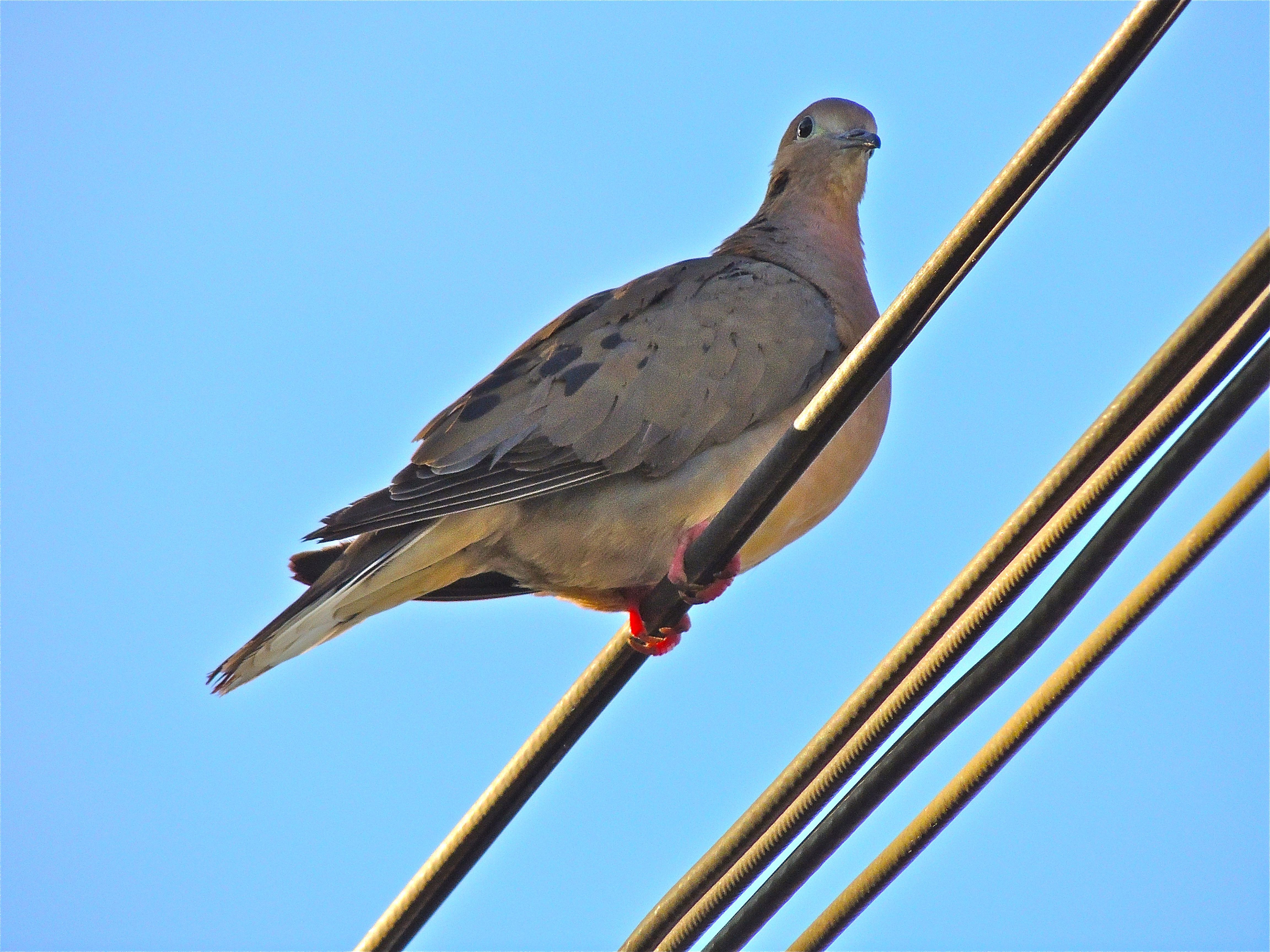 Eared Dove - Photo by William Young
Eared Dove - Photo by William YoungMy guide for this portion of the trip was Gustavo Canas-Valle, who in addition to knowing a lot about birds, has also studied flowers and social spiders. We stopped to pick up a pack lunch, and while Gustavo was inside, I photographed some of the Eared Doves on the wires. There was a female, and a male arrived and mated with her. An older man walked up to me, smiled, and shook my hand, seemingly glad that I was taking an interest in the birds. On our way to the birding areas, Gustavo told me a lot about Ecuador. We were driving up into an area where there are volcanoes. Gustavo said that an active volcano is one that has erupted during the past 10,000 years, which does not seem like a useful definition. We talked about Rufous-collared Sparrows, and he said that he thought that both sexes have a crest, but only the male erects his, but there is no way to prove this. He also said that Great Thrushes eat anything, from earthworms to the brains of other birds. He once saw one kill an Eared Dove. Great Thrushes have been a source of food for poor people, as have Eared Doves.
There are a lot of speed bumps on the roads. Gasoline costs only $1.48/gal, with super costing $2. Ecuador uses the US dollar as its currency. The bills are the same, but there is a different set of coins that are the same sizes and amounts as US coins. We drove past a sign on a road leading to a town called Cumbayá. We were heading to a dry forest valley on the north face of a volcano. We saw epiphytes on the wires called Fillandsia recurvirata — they are in the pineapple family and grow in the dry valleys of Ecuador. We saw plants with flat tops that are relatives of acacias. There are both Blue and Green Agaves, which have spike-like leaves. We saw eucalyptus trees, which were introduced from Australia in late 1800s — Ecuador has brush fires, but they are not as common or intense as in US. Before the eucalyptus trees flower, they produce enough water and sugar to attract hummingbirds. Pines and cypress trees have been introduced also. I asked about the many dogs, and Gustavo said that a lot of rural people have come to Quito, and they let their dogs run free as they did in the country.
We were at 10,500 feet. We saw part of a volcano called Ruco Pichincha — "ruco" means "elder." It looks like an old man's face. The next peak is nicknamed the Enchanted Priest, because it looks like a priest praying. Next to that is Cotopaxi Volcano, whose top is covered with snow. It is one of the highest active volcano in the world. All three volcanoes are interconnected. We saw a hill called Pane Cillo, so named because is looks like a bun or a small piece of bread. Gustavo had a thermos of coca tea, and I drank a couple of cups. He said it was good for altitude sickness. I had a bit of a fatigue headache from a lack of sleep, but it went away after I drank the tea. He said about 200 pounds of coca leaves are needed to make a kilogram of cocaine, so drinking coca tea and chewing on coca leaves will not cause one to run afoul of the law. Both coca tea and coca candy are widely available. I also nibbled on some hemp granola that I had brought from home.
We drove past the Machangara River, which is the main river in Quito. We saw a big statue of the Virgin Mary, which is an important Quito landmark. My first stop after the Galapagos will be in Guango, which means braid. We saw puya, which is a terrestrial bromeliad with spikes. This plant survives the fires in the Andes, so it is doing well. The spikes sometimes have turquoise flowers that hummingbirds like.
Gustavo explained that paramo, a word I encountered numerous times when preparing for the trip, is like the moorlands in Scotland. The highlands have grass over a base of peat as well as bushes and a few trees that can survive the cold. There are four types of paramo. Some is above 4,500 meters. The treeline is at 3,500 meters. Some is in the glaciers, which have snow and are above the treeline. Paramo can be bushy. Polylepis is the only tree in the lower paramo. Polylepis means "many scales," which describes the bark. I saw some of these trees today at the Jocotoco reserve.
We drove down the oldest road going to the northwest coast of Ecuador. It has both active and abandoned kilns for making bricks from the soil in area. We saw both a Sparkling Violetear and a Black-tailed Trainbearer, the first two hummingbirds of the trip. There were Brown-bellied Swallows, who have a dark back and brownish belly. We went through a place called Nono. Our destination was a reserve with cloud forest disturbed by farmland. We scoped a Red-breasted Cotinga in the top of a tree. It is gray with a red braid on the back of the head, a white bill, and a white tail band. We saw a Black Flowerpiercer. All the flowerpiercers have an hook on the tip of their bill for stealing nectar from the base of flowers. The holes they make when stealing nectar sometimes create feeding opportunities for small hummingbirds. We saw a female Plain-colored Seedeater, who has a rufous vent. She looked like she had a white tail, but that was because the sun was shining through it. I asked Gustavo about brush-finches, and he said they are found at 2,000 meters or higher. When looking for birds in Ecuador, one usually has to know which side of the Andes they frequent and at what altitude. We drove a bit further and saw a perched Variable Hawk, who then obligingly flew by at eye level and displayed its red back — it is sometimes called the Red-backed Hawk.
One of the highlights of the day occurred on the north slope of Pinchincha Volcano. An Andean Condor was flying low and came relatively close to us. The weather was sunny and clear, and we watched this majestic bird soar on thermals coming off the hillside. It was an adult with a white collar and white on its wings. Gustavo has seen one here only three times in about 40 tries. As we watched the condor, a Variable Hawk flew at it. In the wind and the emptiness of this area, I could understand how condors became so important to the culture of the area. We later saw a Variable Hawk with a gray back. All color phases of this species have a white rump and a black subterminal band. We saw a Short-tailed Hawk soaring in the distance. The bird seemed to stop in the air when flying into the wind. It was white below. We looked in orange mistletoe flowers for a Black-breasted Puffleg, but did not find one; the high winds were not helping us. We saw a pair of Streak-throated Bush-Tyrants, who are large flycatchers. They were perched on wires and utility poles, occasionally leaving to flycatch. This species has a streaked throat and a rufous belly. We later saw a White-throated Tyrannulet, a much smaller flycatcher with a brown back, white wingbars, and a white throat.
 Andean Condor - Photo by William Young
Andean Condor - Photo by William Young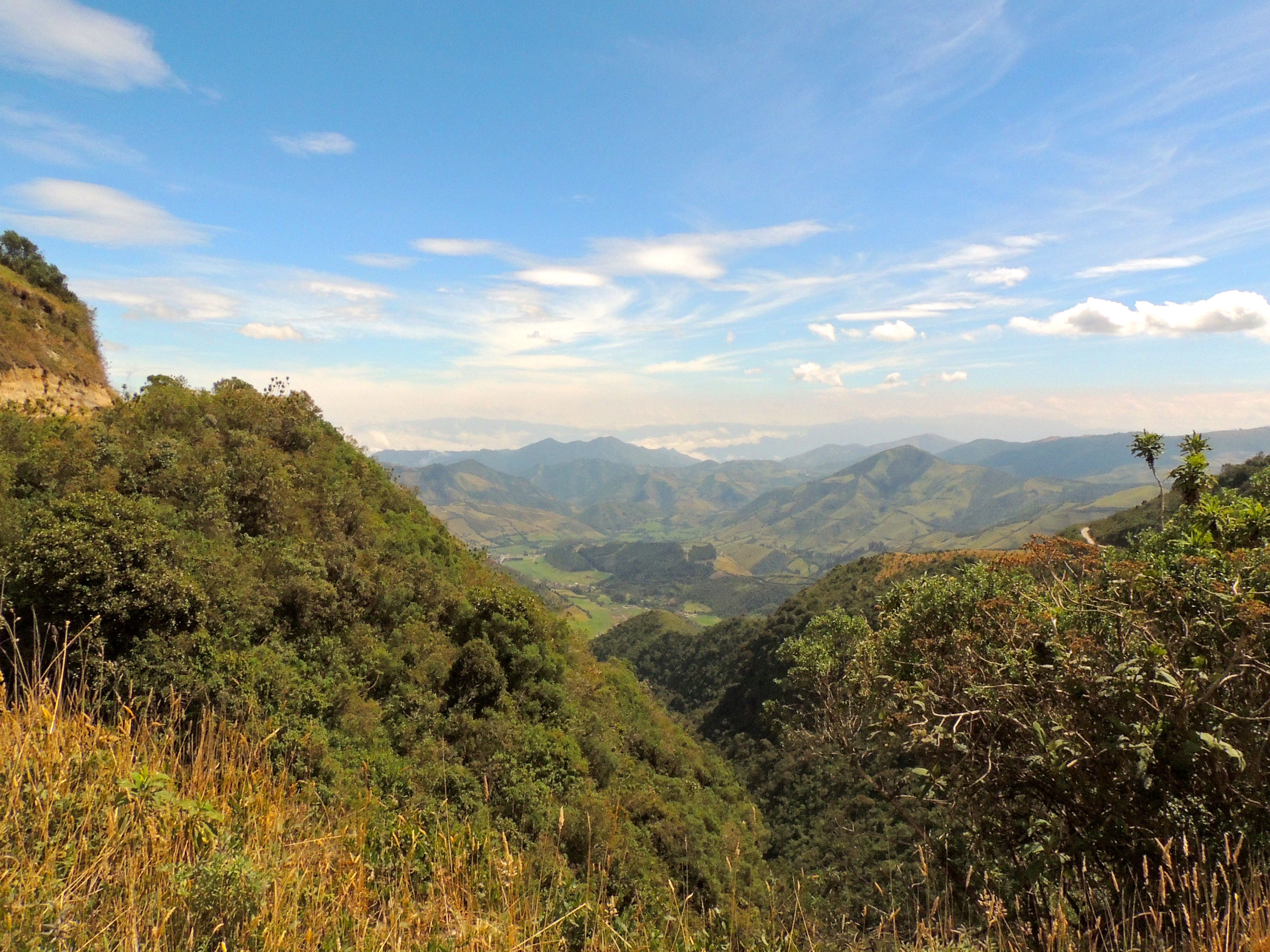 Pinchincha Volcano North Slope - Photo by William Young
Pinchincha Volcano North Slope - Photo by William YoungWhen we arrived at the Jocotoco reserve, we saw a lot of hummingbirds. There were male and female Tyrean Metaltails. The Great Sapphirewing is a really big green hummingbird with blue wings. The feeders near the parking had lot of Sword-billed Hummingbirds, whom you usually have to hike more than a mile to see. This improbable hummer has a bill that appears to be as long as its body. We saw quite a few Buff-winged Starfrontlets, who have long bills and a prominent buff patch on each wing. We saw a perched Black-breasted Puffleg, who is an Ecuador endemic. We had a rear view of a perched bird. Gustavo said at the end of the trip that this was one of our most noteworthy sightings while I was in Ecuador. When one studies the plates in a field guide to prepare for a trip, one might have trouble understanding how rare or common a particular species is. We had nice looks at Scarlet-breasted Mountain-Tanagers, who are large tanagers with red, black, and blue plumage. We found a Rufous-naped Brush-Finch, who has a rufous mullet and a black mask. We saw Glossy Flowerpiercers, who are black with white patches on the wings, as well as Masked Flowerpiercers, who are blue with a black mask. As we walked toward the feeders at the end of the trail, we saw a large purple Passion Flower as well as Blue Salvia. The plants with really large leaves are called Gunnera. We also saw a White-banded Tyrannulet.
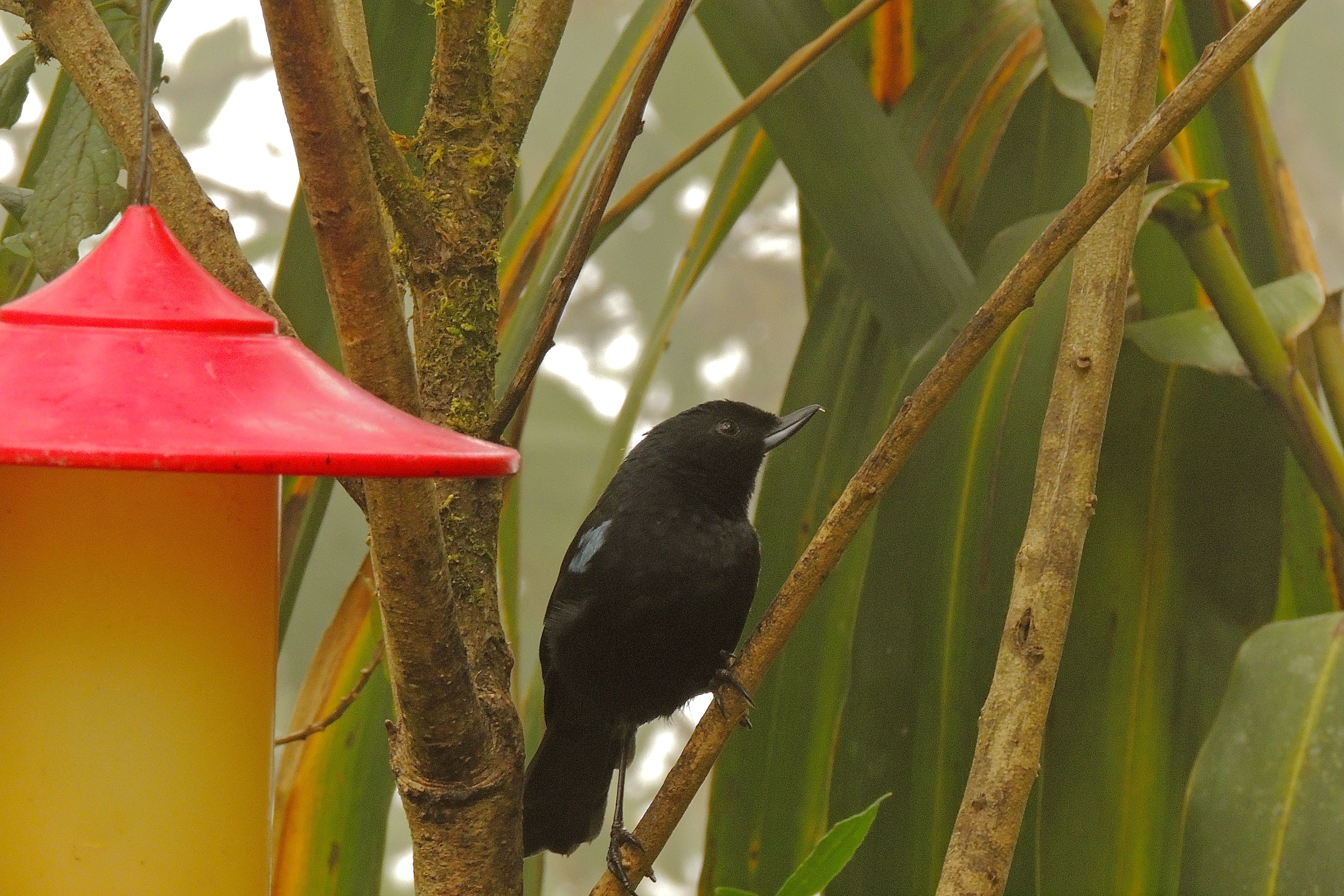 Glossy Flowerpiercer - Photo by William Young
Glossy Flowerpiercer - Photo by William Young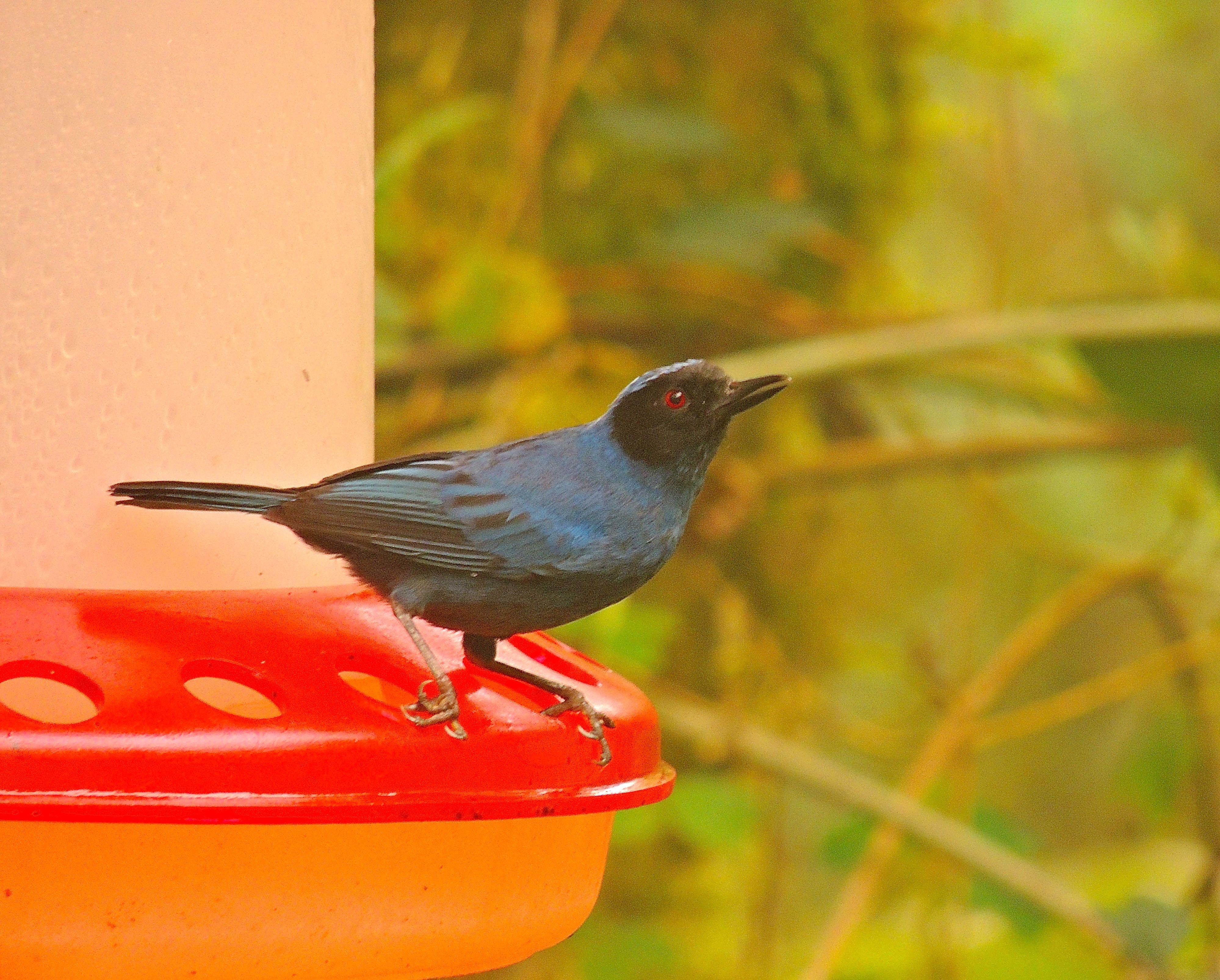 Masked Flowerpiercer - Photo by William Young
Masked Flowerpiercer - Photo by William Young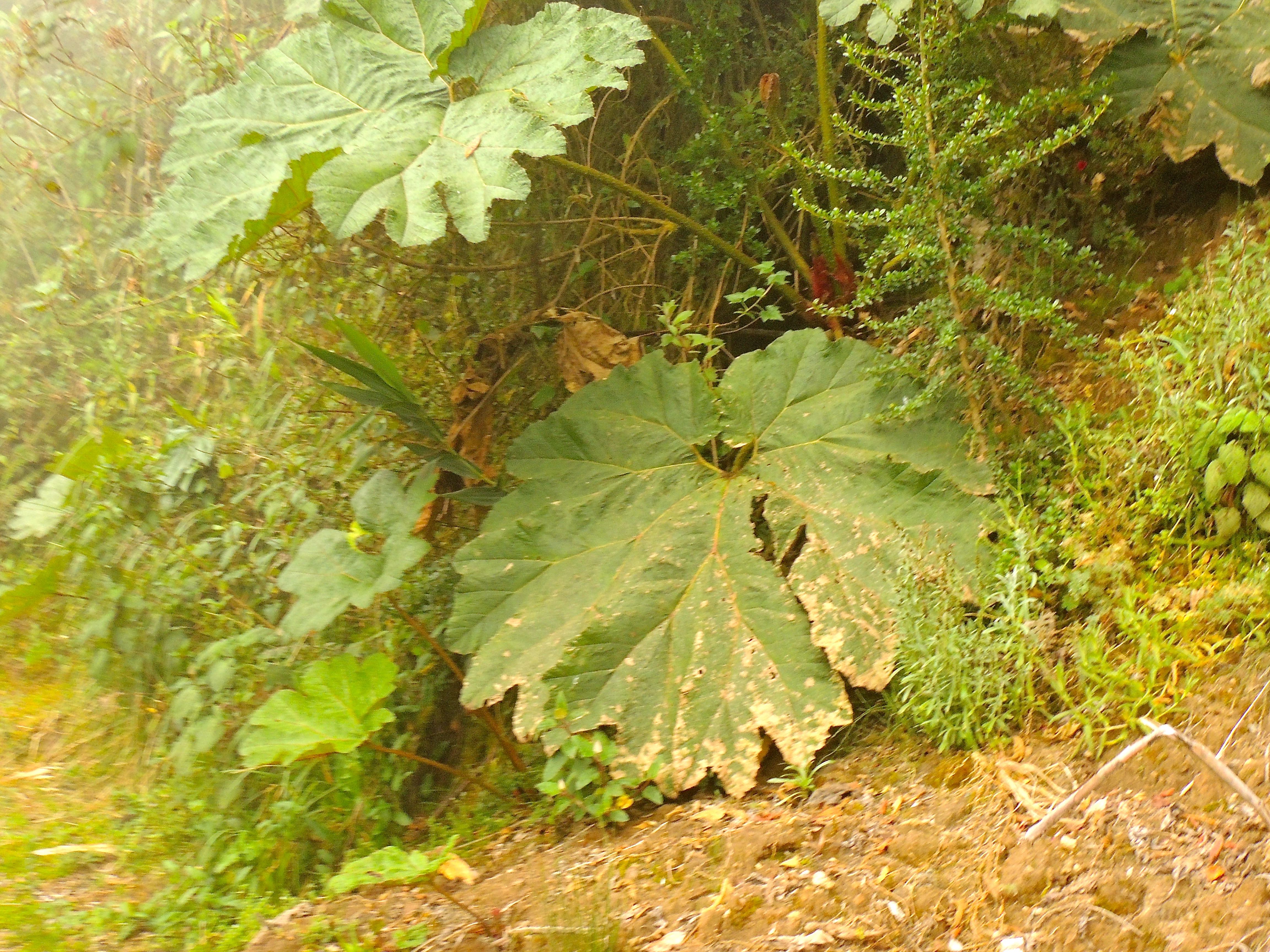 Gunnera - Photo by William Young
Gunnera - Photo by William YoungA lot of hummingbirds were around the feeders at the top of the hill. In addition to the Buff-winged Starfrontlets, we saw a Sapphire-vented Puffleg, whose wings extend beyond the tail. We saw a Golden-breasted Puffleg, who is a regional endemic found only in Colombia and Ecuador. The Purple-backed Thornbill has a short bill and an upright posture. The Shining Sunbeam is large and very orange. While we watched the hummers, a Rufous Wren moved in bushes near the feeders. My first warbler of the trip was a singing Spectacled Whitestart, who showed his red crown.
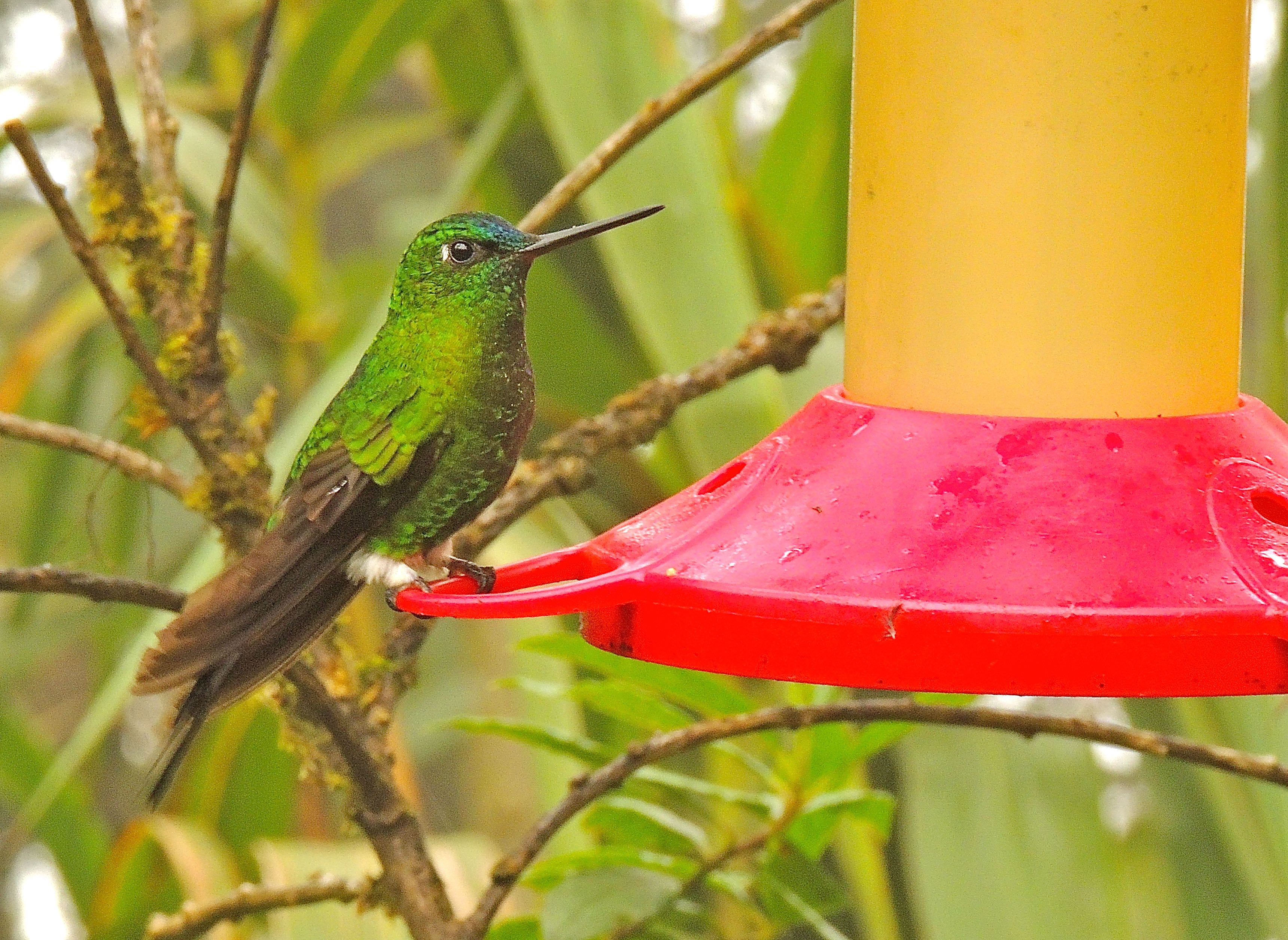 Sapphire-vented Puffleg - Photo by William Young
Sapphire-vented Puffleg - Photo by William Young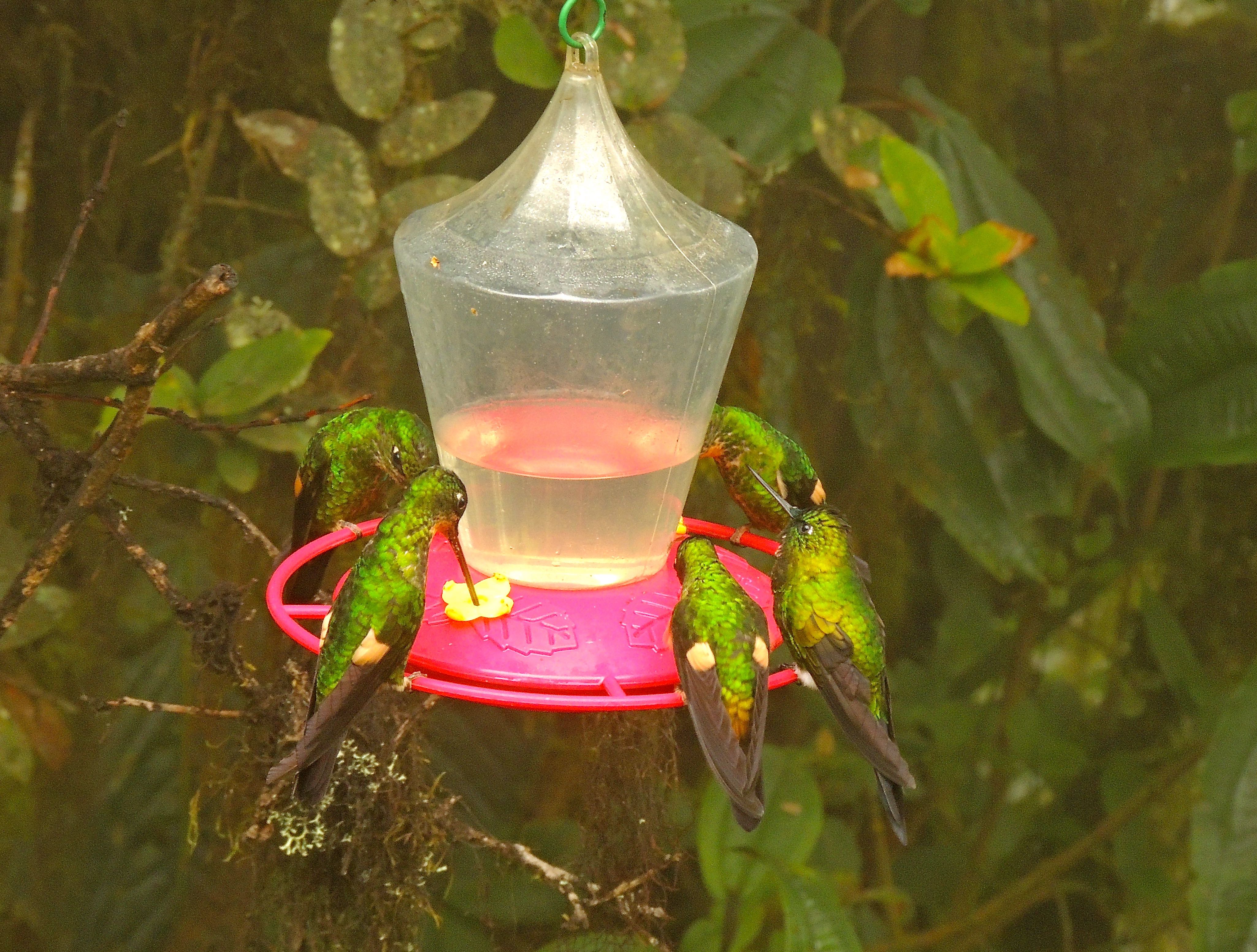 Buff-winged Starfrontlets and Golden-breasted Puffleg (right front) - Photo by William Young
Buff-winged Starfrontlets and Golden-breasted Puffleg (right front) - Photo by William YoungOn the walk back to the parking lot, there were a lot of Tyrean Metaltails. Their call is an odd scraping noise. We tried in vain to find a Uniform Tapaculo, who uttered a single low-pitched squeak repeatedly at close range. I took a photo of some orchid leaves, and I got one photo of the open bud of an orchid called a Pleurothallis, or bonnet orchid. I also took a photo of pampas grass with fog in the background. The weather followed a pattern which would continue for my first three days in Ecuador – clear in the morning, and then foggy/drizzly/rainy in the afternoon. I had a fleeting glimpse of a Superciliated Hemispingus. I saw the white eyeline, but the visibility was poor. Gustavo told me that the "spingus" part means finch, so these tanagers are so named because they are considered to be half finches. We heard a Mountain Lion calling in the valley.
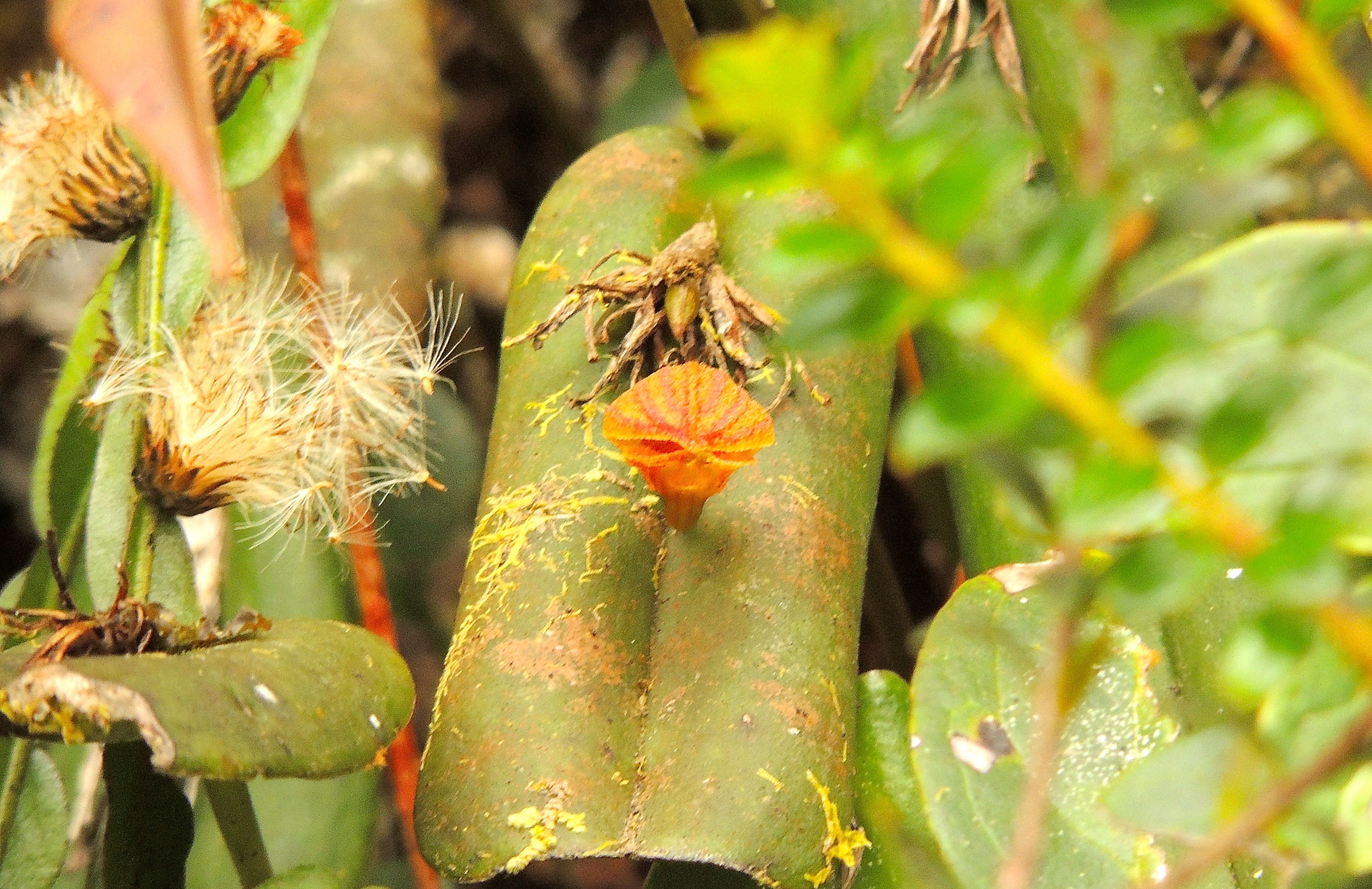 Pleurothallis Orchid - Photo by William Young
Pleurothallis Orchid - Photo by William Young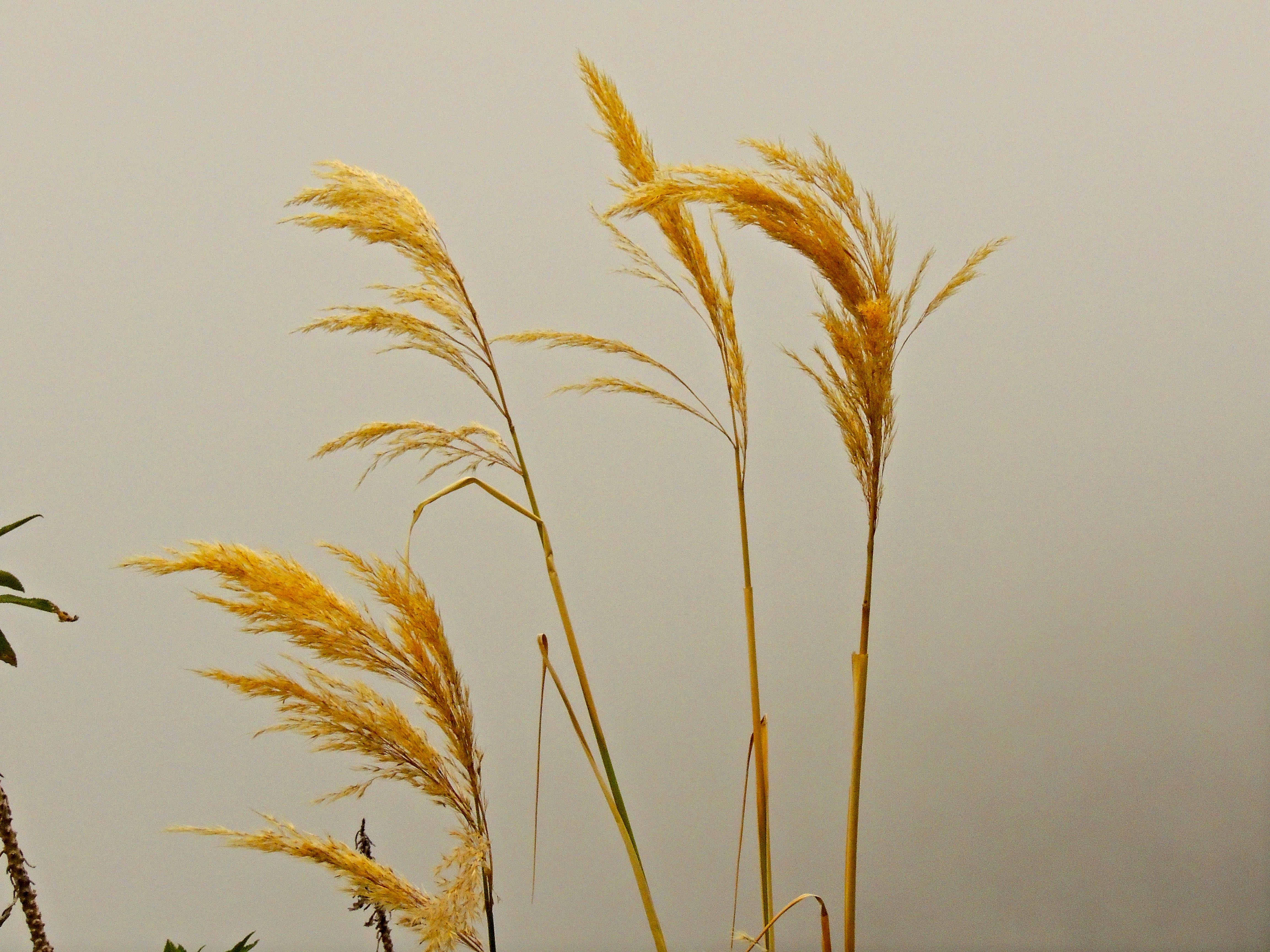 Pampas Grass - Photo by William Young
Pampas Grass - Photo by William YoungAs we approached the parking lot, we were met by someone who worked at the reserve. He took us to an area and called in a Tawny Antpitta. This would be the first of many antpittas I saw in this manner on the trip. The antipitta came hopping out, posed for some photos while eating worms, and then hopped back into the forest. This species has a brown back and is tawny below.
We gradually drove down the mountain toward Bellavista, where I would be spending the next two nights. We looked for a White-capped Dipper along the way, and although we saw dipper droppings on some of the rocks, we dipped on the dipper. I saw a pair of Crimson-mantled Woodpeckers in a tree, with one feeding the other. There was a pinkish purple flower called a Bomaria pardina. I heard a loud chip note of bird that sounded like a Northern Waterthrush but probably was not. We saw many cecropia trees with silver leaves. These are found below 2,200 meters. A Smoke-colored Pewee was perched on a cecropia tree and later on a wire. We saw a Montane Woodcreeper, who has pearly markings on its breast and rufous wings in flight. There was a Golden-crowned Flycatcher, who has a black mask, stripes on its throat, and rufous edges on its wings. There also was a White-crested Elaenia, who has wingbars and a crest. Some Blue-and-white Swallows flew over, and numerous Gray-breasted Wood-Wrens were singing.
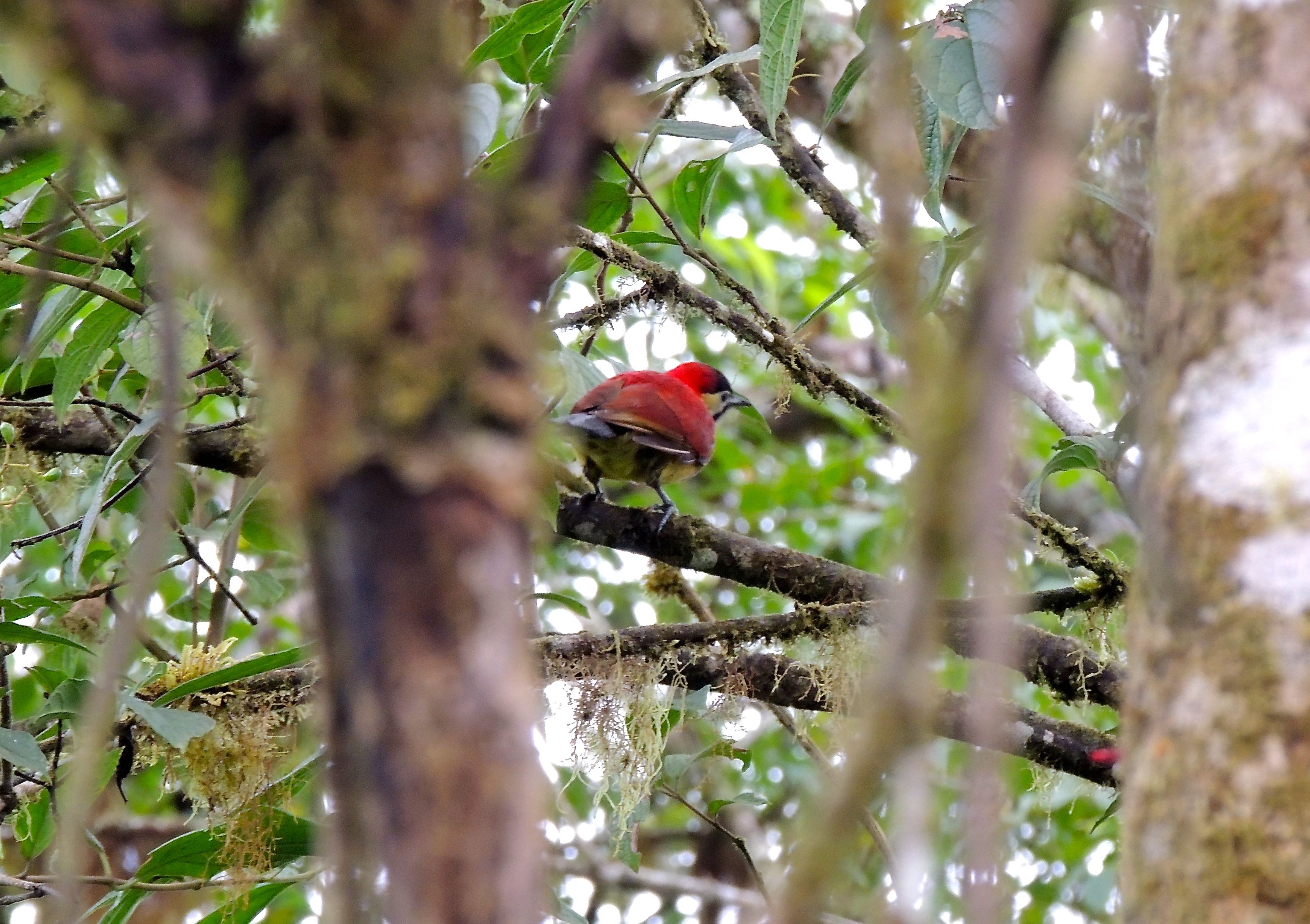 Crimson-mantled Woodpecker - Photo by William Young
Crimson-mantled Woodpecker - Photo by William YoungWhen we arrived at Bellavista near dusk, many hummingbirds flew very close to where I was standing. The most common were the Buff-tailed Coronets, who land with their wings raised like the Galahs in Australia. I saw a Speckled Hummingbird, who has a facial pattern like a hermit's, as well as a Fawn-breasted Brilliant. I saw a Booted Racket-tail and Green Violetear, both at close range. A Chestnut-crowned Antpitta was calling in the background.
I ate dinner with Gustavo and a South African named Jonathan Rossouw from Rock Jumper tours. Jonathan said that Colombia is a country of passions, and there is no middle ground for people on each side, which sounds a lot like the way the US is becoming. He also said that somebody discovered a species of titi monkey and auctioned off the naming rights. The winning bid was from a casino, so the species is now the Golden Palace Titi Monkey. After dinner, I saw a Common Potoo perched on a building near my room.
Even though I came here to look for birds, the biggest highlight of my day was being able to see a mammal who almost nobody knew existed a month ago. There had been numerous news stories recently about the rediscovery of the Olinguito in the Andean cloud forests. The Bellavista is a lodge in the Andean cloud forest. The lodge has been monitoring and feeding a pair of Olinguitos each evening for the past few year. At first, the people at the lodge thought they were seeing odd looking Kinkajous. The Olinguito has longer hair than a Kinkajou — it looks like a Kinkajou who needs a haircut. The longer hair makes the Olinguito look like a teddy bear. Compared to a Kinkajou, it is redder on the back and lighter underneath and has a less prehensile tail. Olinguitos are nocturnal, and they come down from the trees at night to drink from the hummingbird feeders and to eat pieces of banana that are put out for them. The male has a black-tipped tail, and the female's tail has a white tip. I saw each member of the pair on my first night and got one decent photo. I was looking at animals whom most people were only first hearing about in the past few weeks.
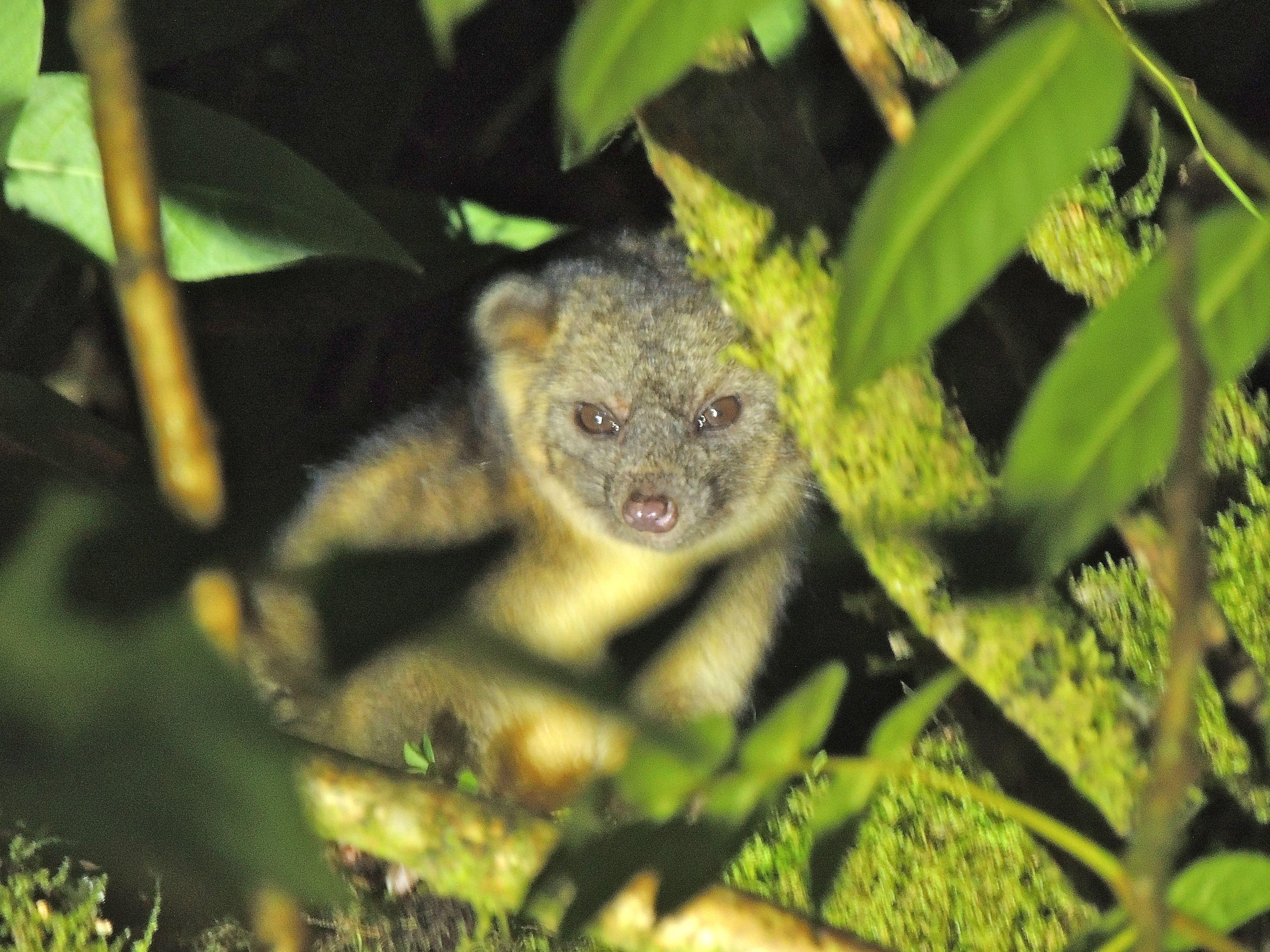 Olinguito - Photo by William Young
Olinguito - Photo by William Young
August 24
This morning, we left at 4:45 to visit a property owned and managed by Angel Paz. He used to be a farmer, but when he began to learn about birds, he decided to manage his property for ecotourism. When we arrived, we heard a Cloud Forest Pygmy Owl. At dawn, we visited a lek of the Andean Cock-of-the-Rock. The lek is a squawkfest, with 10-15 birds squawking in an area whose core is 15-20 meters, with additional birds spread out over a 100-meter area. The race of the species in this part of Ecuador is a deep red, with black-and-silver wings. The Amazonian Cocks-of-the-Rock are more orange. I got some good views of the birds as they moved low among the leaves. I could see that they have big yellow feet. On the walk back up the hill from the lek, I saw an Ornate Flycatcher, who has a white spot in front of its eye and is yellow underneath. I had a quick look at a Dark-backed Wood-Quail, who has a dark back and is rufous below. We had been hearing one. I was near the front of the line and saw one who briefly walked in front of us.
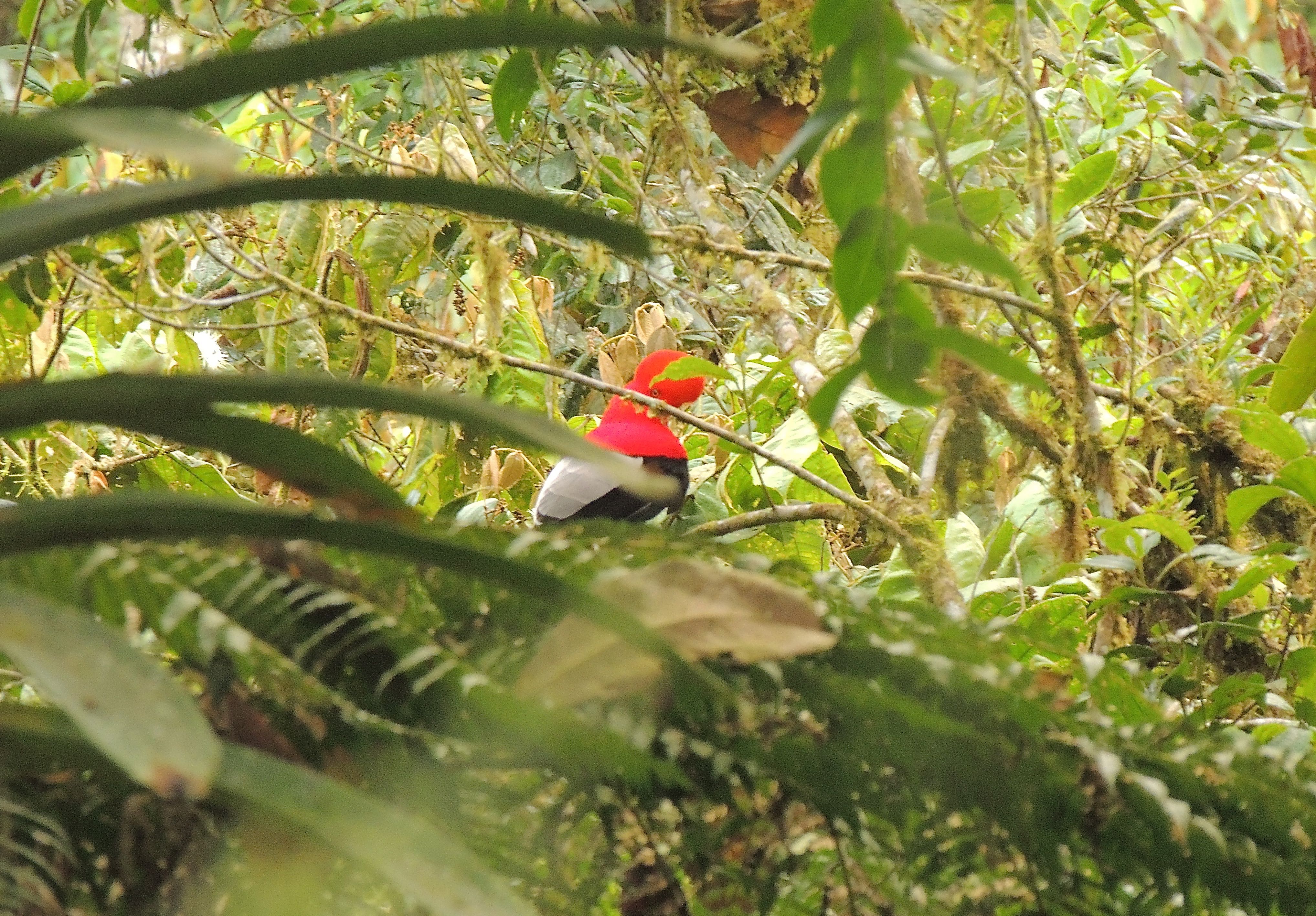 Andean Cock-of-the-Rock - Photo by William Young
Andean Cock-of-the-Rock - Photo by William YoungWe then went to see a Yellow-breasted Antpitta, who is a Choco endemic. The Choco is an area that encompasses parts of Panama, Colombia, Peru, and Ecuador. The antpitta hops on its very large feet. Before the morning was over, I also saw an Ochre-breasted and a Moustached Antpitta. The Moustached is brown with a white Fu Manchu moustache. Angel has trained the antpittas to come out and eat the worms that people throw to them. Otherwise, they are skulking birds who are extremely difficult to see. Gustavo told me that he had once brought Robert Ridgley, the author of the Ecuador field guide, to look at antpittas here, and Ridgley became very excited when he saw them. We heard the musical call of an Andean Solitaire. Rudy Gellis, a 6'8" bird guide who was with us, found a male Masked Trogon, whom we viewed in a scope. It has a green back, red belly, and black mask. Rudy runs a tour company called Plume Verde, which means green feather. We saw a perched male Lyre-tailed Nightjar, who unfortunately had lost its long tail plumes. A Black Phoebe was flycatching nearby. We saw a plant in the arum lily family whose fruits looked like a woman's reproductive parts.
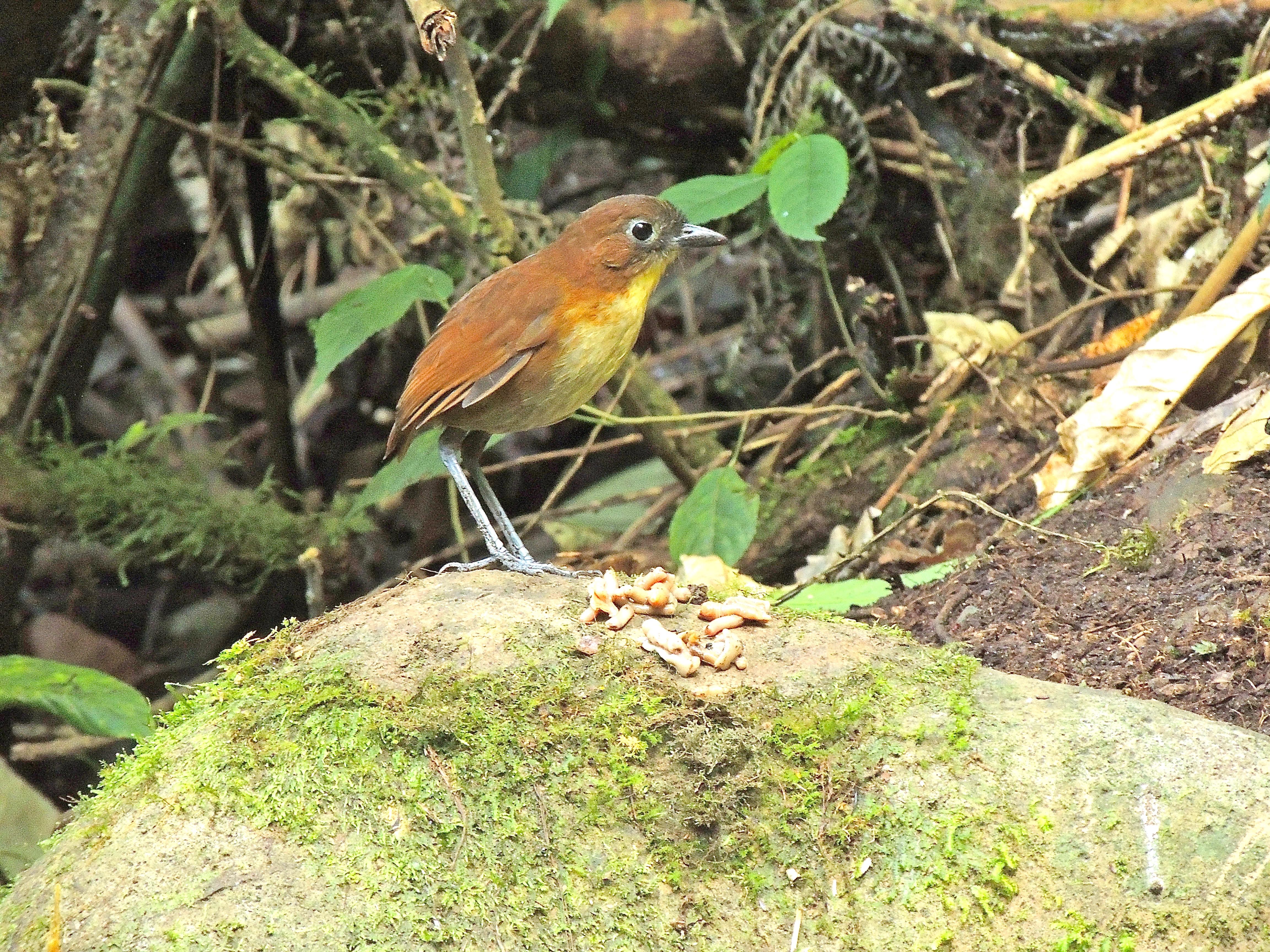 Yellow-breasted Antpitta - Photo by William Young
Yellow-breasted Antpitta - Photo by William Young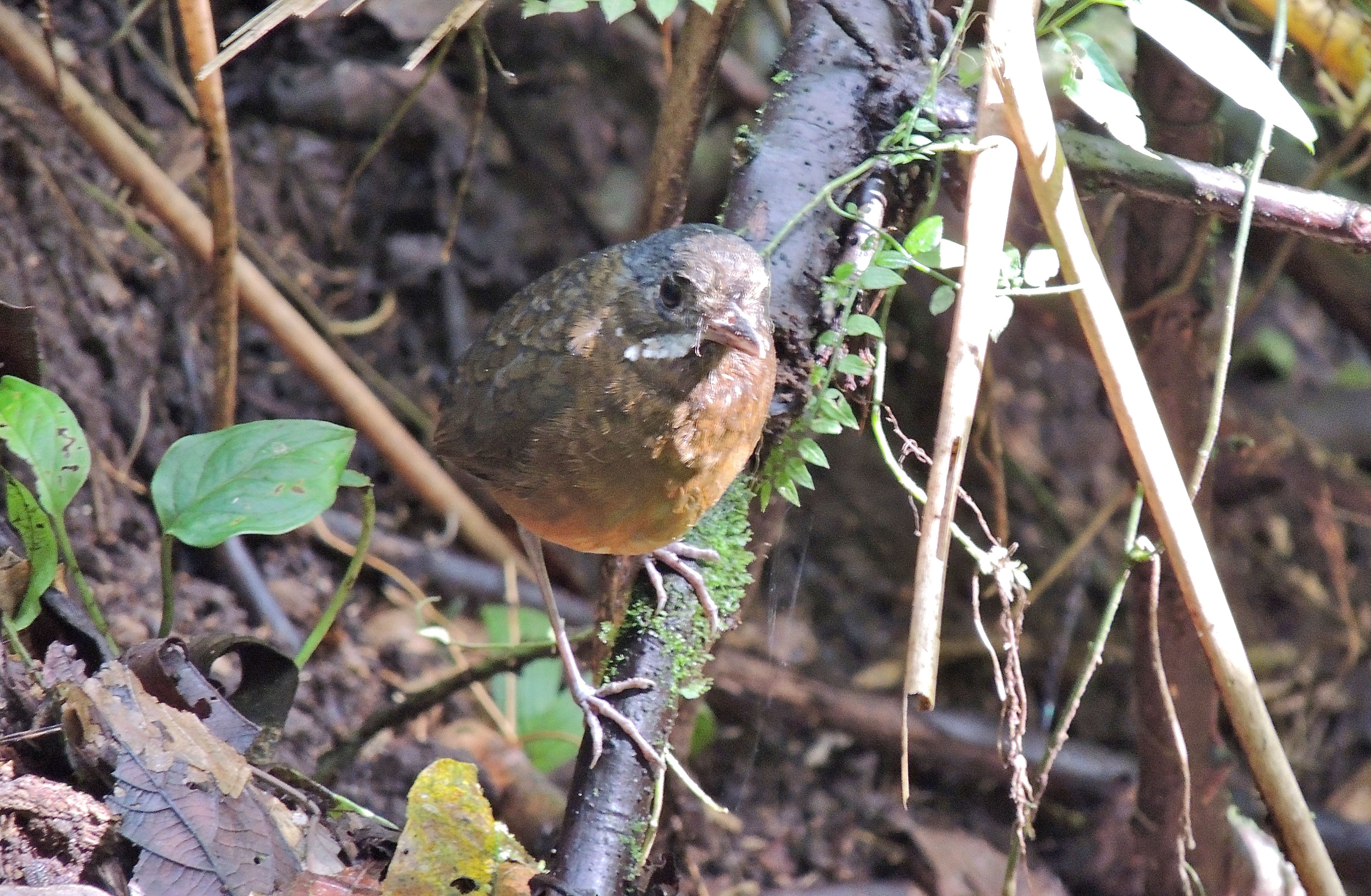 Moustached Antpitta - Photo by William Young
Moustached Antpitta - Photo by William Young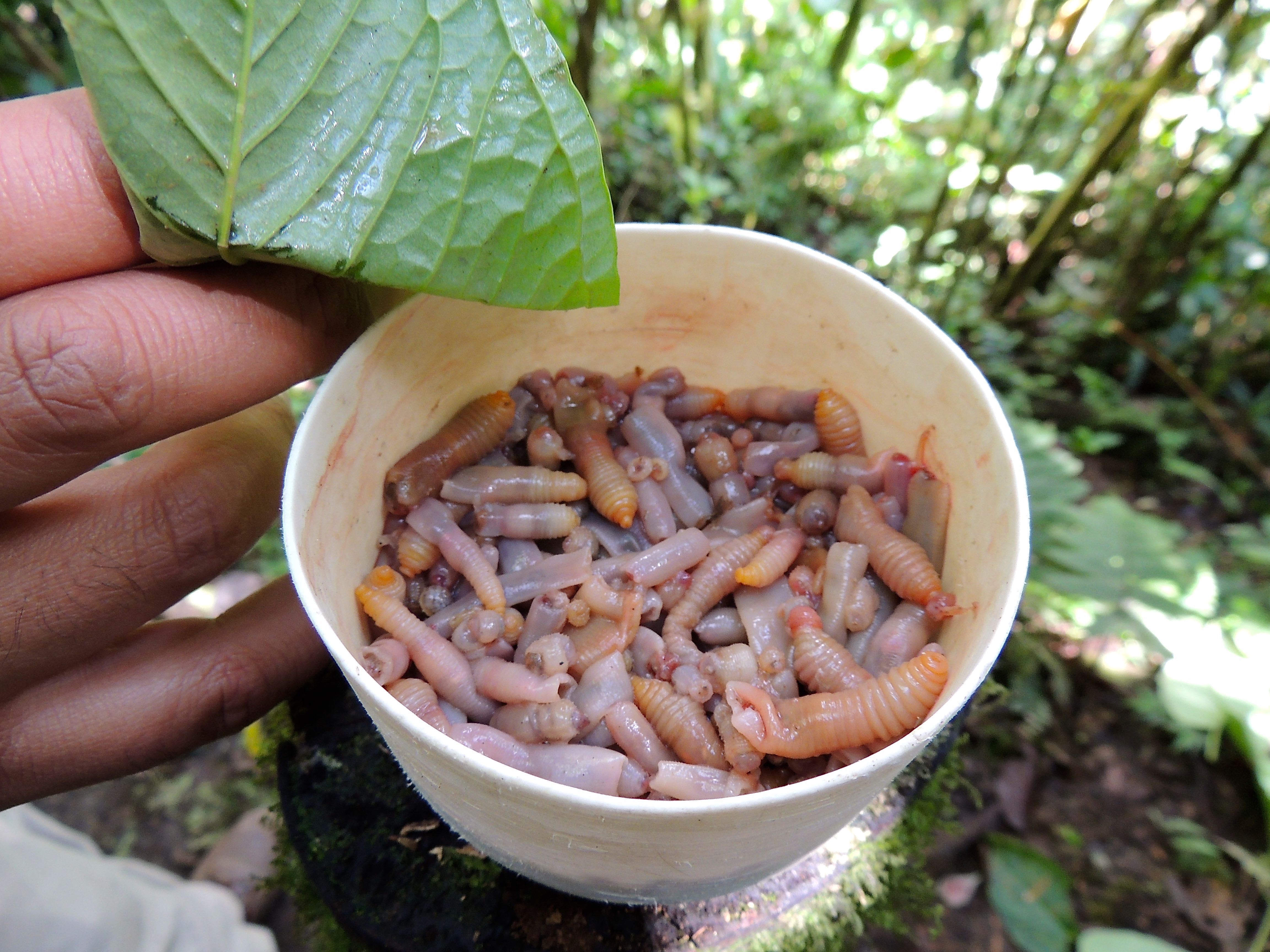 Worms for the Antpittas - Photo by William Young
Worms for the Antpittas - Photo by William YoungWe stopped at a hummingbird observation area where we saw a beautiful hummer called a Velvet-purple Coronet. We also saw a Fawn-breasted Brilliant, who is a bit like a Buff-winged Starfrontlet. A few Rufous-tailed Hummingbirds were buzzing around. We then walked down a hill to other feeders where we had close looks at Toucan Barbets, Crimson-rumped Toucanets, Sickle-winged Guans, White-throated Quail-Doves, and both Blue-winged and Black-chinned Mountain-Tanagers. The Mountain-Tanagers look similar, except the Black-chinned has an olive back. The Quail-Dove is big and chunky, with a white throat and a red bill. In the trees was a Spotted Woodcreeper, who is cream-colored under the chin. Rudy said that Toucan Barbets are cooperative breeders. They are very colorful. We also saw a pair of Scaled Fruiteaters in the trees as we were leaving the feeder area, and I was able to photograph the male.
 Toucan Barbet - Photo by William Young
Toucan Barbet - Photo by William Young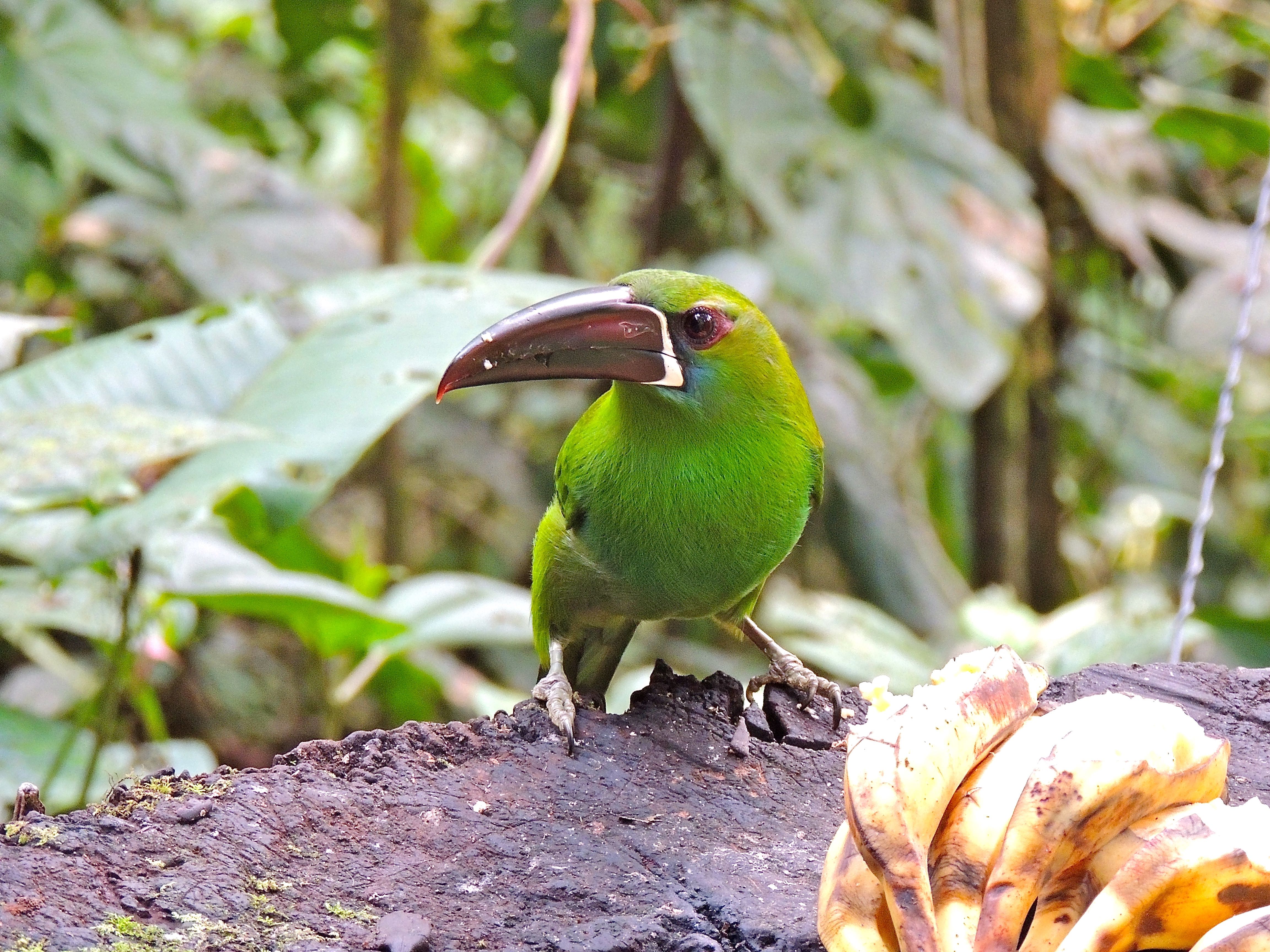 Crimson-rumped Toucanet - Photo by William Young
Crimson-rumped Toucanet - Photo by William Young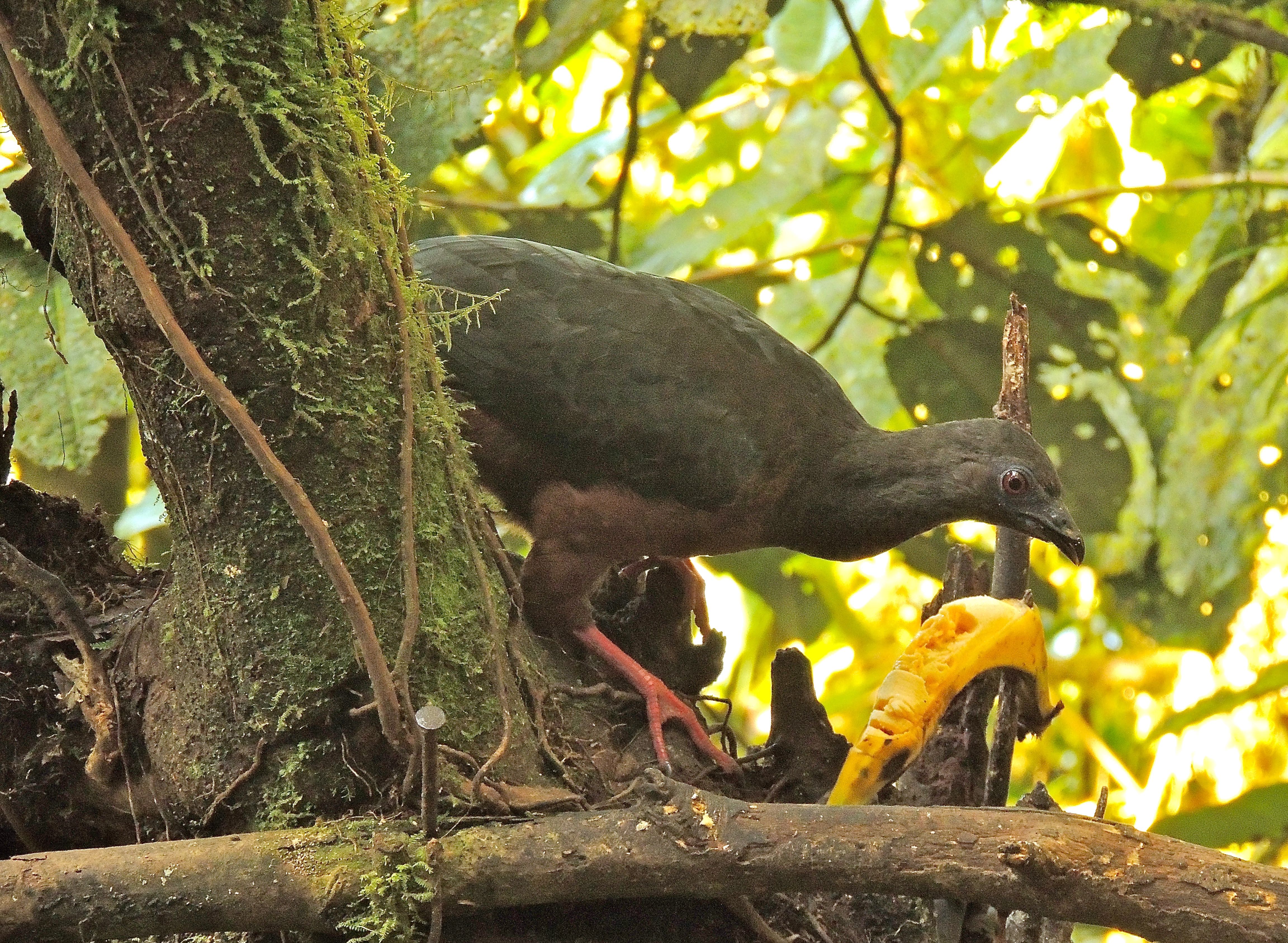 Sickle-winged Guan - Photo by William Young
Sickle-winged Guan - Photo by William Young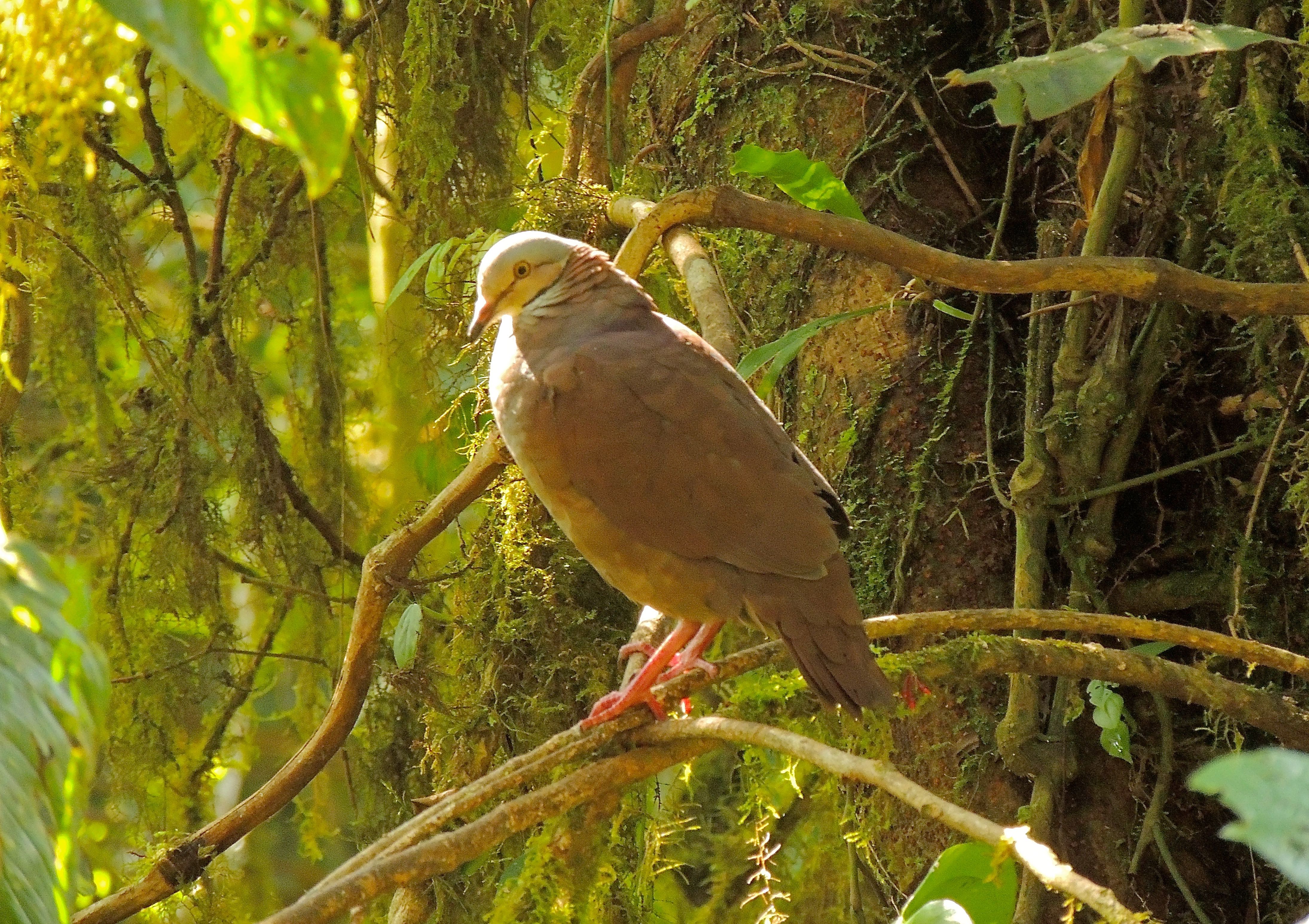 White-throated Quail-Doves - Photo by William Young
White-throated Quail-Doves - Photo by William Young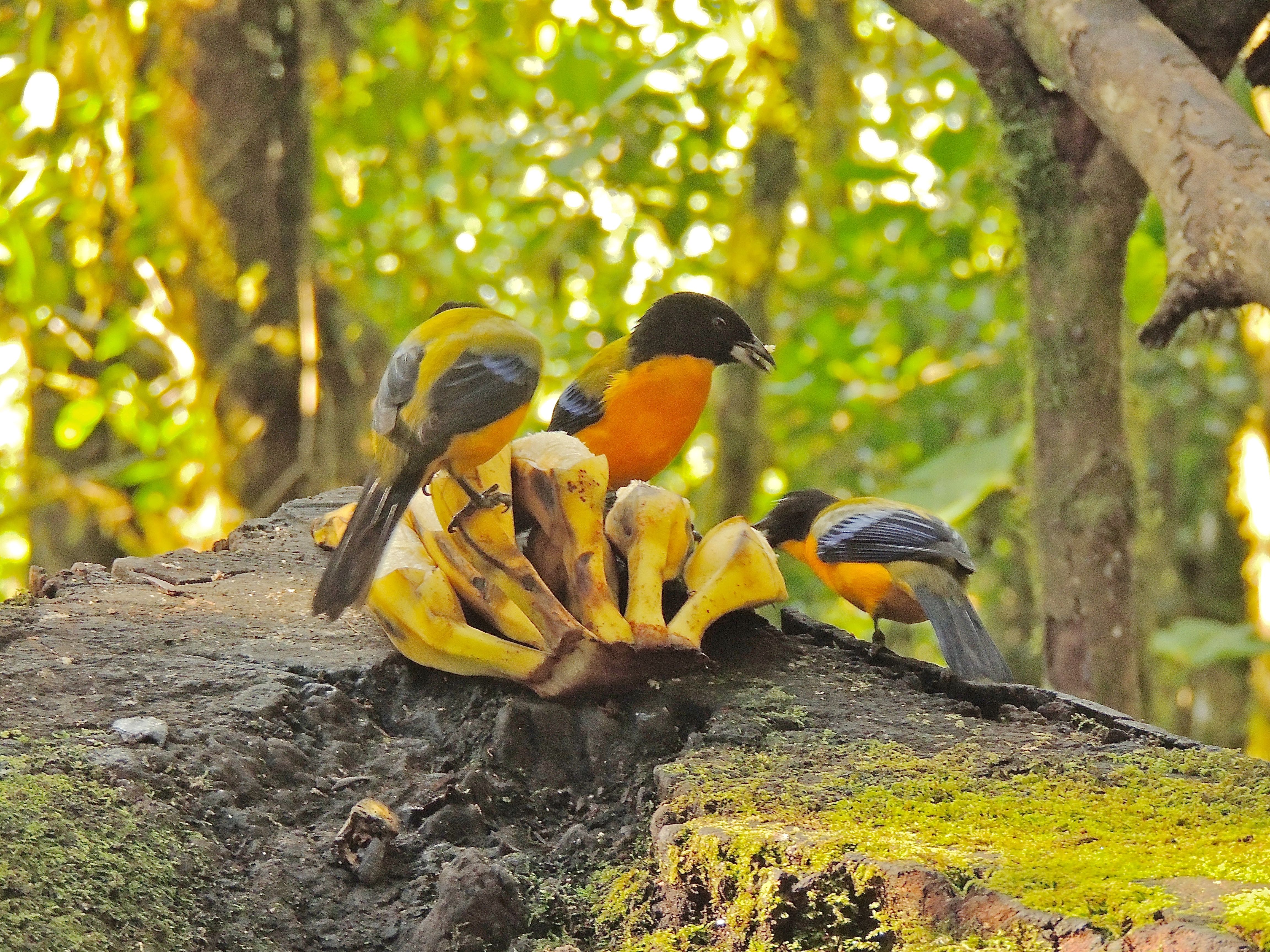 Black-chinned Mountain-Tanagers - Photo by William Young
Black-chinned Mountain-Tanagers - Photo by William Young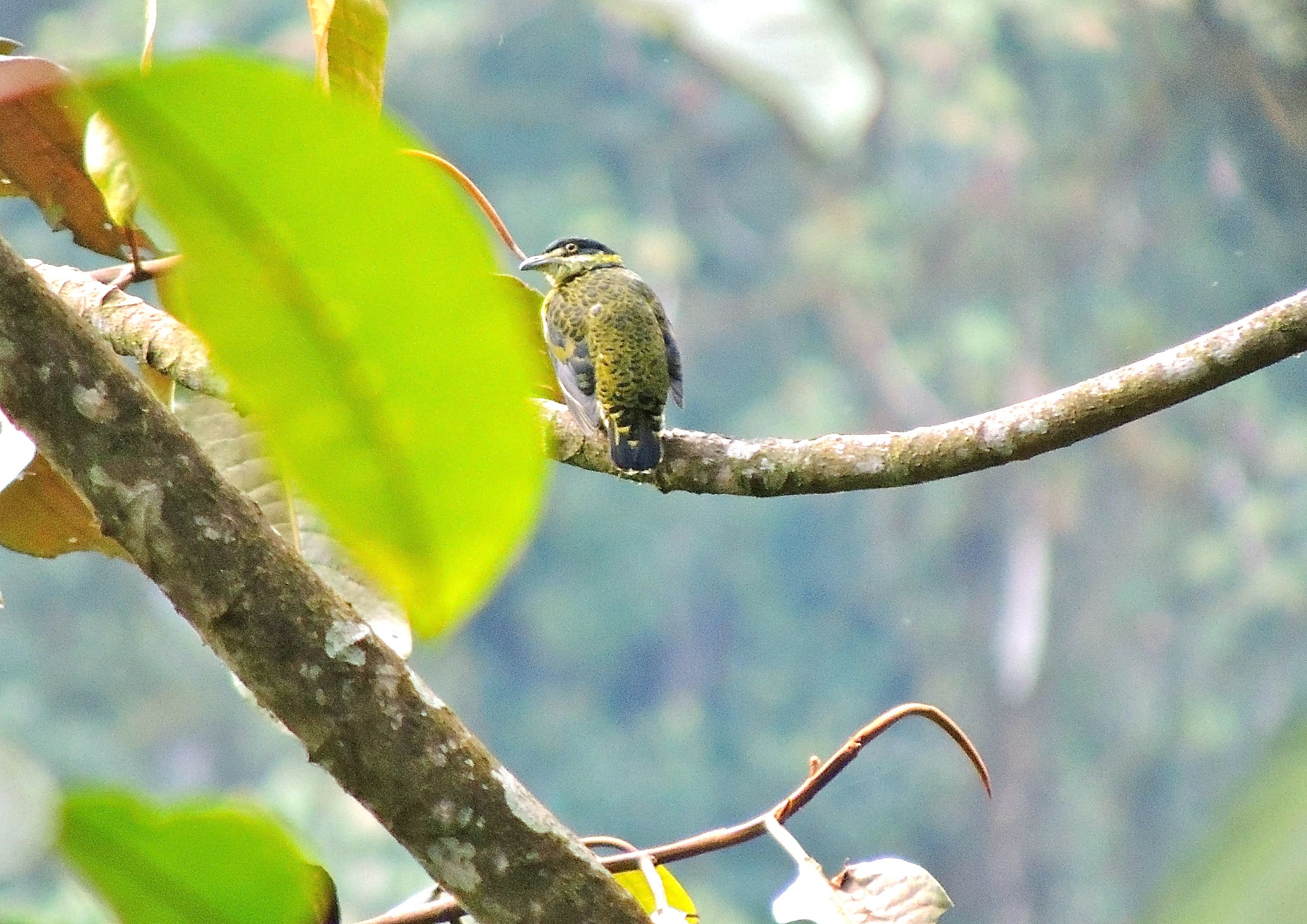 Scaled Fruiteater - Photo by William Young
Scaled Fruiteater - Photo by William YoungWe went back to the parking area where we had previously seen people cleaning freshly killed chickens. A lot of Blue-and-white Swallows were flying over. We saw many soaring vultures, both Turkey and Black. While we were having a snack of plantain balls, we saw an immature Black-and-chestnut Eagle — a big bird who is white below.
We then drove to an area to look for an Ocellated Tapaculo, a striking bird who skulks in the undergrowth. We heard the bird, but I was able to get only a fleeting glimpse of it on the dark forest floor. I am coming to realize that I don't really like looking for tapaculos. They behave like antpittas, but are far more secretive. Many tapaculo species have nearly identical plumage. On the way back to the car, I photographed a big blue tarantula wasp.
We stopped on the drive back to the parking lot, and I digiscoped a Golden-headed Quetzal. It does not have long tail plumes like the Resplendent, but it has a Day-Glo green back, black on the wings, and a yellow bill. The head is goldish rather than gold. Gustavo said that trogons flycatch, and quetzals fly the same way when searching for fruit or insects. A Roadside Hawk was perched by the side of the road. We saw titania flowers, which are common on roadsides — they are related to dandelions and sunflowers. Near the parking lot, a Tarantula Wasp was perched in the grass; they get their name from hunting tarantulas. I also saw a Swallow-tailed Kite fly over, which made me think of the one being seen in Maryland right before I left.
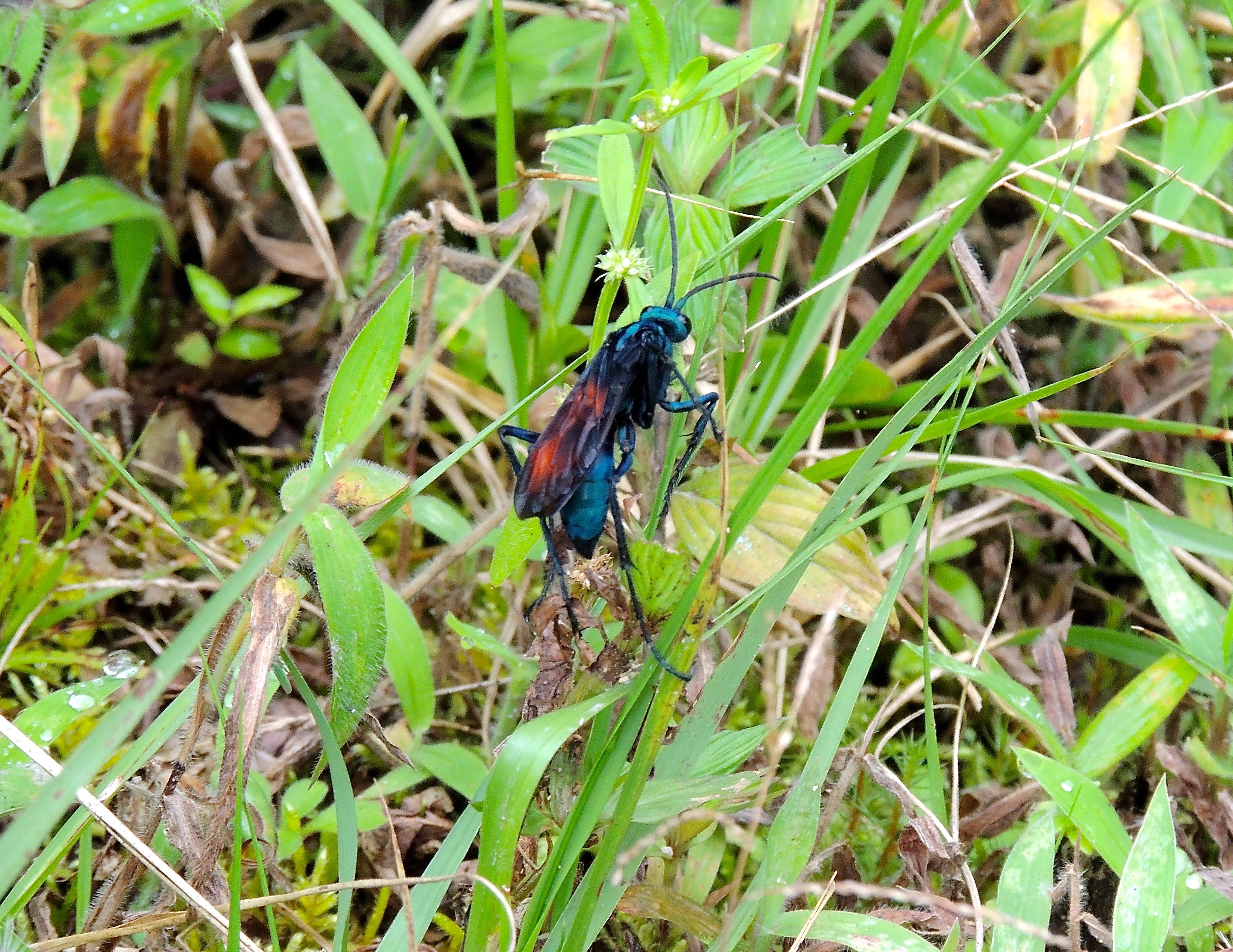 Tarantula Wasp - Photo by William Young
Tarantula Wasp - Photo by William YoungThe weather turned foggy, so we made our way back toward Bellavista, birding the best we could in bad visibility. We saw a Streak-necked Flycatcher, who is green with streaks on its neck. There was a White-tailed Tyrannulet, who has buffy wingbars. I had a nice look at a Golden Tanager in the open. It is in the genus Tangara, which is the word for tanager in the Guarani language of Paraguay. A male Red-headed Barbet popped up in the fog. I saw a Blue-capped Tanager, who has a blue cap and is yellow below. It was in a feeding flock which also contained a Metallic-green Tanager, who is a dull green color. I saw one Slate-throated Whitestart feeding another. There was a Brown-capped Vireo and a Streaked Tuftedcheek — on the latter, I could see the protruding white cheek tufts. We saw a Strong-billed Woodcreeper, who has a big heavy bill. There was a pair of Smoky Brown Woodpeckers, who are brown with a red cap. And I saw my first White-tipped Dove of the trip after having seen many last year in Panama.
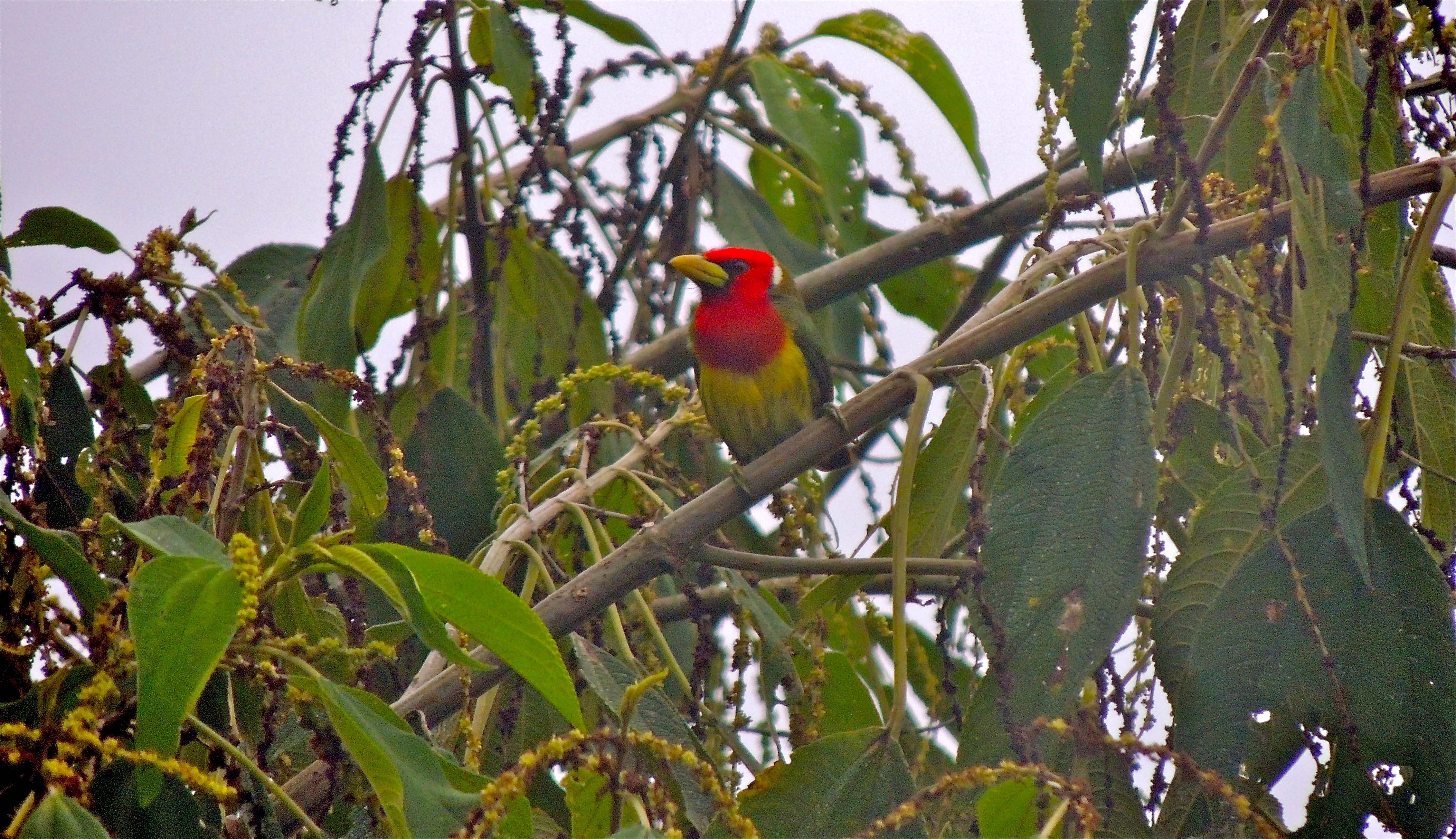 Red-headed Barbet - Photo by William Young
Red-headed Barbet - Photo by William YoungFor lunch, we had sancocho, which is the soup of the poor. It is made with plantains, manioc, corn, and some protein. At the Bellavista feeders, there was a White-sided Flowerpiercer, who is black with white flanks. I saw a female Booted Racket-tail, who is white underneath with some markings on her flanks. This hummingbird is really tiny. There was a male Collared Inca at the feeders — he looked almost pitch black with a white throat. In the right light, he shows an iridescent purple throat. Up the path near the entrance to Bellavista, we saw a Grass-green Tanager, possibly at a nest. A Red-billed Parrot squawked as it flew by. We heard Gray-breasted Wood-Wrens calling. Birding was difficult in the foggy conditions, so a lot of birds looked like dark shapes. We saw Brown-capped Vireos and Russet-crowned Warblers. We also saw Common, Yellow-throated, and Dusky Bush-Tanagers. The latter has a reddish eye. We saw and heard a Cinnamon Flycatcher. We heard another pair of Ocellated Tapaculos but did not see them. We also heard duetting Toucan Barbets. Bill Murphy told me before my trip that the male and female barbets pause different amounts of time between the notes that each utters, and when they are duetting, their notes sometimes coincide to form a chord.
After dinner, I saw an Olinguito again. I took some decent photos of a female, who has the white-tipped tail. She climbed down from the trees and knocked down one of the hummingbird feeders. Last night was hectic, with many photographers trying to take photos. Tonight, there were only guests at the lodge, so the animals seemed more willing to come down.
 Olinguito - Photo by William Young
Olinguito - Photo by William Young
August 25
I met Gustavo in front of my cabin at 6 this morning to bird on the Bellavista property. A Turquoise Jay was hawking moths near the lights. We heard a Golden-headed Quetzal calling. We had a good look at an Azara Spinetail, who has red on its head, wings, and tail. We saw a Purple-throated Woodstar at the feeders; it has rufous flanks and a white body. Strong-billed Woodcreepers were hopping around very low, and one landed on a parked car. I finally got to see a Gray-breasted Wood-Wren, after hearing so many. A lot of Russet-crowned Warblers were around, both adults and juveniles. Some were on the ground looking for insects. I took photos of a cooperative Golden-crowned Flycatcher as well as a Gorgeted Sunangel. I also photographed a Sparkling Violetear, who is blue on the belly and bigger than the Green and Brown Violetears. Behind the dining area, we saw a female Green-and-black Fruiteater, who has a red bill, is streaked below, and has black-and-white feathering on her wings. We heard the long call of the Spillman's Tapaculo. On the way back from breakfast, I saw a Chestnut-capped Brush-Finch hopping near the path; I had seen this species in Panama.
 Strong-billed Woodcreeper - Photo by William Young
Strong-billed Woodcreeper - Photo by William Young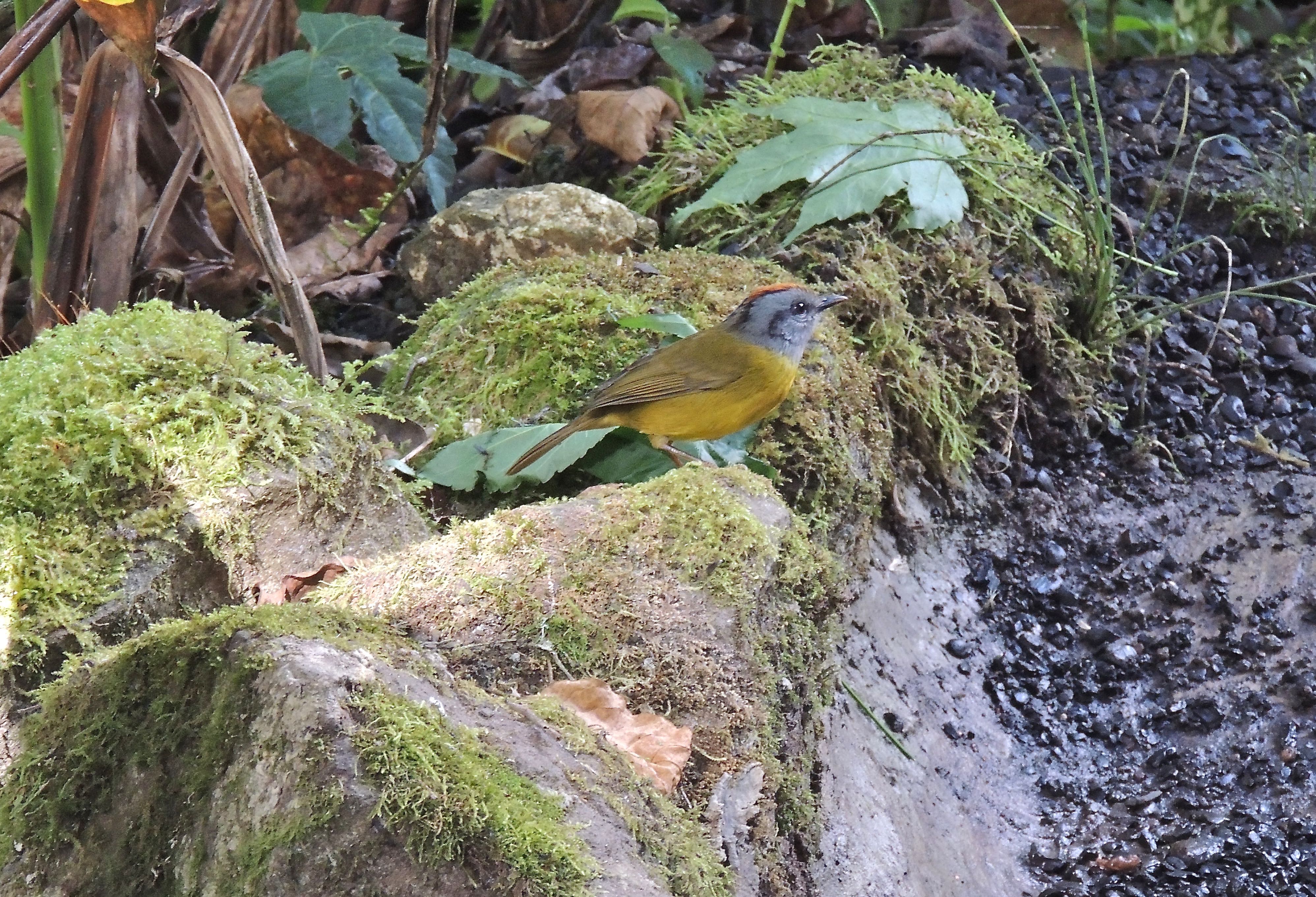 Russet-crowned Warbler - Photo by William Young
Russet-crowned Warbler - Photo by William Young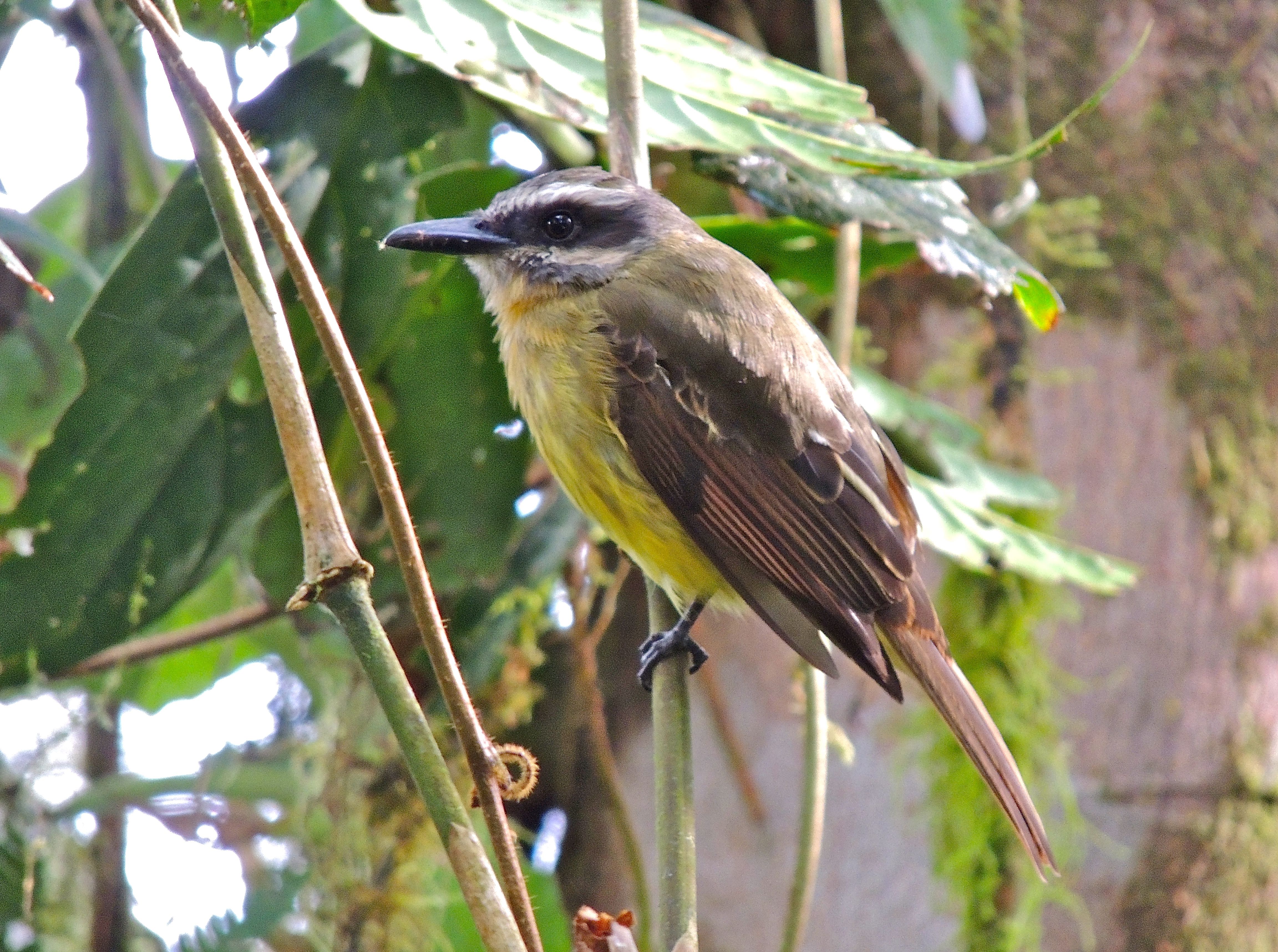 Golden-crowned Flycatcher - Photo by William Young
Golden-crowned Flycatcher - Photo by William Young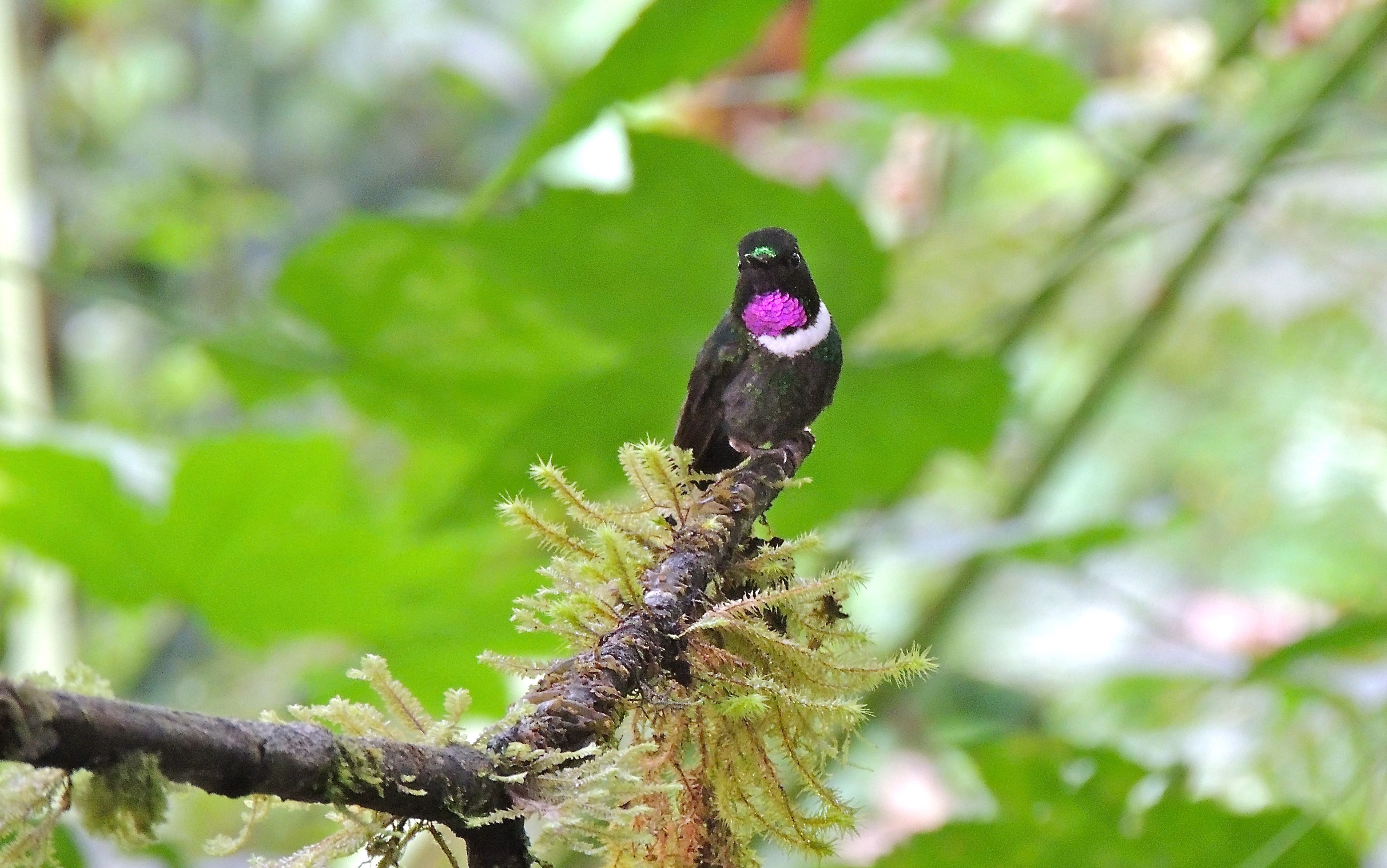 Gorgeted Sunangel - Photo by William Young
Gorgeted Sunangel - Photo by William YoungAfter breakfast, we set out for the Milpe Road. We stopped along the way and saw a female Powerful Woodpecker, who is buff and barred below. I had a nice look at a Turquoise Jay. Milpe Road is 1,000 meters lower than Bellavista. At the hummer feeders there, I saw an Andean Emerald, who is white below. There were Crowned Woodnymphs, who are a brilliant green. I also saw two species I had seen in Panama — White-necked Jacobins and Rufous-tailed Hummingbird. There were a lot of Green Thorntails, one of whom had a very long tail. They were coming to feeders, while the one I saw in Panama stayed in the trees. I also saw a Green-crowned Brilliant. My first Morpho butterflies of the trip were flitting near the parking area.
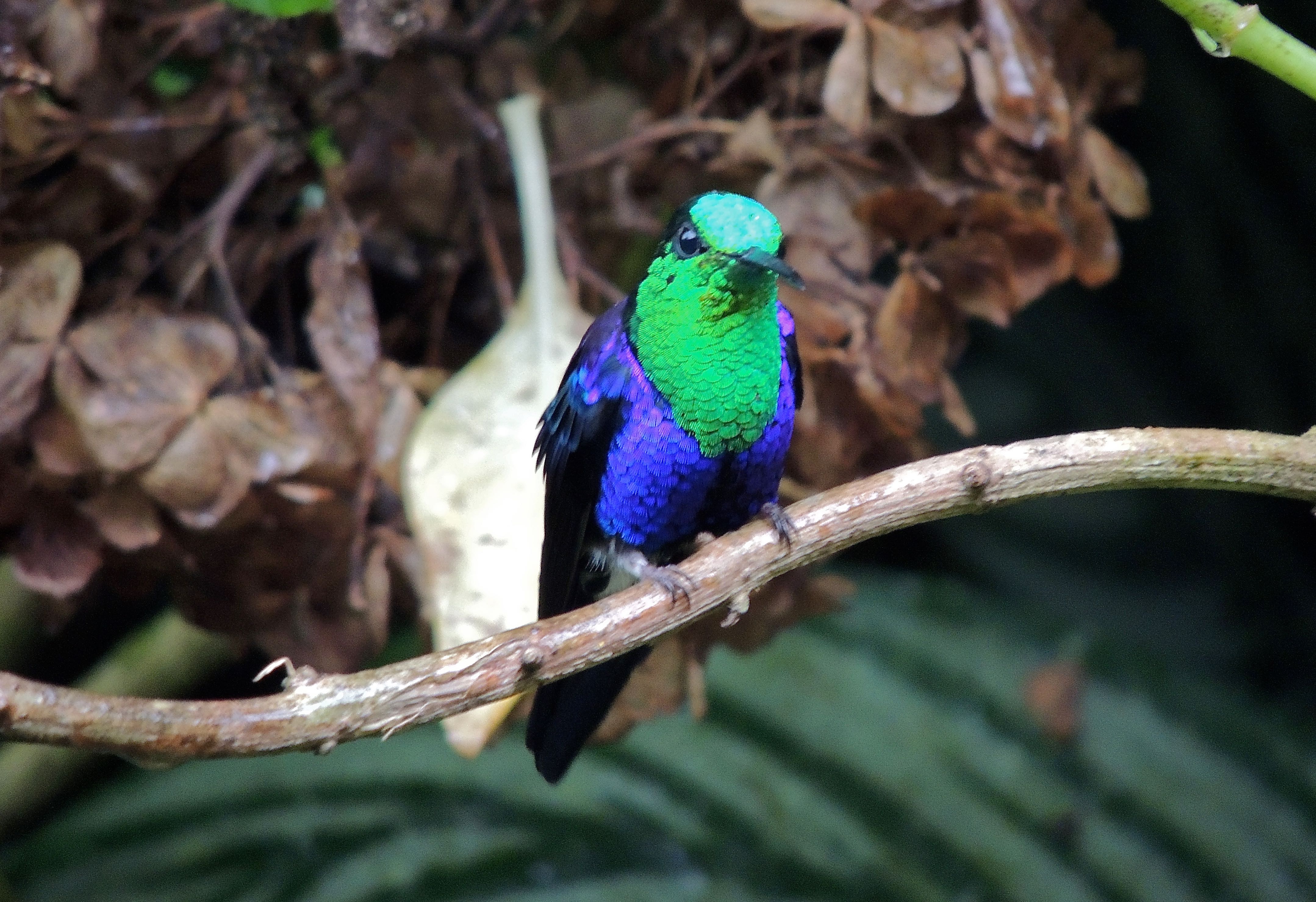 Crowned Woodnymph - Photo by William Young
Crowned Woodnymph - Photo by William Young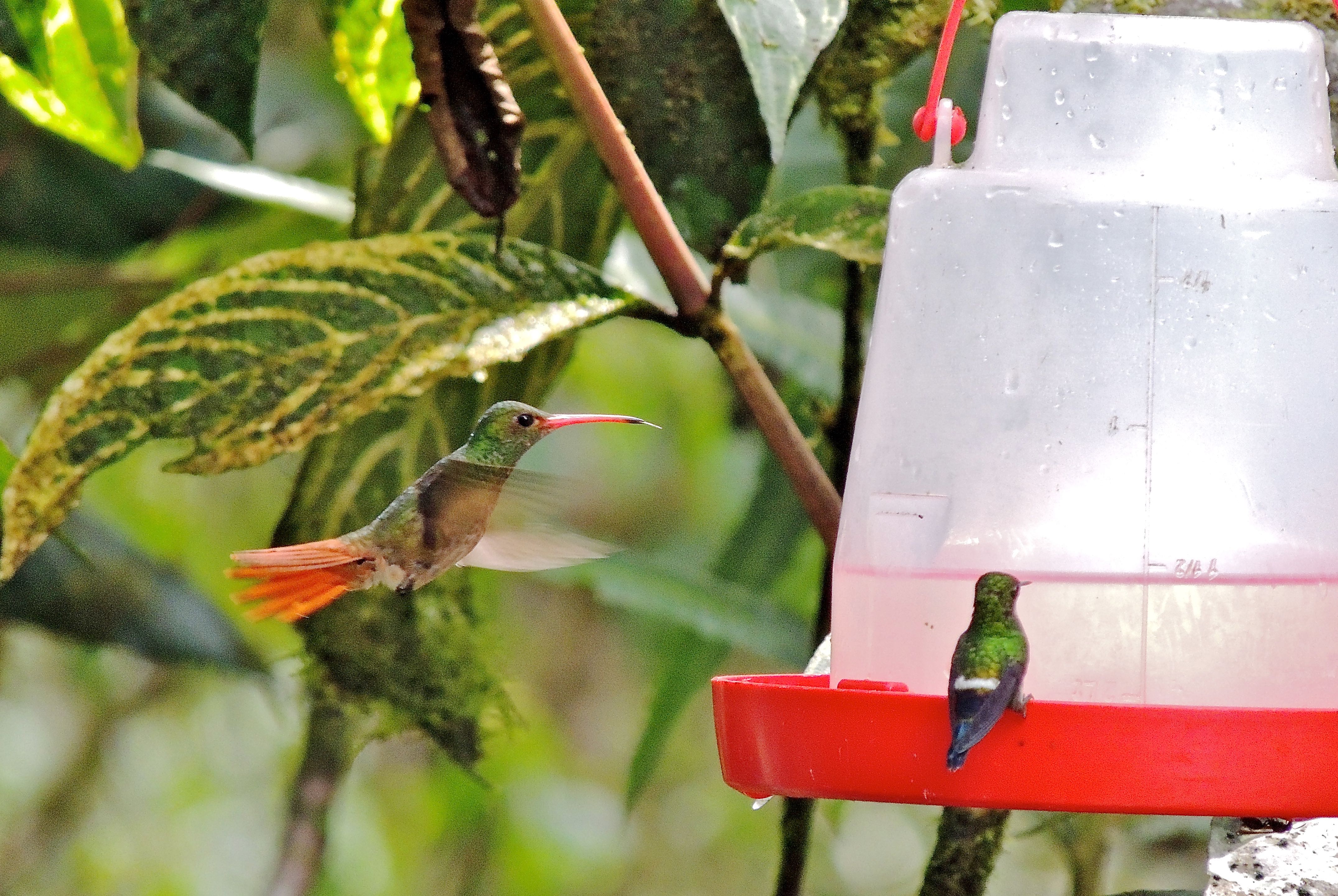 Rufous-tailed Hummingbird and Green Thorntail - Photo by William Young
Rufous-tailed Hummingbird and Green Thorntail - Photo by William YoungOne of the highlights of my trip so far was visiting a Club-winged Manakin lek at Milpe. I was able to see and photograph one bird. I heard the males making their unusual noise with their wings, and I got some audio of it. I watched one preen and stretch, but he did not make the noise. I later got video footage of a Golden-winged Manakin. This tiny bird is all black with a big golden forehead and gold on the wings that is usually visible only when the bird flies. He looks as if he has little devil horns. I have video of one vocalizing, making its complaining one-note call.
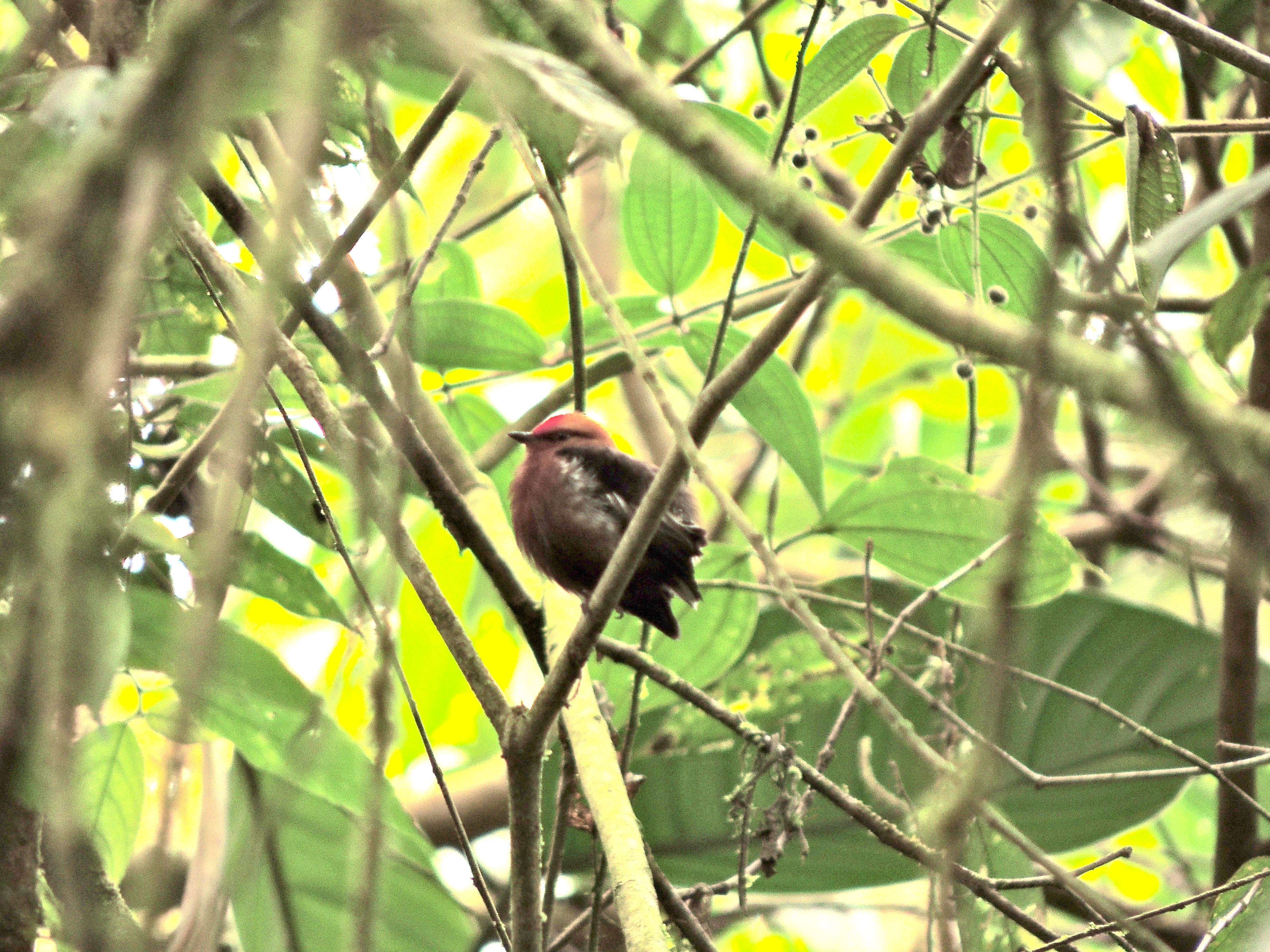 Club-winged Manakin - Photo by William Young
Club-winged Manakin - Photo by William Young Golden-winged Manakin - Photo by William Young
Golden-winged Manakin - Photo by William YoungI saw a female Guayaquil Woodpecker, who is like a Pileated. The white lines on her back form a V. We saw both Buff-fronted and Buff-throated Foliage Gleaners. The Buff-fronted has a buff throat, rufous wings and tail, and a dark belly. I later had a much better look at one. The Buff-throated has a dark ear, the cap is dark, and the body is lighter colored than the Buff-fronted. On one of the nearby roads, Gustavo scoped a Bronze-winged Parrot. It is dark, with bronzy wings and a yellow bill.
We birded where our car was parked, and a large feeding flock came in. There was a Tropical Parula high in a tree, along with a male and female Guira Tanager. The male Guira has a black face, reddish breast, and yellow underparts. There was an Orange-bellied Euphonia, who has white undertail coverts and a yellow crown. I also saw a Lemon-rumped Tanager. A Southern House Wren was hopping near us, as were Bananaquits. We went into the woods and saw a male Choco Trogon. We first heard its four-whistle call. It has a green back, is red underneath, and has a white breastband. We then saw a Choco Toucan, who is similar to the Chestnut-mandibled. The head and bill proportions of the Choco are smaller. I thought I saw black on the bill rather than chestnut. We walked a little farther and heard the snapping sound of a White-bearded Manakin. We later saw one of the fat little males perched. Yesterday was a three antpitta day, and today was a three manakin day.
The weather turned bad, so we got into the car and drove back to Bellavista to pick up our luggage before heading back to Quito. We heard a Shiny Cowbird whistle as it flew by. We made a stop at Alambi, a reserve which calls itself a hummingbird paradise. We spent about thirty minutes at the feeders, but I could have stayed there all day. There were violetears, emeralds, woodnymphs, and brilliants. The last hummingbird we saw was a Purple-bibbed Whitetip, which can be difficult to find. In addition to the hummingbird feeders, there was also an area that attracts other species, such as a male and female Red-headed Barbet, a Golden Tanager and other tanager species, an Ecuadorian Thrush, a Buff-throated Saltator, numerous Thick-billed Euphonias, and a very attractive Yellow-tufted Dacnis.
 Brown Violetear - Photo by William Young
Brown Violetear - Photo by William Young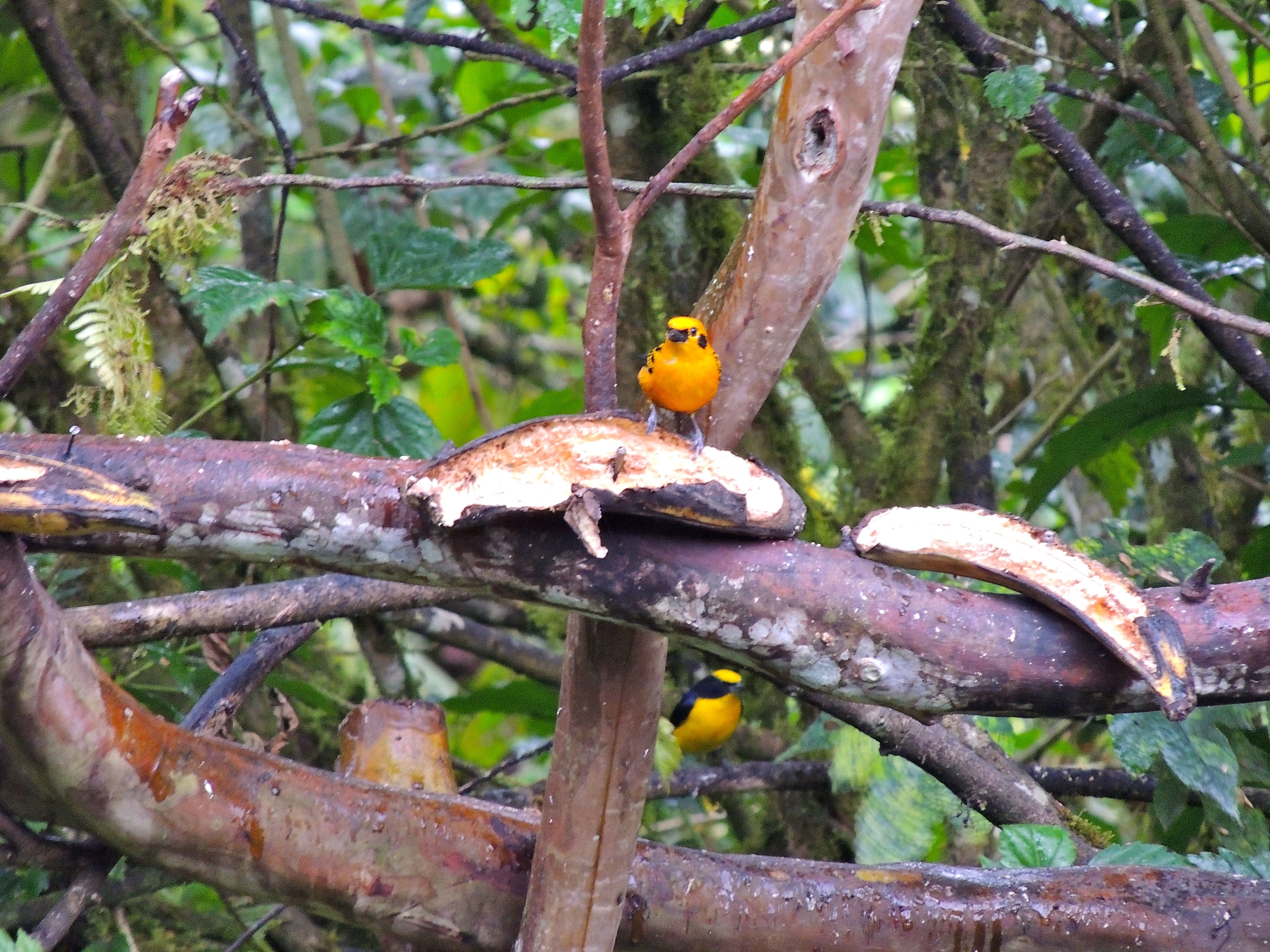 Golden Tanager and Thick-billed Euphonia - Photo by William Young
Golden Tanager and Thick-billed Euphonia - Photo by William YoungThe drive back to my hotel in Puembo was very long, and traffic was awful. Gustavo said that in the past 500 years, Ecuador has been so poor and segregated that in haciendas where traditional cooking started, poor people had access only to the parts of the cow that were left over. One dish is called guitata, which means belly. It is the most important dish in Ecuador's cuisine, made of tomato, onion, peanut sauce, garlic, potato, and the first part of a cow's stomach (the part with the most muscle). He said most folk food around the world is based on leftovers. We drove past a stand that was selling corn on the cob. Gustavo said the Ecuador sweet corn is very mealy and has large grains. The dish served at the roadside stand has pork and cheese on the side. He said birdwatching is not a hobby among residents of Ecuador. The only people who do birdwatching are bird guides and scientists. Many of the speed bump signs we passed were defaced, or more accurately, faced. They feature a line under a semicircle, and many people have drawn faces under this symbol, making the symbol look like a hat.
Near dark, we saw a Peregrine Falcon perched in a tree just as we were preparing to cross the Equator. We had been north of the Equator in Bellavista, and my hotel is south of it. We stopped for a sandwich at about eight, just as the shop was closing. I got to the hotel and went to bed in preparation for my flight the next day to the Galapagos.
August 26
I waited outside for my ride to the airport at 8, and two goats were eating some of the plants in the garden. The other time I was here, a llama was sitting peacefully in the lot next to the hotel. Xavier arrived to pick me up, and we talked about my trip so far. Xavier told me that people in Ecuador don't watch birds because to do so, you need a pair of binoculars that costs at least $200, and most young people would rather spend the money on a cellphone.
At airport security, officials were more concerned about biological bombs, like fruit and plants, than terrorist bombs. The plane stopped in Guayaquil on the way to the Galapagos, and the second leg was uneventful, except that a woman fainted in the back of the plane. The Galapagos has a population of 30,000. We landed in San Cristobal, which is the capital. I was the last in line to go through customs, and while I was waiting, a pair of finches perched on a truck. I believe they were Medium Ground Finches. Later, I saw a female of what looked like a Small Ground Finch. After going through customs, we went to the dock. There were three sea lions sprawled on some steps, sunning themselves. More sea lions were wrestling in the harbor. There were a lot of frigatebirds flying around and a few Brown Pelicans. The profusion of frigatebirds gave the area a sinister feel. There are two species — Magnificent and Great. I think most of the ones I saw were Magnificent, but I saw some females who were Great. The males are very difficult to tell apart. Frigatebirds sometimes fly close to the boats, and on one, I saw the red spot of the gular pouch. Also from the boat, I saw storm-petrels, which I believe were Elliot's.
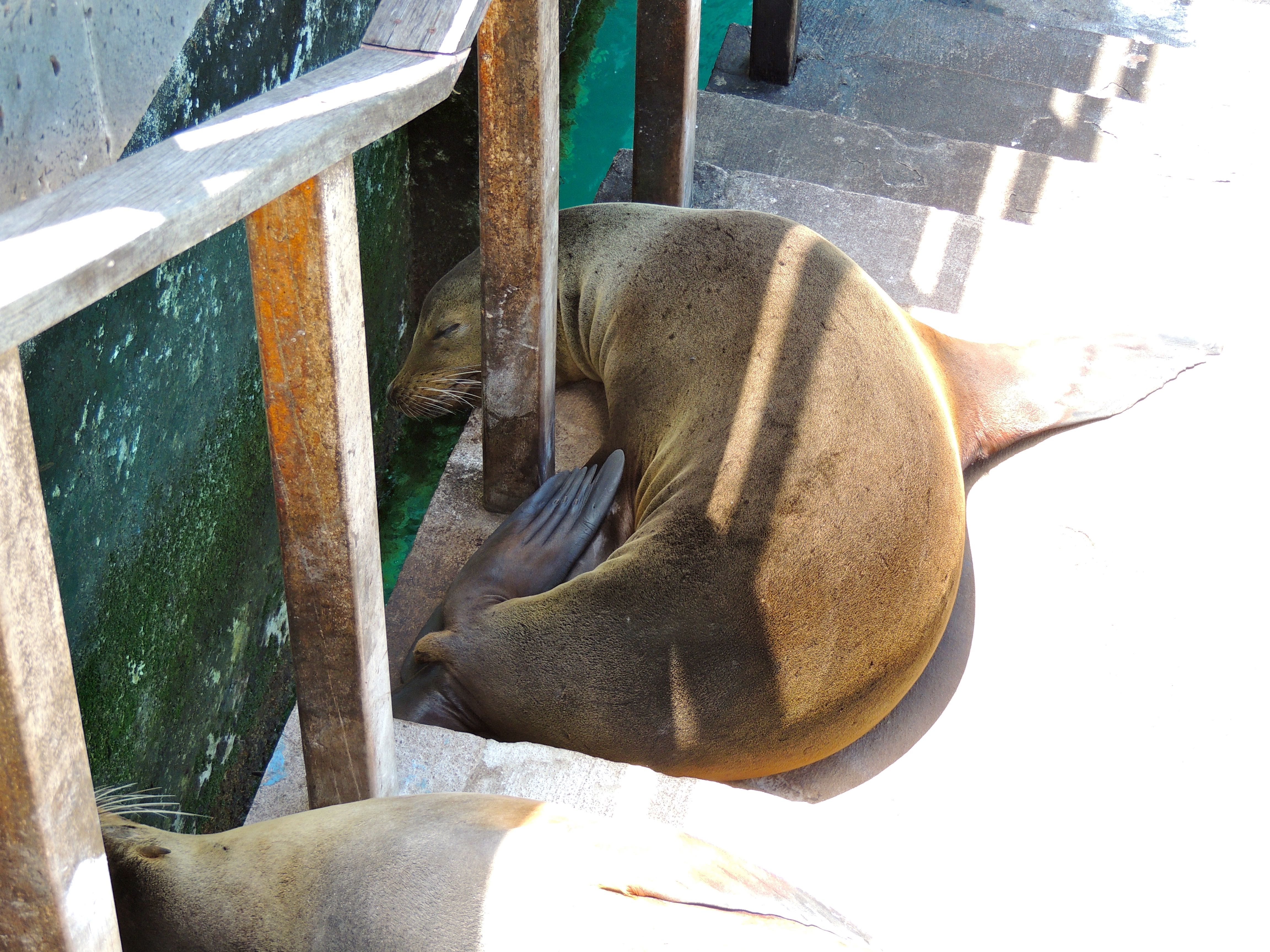 Galapagos Sea Lion - Photo by William Young
Galapagos Sea Lion - Photo by William YoungHiking on some of the San Cristobal Island trails can be difficult. The rocks are loose and irregular, which does not allow good footing. I later had fewer problems when I took a walking stick with me. My stay on the Galapagos was not relaxing. In addition to the rocky paths, we were on a boat most of the time. It was like an 8-day pelagic trip, and we were frequently buffeted by the wind and waves.
The booby species on San Cristobal is the Blue-footed. We saw some who were two months old. The parents were off looking for food. I got video of a young booby begging for food. The Galapagos were in their dry season, which lasts from April to December. During the rainy season, everything becomes green. During the dry season, everything looks dry and parched. We saw a species of Marine Iguana indigenous to the Galapagos. When young, they are similar in color to the lava rocks. The females lay 2-3 eggs. The males have more spikes on their back than the females. There are no seals on the Galapagos, only sea lions. The males sea lions are darker than the females. We saw a lot of them this afternoon on Sea Lion Island, including a 6-week old pup. I also saw the first of what would be many Yellow Warblers. There were some finches whom I'm pretty sure were Cactus Finches. A Pacific Green Sea Turtle was swimming near our boat. This area also has a lot of Candelabra Cacti.
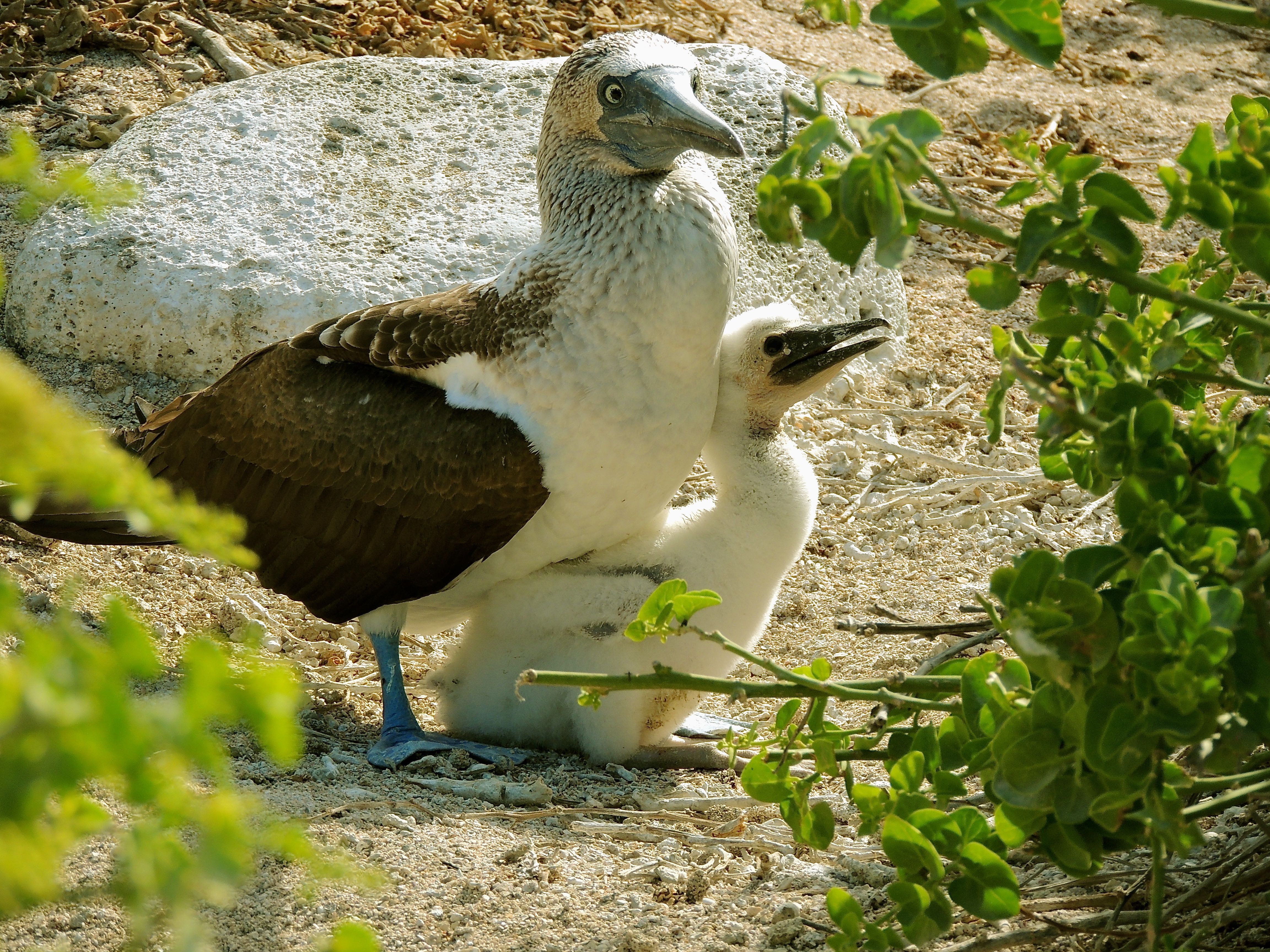 Blue-footed Booby with Chick - Photo by William Young
Blue-footed Booby with Chick - Photo by William Young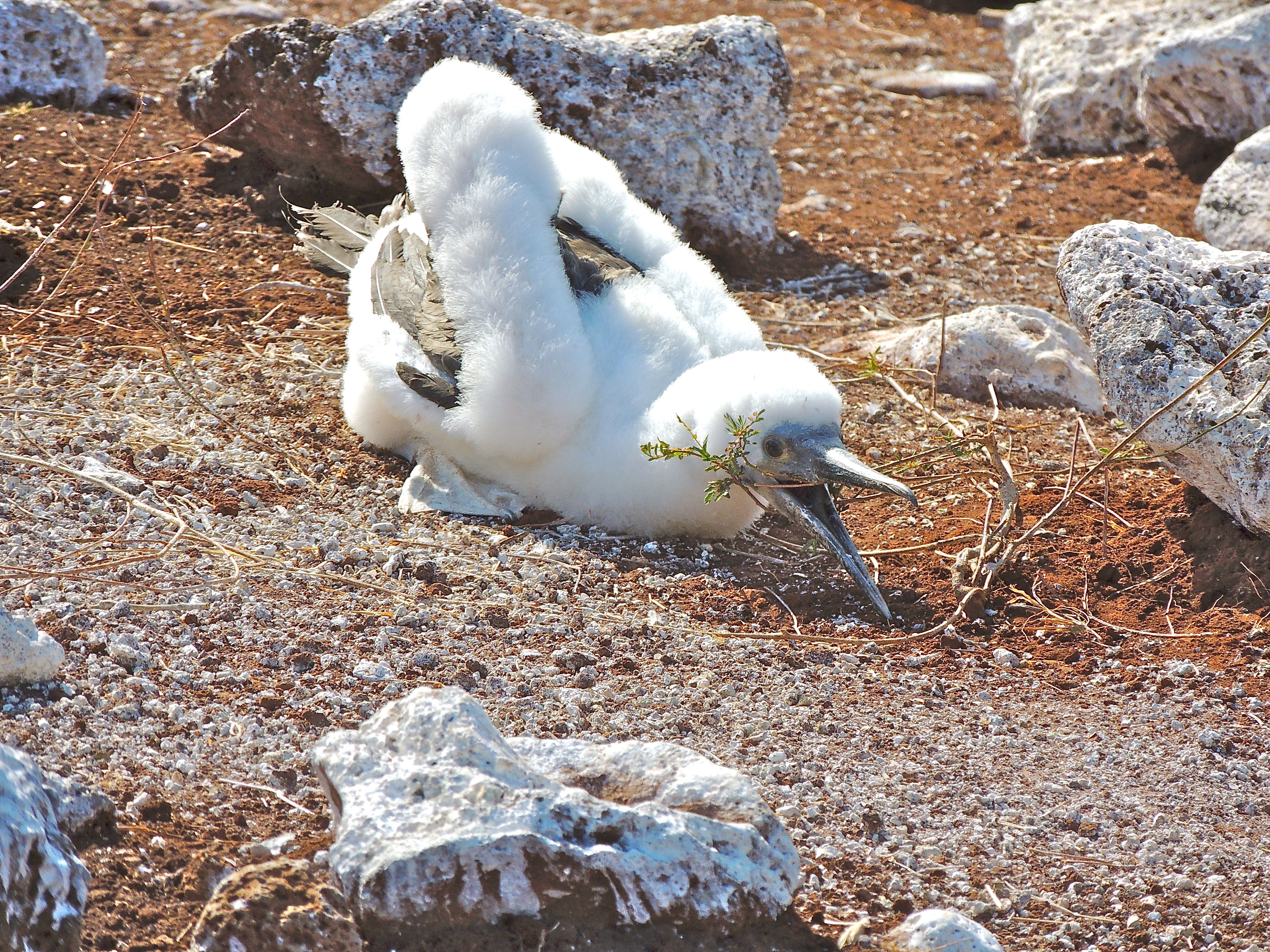 Blue-footed Booby Chick - Photo by William Young
Blue-footed Booby Chick - Photo by William Young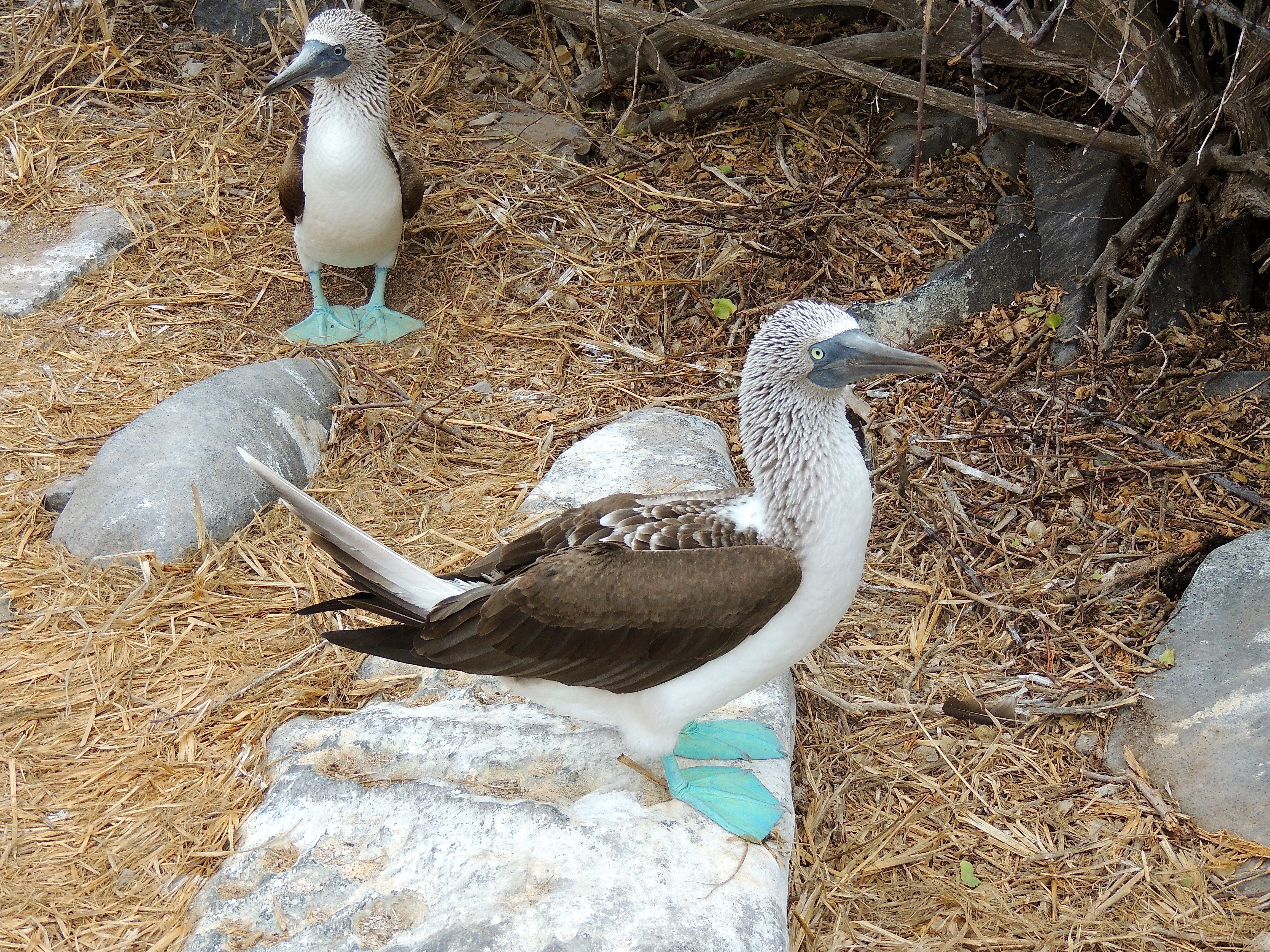 Blue-footed Boobies - Photo by William Young
Blue-footed Boobies - Photo by William Young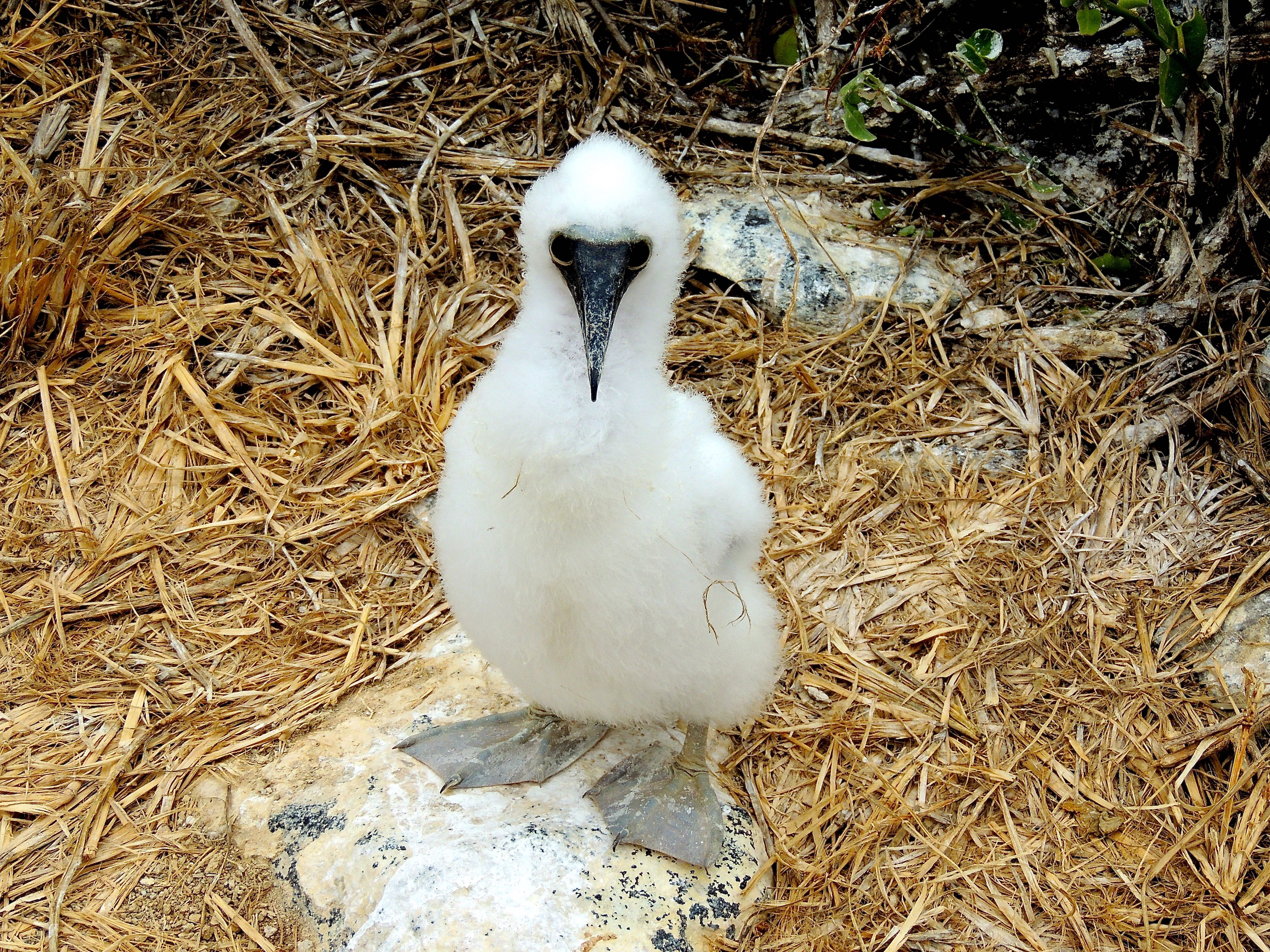 Blue-footed Booby Chick - Photo by William Young
Blue-footed Booby Chick - Photo by William Young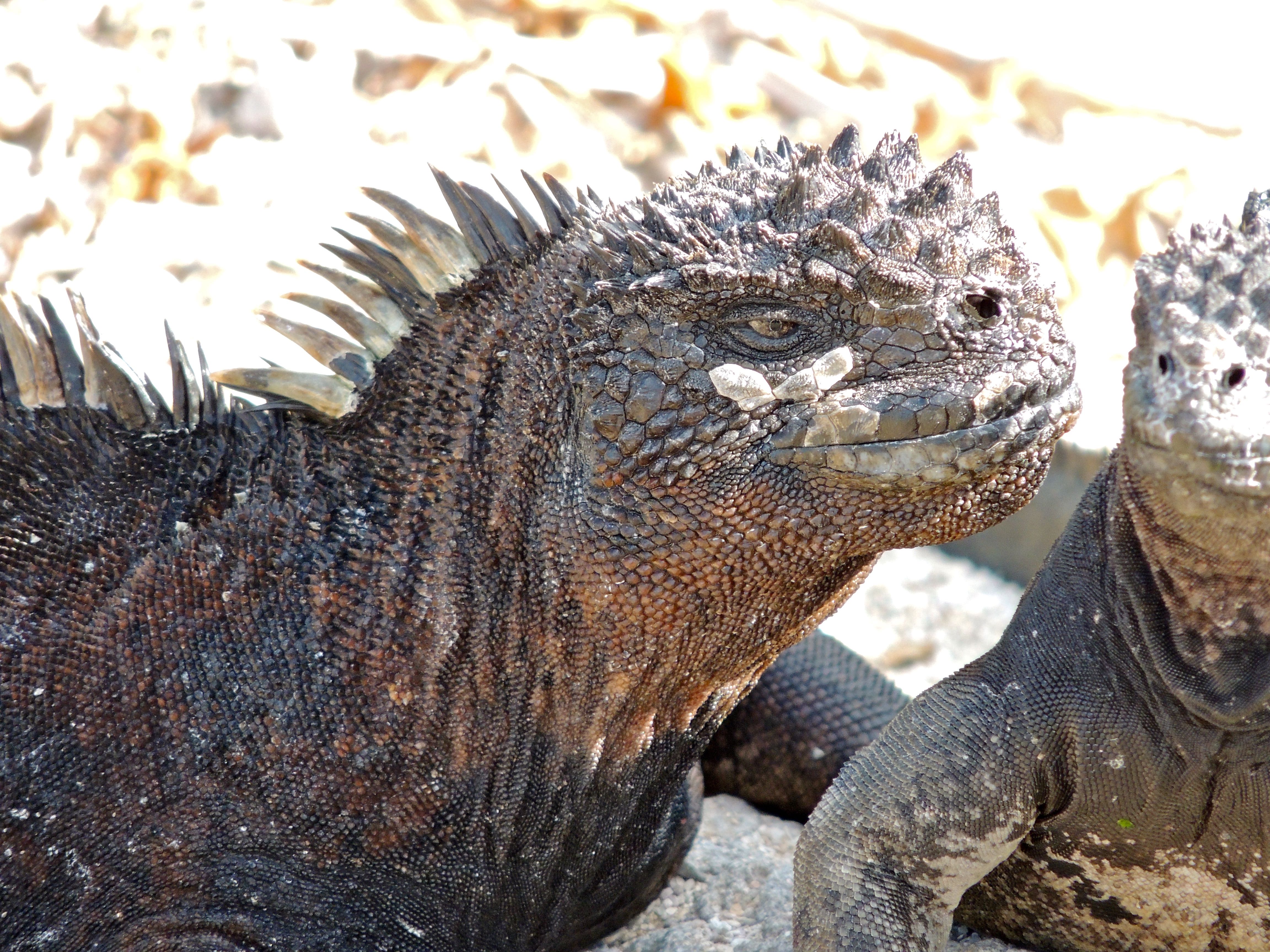 Marine Iguanas - Photo by William Young
Marine Iguanas - Photo by William YoungThe color of the water is constantly changing, depending on the time of day and one's position relative to the sun. Sometimes, it is a shining aquamarine, while other times, it is gray. When looking to the horizon, sometimes patches of the sea are different colors. There was a huge rainbow, and I saw where it ended. Boobies were doing plunge dives in front of the rainbow, sometimes dropping 100 feet like an arrow. I saw a flock of Audubon's Shearwaters, who are light below.
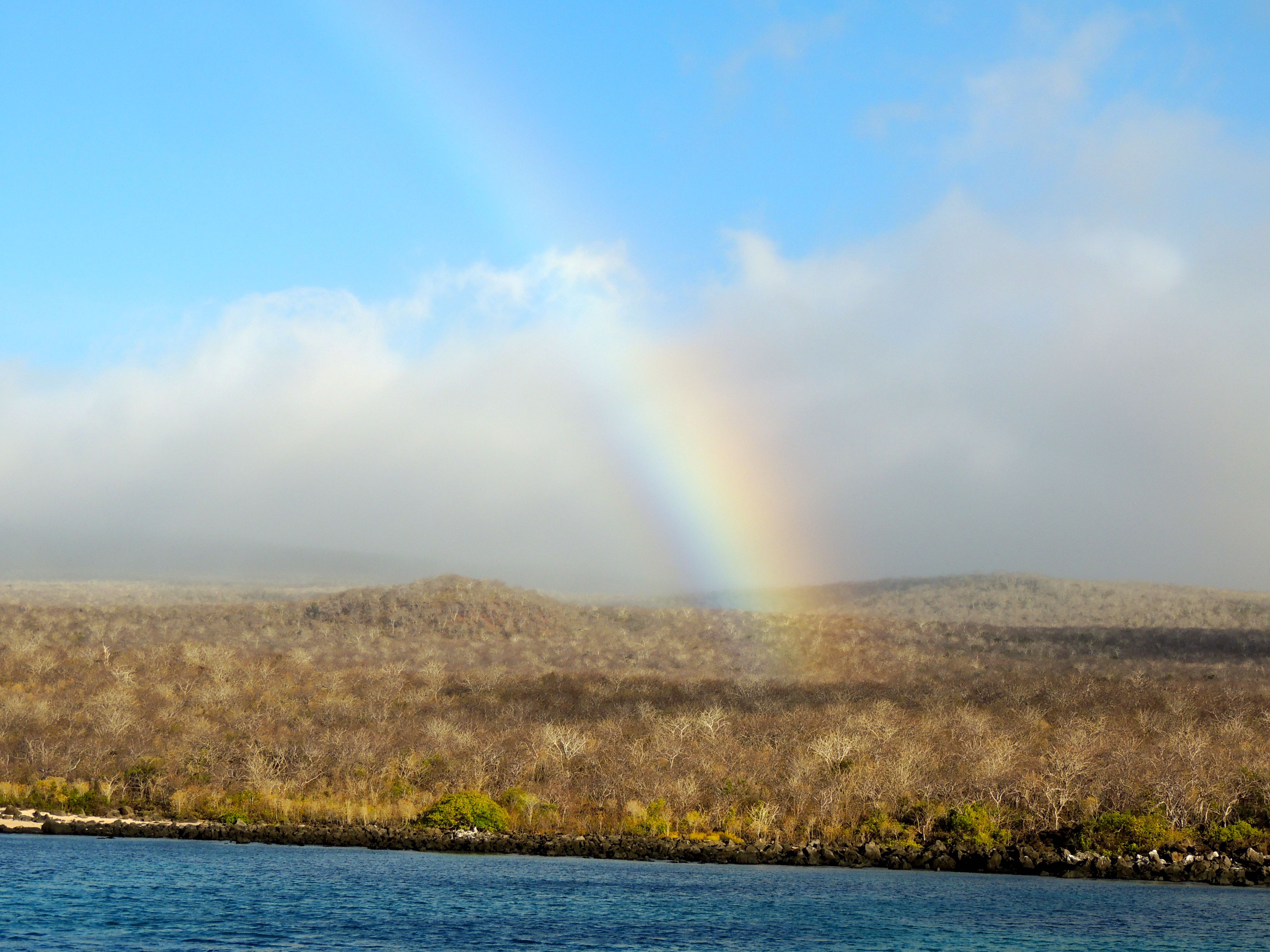 San Cristobal Rainbow - Photo by William Young
San Cristobal Rainbow - Photo by William YoungThis evening, I went to the town of San Cristobal with Teresa and Monica, who are from Italy. There are 5 other people on the boat — three from Spain and two from England. There is a large 3-dimensional sign at the dock in San Cristobal with an image of Darwin surrounded by creatures from nature, including some who are coming out of his forehead. While I was walking through the town, I bought a hat with a chin-string and a wide brim. The boat can be very windy, so I needed a hat that does not fly off. I bought one that has an insignia for the Galapagos National Park — the other choice was one with a Blue-footed Booby featuring the caption, "I like Boobies.". While I was in town, I noticed that there are no moths by the outside lights.
 San Cristobal Mural - Photo by William Young
San Cristobal Mural - Photo by William Young
August 27
The sea was very choppy, which made taking a shower impossible this morning, so I cleaned myself the best I could. I looked out my window and saw some storm-petrels. I also saw a frigatebird harassing a booby. A large bird with a white head was flying toward the boat from behind. As it came closer, I could see that it was a Waved Albatross, the first of the trip.
After breakfast, we went to Punta Pit. There were about 20 sea lions on the beach and one alpha male in the sea barking. The alpha male changes every two weeks to two months. A sea lion's gestation period is similar to human's, so the alpha male now is probably not guarding his own offspring. The young live on milk for only the first six months, and the mother nurses them for a year. I saw one young sea lion going up to several females, looking for milk, but a female will feed only her own offspring. I saw a Brown Pelican and some Swallow-tailed Gulls. There was also an adult Nazca Booby, who is bright white with a yellow bill and black on its wings. There were a couple of squawking Smooth-billed Anis — a species introduced by farmers — and a group of Small Ground Finches.
 Galapagos Sea Lion - Photo by William Young
Galapagos Sea Lion - Photo by William Young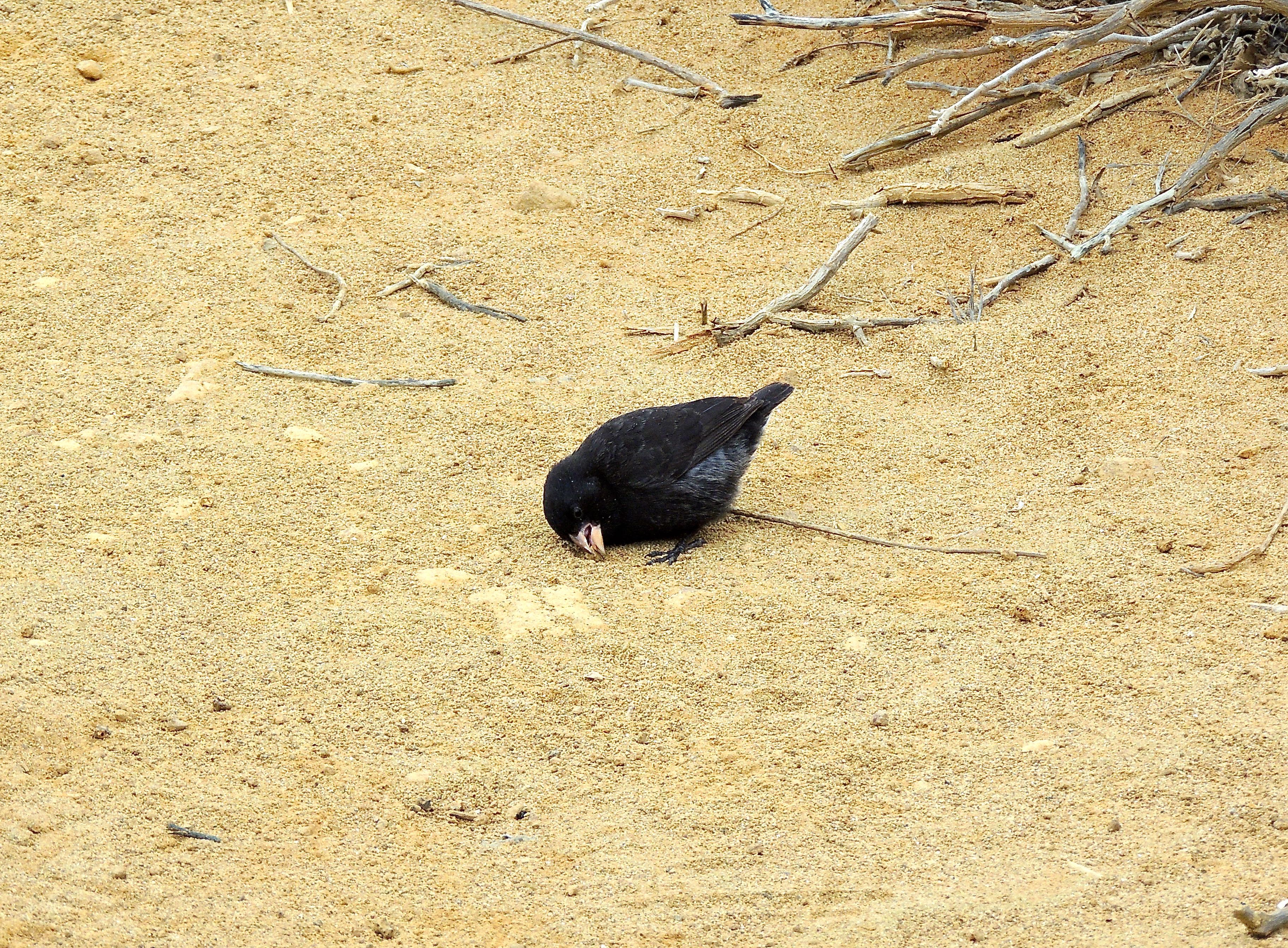 Small Ground Finch - Photo by William Young
Small Ground Finch - Photo by William YoungWe hiked up a hill to where Red-footed Boobies nest. Our guide Solange said they have shorter legs than the other two species of boobies, so they can nest on vegetation. The legs are shorter so that they can more easily regulate their body temperature. They lay only one egg, compared to the 2-3 laid by the Blue-footed. On the way back down, we saw a baby Lava Lizard. When we got back to the beach, we watched Blue-footed Boobies plunge diving. A Marine Iguana defecated and then dragged his tail through it.
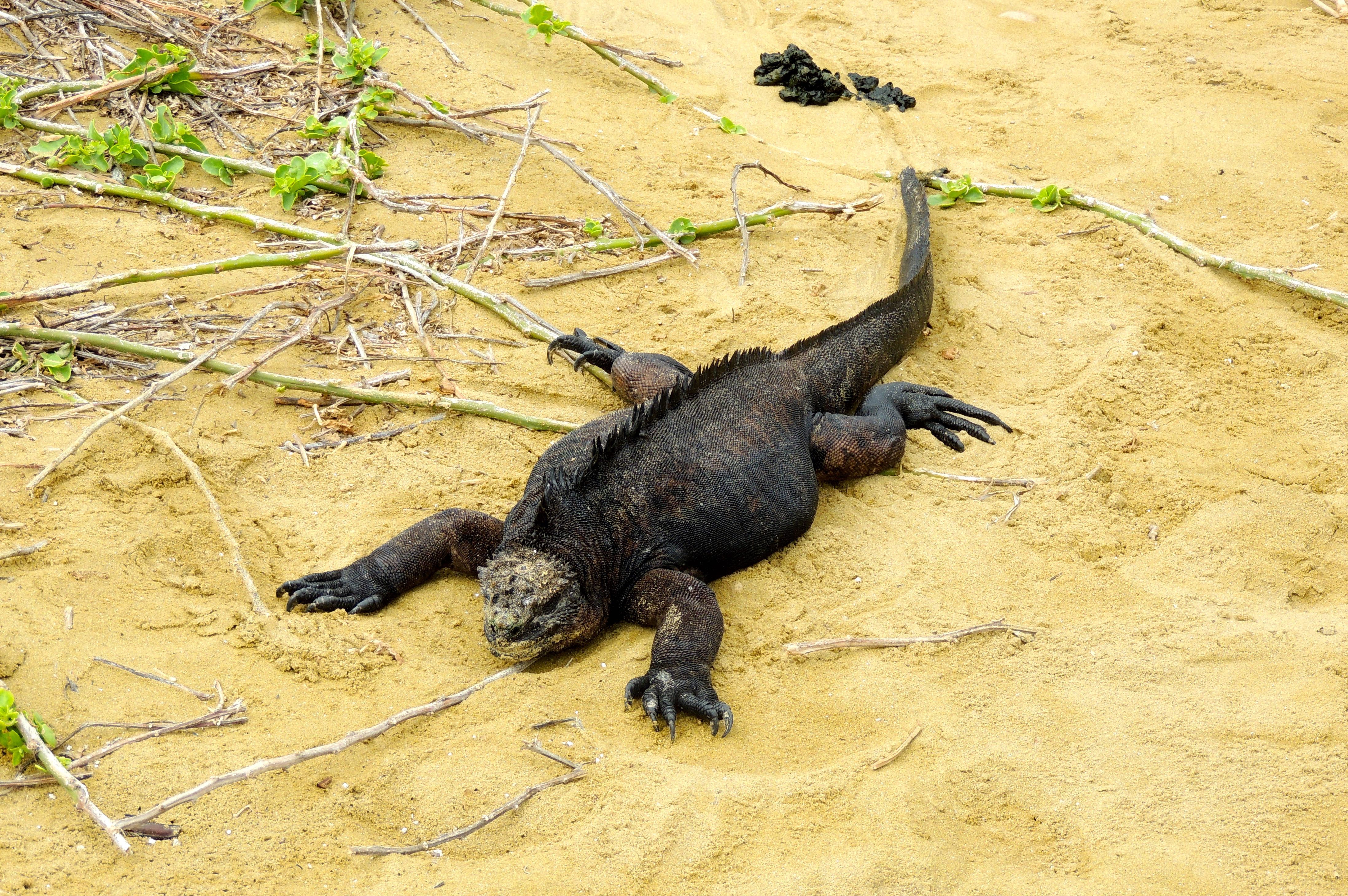 Marine Iguana - Photo by William Young
Marine Iguana - Photo by William YoungOn the boat before and after lunch, I saw some Elliot's Storm-petrels. I could see the smaller amount of white on the rump. After lunch, we went to a rock formation called Witch Hill. It has many caves, and according to legend, a lot of people who go there disappear. Many Brown Noddies were on the rocks, and I saw some flying. Many Sally Lightfoot Crabs were crawling on the rocks, and some have beautiful patterns on their shell. There were Brown Pelicans adults and juveniles. I got to study the intricate pattern on the top of the bill as well as the patterns on the neck. I saw two Wandering Tattlers, and one called when it flew. They teeter when they are on the rocks, like a Spotted Sandpiper.
 Barnacles at Witch Hill - Photo by William Young
Barnacles at Witch Hill - Photo by William Young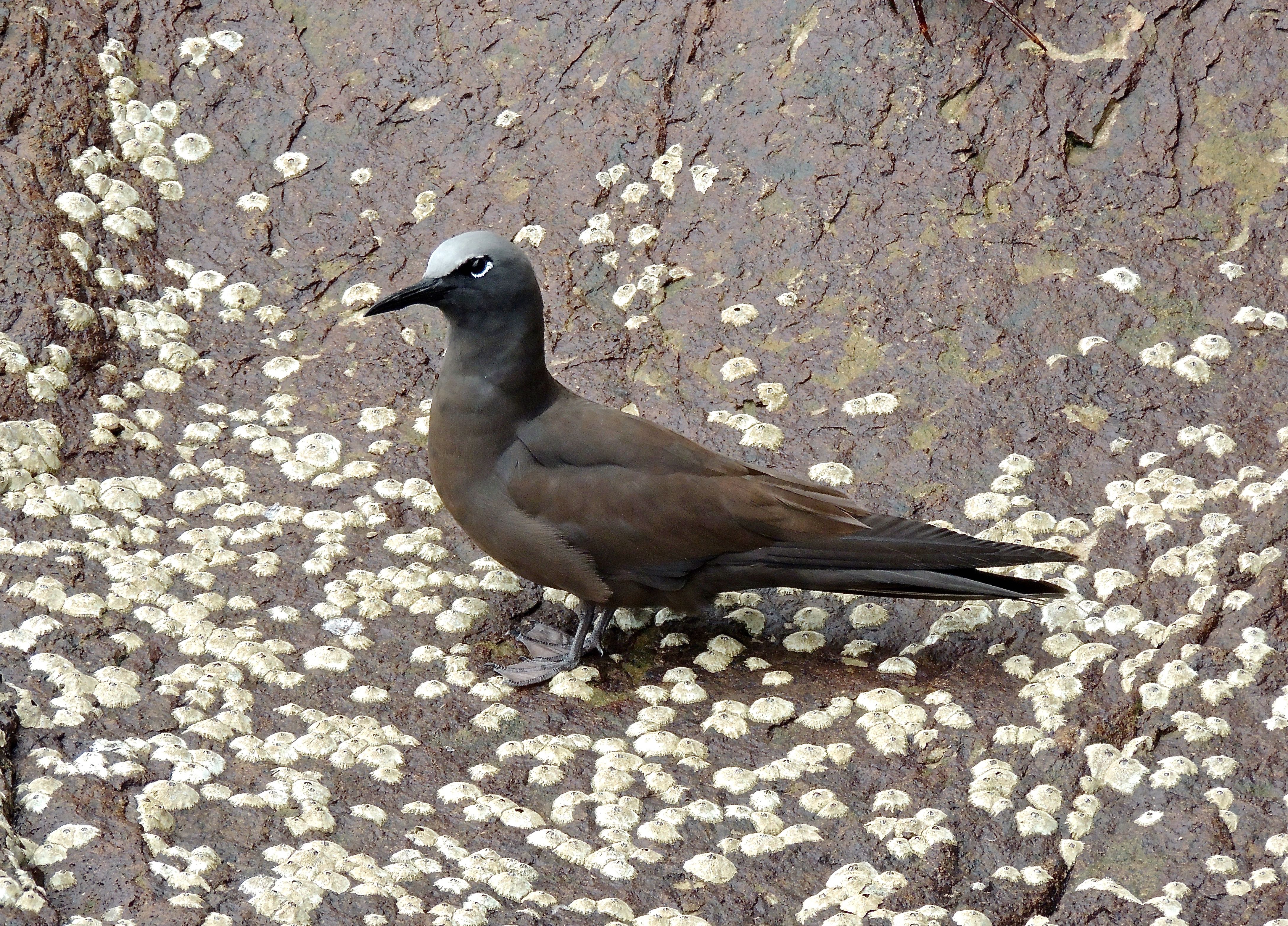 Brown Noddy - Photo by William Young
Brown Noddy - Photo by William Young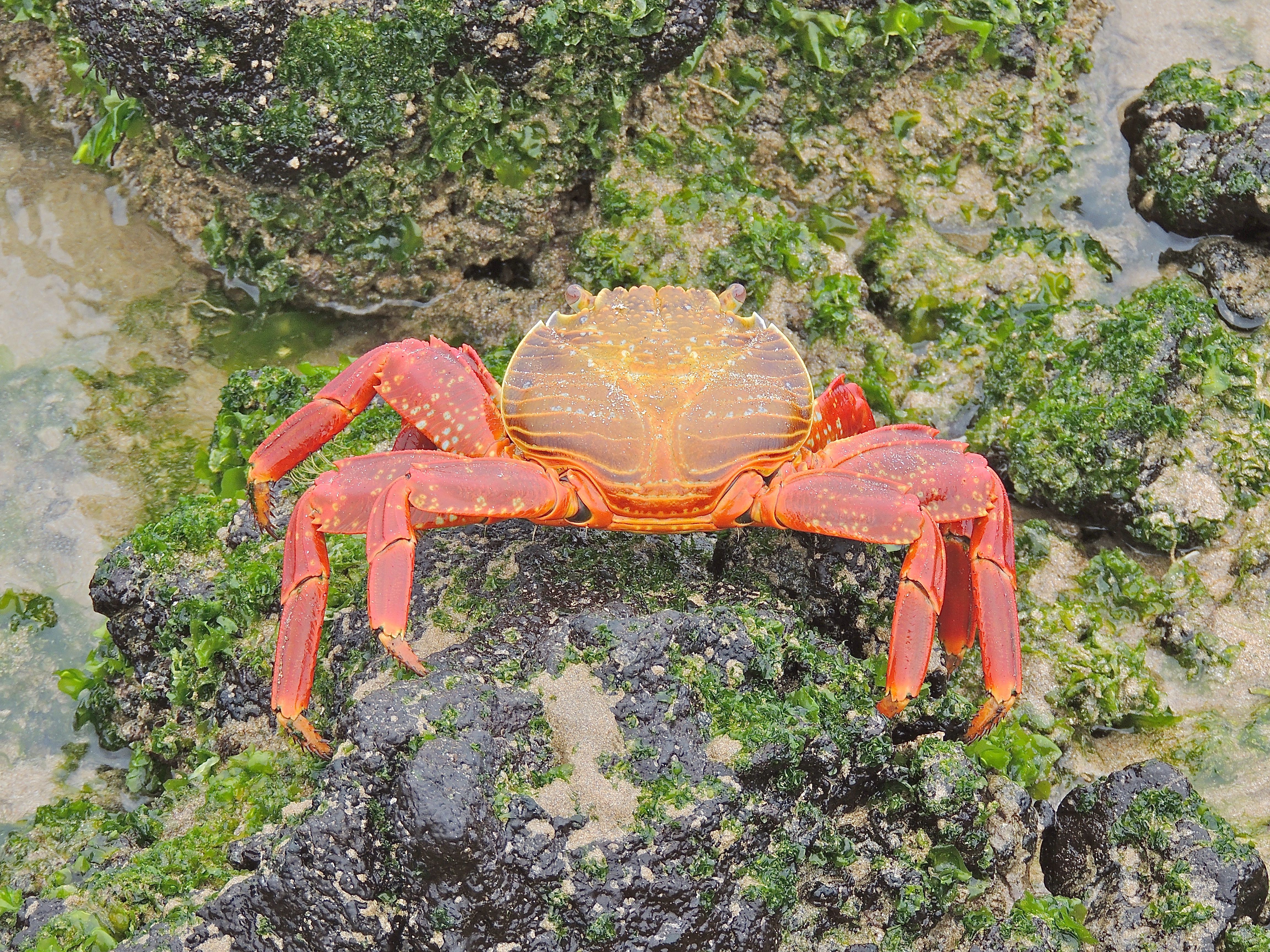 Sally Lightfoot Crab - Photo by William Young
Sally Lightfoot Crab - Photo by William Young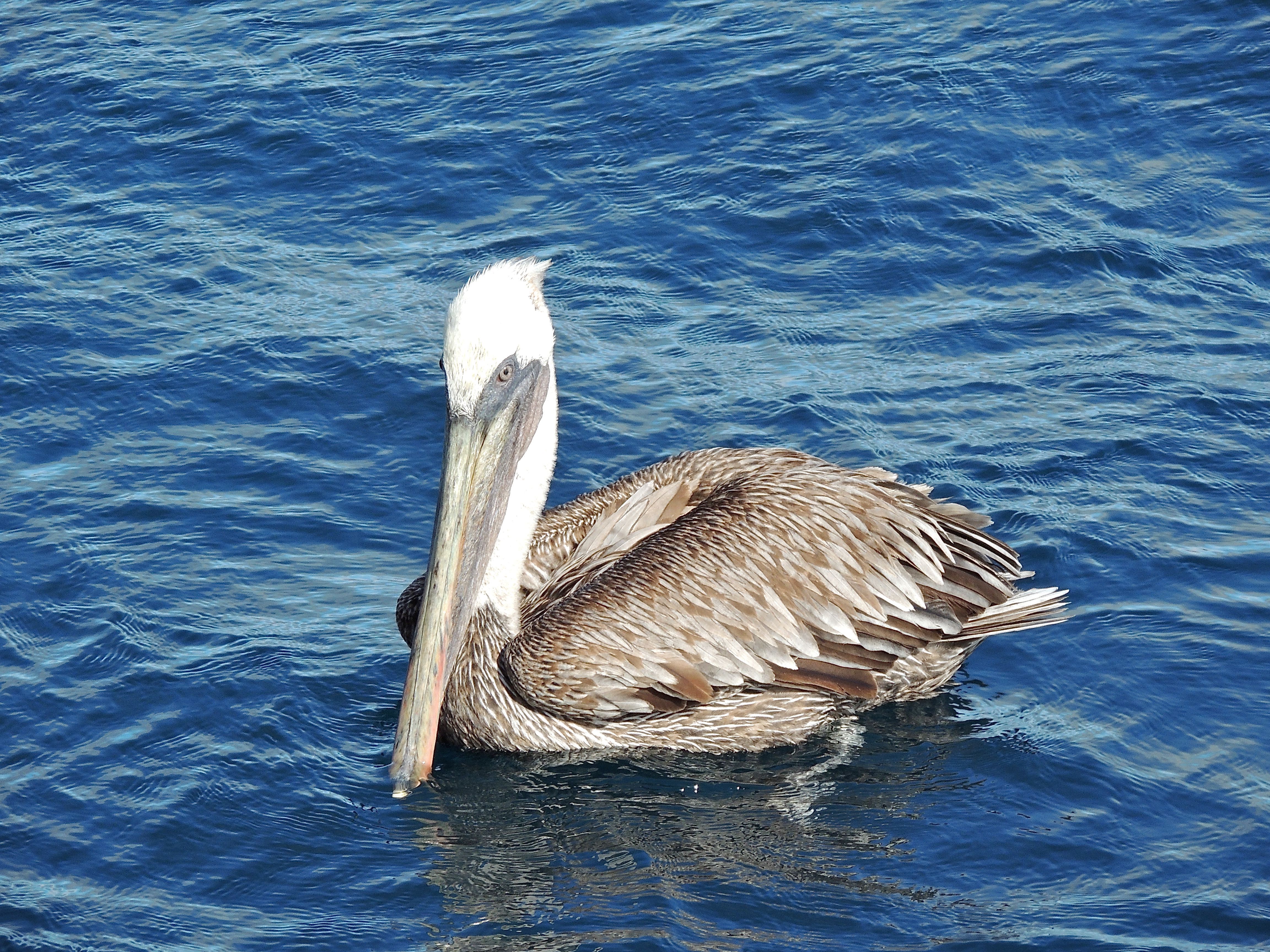 Brown Pelican Adult - Photo by William Young
Brown Pelican Adult - Photo by William Young Brown Pelican Adult - Photo by William Young
Brown Pelican Adult - Photo by William Young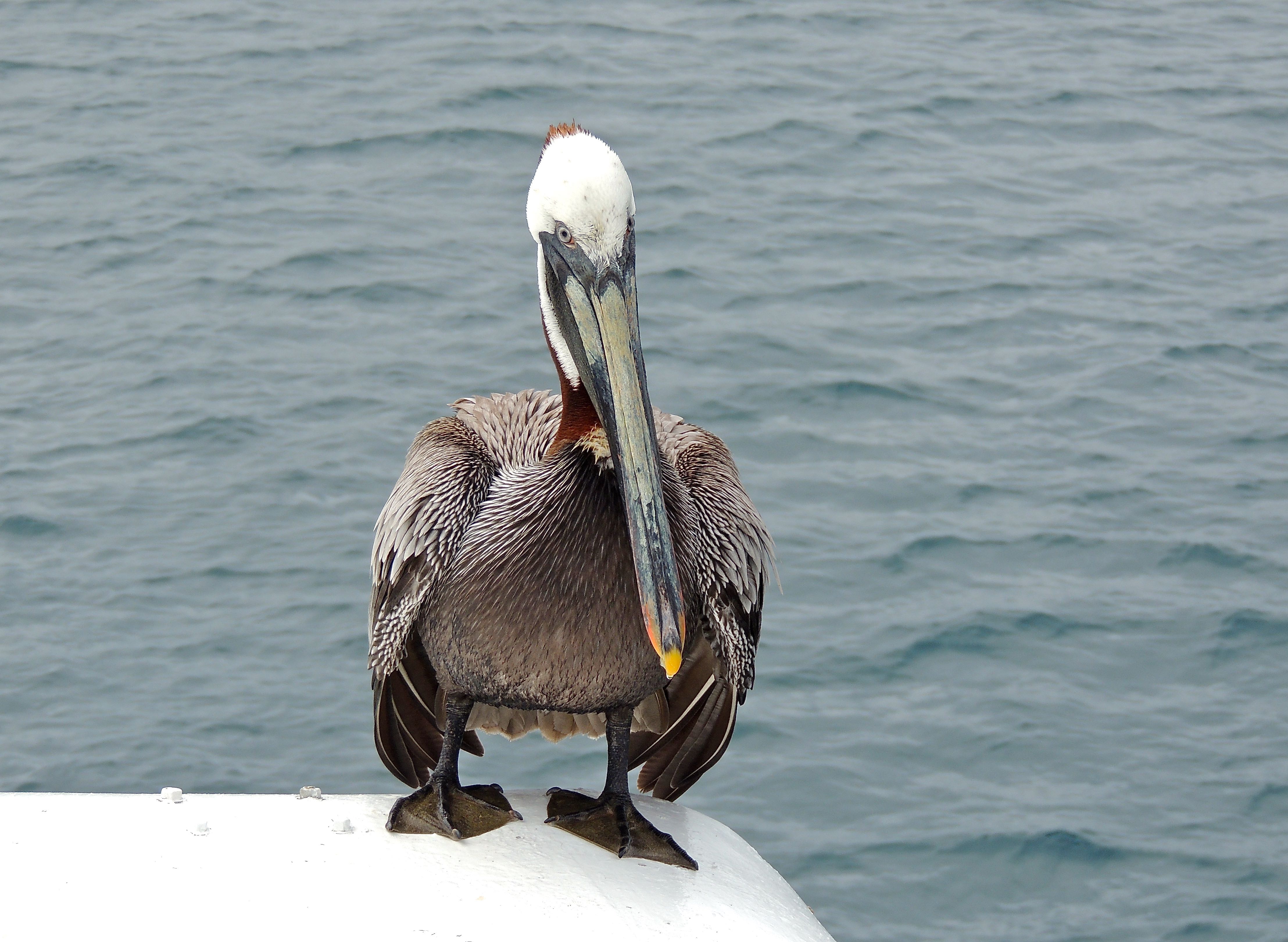 Brown Pelican Adult - Photo by William Young
Brown Pelican Adult - Photo by William Young Brown Pelican Juvenile - Photo by William Young
Brown Pelican Juvenile - Photo by William YoungWe then went to Kicker Rock, which is bifurcated. The bright orange on the rocks is coral. The rocks also have algae and barnacles. The water is very clear. A pair of Lava Gulls flew by our boat and landed on the nearby dinghies. There were a lot of Elliot's Storm-Petrels and some Audubon's Shearwaters. I saw what I thought was a ray, possibly an Eagle Ray, because they swim near the surface of the water. I saw a Red-billed Tropicbird, and I later saw a group of four. They fly very quickly and utter a harsh chirring call.
 Kicker Rock - Photo by William Young
Kicker Rock - Photo by William Young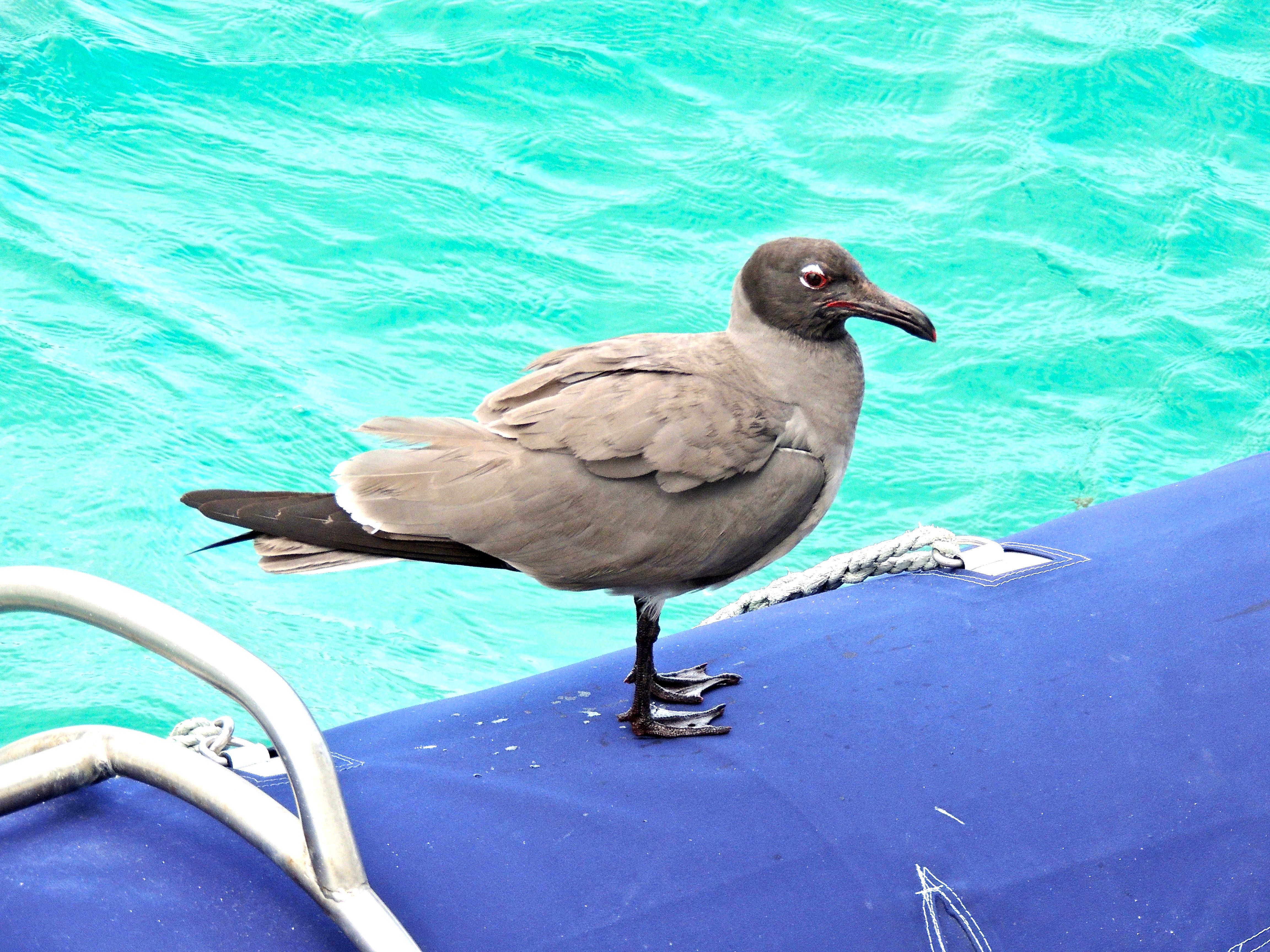 Lava Gull - Photo by William Young
Lava Gull - Photo by William Young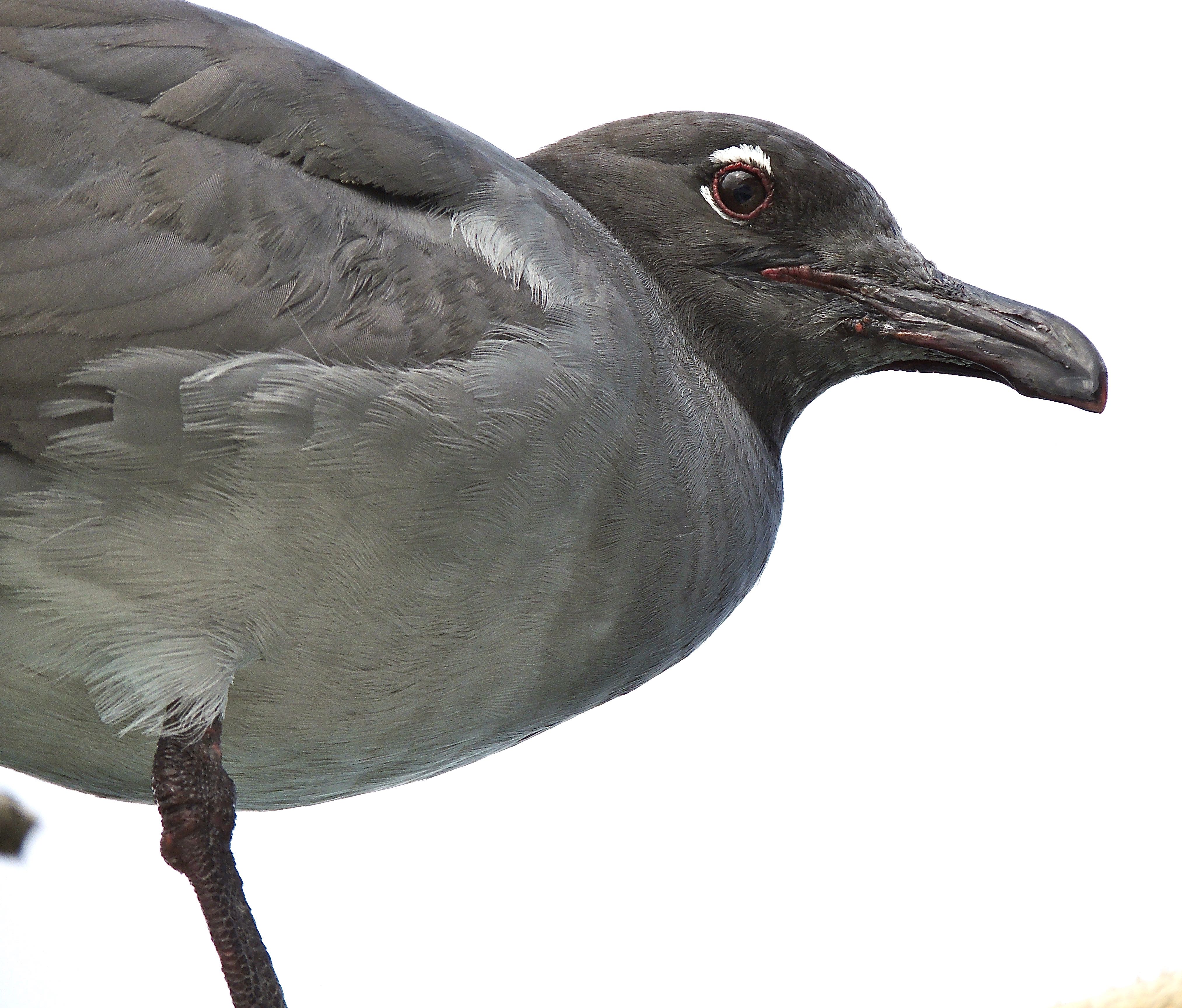 Lava Gull - Photo by William Young
Lava Gull - Photo by William YoungAfter dinner, I went back to San Cristobal. Despite being the capital, it is very small. The main drag has a lot of shops that sell things for tourists. I have not seen a single pigeon in San Cristobal, but the city is loaded with sea lions. They are everywhere — on the beaches, on the pavement, on park benches. Most of them just lie there, dead to the world. They remind me of drunks. Some sound like a drunk throwing up. They also cough and sneeze in a way that sounds surprisingly human. A couple of times, we saw a female suckling a youngster, who made slurping noises when sucking. In one place, there was a territorial fight between two males. The males are darker and have longer whiskers. Among the sea lions in one place was a Lava Heron.
August 28
This morning, we went to Gardner Bay on the island of Hispaniola. One of the new people on the boat was a man named Laurence, who is on a three-month sabbatical between bank jobs in Hong Kong and Singapore. He said he saw the huge peace duck in Hong Kong harbor from his window on the 93rd floor. This morning I asked our guide Solange what sea lions drink, because there is only saltwater here. She said they have a way of desalinating it, and the salt is released through a mechanism near their eyes.
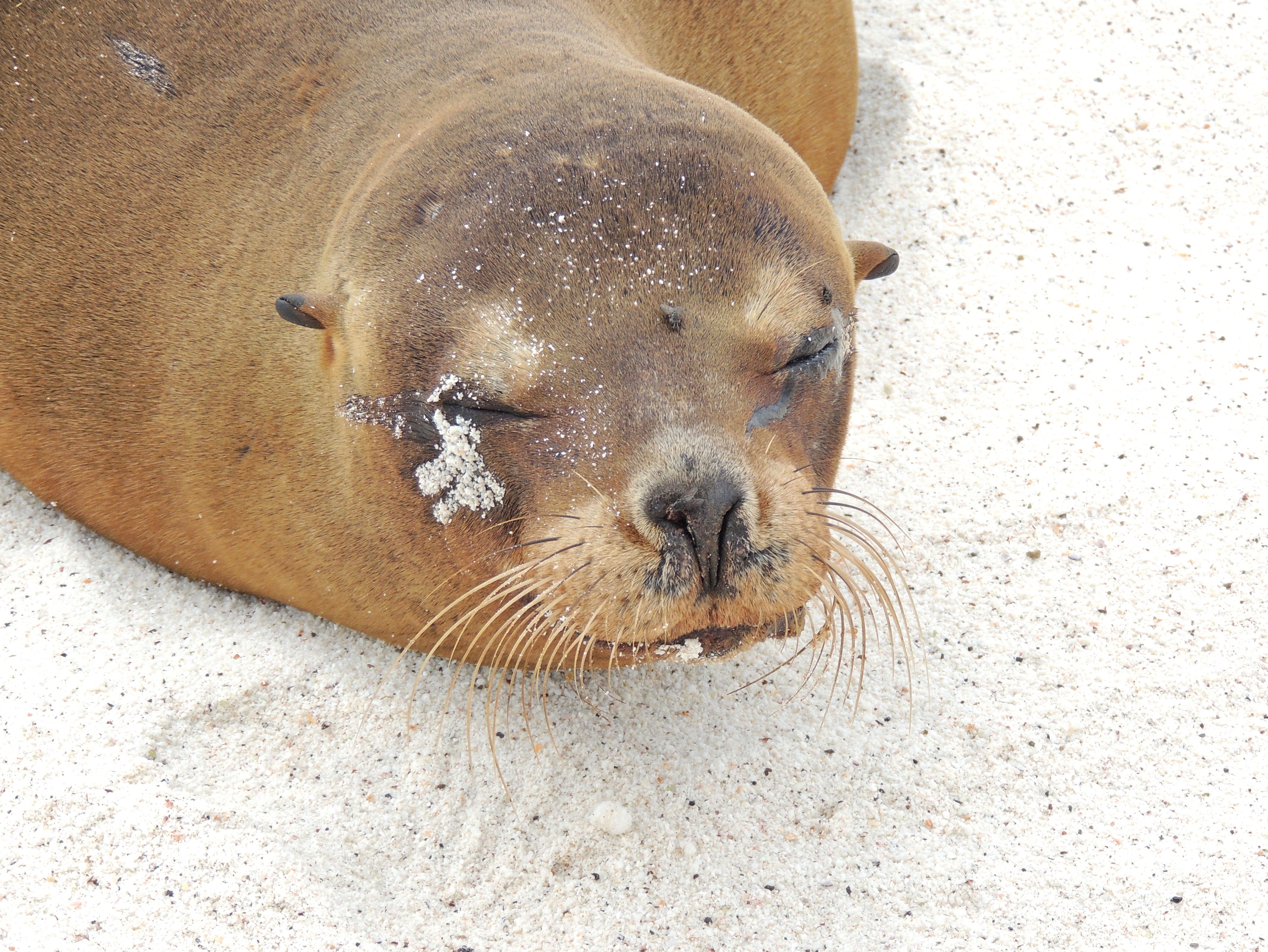 Galapagos Sea Lion Salt Glands - Photo by William Young
Galapagos Sea Lion Salt Glands - Photo by William YoungThe weather was overcast, and we had a wet landing, which means that we had to get out of the dinghy and step into water. We have on average about one of these wet landings a day. I spent a lot of time shooting videos of the sea lions on Hispaniola, also known as Hood. I got some footage of a youngster suckling. I was charged by one leisurely sea lion who looked docile until turning in my direction. There might have been young nearby that I did not notice. I saw a lot of Hood Mockingbirds, who have a much nastier edge than the Northern Mockingbird. When our dinghy arrived for a wet landing, I saw a sea lion with a wound, and a mockingbird was pecking at the raw sea lion flesh that looked like freshly ground beef. These birds are known to drink the blood and eat the flesh of living animals, because there is little water on the island. They are not afraid of people, and some hopped right up to me. Others were busily digging in the sand. I saw one shorebird on Hood, possibly a tattler, but I could not relocate it. I saw some Small Ground Finches. Yellow Warblers were hopping around the sea lions. Later, I went in the dinghy with the people from our group who wanted to snorkel. There were baby sea lions swimming with the snorkelers — just playing. When we returned to the Estrella del Mar, a frigatebird landed near my room, and I took photos from a few feet away. Frigatebirds have a nasty looking hook on the end of their bill. There are still a lot of what I believe to be Elliot's Storm Petrels around, but I have not done enough pelagic birding to make a definitive identification. I saw some storm-petrels who looked different — bigger with longer wings.
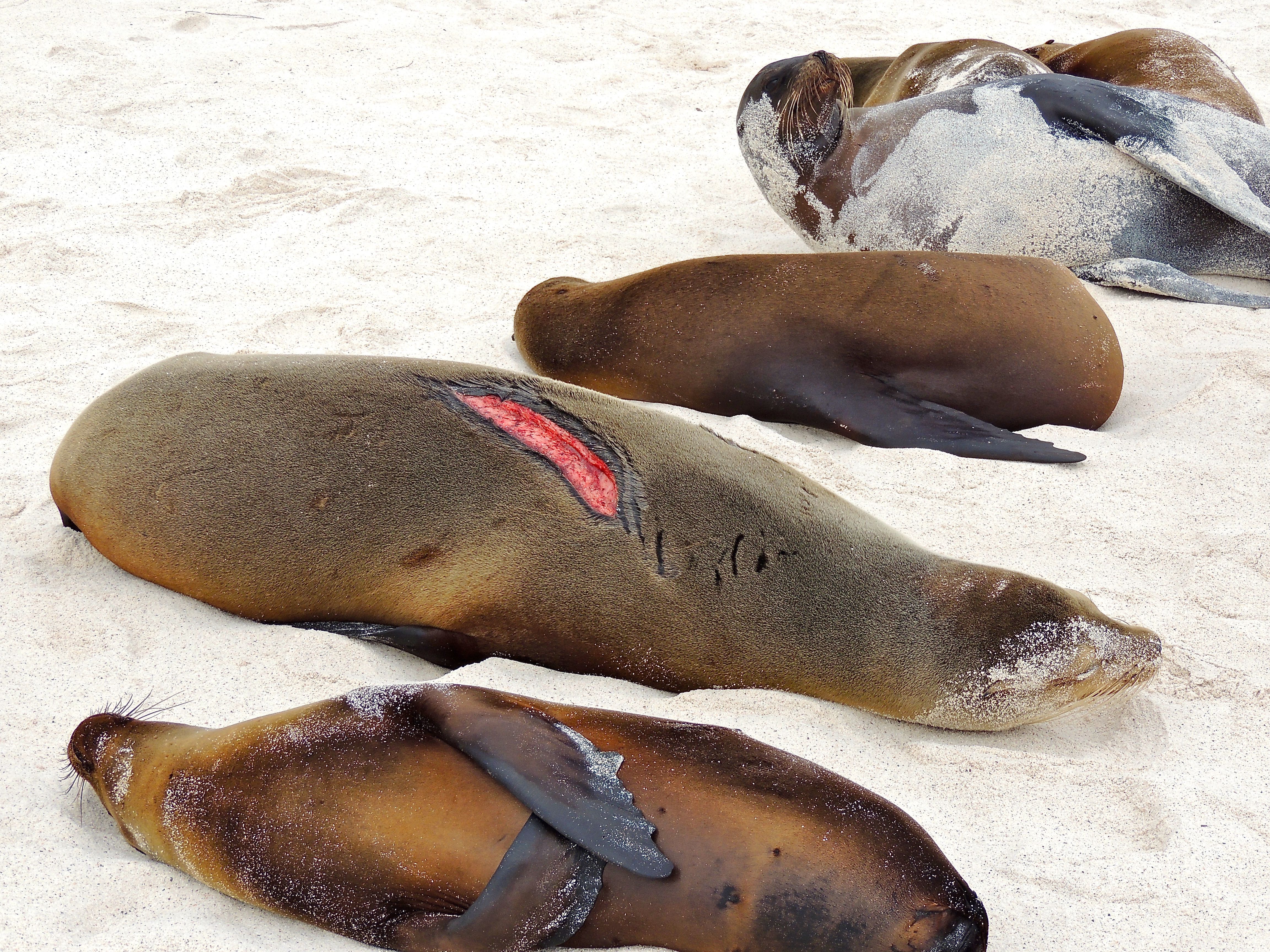 Galapagos Sea Lions - Photo by William Young
Galapagos Sea Lions - Photo by William Young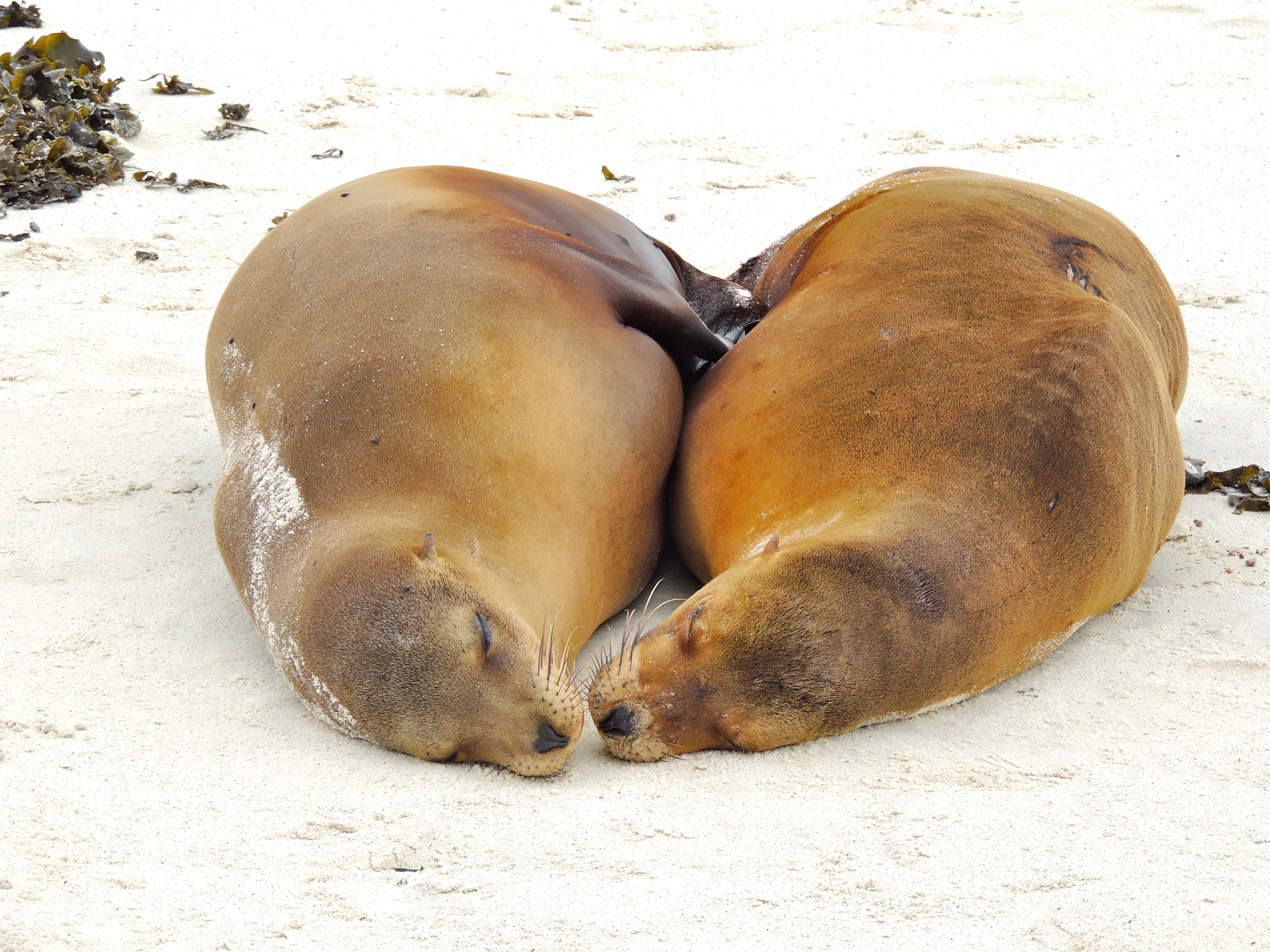 Galapagos Sea Lions - Photo by William Young
Galapagos Sea Lions - Photo by William Young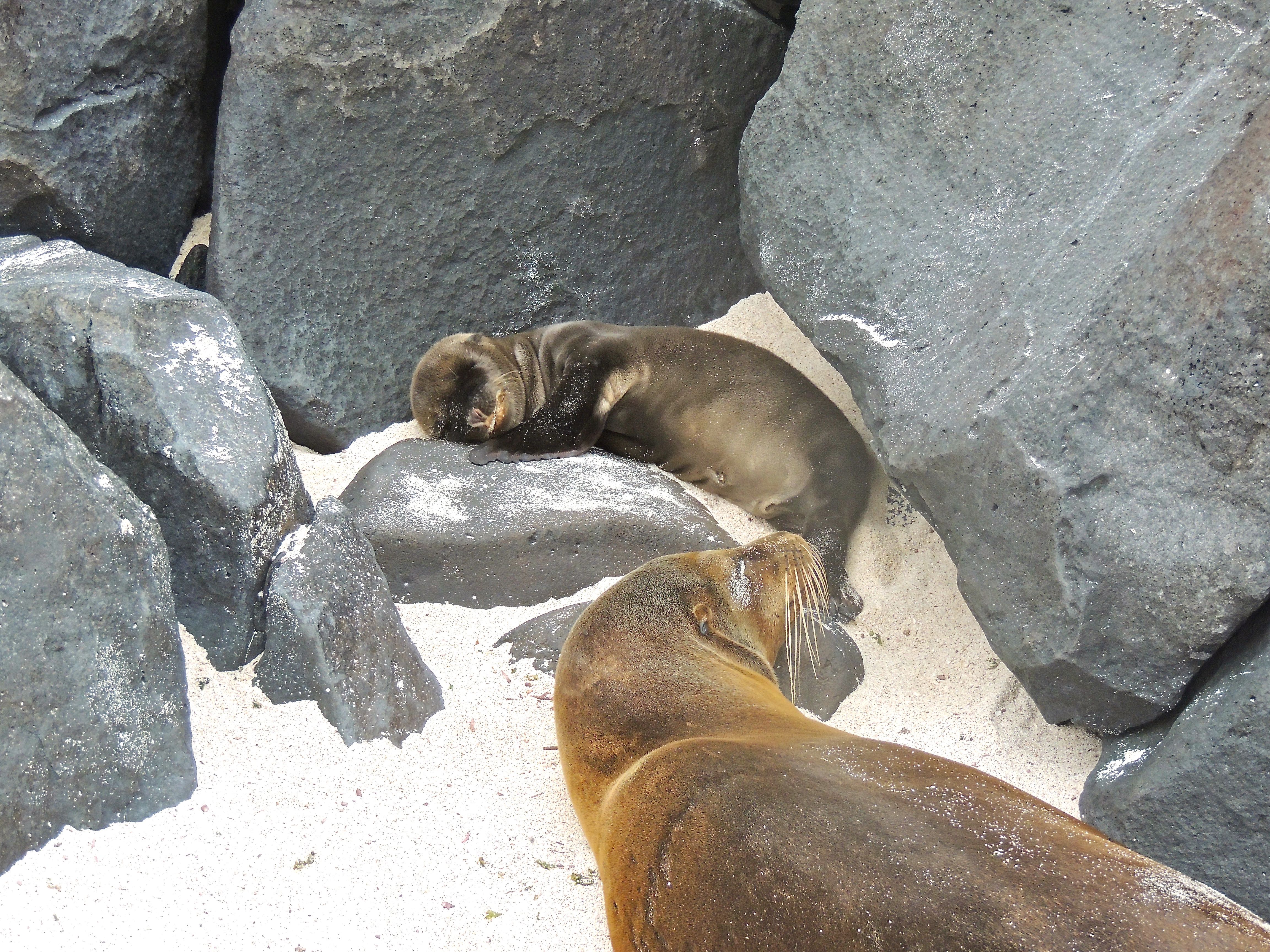 Baby Galapagos Sea Lion - Photo by William Young
Baby Galapagos Sea Lion - Photo by William Young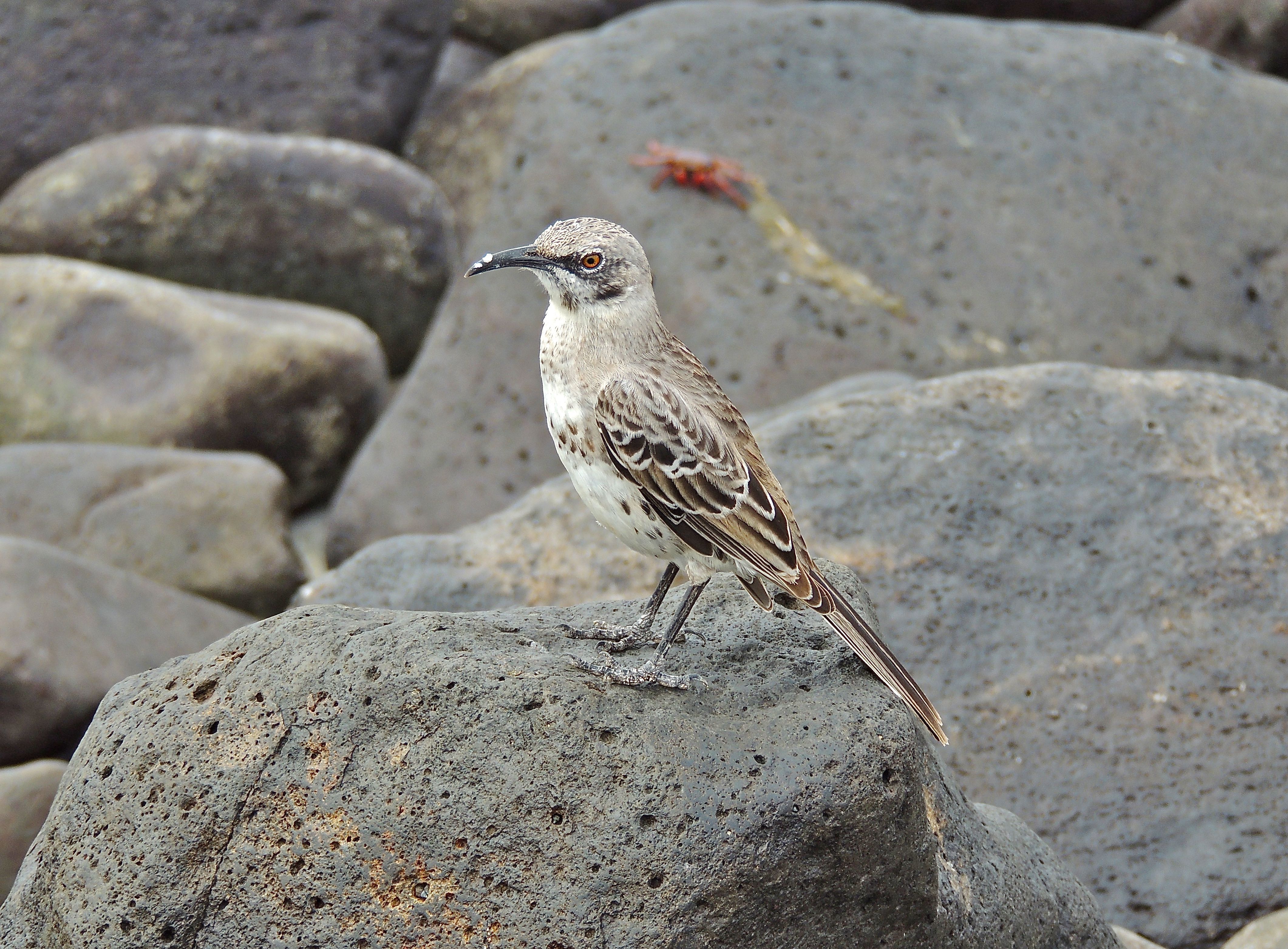 Hood Mockingbird - Photo by William Young
Hood Mockingbird - Photo by William Young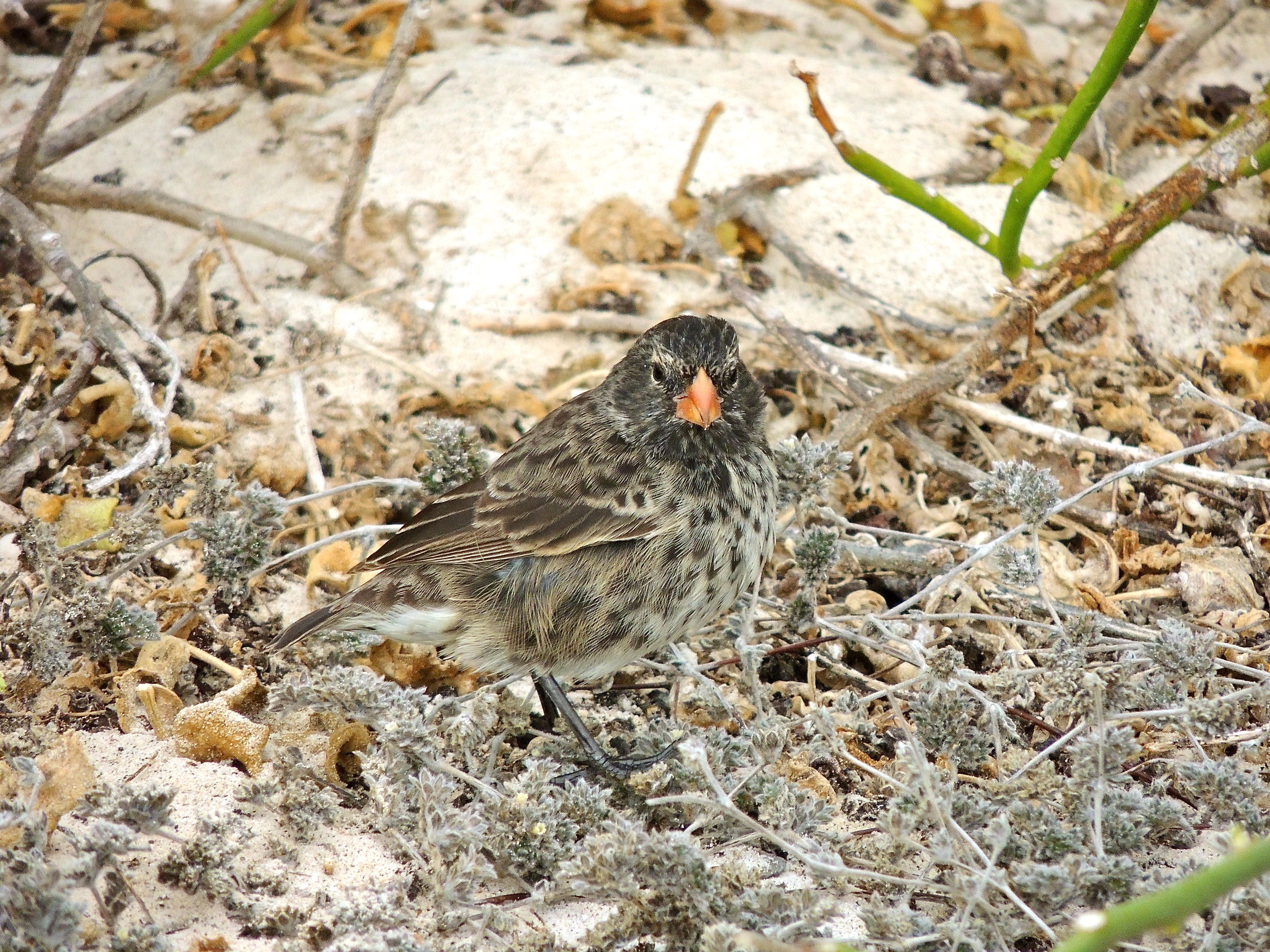 Small Ground Finch - Photo by William Young
Small Ground Finch - Photo by William Young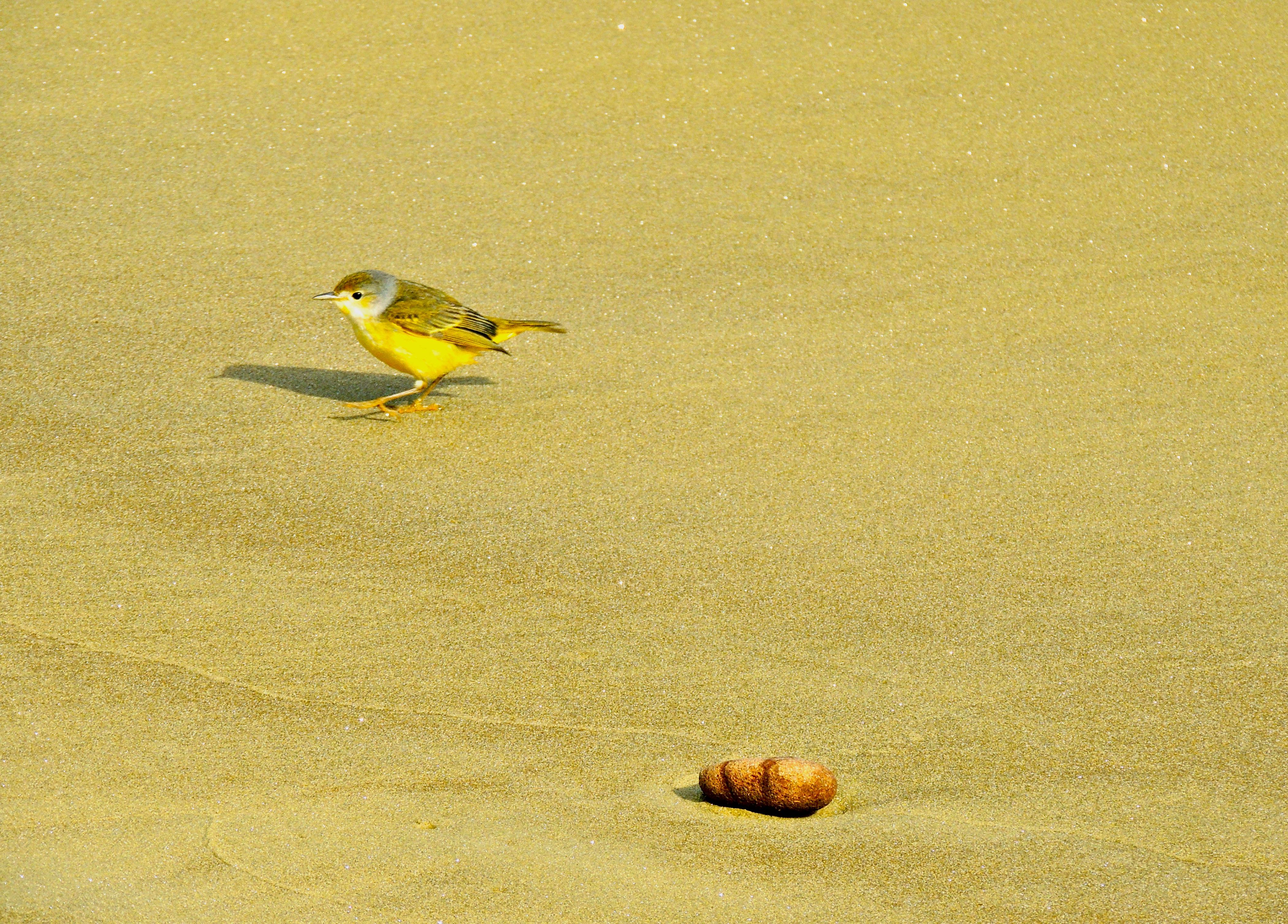 Yellow Warbler - Photo by William Young
Yellow Warbler - Photo by William Young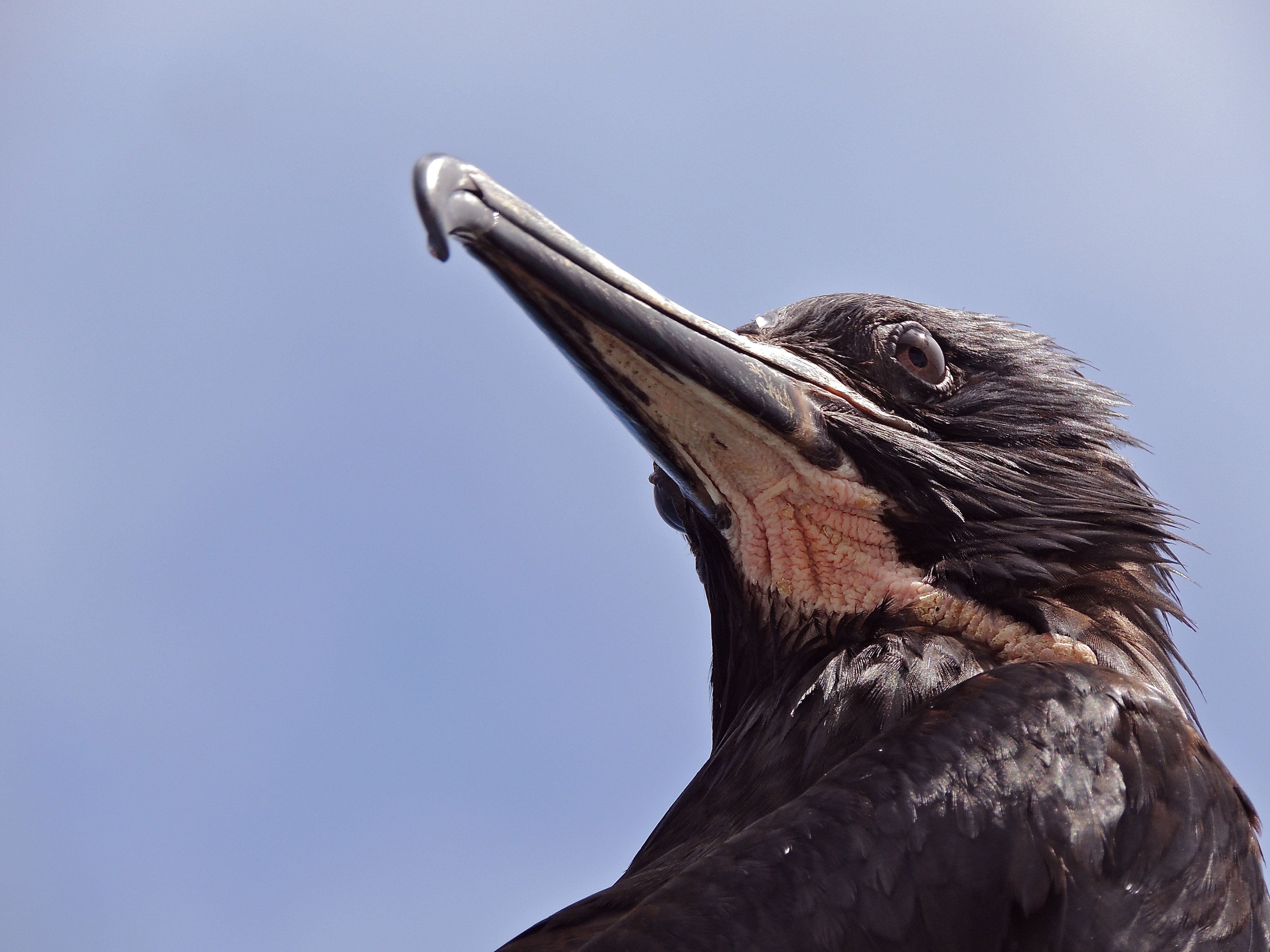 Magnificent Frigatebird Male - Photo by William Young
Magnificent Frigatebird Male - Photo by William Young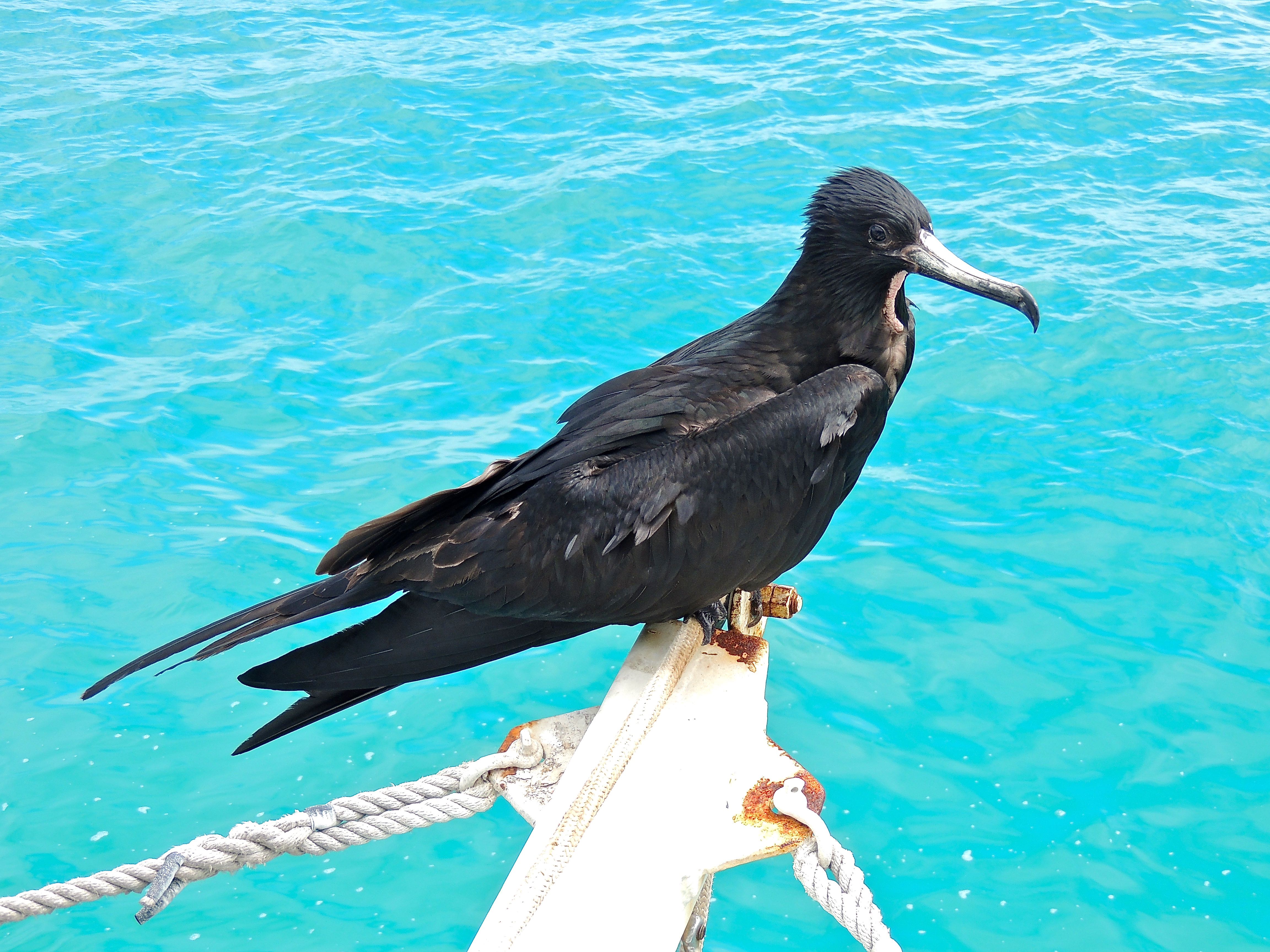 Magnificent Frigatebird Male - Photo by William Young
Magnificent Frigatebird Male - Photo by William YoungHispaniola has only two access points, and we visited the other one this afternoon at Suarez Point. Marine Iguanas were everywhere. They sneeze when they are eliminating salt from their nose. They are called Christmas Iguanas because they can be shades of green and red. Many of them are black so that they can better absorb heat. We saw a pair of Lava Lizards — the females have a red throat. This species is endemic to Hispaniola. Any species with Lava or Galapagos in the common name is endemic to these islands. There were lots of Hood Mockingbirds around. I got video of one cleaning an iguana. The four species of mockingbirds in the Galapagos do not mimic the songs of other bird species — they have their own song. Some Large Cactus Finches were hopping around. There were also couple of Warbler Finches — they look more like warblers than finches. There were also a lot of Yellow Warblers. I saw many Galapagos Doves, who are attractive with their blue eyering. We saw Swallow-tailed Gulls, who mate for life and are not a scavengers.
 Marine Iguanas - Photo by William Young
Marine Iguanas - Photo by William Young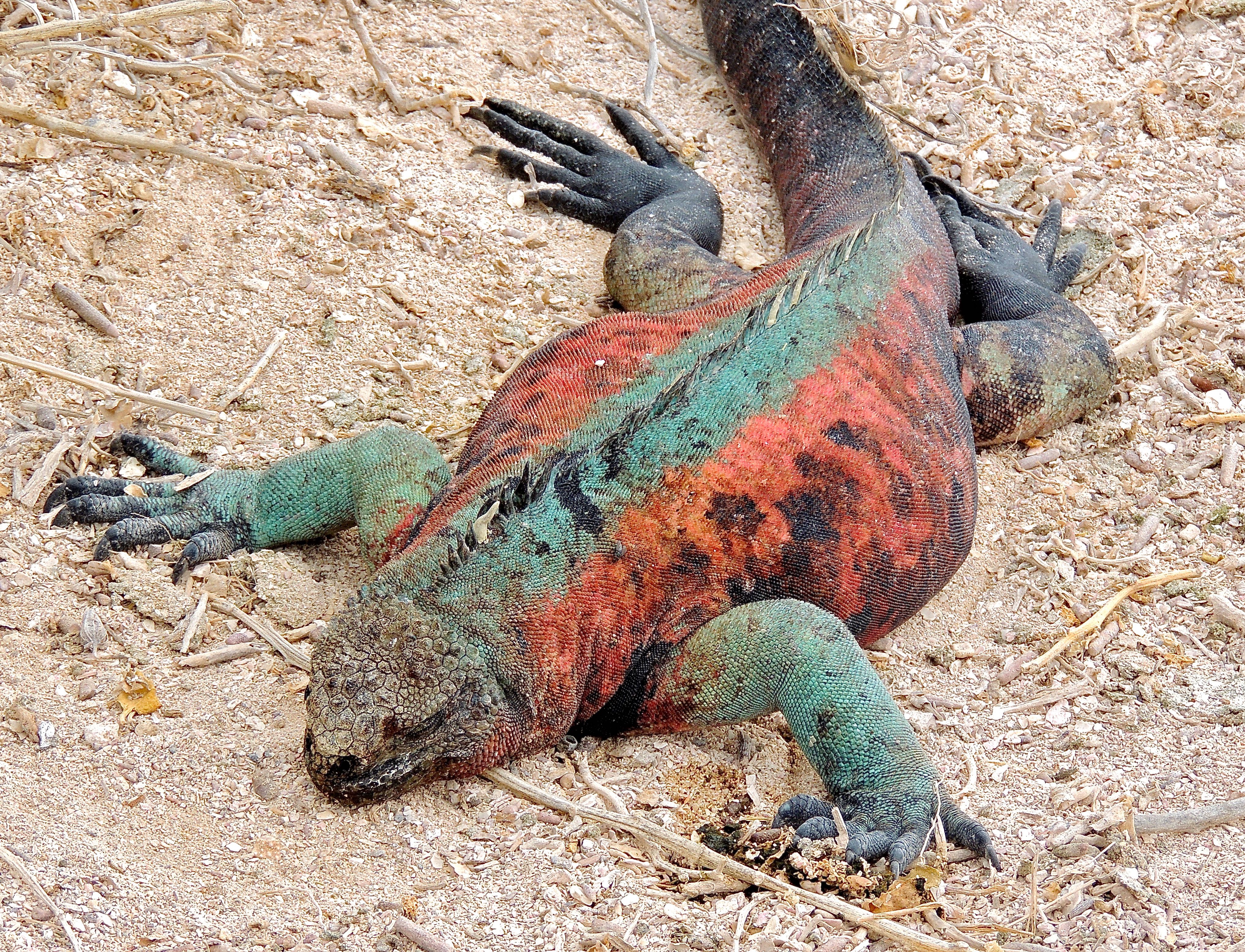 Marine Iguana - Photo by William Young
Marine Iguana - Photo by William Young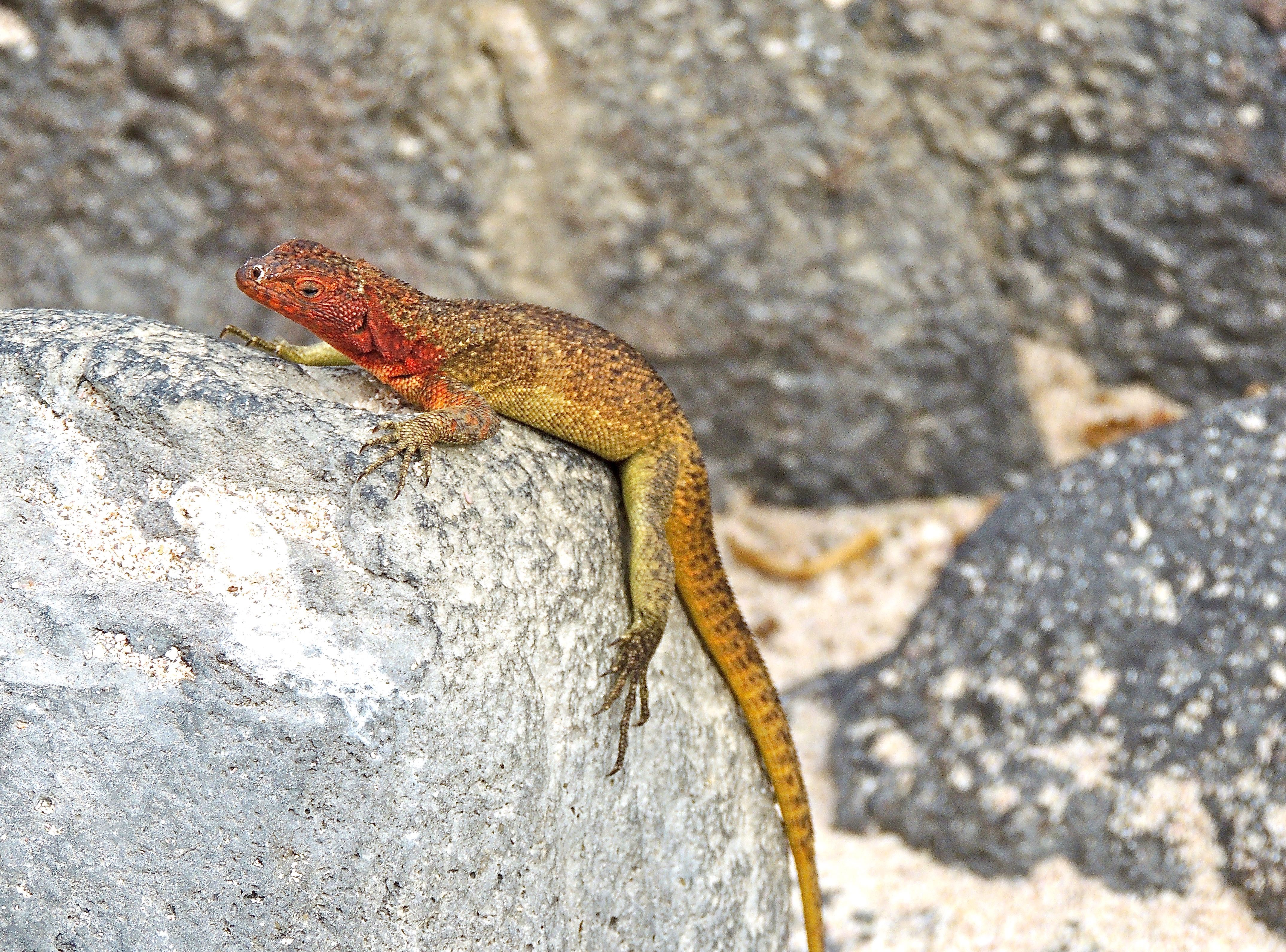 Lava Lizard Female - Photo by William Young
Lava Lizard Female - Photo by William Young Lava Lizard Male - Photo by William Young
Lava Lizard Male - Photo by William Young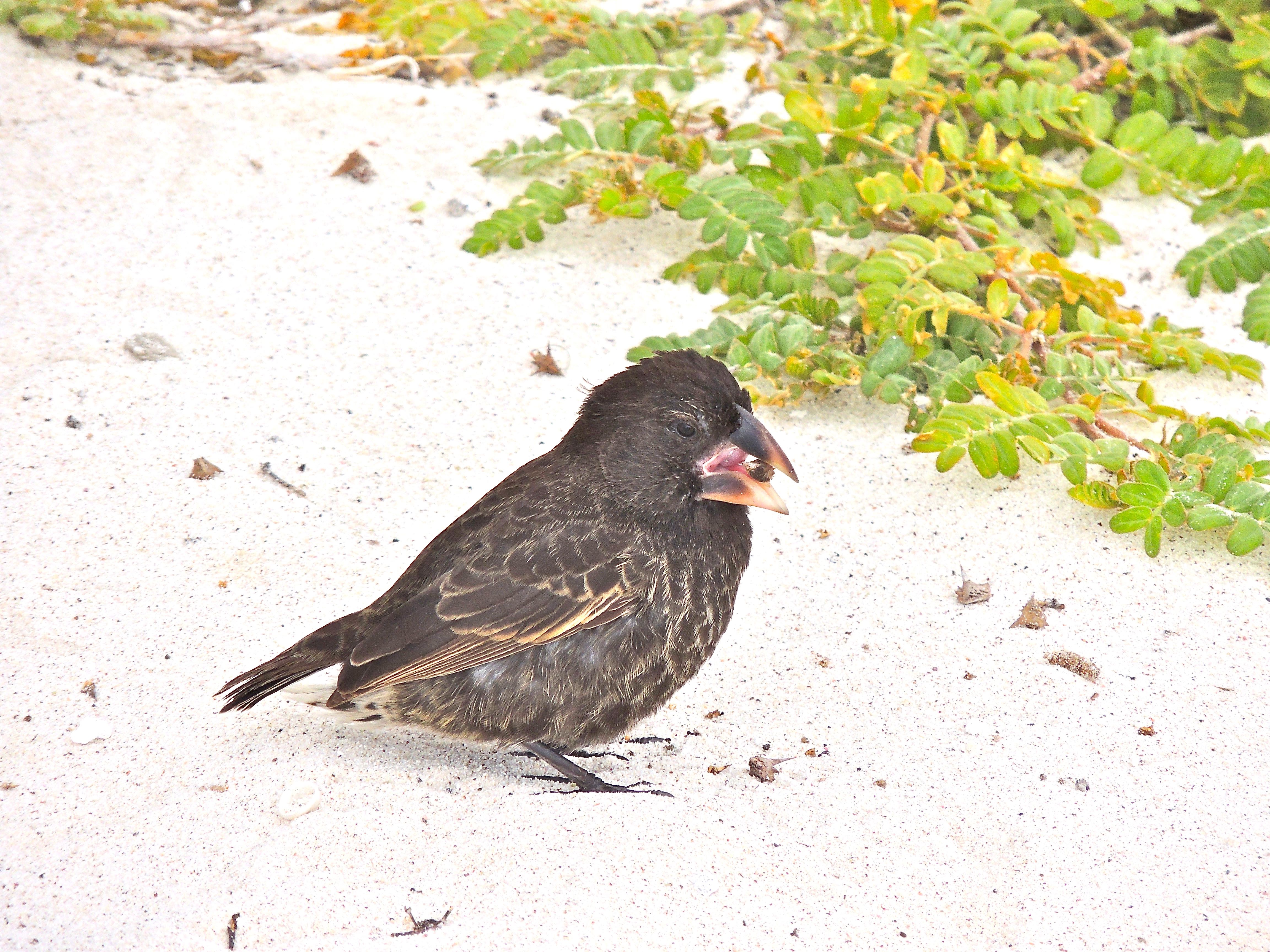 Large Cactus Finch - Photo by William Young
Large Cactus Finch - Photo by William Young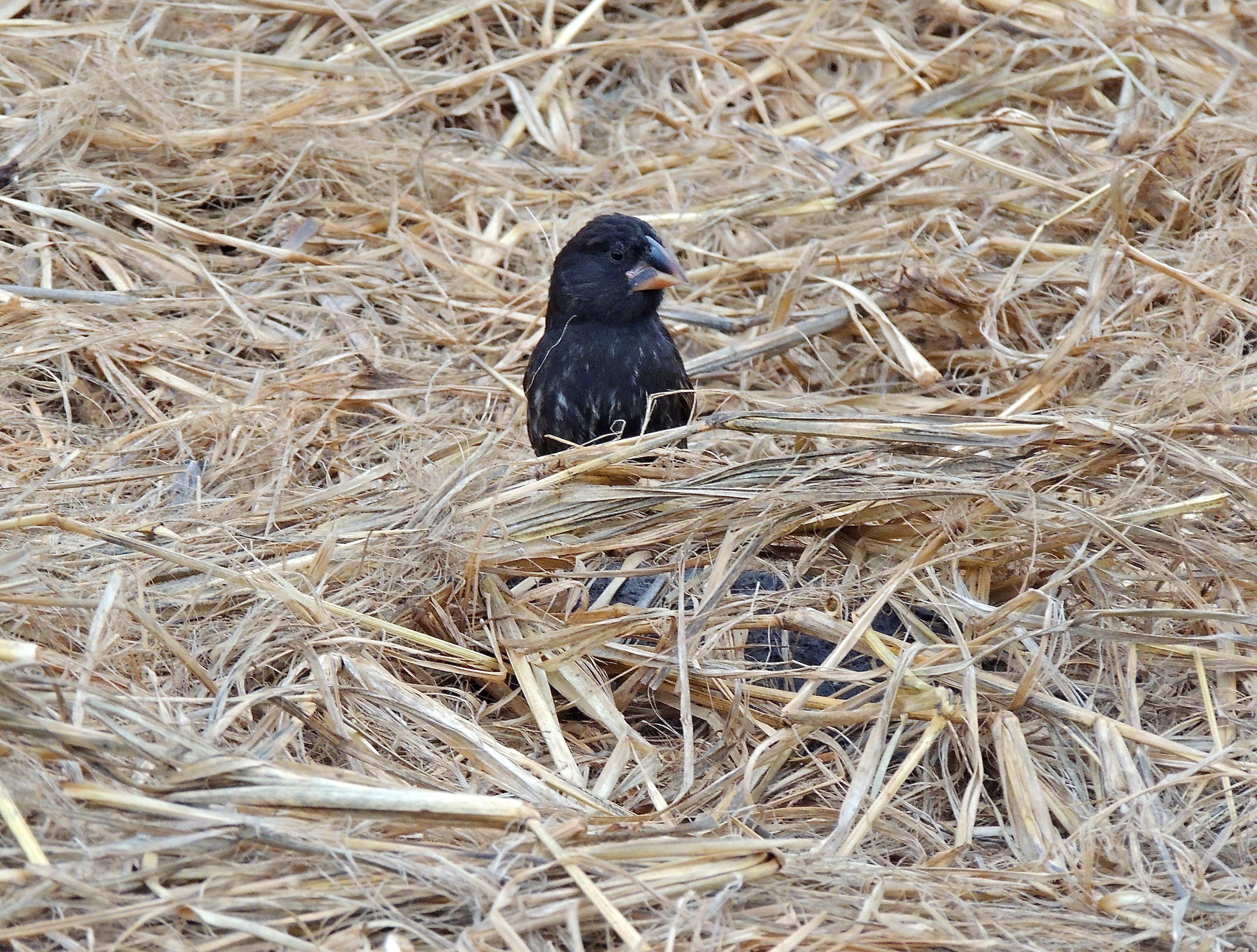 Large Cactus Finch - Photo by William Young
Large Cactus Finch - Photo by William Young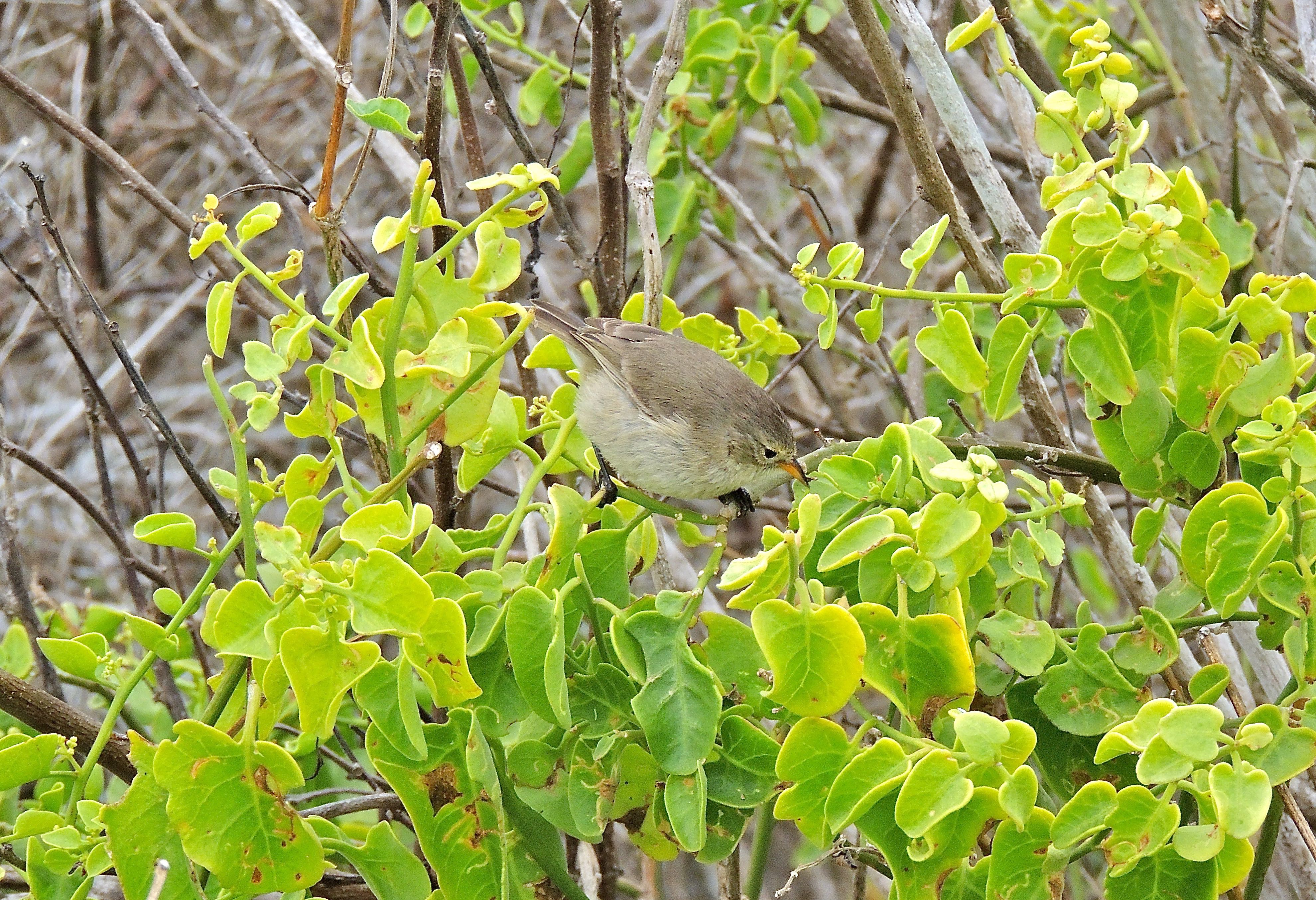 Warbler Finch - Photo by William Young
Warbler Finch - Photo by William Young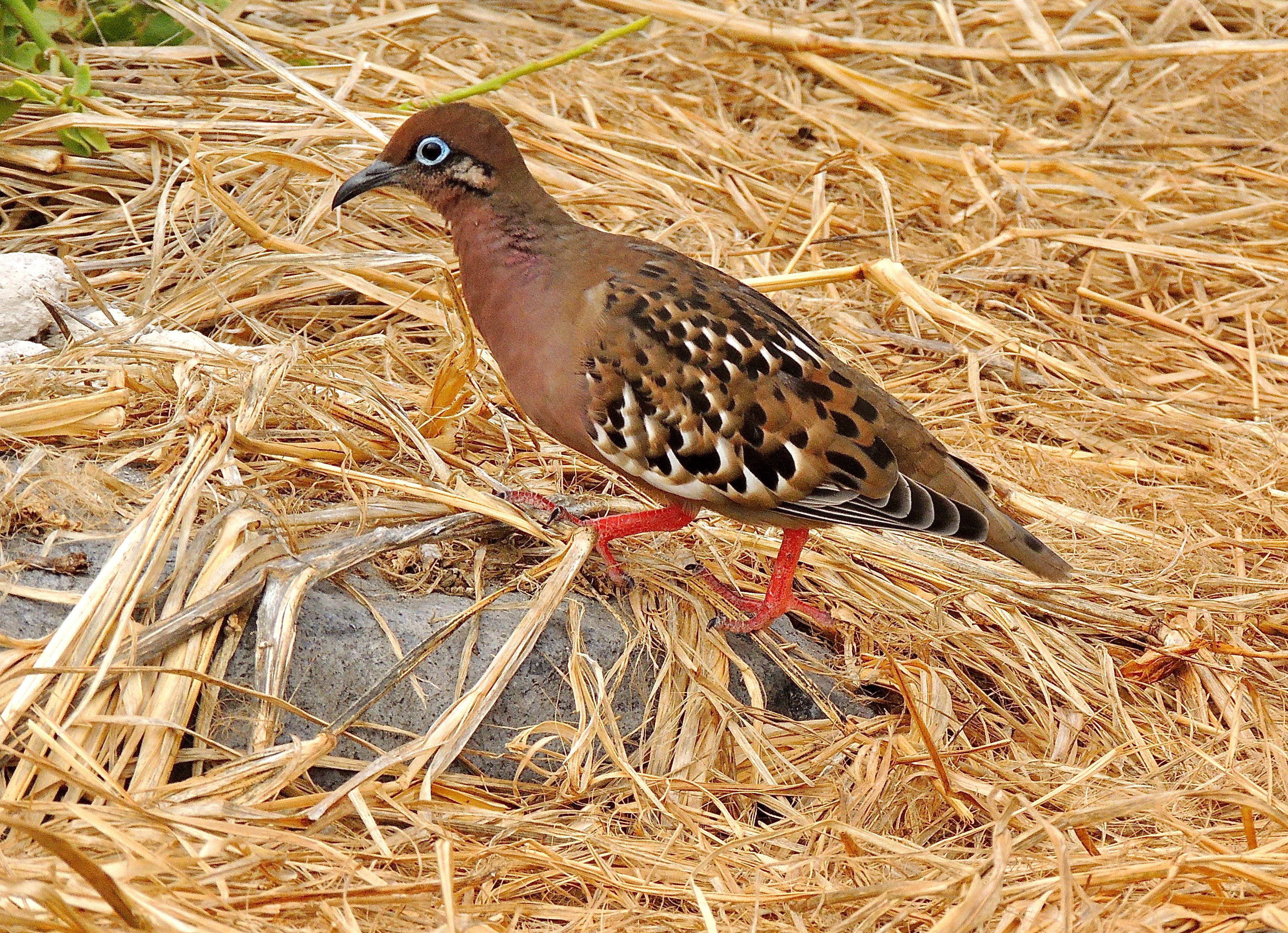 Galapagos Dove - Photo by William Young
Galapagos Dove - Photo by William Young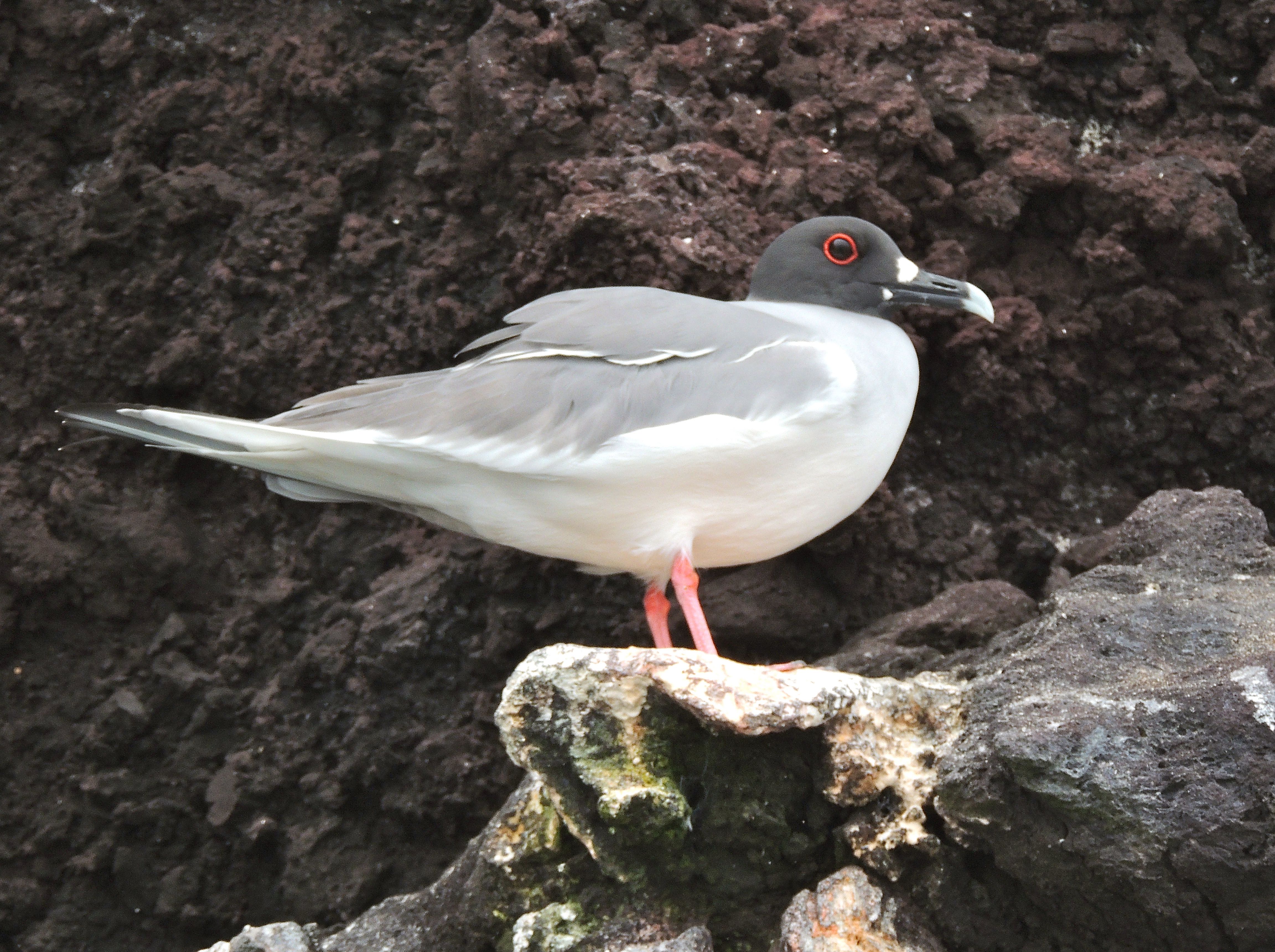 Swallow-tailed Gull - Photo by William Young
Swallow-tailed Gull - Photo by William YoungThe Nazca Booby is the largest of the three boobies on the Galapagos. It lays two eggs, but one is for insurance only in case something happens to the other one. The bird is named for the tectonic plate that the Galapagos is on. Boobies find new partners every year. We saw a pair of Sharp-beaked Ground Finches. The Galapagos finches can be difficult to identify. A lot of Red-billed Tropicbirds flew around. I saw my first Galapagos Hawk, perched on a rock near the edge of the water. Solange made a funny unintentional pun. An iguana was on top of another in a small space — one male and one female. Iguanas often huddle together for warmth. I asked if this pair was mating, and Solange said no, they were only warming up.
 Marine Iguanas - Photo by William Young
Marine Iguanas - Photo by William YoungThe highlight of the afternoon was seeing the sexual displays of Waved Albatrosses. There were a lot of them in one of the areas. Sometimes, the displays featured two birds, but other times, three or four participated. The displays involved head bobbing, bill shaking, bill hitting, and pointing the bill straight up into the air while vocalizing. We also saw the sexual displays of Blue-footed Boobies, who point their tails up and show off their big blue feet. On the way back to the dinghy, I saw a Lava Heron standing on a rock by the water.
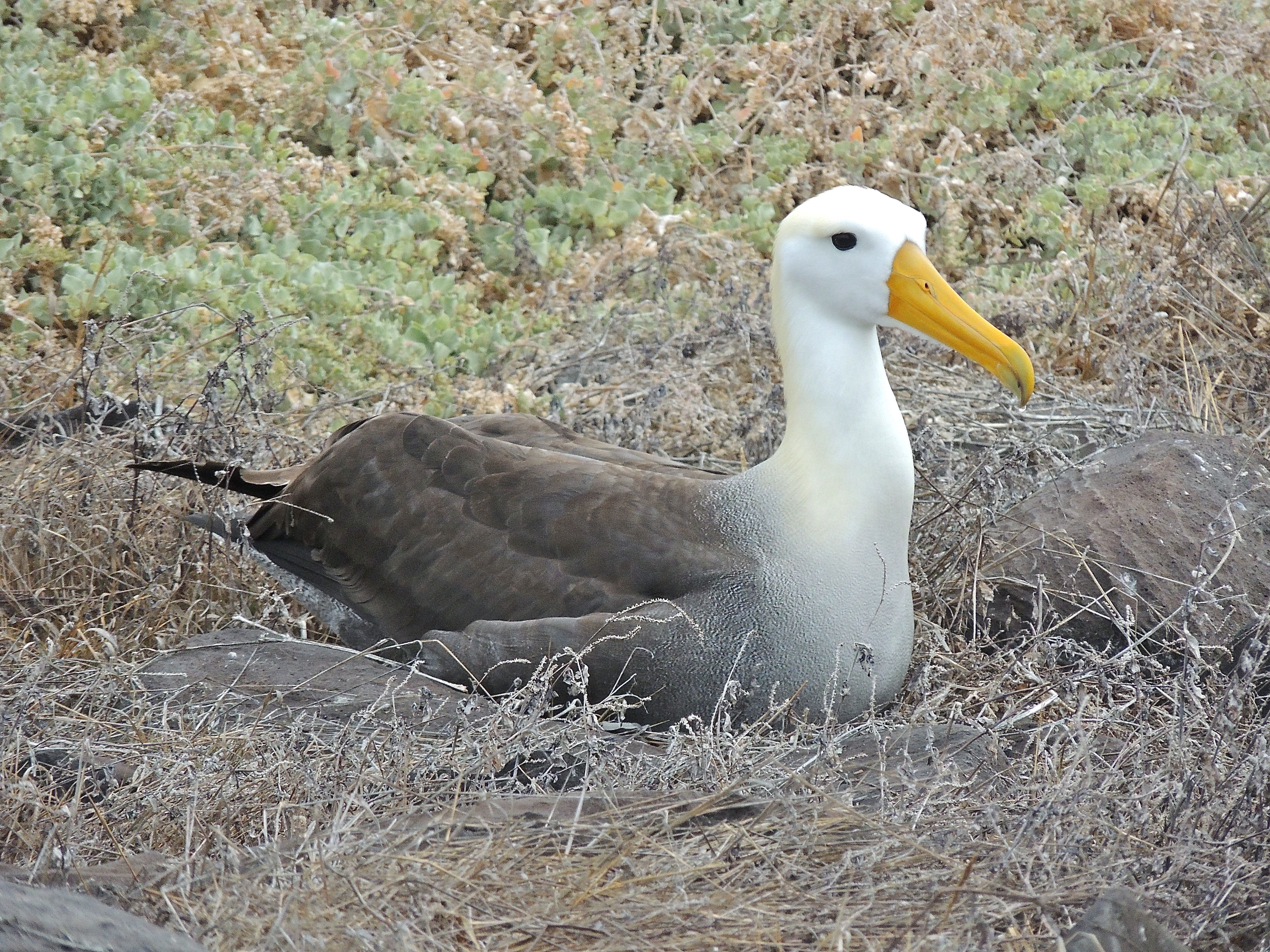 Waved Albatross - Photo by William Young
Waved Albatross - Photo by William Young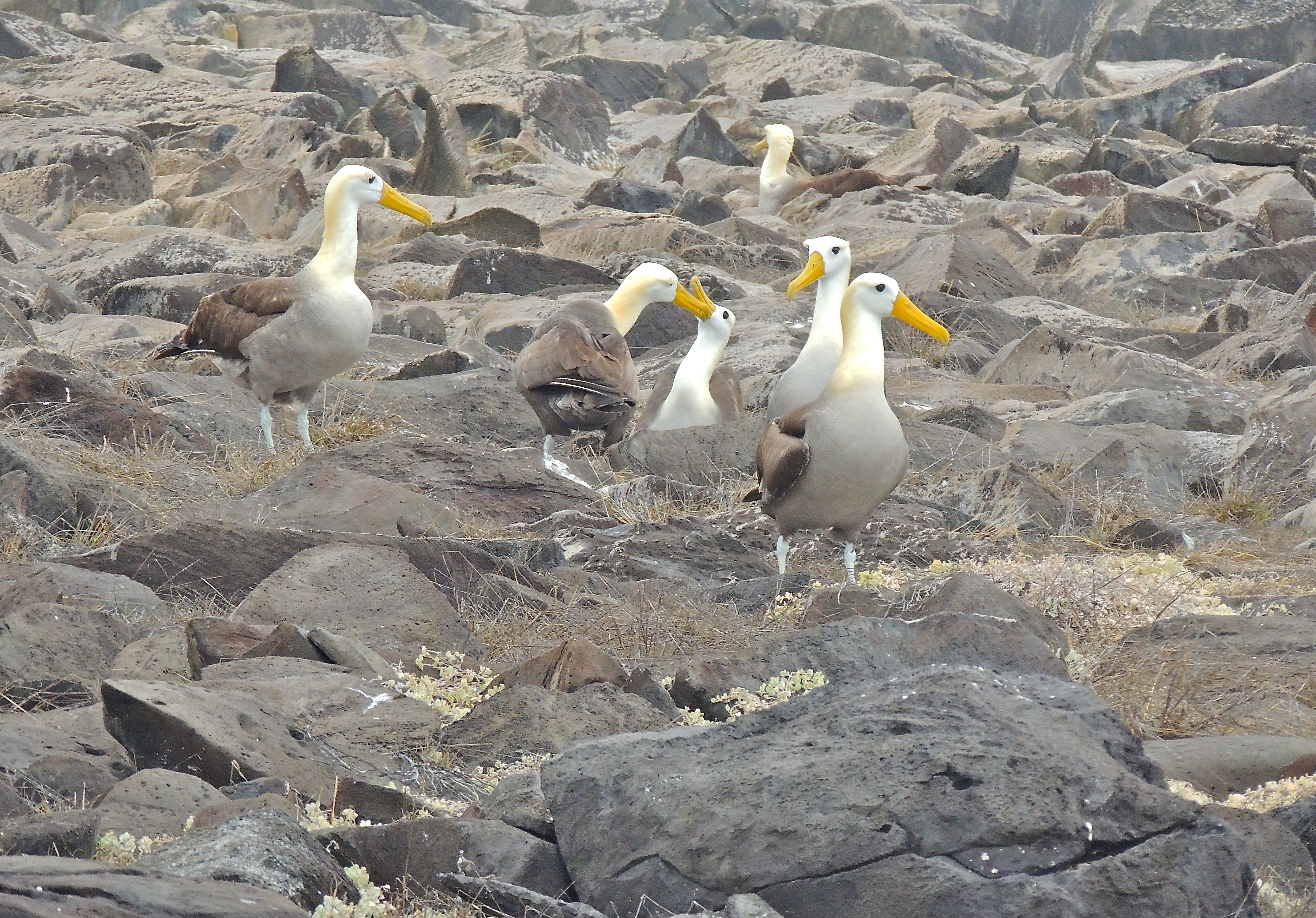 Waved Albatrosses Displaying - Photo by William Young
Waved Albatrosses Displaying - Photo by William Young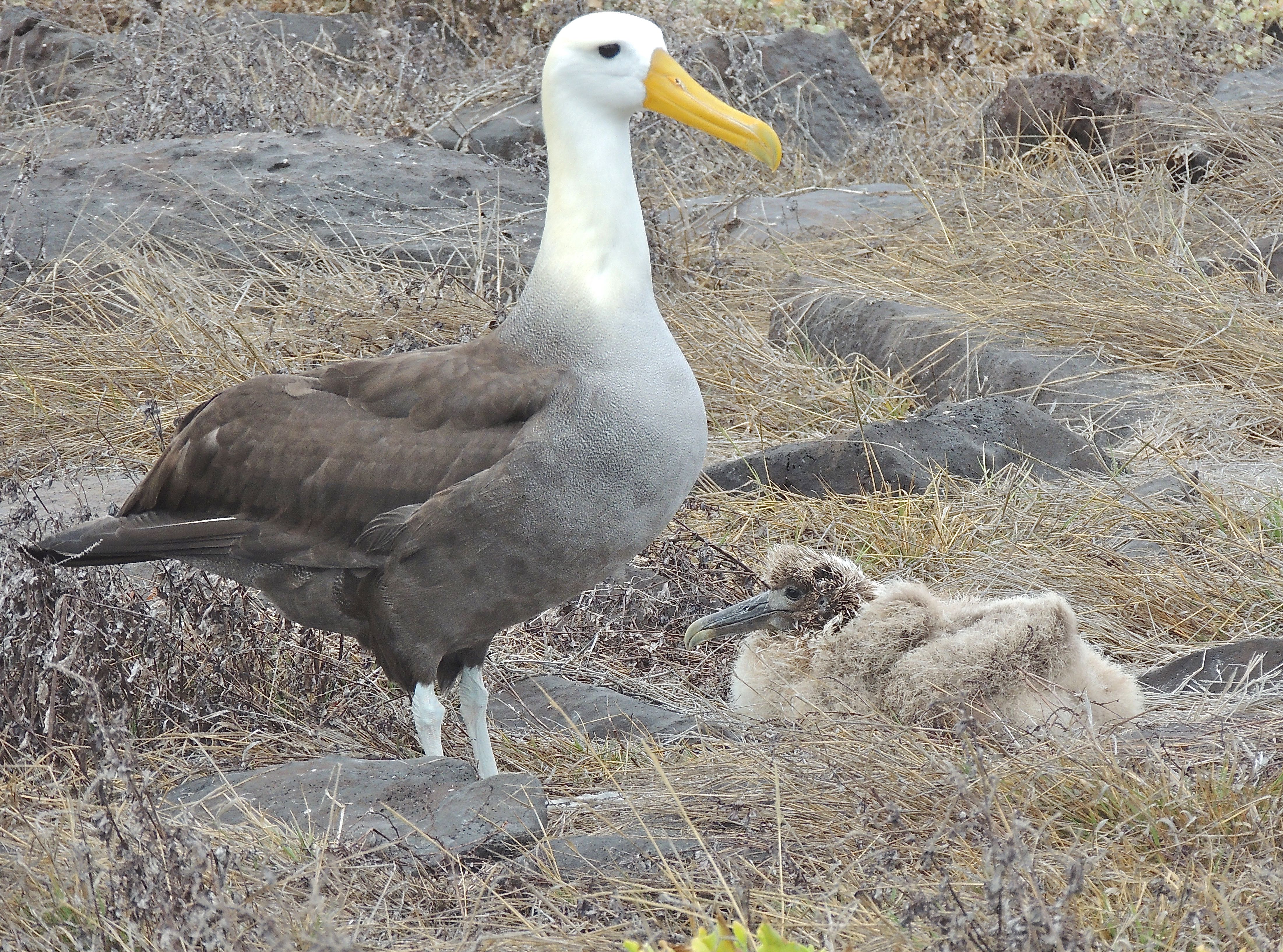 Waved Albatross and Chick - Photo by William Young
Waved Albatross and Chick - Photo by William YoungI started to get a cold last night, and I have one now. My nose is running a lot. If one person on the boat has a cold, the chances are that it will spread, because one must hold on to railings when walking down narrow steps or simply standing on the deck. But I cannot afford to stop now for a cold.
August 29
Before 7, I saw some storm-petrels flying near the boat. I went back to my room to get my camera, and when I walked out my door, I saw an Elliot's Storm-Petrel on the deck right outside my room and in some distress. I picked it up and held it in my hand. It did not let me use the banders grip, but it had no problems with resting on my hand. As I held the bird, I could feel its heart pumping quickly. It had little claws on the toes of its webbed feet. I also got a good look at the tube on its nose for filtering salt. The bird stayed for more than a half an hour, and when breakfast was served, I put it onto a bench, where it seemed to rest contentedly. I checked on it while I was eating, and the second time I checked, it was gone.
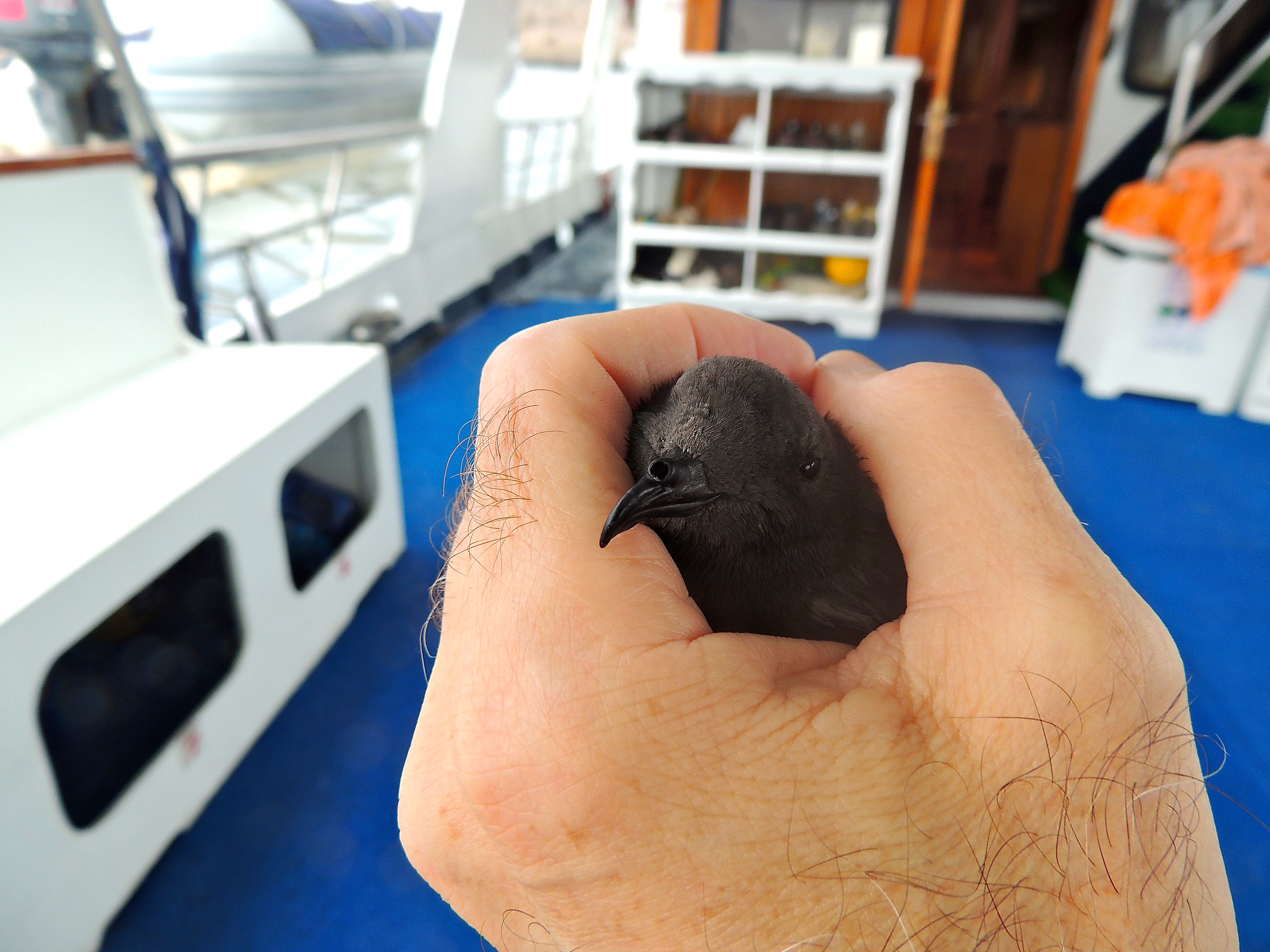 Elliot's Storm-Petrel - Photo by William Young
Elliot's Storm-Petrel - Photo by William YoungThis morning, we went to Cormorant Point. It has quite a few birds, but no cormorants. Solange explained that there are two types of sand. Inorganic sand is made from minerals. Organic sand contains the remains of marine animals and often contains a lot of calcium carbonate. The organic sand beaches are white. She also passed around a piece of pumice that was so light that it felt like one of those fake rocks used as a movie prop. We saw Galapagos Cotton, which has seeds that look like cotton. We stopped at a mangrove lagoon and saw 8 Greater Flamingos feeding on the other side of the lake — my first flamingos ever. We had a close look at a Lava Heron near the edge of the water. We arrived at a stretch of beach and saw stingrays swimming close to the water line. We also saw a swimming sea turtle, occasionally sticking its head up. The area has a lot of large indentations in the soil that contain turtle nests. We watched Blue-footed Boobies plunge diving. Solange said that some boobies can plunge at speeds of 120 kph. Four Sanderlings fed along the tide line. I later saw large flocks of shorebirds flying low over the water, probably more Sanderlings.
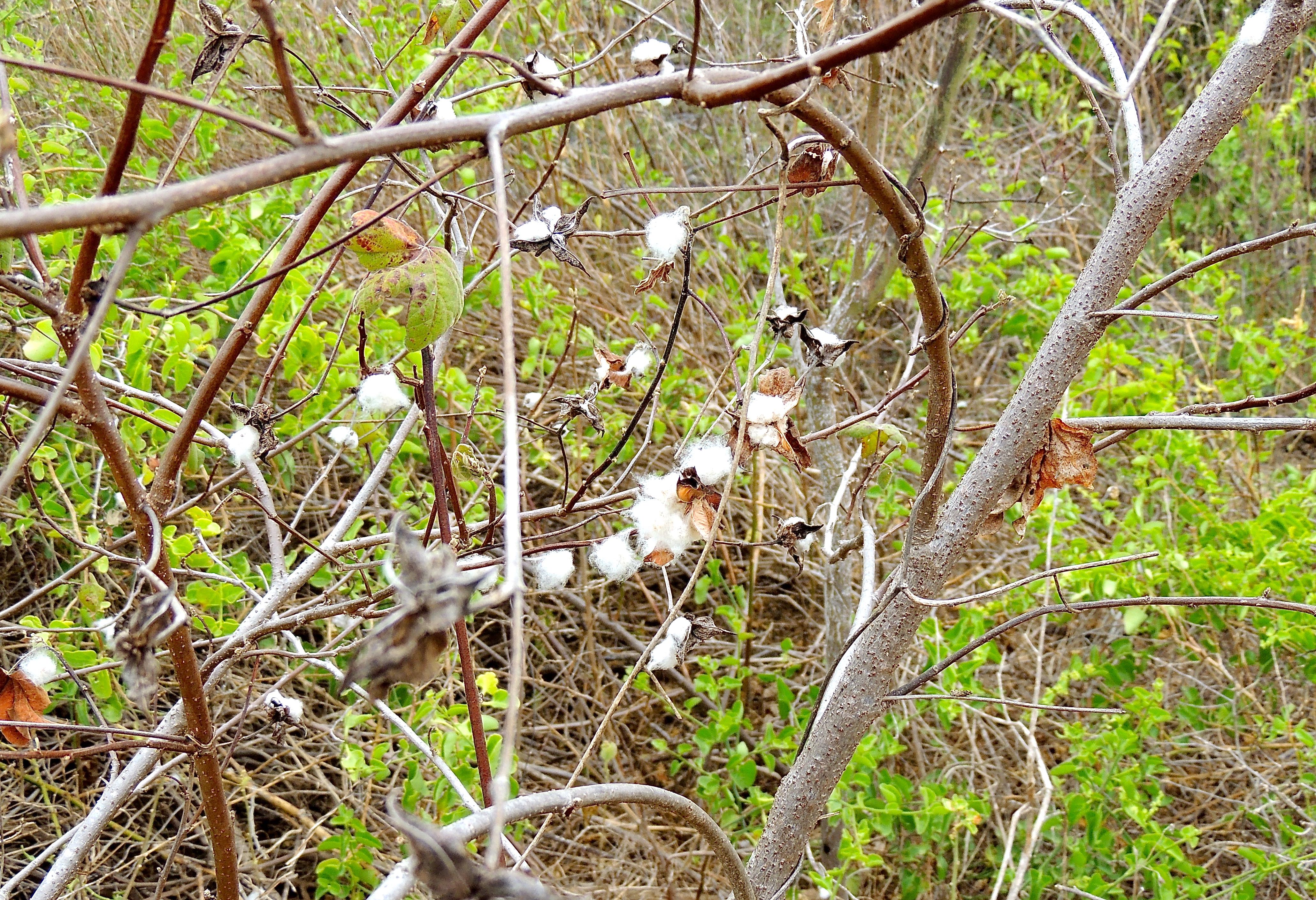 Galapagos Cotton - Photo by William Young
Galapagos Cotton - Photo by William Young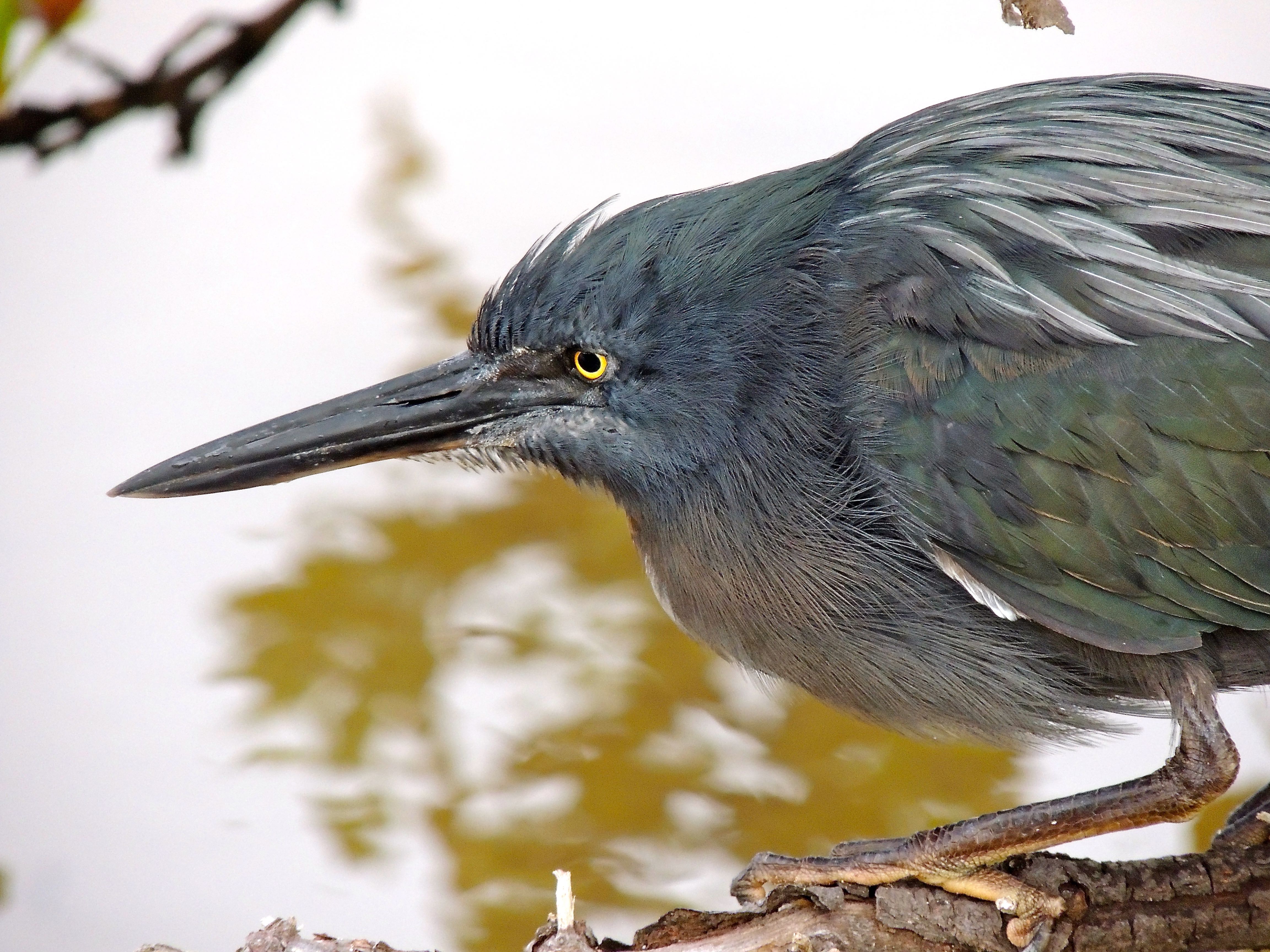 Lava Heron - Photo by William Young
Lava Heron - Photo by William Young Stingray - Photo by William Young
Stingray - Photo by William Young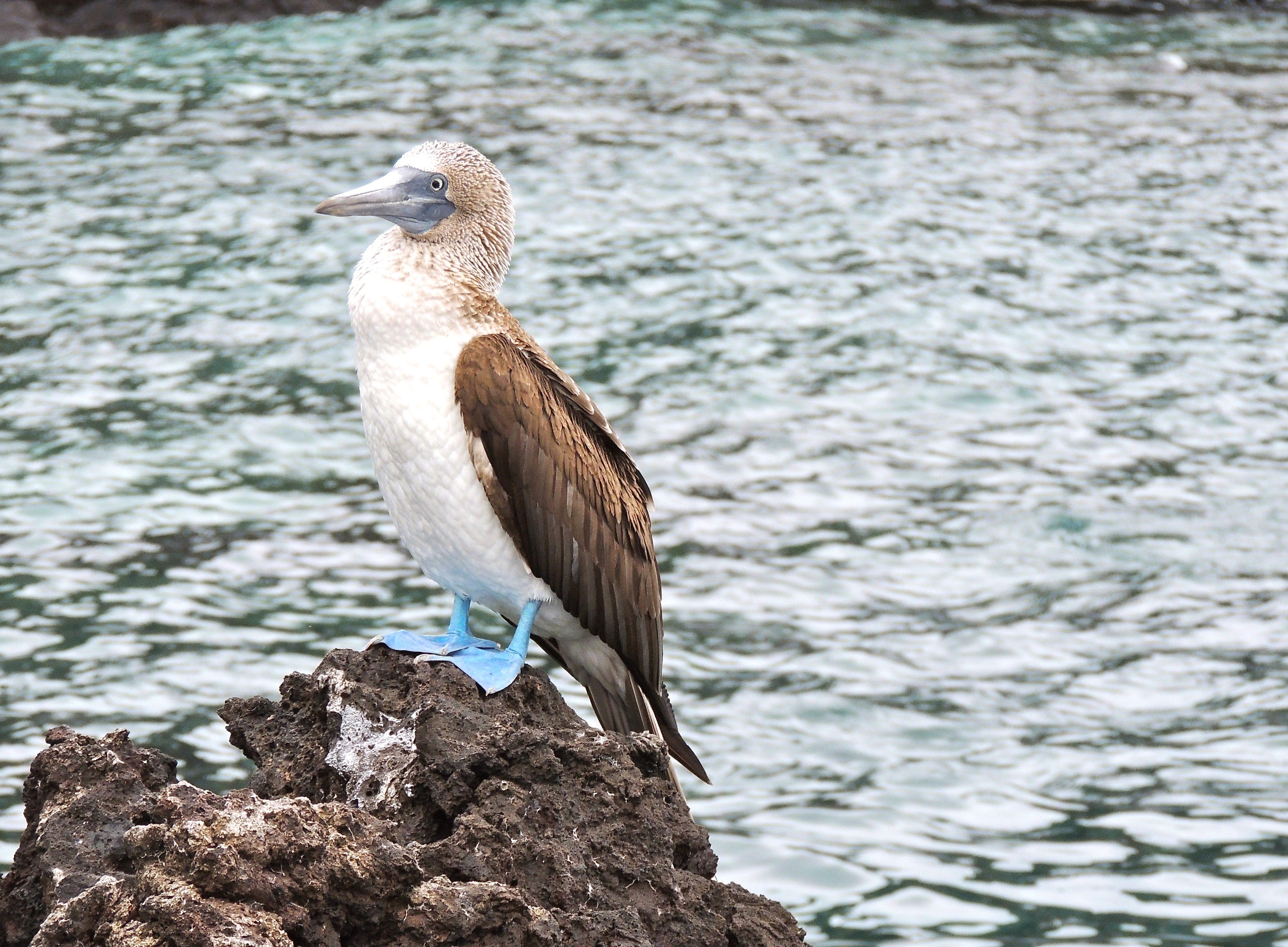 Blue-footed Booby - Photo by William Young
Blue-footed Booby - Photo by William Young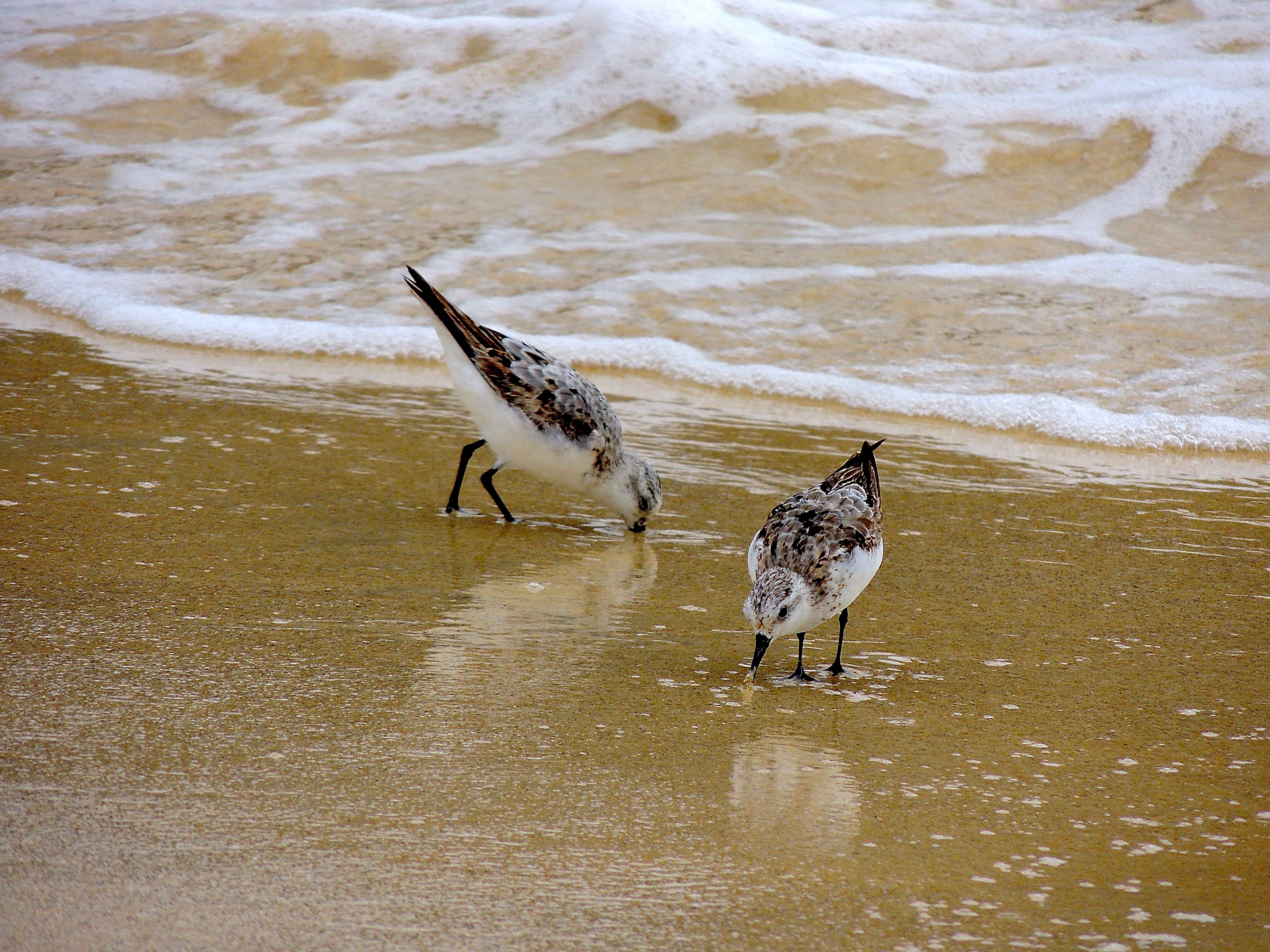 Sanderlings - Photo by William Young
Sanderlings - Photo by William YoungAfter returning to the boat, I went out with the snorkelers to a place called Devil's Crown. There were a lot of Audubon's Shearwaters flying around. There were also Brown Noddies, Swallow-tailed Gulls, Nazca and Blue-footed Boobies, and Brown Pelicans. At one point, I saw a frigatebird attack a Red-billed Tropicbird and grab it at the base of the tail. The tropicbird screamed and managed to get free, settling on the water.
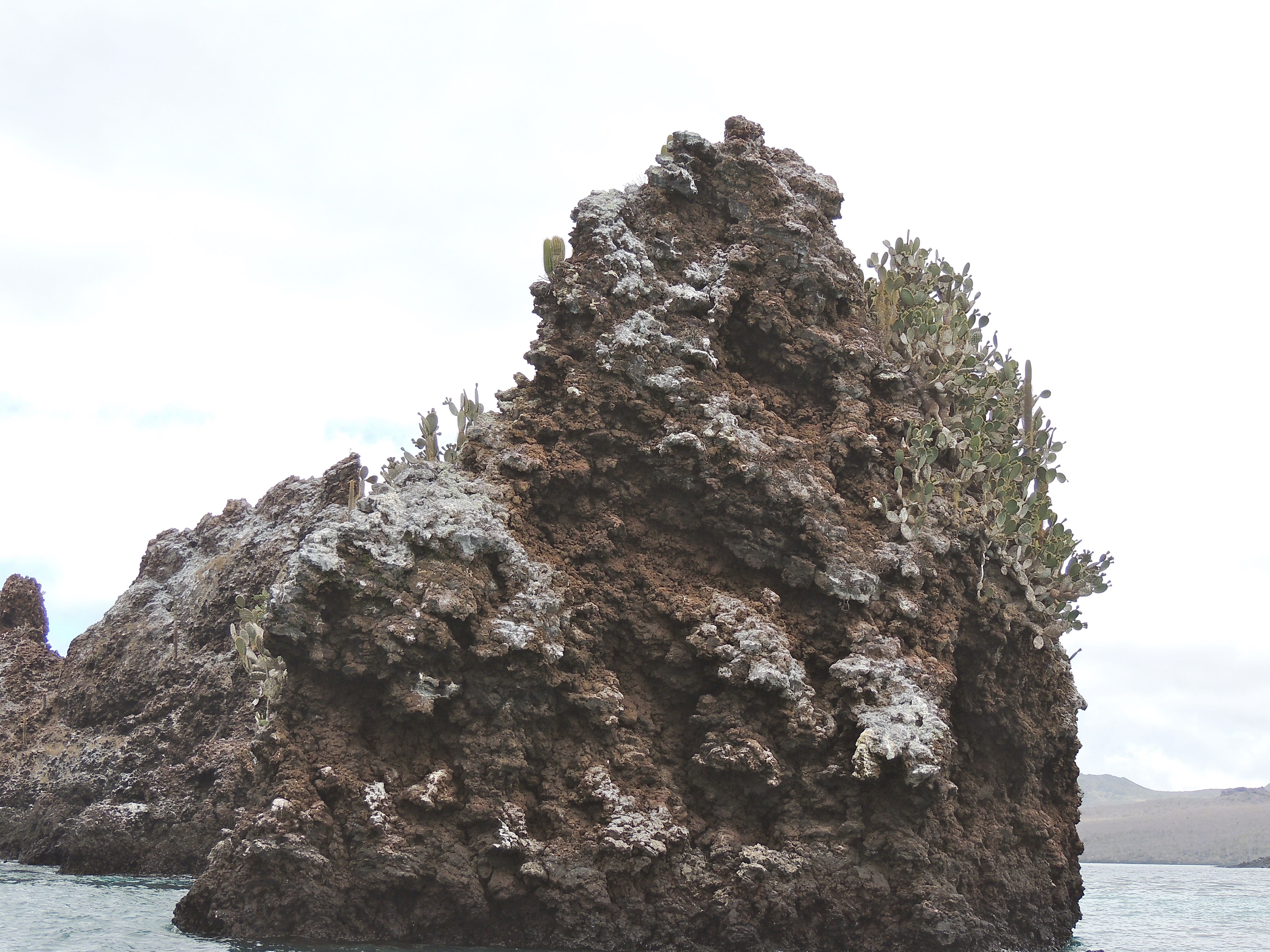 Devil's Crown - Photo by William Young
Devil's Crown - Photo by William YoungThis afternoon, our first stop was Post Office Point on Floreana. There is a post box there where people leave postcards and letters. You are supposed to look through all the ones that have been left and deliver any that are addressed to people who might live near you. I gave one to Freddie from Brussels, and he said the address was about 300 meters from where he lives. Simon and Steve are taking three back to London. There were not many birds around — a few finches, some Yellow Warblers, and some Blue-footed Boobies and Brown Pelicans fishing. Later, we went to the highlands of Floreana. The island's human population is about 100. We stopped at a small store. We then drove up a hill to a point 400 meters above sea level. On the way, we passed farms that grow yucca, guava, and oranges. The rocks in the area are made from volcanic ash.
The purpose of our visit was to see tortoises. The tortoises on this island are extinct, but some were brought over from Santa Cruz Island. They do not reproduce on Floreana. We saw a whole bunch of tortoises of type I in my Swash and Still field guide. They look like prehistoric creatures. I have seen a lot of turtles, but blowing them up to such a huge size changes their degree of "turtleness". At the top of the hill, we saw a Galapagos Flycatcher, which is a small Myiarchus. We heard a Whimbrel calling up in the hills. Yellow Warblers were all over the place. We saw the carving of a face on a big rock, and with the vegetation growing out of the top, it resembles Zippy the Pinhead. Solange said the settlers originally came here because of the natural spring water. I believe the finches were Small Ground Finches, and there were a lot of them. I photographed one of their nests, and on the drive back down the hill, I saw a great many more nests.
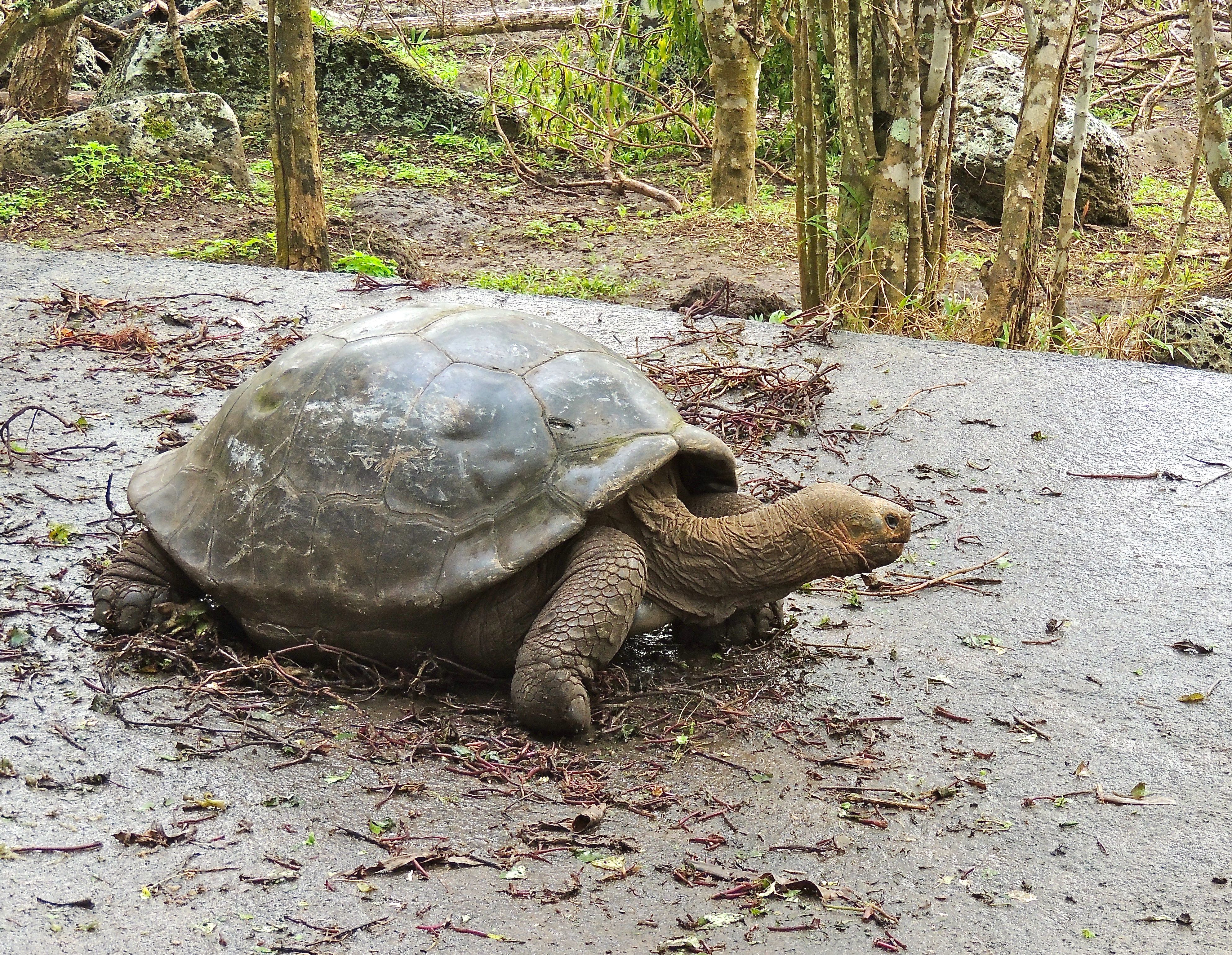 Galapagos Tortoise - Photo by William Young
Galapagos Tortoise - Photo by William Young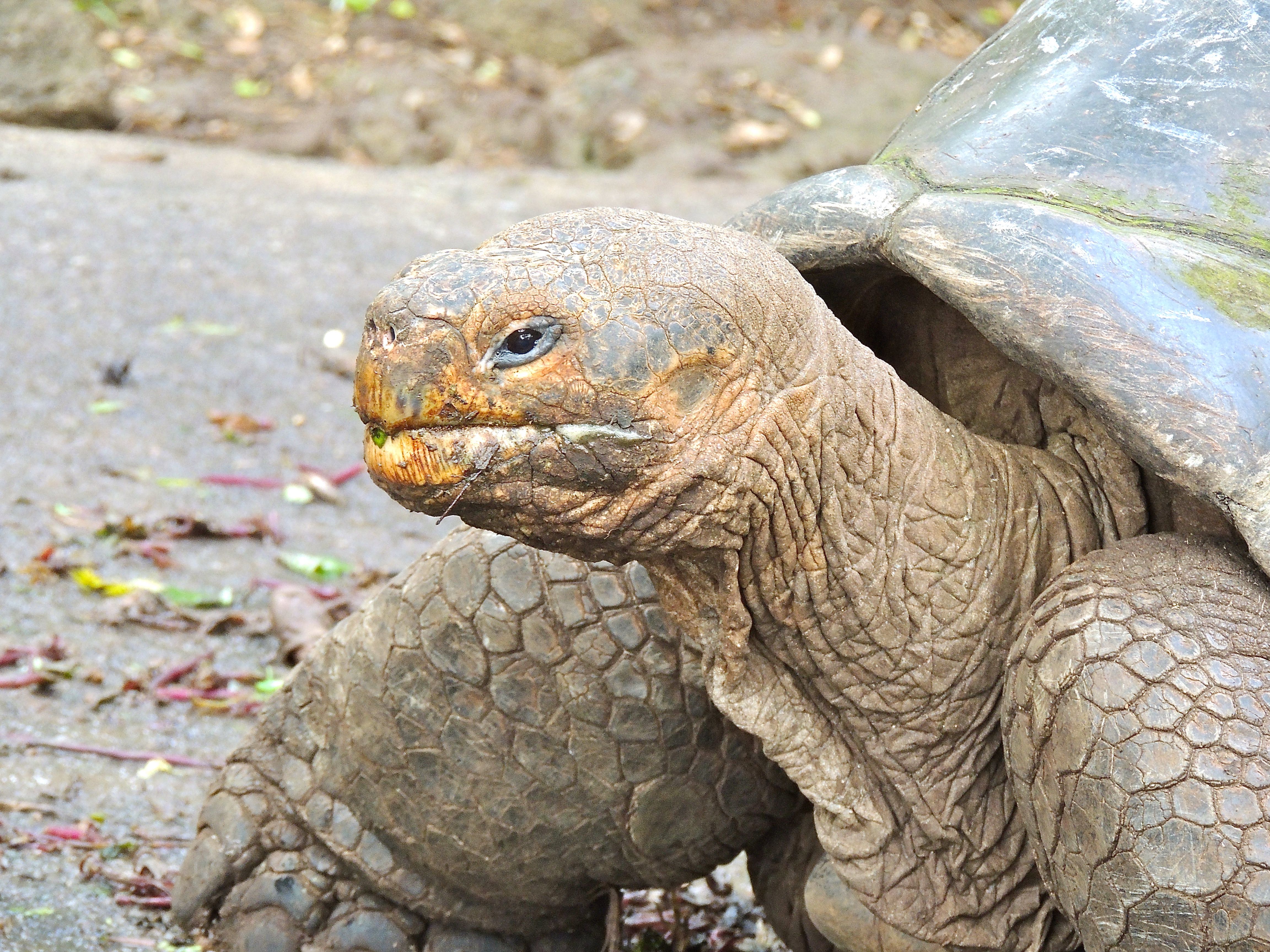 Galapagos Tortoise - Photo by William Young
Galapagos Tortoise - Photo by William Young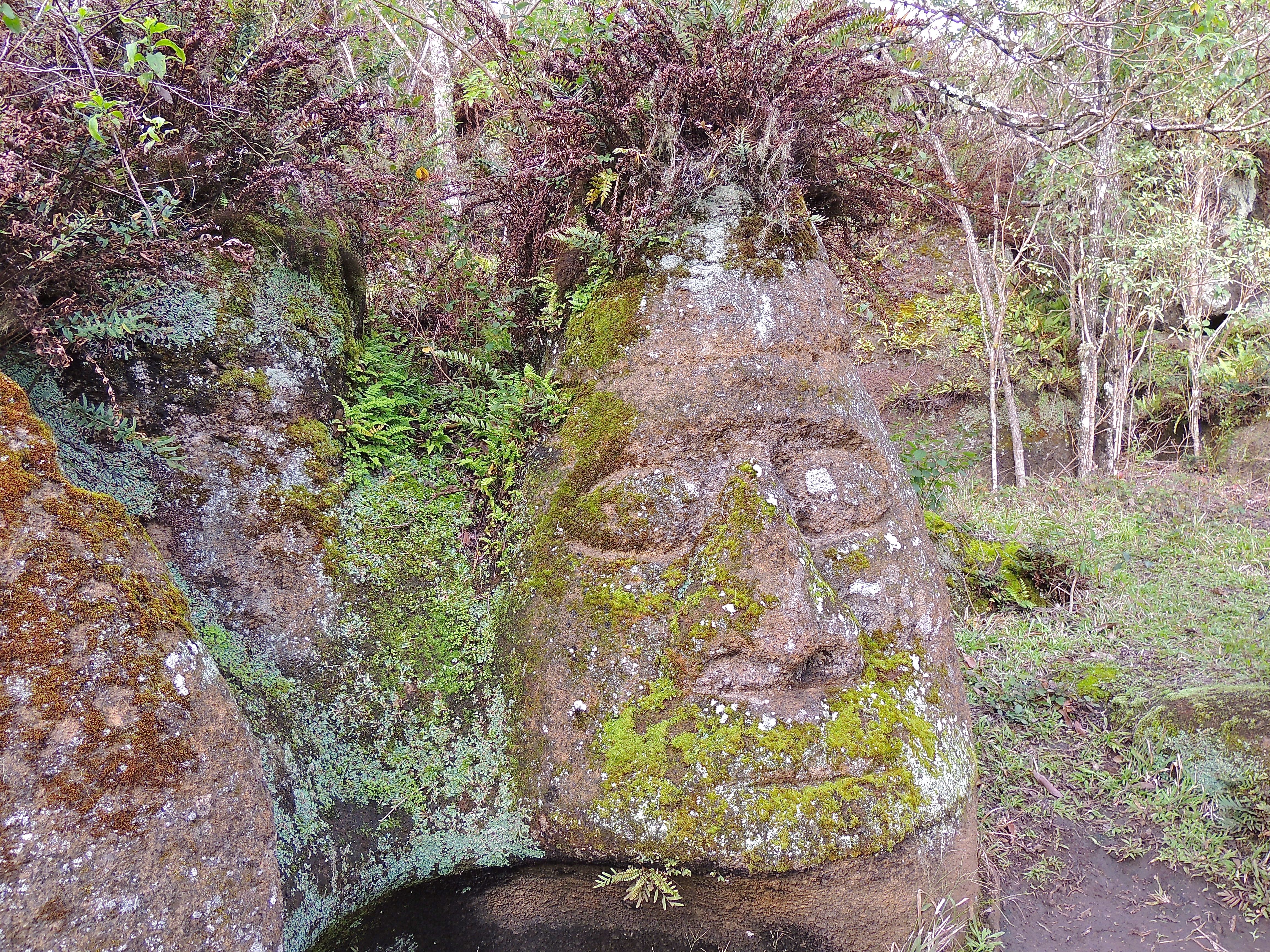 Floreana - Photo by William Young
Floreana - Photo by William Young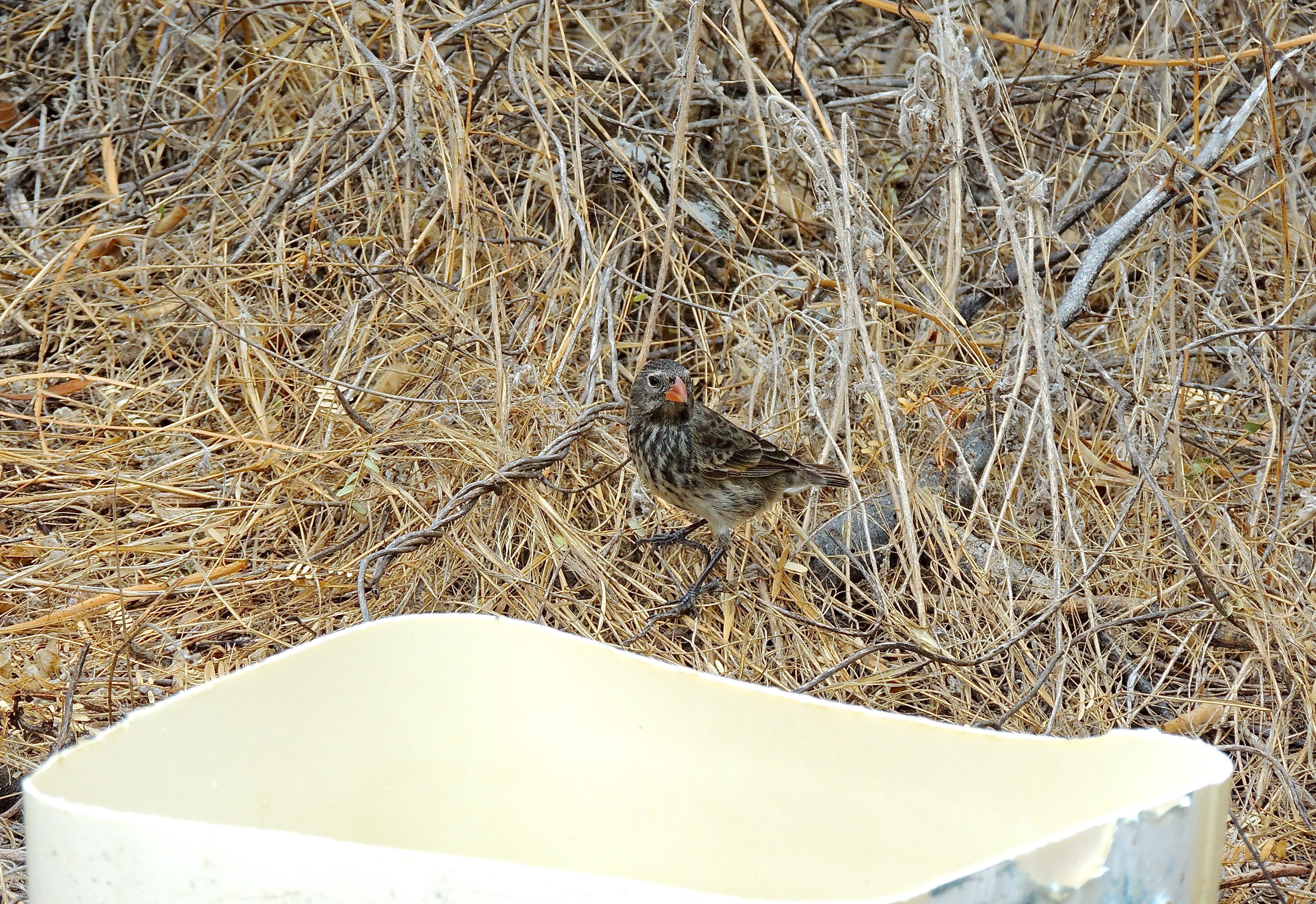 Small Ground Finch - Photo by William Young
Small Ground Finch - Photo by William Young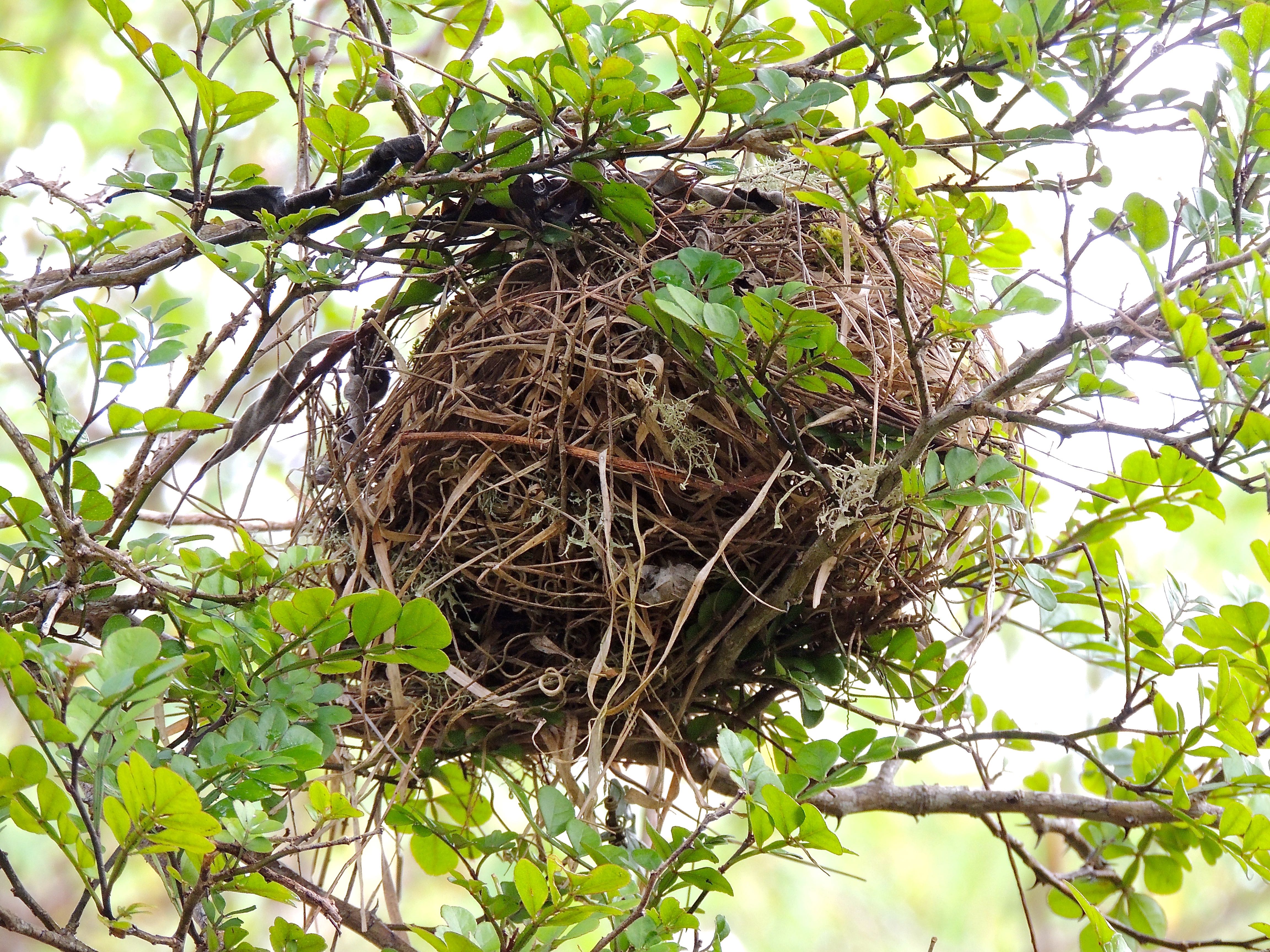 Small Ground Finch Nest - Photo by William Young
Small Ground Finch Nest - Photo by William YoungWe found another mailbox with cards to be delivered all over the world. I took one from someone from South Arlington, who wrote on the back of a card showing a Blue-footed Booby: "Please only deliver if you are approx 35, male, single, and like to travel. Just kidding, sort of. =) (Mostly I'm interested to see if this card ever makes it back to me.) Because there is no Wi-Fi on Floreana, this might be how social networking is done here.
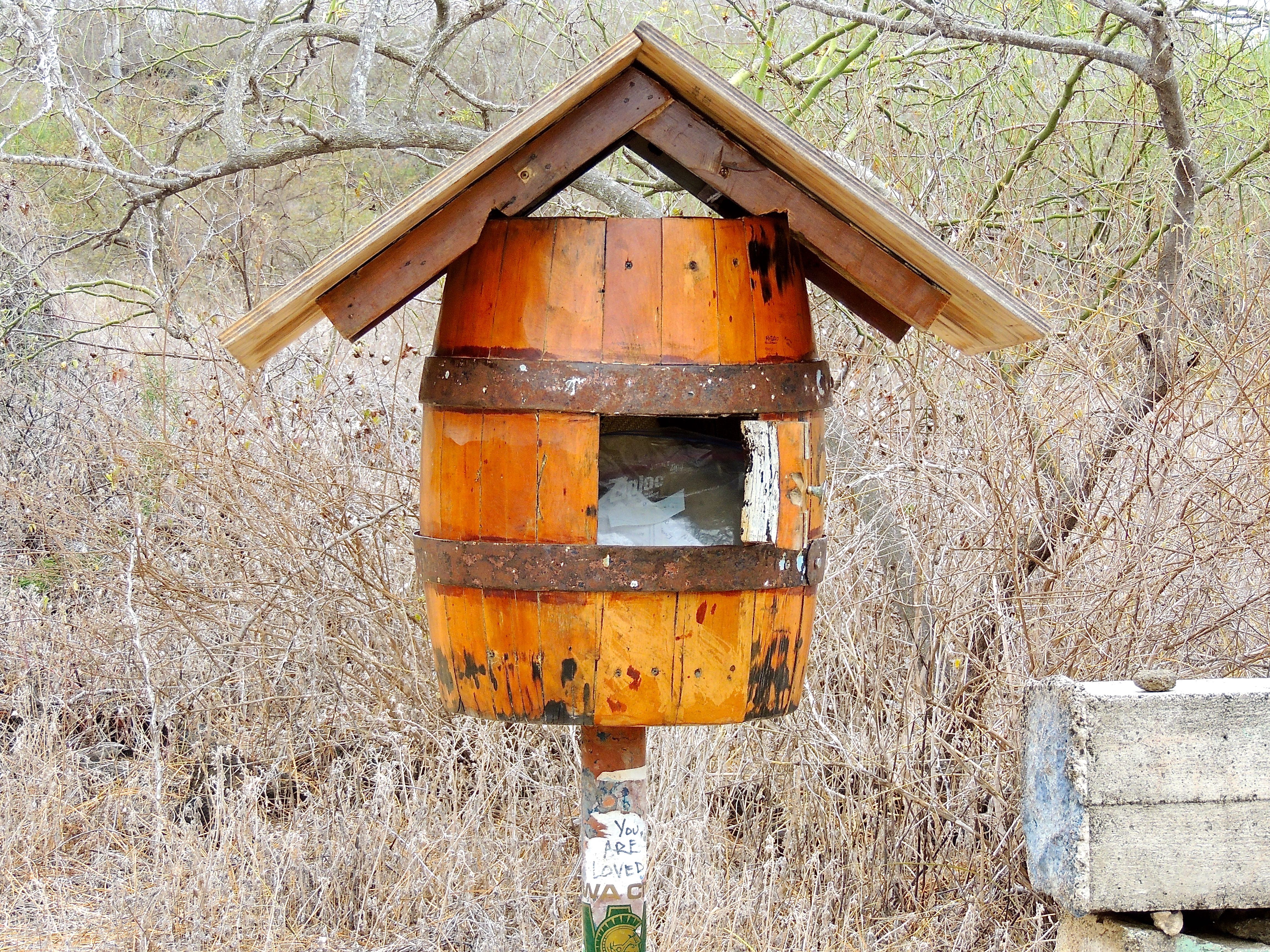 Post Office Point - Photo by William Young
Post Office Point - Photo by William Young
August 30
This morning, we went to North Seymour Island to look for nesting frigatebirds. On the way to the nesting site, I saw a Semipalmated Plover, a Ruddy Turnstone, some Lava Gulls, and a few Yellow Warblers. Prickly Pear Cacti were in the area. We saw our first Land Iguanas, who have a golden head. There were a lot of nesting Blue-footed Boobies, which might not be a good idea because of the frigatebirds. I had seen a lot of photos of frigatebirds with their big red gular pouches extended, but I had never seen it in person. They inflate the pouch like an automobile airbag and keep it inflated when battling with other males or interacting with females. There seem to be some small black feathers growing out of the edges of the pouch.
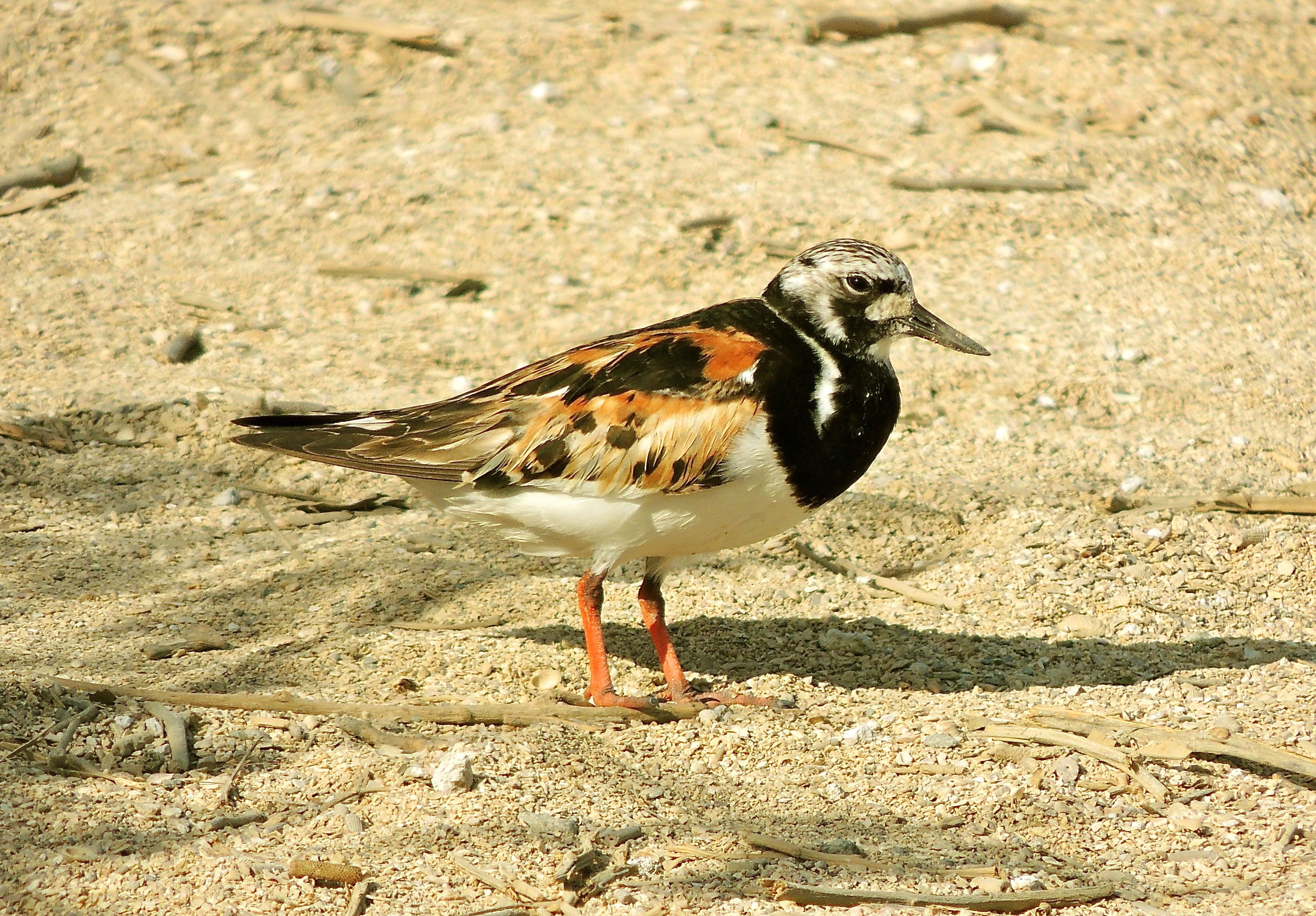 Ruddy Turnstone - Photo by William Young
Ruddy Turnstone - Photo by William Young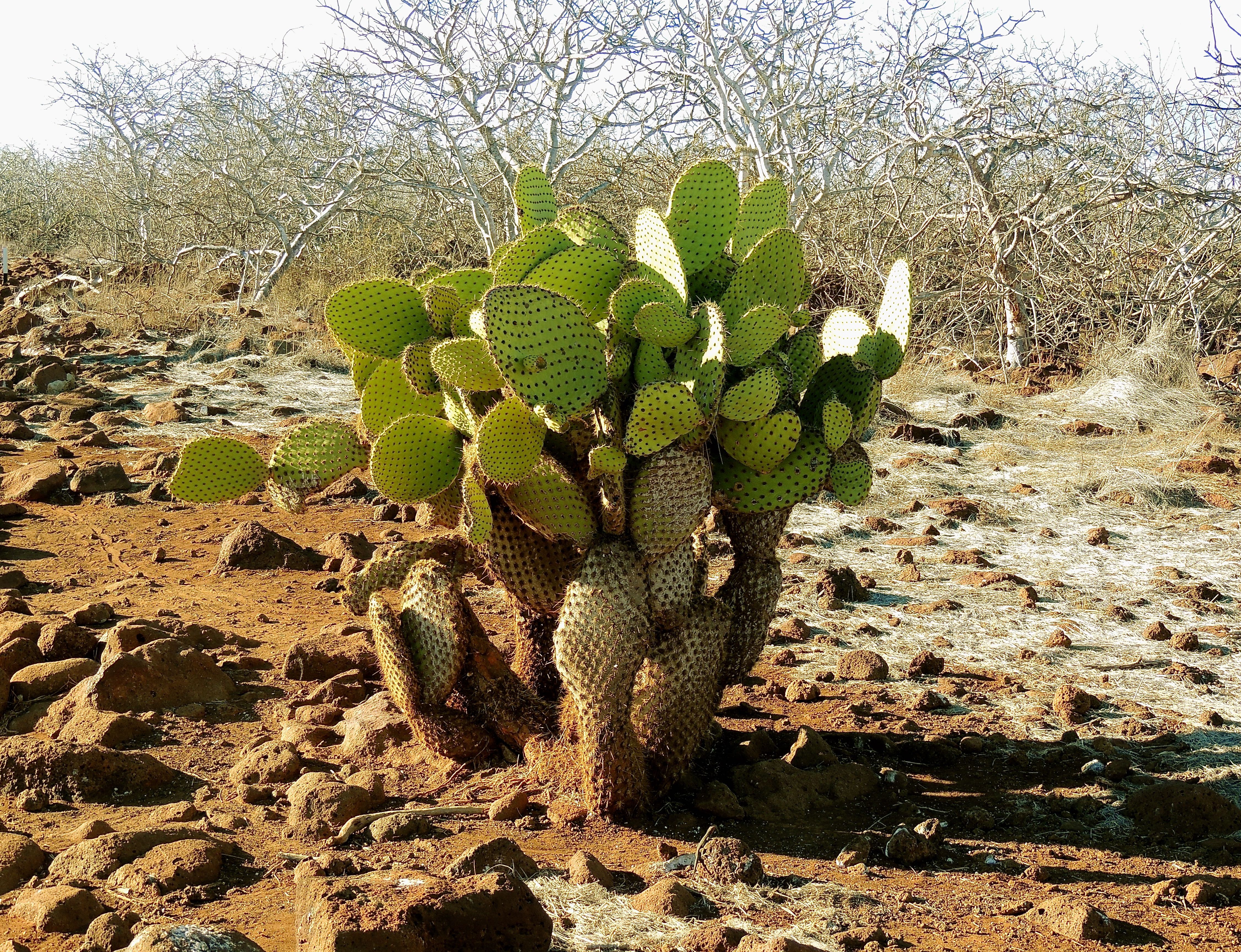 Prickly Pear Cacti - Photo by William Young
Prickly Pear Cacti - Photo by William Young Land Iguana - Photo by William Young
Land Iguana - Photo by William Young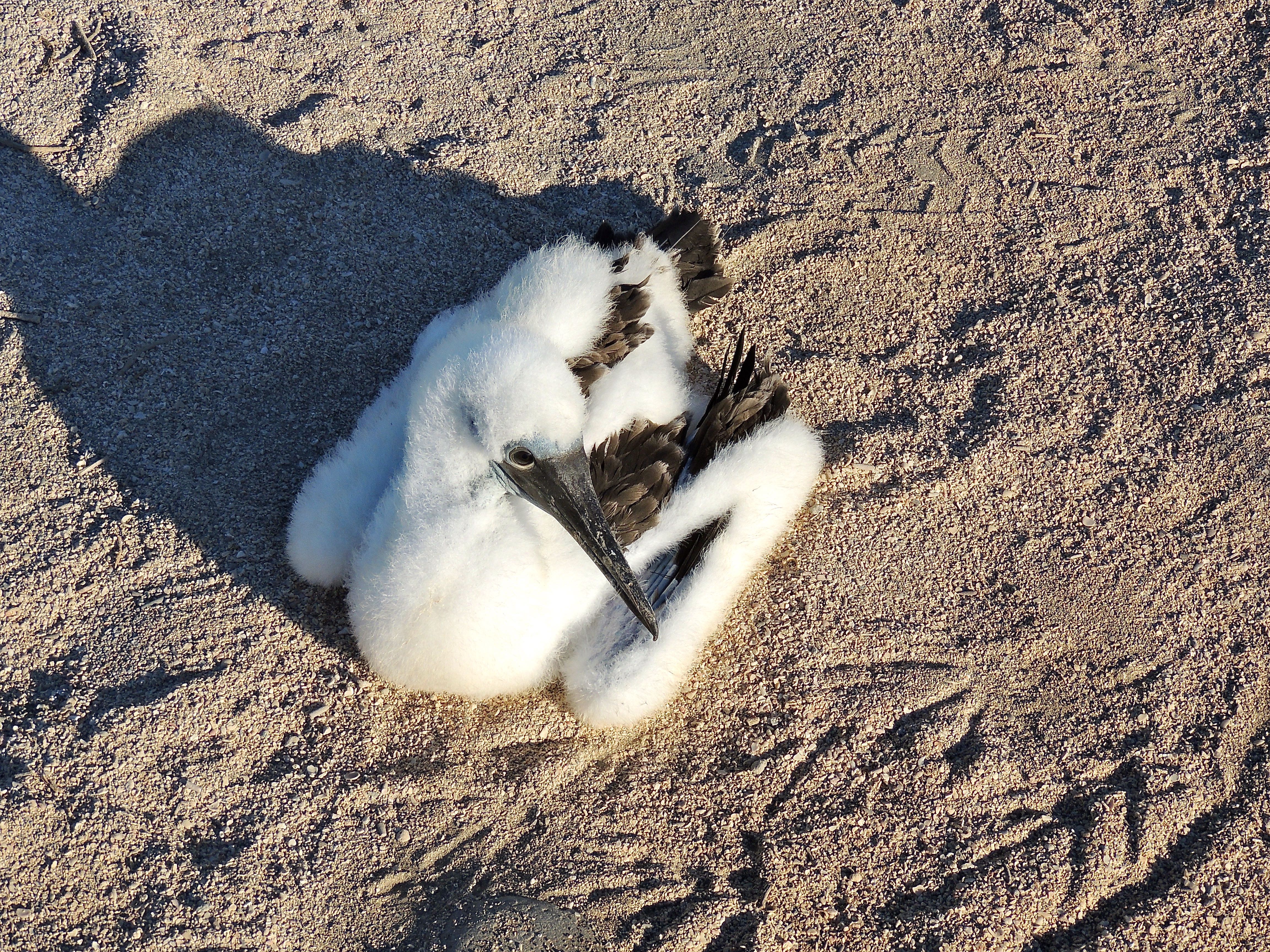 Blue-footed Booby Chick - Photo by William Young
Blue-footed Booby Chick - Photo by William Young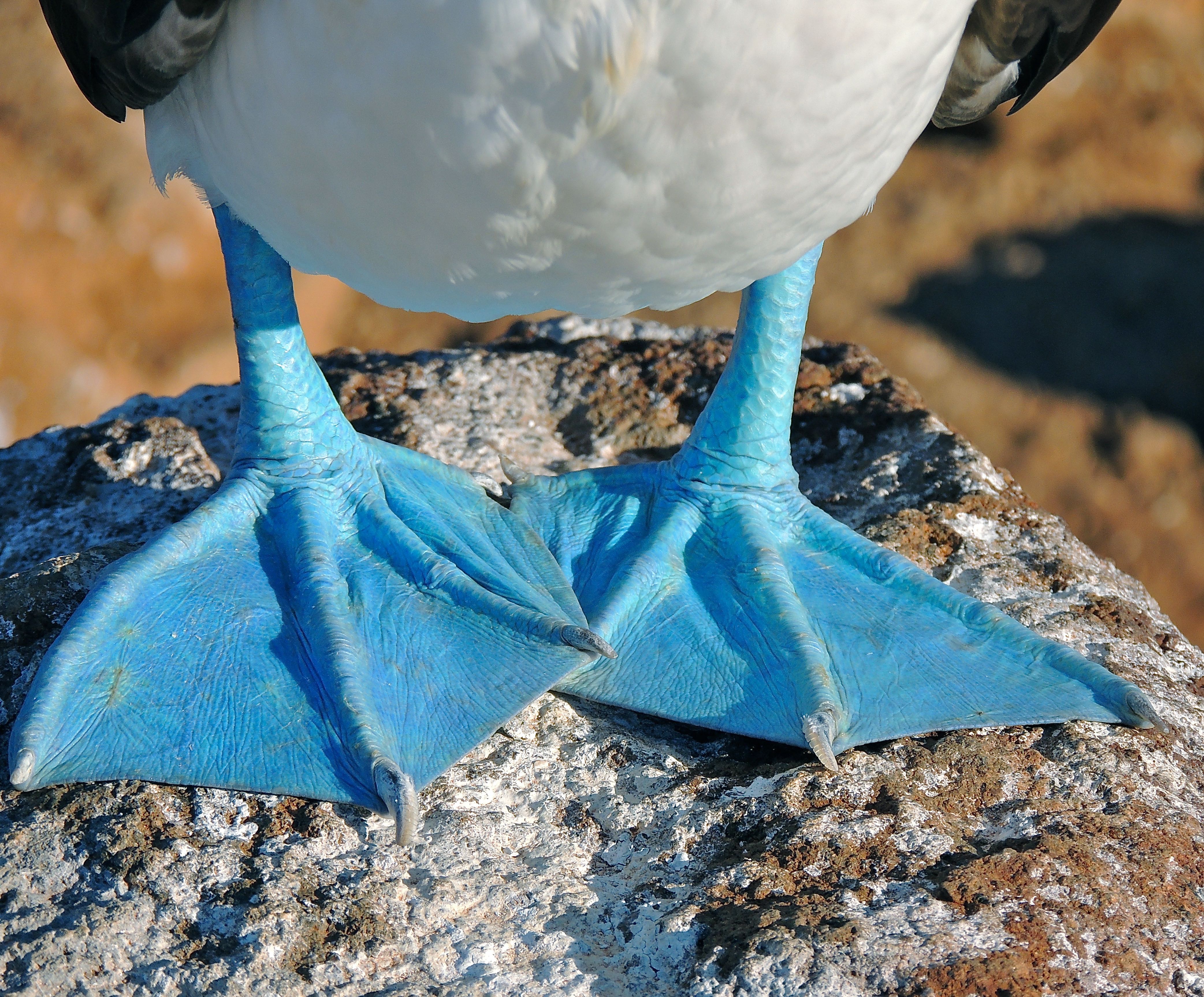 Blue-footed Booby Feet - Photo by William Young
Blue-footed Booby Feet - Photo by William Young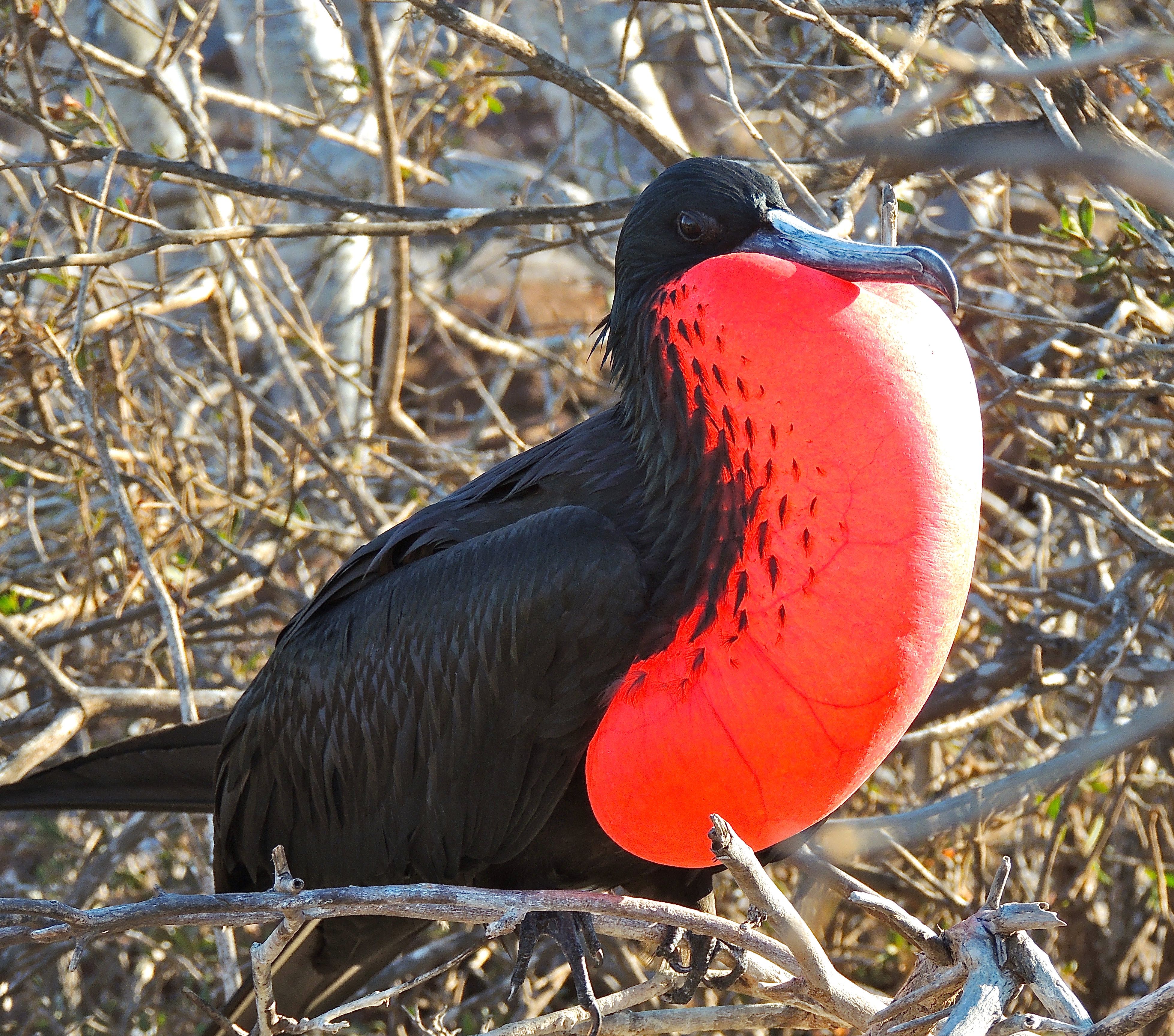 Magnificent Frigatebird Male - Photo by William Young
Magnificent Frigatebird Male - Photo by William Young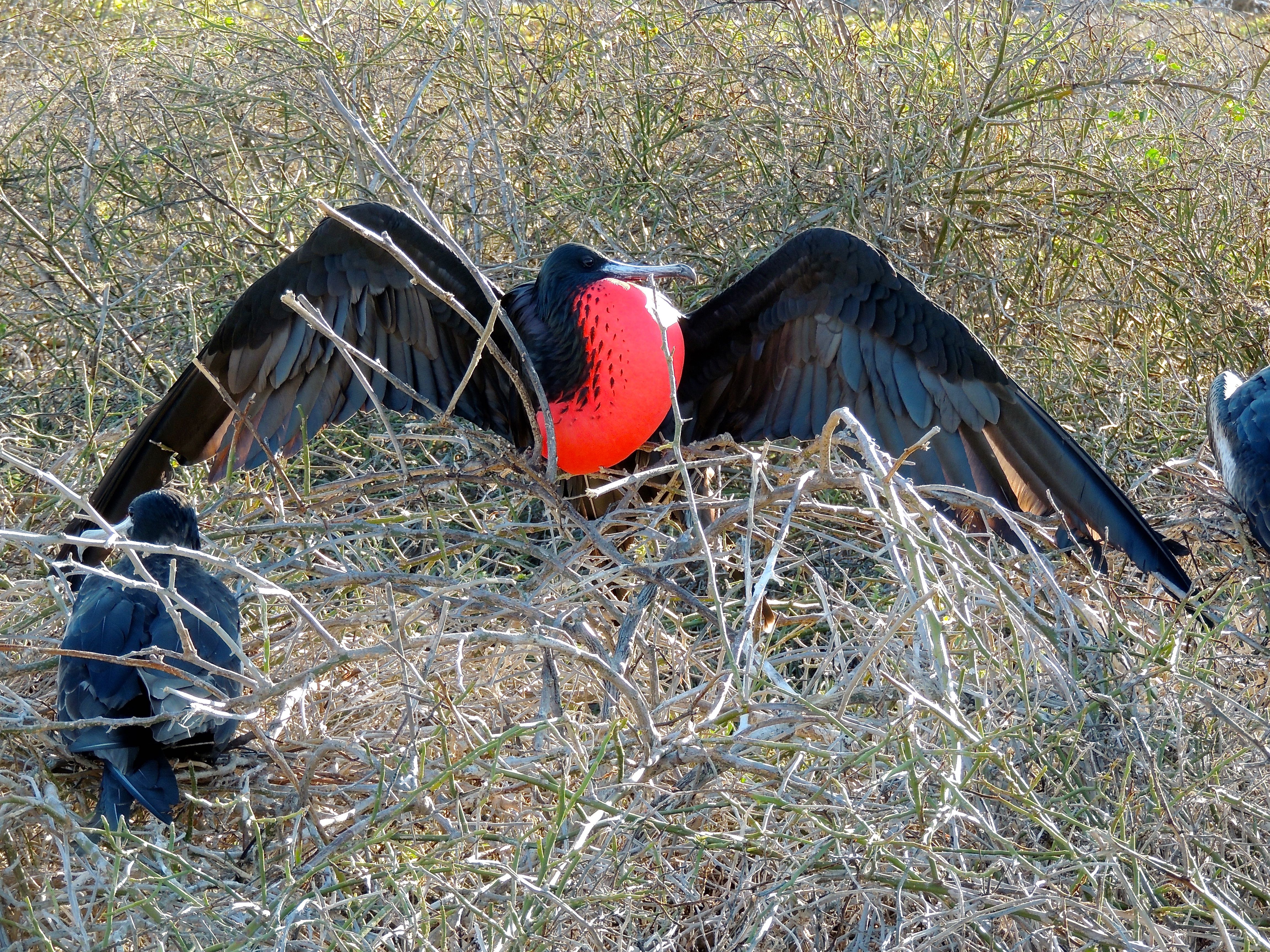 Magnificent Frigatebirds - Photo by William Young
Magnificent Frigatebirds - Photo by William Young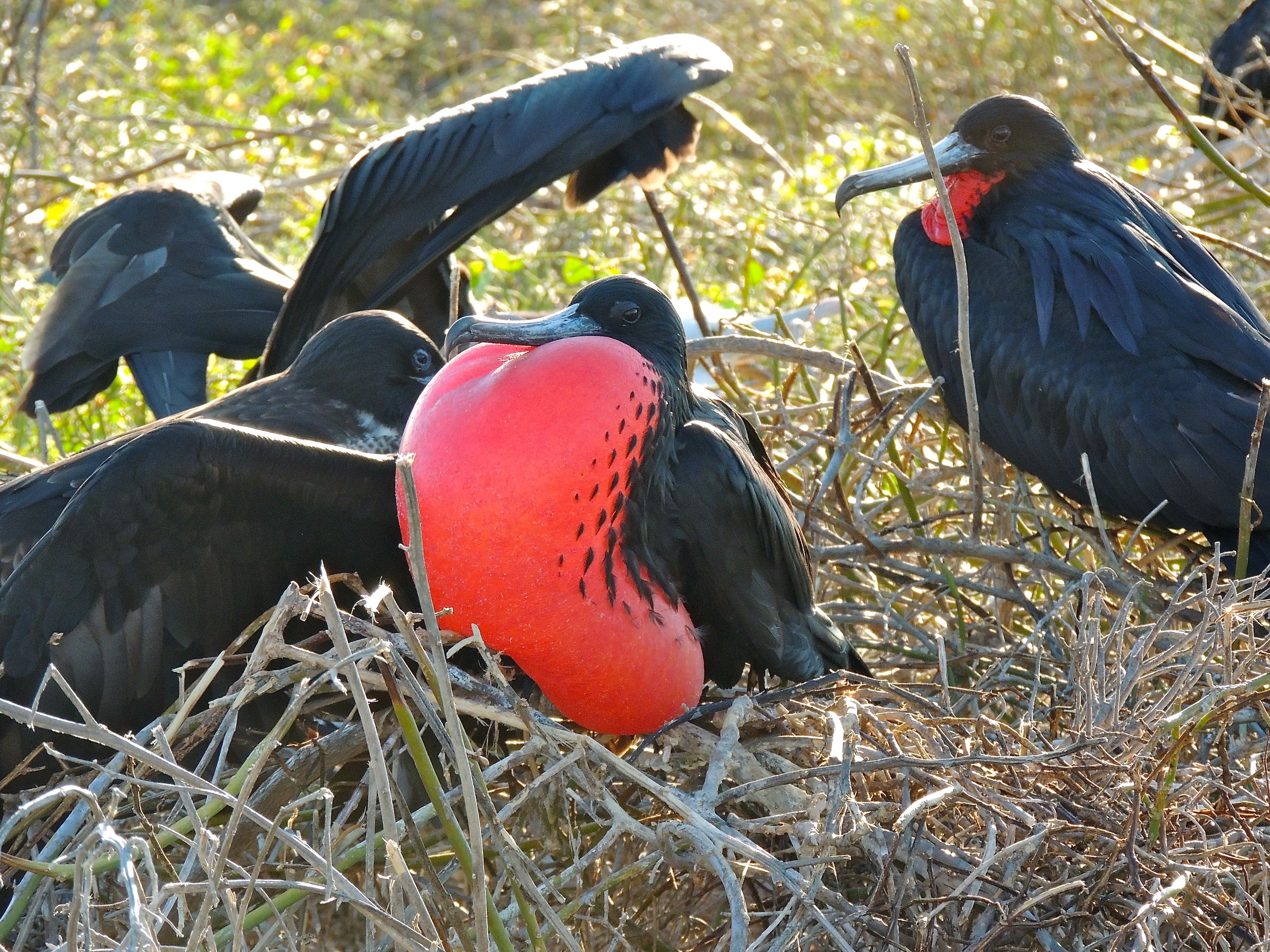 Magnificent Frigatebirds - Photo by William Young
Magnificent Frigatebirds - Photo by William Young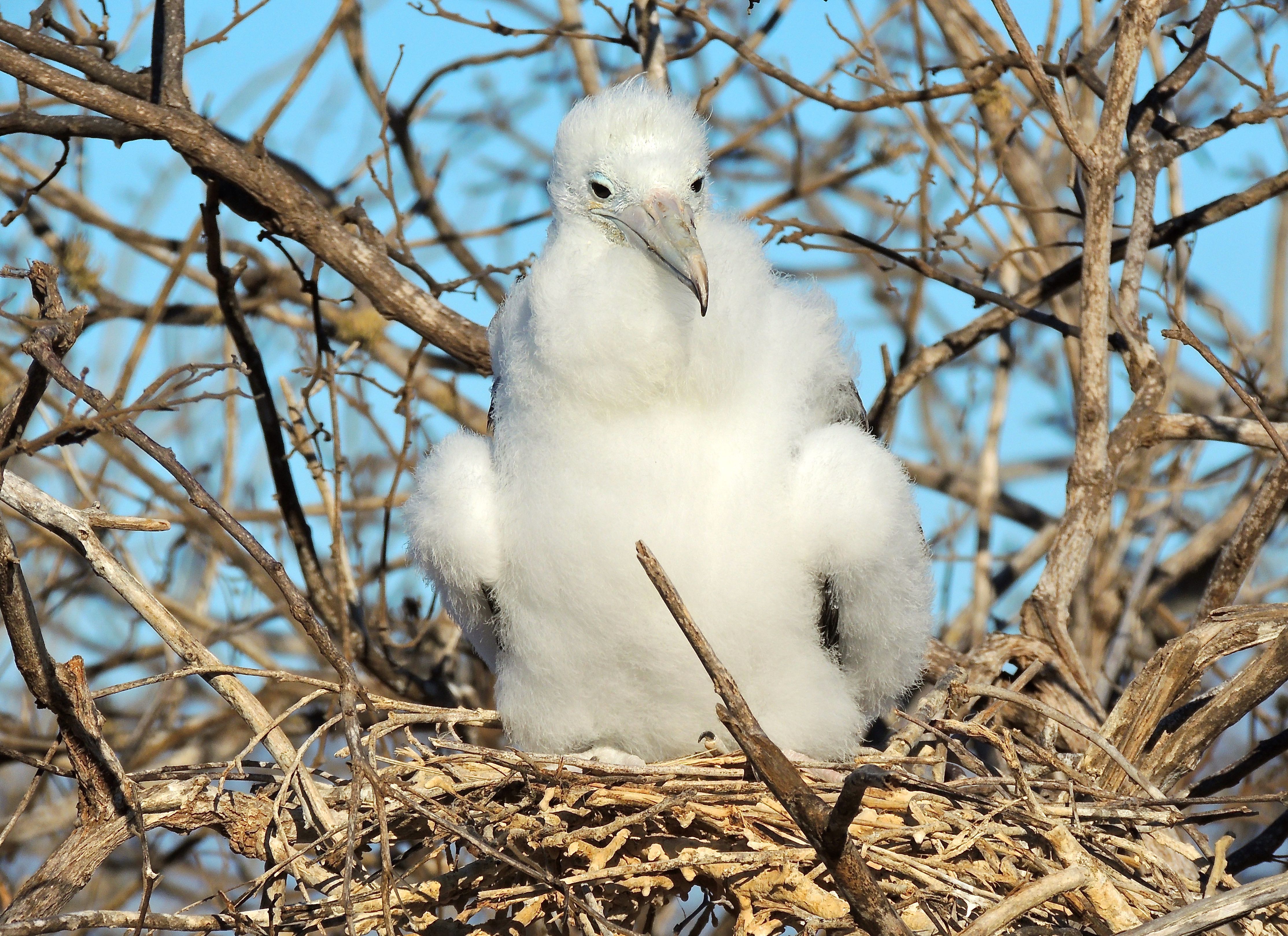 Magnificent Frigatebird Chick - Photo by William Young
Magnificent Frigatebird Chick - Photo by William Young Magnificent Frigatebird Chick - Photo by William Young
Magnificent Frigatebird Chick - Photo by William YoungWhen we returned to the boat, I went up to the top deck. Frigatebirds were soaring low over the boat, including a couple with a trace of a gular pouch. One perched right outside my room. Of the ten of us on the boat, 8 left this morning, leaving only me and Laurence from England. We were joined at lunch by a couple from France and a couple from Switzerland.
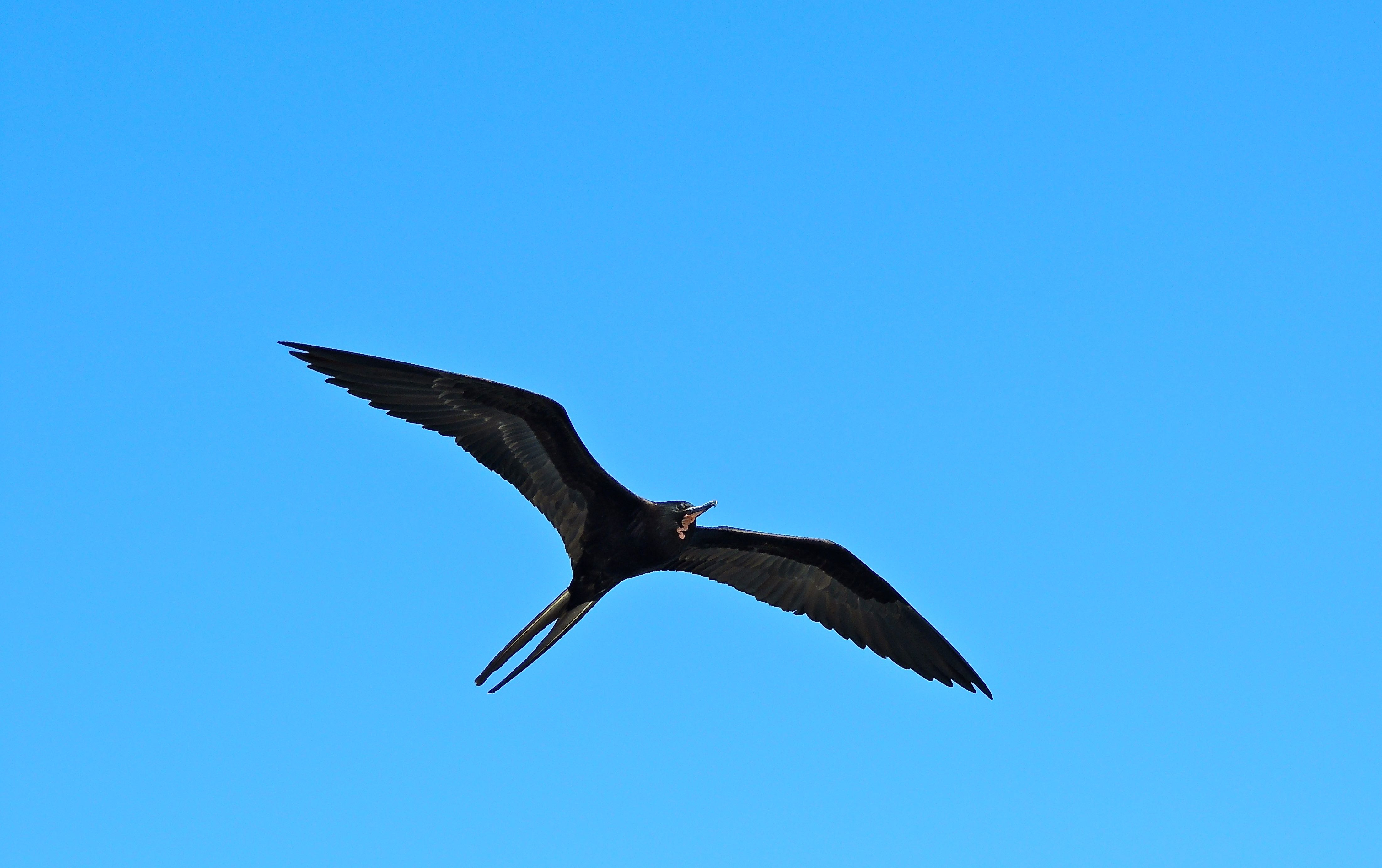 Magnificent Frigatebird Male - Photo by William Young
Magnificent Frigatebird Male - Photo by William Young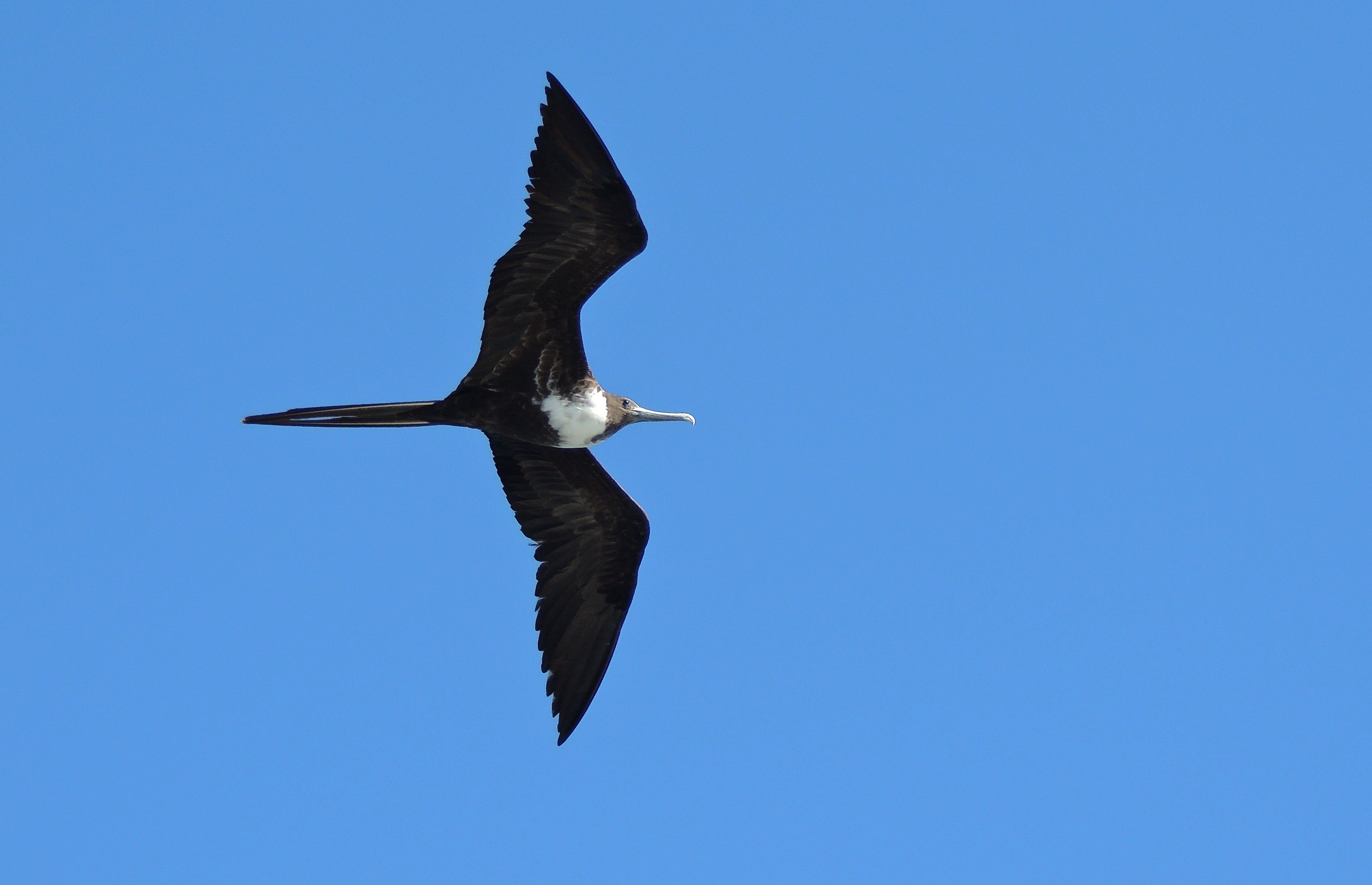 Magnificent Frigatebird Female - Photo by William Young
Magnificent Frigatebird Female - Photo by William Young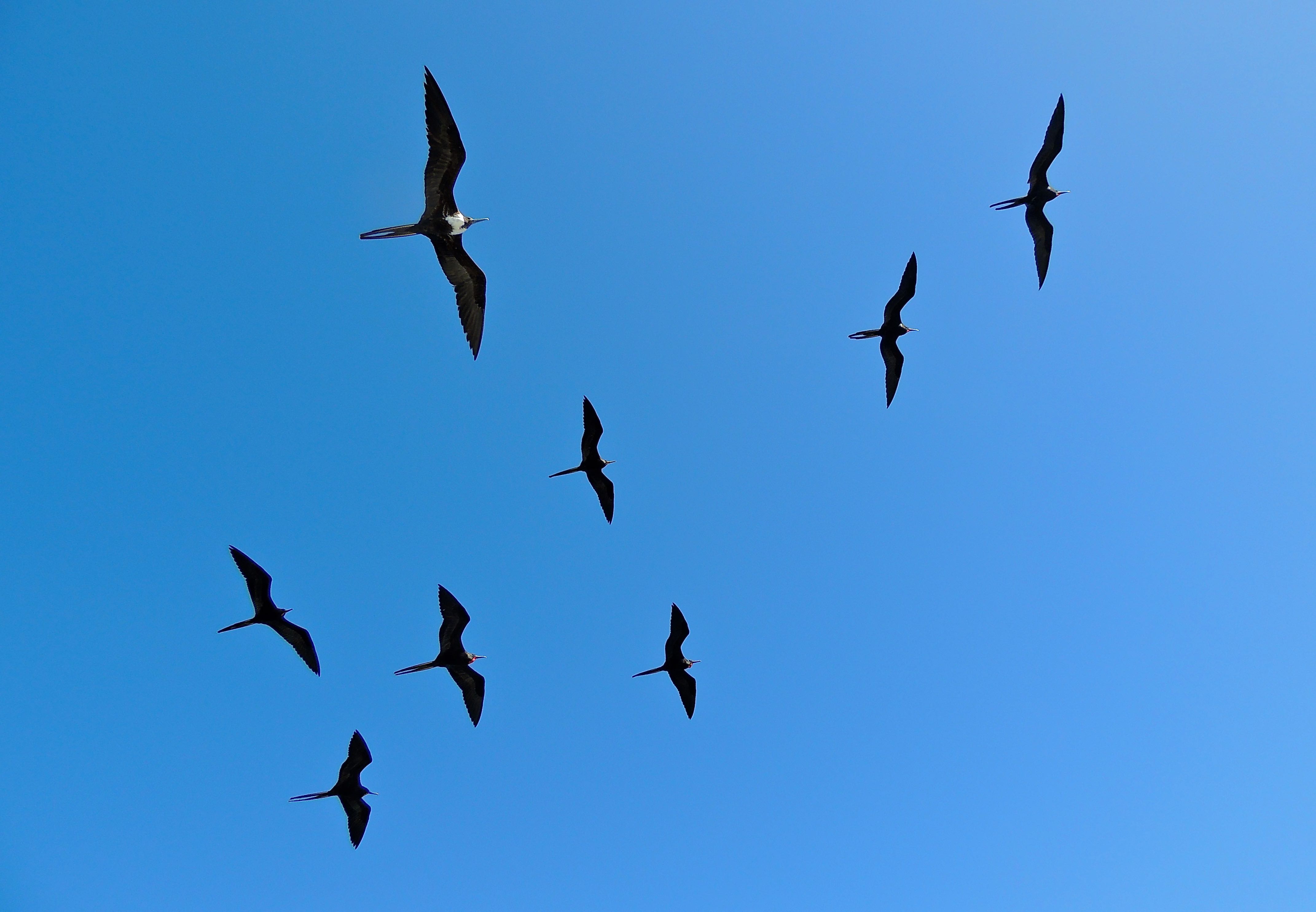 Magnificent Frigatebirds - Photo by William Young
Magnificent Frigatebirds - Photo by William YoungThis afternoon, we went to Bartholeme, which looks like a moonscape. Most of the rock is volcanic ash. One can see Lava Cacti, which somehow find enough nourishment while growing out of the lava. Today was the first really sunny day, although this afternoon was quite windy. Very few animals live here, except for a few finches and some Lava Lizards. I also saw a Galapagos Hawk. After climbing to the top of a hill and then coming down, we went in the dinghy to look for wildlife. We came to a cove where we saw four Galapagos Penguins. We later went around the bend and saw seven more. I was lucky to have my video camera on when two mated — they did it standing erect. They are slightly larger than the Fairy Penguins I saw in Australia. Solange said that the eleven we saw might be the entire population on this island. We also saw three Blue-footed Boobies and a Great Blue Heron.
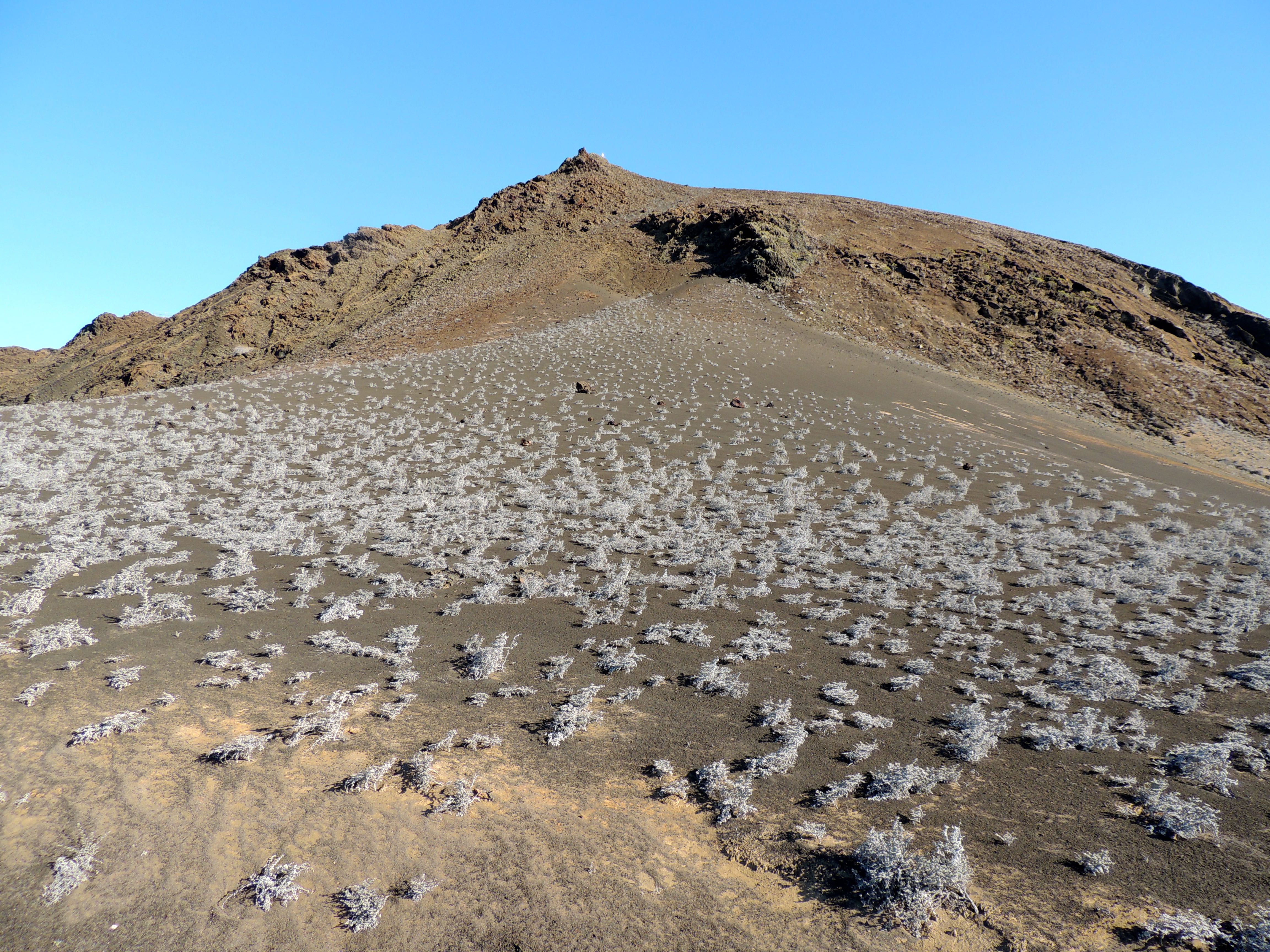 Bartholeme - Photo by William Young
Bartholeme - Photo by William Young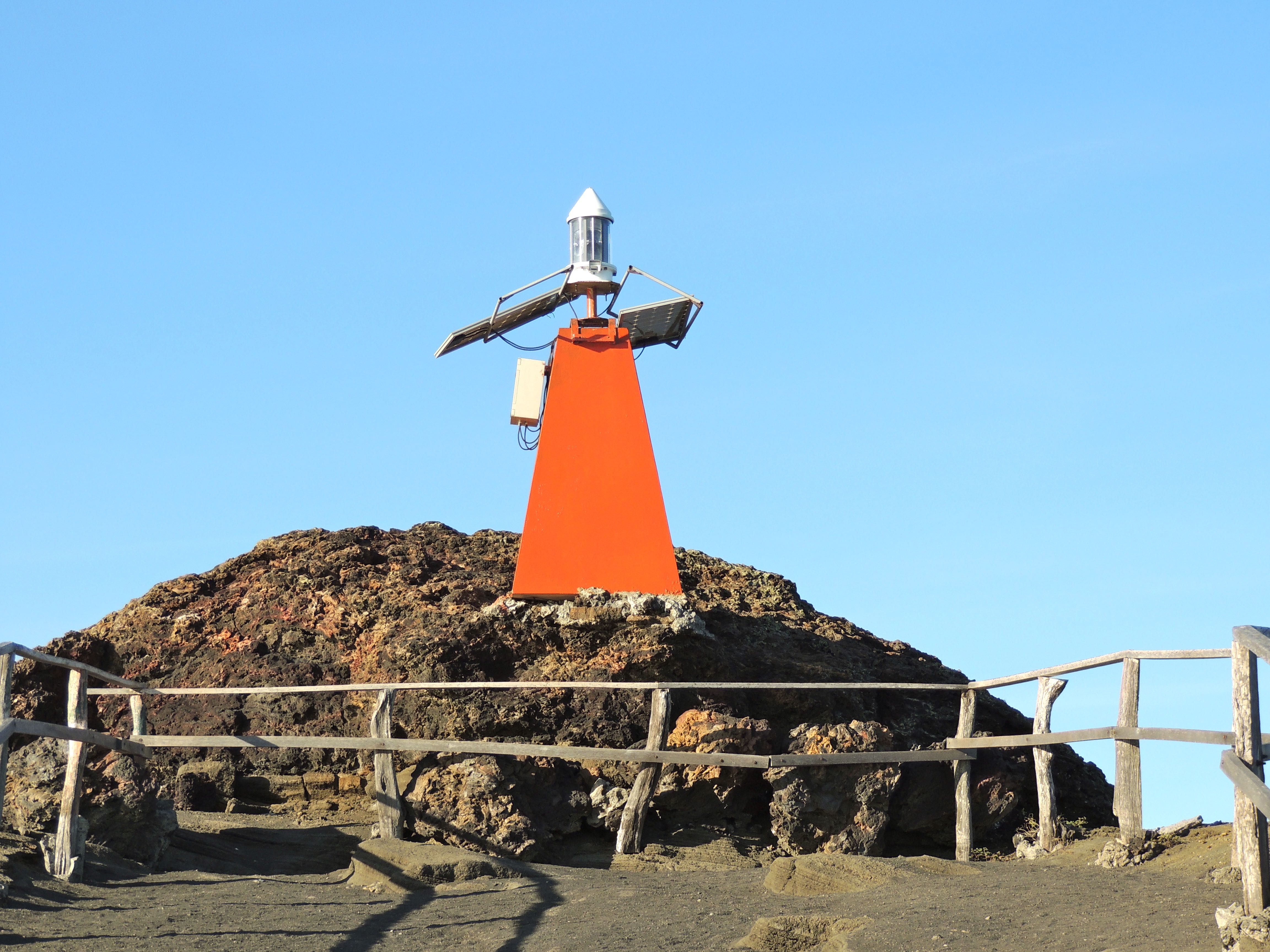 Bartholeme - Photo by William Young
Bartholeme - Photo by William Young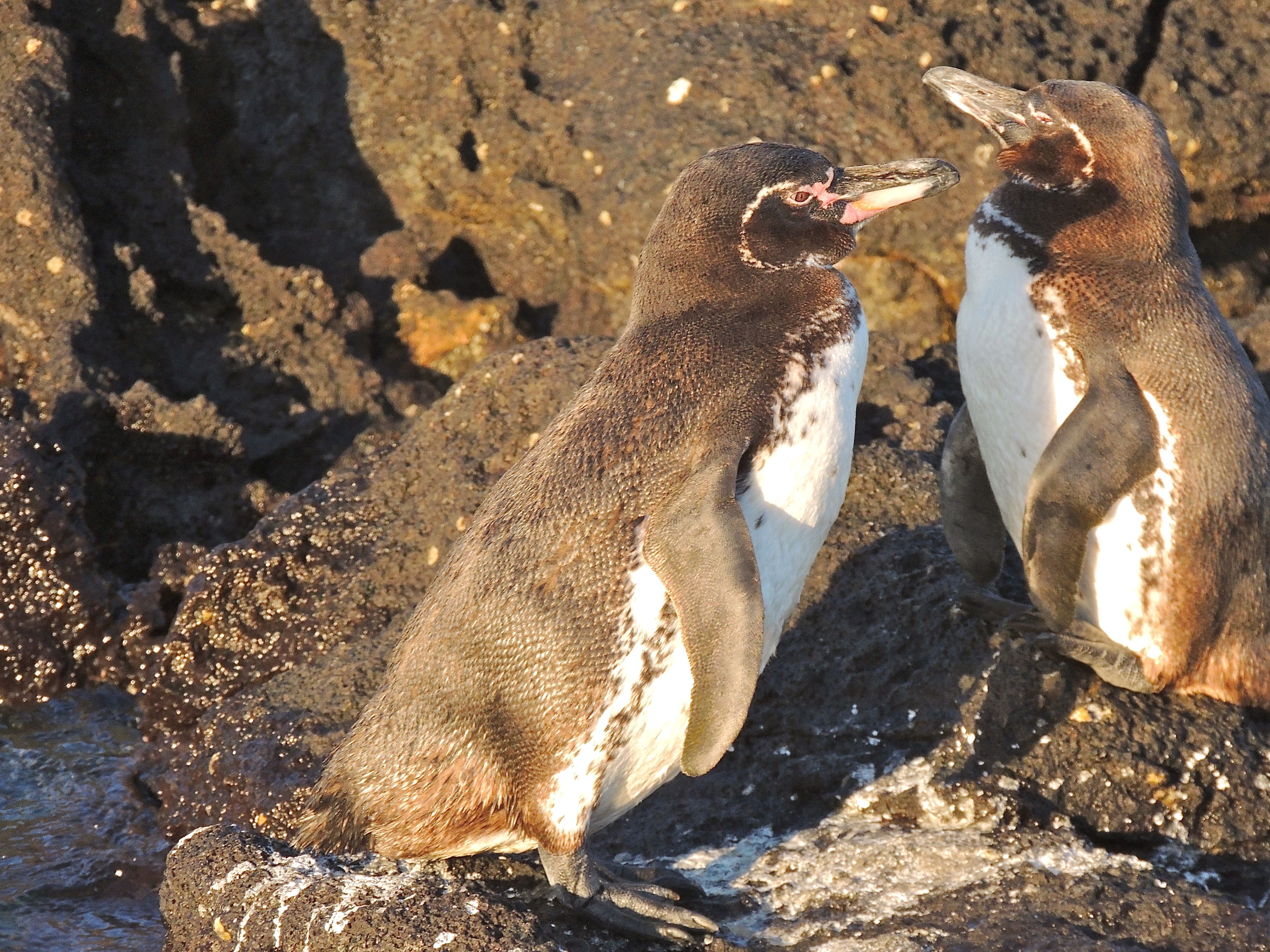 Galapagos Penguins - Photo by William Young
Galapagos Penguins - Photo by William YoungToday was a bit of an off day. We saw the frigatebirds between 6:30 and 8, and we did not do anything else until 4:15. This gave me a chance to catch up on my field notes. It also gave me a chance to rest a little.
August 31
I went out on the deck at about 6:30 this morning. We are now north of the Equator at Genovesa, which is called the bird island. Many seabirds were flying around — Swallow-tailed Gulls, frigatebirds, Red-billed Tropicbirds, Audubon's Shearwaters, and Nazca Boobies. The tropicbirds make a sound that resembles an out-of-control camera motor. The frigatebirds cannot sit on the water, but they take food by reaching down with their beak and snatching it from the surface. I also saw a shark swimming near our boat.
This morning, we did a wet landing onto the island, which is inside the crater of a volcano. A lot of nesting birds were all over the place, including Red-footed and Nazca Boobies, both species of frigatebirds, and Swallow-tailed Gulls. I shot footage of Nazca Boobies doing courtship rituals, which involved bringing stones and twigs to the nest site. I also got footage of them mating. They used to be considered part of the same species as the Masked Booby. I shot footage of Swallow-tailed Gulls mating. The male stood on the back of the female for three minutes. There were a few Lava Gulls on the island. They are scavengers, while the Swallow-tailed Gull is not. When the two interact, the aggressive Lava Gulls chase away the Swallow-tails. Some of the Red-footed Boobies had newly hatched chicks, and I shot footage of them as well. Solange said that if a Red-footed Booby chick falls out of a nest, it will die, because there is no way for the parents to get it back into the nest. One method of telling apart the males of the two species of frigatebirds is by the color of the sheen on the back — purple for Magnificent and green for Great. I could clearly see a green sheen on some of the birds sitting on their nests. Another way of telling the two apart is that Great has red feet, while the Magnificent does not.
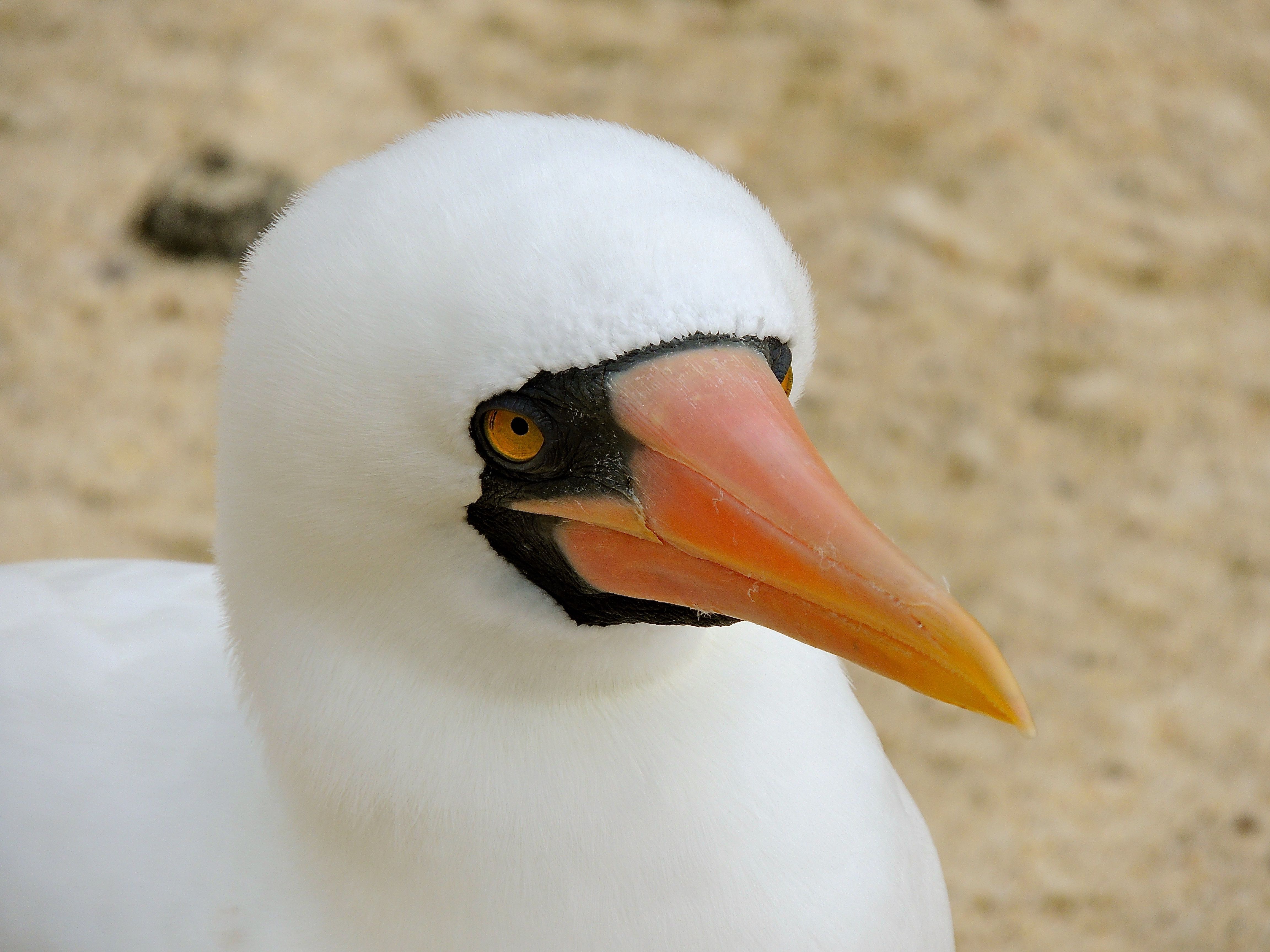 Nazca Booby - Photo by William Young
Nazca Booby - Photo by William Young Nazca Booby - Photo by William Young
Nazca Booby - Photo by William Young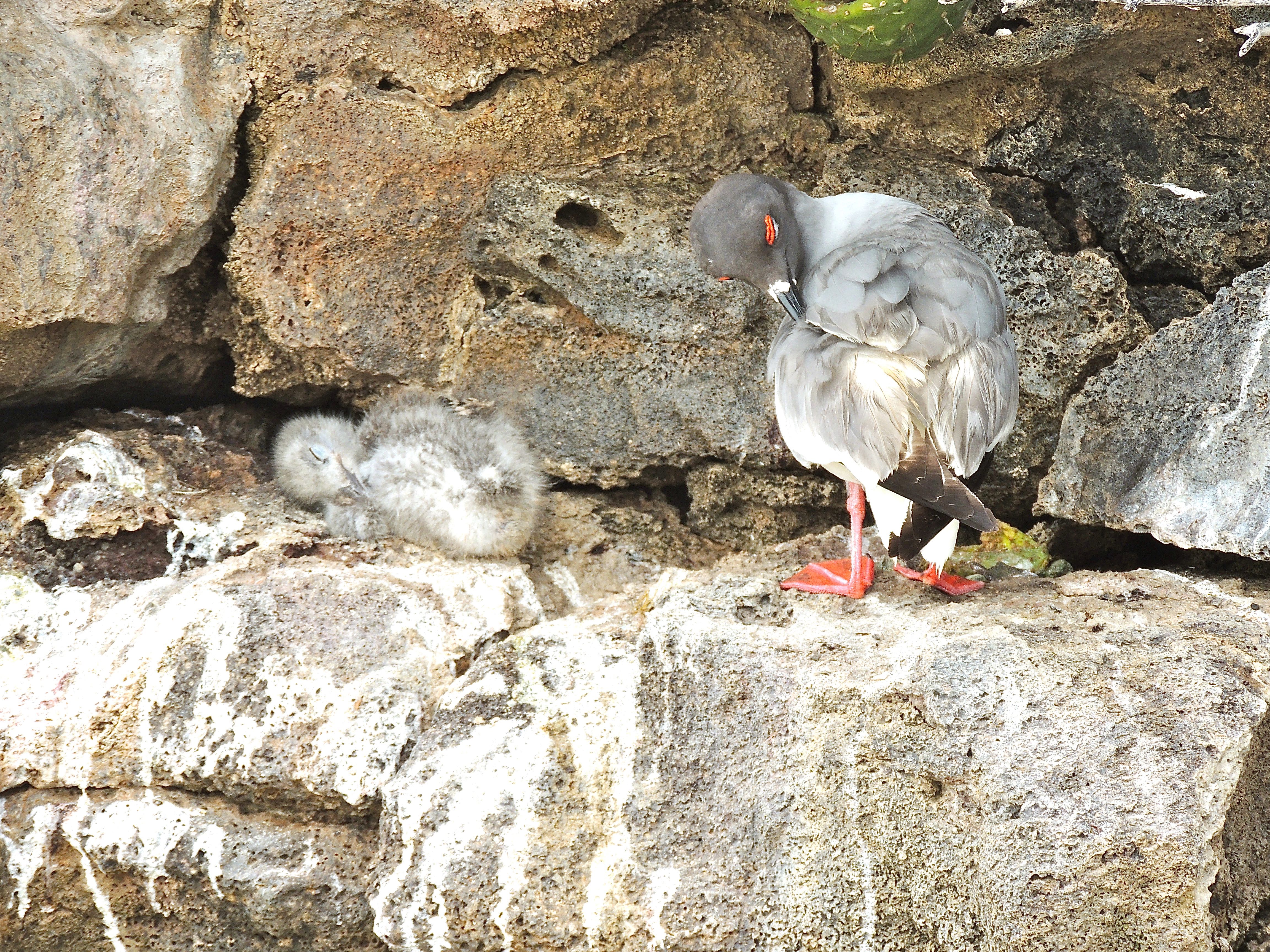 Swallow-tailed Gull with Chick - Photo by William Young
Swallow-tailed Gull with Chick - Photo by William Young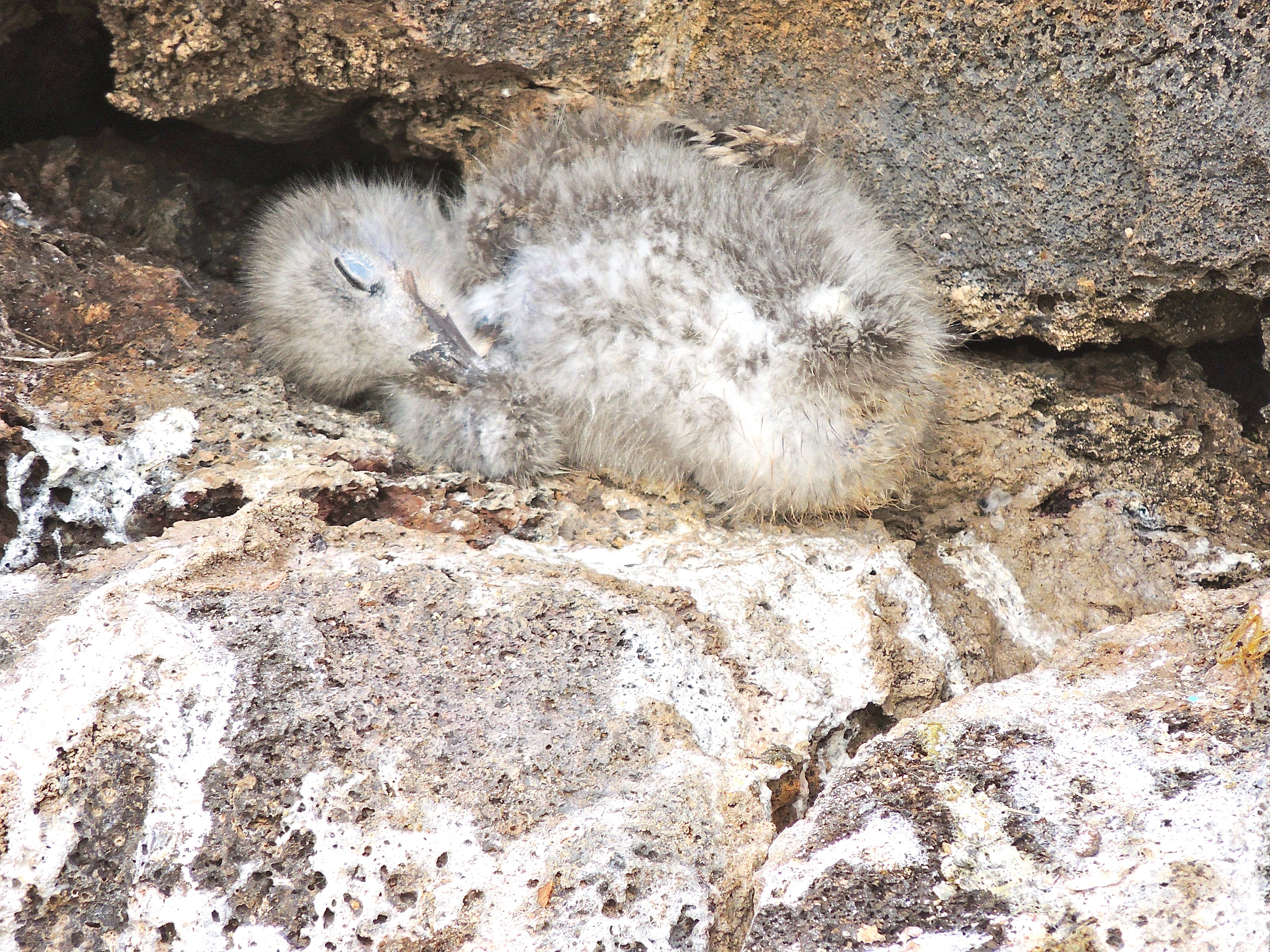 Swallow-tailed Gull Chick - Photo by William Young
Swallow-tailed Gull Chick - Photo by William Young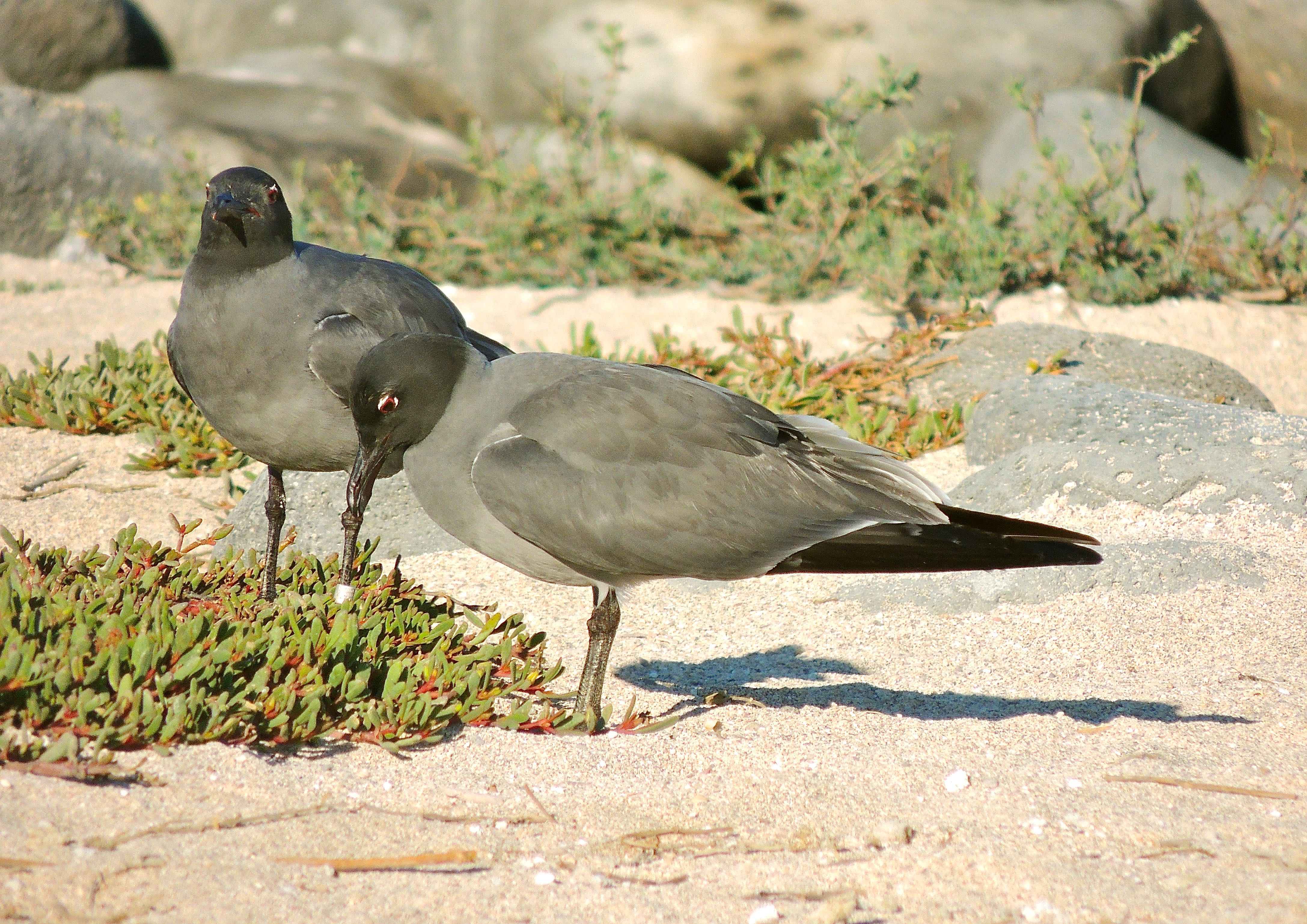 Lava Gulls - Photo by William Young
Lava Gulls - Photo by William Young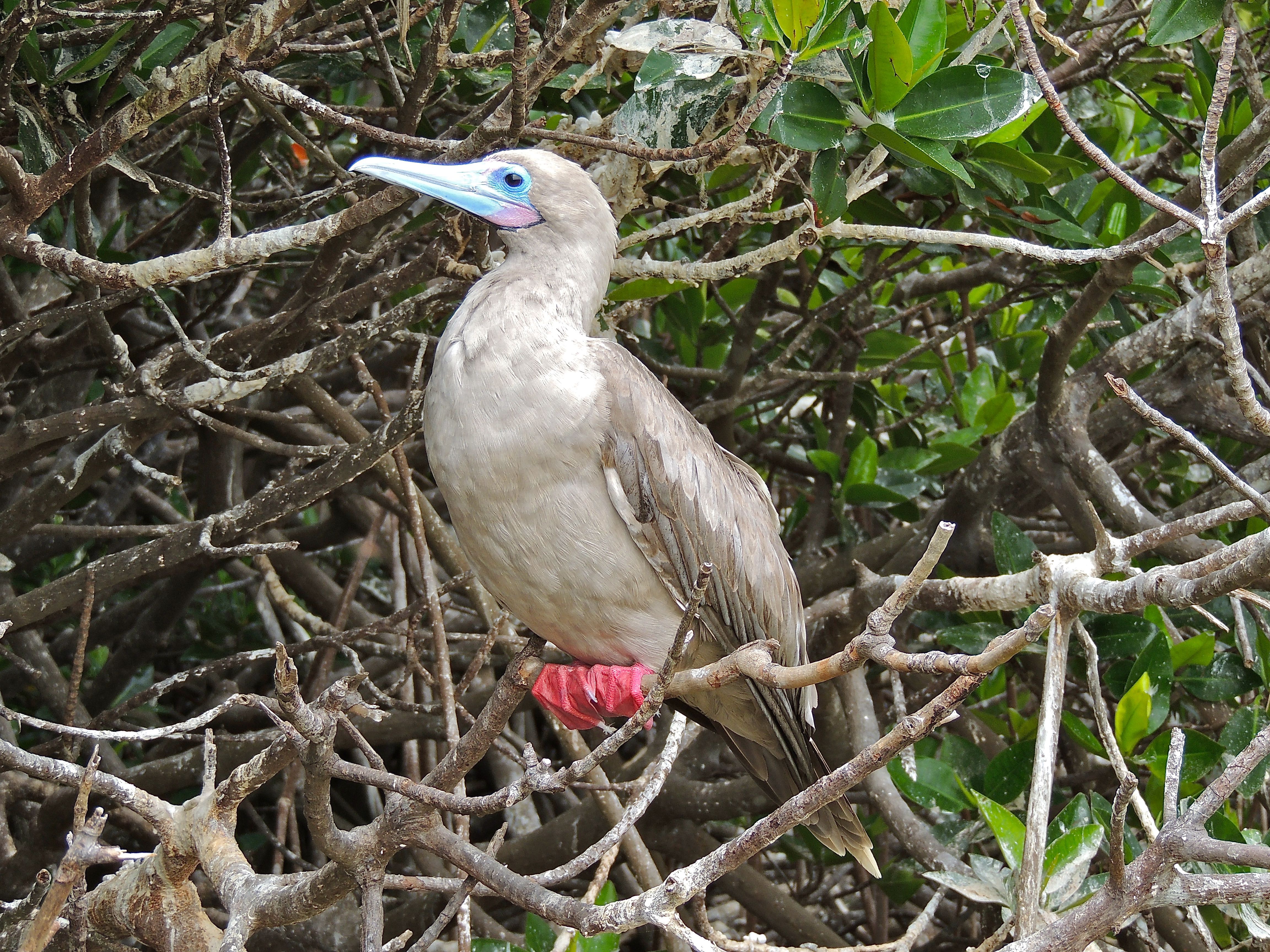 Red-footed Booby - Photo by William Young
Red-footed Booby - Photo by William Young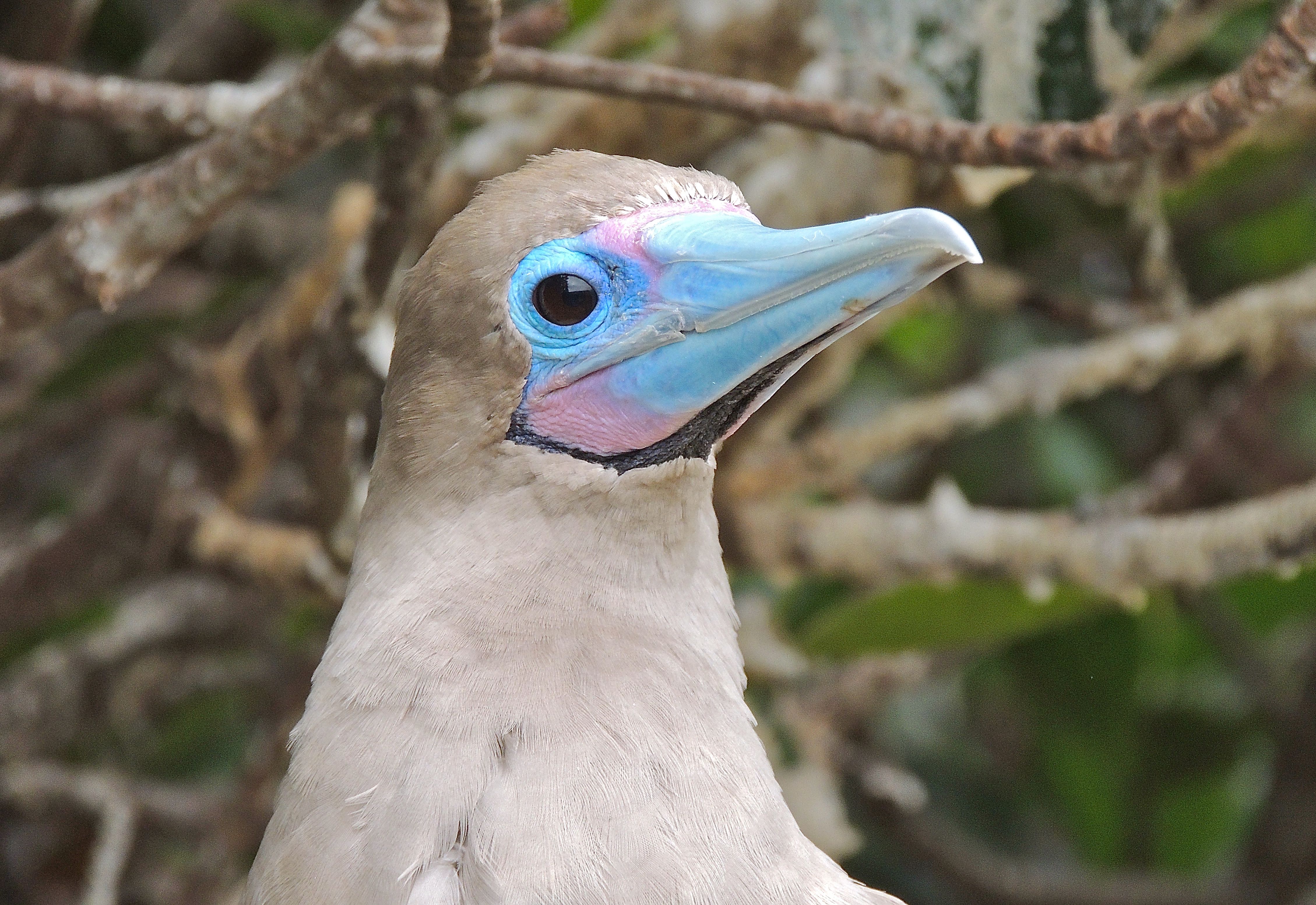 Red-footed Booby - Photo by William Young
Red-footed Booby - Photo by William Young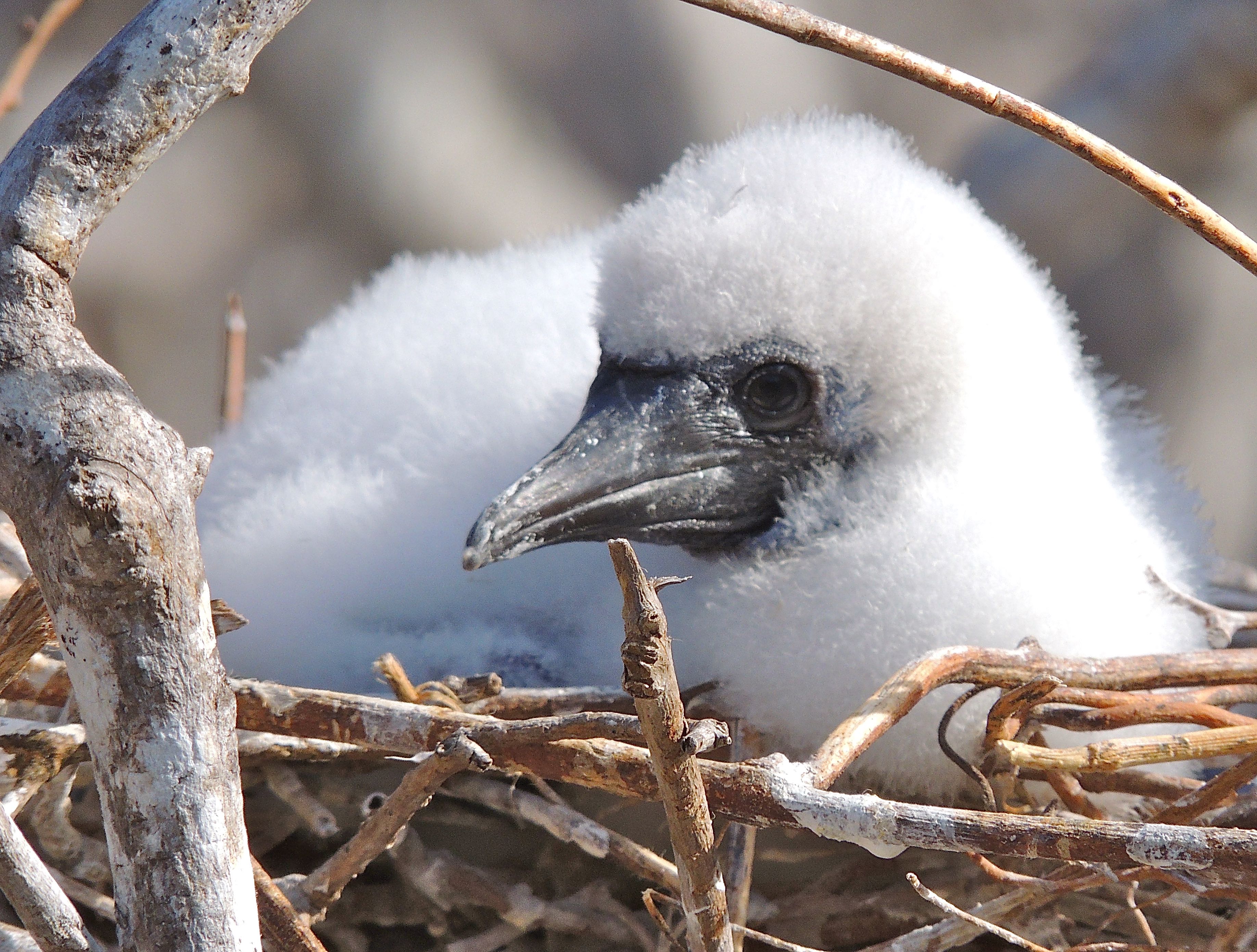 Red-footed Booby Chick - Photo by William Young
Red-footed Booby Chick - Photo by William Young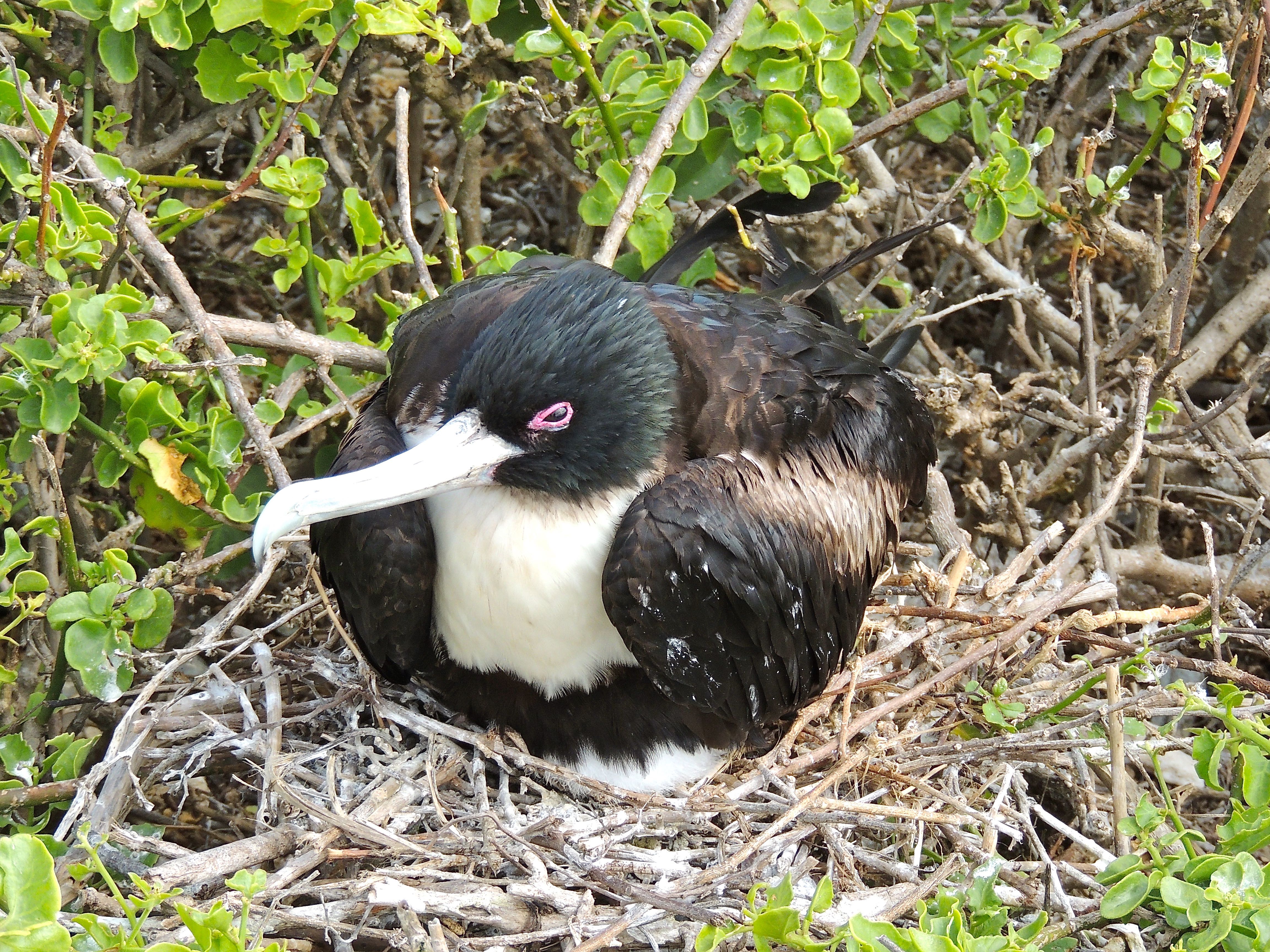 Great Frigatebird - Photo by William Young
Great Frigatebird - Photo by William Young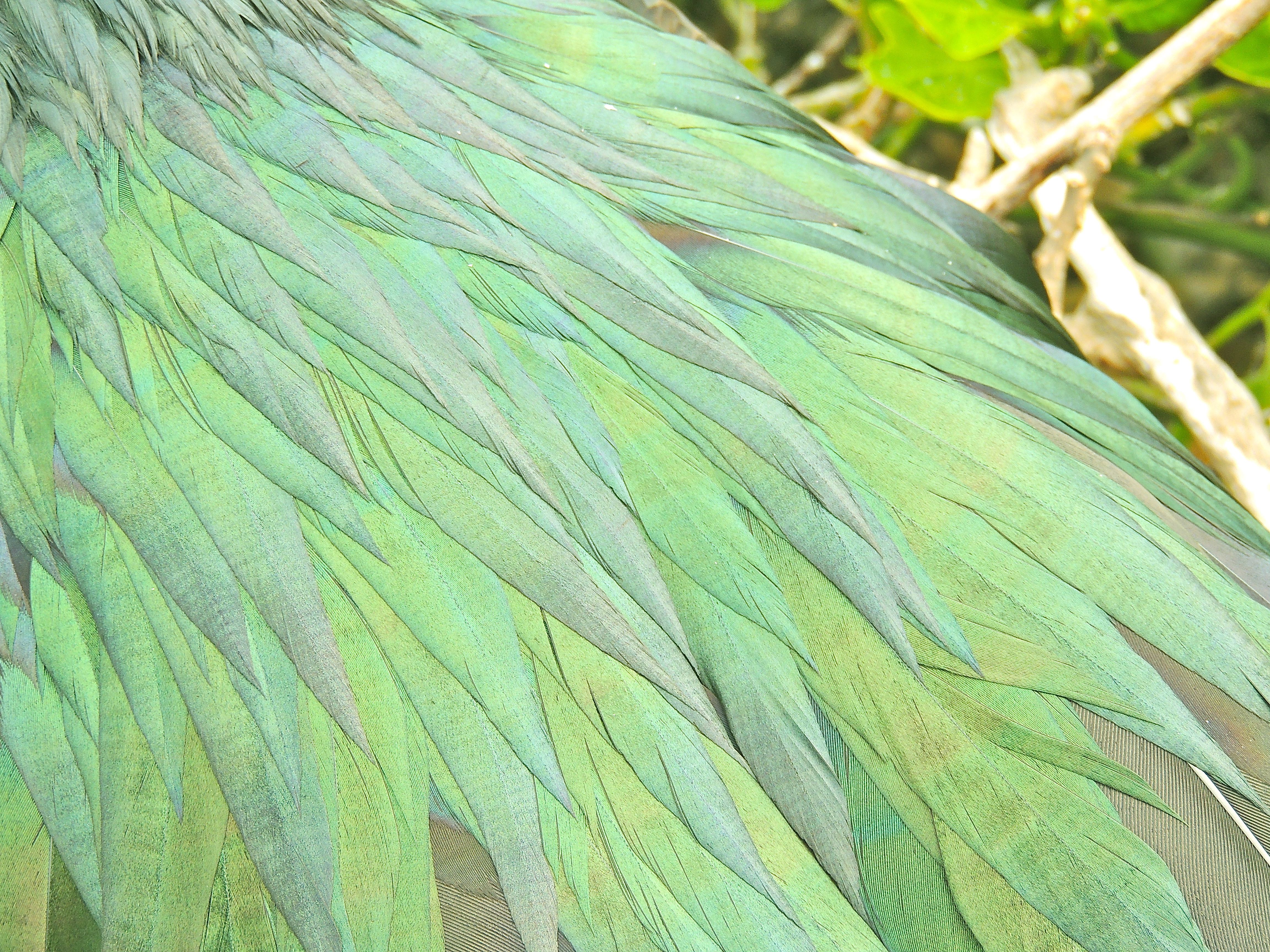 Great Frigatebird Feathers - Photo by William Young
Great Frigatebird Feathers - Photo by William Young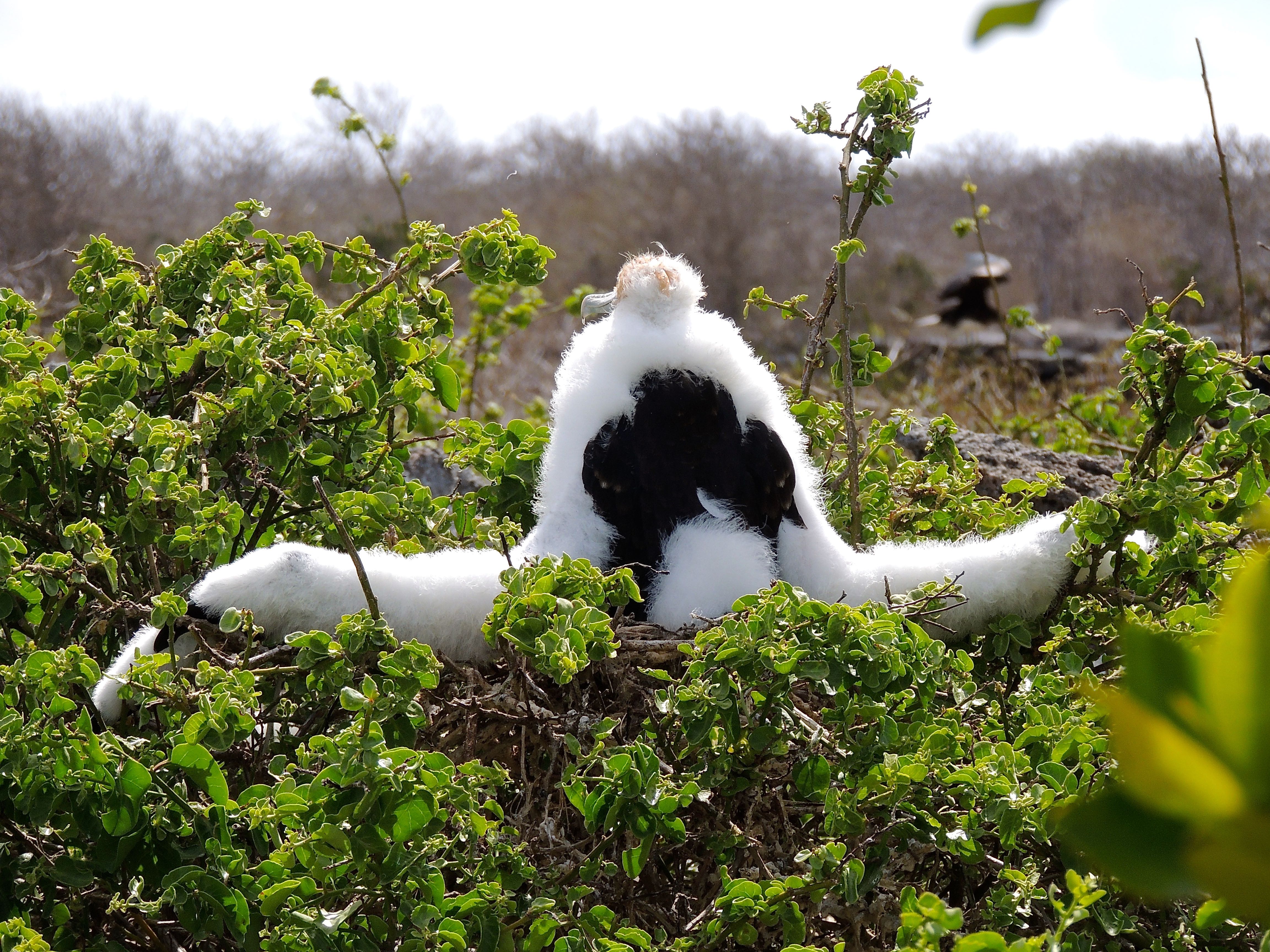 Great Frigatebird Chick - Photo by William Young
Great Frigatebird Chick - Photo by William YoungI saw two new birds for the trip. There were a few Galapagos Mockingbirds hopping around. It is one of the four species of Mockingbirds on the islands. A Yellow-crowned Night Heron was sleeping by some rocks. I saw Warbler Finches, Large Ground Finches, and Sharp-beaked Ground Finches. The latter are sometimes called Vampire Finches, because they drink the blood of living creatures. I saw a Yellow Warbler hopping on the black lava rocks near the water. Not far from there was a Wandering Tattler. The Prickly Pear cacti have spines that feel more like hair. The island is very dry, and the Marine Iguanas are much smaller than the ones I saw on other islands. People frequently talk about birds being dinosaurs, but I think the iguanas bear much more of a resemblance to prehistoric creatures. Solange showed us some skulls of sea lions as well as the skull from a dolphin.
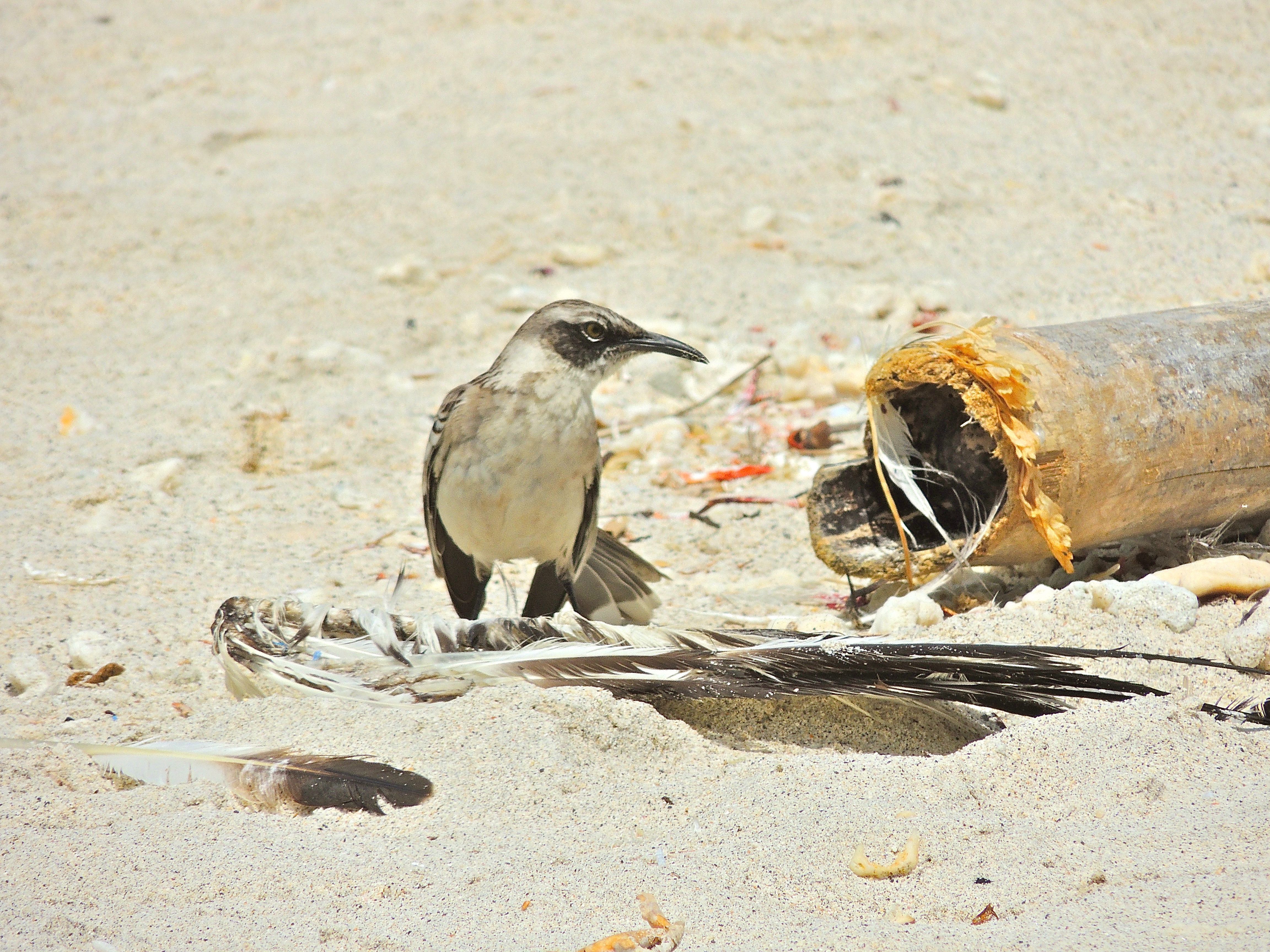 Galapagos Mockingbird - Photo by William Young
Galapagos Mockingbird - Photo by William Young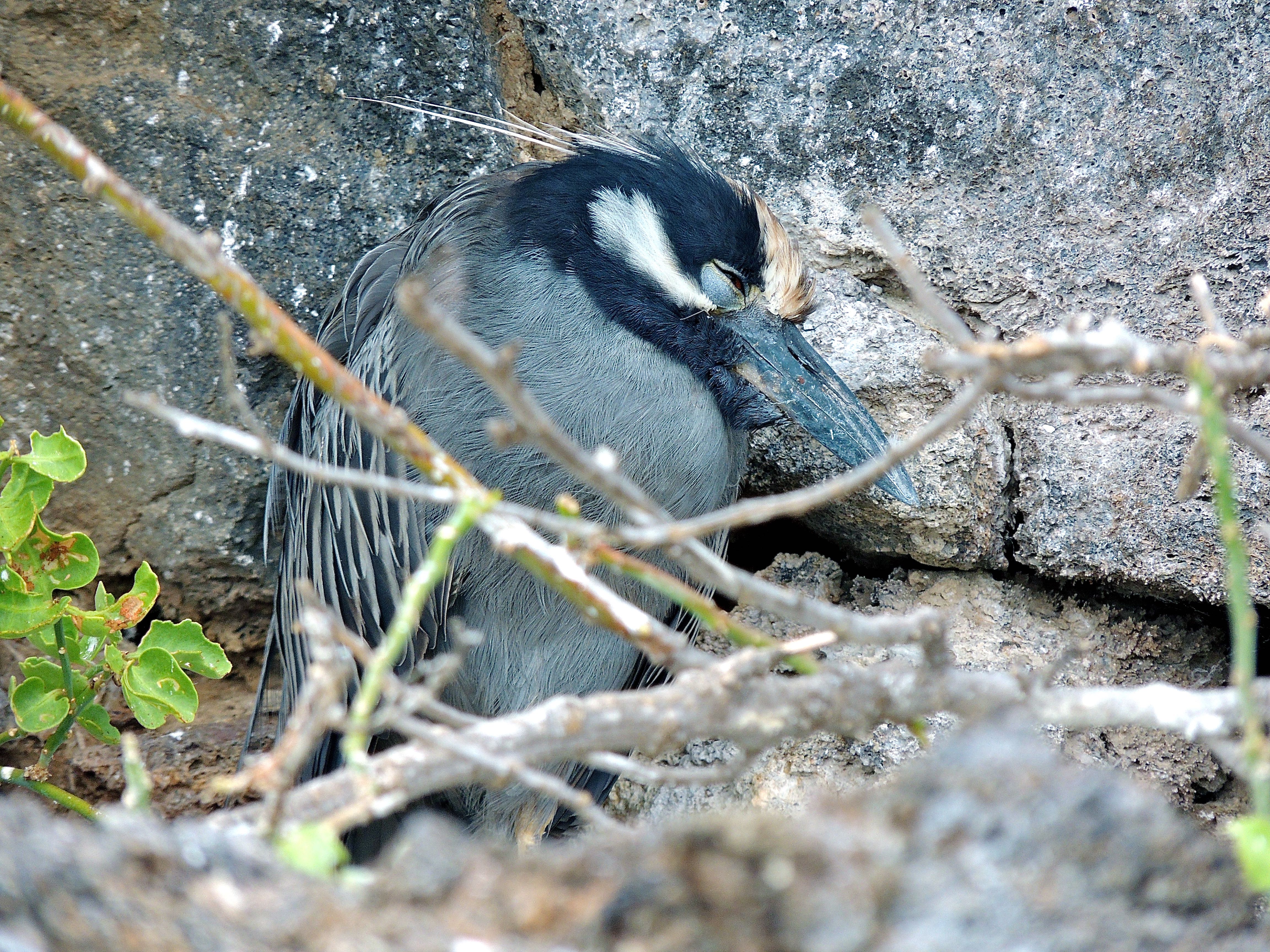 Yellow-crowned Night Heron - Photo by William Young
Yellow-crowned Night Heron - Photo by William Young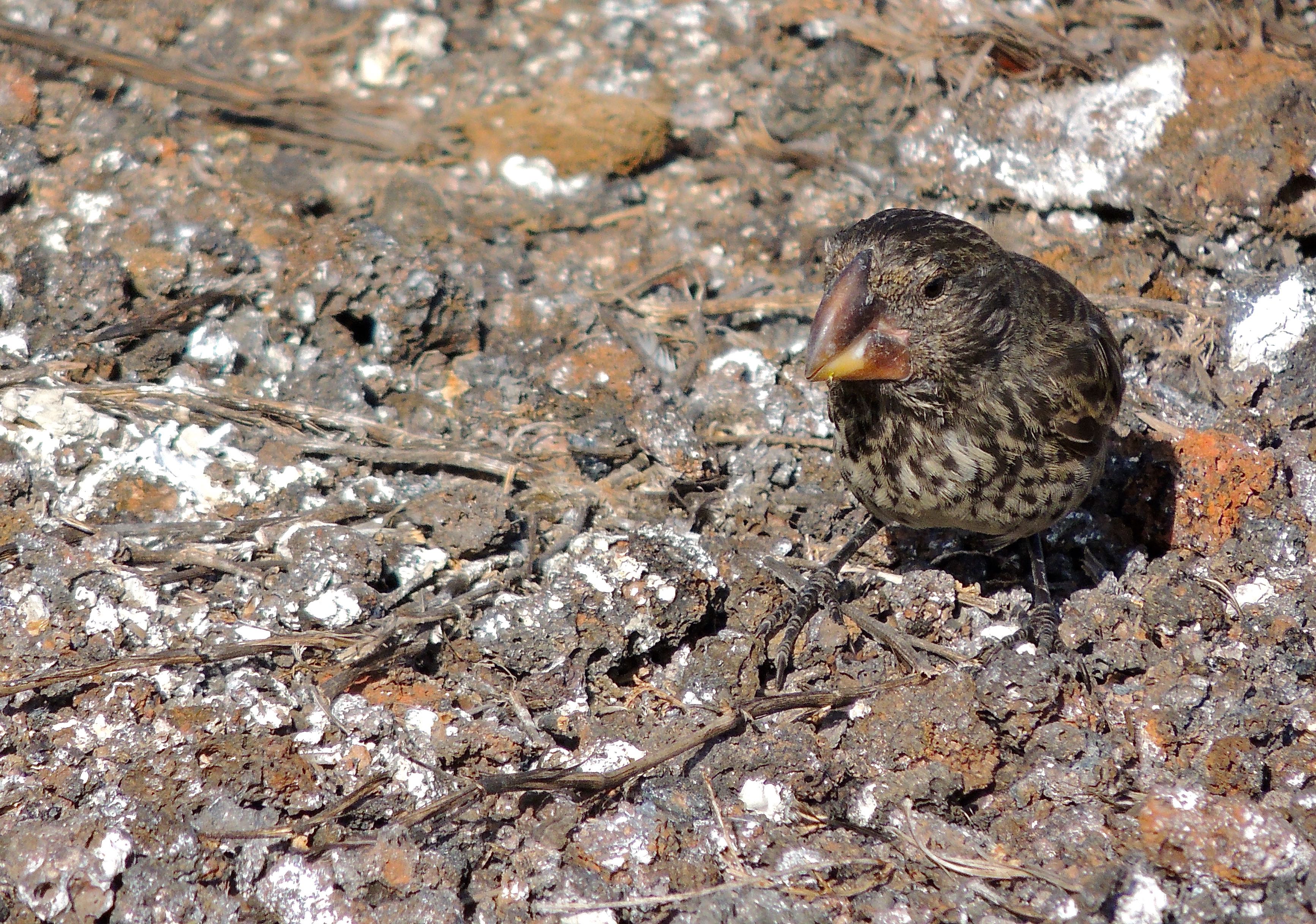 Large Ground Finch - Photo by William Young
Large Ground Finch - Photo by William Young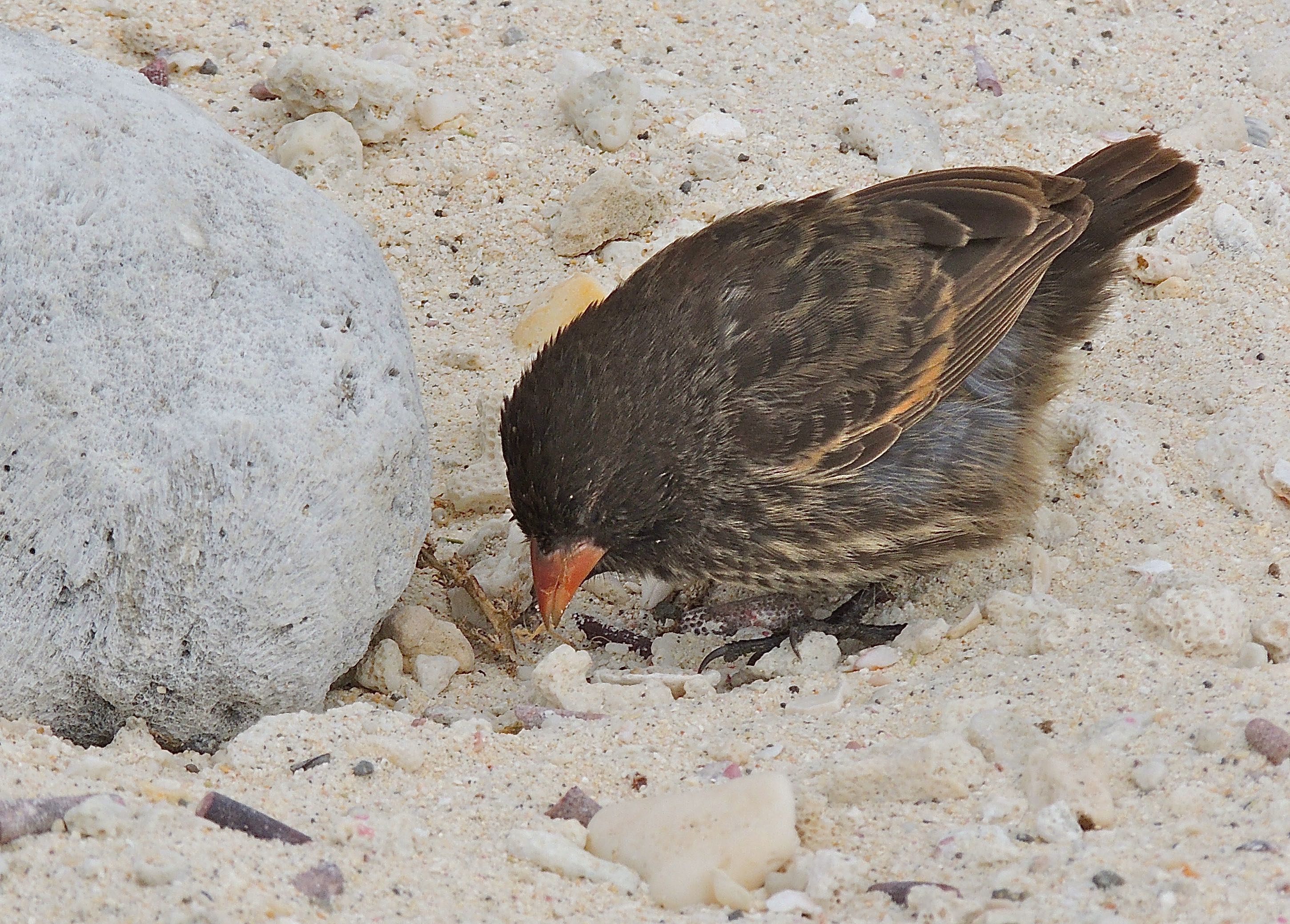 Sharp-beaked Ground Finch - Photo by William Young
Sharp-beaked Ground Finch - Photo by William Young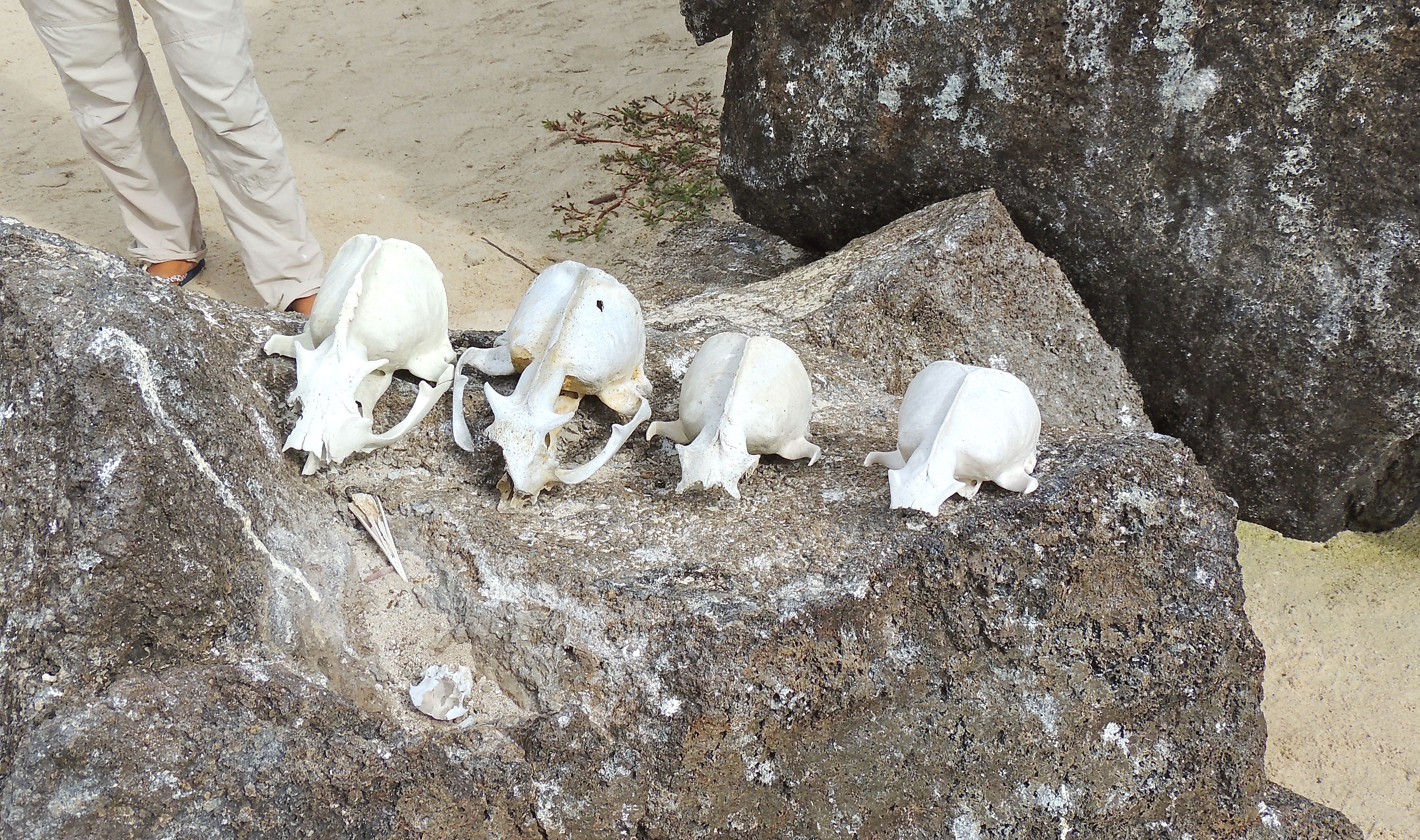 Galapagos Sea Lion Skulls - Photo by William Young
Galapagos Sea Lion Skulls - Photo by William Young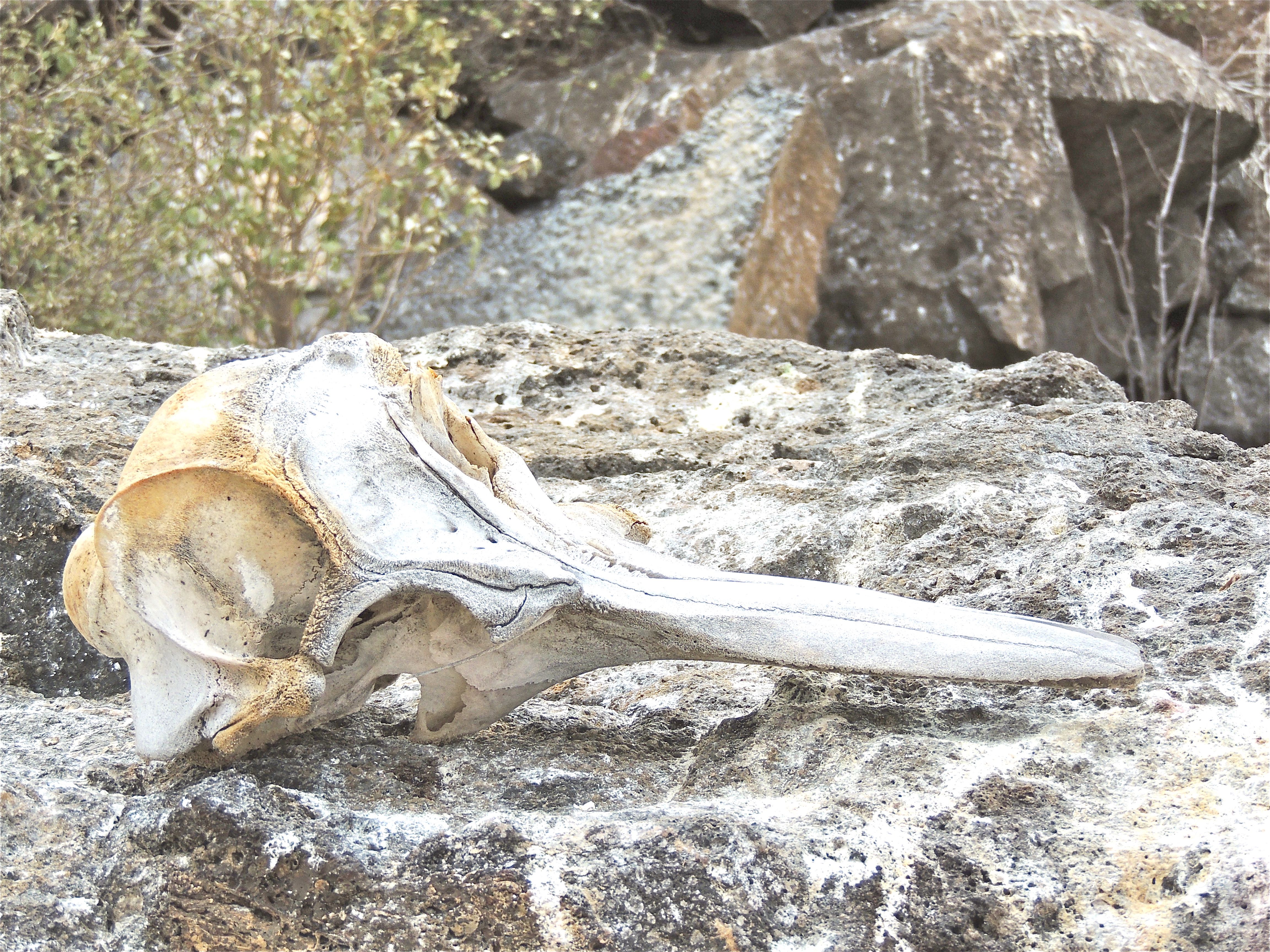 Dolphin Skull - Photo by William Young
Dolphin Skull - Photo by William YoungThis afternoon, we went to another part of Genovesa, and I can understand why it is called the bird island. We saw a lot of boobies, frigatebirds, tropicbirds, shearwaters, storm-petrels, finches, mockingbirds, and doves. I finally was able to photograph a perched Red-billed Tropicbird. We went in a dinghy around the edge of the island, and I could see the tail of a tropicbird sticking out of one of the crevices. I also saw an Audubon's Shearwater going into one of the rock crevices. On the island, I photographed a couple of tropicbirds perched on the rocks. The whole time we were there, the tropicbirds were whizzing in front of us. They fly quickly and are very vocal.
 Red-billed Tropicbirds - Photo by William Young
Red-billed Tropicbirds - Photo by William Young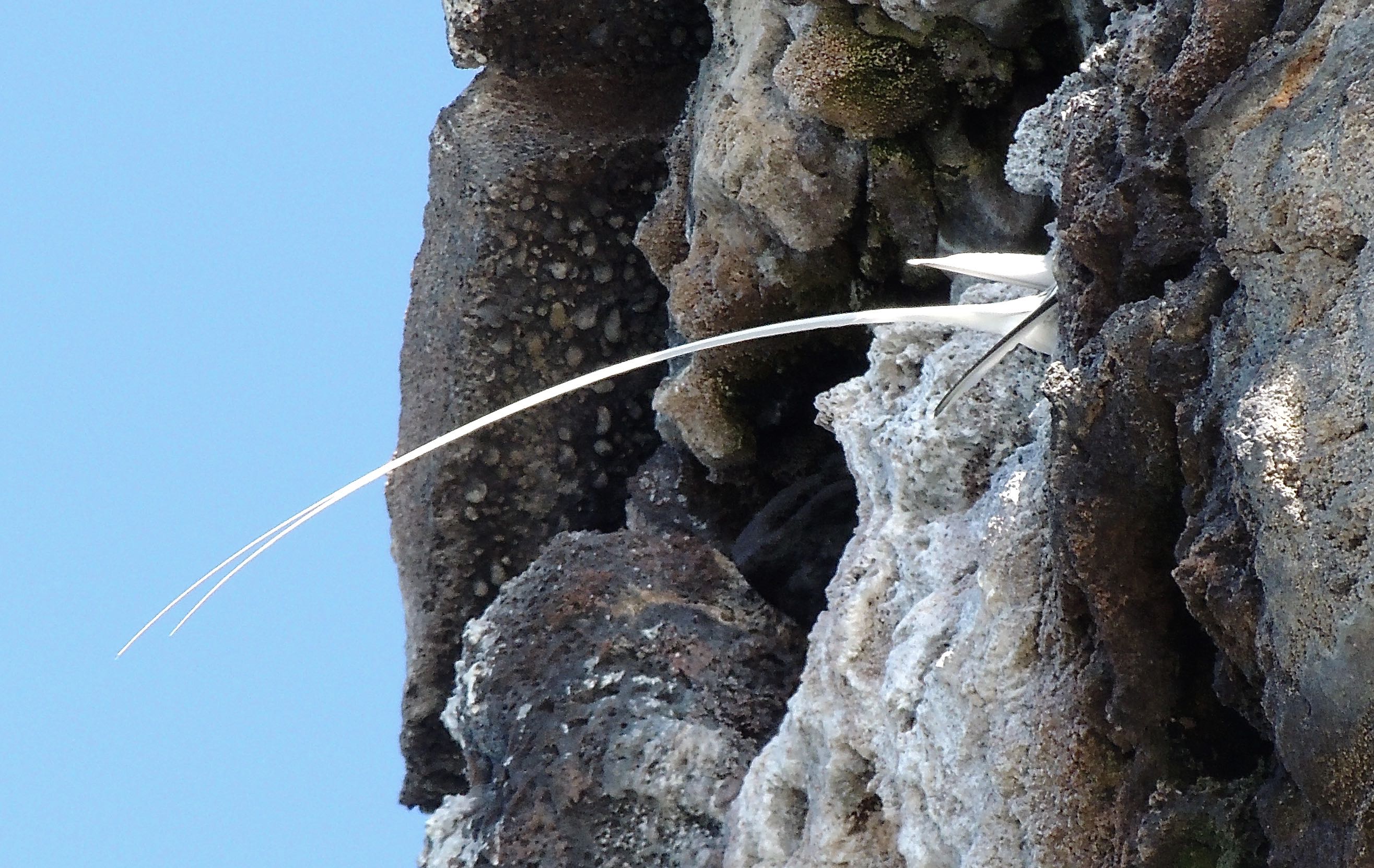 Red-billed Tropicbird Tail - Photo by William Young
Red-billed Tropicbird Tail - Photo by William Young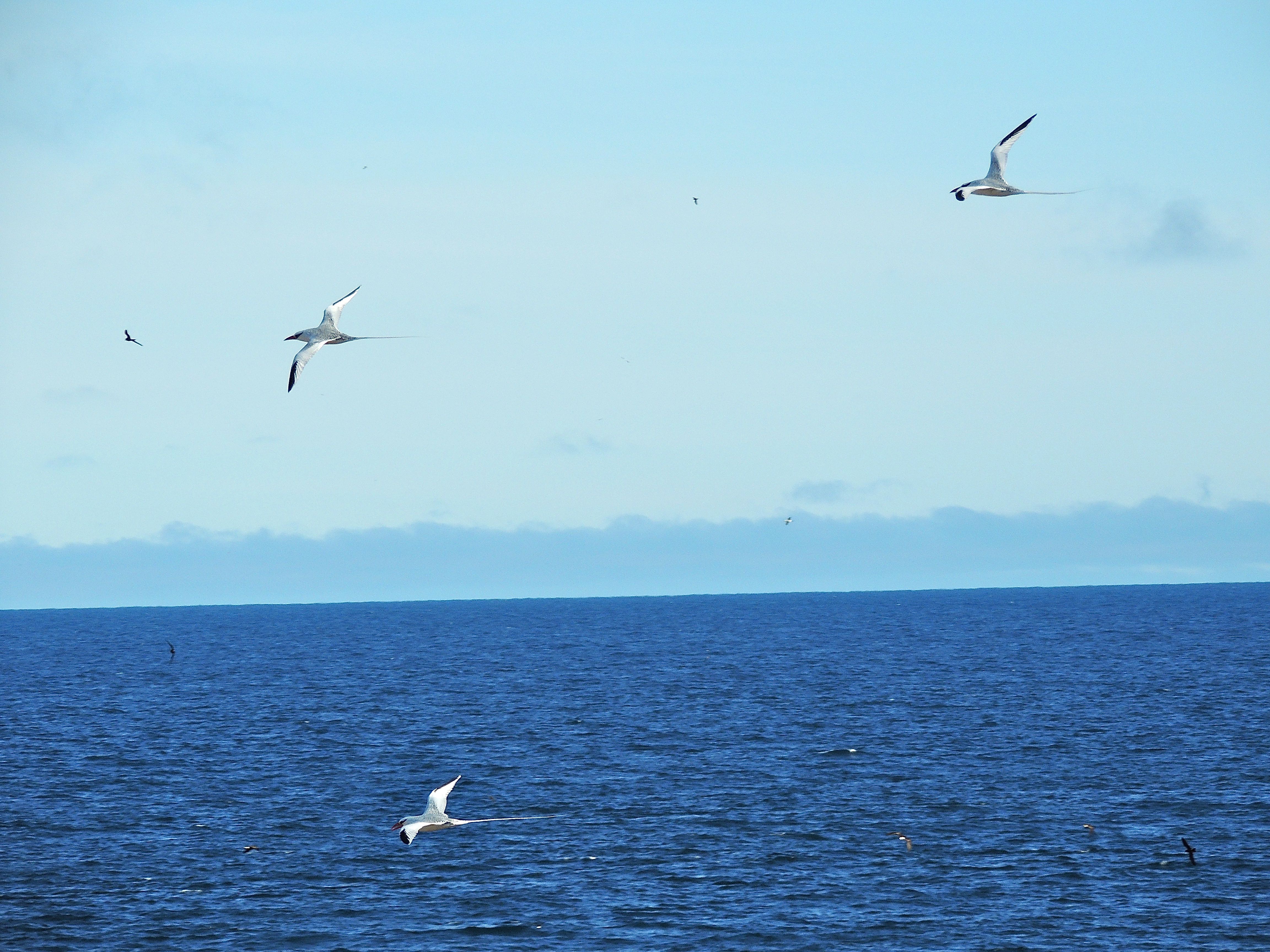 Red-billed Tropicbirds - Photo by William Young
Red-billed Tropicbirds - Photo by William YoungThe island had a lot of Nazca Boobies and some Red-footed. The Nazca Boobies were in all stages of their breeding cycle. Some were gathering nest material. Some were copulating. Some were sitting on eggs. Some were with chicks of various ages. They are very vocal, and some make a noise like a starling's wolf whistle. The Blue-footed Boobies we previously saw make a similar noise. We saw Nazca Boobies vibrating their throats to try to keep cool. Nazca Boobies are white through all stages of their life cycle in order to better deal with the heat. We observed a chick who was leaning far outside the nest so that its beak could be in the shade. This is another way they cope with the heat.
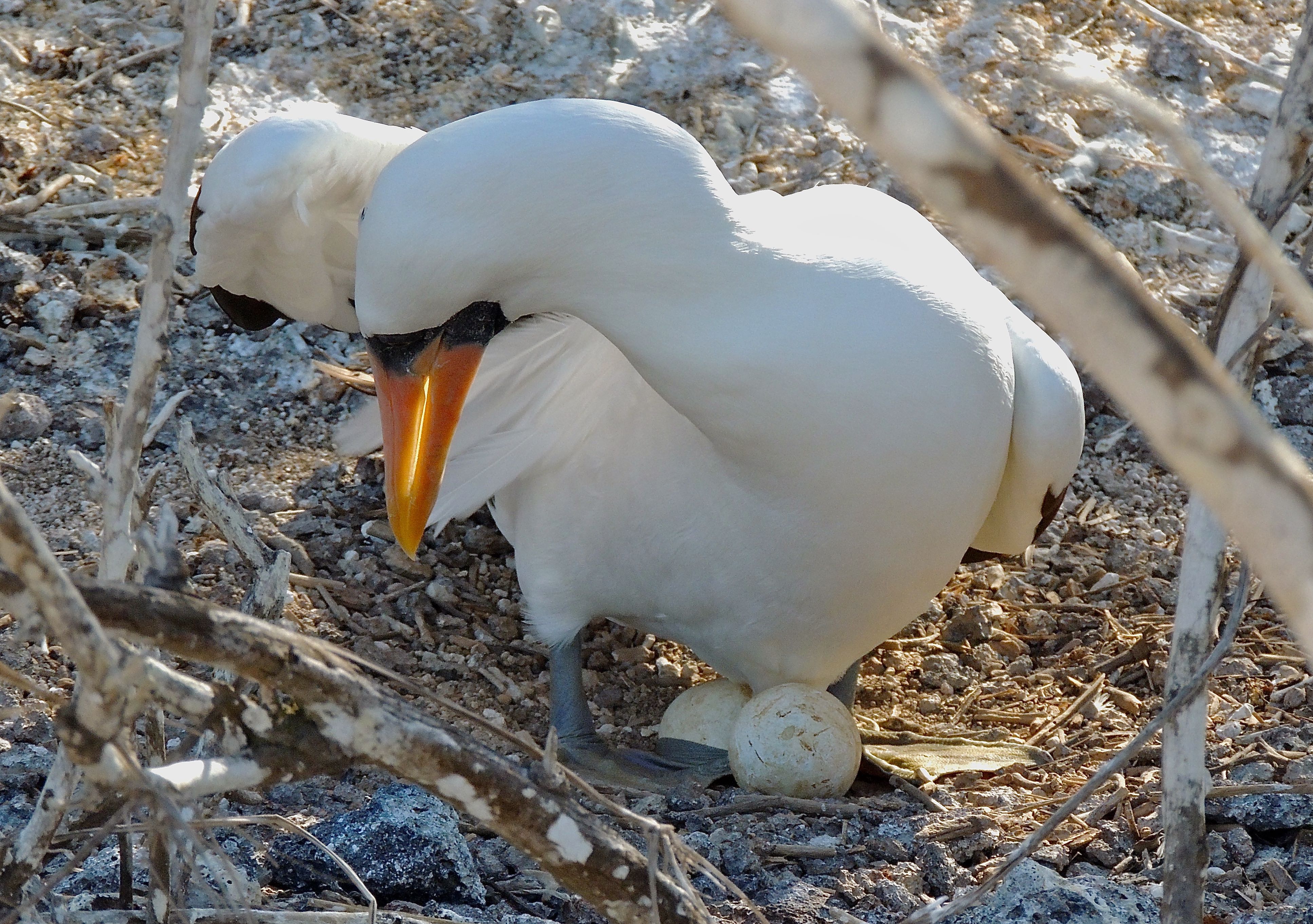 Nazca Booby with Eggs - Photo by William Young
Nazca Booby with Eggs - Photo by William YoungWhile we were walking along the rocks, Solange spotted a Short-eared Owl. It looks like the color of the rocks, so it was difficult to see. Solange said that on islands where the owl lives with the Galapagos Hawk, the owl hunts only at night. But on islands with no hawks, the owl will hunt any time of day. Large Ground Finches and Sharp-beaked Ground Finches were roaming around. On the dinghy ride back to the boat, I saw four Yellow-crowned Night Heron crouching in niches in the rocks. I had earlier seen a Lava Heron on these rocks. Galapagos Fur Seals played in the water. They look a lot like sea lions.
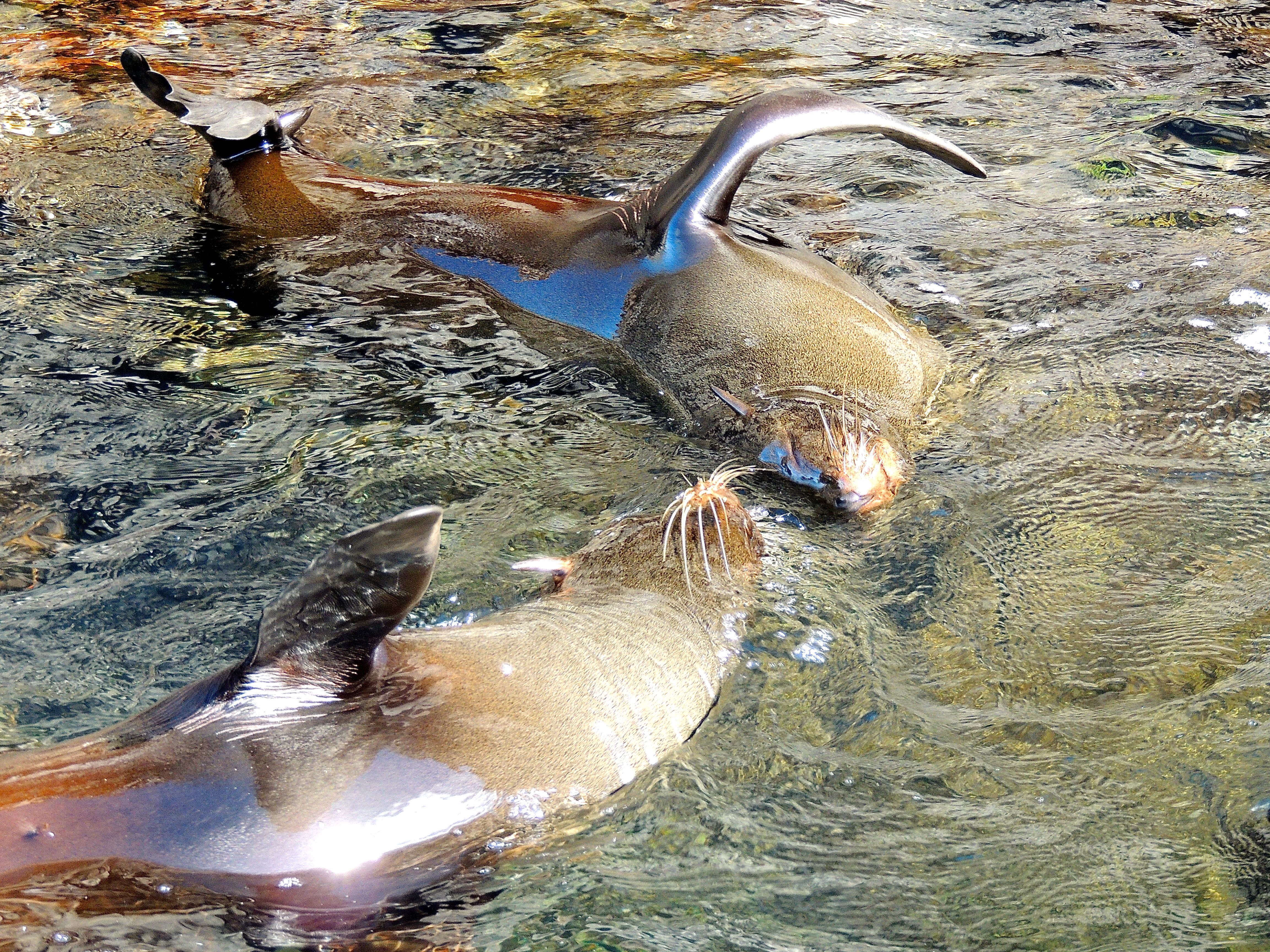 Galapagos Fur Seals - Photo by William Young
Galapagos Fur Seals - Photo by William Young
September 1
When I got up, a large number of Audubon's Shearwaters were in the waters near our boat. We saw a lot more when we went to South Plaza Island this morning. We took a hike along the cliffs where they nest, and it was odd to see shearwaters flying over the rocky paths — I think of them as always being over water. I managed to get a couple of photos of one perched in a rock crevice. Solange pointed out some baby shearwaters screaming from beneath a rock, and I tried to record some audio. I saw a large dark shearwater whom I could not identify. A lot of Red-billed Tropicbirds were flying around, and I was able to take a photo of a perched one.
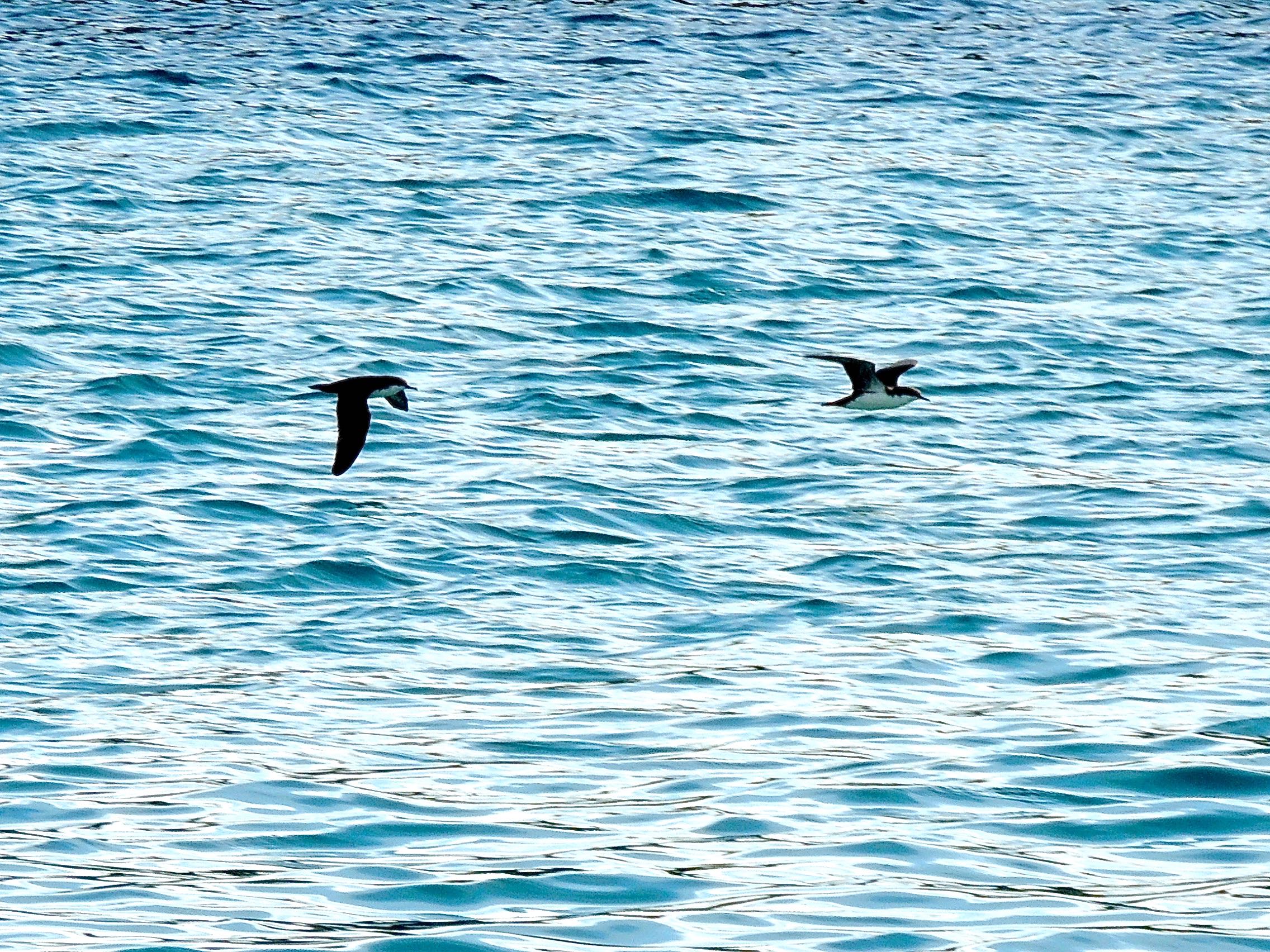 Audubon's Shearwaters - Photo by William Young
Audubon's Shearwaters - Photo by William Young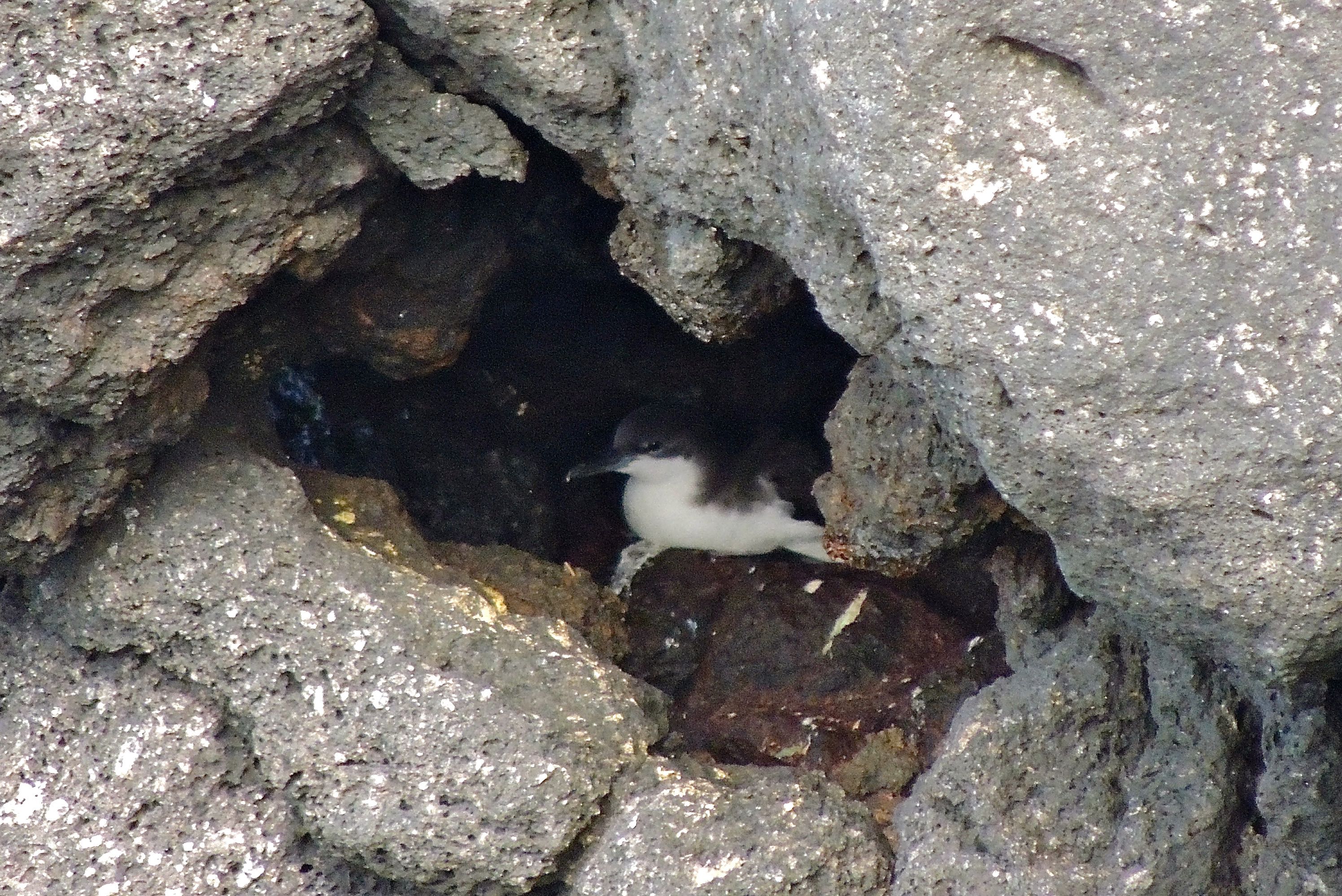 Audubon's Shearwater - Photo by William Young
Audubon's Shearwater - Photo by William YoungSouth Plaza was created by volcanic activity. It is a strangely pretty place, because it has a lot of red in the landscape from the sesuvium plants. Solange showed us the leaf of a leather plant, which is one of the species that can survive in the dry conditions. The islands that get the most rainfall are above 300 meters, and South Plaza is one of the low flat islands. There were a lot of Prickly Pear cacti, which are the primary food for the Land Iguanas. I shot video of an iguana munching on a cactus. The Prickly Pears are dying on the island, and researchers are trying to find out why. Should the cacti disappear, the iguanas would disappear also because they would not have enough to eat. There are also Marine Iguanas on the island, and sometimes they interbreed with the Land Iguanas. The Marine Iguanas have a flatter mouth. Solange said that when the Land Iguanas mate, the male grabs the female and bites her neck while he is on top of her. That hurts, so as soon as he is done, he runs away to avoid retribution. Solange said the male has two penises. The males tend to get more colorful during the breeding season.
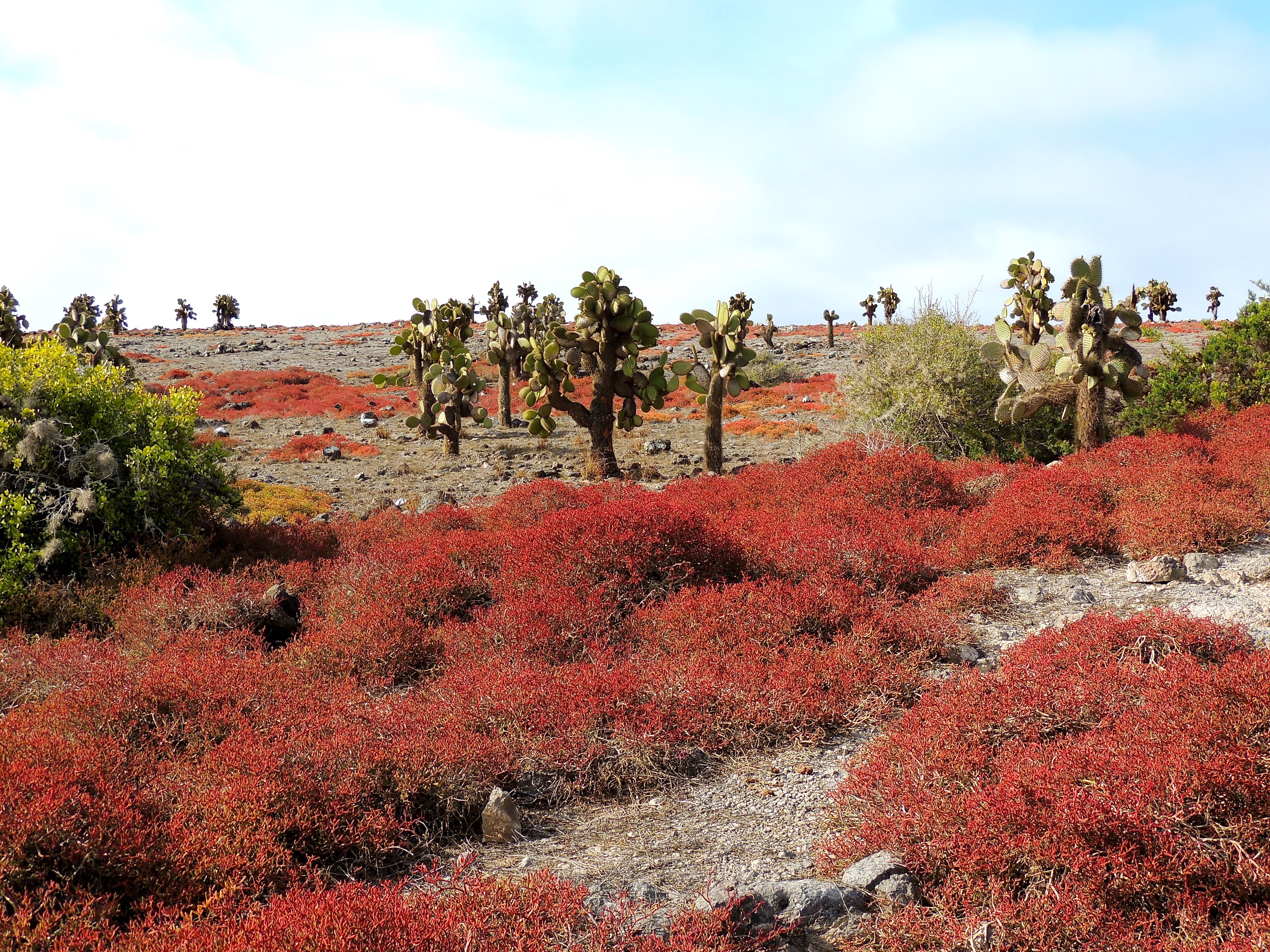 Sesuvium Plants - Photo by William Young
Sesuvium Plants - Photo by William Young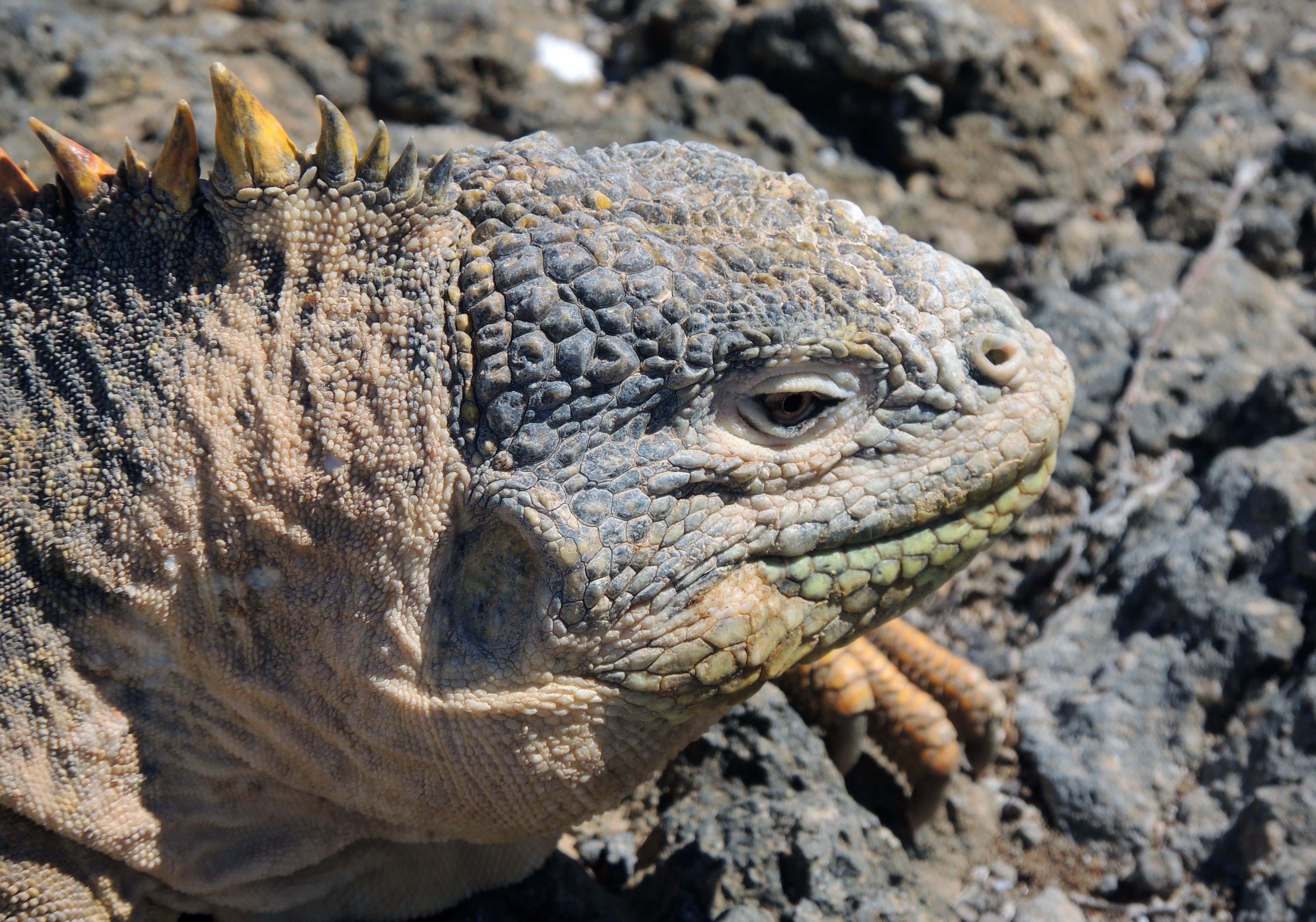 Land Iguana - Photo by William Young
Land Iguana - Photo by William Young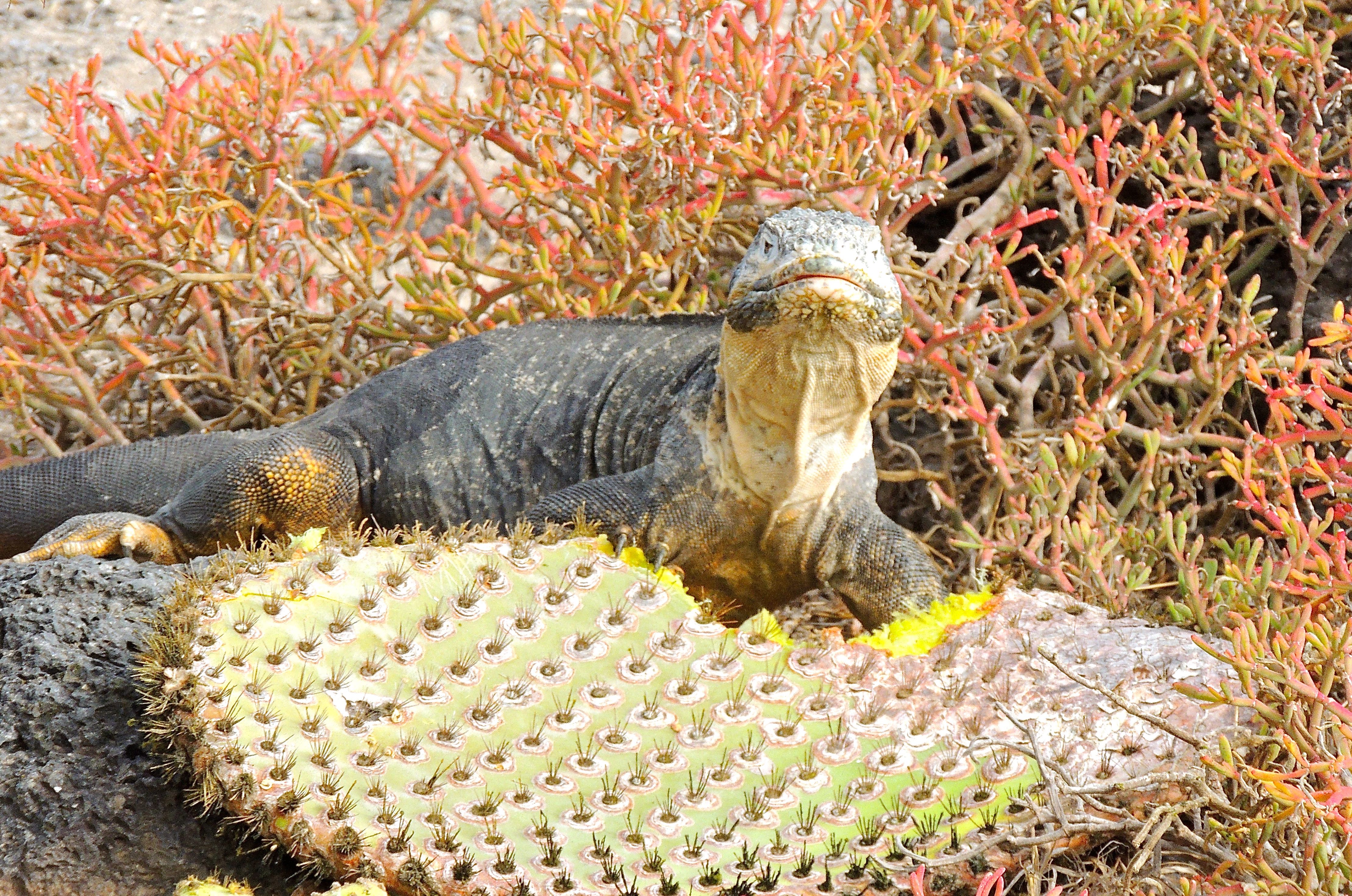 Land Iguana - Photo by William Young
Land Iguana - Photo by William Young Land Iguana - Photo by William Young
Land Iguana - Photo by William YoungAs we walked back to the boat, Solange pointed out some stones that looked polished. She said this was caused by sea lion urine. She said the mother sea lion stays with a newborn pup for a week without leaving to eat so that each can grow accustomed to the smell of the other. We saw a bunch of Small Ground Finches, and I saw a Cattle Egret flying along the shore.
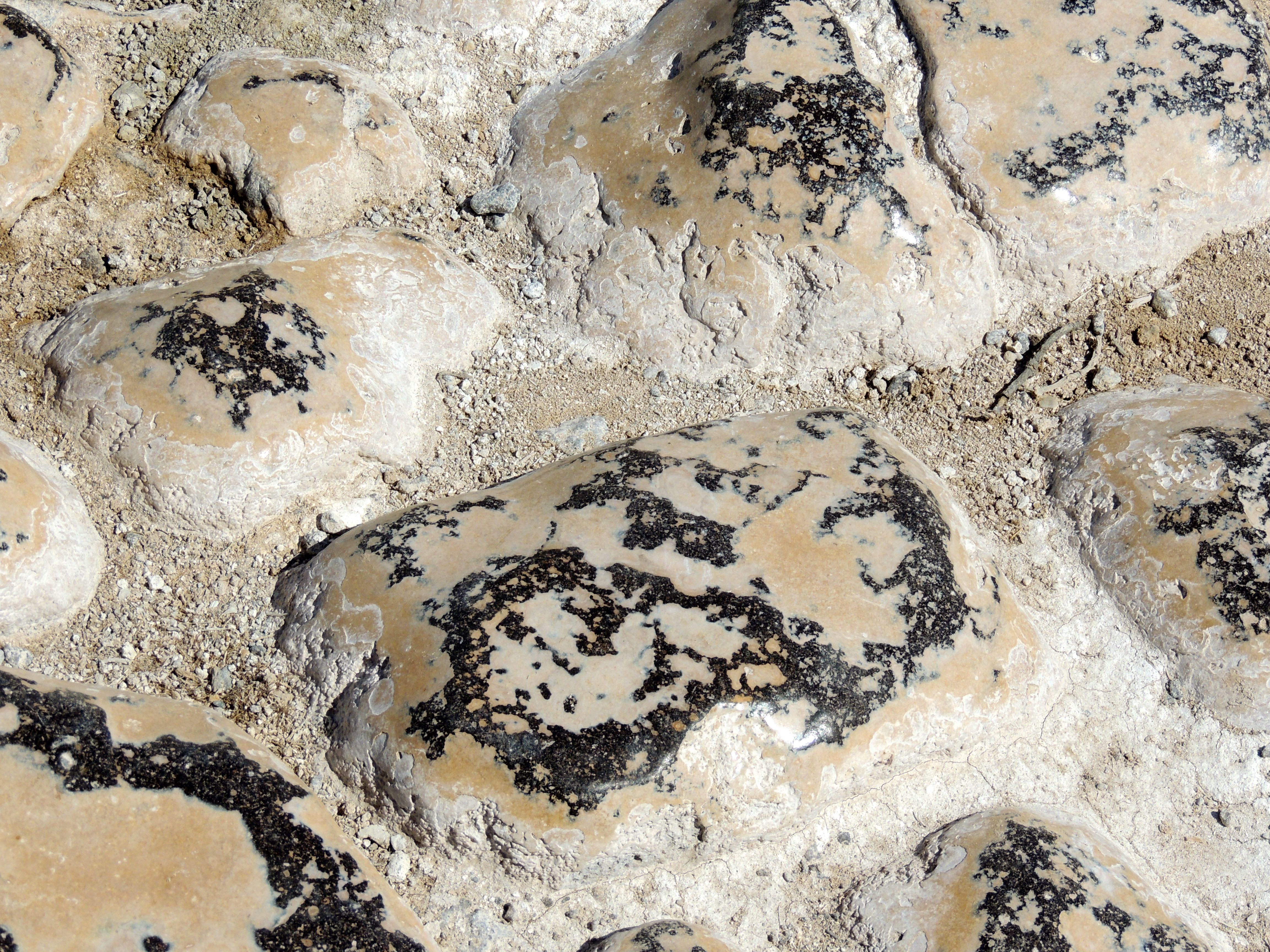 Rock Polished by Sea Lion Urine - Photo by William Young
Rock Polished by Sea Lion Urine - Photo by William YoungAs we were getting ready to explore Santa Fe Island after lunch, one of the crew members started to shout because he had spotted a whale. I saw it come out of the water a few times and managed to get a couple of photo. We soon got into the dinghy and had our final wet landing in the Galapagos. There was a juvenile Galapagos Hawk perched on a stone monument. The population of this hawk in the islands is about 1,000. Solange said four-to-five males help a female to raise a chick. It is the main predator on the island. There is a species of land iguana endemic to this island. The Santa Fe Land Iguana is larger and more golden than the land iguanas we saw this morning. Someone took a photo of me sitting next to one. The hawks will eat the young iguanas, and if they are hungry enough, will go after an adult. A little later while the others were snorkeling, I saw a group of three Galapagos Hawks, including an adult who was very dark. The young ones are light below and look a bit like ratty Red-tailed Hawks.
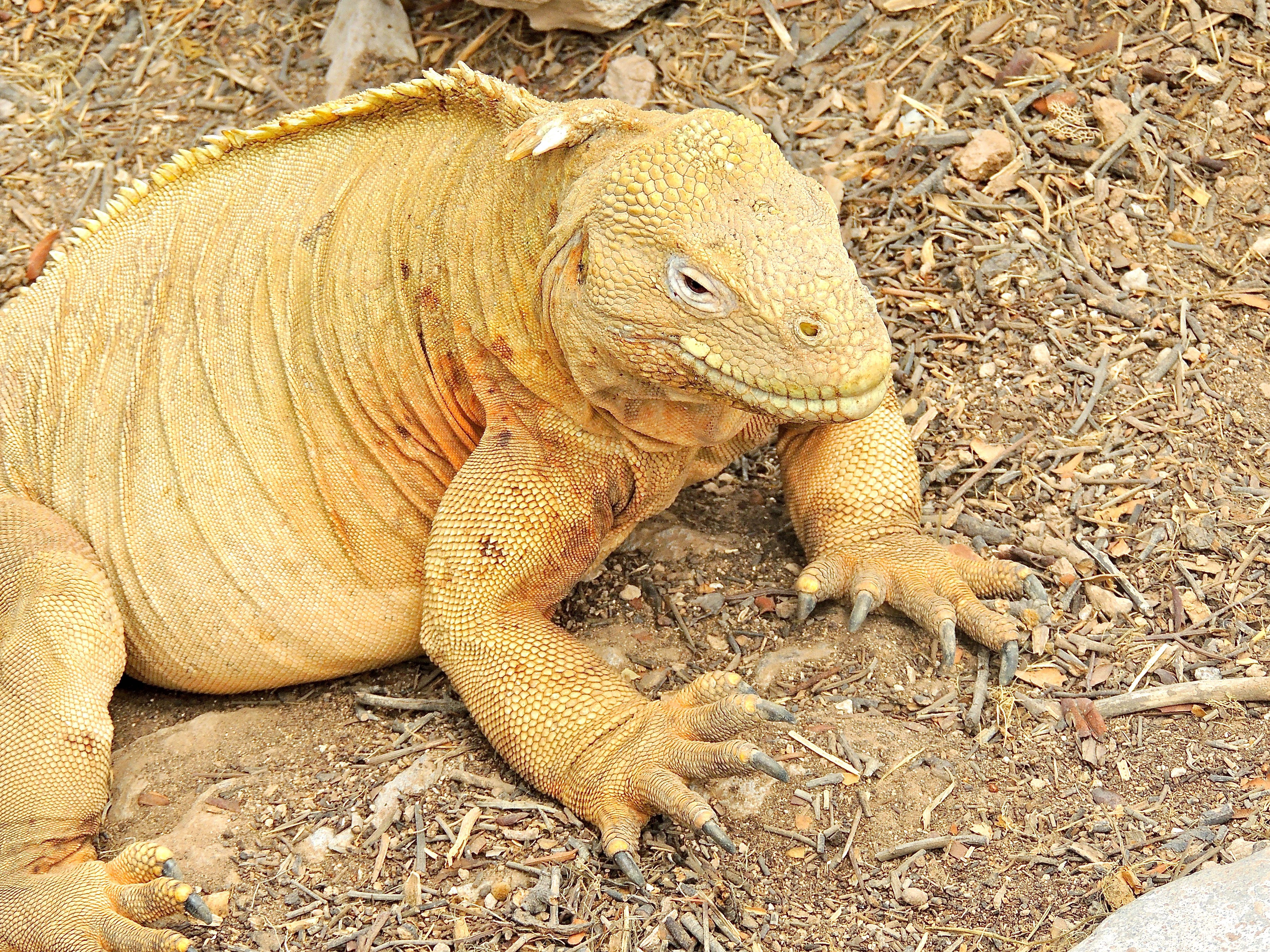 Santa Fe Land Iguana - Photo by William Young
Santa Fe Land Iguana - Photo by William Young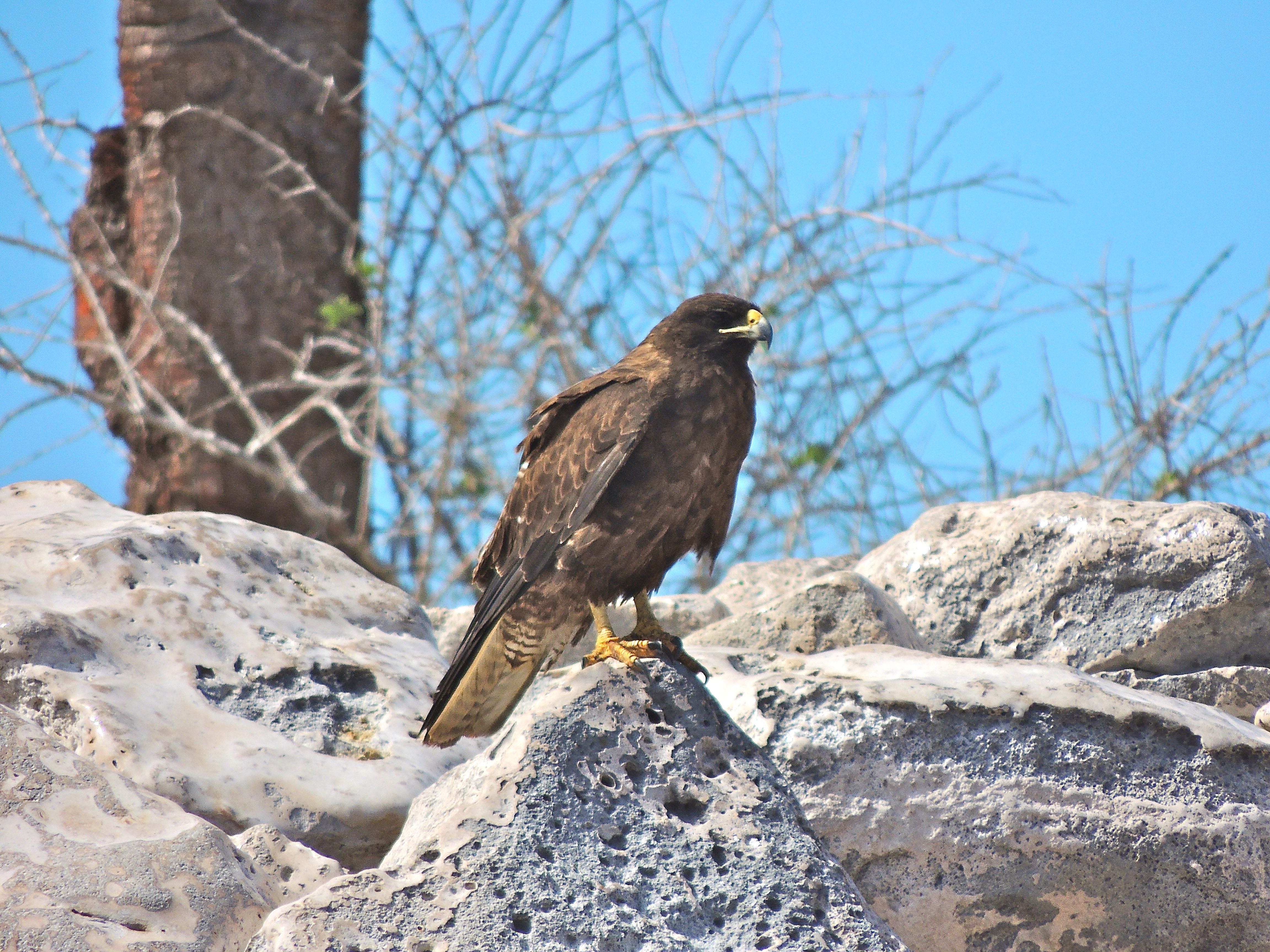 Galapagos Hawk - Photo by William Young
Galapagos Hawk - Photo by William YoungA lot of sea lions were on the beach. When one comes out of the water, it sometimes will walk across other sea lions who are sprawled out. Some sound as if they have a form of Tourette's Syndrome. They also sneeze and cough. Solange showed us the inside of a large cactus, which was like a sponge. The bottom part of the cactus looks like the bark of a tree.
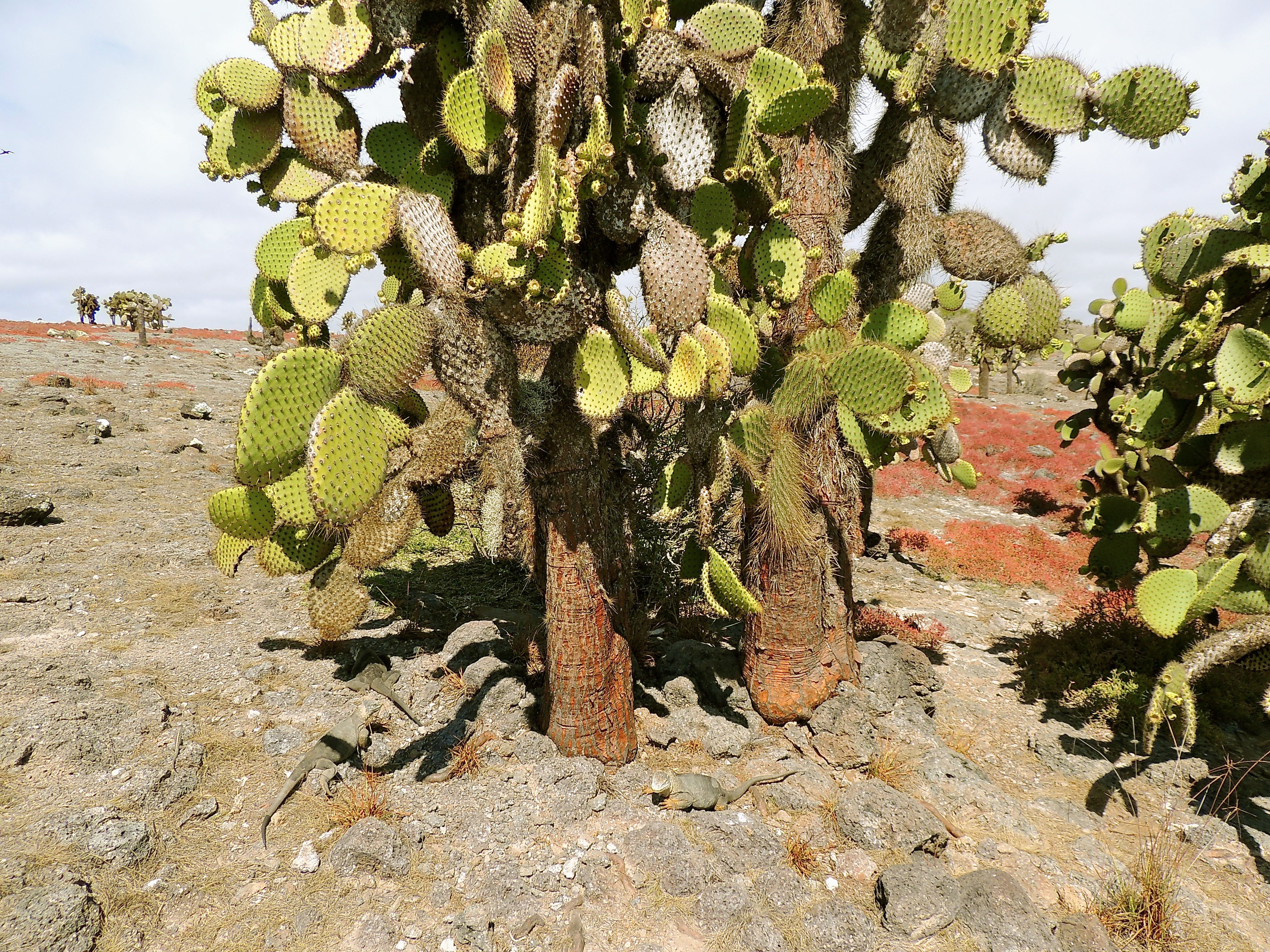 Santa Fe Cactus - Photo by William Young
Santa Fe Cactus - Photo by William YoungTonight, we arrived in Santa Cruz, from where I will be leaving tomorrow. All six of us on the ship will be ending our tours tomorrow, and we all went into the town after an early dinner. I walked up one street and found an area where there was a row of outdoor restaurants. I saw conical ears of corn. I also saw places where you could point to a lobster or fish and ask to have it grilled. A lot of establishments had signs showing Charles Darwin. He is much more widely respected in the Galapagos than in the United States.
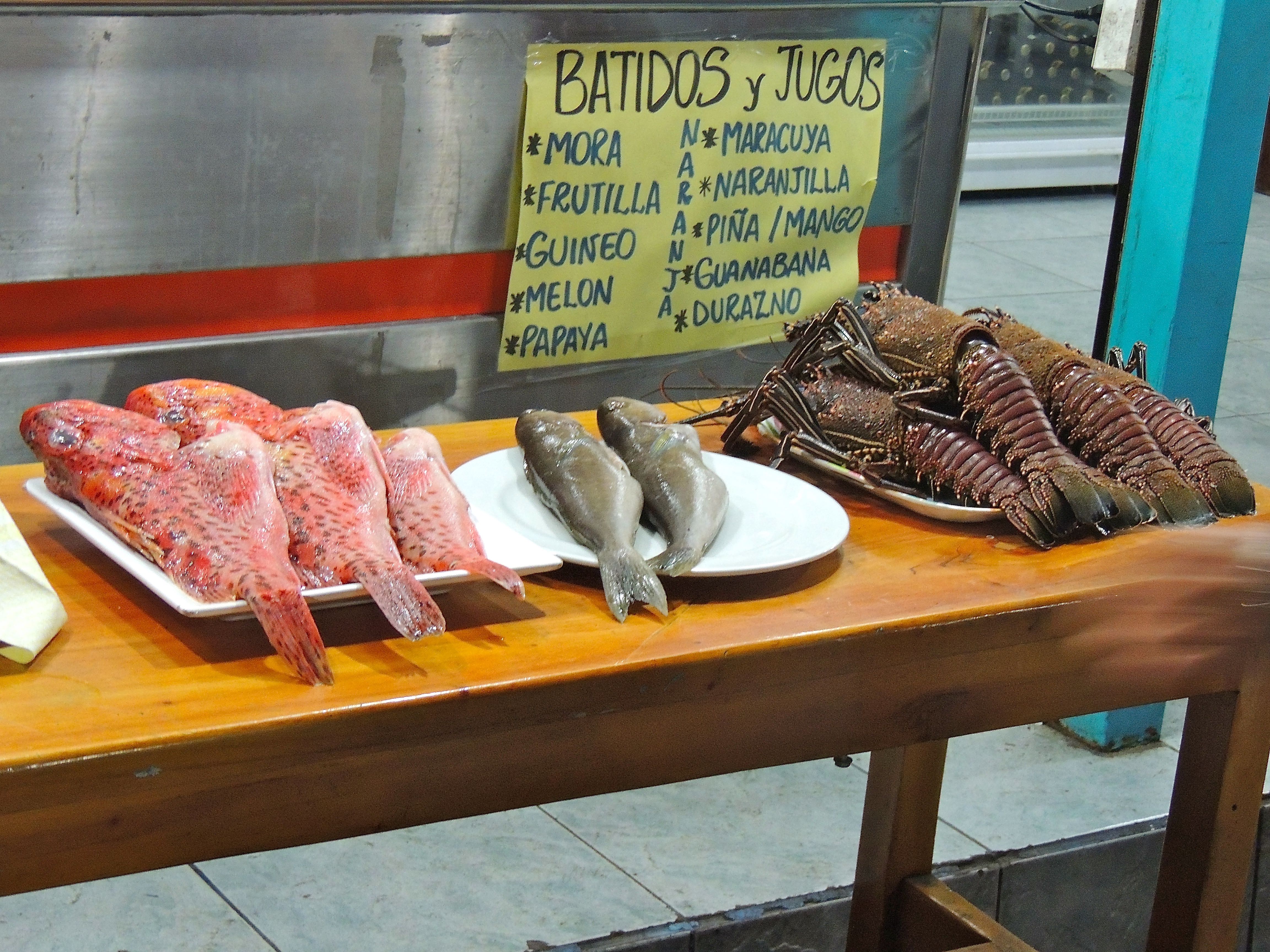 Santa Cruz Restaurant - Photo by William Young
Santa Cruz Restaurant - Photo by William Young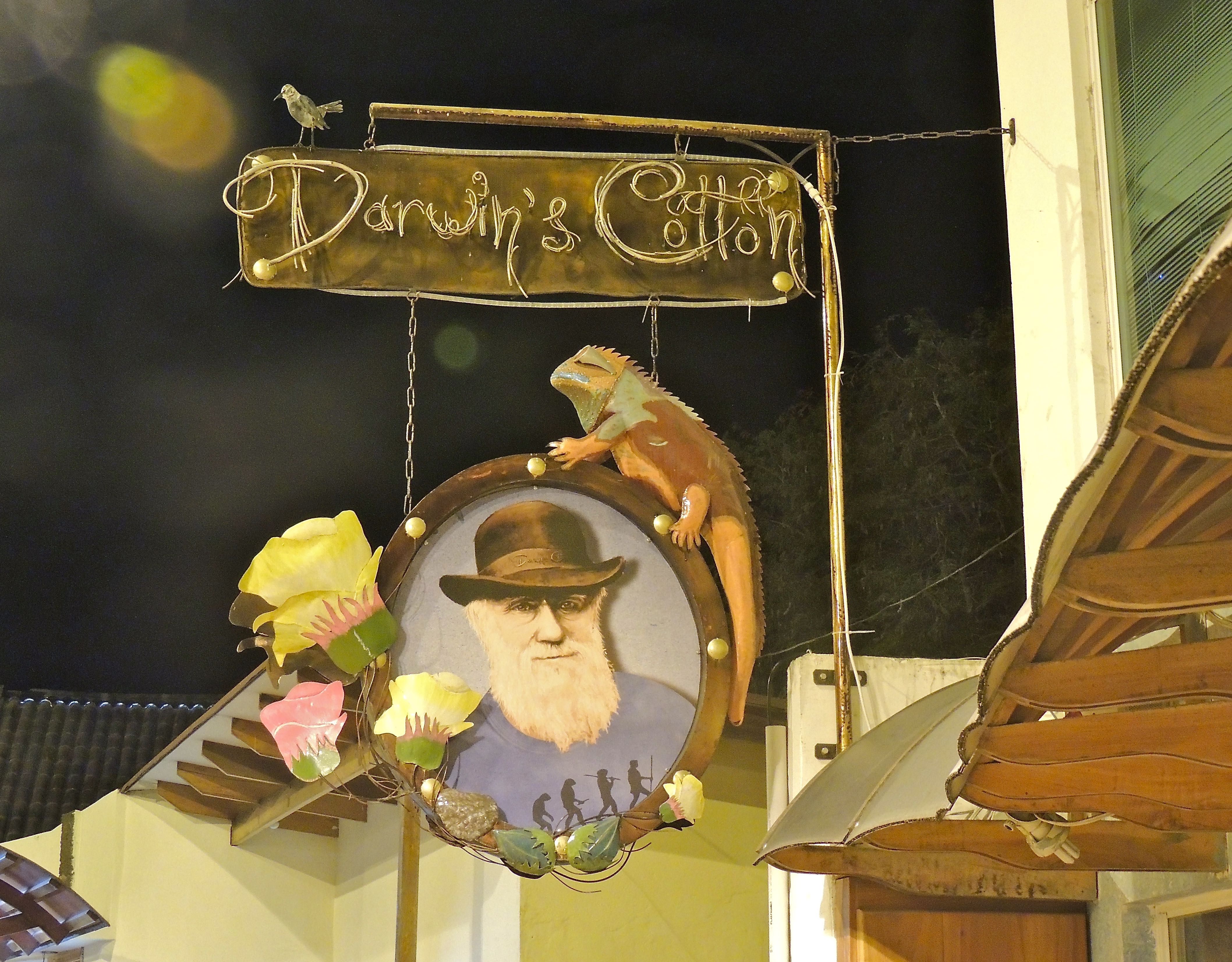 Darwin Sign - Photo by William Young
Darwin Sign - Photo by William Young
September 2
This morning at Santa Cruz, we had breakfast at 6 and left the boat for the final time at 7. We got into a taxi, which was really a small pick-up that seats five. Because we were six people, Solange squeezed into the front seat with me — she is slight, and I feel as if I have lost some weight on the trip.
We drove into the highlands to a sanctuary for tortoises. The ones we saw the other day were imported from Santa Cruz. The tortoises today were native to here. The highlands are moister and greener than the lowlands, which is why the turtles like the area. You could see the vegetation changing as we drove to a higher elevation. The sanctuary is about two kilometers wide, and the tortoises are free to roam. We all put on rubber boots, because the area was muddy. The ones that fit me best were size 42, which made me smile because that is my favorite number. The tortoises on this island have some of the biggest shells of any of the subspecies. There were a couple of empty shells for us to look at, and Laurence was able to climb into one. He backed in and fit pretty comfortably, even though he picked the smaller one. The male's shell is concave below, which makes it easier for him to climb on top of the female when mating. The shell is made of bone, but each year, the tortoise adds a layer of keratin to it. These tortoises can live to be 150 to 200 years and can weigh up to 500 pounds. When the sailors came onto the island to take turtles back to their boats for food, they preferred the females and younger ones, because they were easier to lift. The incubation period is about five months. It starts at the end of the rainy season and ends at the beginning of the rainy season so that the young will have more food available. The females lay six to twenty eggs, with each being the size and shape of a tennis ball. Temperatures at 29 C and above are likely to produce females, while temperatures below 29 are likely to produce males. The tortoises put a layer of soil, feces, and urine over the eggs, and the young stay below this layer for their first month. Tortoises start breeding when they are about 25 years old, but nobody knows how old they are when they can no longer reproduce. Some breed after age 100. The sex of tortoises cannot be determined until they are 10 to 15 years old. I shot video of a tortoise slowly drinking. The tortoises in this sanctuary are numerous, but they are more skittish than the ones we saw the other day. They pull their heads in when someone approaches, and they make a hissing noise when doing this that sounds like air escaping.
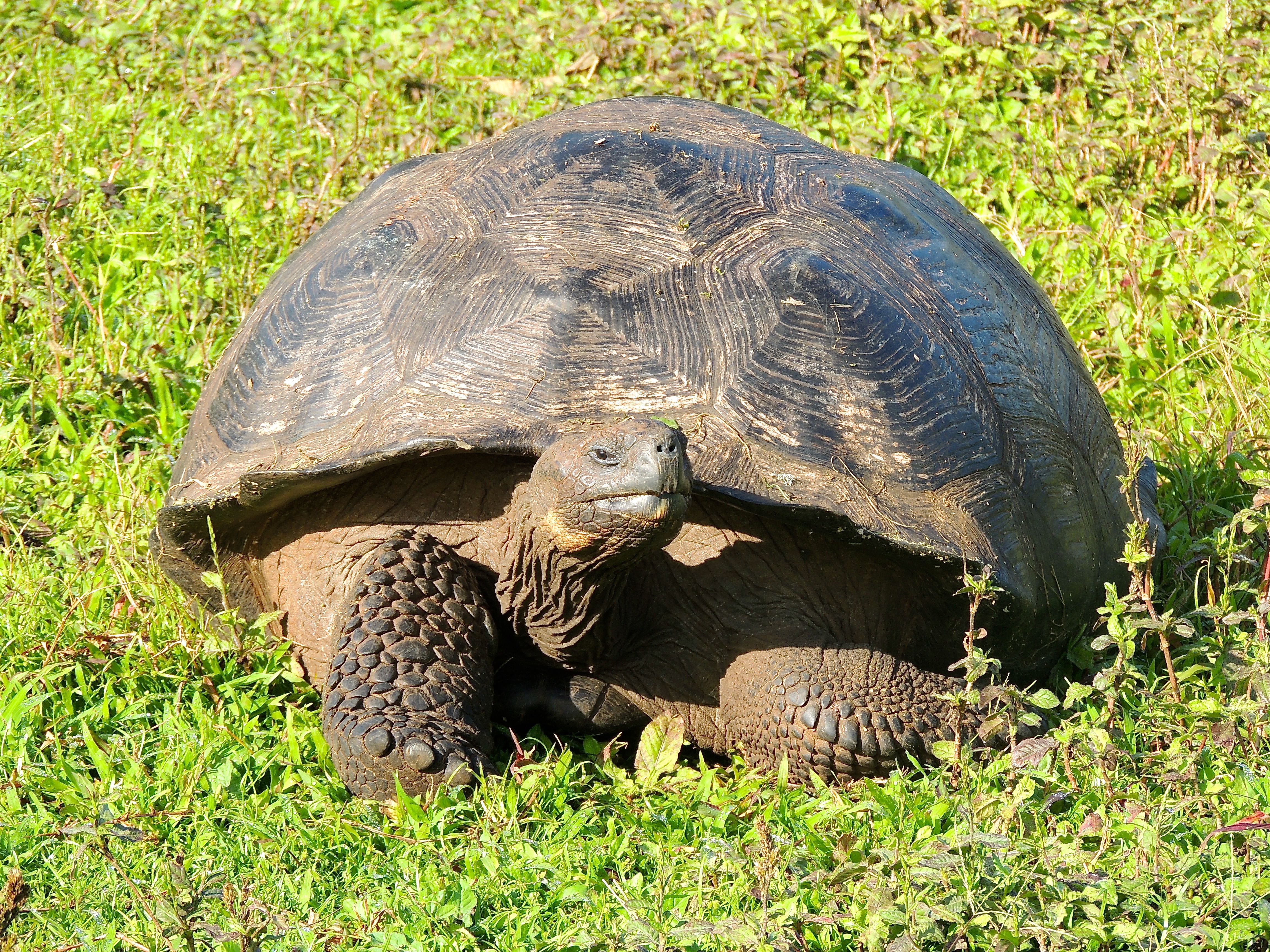 Galapagos Tortoise - Photo by William Young
Galapagos Tortoise - Photo by William Young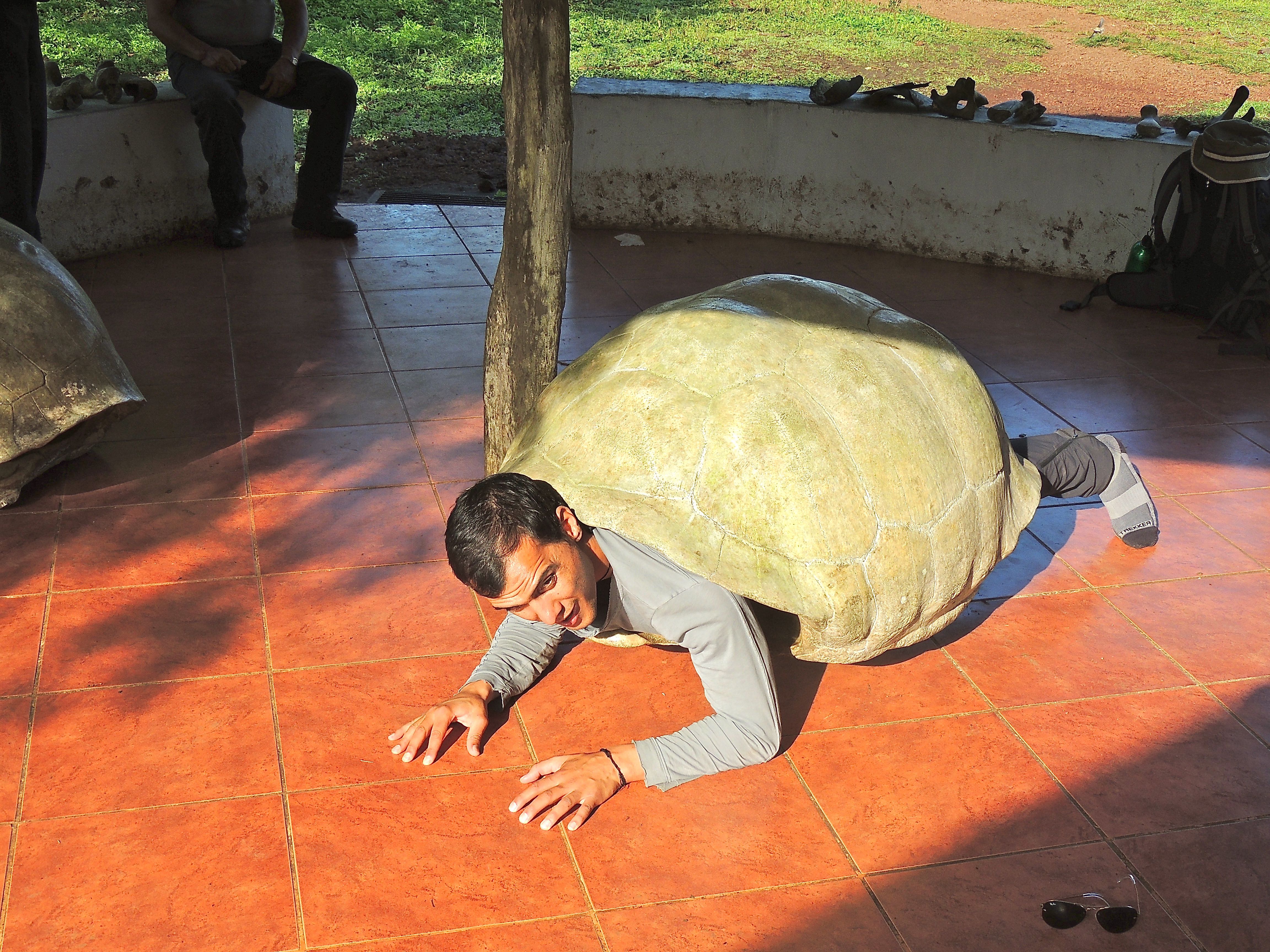 Laurence in Galapagos Tortoise Shell - Photo by William Young
Laurence in Galapagos Tortoise Shell - Photo by William YoungI saw three Common Moorhens near the water. A White-cheeked Pintail swam in a pond, not far from where a Cattle Egret was standing. I saw a Galapagos Flycatcher, and I saw and heard some Smooth-billed Anis. There were a lot of Small Ground Finches hopping about. The sanctuary also has a lava tube that extends deep into the ground. We walked down the steps to enter it and walked part of the way down. After that, we headed for the other end of Santa Cruz to catch a ferry to the airport. My flight was delayed an hour, which gave me a chance to write up my field notes this morning.
When I finally arrived in Quito, Gustavo was at the airport to meet me. Our schedule got thrown off by the airline delay, so we did not do any birding. We got stuck in Quito rush hour traffic and did not get to Guango Lodge until 8. They prepared a delicious dinner for us. They also gave us a cup of canelazo, which is a hot welcoming drink with a lot of cinnamon and a touch of passion fruit. A great many stars were visible, because there is little light pollution here. The night was very cold, with temperatures dipping to the low 40s. The kitchen prepared a hot water bottle for us to take to bed. I fell asleep quickly after a long day of travel and tortoises, and I did not wake up until 5 minutes before my wake-up alert.
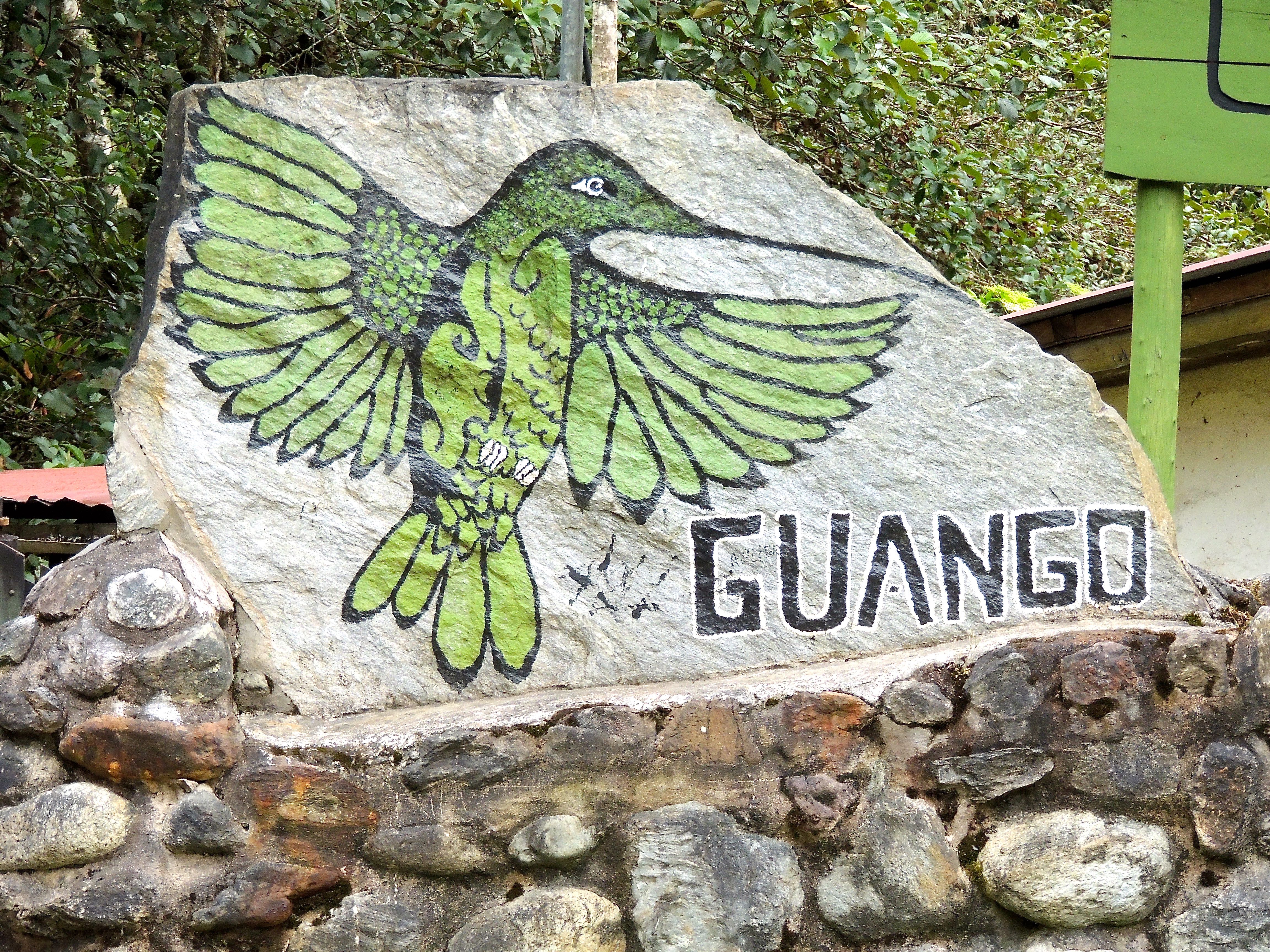 Guango Lodge - Photo by William Young
Guango Lodge - Photo by William Young
September 3
We drove this morning from Guango Lodge through bush paramo. We stopped on a road where we could see the Antisana Volcano, which is covered with snow. We saw a Pale-naped Brush Finch, who is yellow below. We heard a Tawny Antpitta's three-note whistle and eventually saw one perched on a branch. I saw a Grass Wren, which is the same species as what we call the Sedge Wren in the United States. I could see the striped pattern on its tail, and I recorded some of the song. We saw a Giant Conebill, who is not giant. It has a gray back and is rufous below. It has white below the eye and utters a chittering call. It is restricted to Bolivia, Peru, and Ecuador, and it is uncommon in its range. We also saw Cinereous Conebills, who have a blue-gray back, are buffy underneath, and have a small white patch on the wings. The male Paramo Seedeater looks like an all-gray junco with a white bill. White-throated Tyrannulets and Spectacled Whitestarts were hopping around. A lot of Brown-bellied Swallows were flying, and we later saw one at a nest hole in a mud bank.
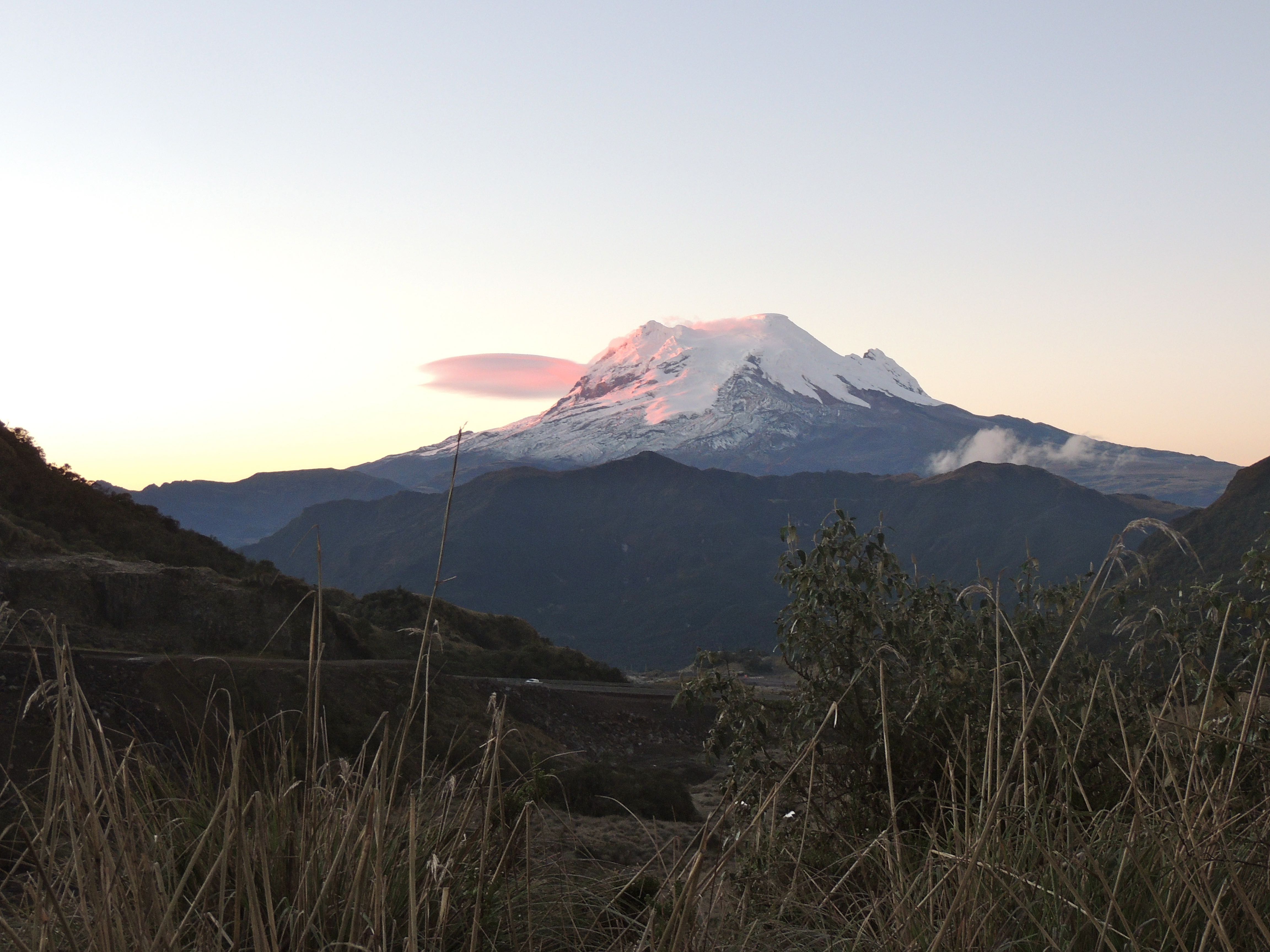 Antisana Volcano - Photo by William Young
Antisana Volcano - Photo by William YoungThe Stout-billed Cinclodes is a nervous brown bird with a short bill. The Andean Tit-Spinetail is stripy with a white eyebrow. The Many-striped Canastero is also stripy and has a buffy throat. Canastero means "basket weaver,", referring to their nest. The male Plumbeous Sierra Finch looks like an all gray junco with a whitish bill. The female looks like a female House Finch. We saw a male and female Ecuadorian Hillstar. The male has a purple head and a white belly. The female is buffy below.
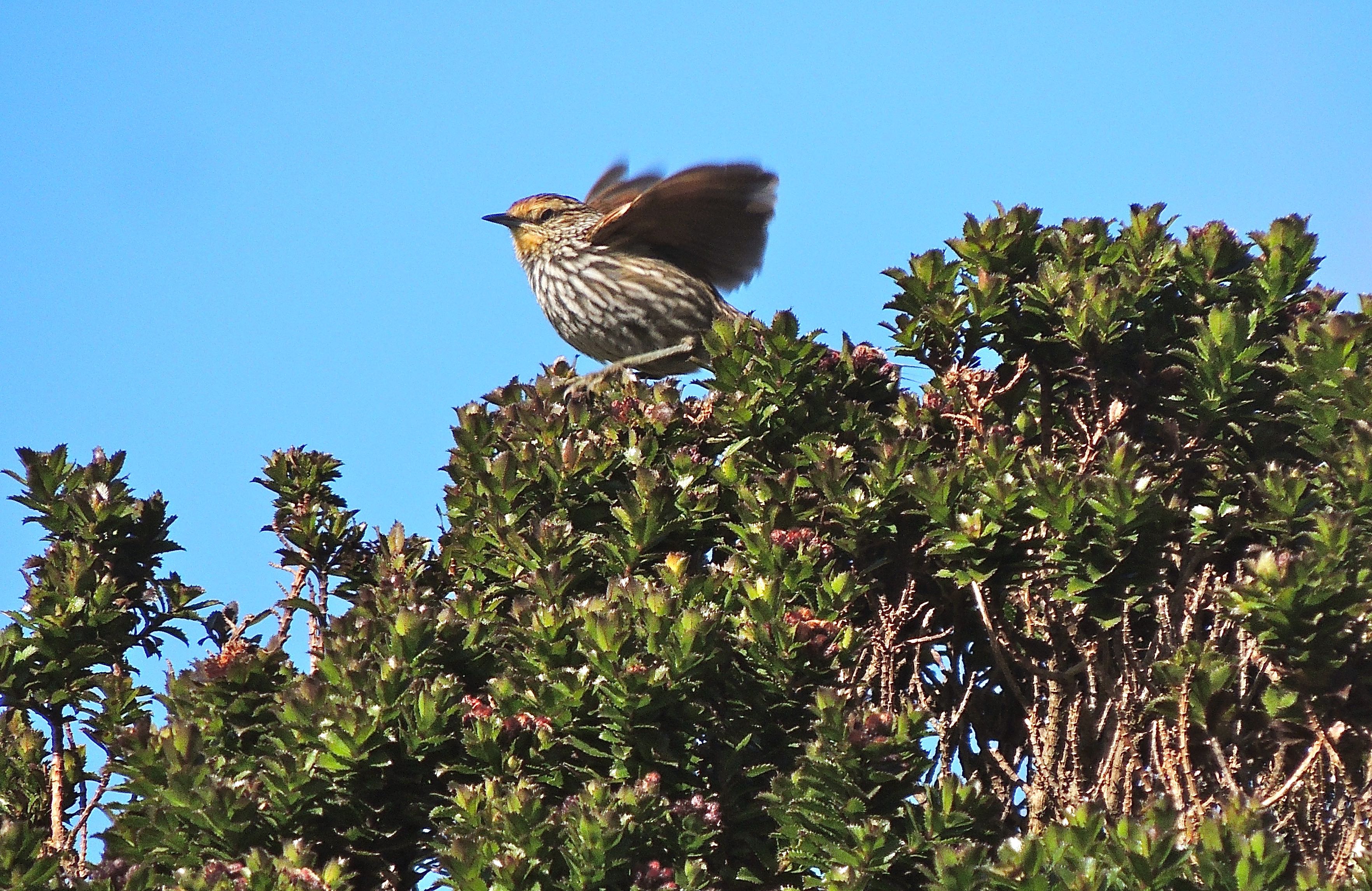 Many-striped Canastero - Photo by William Young
Many-striped Canastero - Photo by William YoungWe climbed to the top of a hill with a lot of antennas and some strange objects that looked like missiles to search for a Rufous-bellied Seedsnipe. It is more like a ptarmigan than a snipe. It flies like a grouse and is well camouflaged. It is restricted to Peru and Ecuador. We were at 4,400 meters (14,400 feet) when we saw it. They are normally found above 4,000 meters. (Guango is at 2,800 meters.) The snowline is between 4,000 and 5,000 meters, and we walked past areas with snow on the ground. The wind on the hill where we saw the birds was strong, probably at least 40 kph. Also up on this hill, we saw Paramo Ground-Tyrants, who are grayish-brown on back, white below, and hop on both the ground and on rocks. We saw Brown-backed Chat-Tyrants. On the way back down, we saw the Antisana subspecies of the White-tailed Deer.
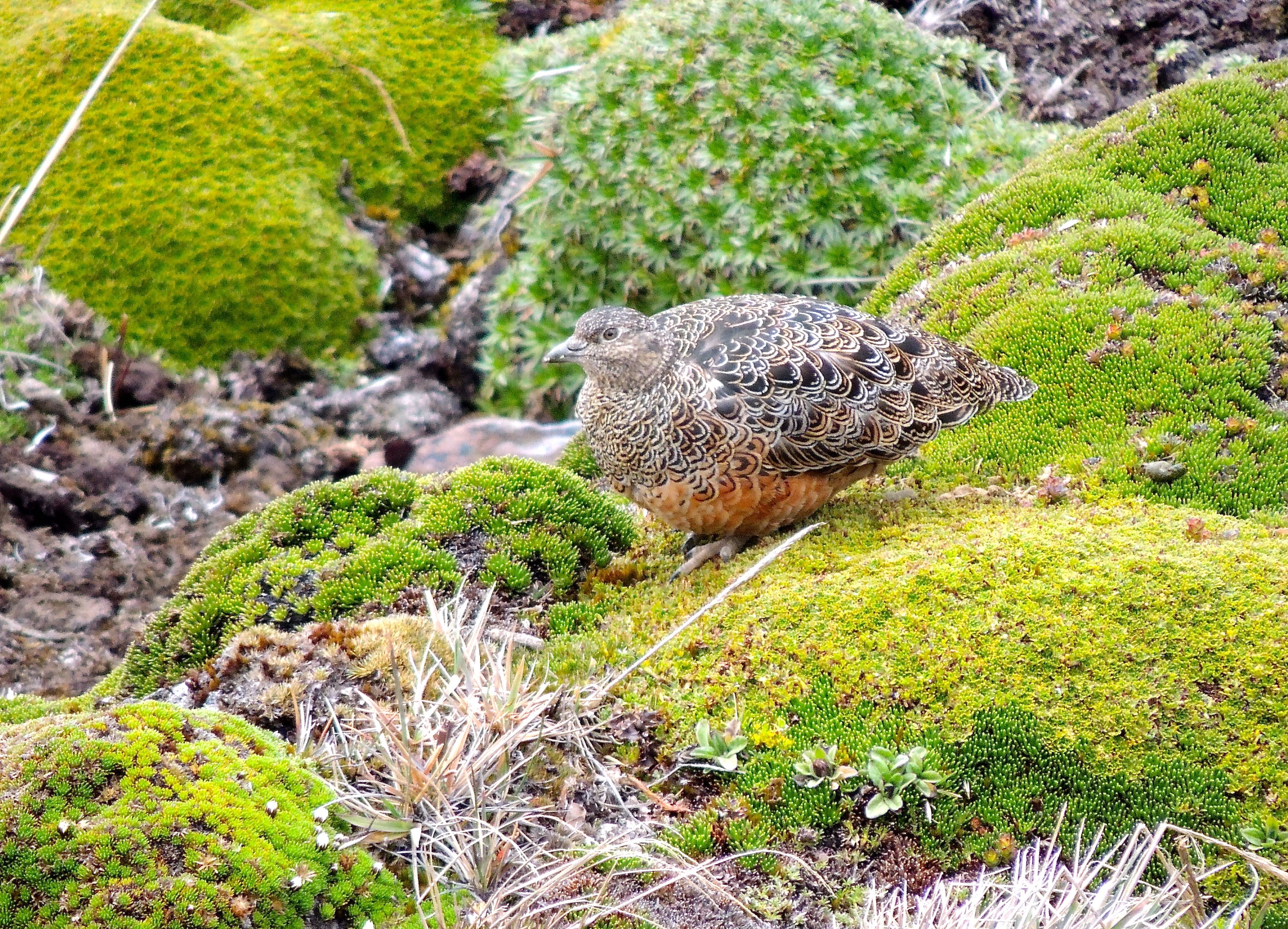 Rufous-bellied Seedsnipe - Photo by William Young
Rufous-bellied Seedsnipe - Photo by William Young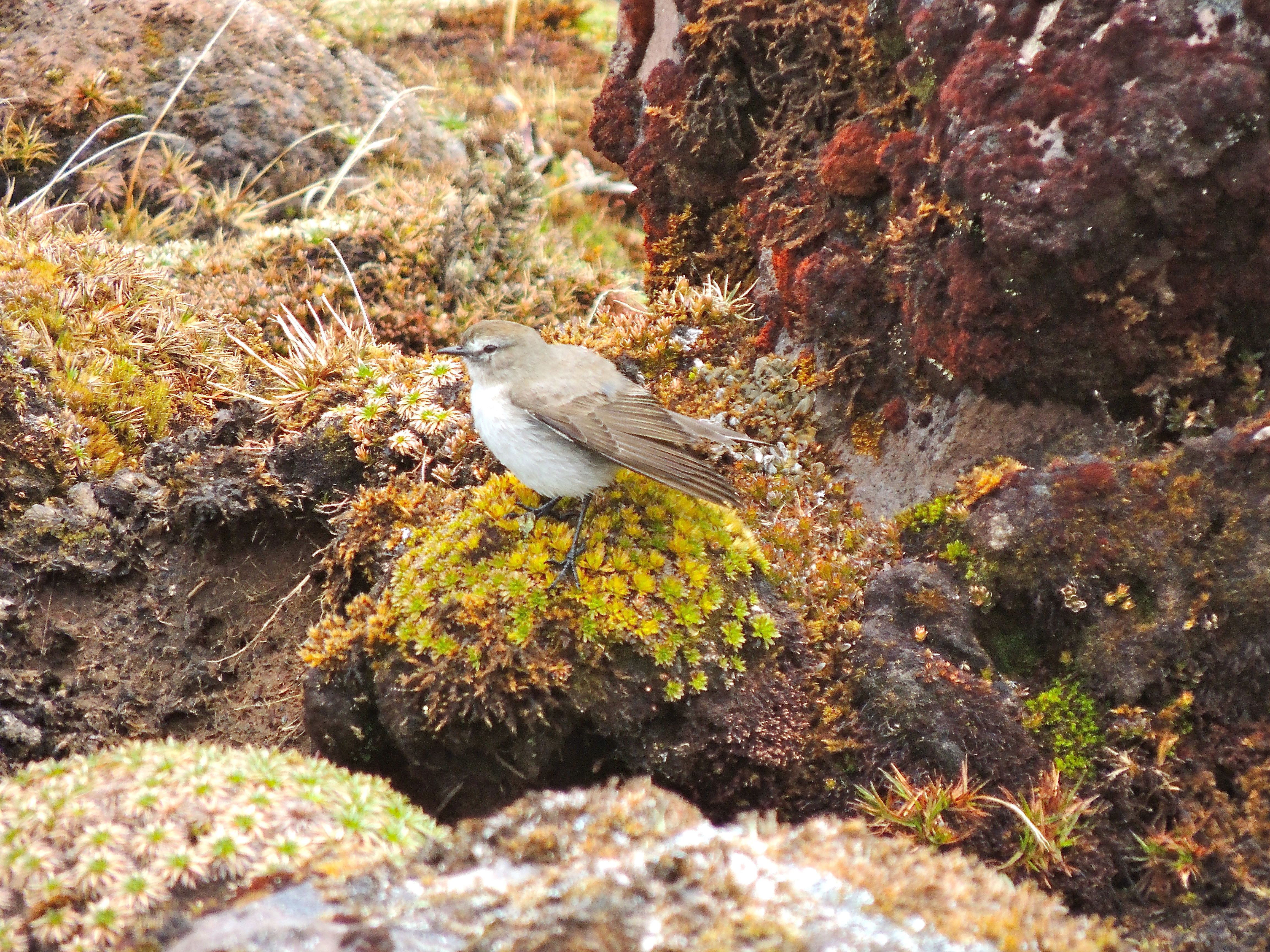 Paramo Ground-Tyrant - Photo by William Young
Paramo Ground-Tyrant - Photo by William YoungAfter lunch at about 2:30, we looked for Torrent Ducks. We saw a female, who was quite pretty. She has a blue head and is rufous below. She was perched on a rock and then dove into the water in front of the rock, into the fast moving current. This species swims well, and she dove for food while in the water. We never saw the male, although there might have been one nearby — the female kept looking toward the shore.
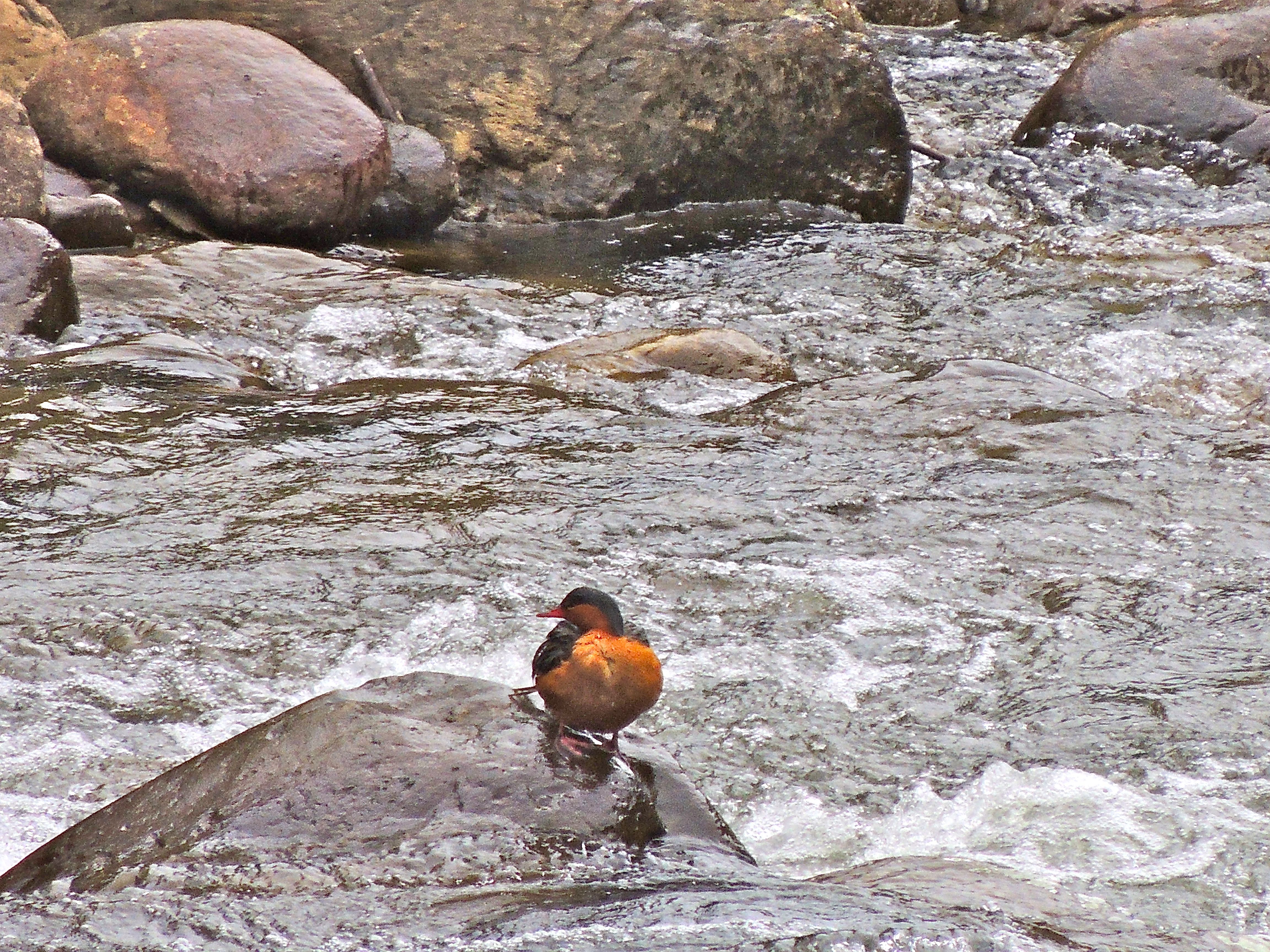 Torrent Duck Female - Photo by William Young
Torrent Duck Female - Photo by William YoungWe walked to a nearby row of trees and saw a Pearled Treerunner, who has a rufous back, a creamy throat, and a black breast with white circles on it. I could not make out the circles — the breast looked streaked from a distance. In the same feeding flock was a Montane Woodcreeper, who has a rufous back. We saw the back of a perched Rufous-breasted Flycatcher, who had rufous marks on the wings. There were more Spectacled Whitestarts. We saw a Blue-backed Conebill, who has a blue back and rufous underparts. The White-banded Tyrannulet looks like a gnatcatcher. I had a nice look at a Superciliaried Hemispingus, who is yellow below and brown above, with a white eyebrow. We heard a Barred Becard. Earlier on the walk to look for the Torrent Ducks, I had a fleeting look at a Mountain Wren, who appears to be the same size as the Grass Wren we saw this morning, and I had a better look at a Rufous Wren. A lot of the trees near Guango are alders, part of a reforestation program.
At the Guango hummingbird feeders, the most common hummingbird was the Tourmaline Sunangel. Also common were Chestnut-breasted Coronets. They were aggressive and chased the other hummers, including the Sword-billed Hummingbirds. There were some Collared Incas, who look black with a white bib. There were some Tyrean Metaltails. There were at least two Long-tailed Sylphs, who are striking with their long tails and iridescent blue plumage. And there were two Sword-bills, who came to the feeders and jammed their bill into the feeder holes. We saw a male and female White-bellied Woodstar. The male has green flanks with white in the middle, while the female has rufous flanks. Also coming to the feeders were Buff-winged Starfrontlets and some Masked Flowerpiercers.
 Chestnut-breasted Coronet - Photo by William Young
Chestnut-breasted Coronet - Photo by William Young Sword-billed Hummingbird - Photo by William Young
Sword-billed Hummingbird - Photo by William Young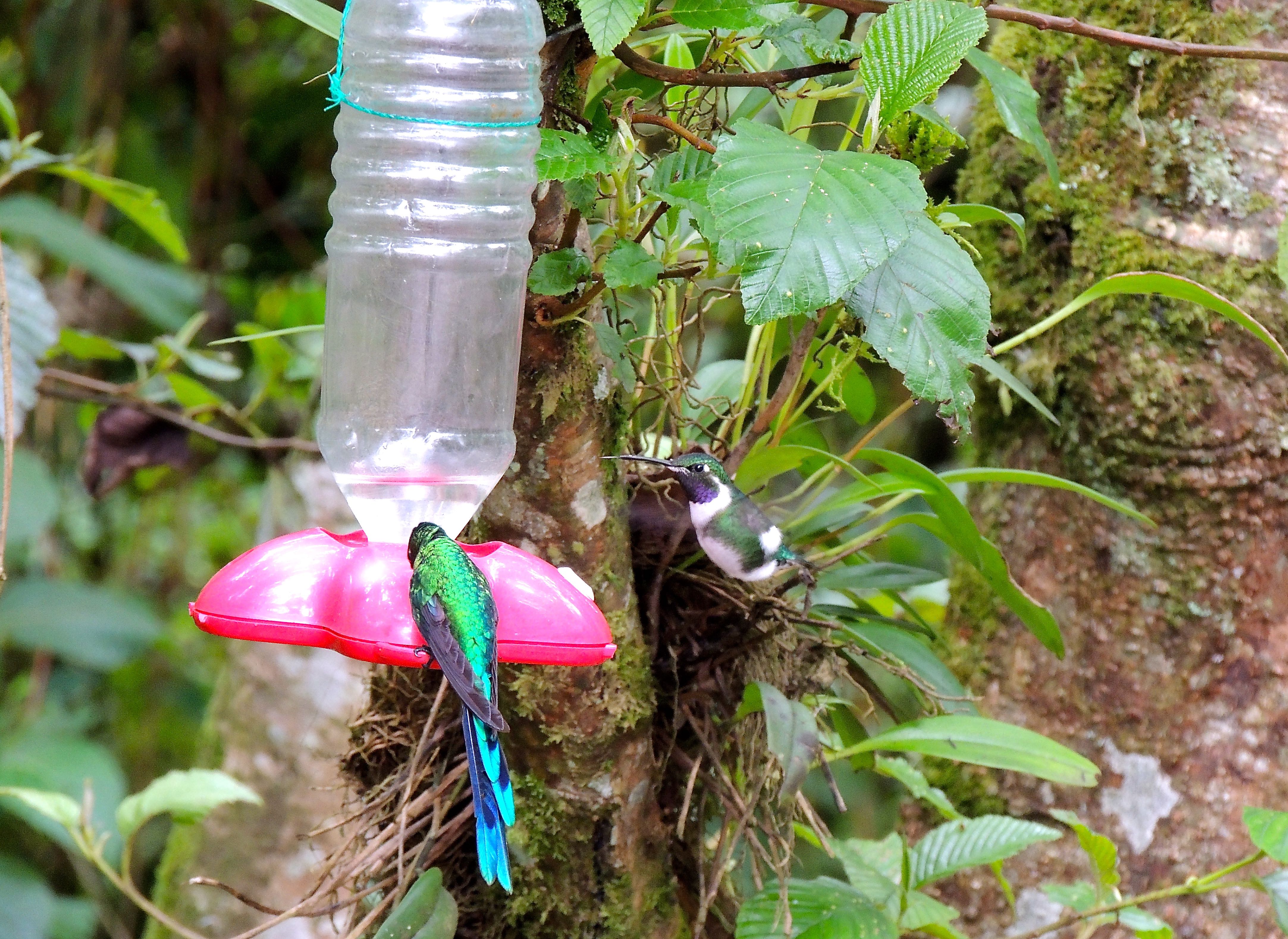 White-bellied Woodstar and Long-tailed Sylph - Photo by William Young
White-bellied Woodstar and Long-tailed Sylph - Photo by William YoungAfter leaving Guango, we birded along a highland road in the rain. We saw some Black-backed Bush Tanagers, who are found only in the highlands of Ecuador and Colombia. They are white below and have a black cap and back. We saw a Viridian Metaltail, who is green, but not glistening. I photographed a beautiful Shining Sunbeam perched on top of a tree. It has a bright rufous breast that almost appears to be orange. I had a fleeting look at the brown back of a White-chinned Thistletail. I did not see the chin or the tail of this skulker. We heard about five of them. We also heard an Andean Pygmy Owl, who responded to Gustavo's imitation of one. As we were driving back to the main road, we saw an Andean Gull perched in the top of a tree. It has a black hood. We also saw two Andean Teal, who are grayish with a black speculum and bill.
On the drive to San Isidro, Gustavo told me about the finches on the Galapagos. He said the Large Cactus Finch breaks seeds called goat's heads (a legume) on Hispaniola, and the Warbler Finch eats what is left over. He said the finches are all believed to have evolved from the Cocos Finch, who is found on Cocos Island off the coast of Costa Rica.
We arrived at San Isidro at about 6:40, where we would be staying for three nights. We looked for owls, and I had a quick look at a Red-banded Owl, who looks like a reddish version of a Mottled Owl. After dinner, we saw a San Isidro Owl, who looks like a Black-and-white Owl, but the barring on the belly looks a little denser. Taxonomists are not sure if this is a species or a subspecies of the Black-and-white Owl.
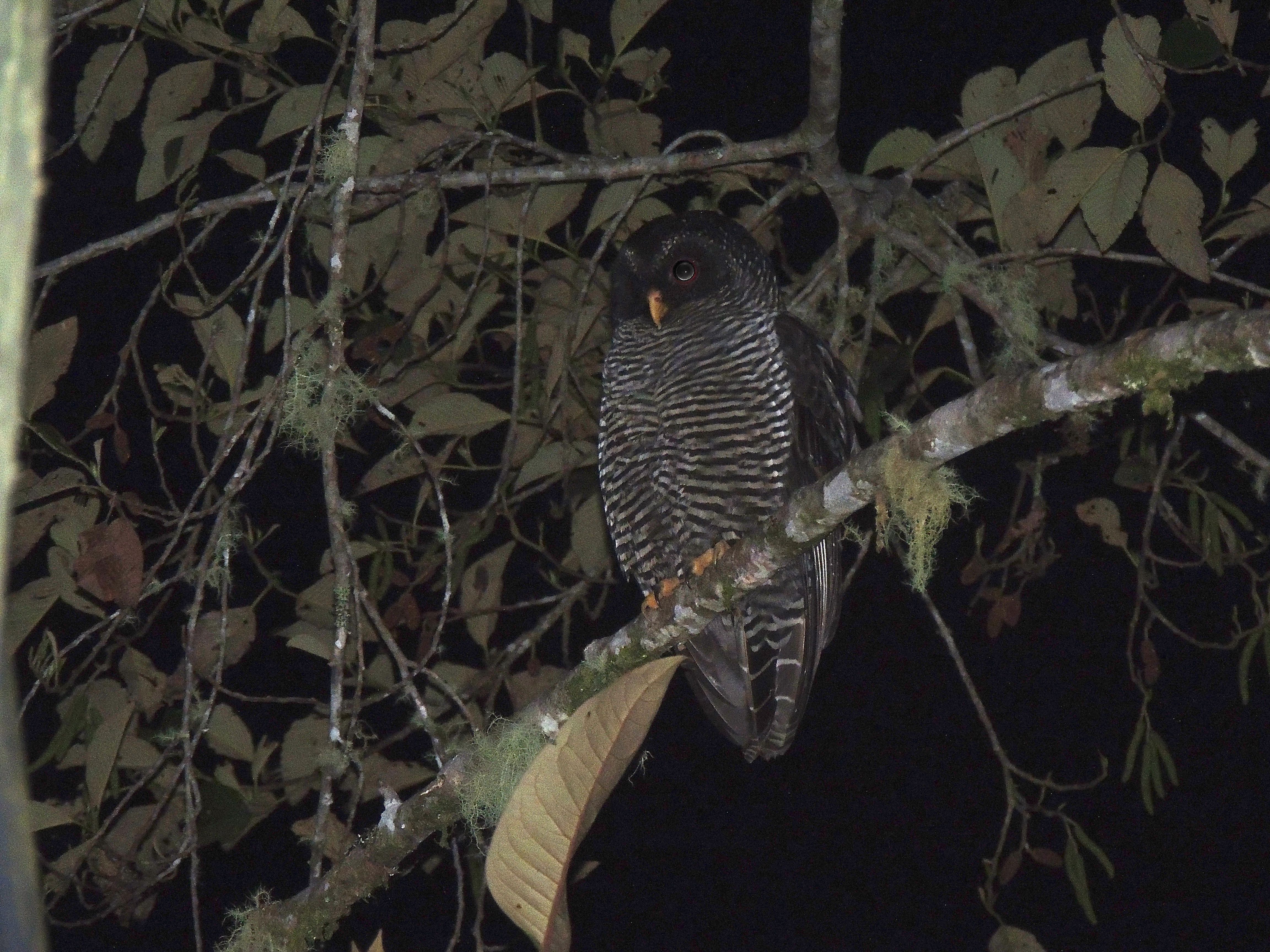 San Isidro Owl - Photo by William Young
San Isidro Owl - Photo by William Young
September 4
This morning when I walked out my door at 6, I was greeted by the harsh chak-chak-chak call of an Inca Jay. It looks like a Green Jay with a lighter head. I later heard one perform an entertaining repertoire of sounds. A male Masked Trogon slept right outside my room, and I saw and heard him this morning. I walked up to about five feet from him. The female was nearby, and I photographed her on a railing outside one of the other cabins. She is red below and has a brown back. I saw Russet-backed Oropendolas, who have yellow on the edges of their tail. Some have light beaks, while others have darker beaks. We saw one walking on the ground. I also saw some of their big hanging nests on wires. A cooperative Pale-edged Flycatcher was flitting around very conspicuously in the open. It is a Myiarchus with some light edges on its wings. The two most common species of tanager were Saffron-crowned and Beryl-spangled. The Saffron-crowned has a golden crown, with turquoise on the flanks and black-and-blue patterned wings. The Beryl-spangled is spotted below and on the neck. Both of these species are really beautiful. I later saw a Flame-faced Tanager, which has a golden cap and a bright orange face. Speaking of orange, I spotted a Blackburnian Warbler whose throat was washed out. I later found out that it was the first Blackburnian spotted this fall. I had a fleeting look at a Fawn-breasted Tanager; I saw the fawn underside. There was a Bluish Flowerpiercer, who is bluish rather than blue like the Masked, and it has only a black eyeline rather than a black mask like the Masked. As we moved toward the dining room to have breakfast, we saw a juvenile Green-and-black Fruiteater, who has a red bill and a black breast. We also saw an Emerald Toucanet, who has a white throat, some yellow on the upper mandible, and a rufous vent, unlike the toucans who have a red vent. There were a lot of Rufous-collared Sparrows around the lodge, and I saw and heard more this afternoon while riding through a rural area. I saw Subtropical Caciques, who are black with a yellow bill and a blue eye. When one flew, I could see the red rump. I also saw some of their nests hanging from trees. There were a lot of Spectacled Whitestarts, and I have learned their song. We also saw a pair of Crimson-mantled Woodpeckers.
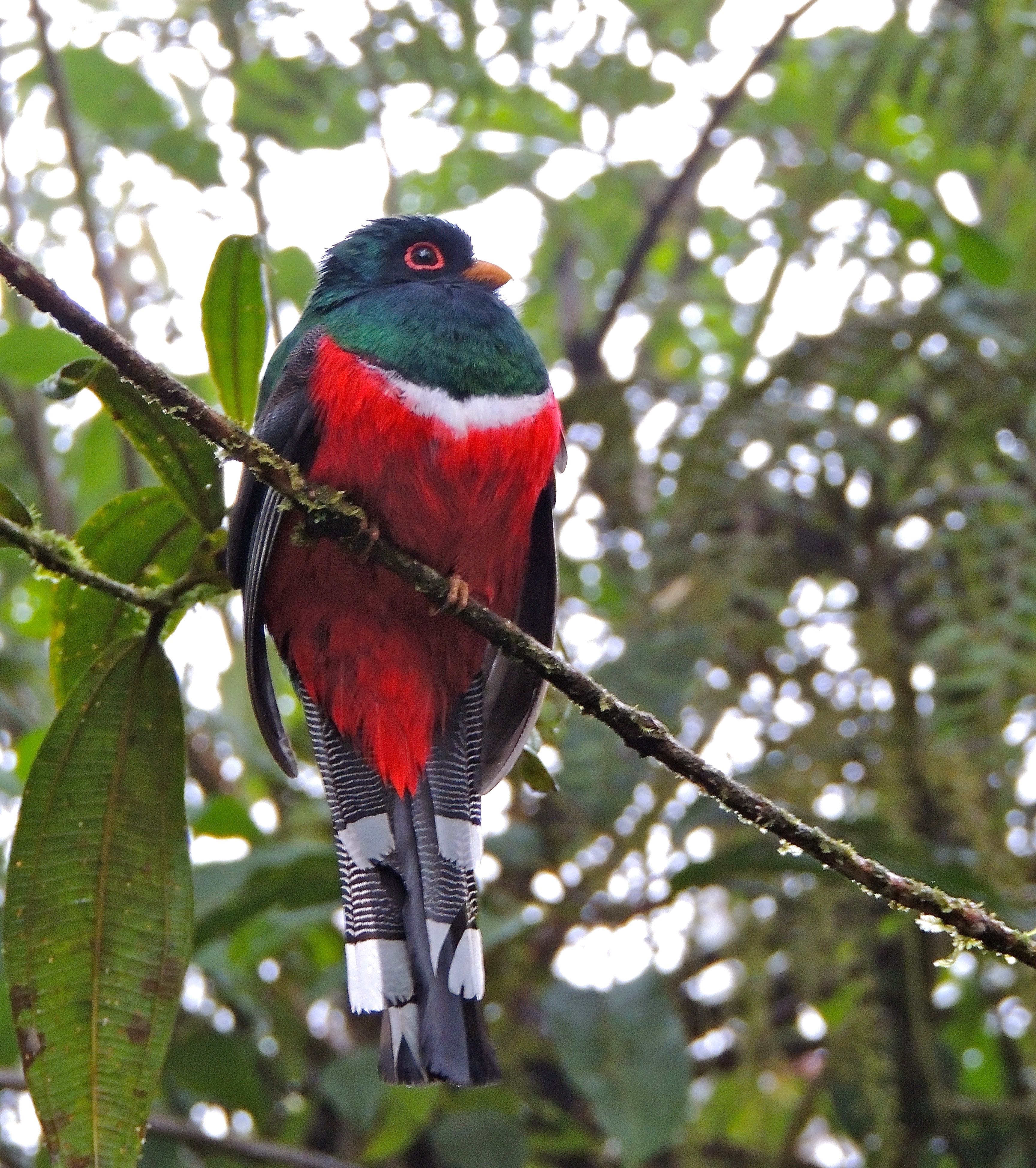 Masked Trogon Male - Photo by William Young
Masked Trogon Male - Photo by William Young Masked Trogon Female - Photo by William Young
Masked Trogon Female - Photo by William Young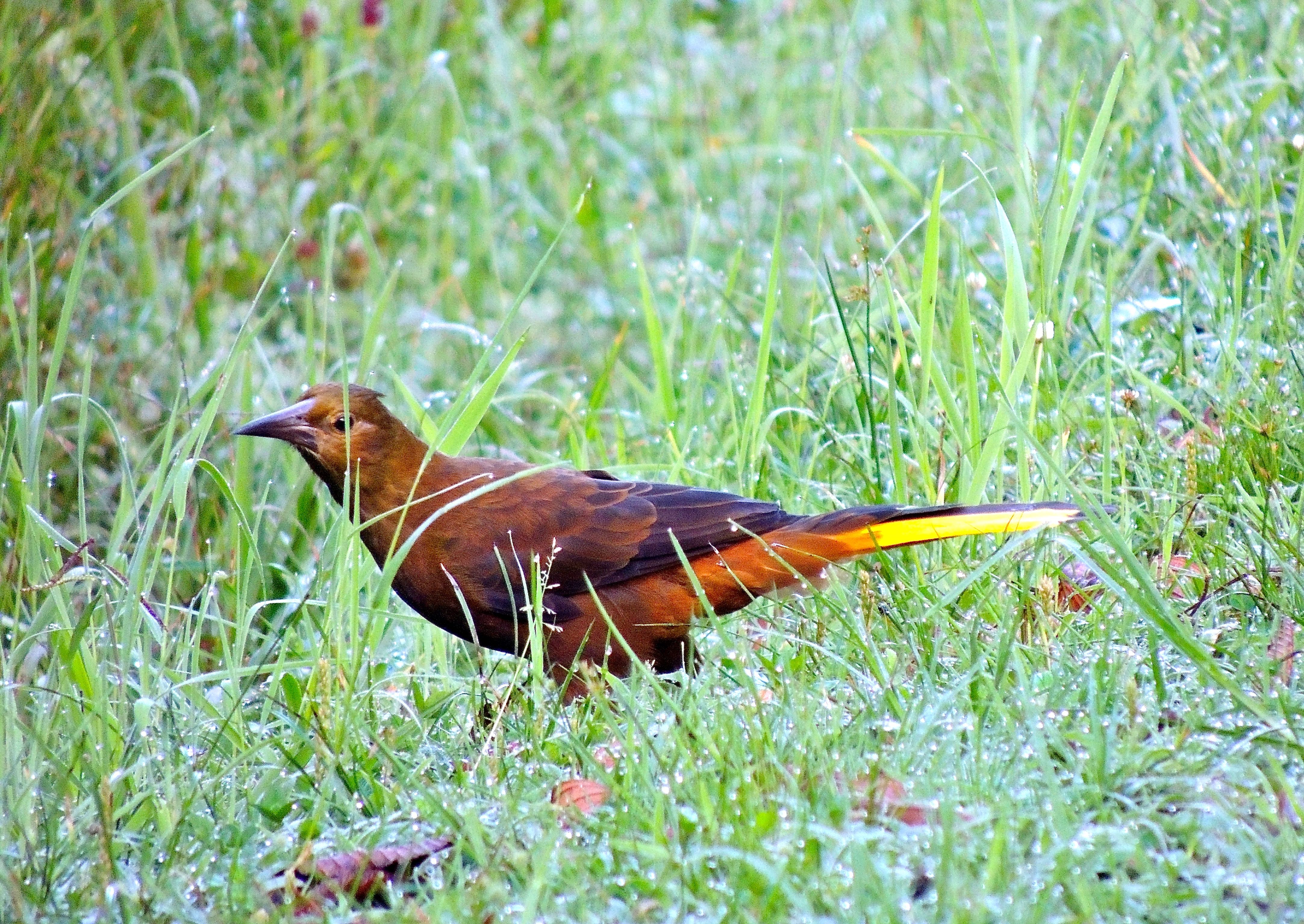 Russet-backed Oropendola - Photo by William Young
Russet-backed Oropendola - Photo by William Young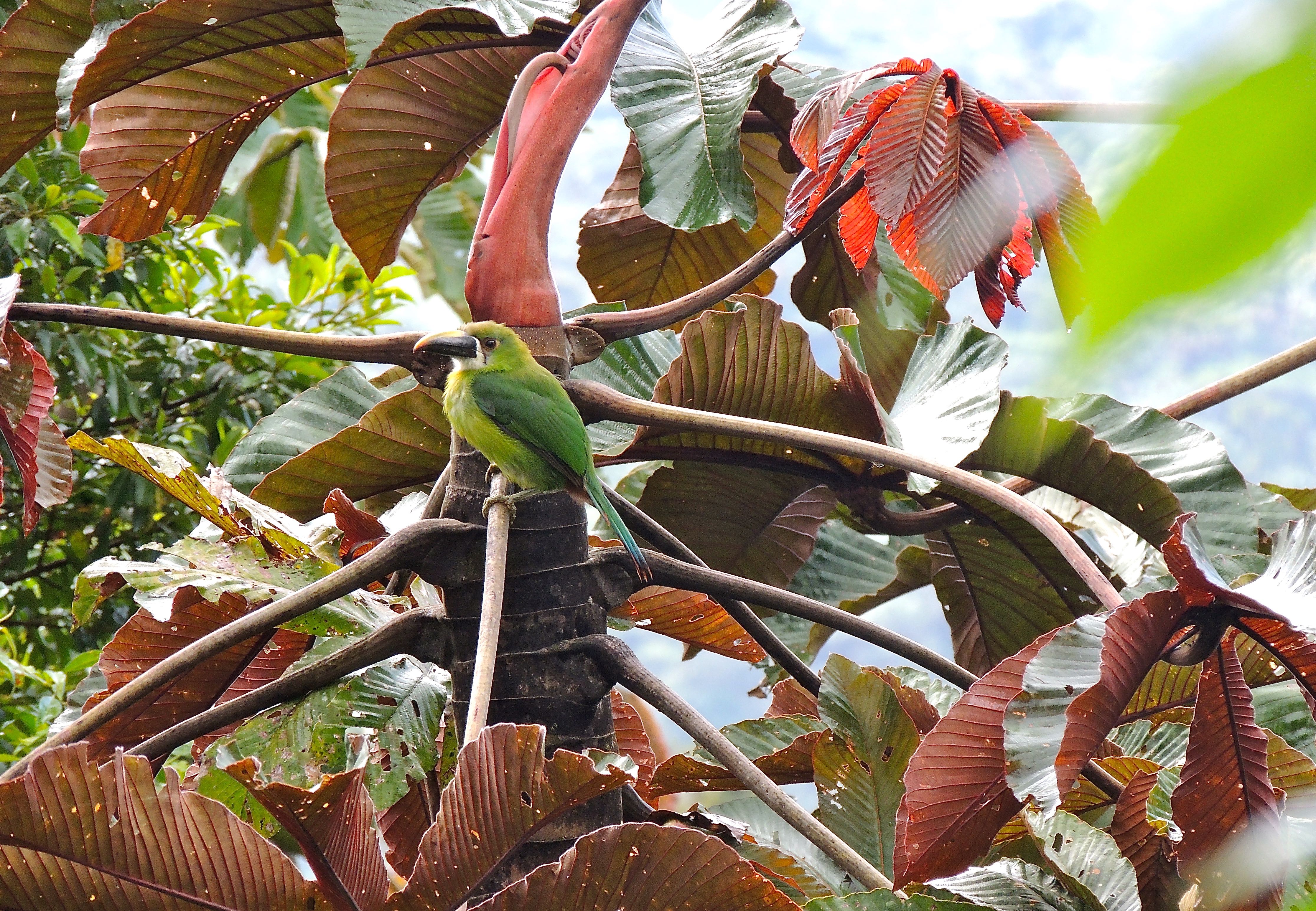 Emerald Toucanet - Photo by William Young
Emerald Toucanet - Photo by William Young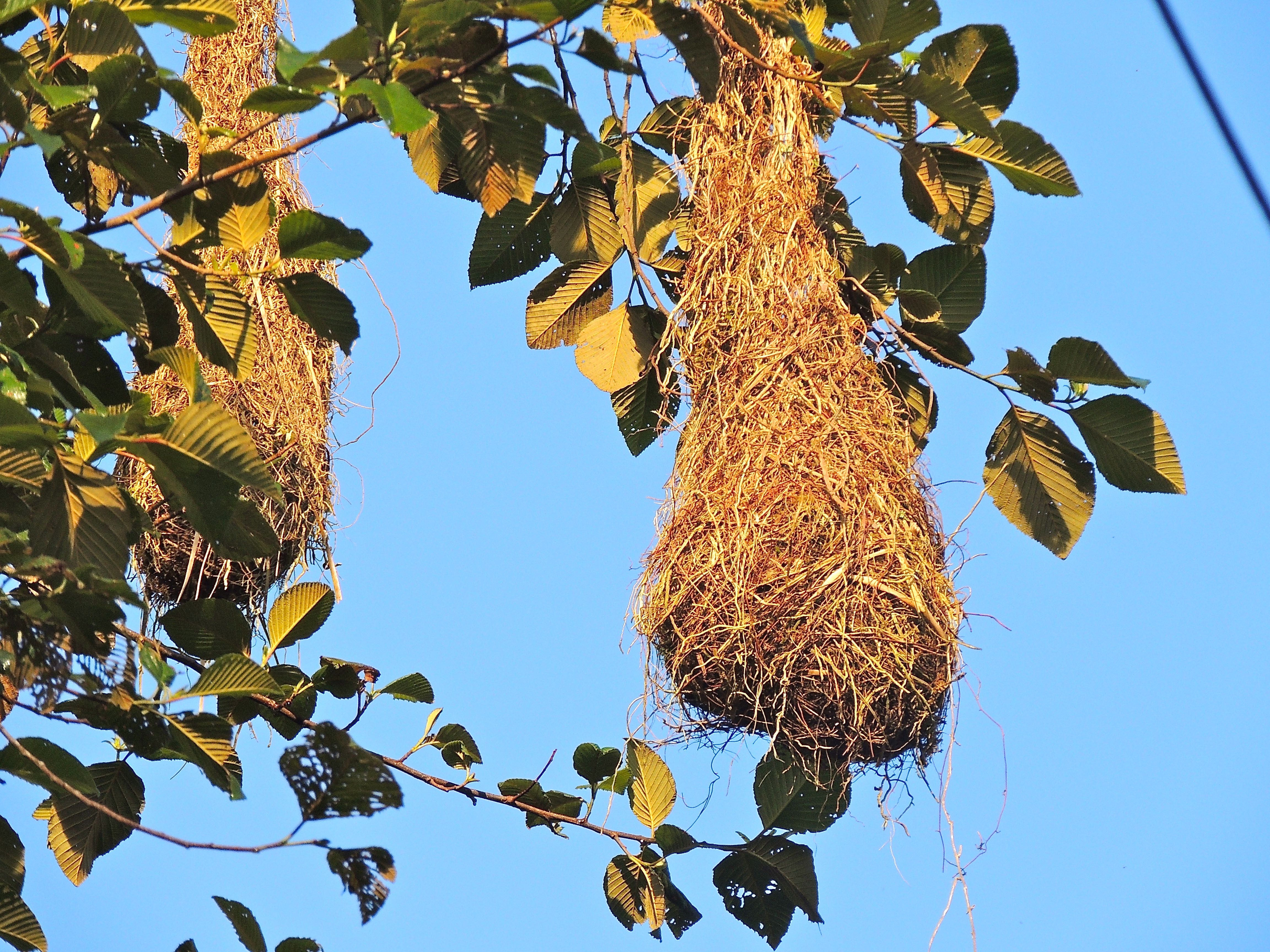 Subtropical Cacique Nests - Photo by William Young
Subtropical Cacique Nests - Photo by William YoungAfter breakfast, someone took us to see two species of Antpittas. The first stop was down a path from the dining area to see White-bellied Antpittas. They are brown on the back and white below. They move very quickly. Three appeared, and I took some photos. Then we went to another place a little farther into the woods. The Chestnut-crowned Antpittas seemed to be calling from a considerable distance away. After about ten minutes, two made their way to the feeding area. These birds have a chestnut head and striped flanks.
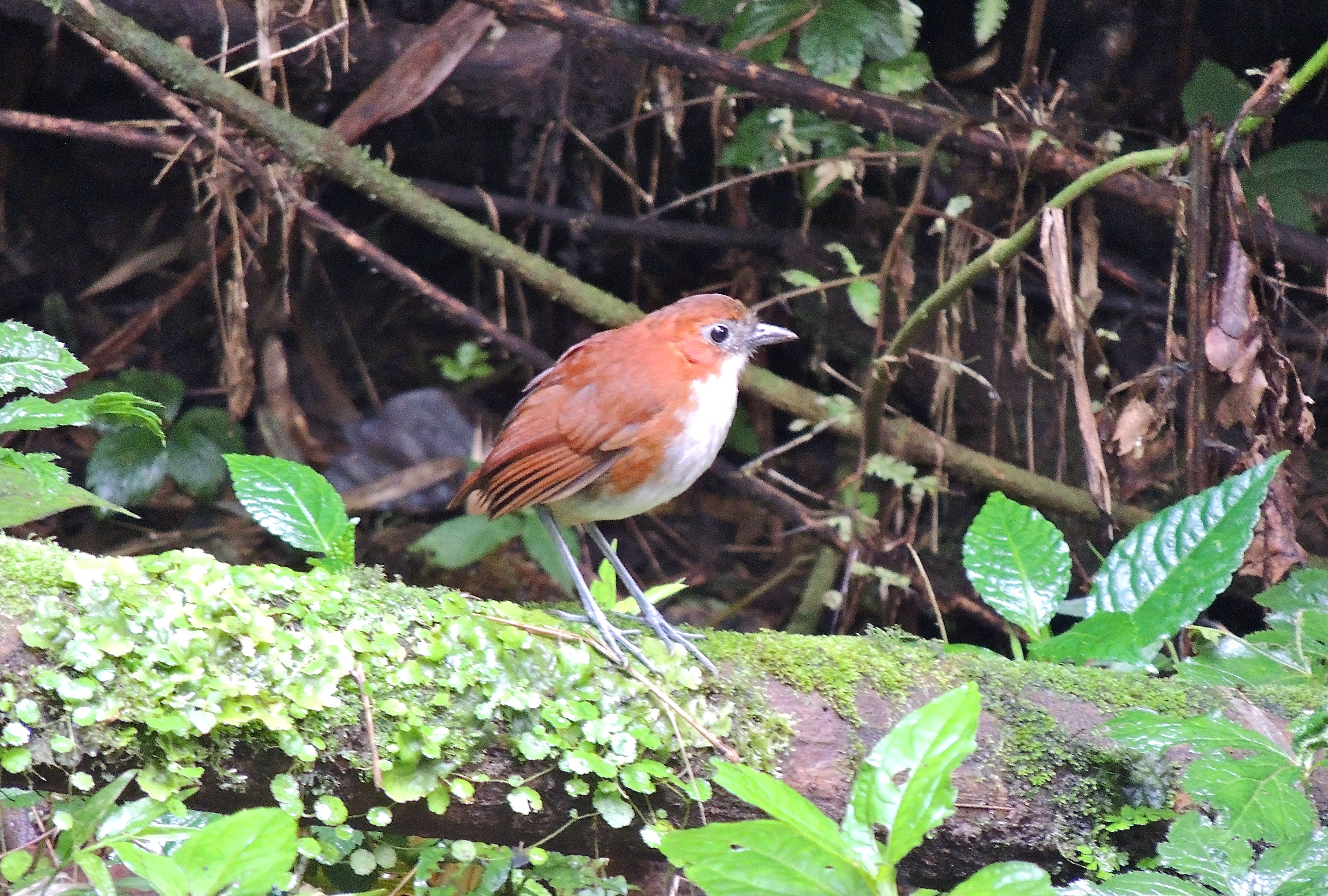 White-bellied Antpitta - Photo by William Young
White-bellied Antpitta - Photo by William Young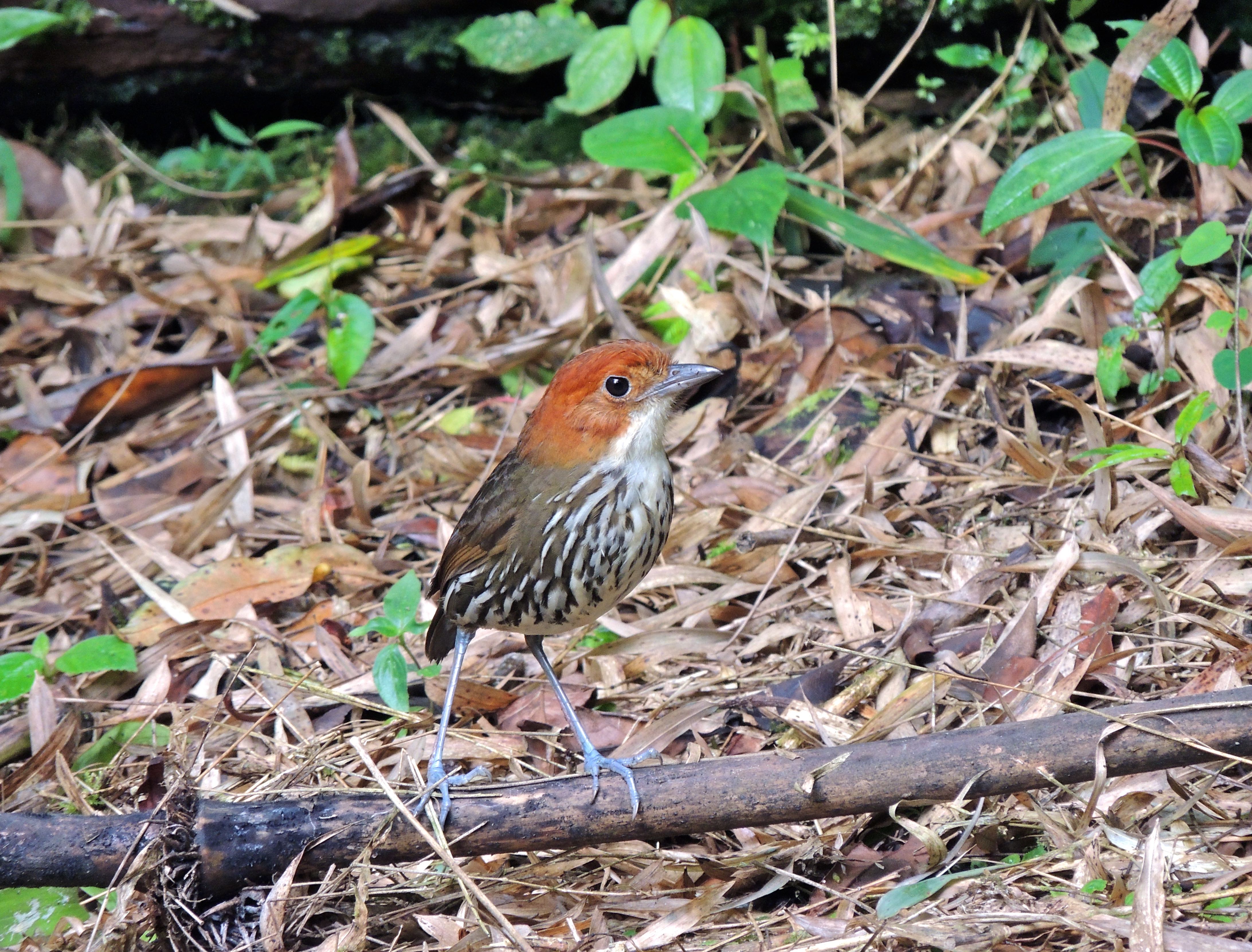 Chestnut-crowned Antpitta - Photo by William Young
Chestnut-crowned Antpitta - Photo by William YoungNext we went to a viewing deck. Gustavo told me about some research he is doing about the importance of cecropia trees to monkeys, squirrels, toucanets, tanagers, and other creatures. Cecropia leaves are big, and when they fall, it sounds like a branch is coming down. When Gutavo had my field guide open to one of the tanager pages, an Actinote diceus butterfly perched on it. We saw a pair of Mountain Wrens building a nest. They have a plain back and an orange breast and supercilium. There is barring on the tail. We also saw a Cinnamon Flycatcher. We went to an observation deck on a higher level, and I saw a Black-billed Peppershrike, who is a vireo. It has a bit of rufous on its brow, but not as much as the Rufous-browed Peppershrike. It is white below with some yellow on the flanks. Its bill is thick. I had a great look at a Brown-capped Vireo, who was singing loudly. We saw quite a few Blue-winged Mountain Tanagers, as well as Beryl-spangled, Saffron-crowned, and Flame-faced Tanagers. We also saw a Blue-necked Tanager, who has a blue head and a black body with a splash of lime on the wings. We saw an immature one as well, who looked a little like a Cerulean Warbler. We saw a Blue-gray Tanager, and the race here has white on the shoulder. There are a lot of Glossy-black Thrushes around, and they look a lot like Eurasian Blackbirds. We also saw some White-collared Swifts fly over.
 Actinote diceus - Photo by William Young
Actinote diceus - Photo by William Young Mountain Wren - Photo by William Young
Mountain Wren - Photo by William Young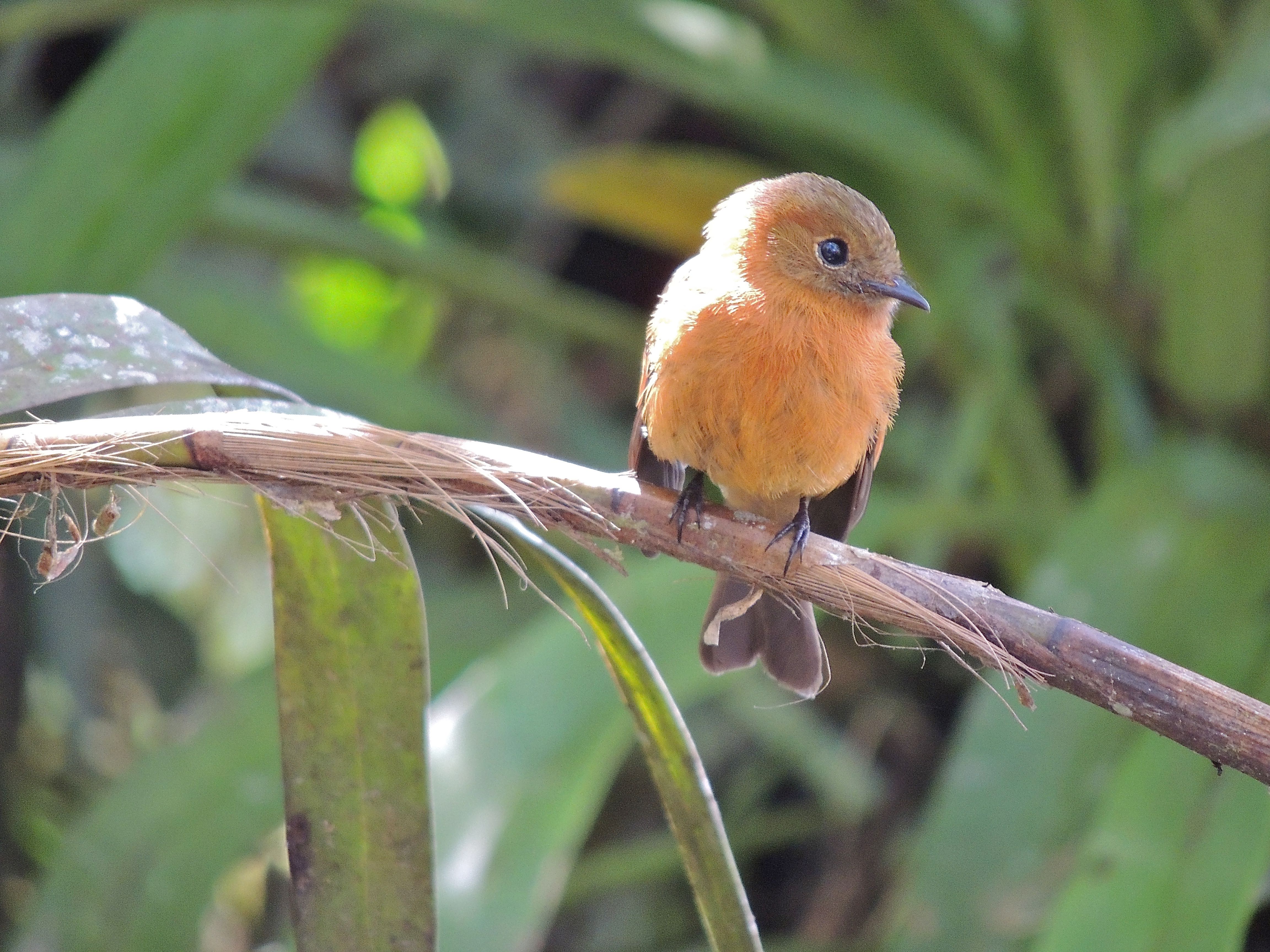 Cinnamon Flycatcher - Photo by William Young
Cinnamon Flycatcher - Photo by William Young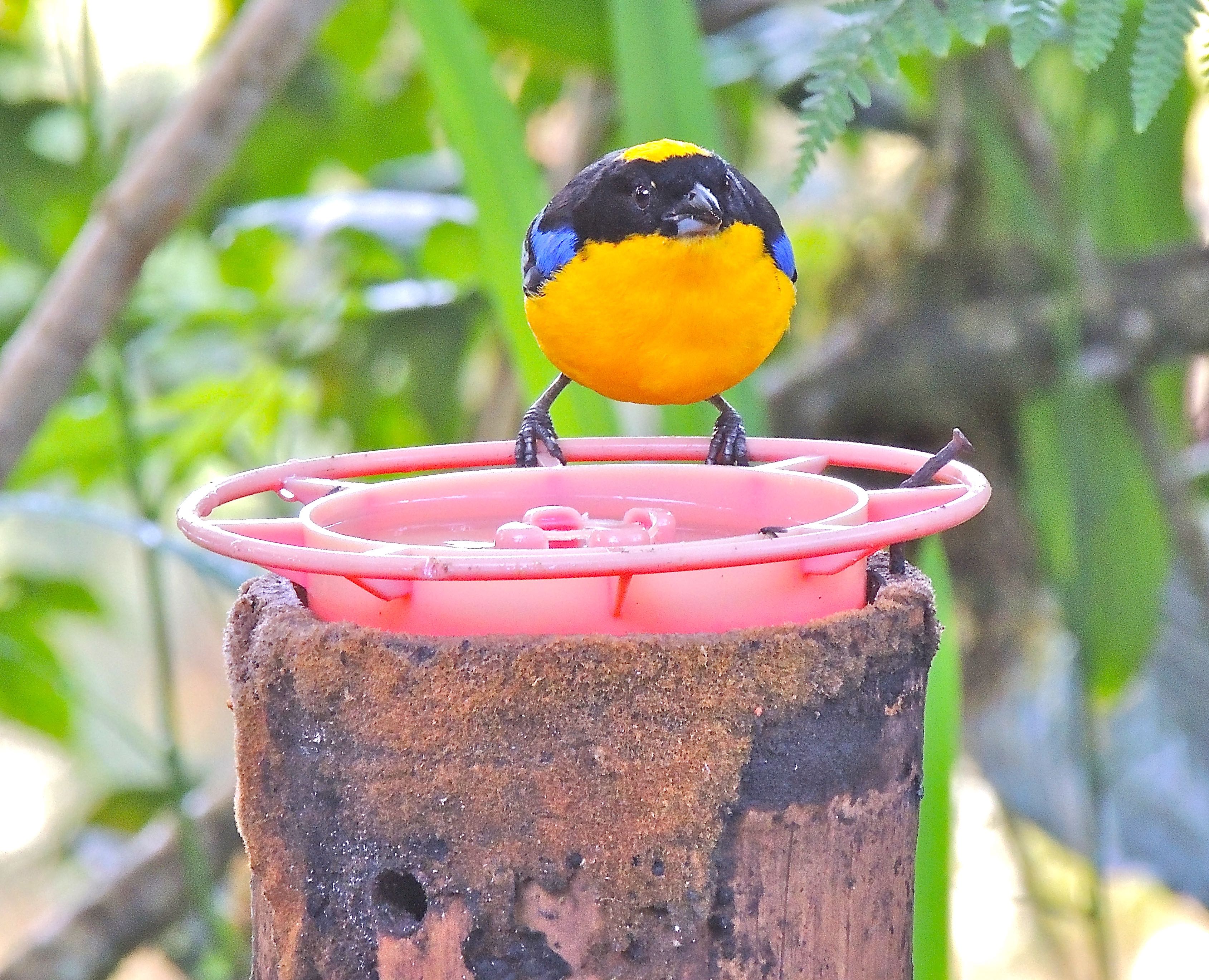 Blue-winged Mountain Tanager - Photo by William Young
Blue-winged Mountain Tanager - Photo by William Young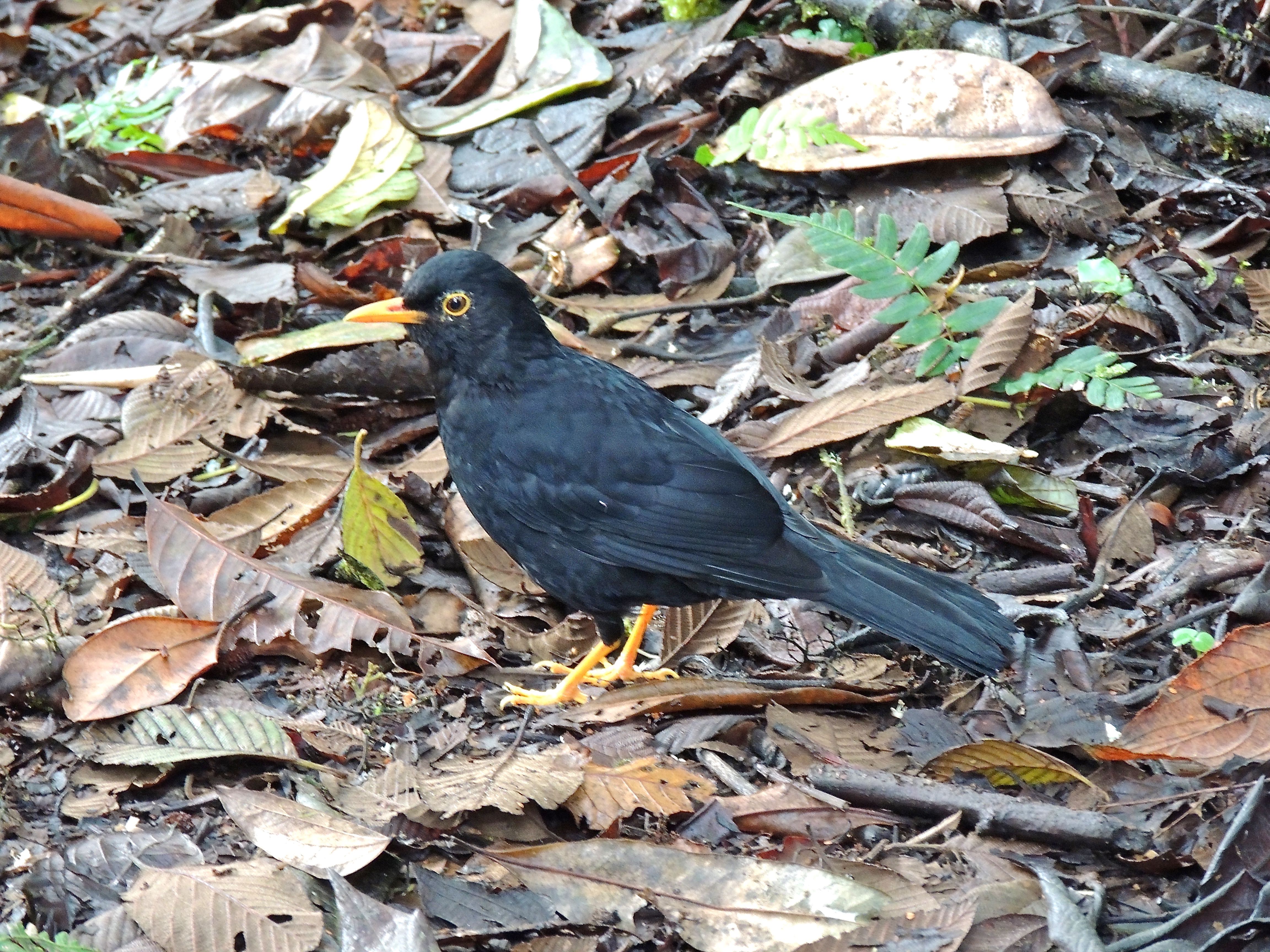 Glossy-black Thrush - Photo by William Young
Glossy-black Thrush - Photo by William YoungNext, we visited the hummingbird feeders. The Chestnut-breasted Coronets were the most common species. They not only chase other species of hummers, but they also chase each other. Sometimes, I could hear their wings collide. They chase insects, and one even buzzed me in the viewing area. There were two Long-tailed Sylphs, one of whom had a shorter tail. The other had a long glistening blue tail. There were a couple of Bronzy Incas, who are brown with a pale throat. I had a fleeting look at a Green Violetear, and a Tawny-bellied Hermit fed on some flowers in a tree. It has a long central tail feather. While we were watching the hummers, three Black Agoutis came to the area. They are darker than the agoutis I saw in Panama. Red-tailed Squirrels are also in the area, but they are not as red as the ones in Panama. In the trees over the feeders was a Blue-and-black Tanager, who is blue with black wings. There was a mystery female bird, who could have been a Golden-winged Manakin. Female manakins can be difficult to tell apart. We saw a Black Phoebe. We heard both White-breasted and Gray-breasted Wood-Wrens. The latter sounds a bit like the Macleay's Honeyeaters I heard in North Queensland, whose song is A FREE TV, A FREE TV.
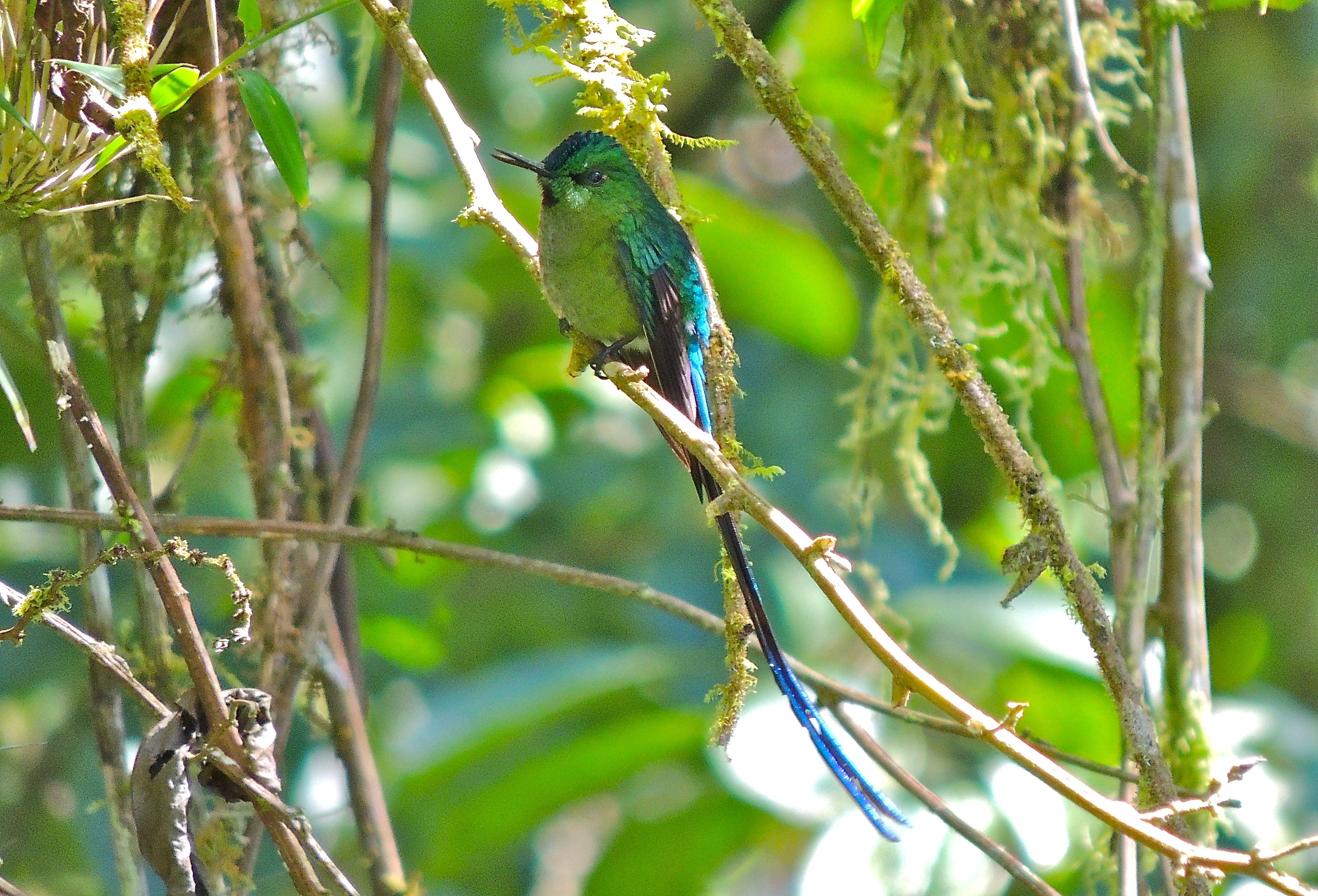 Long-tailed Sylph - Photo by William Young
Long-tailed Sylph - Photo by William Young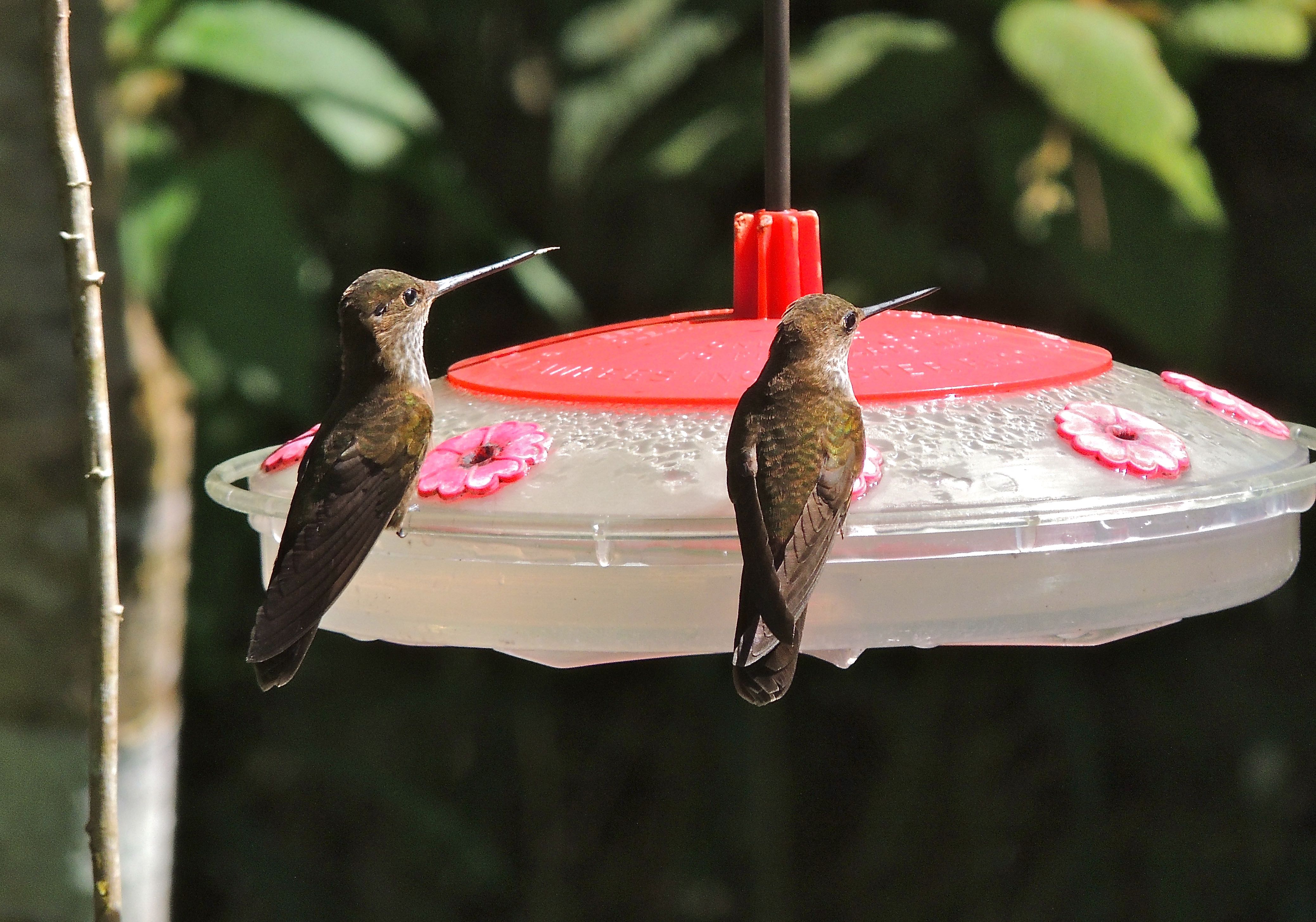 Bronzy Incas - Photo by William Young
Bronzy Incas - Photo by William Young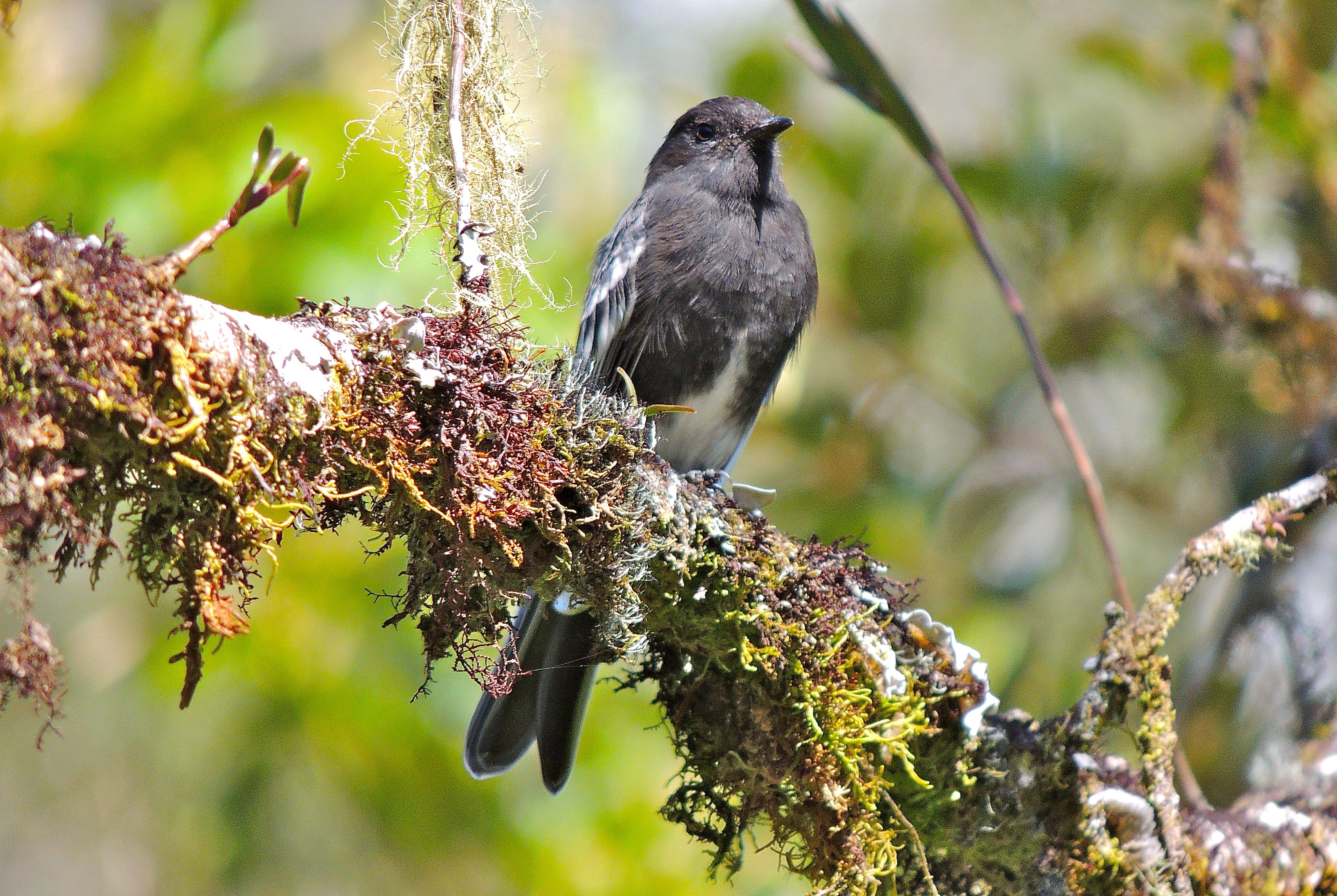 Black Phoebe - Photo by William Young
Black Phoebe - Photo by William YoungWe then went for a walk in the forest. Both Guango and San Isidro are in cloud forest. Gustavo does not like the fact that one of signs here calls it primary forest, because there has been some human disturbance. We saw a Black-eared Hemispingus. At first, I thought it was a Fawn-breasted Tanager, but when I saw it in better light, I could see the rufous underparts. I was glad to see a Three-striped Warbler. It is a yellow bird with a black-and-white striped crown that is far more pronounced than on a Worm-eating Warbler. We saw Marble-faced Bristle-Tyrants at many points during the 1.7k walk. They have yellow wingbars and a distinctive facial pattern. We saw an Olive-striped Flycatcher, who has a yellow belly and streaks on the breast and along the flanks. We also saw the similar Streak-necked Flycatcher, who lacks the streaking on the flanks. We heard a Crested Quetzal. And we saw an Olive-backed Woodcreeper, which is larger than the Montane.
On the way to the dining area for lunch, I watched an Inca Jay go through an elaborate and entertaining vocal repertoire. During lunch, a big storm blew in, which killed any opportunity to bird until about 2:30. When the rain stopped, we saw a pair of Andean Solitaires near where the vehicle was parked. They have a rufous back and gray underparts, and they can be difficult to see. In the same tree was a Sulphur-bellied Tyrannulet, who is yellow below and has wingbars. We got into the vehicle and drove through an agricultural area. We stopped on a bridge over a fast moving stream and saw a White-capped Dipper perched on a rock. It has a white cap and white underparts, and it is much easier to see than the American Dipper. We are lucky we arrived when we did, because within ten minutes, it had disappeared. We also saw a Torrent Tyrannulet perched on branches over the rapids. It is a small gray-and-white bird with a black cap and black wings. It bobs its tail nervously. We later saw one perched near the road on the way back to the lodge. We saw two Southern Lapwings in a field. We were looking at a Tropical Kingbird when a few White-capped Parrots flew over. We were going to stop to look for an Andean Potoo on the way back, but another storm blew in.
At dinner, we told Alejandro, who is managing the facility while we are here, about the agoutis we saw. He said something to Gustavo in Spanish and used the phrase rata grande, which means "big rat". When I heard him say this, I smiled, and when he saw me smile, he smiled.
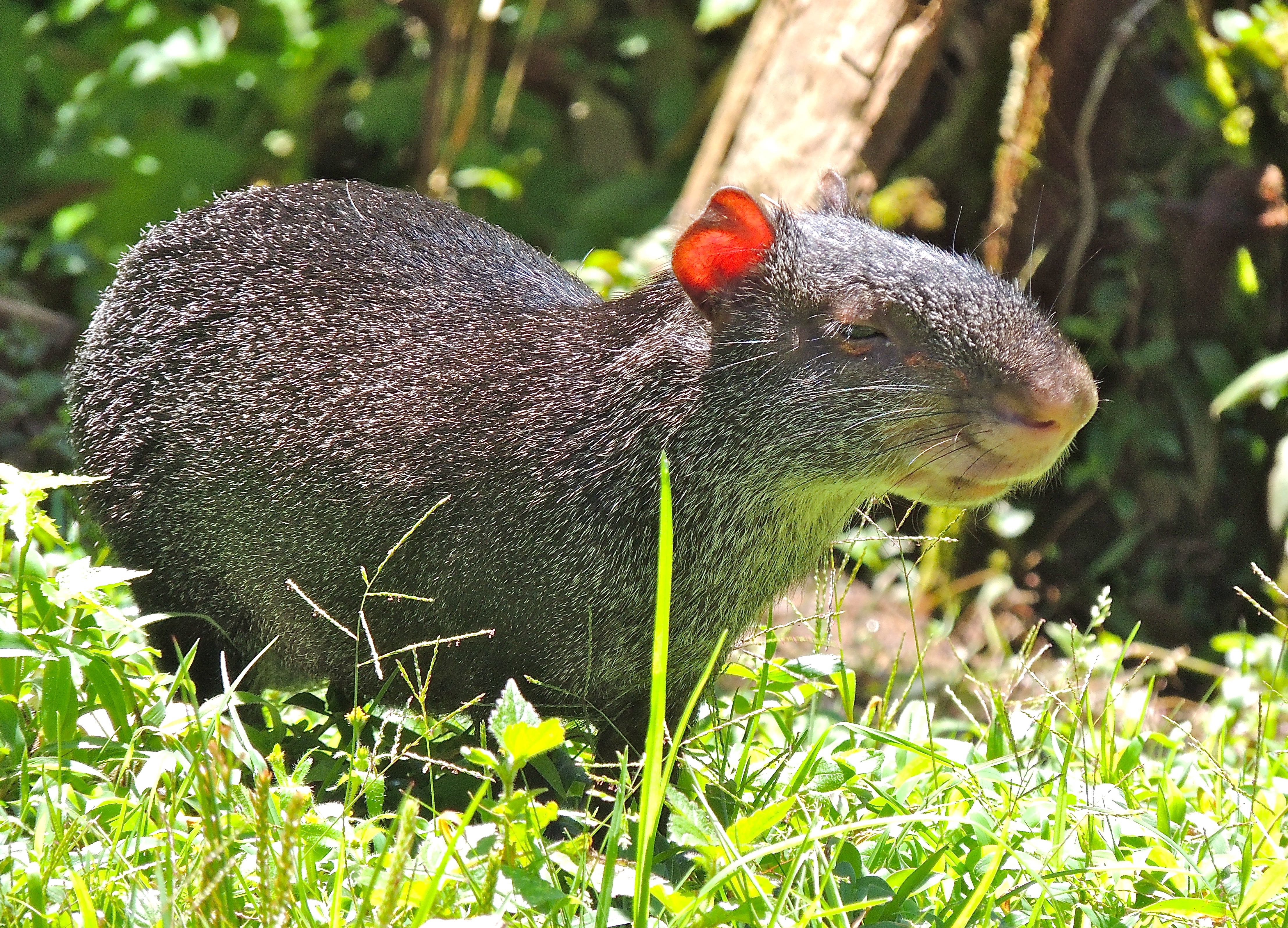 Black Agouti - Photo by William Young
Black Agouti - Photo by William Young
September 5
This morning, we started birding at San Isidro Lodge. I saw a Blackish Pewee, who is a unicolored dark bird with a dark lower mandible. A distressing number of birds in Ecuador have names that contain words/phrases such as blackish, gray, grayish, plumbeous, dusky, slate-colored, etc., and they can be difficult to tell apart. Woodcreepers can also be difficult. This morning, we saw Olive-backed, Montane, and Strong-billed Woodcreepers. The Strong-billed looks different because of its large bill. The Olive-backed looks a little bigger than the Montane, has more spotting on the crown, and has a back that is olive rather than brown (which can be difficult to see unless the light is good). After breakfast when I had come out of the dining room, I saw an Andean Solitaire perched at eye level on a bare branch. I could see why they can usually be difficult to see, because they move quickly and then are perfectly still while perched. We later saw a Gray-headed Bush-Tanager, whose pink bill is a key fieldmark.
 Olive-backed Woodcreeper - Photo by William Young
Olive-backed Woodcreeper - Photo by William Young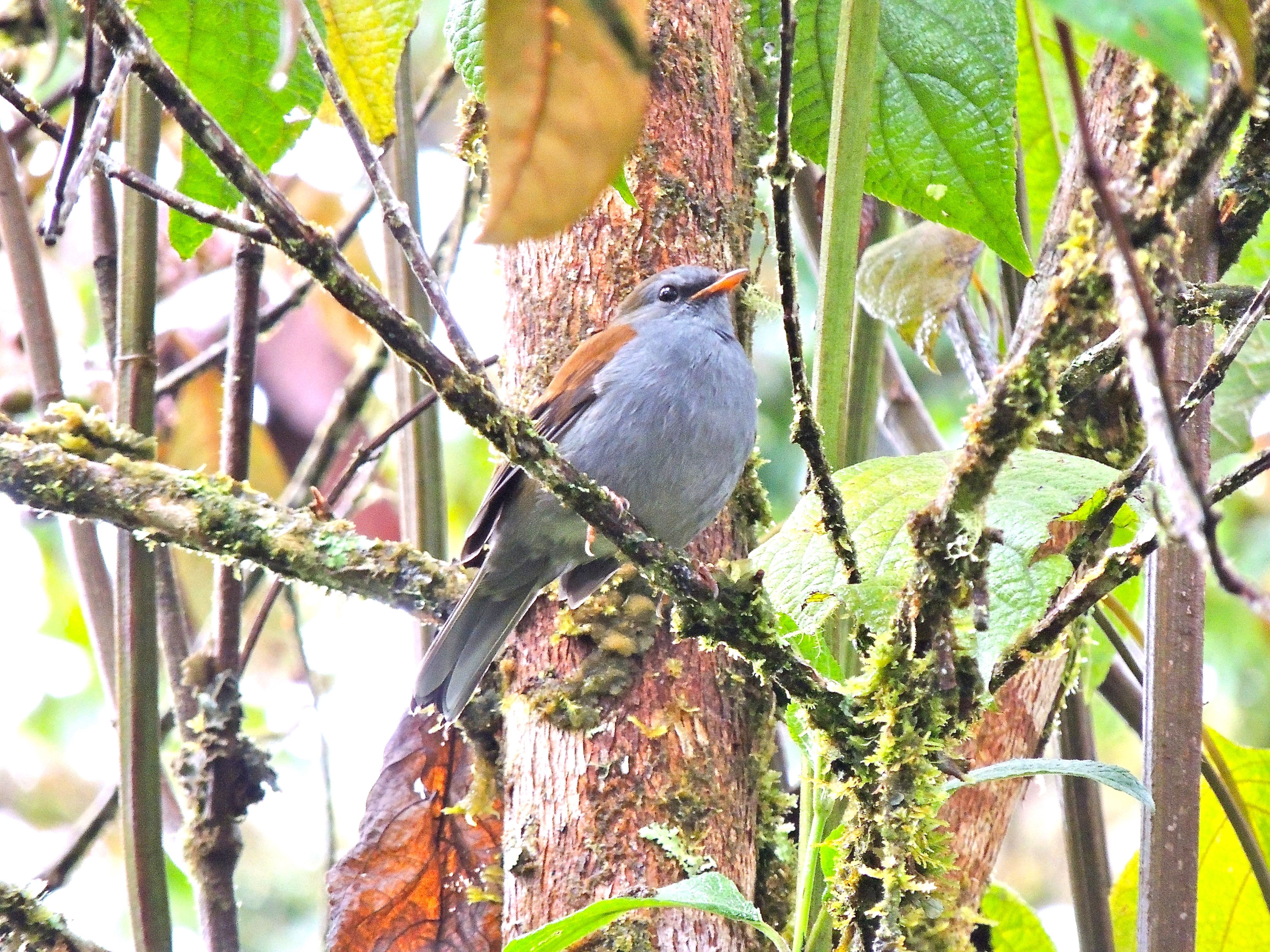 Andean Solitaire - Photo by William Young
Andean Solitaire - Photo by William YoungWe drove back toward Guango to bird the downstream trails around the lodge. Before we got onto the trail, we stopped at a bridge over a fast running stream and had a better look at a White-capped Dipper than I had yesterday. It was hopping on the rocks. It has a white spot on its back, and its tail is very short. When we had just walked off the bridge, I had a fleeting look at a Black-crested Warbler as it flew. We walked along a line of trees, and I had very good looks at two mountain-tanagers. The Lacrimose Mountain-Tanager has a dark cap and back, with a yellow spot behind the eye and another one right under it; the latter spot looks like a teardrop and is responsible for the birds name. (Lachrymose means shedding tears.) I also had prolonged looks at Hooded Mountain-Tanagers. They are blue on the back and yellow below, with a black hood and a bright red eye. Mountain-tanagers are large, beautiful birds. A Mountain Wren was foraging in the area.
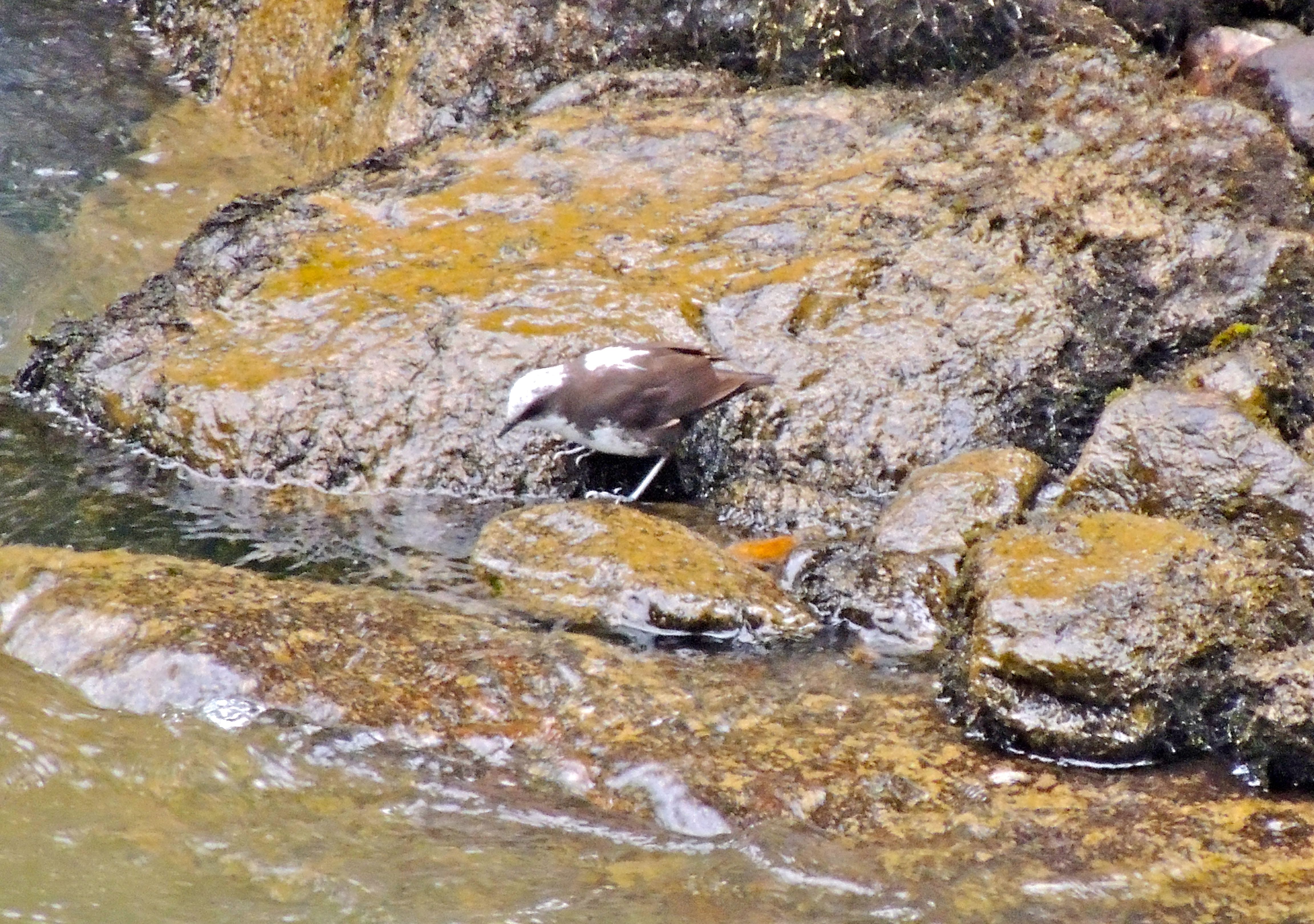 White-capped Dipper - Photo by William Young
White-capped Dipper - Photo by William Young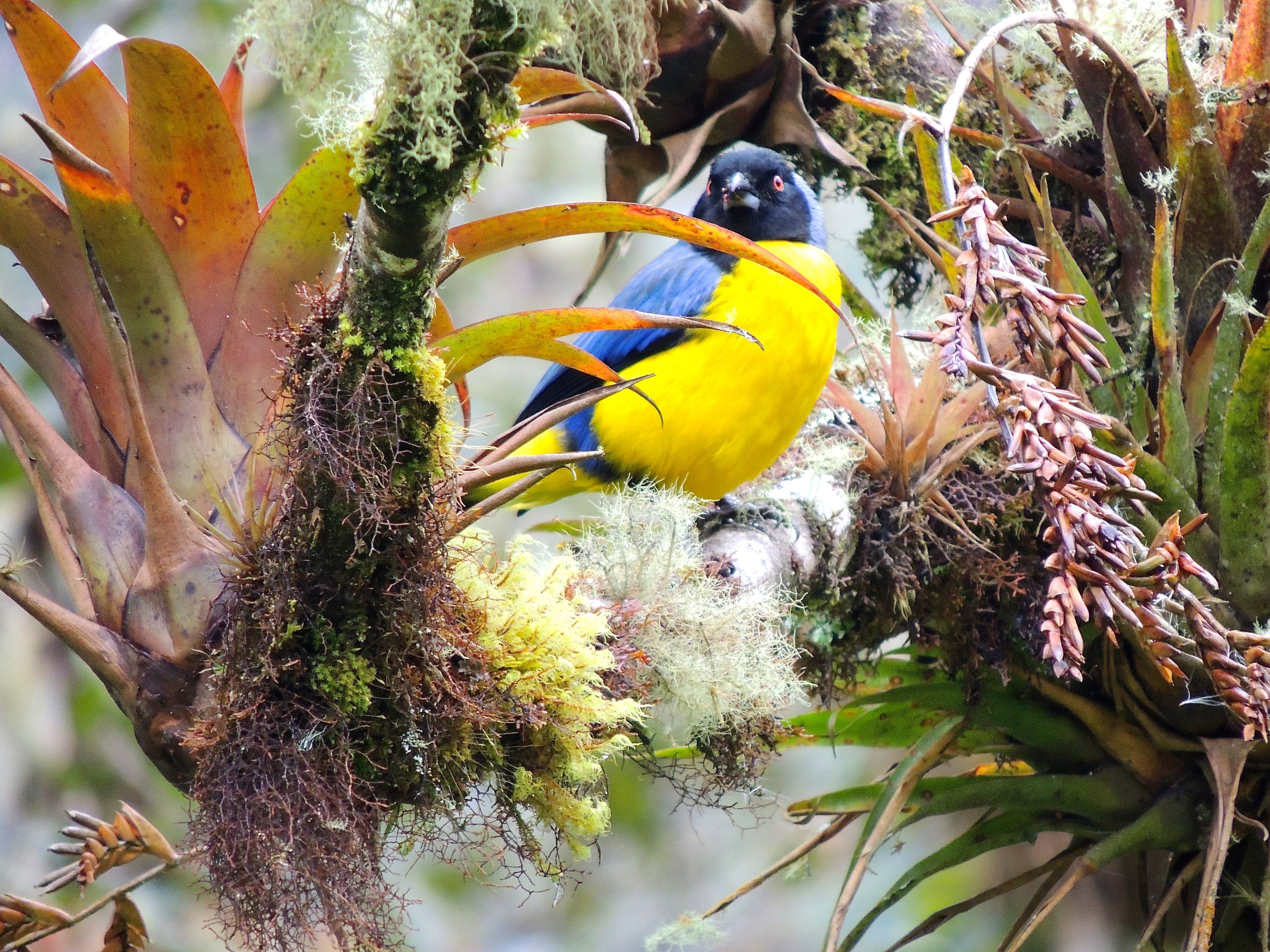 Hooded Mountain-Tanager - Photo by William Young
Hooded Mountain-Tanager - Photo by William YoungTwo other birds we saw in this area were small flycatchers called chat-tyrants. The Slaty-backed Chat-Tyrant has a dark slaty back and breast, a dark rufous belly, and a teardrop-shaped white mark over its eye. All of its colors look saturated. We had to walk down a trail into the woods to see this bird. When we came out of the woods, we saw a Rufous-breasted Chat-Tyrant, who has a rufous breast, buffy wingbars, and a broad white superciliary. I had a good look at one perched on the top of a tree.
After lunch, we went to the Old Baeza Road, which is the road outside San Isidro. On the way, Gustavo spotted a male Sickle-winged Guan perched in tree. The guan looked as if he had just eaten too much, because his breast was very puffed out. This bird from the eastern race of this species has a rufous throat, while the western race we saw on the property of Angel Paz does not. When we arrived at the Old Baeza Road, a male Golden-collared Honeycreeper popped up and sat for a photo. He has a black cap, is light below, and has a golden collar, blue wings, and a creamy rump. The trees in this area were loaded with tanagers. The Golden-eared Tanager is similar to the Saffron-crowned (which was also present), but it has a black cap and an orange ear. We saw Black-capped Tanager males and females. The male's plumage has shades of blue and aquamarine, with a black cap and black streaks on the breast. Blue-gray Tanagers were flycatching. We also saw a few Blue-necked Tanagers.
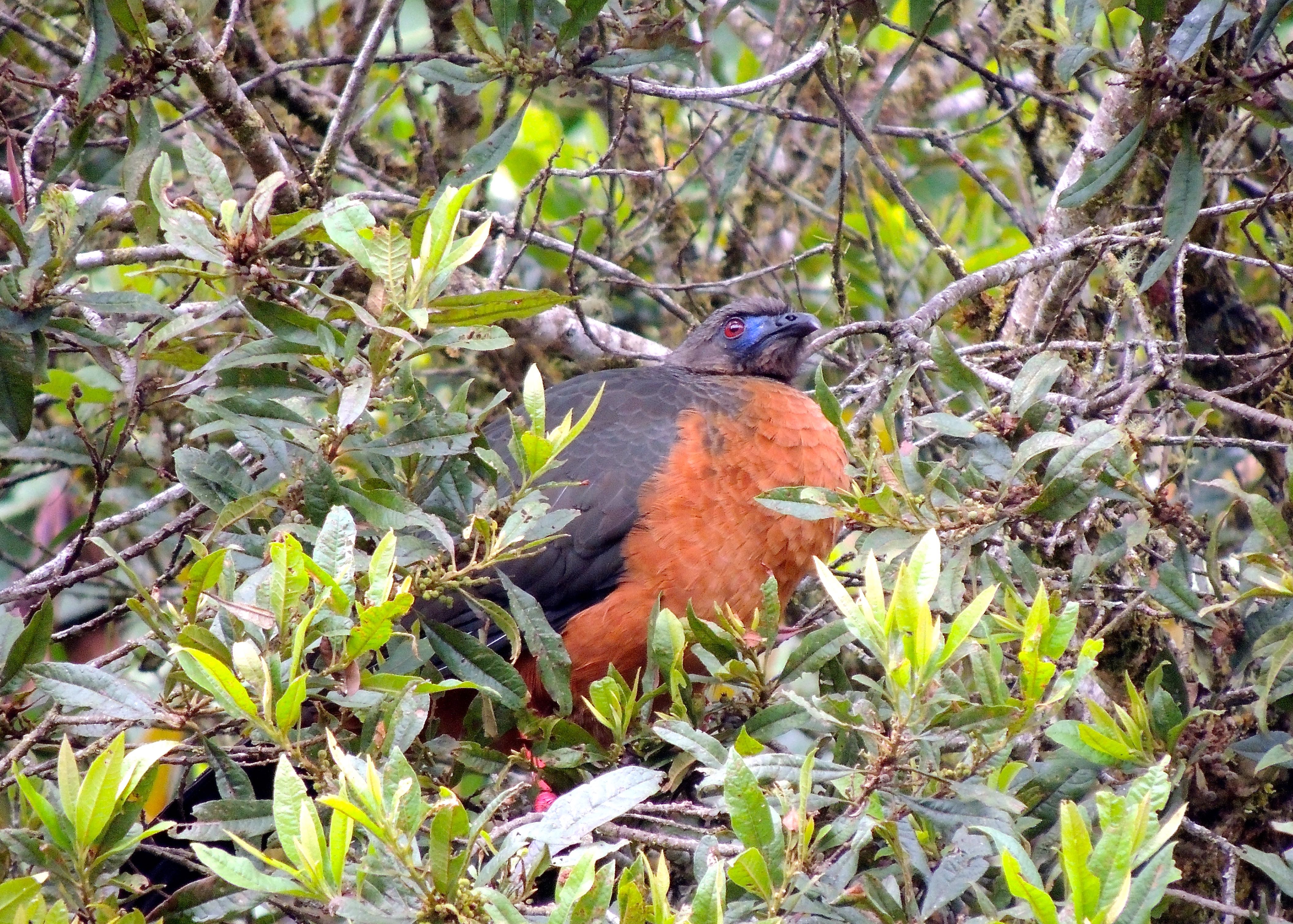 Sickle-winged Guan - Photo by William Young
Sickle-winged Guan - Photo by William YoungIn addition to the tanagers, we saw an Ash-browed Spinetail, who has a rufous cap and behaves like a woodcreeper. We saw a Social Flycatcher, and later a Lemon-browed Flycatcher, who looked smaller. The Lemon-browed has a dark back and a yellow supercilium and belly. There was a White-crested Elaenia, who has two white wingbars, and many Tropical Kingbirds were flying around. We saw a Golden-faced Tyrannulet, who has a light face and two white wingbars. The most common hummingbird was the Sparkling Violetear, with many flying around the trees and bromeliads. I also saw an Olivaceous Siskin hanging upside down on a bush — I could see the yellow belly and black face.
When we were heading back to San Isidro, we stopped to look for an Andean Potoo. We found the bird on the top of a tree. We watched it as it sometimes would flutter from the branch to flycatch in the fading light. When a car drove by, I could see the eyeshine from the bird. The plumage appeared to be reddish, with a white belly. We heard it vocalize, and it sounded a bit like a Common Potoo.
September 6
We got up at 5:30 to look for Rufous-bellied Nighthawks in the San Isidro parking lot. We did not see them, but down by the dining area, we flushed a nightjar, probably a Band-tailed Nightjar. We also heard a Rufous-banded Owl. A Highland Motmot flew by and vocalized. After breakfast, we loaded our luggage into the car. Before we left, I photographed some Inca Jays, Subtropical Caciques, and Russet-backed Oropendolas.
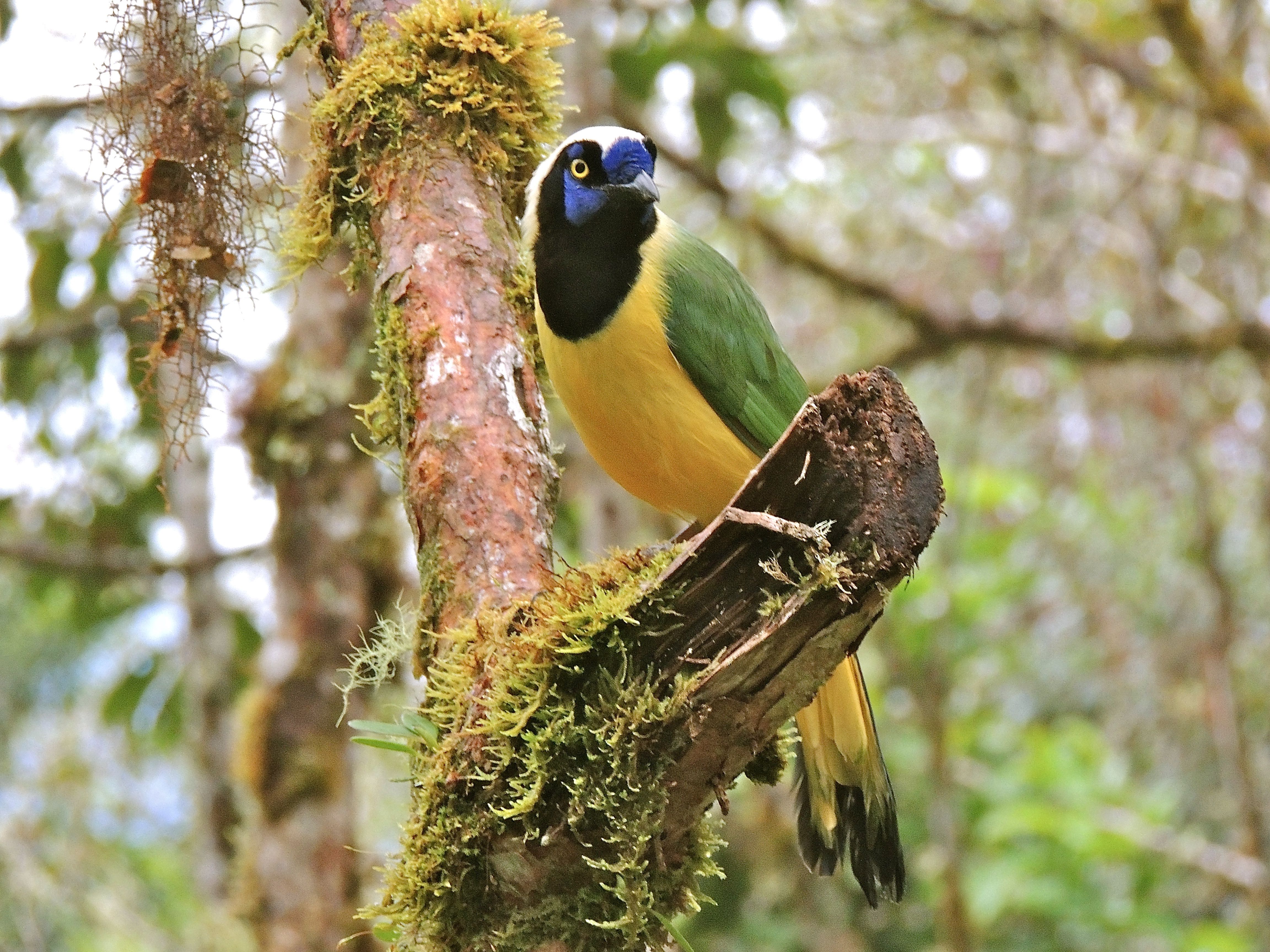 Inca Jay - Photo by William Young
Inca Jay - Photo by William YoungWe drove up to the Guacamayos Ridge, which is a ridge in the Eastern Andes. We stopped at the trailhead, but the rangers were not there yet. We did not want to leave our car unattended with our suitcases, so we birded briefly around the parking area before leaving at 8:15. During this brief stop, we saw two green-and-red Christmas birds. The Grass-green Tanager is green with a red bill and some red on face. We also saw a pair of Green-and-Black Fruiteaters. The male has a black cap. I photographed a female, who lacks the black cap, but has red bill and feet. Some Chestnut-collared Swifts flew over. They have a fast, shallow wingbeat. They are small, and you can't see the chestnut. We heard them vocalizing. We went a little further up the road and saw a Rufous-crested Tanager. It looks like a Black-eared Hemispingus. We also saw a Smoke-colored Pewee, who is dark with a slight crest.
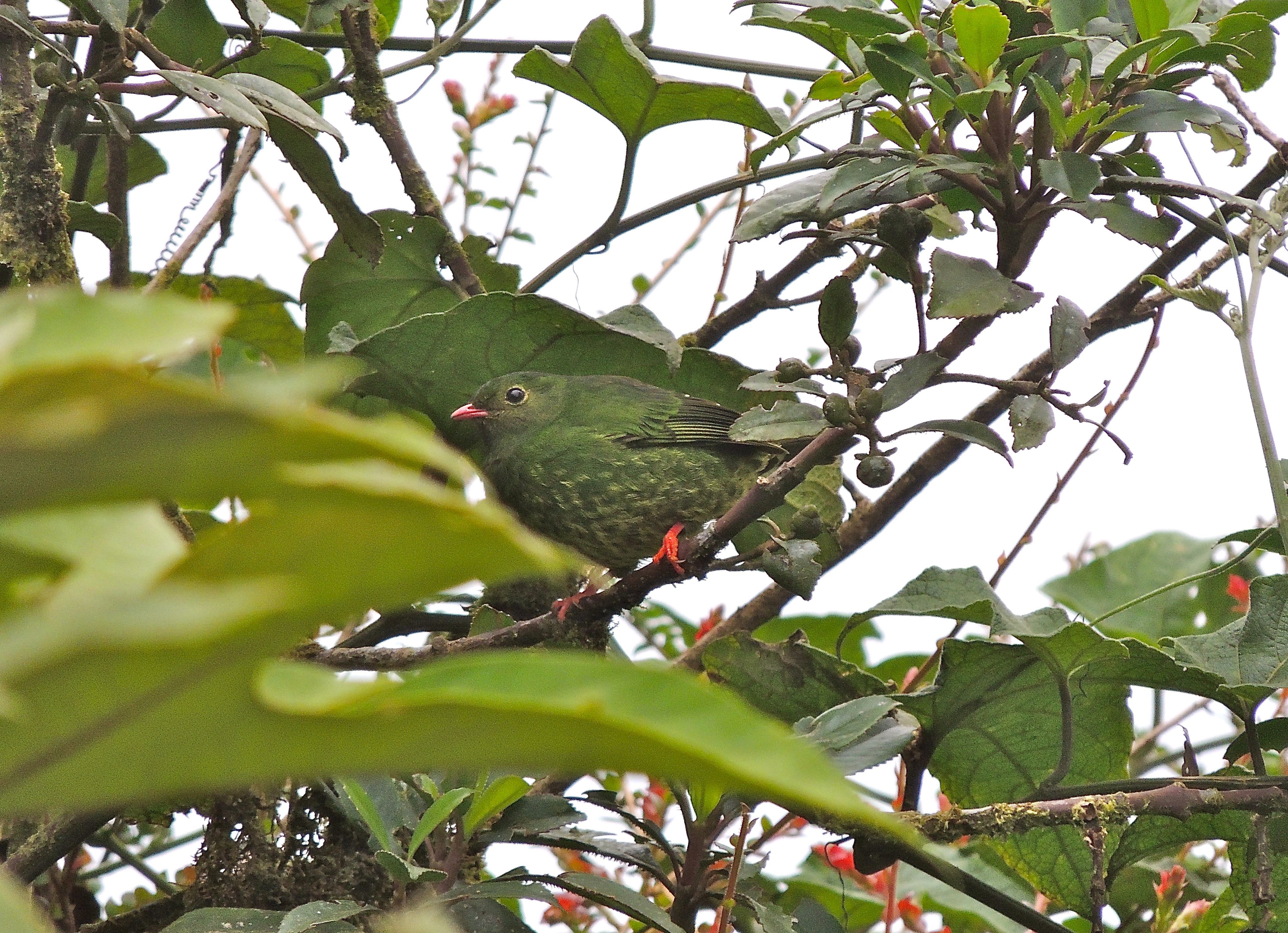 Green-and-Black Fruiteater - Photo by William Young
Green-and-Black Fruiteater - Photo by William YoungWe drove a half an hour out of our way to go to the Monkey's Island Lodge, where one can see up to 4 species of monkeys. When we arrived, the gate was locked, and a sign was posted to say it was closed for maintenance until September 8. While we were parked outside the gate, we found a Lafresnaye's Piculet, a tiny woodpecker who is less than 4 inches long. It looked like a little brown blob in the tree. Because of the light, I could not clearly see the barring on the back. I also saw a Blue-gray Tanager, and I photographed one that shows the white shoulder mark of the race who lives here.
We drove a half an hour back to the road to Wildsumacho. The lodge is located on the slope of the Sumacho Volcano. As with all the other lodges I have stayed in, this one is in the cloud forest. Before going to the lodge, we stopped on a road about ten minutes before the lodge and had lunch at some hummingbird feeders. Between these feeders and the ones at the lodge, we saw a lot of hummingbirds, many of them new for the trip. Gustavo said this evening that with the new ones we saw today, we have already seen 47 species of hummingbirds for the trip, and I still have eight days of birding left.
We saw a few Green Hermits — I had seen them in Panama. There were numerous Brown Violetears, a hummer I saw in Panama even though it is uncommon there. The Sparkling Violetears were probably the most numerous and most aggressive species at the feeders, although they did not seem as aggressive as the Chestnut-breasted Coronets at San Isidro. My favorites today were the Wire-crested Thorntails, who have a long wiry tail and long wire-like feathers sticking straight up from their head. They also have a distinctive white band on their rump. The female has the rump band but lacks the head and tail decorations. The Fork-tailed Woodnymph is like Green-crowned Woodnymph with a longer forked tail. The Golden-tailed Sapphire has a blue hood and golden tail, and a lot were at the feeders. The Many-spotted Hummingbird is a washed-out green with heavily spotted underparts. It has a white spot behind eye. It looks like a female White-necked Jacobin. The Gould's Jewelfront is striking, with a bright orange bar on its breast. The Black-throated Brilliant is a large hummingbird with a dark belly; the female has a moustache. The Napo Sabrewing is like a Black-throated Brilliant, but the bill is straight. It also has a white spot behind eye. The White-tailed Hillstar regularly flashes its white tail; it is large like a brilliant. The Rufous-vented Whitetip is green with white flashes on the tip of its tail. The race of the Booted Racket-tail on the eastern side of the Andes has boots that are buffy rather than white, and the boots are denser. The Ecuadorian Piedtail is a dull green with white tips to its tail. When we left the hummingbird area to go to our vehicle, we found an Orange-eared Tanager. It is green with a black throat. Only the male has orange ears.
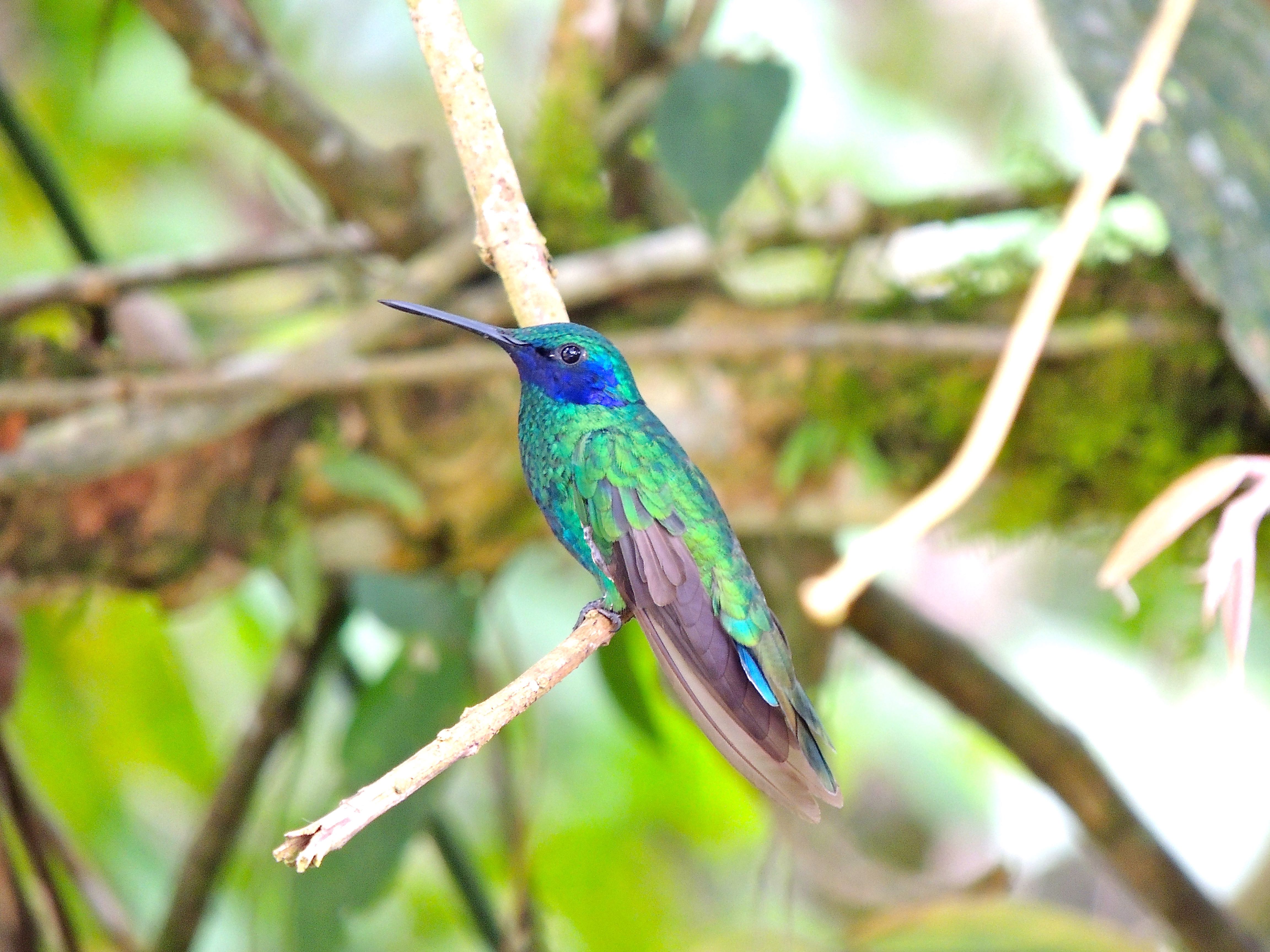 Sparkling Violetear - Photo by William Young
Sparkling Violetear - Photo by William Young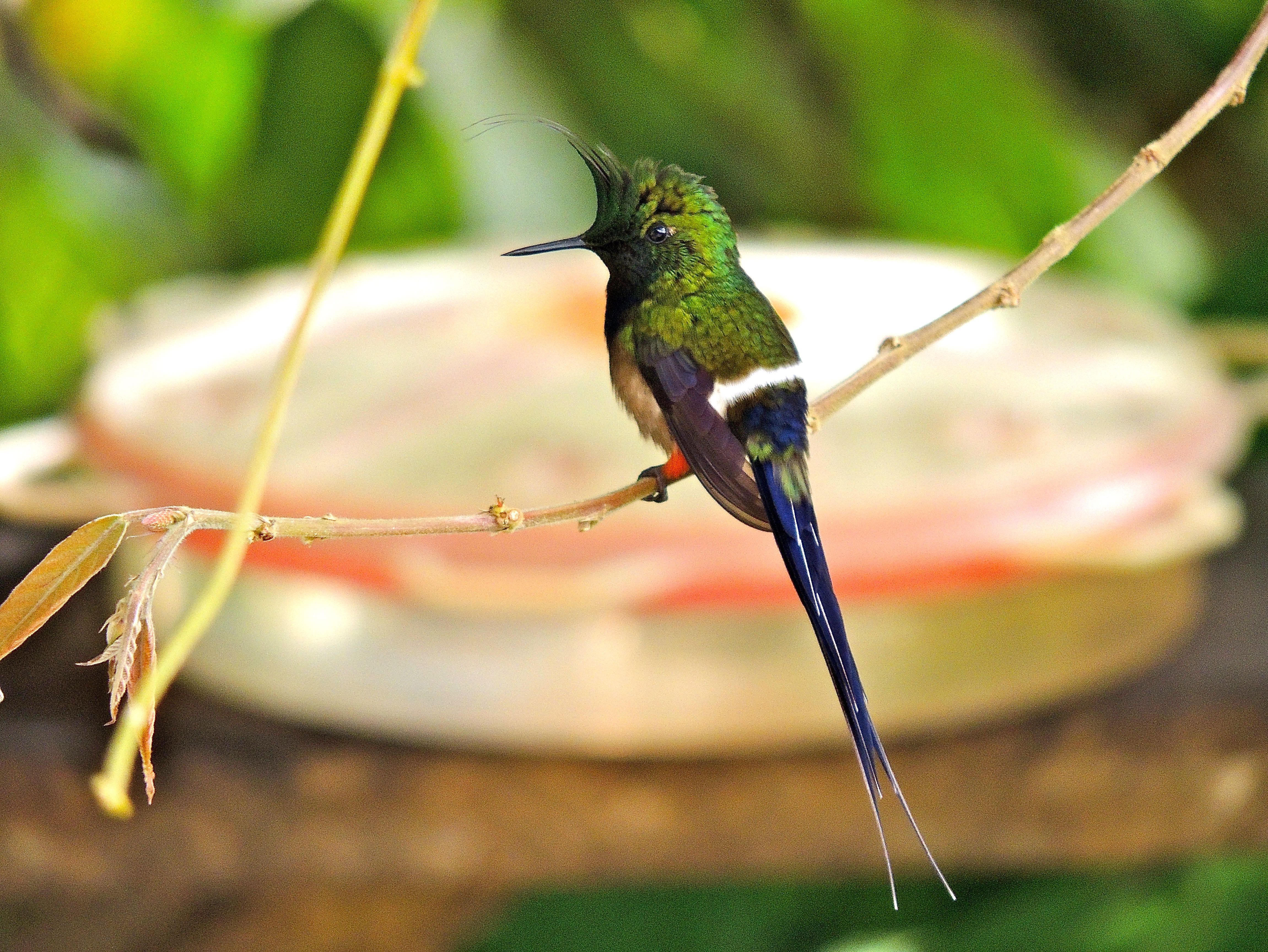 Wire-crested Thorntail - Photo by William Young
Wire-crested Thorntail - Photo by William Young Fork-tailed Woodnymph - Photo by William Young
Fork-tailed Woodnymph - Photo by William Young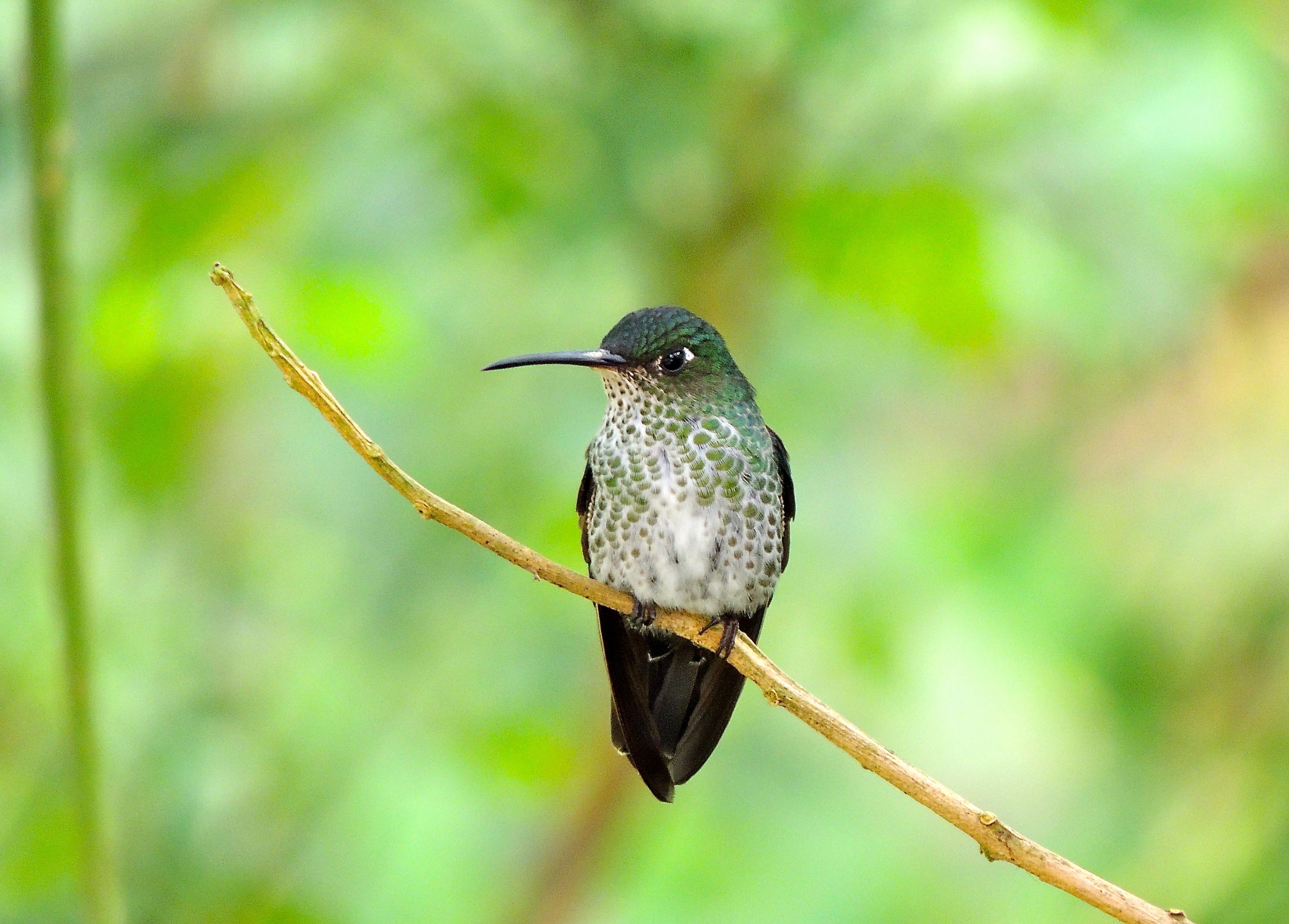 Many-spotted Hummingbird - Photo by William Young
Many-spotted Hummingbird - Photo by William Young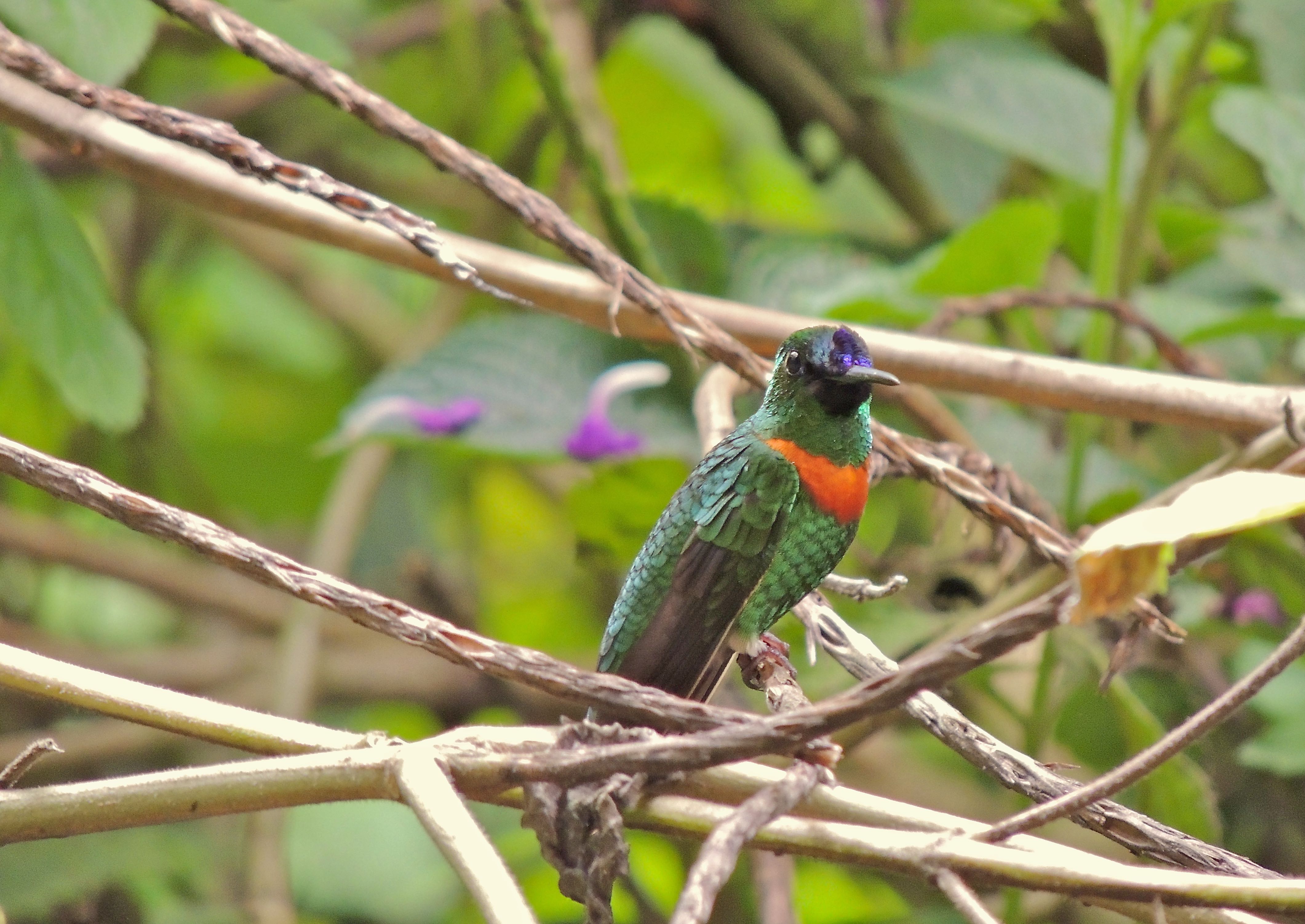 Gould's Jewelfront - Photo by William Young
Gould's Jewelfront - Photo by William Young Napo Sabrewing - Photo by William Young
Napo Sabrewing - Photo by William YoungAfter checking into my room at Wildsumacho and resting a little after the long and bumpy ride, Gustavo and I went birding on the road near the lodge. The weather had been overcast in the morning, but the afternoon was clear and sunny. We saw a female Silver-beaked Tanager, who lacks the silver beak and does not look much like a male. I later saw and photographed a male, whose head looks like black velvet with a reddish sheen. In one of the photos, the silver beak makes the bird look as if it is in a "Got Milk" commercial. We saw and heard a group of Yellow-tufted Woodpeckers. The yellow tufts over their eyes encircle their head, like a halo. The male has a black back, but his breast is bright red. Gustavo later found two nest holes that the birds were using. We saw three Gilded Barbets — a male, female, and juvenile — all feeding in a tree with mistletoe berries The juvenile is streaked below. The male has a bright golden throat and crown.
We saw a few flycatchers. The Sierran Elaenia is like a White-crested Elaenia, but it has fainter wingbars and no crest. It also has an eyering and two small white patches on its back. We later saw a White-crested Elaenia, which provided a good comparison. We saw Social Flycatchers, and a flycatcher that we scoped in good light had rufous edges to the primaries like a Rusty-margined Flycatcher, even though they are not supposed to occur here. We later saw a Long-tailed Tyrant in the scope. It has a dark back, and its long tail streamer was curling in the wind. We saw two species of Tityras. The Black-crowned Tityra male has a black crown, a black stripe on his wing, and no red on the face. We later saw a pair of Masked Tityras. The male's crown stops in the middle of his head. He has a red bill and red around the eyes. I had great looks at a Yellow-browed Sparrow in the scope. Its call sounds a bit like a buzzing cellphone. In this area, they are as common as Rufous-collared Sparrows, who are found only in the lowlands. The bird I saw was in bright sunlight, which accentuated the yellow on the brow and the top of the wing, a bit like on a Grasshopper Sparrow.
A Greater Yellow-headed Vulture flew over. It flies like a Turkey Vulture, but it has light wing edges like a Black Vulture as well as some additional light feathers on the trailing edge of its wings. There are two races of Turkey Vultures here. The migratory ones have a solid red head, while the race on this slope has a white mark on its neck. We saw a Roadside Hawk feeding a lizard to a juvenile. The lizard was hanging out of the juvenile's mouth. The juvenile has a dark face and breast. We saw a couple of different Black-billed Thrushes. They are gray-brown on top with a grayish breast, a white vent, and a black bill. A cooperative Ruddy Pigeon posed in one spot for a number of photos. It was port wine colored, with a red eye.
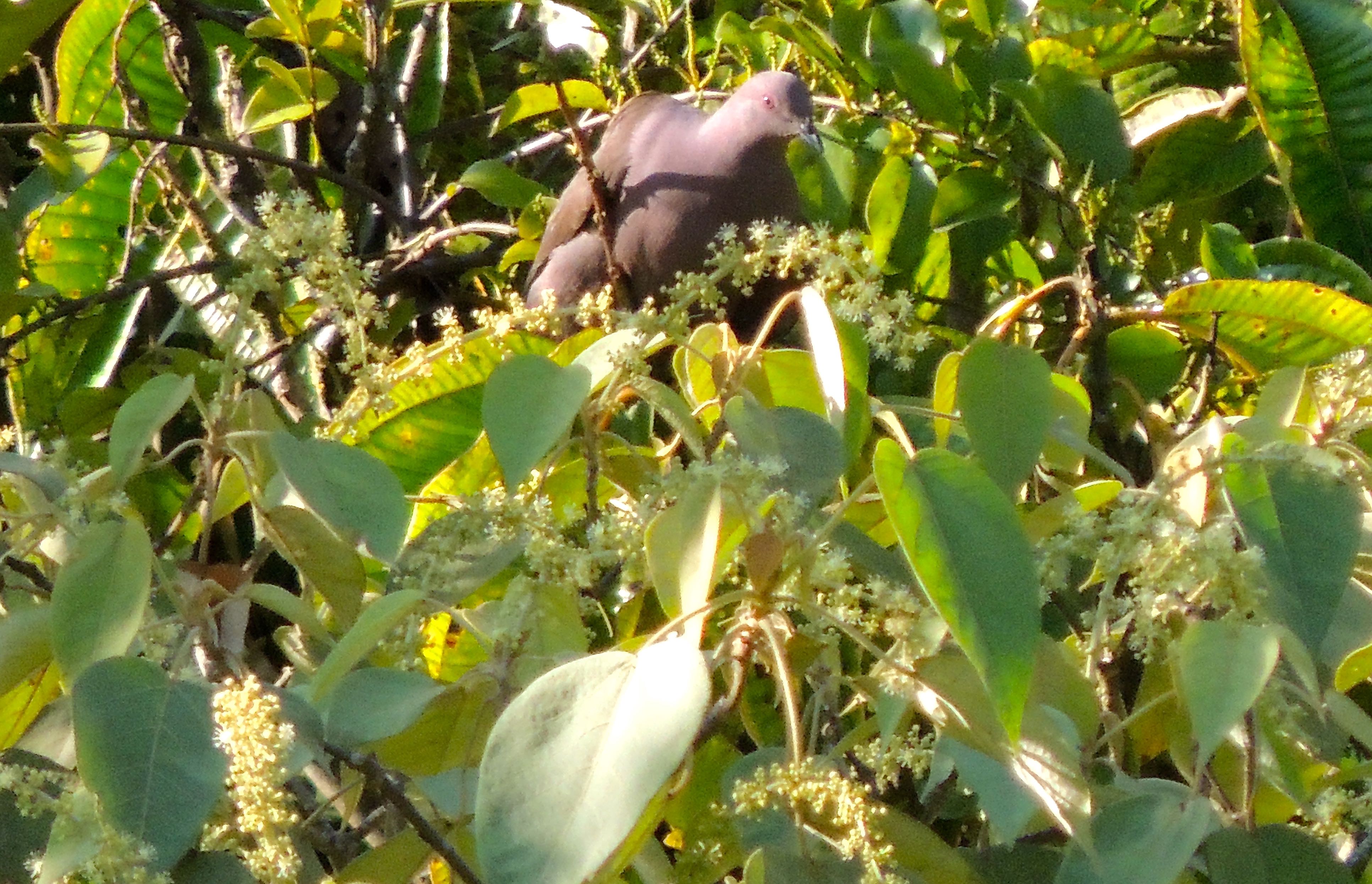 Ruddy Pigeon - Photo by William Young
Ruddy Pigeon - Photo by William YoungWe drove back and stopped on the same road a little way past the entry to the lodge. We saw and heard some Chestnut-breasted Macaws fly over, and we scoped two who landed in a tree. They are green with a whitish face and a trace of red on the shoulder. There were also some Military Macaws who flew over. We saw a couple of birds who looked like mockingbirds, but cocked their tail. They were Thrushlike Wrens, and they are bigger than most wren species. There were a couple of Smooth-billed Anis in the same area. We scoped a perched Crested Oropendola, who is dark with an ivory bill. And we scoped a couple of Many-banded Aracaris, who are gaudy birds with a bright yellow upper mandible, yellow belly with two bands, and blue skin around the eye.
Wildsumacho Lodge was started in 2008 by birders for birders. This is the first place I have stayed that has a small desk for me to write my notes. As with most of the other places I have been on this trip, Gustavo and I are the only guests. Another positive feature is that this is the first lodge I have stayed in where I feel warm. It has been really cold in all of the other places. I have met Jim and Bonnie Olson, who are the owners. At the lodge, there was a profusion of black hairy caterpillars who look like Wooly Bears. They seemed to be everywhere, and there were a lot of them crawling up the walls outside my room.
September 7
Early in the morning at Wildsumacho, we heard and saw a female Lined Antshrike, who is very similar to the Barred Antshrike. This species calls incessantly near the deck and sounds like a Barred Antshrike. The female has a rusty cap and a heavily barred breast. I photographed some Many-banded Aracaris from the deck. They have two multicolored bands across their yellow breast. Later, we walked up the road and I saw and photographed perched Chestnut-fronted Macaws, who have white cheeks. We also saw a Montane Foliage-Gleaner, who had a rusty tail and a plain back.
 Many-banded Aracari - Photo by William Young
Many-banded Aracari - Photo by William YoungSomeone from the Wildsumacho staff guided us into the woods along the Wildsumacho Research Station/Coopman's Trail to show us two species of antpittas. The first was a Plain-backed Antpitta, who is a dingy brown bird. The bird took a long time to come to get the worms being put out. It was on a fairly dark section of the forest floor. Into the same area came a Spotted Nightingale-Thrush, a robin-sized thrush with a head and back like a robin, but with a heavily-spotted yellow breast. It also has a red eyering and red feet. We went to another area and saw three Ochre-breasted Antpittas. These birds seemed to be waiting for us; they came right out and were in better light. Some of the local people call this species "Shakira" because of the way it stands and gently swivels its hips as if dancing to some music, like the pop star. On the way out of the woods, we found a pair of Golden-collared Toucanets. They have a broad golden eyeline that stretches around their neck. We saw a male and female Plain Antvireo. The male is plain gray, while the female has a rusty cap. I saw a bird foraging in the trees who looked like a gnatcatcher, but it probably was a Gray-mantled Wren. There was an Olivaceous Woodcreeper, who has an olive head and rufous tail and wings. It is small and looked much bigger when it was farther away. We saw a female Blue-rumped Manakin, who is very small, with a yellow-olive head and an olive body.
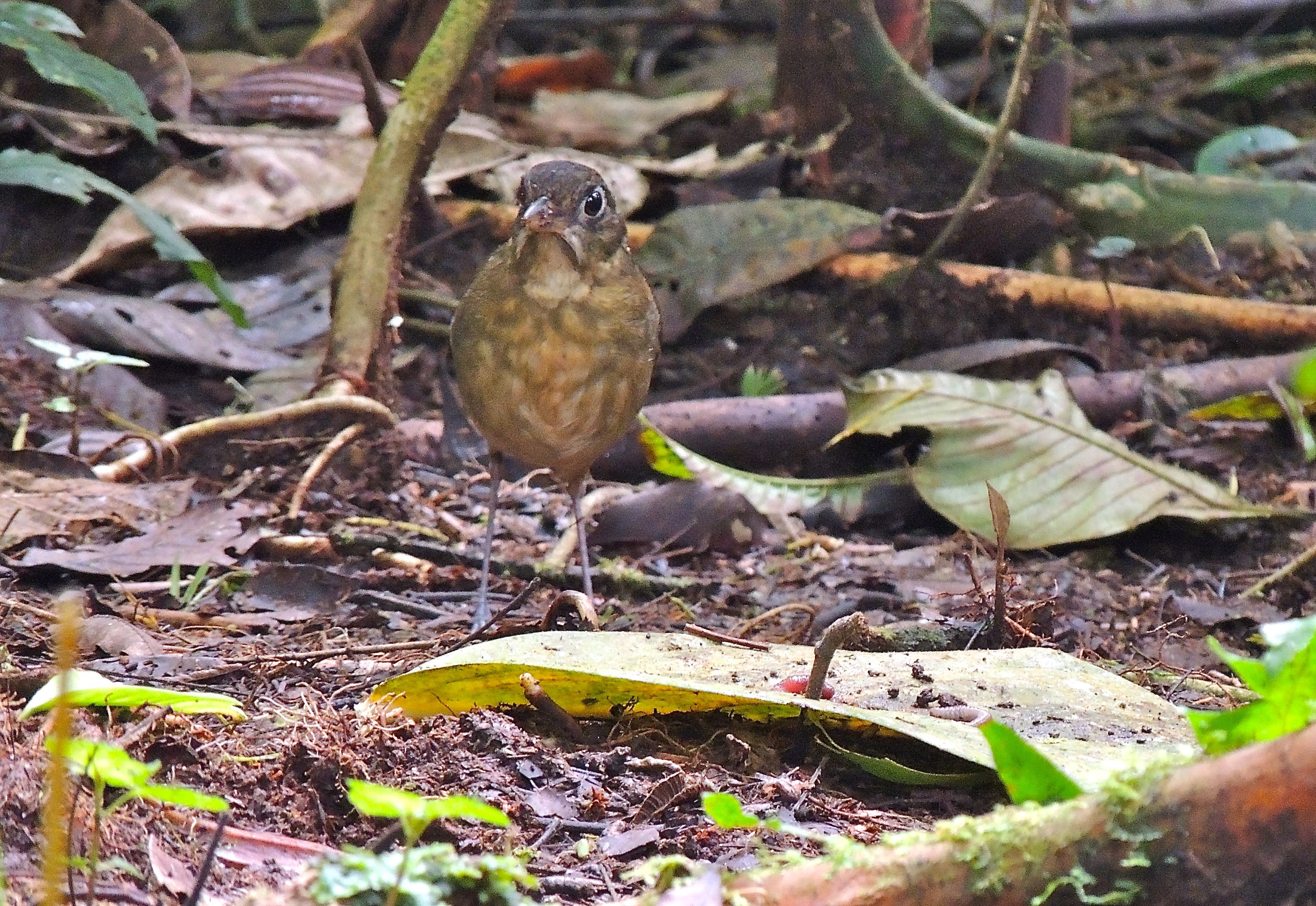 Plain-backed Antpitta - Photo by William Young
Plain-backed Antpitta - Photo by William Young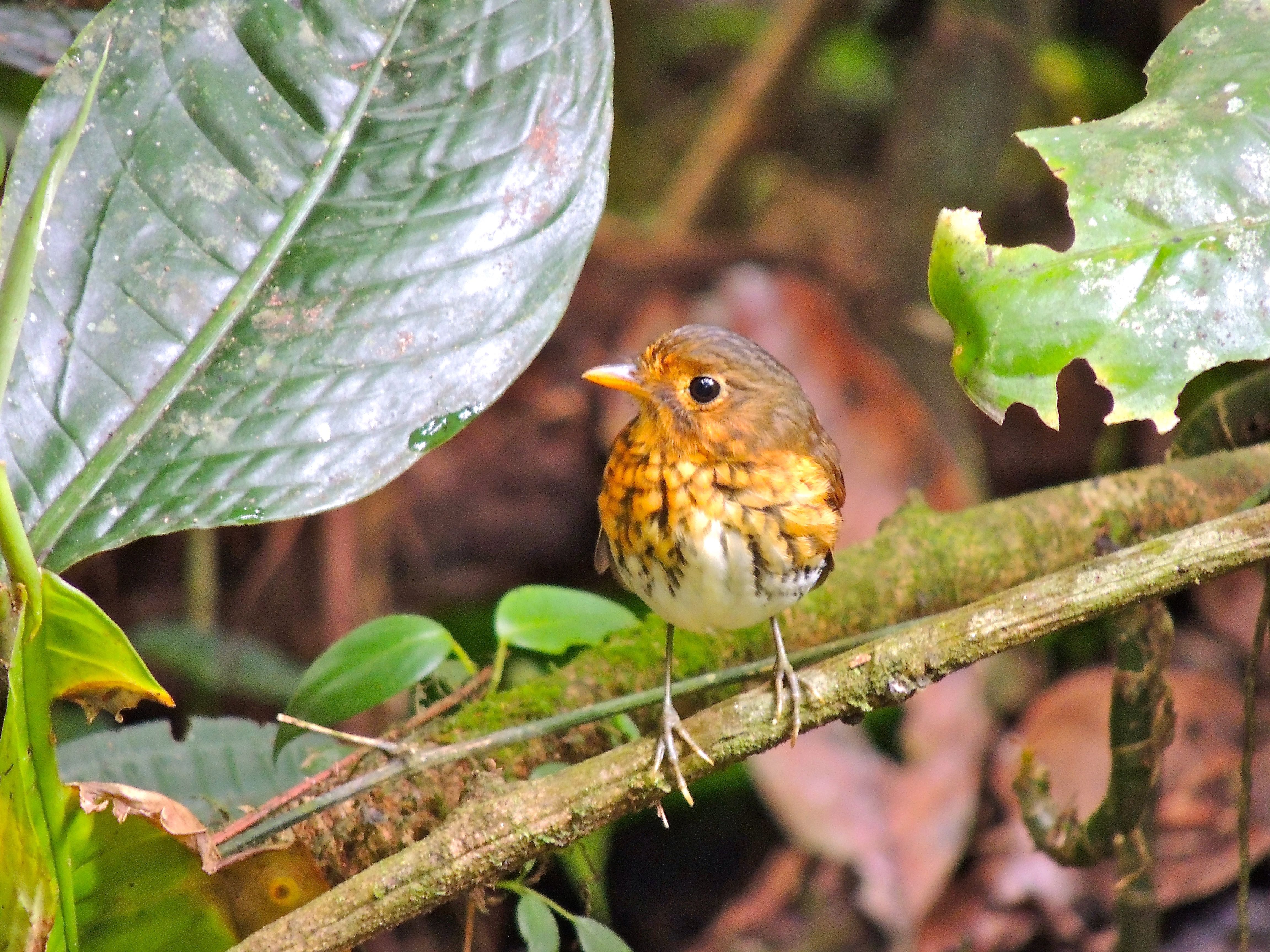 Ochre-breasted Antpitta - Photo by William Young
Ochre-breasted Antpitta - Photo by William Young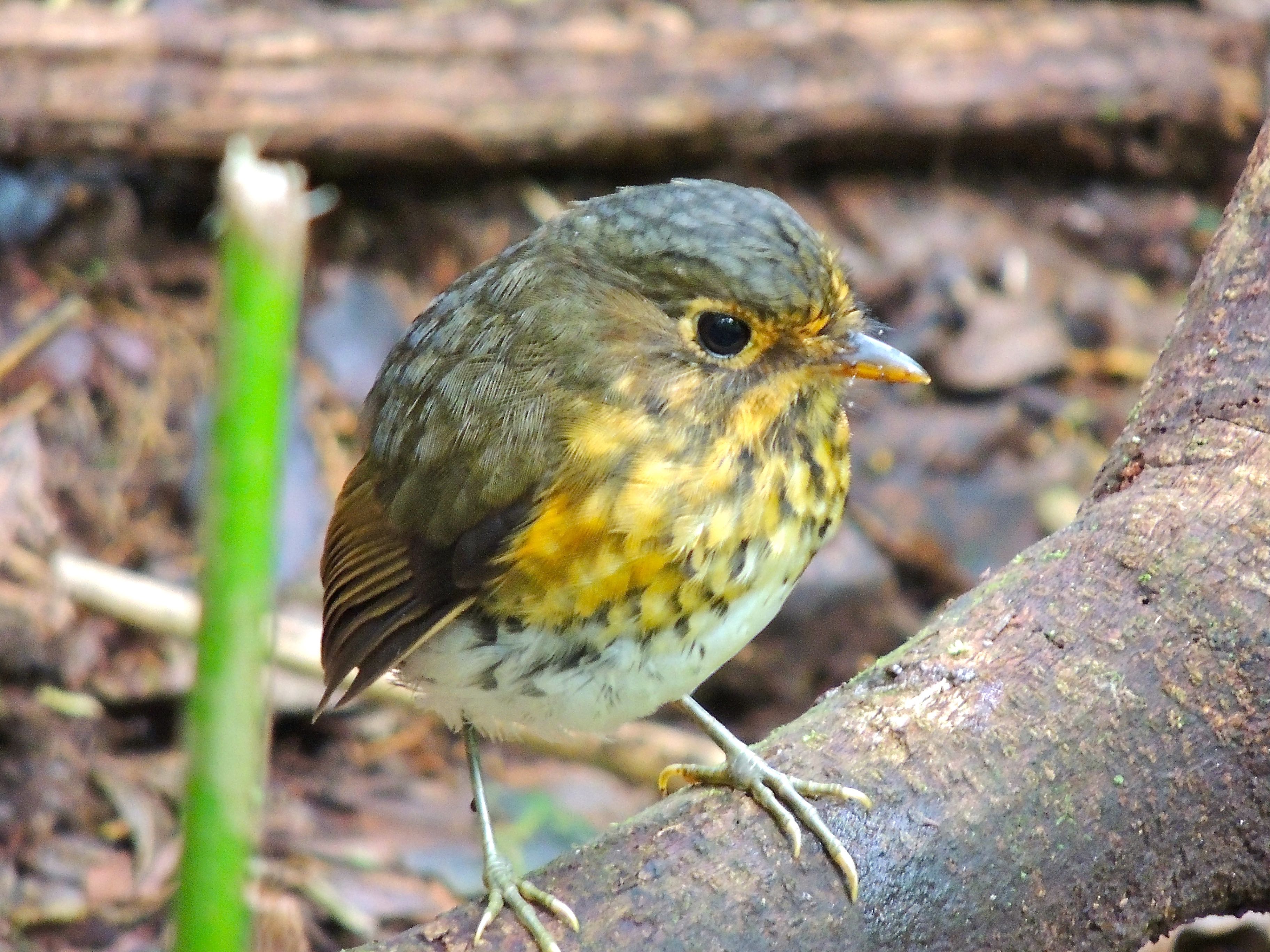 Ochre-breasted Antpitta - Photo by William Young
Ochre-breasted Antpitta - Photo by William Young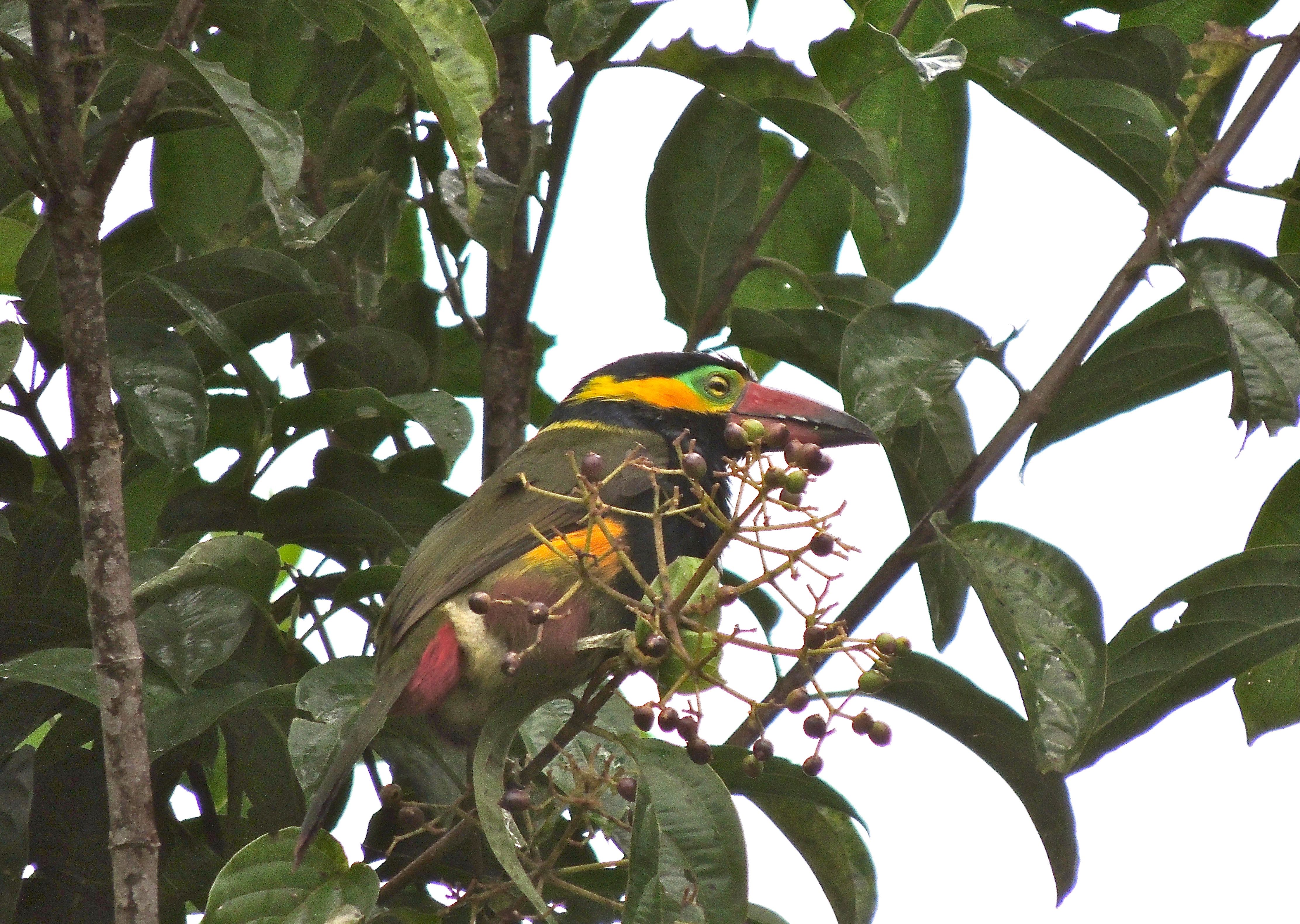 Golden-collared Toucanet - Photo by William Young
Golden-collared Toucanet - Photo by William YoungBack at the Wildsumacho lodge, more than a dozen Swallow-tailed Kites were flying in a group, hawking insects. There was a male Black-faced Dacnis in the trees behind my room. He has a black mask and wings, a blue body, a white belly, and a bright golden eye. We saw a female Gorgeted Woodstar, who is small and has two tones of rufous below. I later saw a juvenile male, who had a partial red cravat, but not a full one like a Calliope Hummingbird.
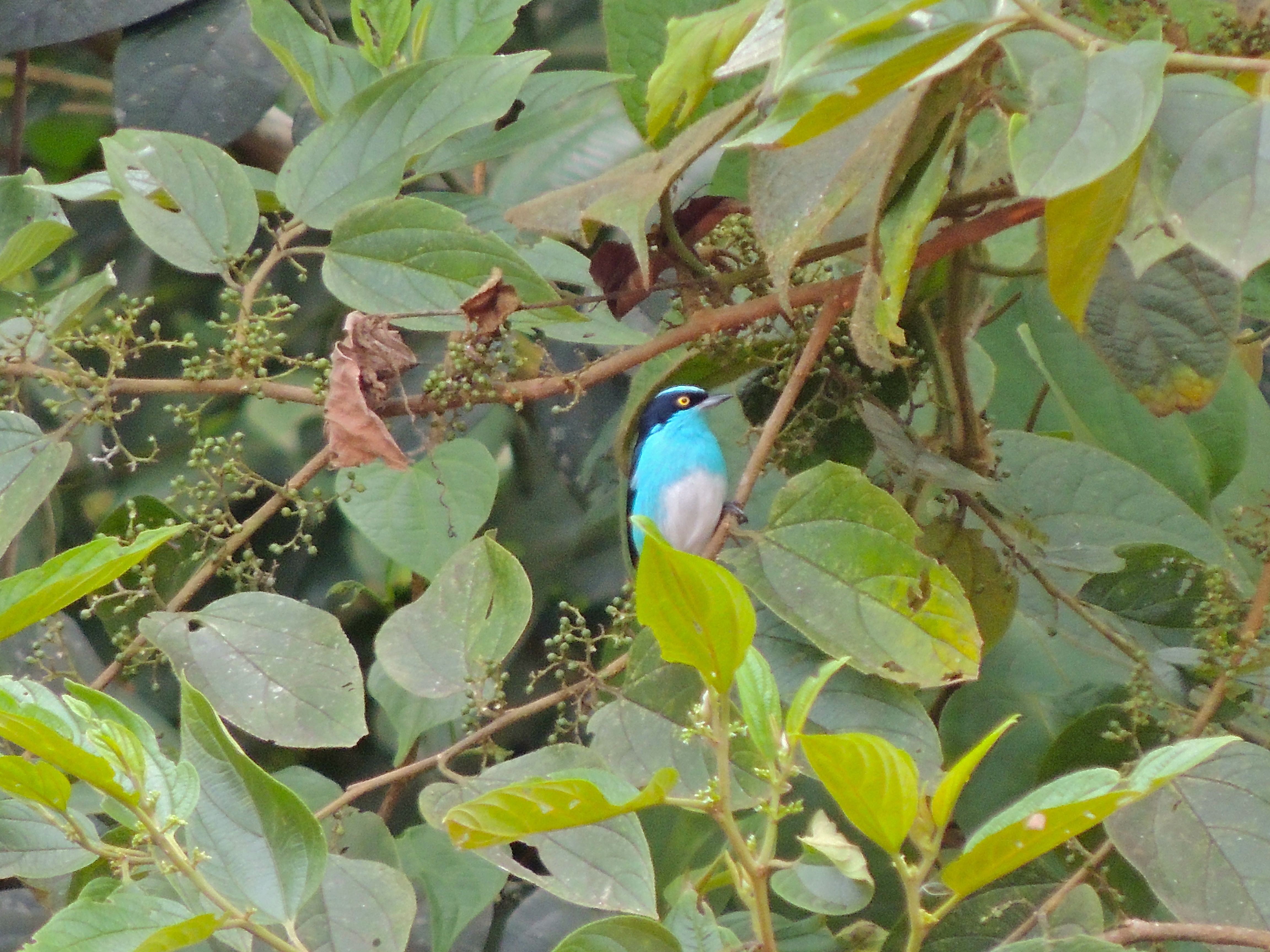 Black-faced Dacnis Male - Photo by William Young
Black-faced Dacnis Male - Photo by William Young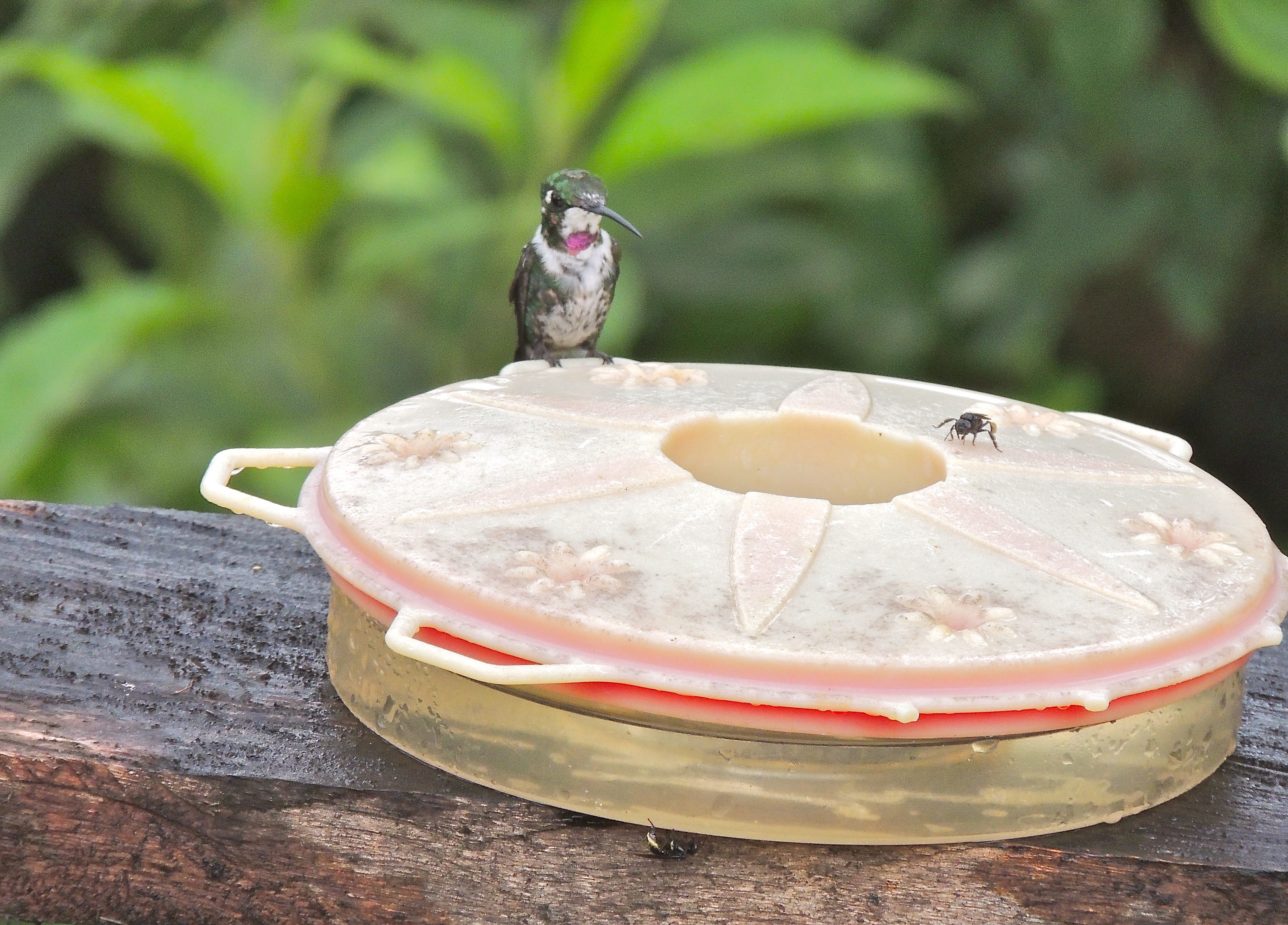 Gorgeted Woodstar - Photo by William Young
Gorgeted Woodstar - Photo by William YoungIt began to rain after lunch, and amazingly, we saw big feeding flocks in the bad weather. The tanagers and hummingbirds seemed to be especially active during the downpour. There were Paradise Tanagers, who are gaudy birds with a chartreuse head, black back, blue underparts, and a bright red rump. Some fed relatively low and out in the open. I saw a Green-and-Gold Tanager, who is mostly green with some yellow on the belly and some blue on the wings. The Bay-headed Tanagers have blue underparts and are green above, with a brown head. I saw my first Palm Tanagers as well as some Blue-gray Tanagers, but neither of these species is as common as they are in Panama. One of the more common tanagers here is the Blue-necked Tanager – in one tree, we saw a group of about six. Some Golden Tanagers were feeding low with the Paradise Tanagers. The Magpie Tanager looks more like a magpie than a tanager. It is even bigger than the mountain tanagers. It is a large black-and-white bird and appears to be twice the size of many of the other tanagers. We heard a Wing-banded Wren, who has a loud song. I had a better look at a Thrush-like Wren, and I could see the eyeline and some of the spotting below. We saw both a Golden-olive Woodpecker and some Yellow-tufted Woodpeckers around the lodge. We also saw what was probably the same family of Gilded Barbets whom I saw yesterday. A Golden-collared Toucanet was in the trees in front of the lodge. I also saw a Black-faced Dacnis, a Black-billed Thrush sitting very still at the base of a bush, and another female Blue-rumped Manakin.
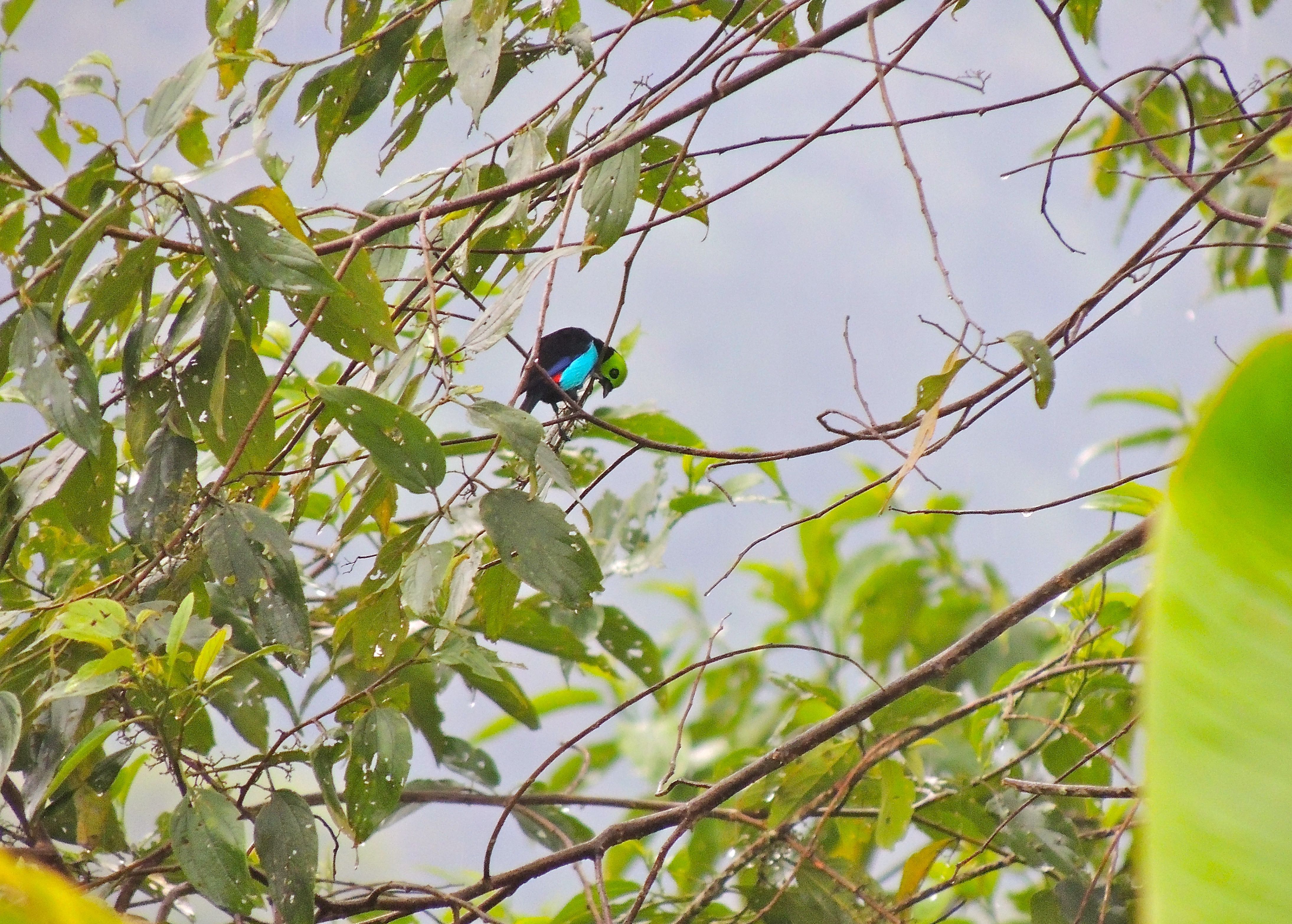 Paradise Tanager - Photo by William Young
Paradise Tanager - Photo by William Young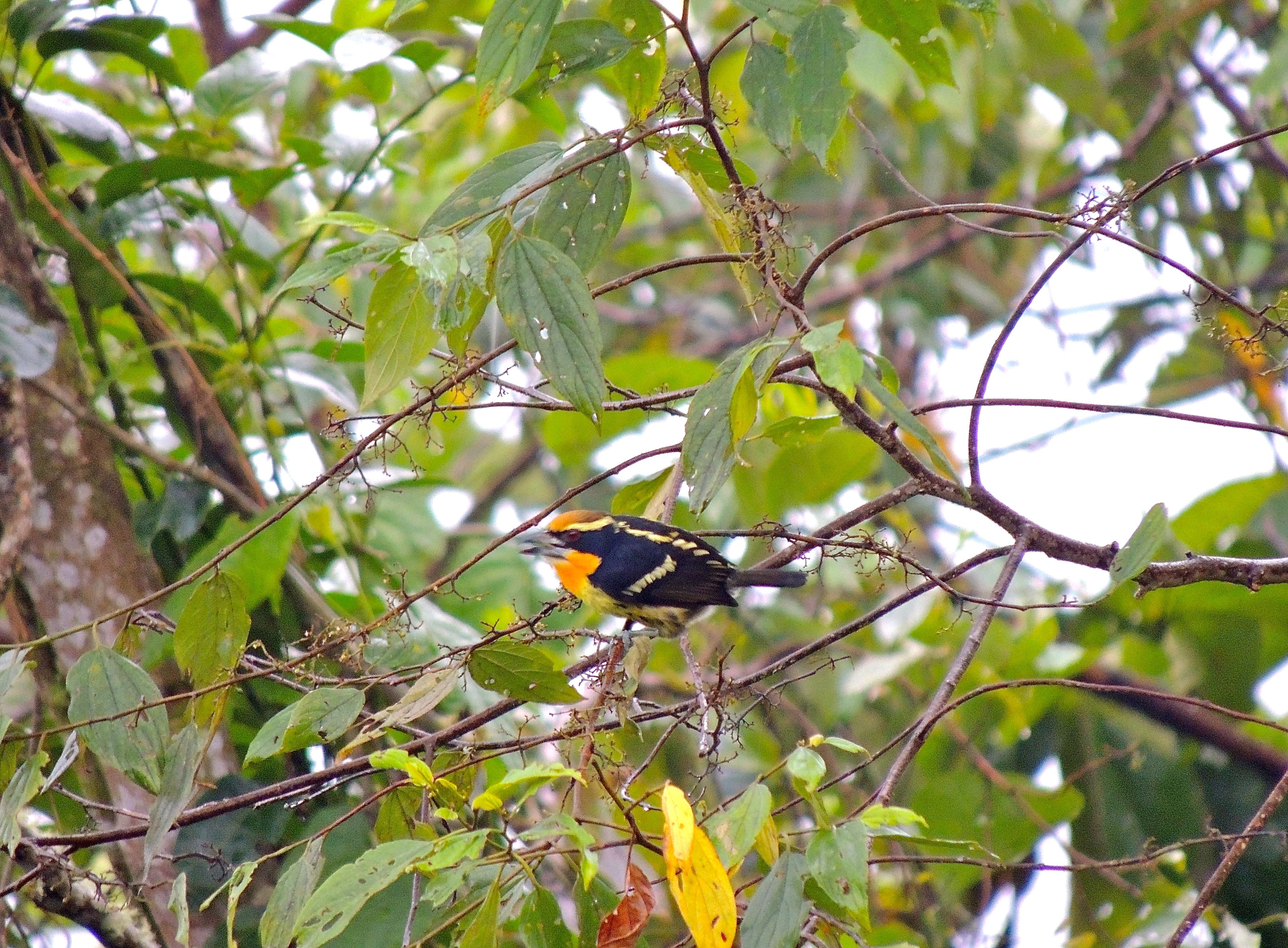 Gilded Barbet - Photo by William Young
Gilded Barbet - Photo by William YoungWe went to a marsh to look for a Blackish Rail and a Black-headed Antthrush, but we found neither. We saw a lot of Chestnut-fronted Macaws flying over as well as two Military Macaws. We could hear some perched Chestnut-fronted Macaws. They squawk when they are flying but seem to cackle when they are perched. It started to rain, so I went back to my room early and took a shower before dinner.
September 8
Gustavo took me to the same marsh we had visited last night, but we did not find much. We heard the incessant call of the Dusky Spinetail and also heard the call of a Black-capped Donacobius. We saw both Chestnut-fronted and Military Macaws flying. Both are very noisy. We returned to the lodge for breakfast and then went to the FACE (Foundacion Adelanto Communidades Ecuador) Trail. The weather was so rainy that we only walked the first portion before returning to the lodge. Before we left, I was able to hear a singing Musician Wren and record a little of his song.
From the veranda at the lodge, I saw a Grayish Saltator, who has a white supercilium and throat. We saw a Little Cuckoo, who is not a little bird. Rather than having a tapered tail, its tail expands like a paddle and has white edges. When it dove, it dropped like an arrow. It has a very sweet looking face. We later saw a Squirrel Cuckoo, who is a bigger version of the Little. We saw about a dozen Maroon-tailed Parakeets feeding in a tree. They have a white eyering, a scaly neck, some red on the wings, and a long tapered brownish tail. They sometimes feed upside down. We saw Paradise, Golden, Blue-necked, Palm, and Bay-headed Tanagers. I had nice looks at a Streaked Xenops foraging in a tree. It looks a little like a wren, with a white supercilium and spots on the crown. Jim told me there was a White-crowned Manakin near an area where some men were working and that he was going to get his camera. Rather than following him, I went to where the manakin was. I was able to take a photo of the bird, who flew a moment after Jim arrived. It is jet black with a white cap and a red eye. On the steps to the driveway, we saw a White-necked Thrush, who looked a lot browner than the Dark-billed Thrushes we have been seeing.
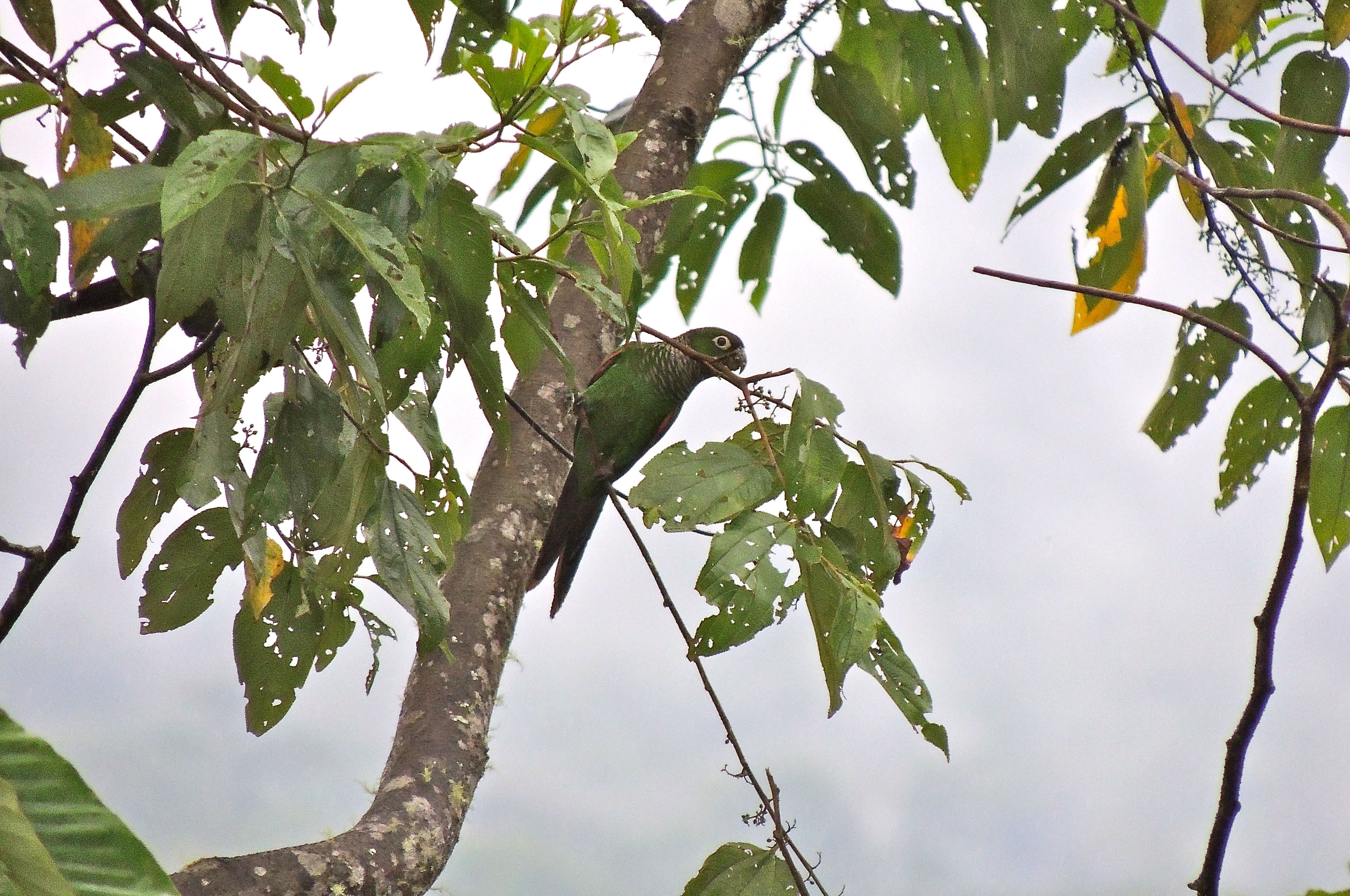 Maroon-tailed Parakeet - Photo by William Young
Maroon-tailed Parakeet - Photo by William Young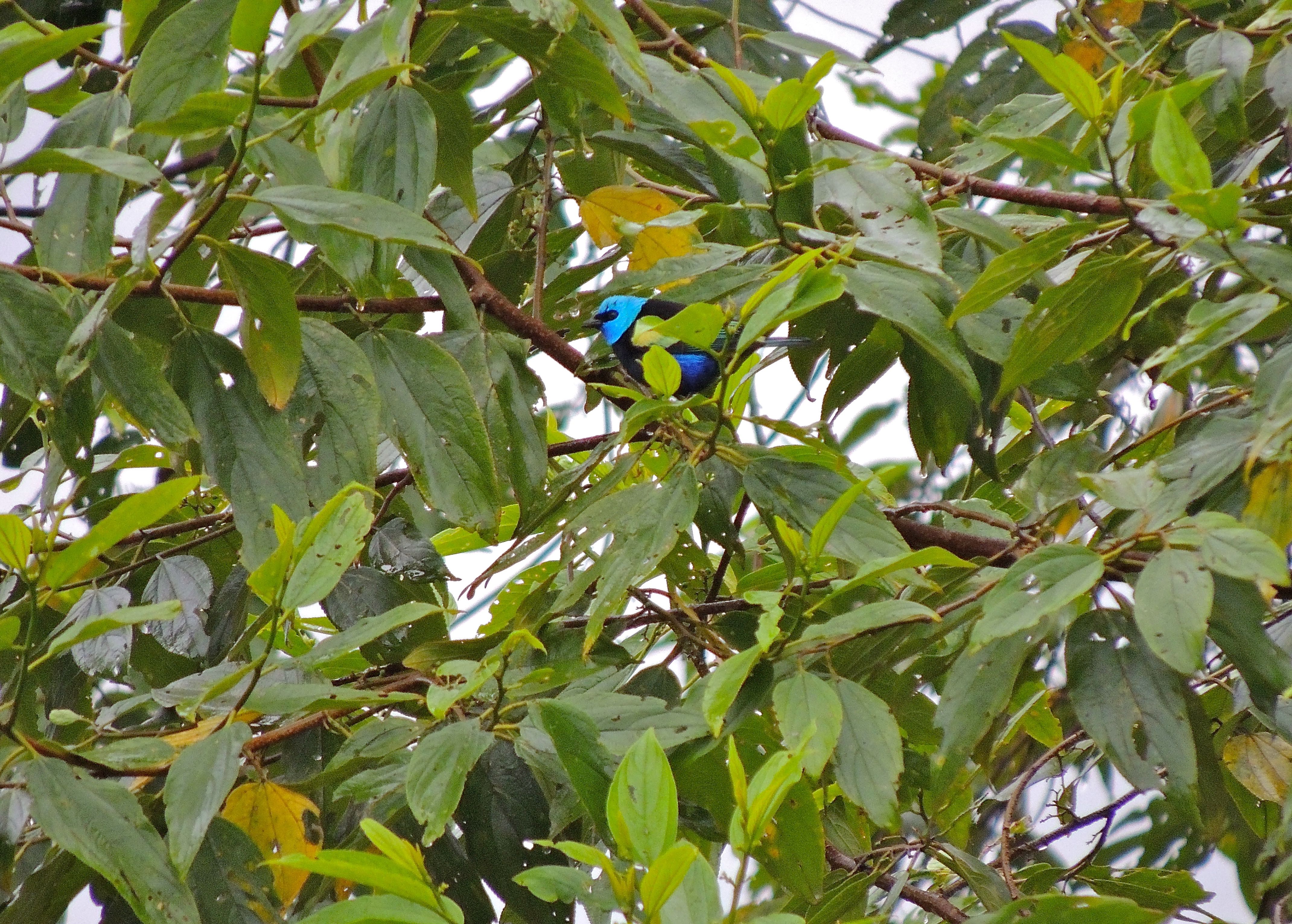 Blue-necked Tanager - Photo by William Young
Blue-necked Tanager - Photo by William Young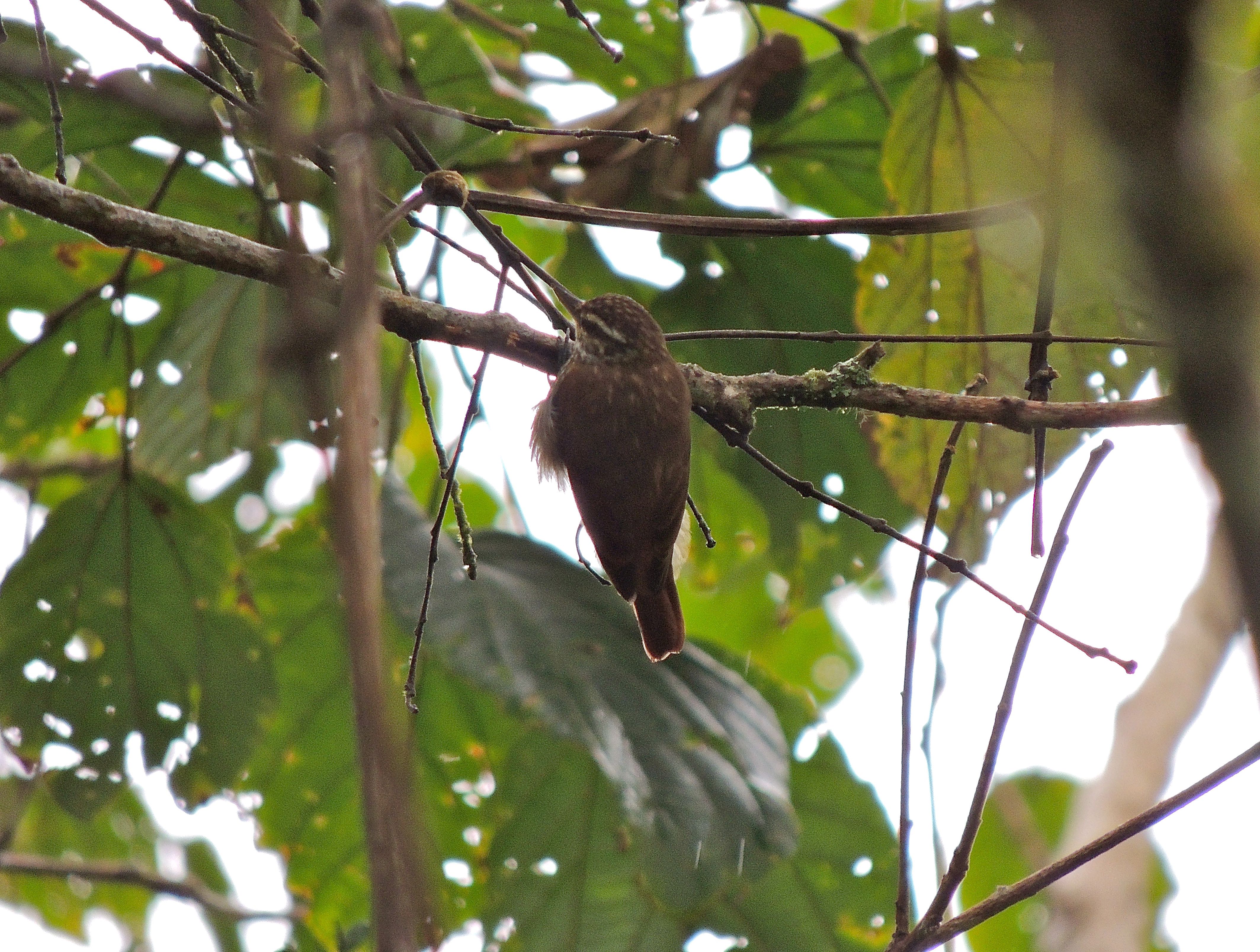 Streaked Xenops - Photo by William Young
Streaked Xenops - Photo by William Young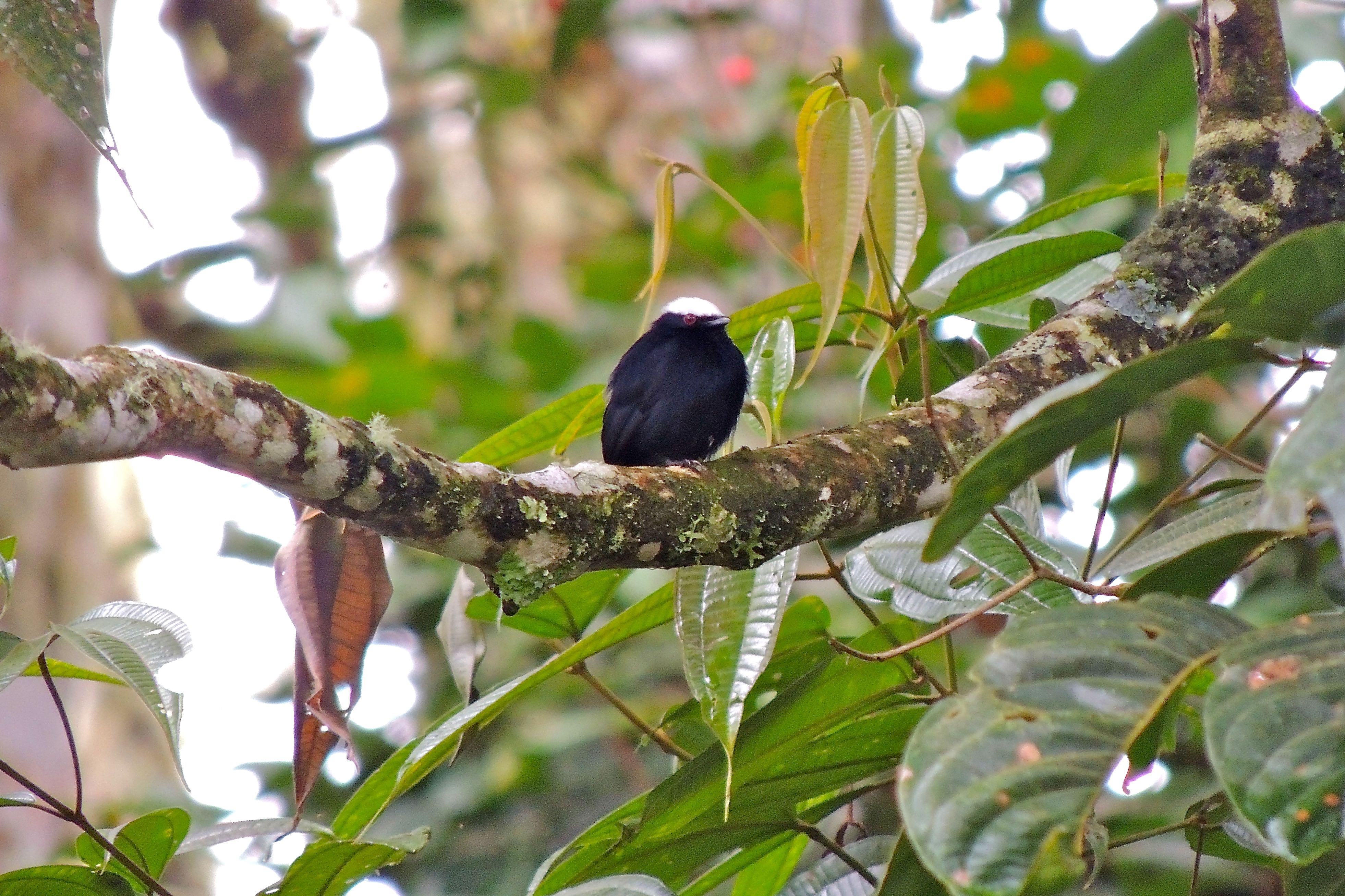 White-crowned Manakin - Photo by William Young
White-crowned Manakin - Photo by William YoungMy lunch experience was amazing. I had just begun to eat when I saw some Swallow-tailed Kites in the sky as I looked out the window. All through lunch, the number varied between 14 and 27. Sometimes, they flew very close to the lodge. I went outside and took some photos. One photo showed two kites side-by-side — one dorsal view and one ventral. The kites sometimes dove after insects. They were still around after we left for our afternoon hike. Jim said that it is not uncommon to see a smaller group of kites, but seeing so many is unusual.
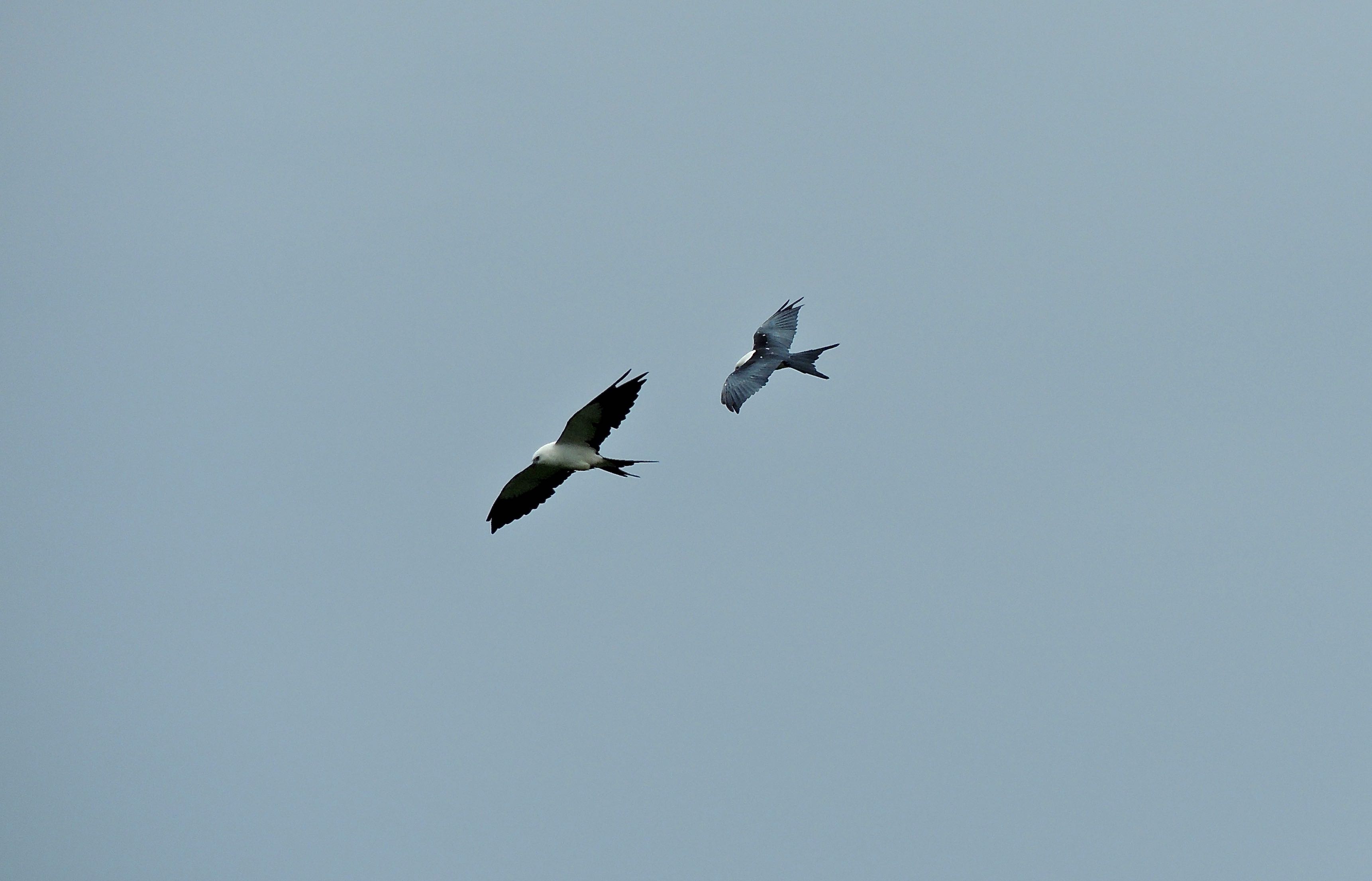 Swallow-tailed Kites - Photo by William Young
Swallow-tailed Kites - Photo by William YoungAfter lunch, we walked along the Benavides Trail near the lodge. We saw a Blue-browed Tanager, who has a black head and back, a blue brow, a blue breast, and tan underparts. I got a partial view of a female Cock-of-the-rock, who is a duller color than the males I saw with Angel Paz. I watched a Montane Foliage-Gleaner gleaning foliage, so I was able to see the behavior that gave them their name. It was not so much gleaning as ripping at the foliage. It has an eyering and a white supercilium. In the same tree was a Montane Woodcreeper. We then went back to the FACE Trail. We saw a Marble-faced Bristle-Tyrant, possibly at a nest. I saw my first monkeys of the trip. About six Black-mantled Tamarins were moving through the trees. We also came across a lek for White-capped Manakins.
Perhaps the most exciting part of this walk was seeing a Catharus thrush hopping on the path ahead of us. I called it as a Veery. When I tried to get closer to snap a photo, the bird flew toward the trees, not to be seen again. I had a pretty decent look at it, and the color looked like the color on a lot of Veeries I have seen. It looked too light to be a Swainson's or Gray-cheeked Thrush, and it did not have the spotting that those two species have. Gustavo saw the bird too. It would be a first Ecuador record for a Veery. When I was in Panama, I was with some very skilled guides. One day at the Metro Park in Panama City, there was a Catharus thrush hopping on the path ahead of us whom my guide called as a Swainson's, but I said it was a Veery. My guide looked at the bird and agreed with me. I suspect that even skilled birders from Ecuador are not used to seeing the boreal migrants, so some species are misidentified or overlooked.
As we were coming out of the woods, we saw another problem bird. There was a Contopus flycatcher on top a vertical branch, occasionally flycatching. We had good looks at the bird through a scope. It looked like a pewee, but the bill was solid black with no trace of yellow. The field guide does not show any Contopus flycatcher with a solid black bill. I wondered whether it could be a young bird. I think it was an Eastern Wood-Pewee, because there appeared to be a little white near the lores.
While Gustavo and I were doing our list after dinner, we heard a Band-bellied Owl but could not find it. The sky tonight is like a planetarium. There is only a sliver of a moon, which allows a lot of stars to be seen.
September 9
This morning, I heard a couple of Chestnut-fronted Macaws fly over as I was getting ready to go outside. Gustavo went to the FACE trail to mark the site where we had seen the Veery so that others could look in the area. I was birding by myself. I heard a persistent peep-peep-peep call and asked Jim what it was. He said it was a Black-billed Treehunter, and I eventually got a few looks at this ovenbird. At the steps to the driveway, I saw a Montane Foliage-Gleaner, a Golden-crowned Flycatcher, a Dusky-capped Flycatcher, a couple Yellow-browed Sparrows, and a White-necked Thrush. I saw a small round brown bird with a rusty cap who was a female Plain Antvireo, who is not as plain as the male of the species. A Tropical Screech-Owl repeatedly called.
I had breakfast and took one last look at the hummingbird feeders. I saw Booted Racket-tails, Golden-tailed Sapphires, Fork-tailed Woodnymphs, Brown and Sparkling Violetears, and Wire-crested Thorntails. We saw a Many-spotted Hummingbird who had a golden tinge — it might have been a young bird. I also went to the bushes for a last look at a Violet-headed Hummingbird — this species does not come to the feeders because its bill is too short. I said good-bye to Jim and Bonnie. Wildsumacho is a wonderful facility, and they have done a great job. Jim was saying that when planning a trip here, you should plan to stay for at least three days, because the chances are that there will be rain on at least one of those days, even during the dry season.
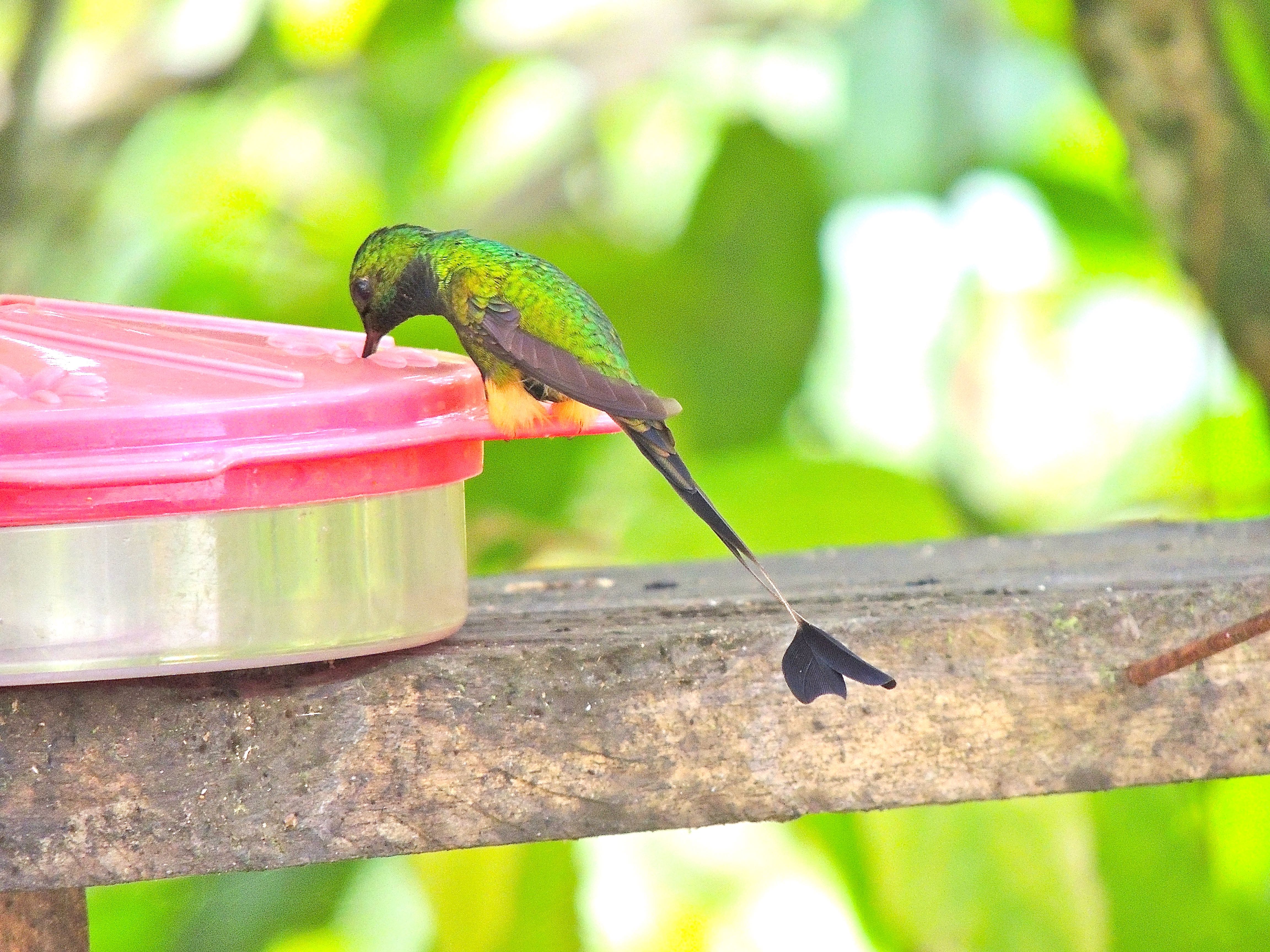 Booted Racket-tail - Photo by William Young
Booted Racket-tail - Photo by William Young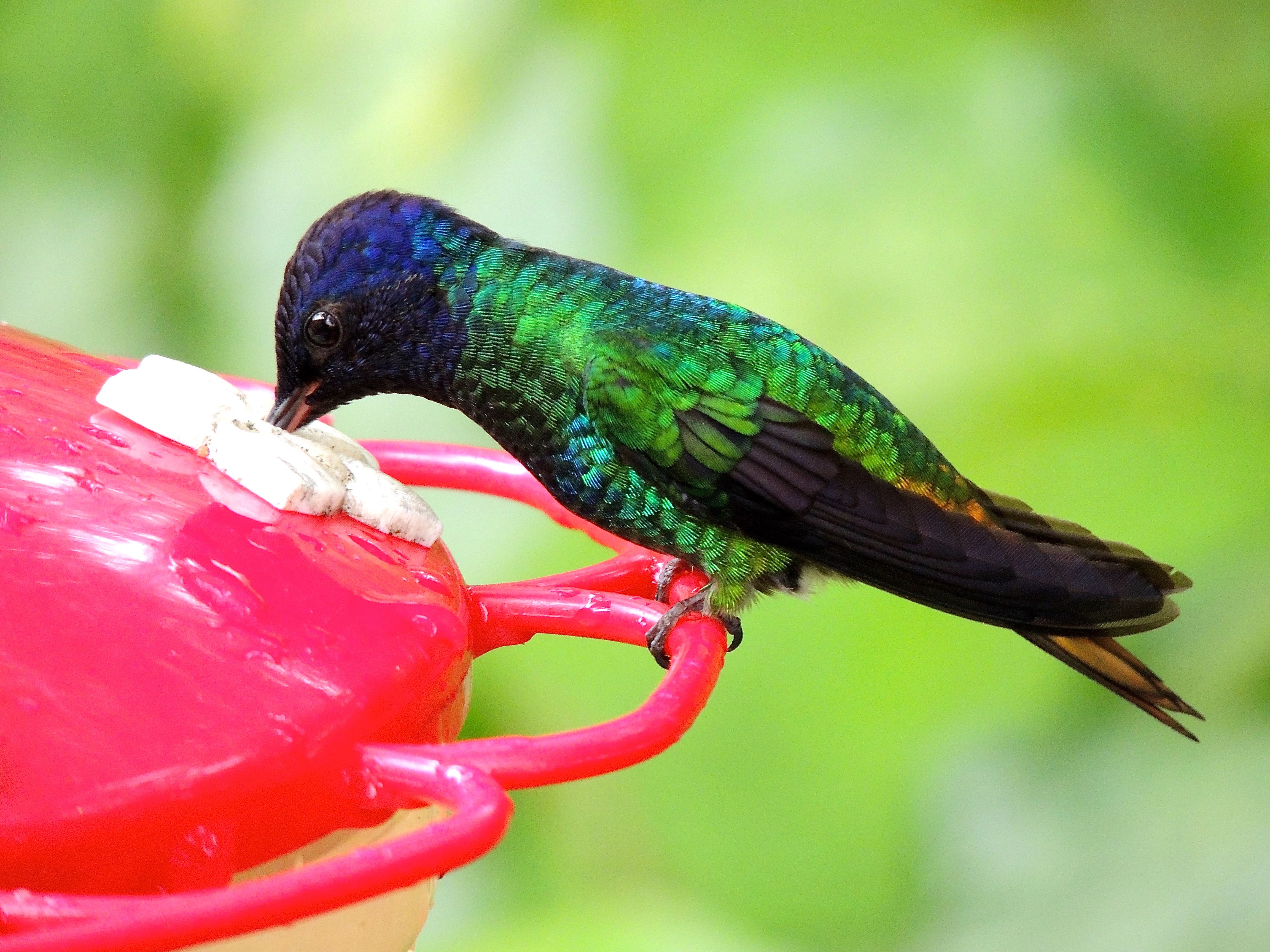 Golden-tailed Sapphire - Photo by William Young
Golden-tailed Sapphire - Photo by William YoungWe started our drive to Coca, where I needed to catch a canoe to the Napo Wildlife Center. We saw a couple of Smooth-billed Anis by the side of the road. We saw both a Black and a couple of Yellow-headed Caracaras — the first Yellow-headed I had seen since Panama last year. The Black Caracara was being harassed by a Tropical Kingbird. I saw two Blue-black Grassquits by the side of the road.
The Napo River is a tributary of the Amazon. Wildsumacho is at 1,500 meters and has cloud forest. The Napo Wildlife Center is much lower and has tropical rainforest. He said my hosts at Napo would be members of the Huaorani tribe and members of the Kichwa Tribe. The Kichwa tribe used to be spelled "Quichua." The correct name for Coca is Francisco Orellana, but even the local government refers to the town as Coca.
We arrived in Coca a bit after 10, only to discover that the canoe was going to leave around noon rather than 10:30. Gustavo and I walked around the town a bit. There was a lot of activity on the street. We made our way toward the river, where there were many swallows. I saw Brown-chested and Gray-breasted Martins, White-banded Swallows, Blue-and-white Swallows, and White-winged Swallows. The White banded are dark with a white band on the breast. I saw a few White-winged Swallows at Coca, and they seemed to get more common the closer we got to the Wildlife Center. From the river, we saw five Swallow-tailed Kites off in the distance, and the same area had a lot of Black Vultures.
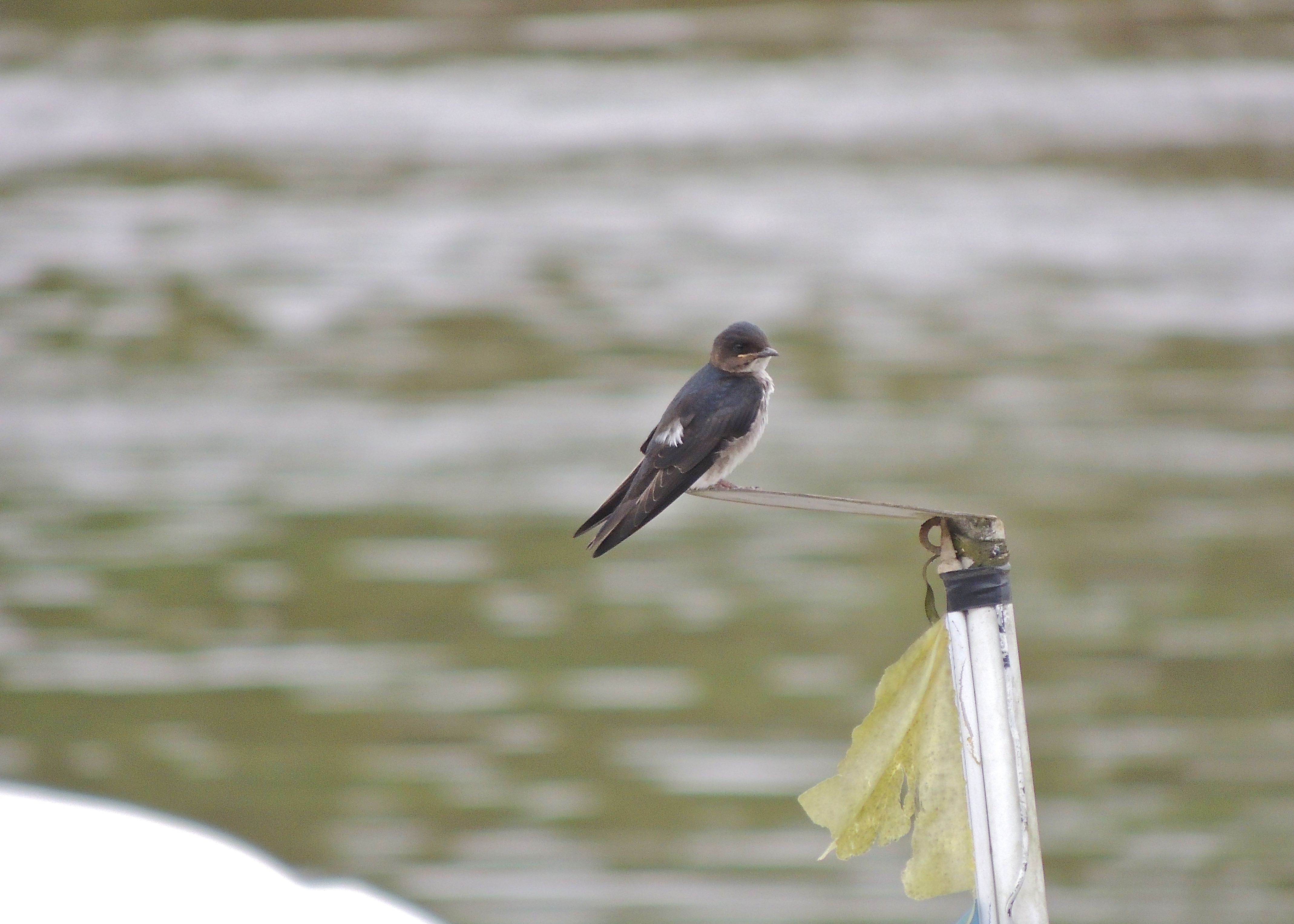 White-winged Swallow - Photo by William Young
White-winged Swallow - Photo by William YoungMy guide for the next few days would be Jorge Rivadeneira. He did not speak much English, but he knows the English bird names, and that is all that matters. I sat near him on the motorized canoe portion of our trip down the river and next to a guide named Pablo, who seemed pretty good. We saw some Russet-backed Oropendolas and their nests. We saw Greater Anis, Yellow-headed Caracaras, a Giant Cowbird, Snowy and Great Egrets, a couple of Cocoi Herons (who look like washed out Great Blues), and a Large-billed Tern, who seemed to have a lot of black and gray on the wings.
We stopped at a dock to transfer from the motorized canoe to one that was paddled by Jorge and another man. At this dock, there were noisy oropendola nests, and a Great Kiskadee vocalized from a high perch. Jorge spotted a pair of Magpie Tanagers. The birds and other wildlife came pretty fast as we went through this water that is dark from the tannic acid of decaying leaves. We saw a Great Potoo perched high in a tree, looking like a termite nest. It appeared lighter than the other potoos I have seen. We heard a Cinereous Tinamou and the three-note call of the Undulated Tinamou. There was a Northern Caiman Lizard resting on a branch, and we later saw a Black Caiman. Blue Morphos were flying around. I had a nice look at a Green-and-rufous Kingfisher — my first kingfisher of the trip. I saw a Black-fronted Nunbird, who is all black with a red bill. We heard both a Double-banded Pygmy-Tyrant and an Amazonian White-tailed Trogon. I had nice looks at some Night Monkeys (sometimes called Owl Monkeys) and some White-fronted Capuchins. There are ten species of monkeys here. I did not see the Casqued Oropendola well, but I had nice looks at both Yellow-rumped and Red-rumped Caciques. We heard Blue-and-Yellow Macaws fly over. I saw a flying Yellow-tufted Woodpecker, and I had a brief look at a White-throated Toucan as it flew. I saw and heard flying Cobalt-winged Parakeets. I heard the deep owl-like call of a Plumbeous Pigeon. As we went through a mangrove swamp, we heard the long descending whistle of a Cinnamon Attila. We also heard Lawrence's and Hauxwell's Thrushes. We heard a Roadside Hawk and the descending whistle of a White-tailed Jacamar. I photographed a Greater Ani, who was in the grass.
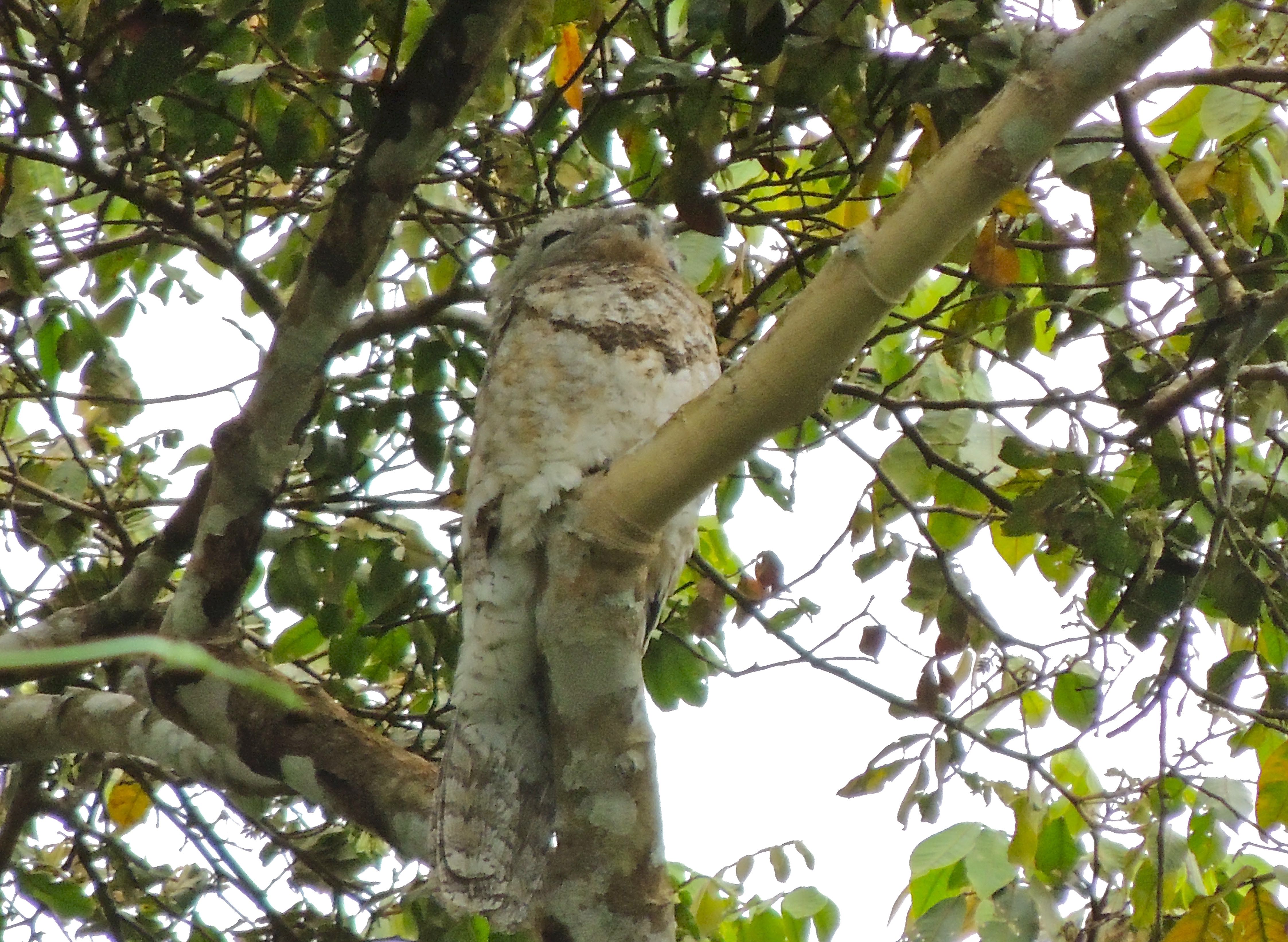 Great Potoo - Photo by William Young
Great Potoo - Photo by William Young Northern Caiman Lizard - Photo by William Young
Northern Caiman Lizard - Photo by William Young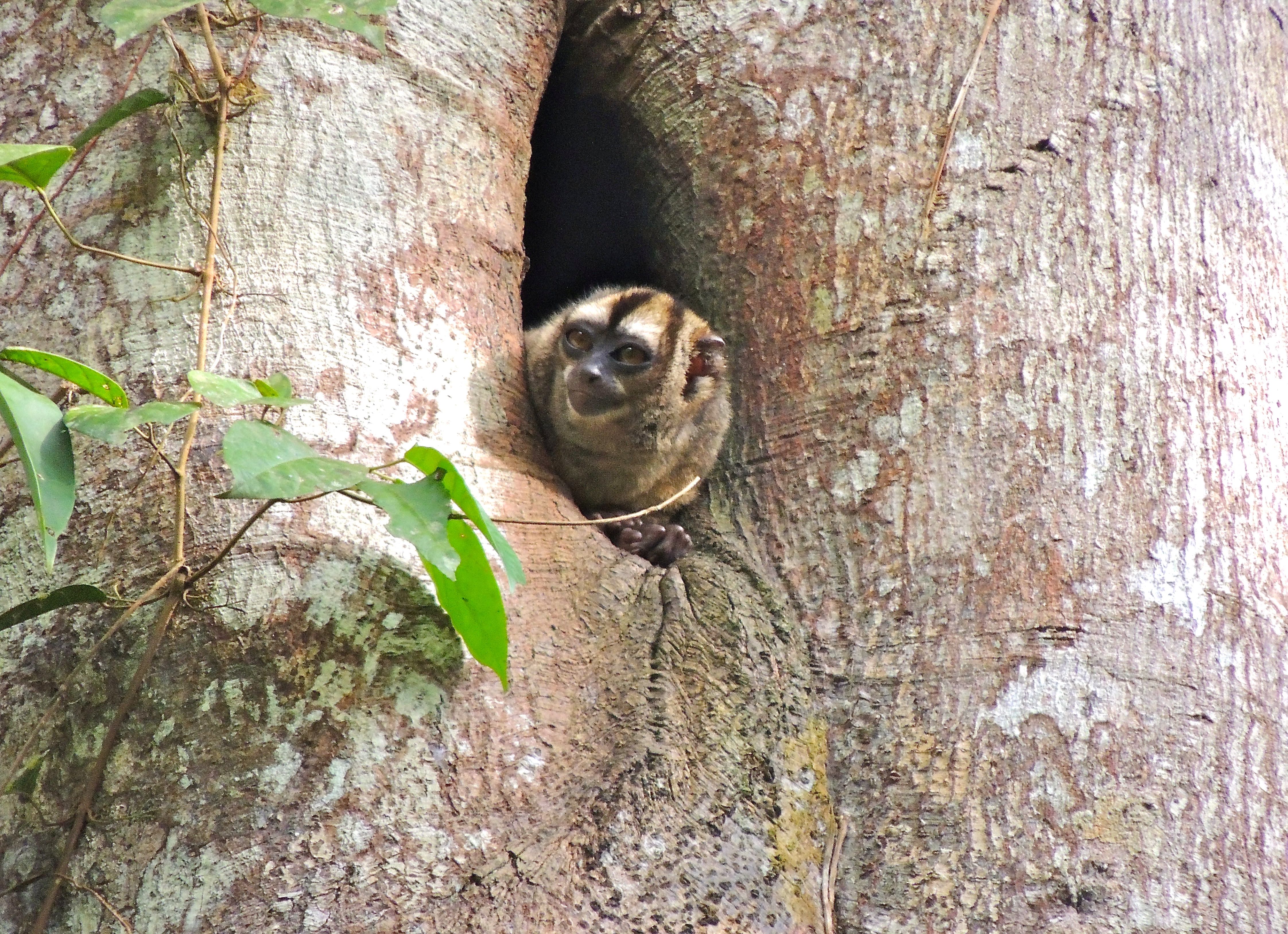 Night Monkey - Photo by William Young
Night Monkey - Photo by William YoungI got excited when I saw my first two Hoatzins. Jorge said they are called Stinky Turkeys and that they have two stomachs. Because they smell and taste bad, people do not hunt them. They look like crazed Anhingas. I later saw a lot more of them, and when I got to my bungalow, I realized that I could see a whole bunch of them perched in the foliage from my front veranda. Hoatzins have buff patches on their shoulders and buff tips to their tail feathers.
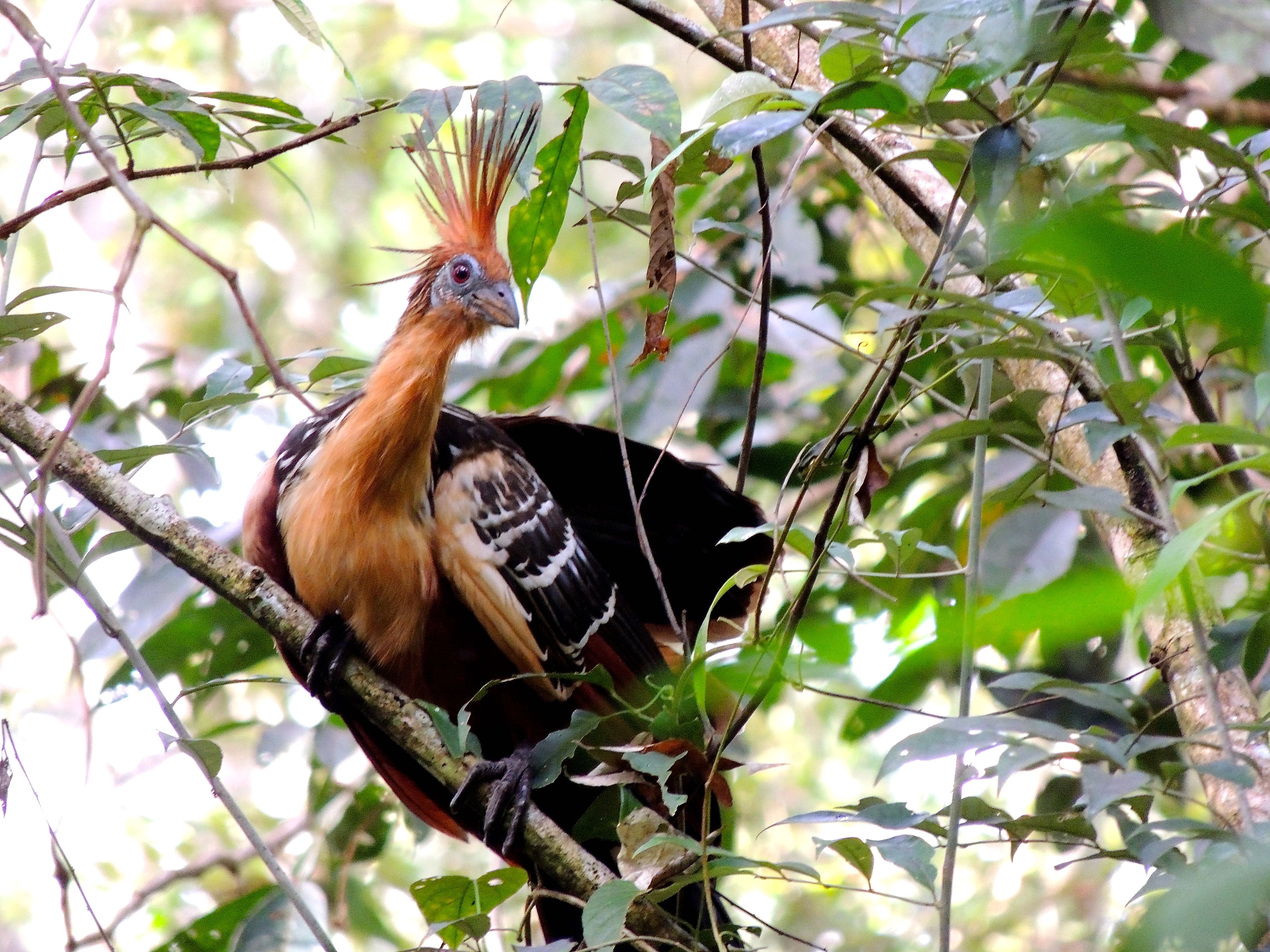 Hoatzin - Photo by William Young
Hoatzin - Photo by William Young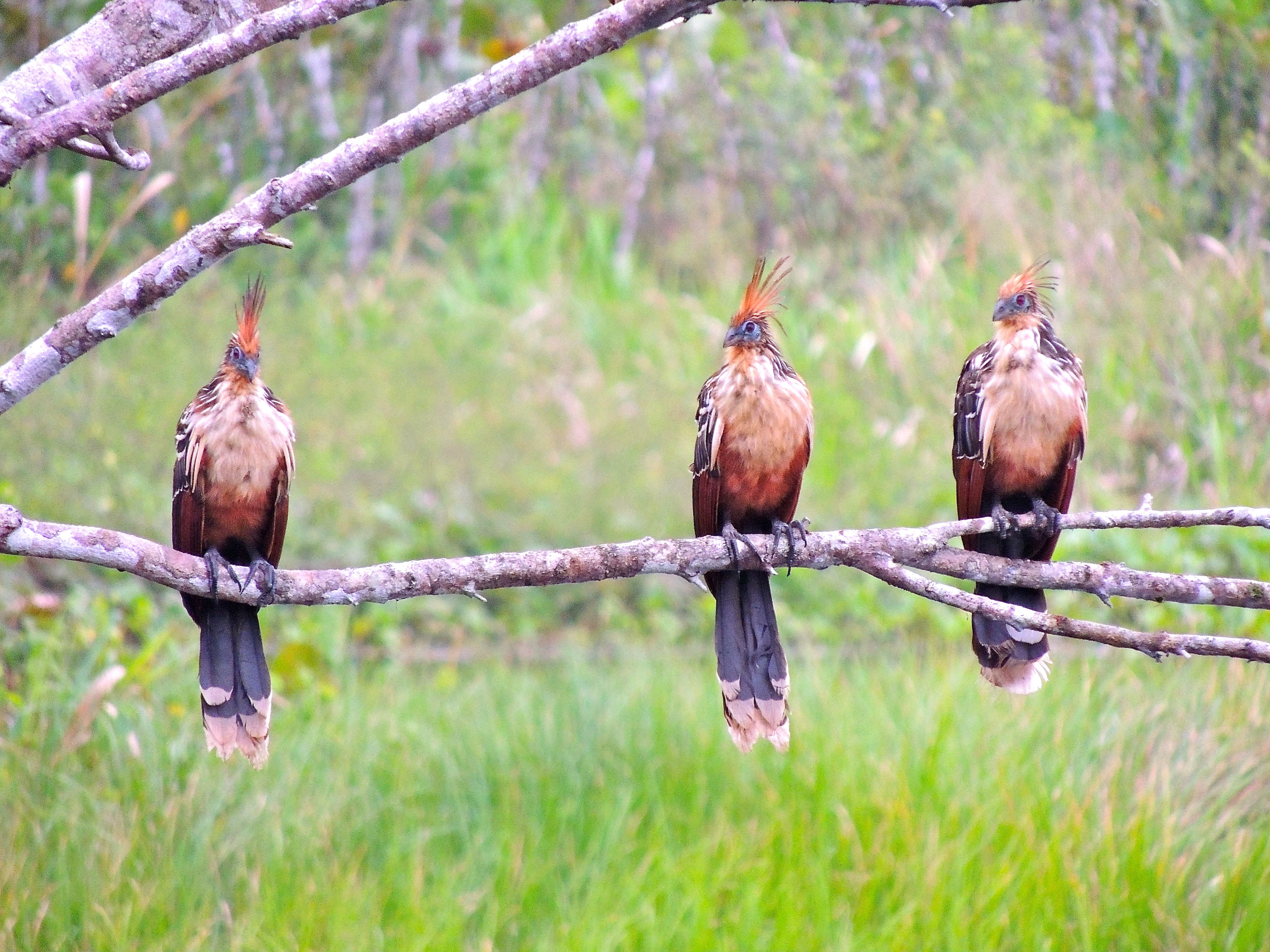 Hoatzins - Photo by William Young
Hoatzins - Photo by William YoungThe rooms at the lodge are large and comfortable, and one feels as if one is in the middle of nature. Hoatzins are all over the place. There were vocalizing Russet-backed Oropendolas with nests right outside my room. There were also a lot of Yellow-rumped Caciques, and I saw two go to the ground in a talon-to-talon squabble. A Black-throated Mango perched in a tree not far from my room. And I saw a Red-capped Cardinal from my porch, along with House Wrens, White-winged Swallows, and Blue-gray Tanagers. Leafcutter ants walk along the edge of the path to my room.
 Yellow-rumped Cacique - Photo by William Young
Yellow-rumped Cacique - Photo by William Young
September 10
When I was walking to breakfast in the dark at 5:15, I heard a Pauraque calling right near the walkway to my room. From the breakfast area, I could hear a Common Potoo calling. Jorge and I left at 6 to go to a tower that is 56 meters high, allowing viewing in the canopy. We had to wear Wellington boots, and I remembered that I needed size 42 from the ones I tried on at the tortoise sanctuary in the Galapagos. On the way, we heard the piping of a Southern Beardless Tyrannulet. We also heard a couple of Limpkins calling, and I saw one perched in the top of a tree. We heard Red Howler Monkeys vocalizing and later saw some from the tower. They are a bright reddish-brown, almost a rufous color. We heard the three-note call of a Cinnamon Attila. We had to walk about 20 minutes from where the canoe stopped to reach the tower. On the way, we saw a Great Tinamou on the path and heard White-throated Toucans yelping in the background. We heard a Bright-rumped Attila and would hear many more before the morning was over. We heard a Citron-bellied Attila and a Dusky-capped Flycatcher. Jorge showed me some tracks in the mud made by a Giant Armadillo. We heard the gentle three coos of a Ruddy Pigeon. And we heard the 8-note call of a Sooty Antbird.
We reached the observation tower and climbed to the top. We saw a couple of Crimson-crested Woodpeckers, who look like the Pileated. I had a scope view of a Lined Forest Falcon, a species we had been hearing at Wildsumacho. I had a distant scope view of a Scarlet Macaw and later much closer looks at Blue-and-yellow Macaws feeding on fruit in a tree. We saw a perched Crested Oropendola, with its bright yellow bill. We scoped a Roadside Hawk. We saw a perched Plumbeous Kite, who was gray and hunched up and looked roundish. We saw a Pygmy Antwren, who looks like a tiny Black-and-white Warbler. I had a chance to study and photograph a Crowned Slaty Flycatcher. It has a gray back, a faint supercilium, and the trace of a yellow crown. We scoped a Spangled Cotinga, who is a beautiful turquoise, with a black tail, black wings, and a plum colored throat. The bird stayed in the same tree for more than a half an hour. I could see the spangling on the back. One tree had many Many-banded Aracaris — at least five. There were a pair of Black Vultures in a tree, and I saw both a perched and a flying Greater Yellow-headed Vulture, including its distinctive wing pattern. Among a flock of Russet-backed Oropendolas was an Olive Oropendola, who was clearly a different color. We later saw an Olive Oropendola at a nest. It has a yellow bib and orange on the tip and at the base of its bill. This species is not common.
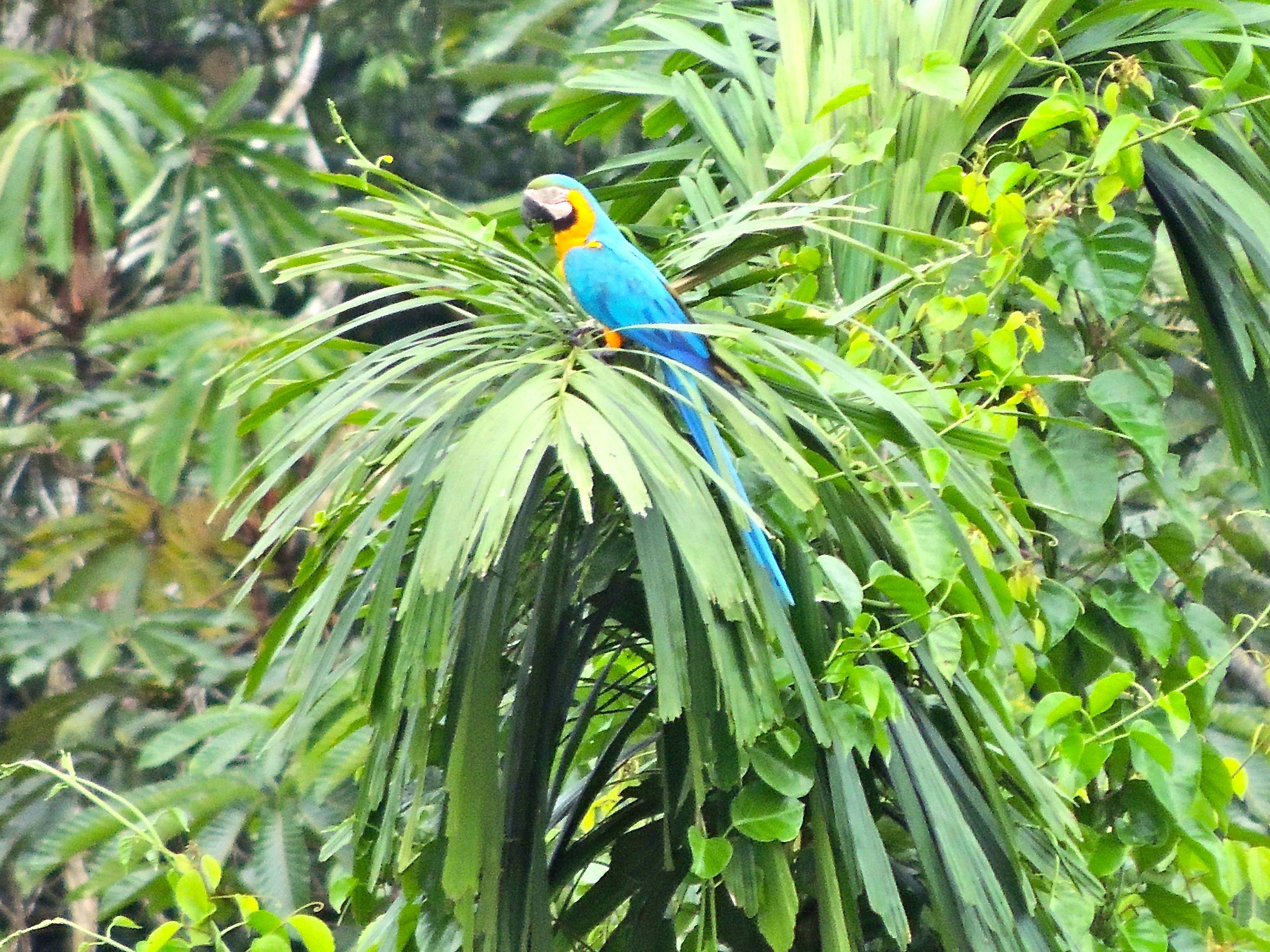 Blue-and-yellow Macaw - Photo by William Young
Blue-and-yellow Macaw - Photo by William Young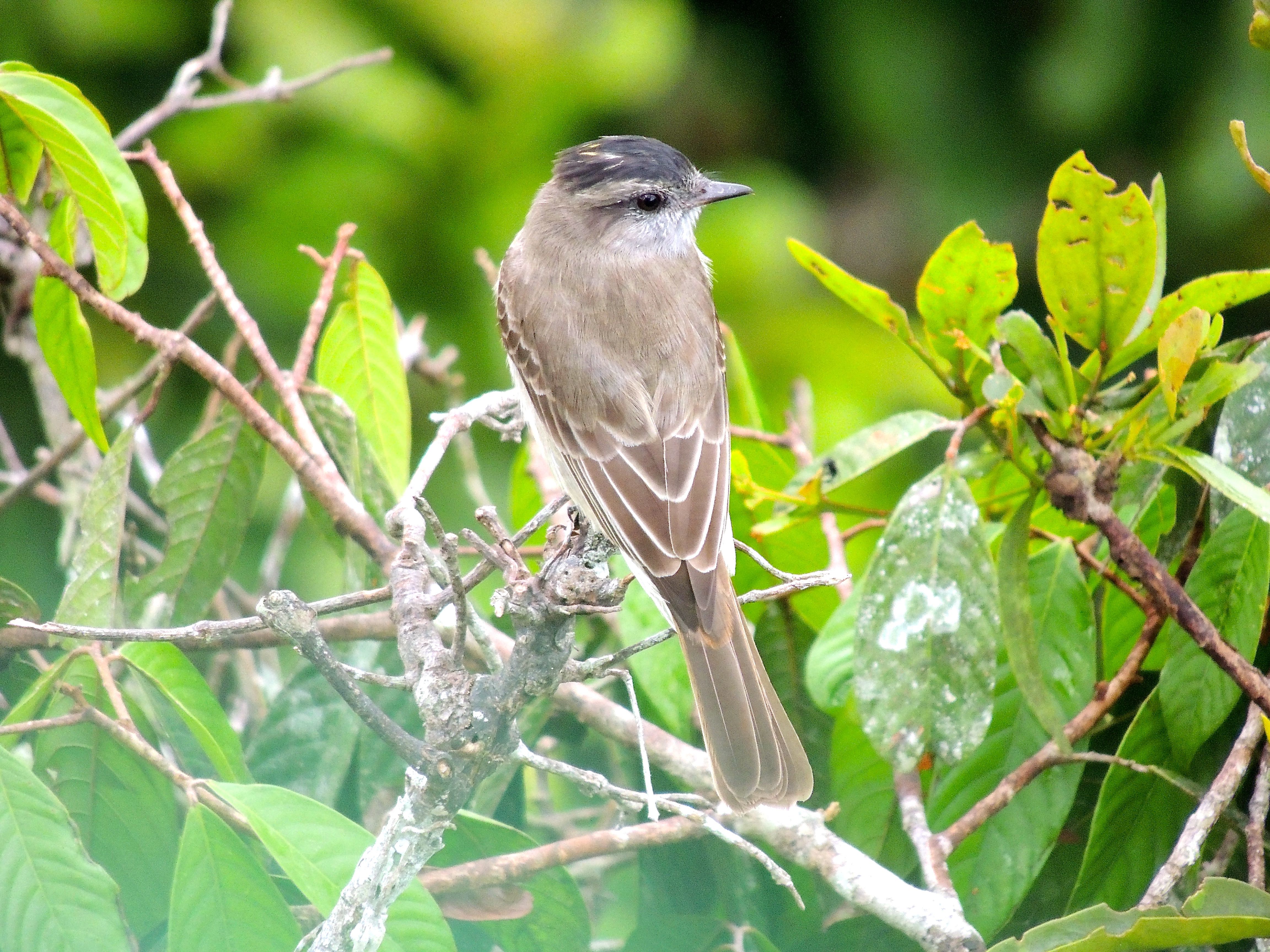 Crowned Slaty Flycatcher - Photo by William Young
Crowned Slaty Flycatcher - Photo by William Young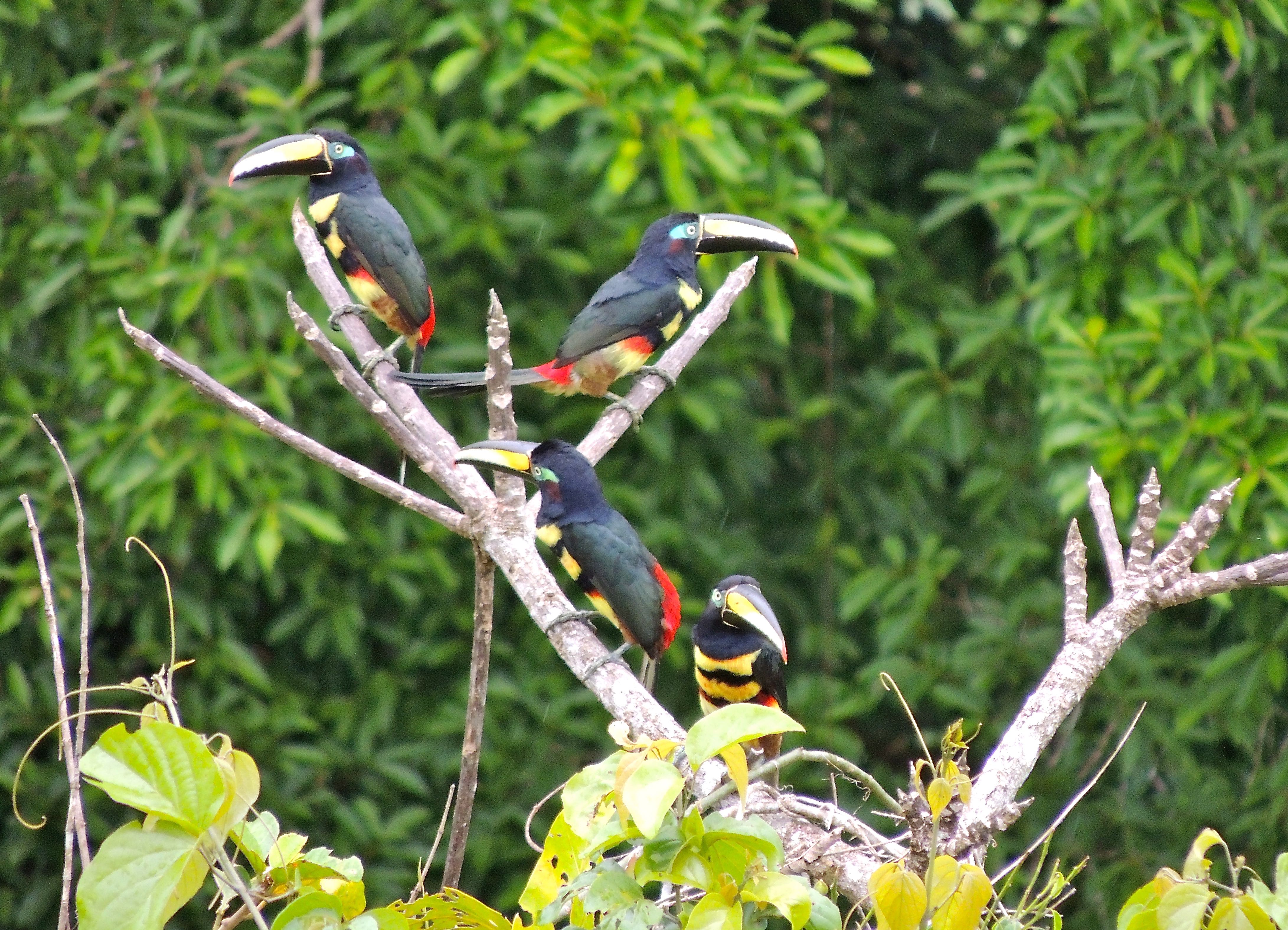 Many-banded Aracaris - Photo by William Young
Many-banded Aracaris - Photo by William YoungI saw a White-throated Toucan, who has a white bib. A Spix's Guan perched in a nearby tree, and I could see the bright red throat pouch. A Bat Falcon flew by. We heard the repetitive two-note song of a Gilded Barbet. We heard high-pitched calls of Spider Monkeys. We saw a Golden-faced Tyrannulet, a small bird with wingbars. I missed the Piratic Flycatcher. We saw a male Green Honeycreeper, and just above him was a female Spangled Cotinga, who is a plain brown bird. We saw a perched Black Caracara, a black bird with a yellow face and a white band on its rump. We watched as four Mealy Amazons landed in the top of a tree. They have a black bill with a little bit of yellow at the base. The neck is scaly, and the area near the tip of the tail is yellow. We scoped a Bare-necked Fruitcrow, who is in the cotinga family. It shows a lot of white on the wing when it flies and has strange gray skin on its head. We saw two Red-bellied Macaws fly over. We scoped an Orange-cheeked Parrot, who has a black head and an orange cheek. We also scoped a Plum-throated Cotinga, who is an incandescent blue with no spangling. At one point, a tree next to the tower became really active. At the same time, a Green-and-gold Tanager, a couple of Opal-crowned Tanagers, and a Turquoise Tanager were there, along with a male Yellow-tufted Woodpecker. The Turquoise Tanager is not turquoise. It is blue and black, with a yellow belly and a yellow slash on the wing. The Green-and-gold has a golden rump. And the Opal-crowned is a dark bird with a prominent opal circle around the head. We also saw a beautiful male Purple Honeycreeper.
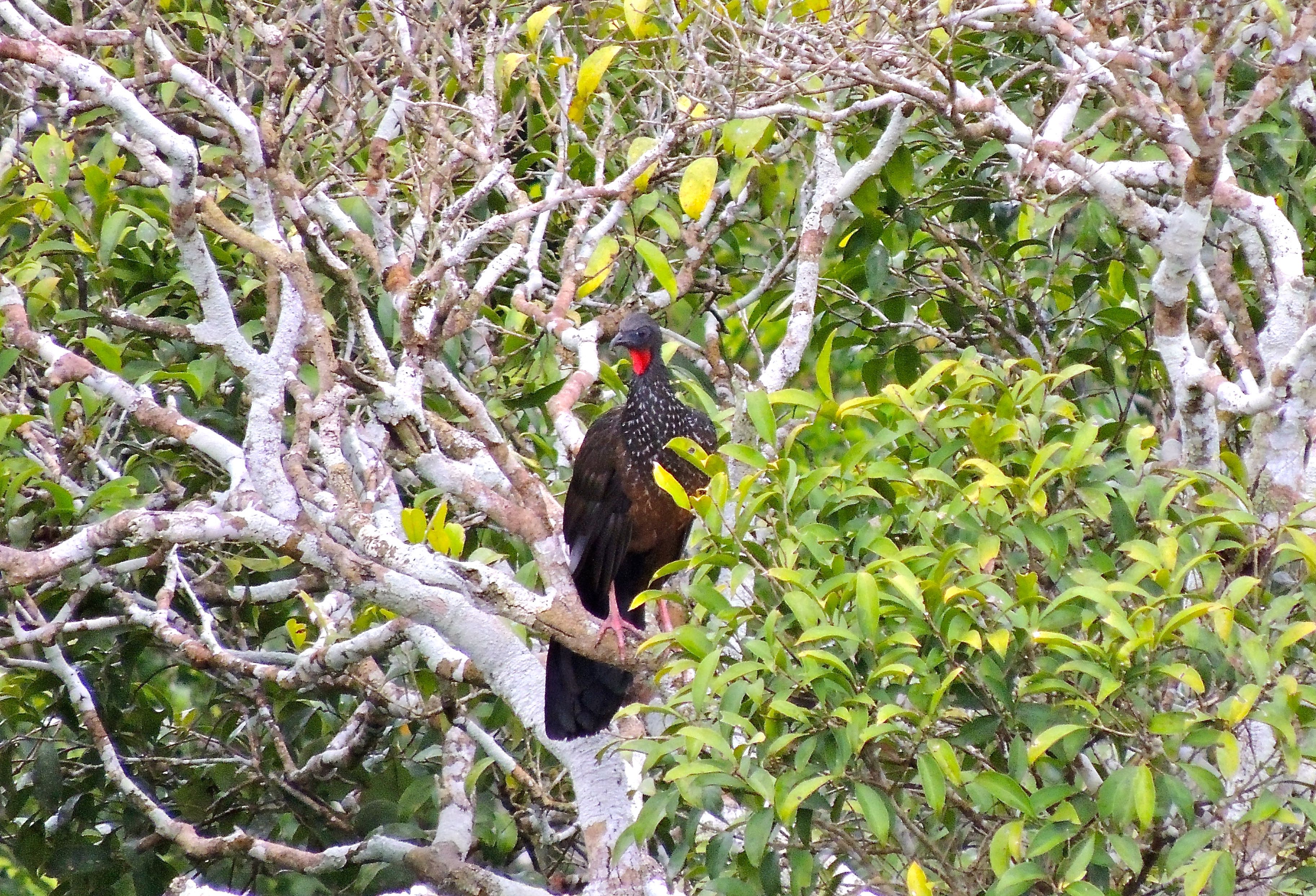 Spix's Guan - Photo by William Young
Spix's Guan - Photo by William YoungWe were joined on the tower at about 8:30 by Jaime and Liana from Spain and their guide Pablo right before it began to drizzle. Yesterday, Jaime was wearing a shirt that said "Reptiles and Amphibians are Awesome." We saw a couple of Black-tailed Tityras, who have a black cap and a red bill. They show a lot of white in flight. We scoped a Slender-billed Kite, who is gray with a very short black tail, compact body, and some red on the face. Four Orange-winged Amazons flew by. We saw a flying Red-and-green Macaw. We heard a Yellow-browed Tody-Flycatcher calling. We saw a Slate-colored Hawk, who is slaty gray with a little bit of white on the tip of its tail, a narrow white band further up the tail, a yellow cere, and a yellow eye. We scoped a three-toed sloth. There was an Ecuadorian Woolly Pinktoe Tarantula on the observation deck, and Jaime picked it up and let me photograph it on his arm.
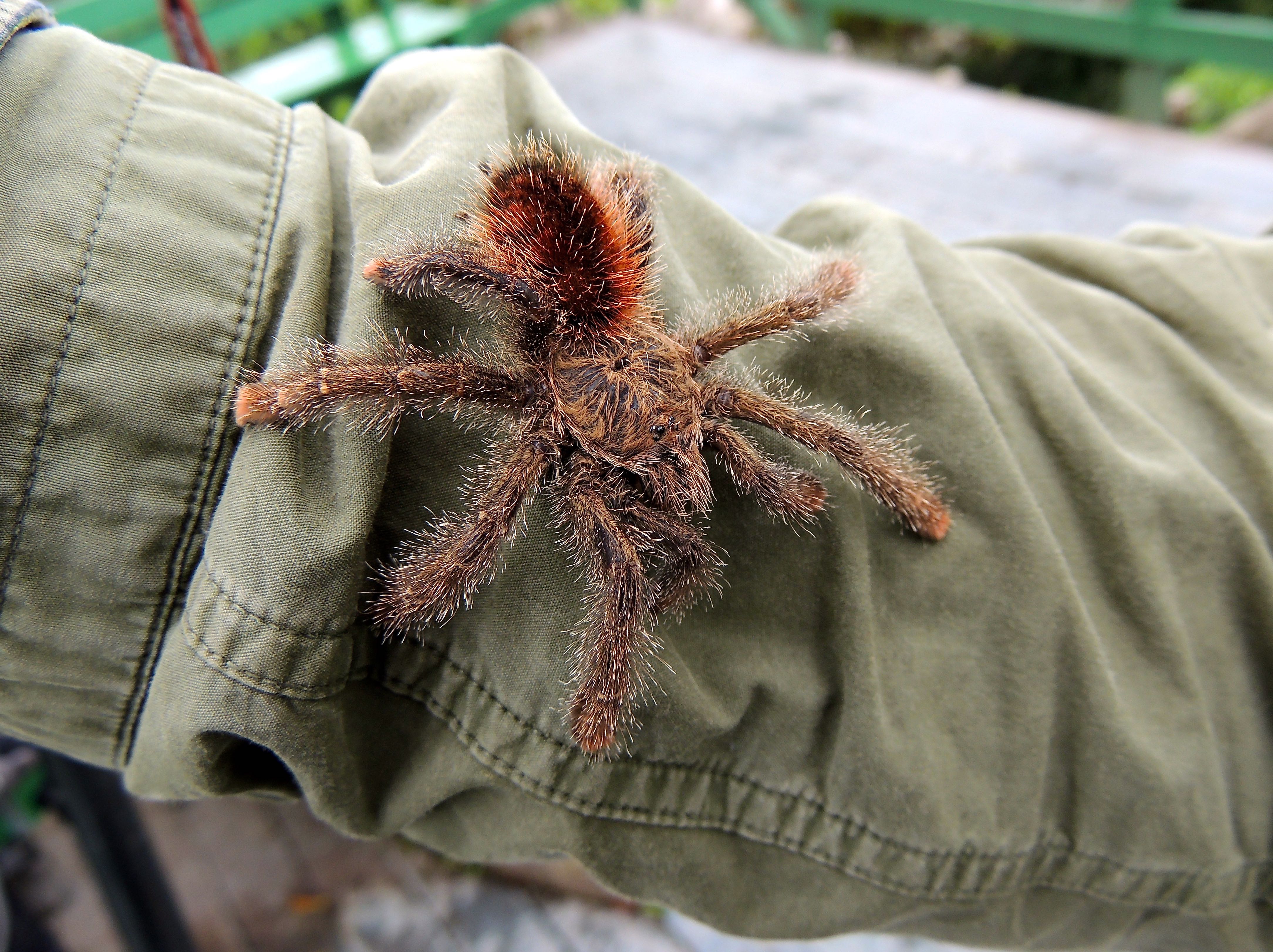 Ecuadorian Woolly Pinktoe Tarantula - Photo by William Young
Ecuadorian Woolly Pinktoe Tarantula - Photo by William Young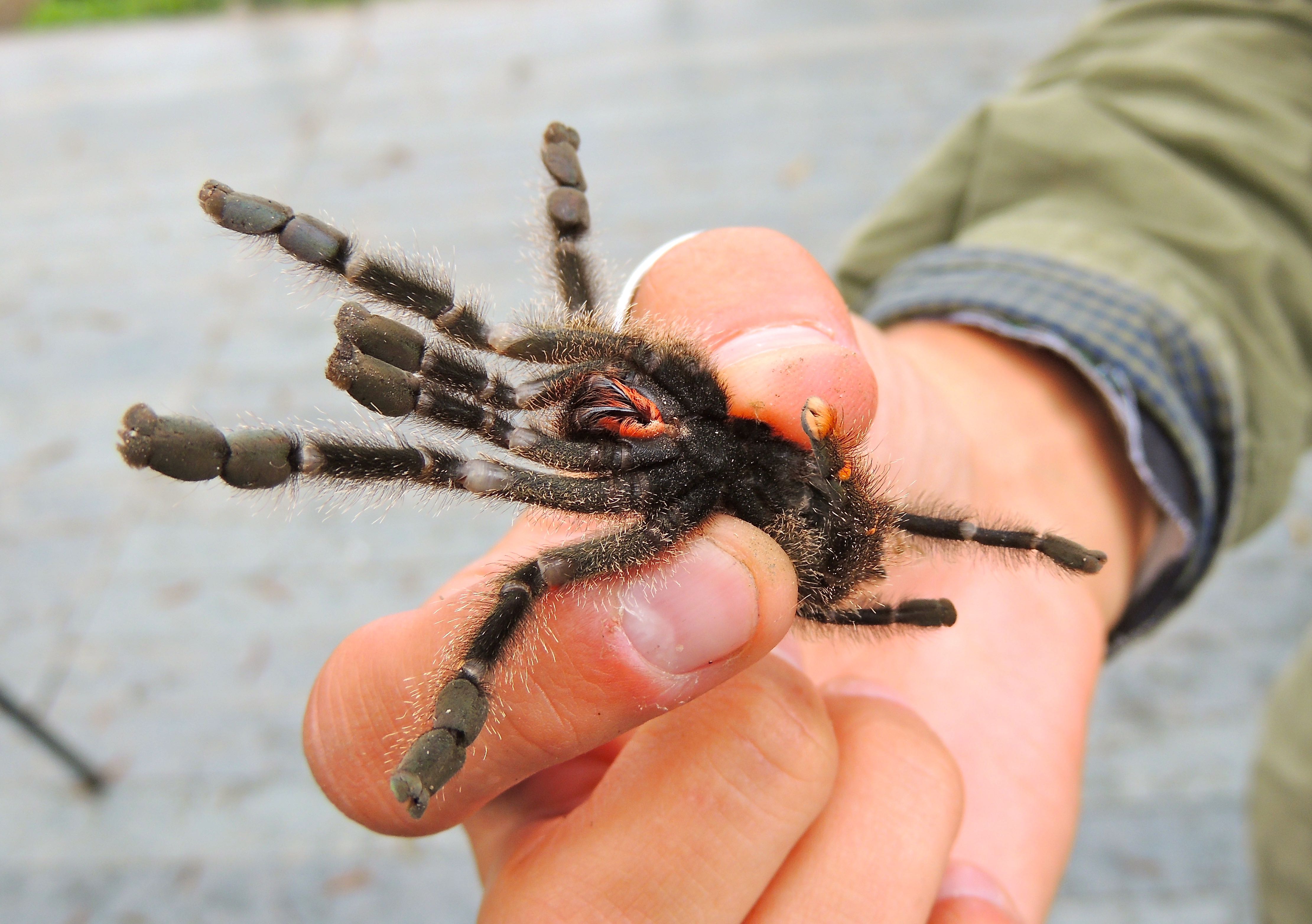 Ecuadorian Woolly Pinktoe Tarantula - Photo by William Young
Ecuadorian Woolly Pinktoe Tarantula - Photo by William YoungJorge and I left the tower and explored the surrounding area. We saw a White-flanked Antbird, who is a solid black bird with white flanks and white dots on its wings. We saw a female Dusky-throated Antshrike and heard the male antshrike calling. We saw more Spix's Guans in the trees on our walk back. We saw a mother Long-tailed Potoo with a baby in front of her. Her plumage is brown, and her long tail blends in well with the wood behind it. I saw the enormous base of a Saber Tree, whose spread out buttresses seem to form a pyramid. Jorge showed me a tapir track. We heard and saw a Black-faced Antbird — a gray bird with a black mask that has a white edging. We saw a Casqued Oropendola, who appears to have a small white appendage on the top of its bill. We saw a Banded Antwren, who has a rufous back with two wing bands and a band on its back. Its breast is white with black spotting.
 Long-tailed Potoo and Chick - Photo by William Young
Long-tailed Potoo and Chick - Photo by William YoungI finally was able to see a tapaculo. A Rusty-belted Tapaculo was standing on a log. I could see the white bib and rusty belt across it. It has a white supercilium and barred flanks. It is a handsome bird who was larger than I anticipated. The bird called a lot and leaned forward when it did. We heard a Lawrence's Thrush, who engages in mimicry. I saw a Forest Dragon standing on a log and seemingly unconcerned about our presence.
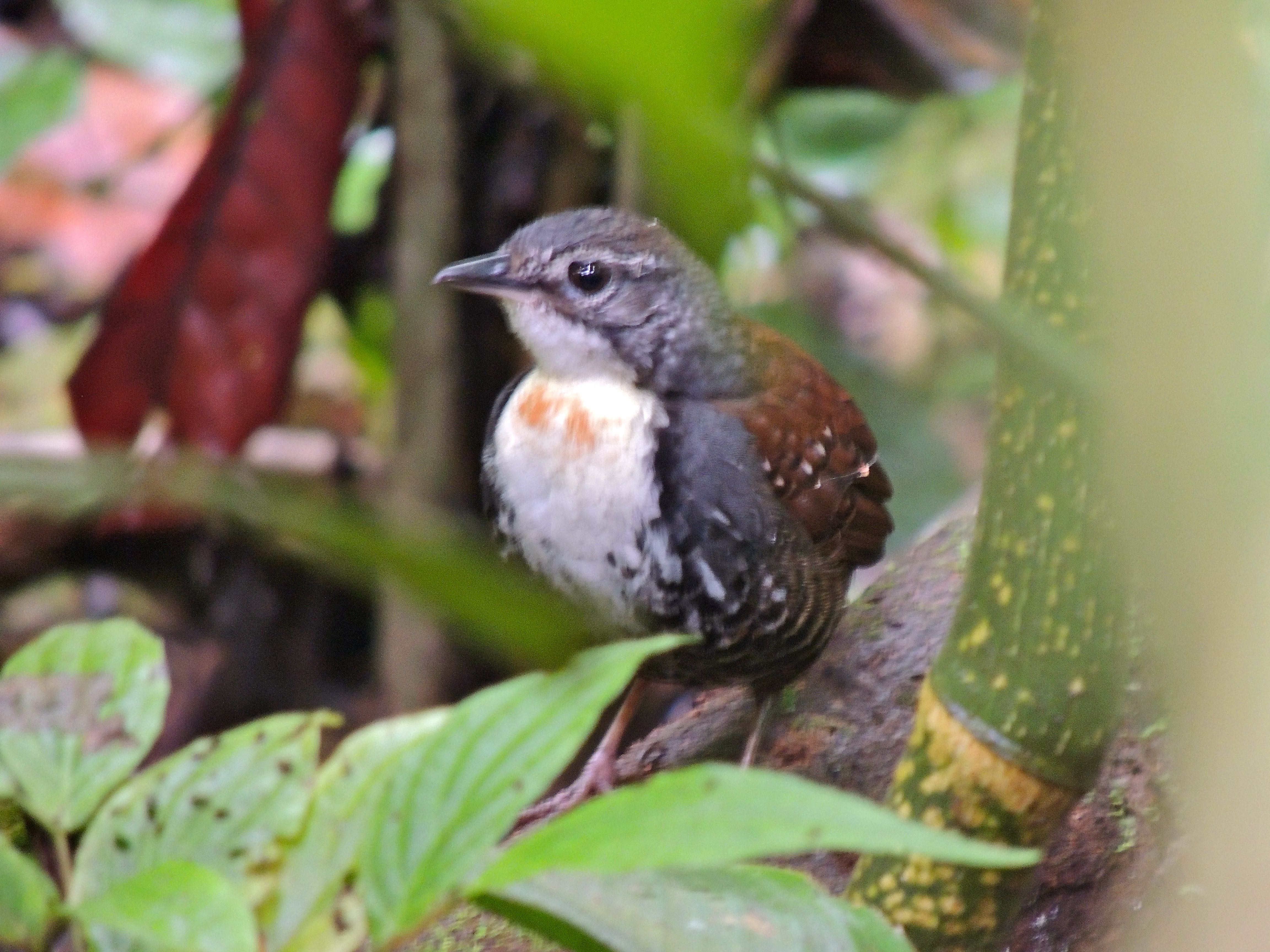 Rusty-belted Tapaculo - Photo by William Young
Rusty-belted Tapaculo - Photo by William Young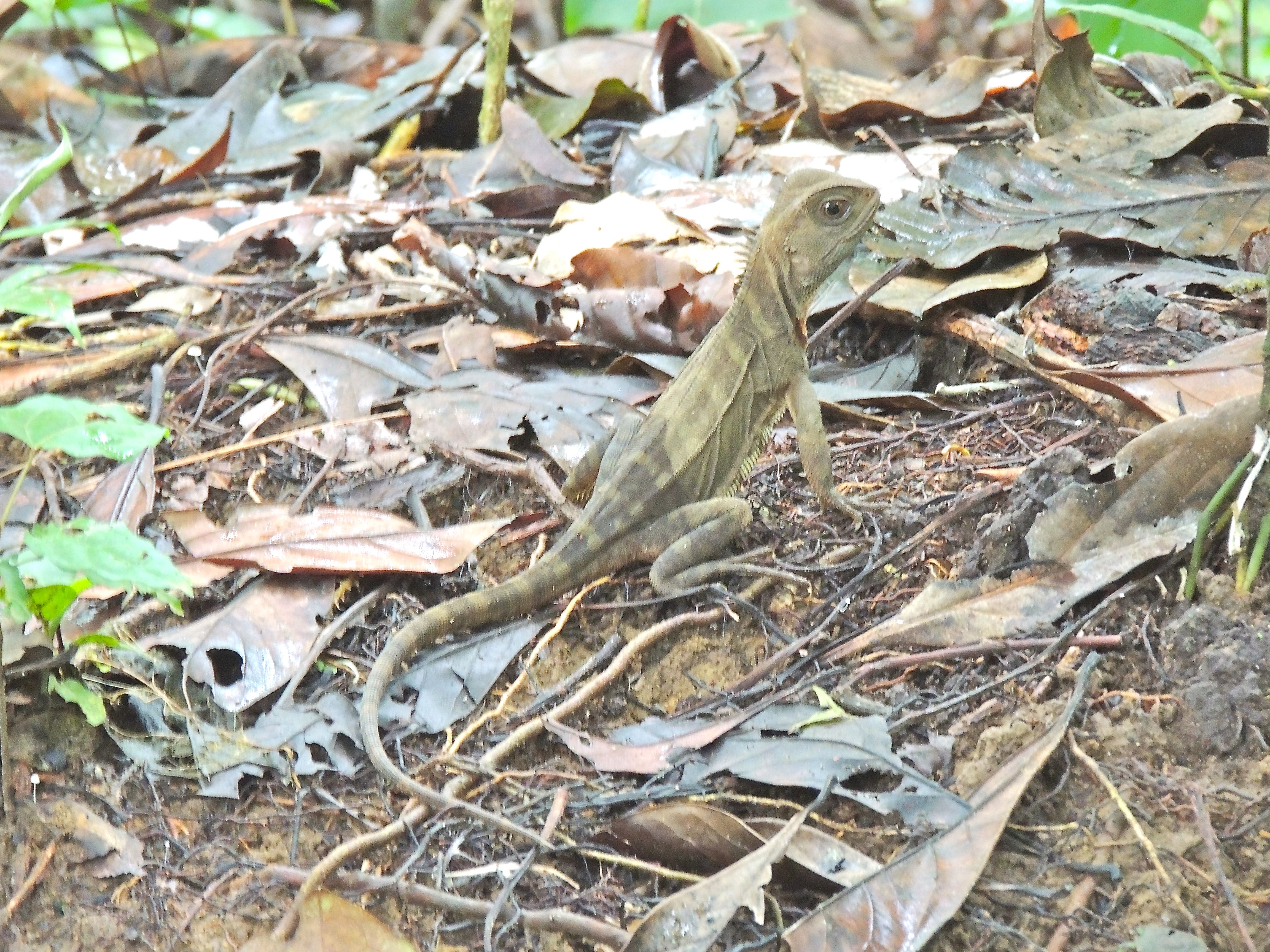 Forest Dragon - Photo by William Young
Forest Dragon - Photo by William YoungAs we were heading back to the lodge in a canoe, we saw a bunch of Hoatzins and a perched Ruddy Pigeon. A little farther along, we saw a pair of Pale-vented Pigeons, and when one flew, I could see the rounded tail, with a white band and a dark band. A White-winged Swallow flew over the water. I saw a Giant Cowbird ominously lurking around the hanging Yellow-rumped Cacique nests. I saw and heard a Great Kiskadee perched on one of the thatched roofs at the lodge.
It rained after lunch. When I went to check with Jorge about our afternoon trip, an immature Little Blue Heron was flying around the lake. We planned to leave at 3:30, but we could not because of a downpour. I went back to the dining room at 4 and said I thought the rain was lightening up. We left ten minutes later, and the heavens really opened up, so we went right back to the lodge. At about 5:20, the weather really did clear, so we went for a paddle down the creek. We saw a couple of House Wrens by the cottages. We saw a Striated Heron perched on a stick. We looked for a Zigzag Heron but had no luck. Nearby was a Lesser Kiskadee perched on top of some elephant leaves. A Little Blue Heron appeared to be molting from juvenile plumage into adult plumage – its feathers looked pied and blotchy. I saw a Black-capped Donacobius perched in a tree – it appeared to be elongated. Near the entry to the creek were a Green Kingfisher and a baby Black Caiman.
When we got into the creek, we heard a large group of Woolly Monkeys in the trees letting out loud yelps. They are rather large. We heard Spix's and Buff-throated Woodcreepers. We heard a Ferruginous Pygmy-Owl calling as well as a Blue-crowned (Amazonian) Motmot. Two large owl butterflies flew past our canoe. After dark, we saw many sleeping butterflies and heard a lot of frog calls. We saw a Sungrebe walking along the shore in the dark, and we later spotlighted a couple of them, including one perched on a low branch. Jorge found an Amazonian Streaked Antwren perched on a branch. We saw a couple of sleeping American Pygmy Kingfishers, one of whom had a moth on his eye. These kingfishers appeared to be smaller than sparrows. We later saw a Green-and-rufous Kingfisher sleeping. We went through an area that had about 20 caimans, with their eyes reflecting the light.
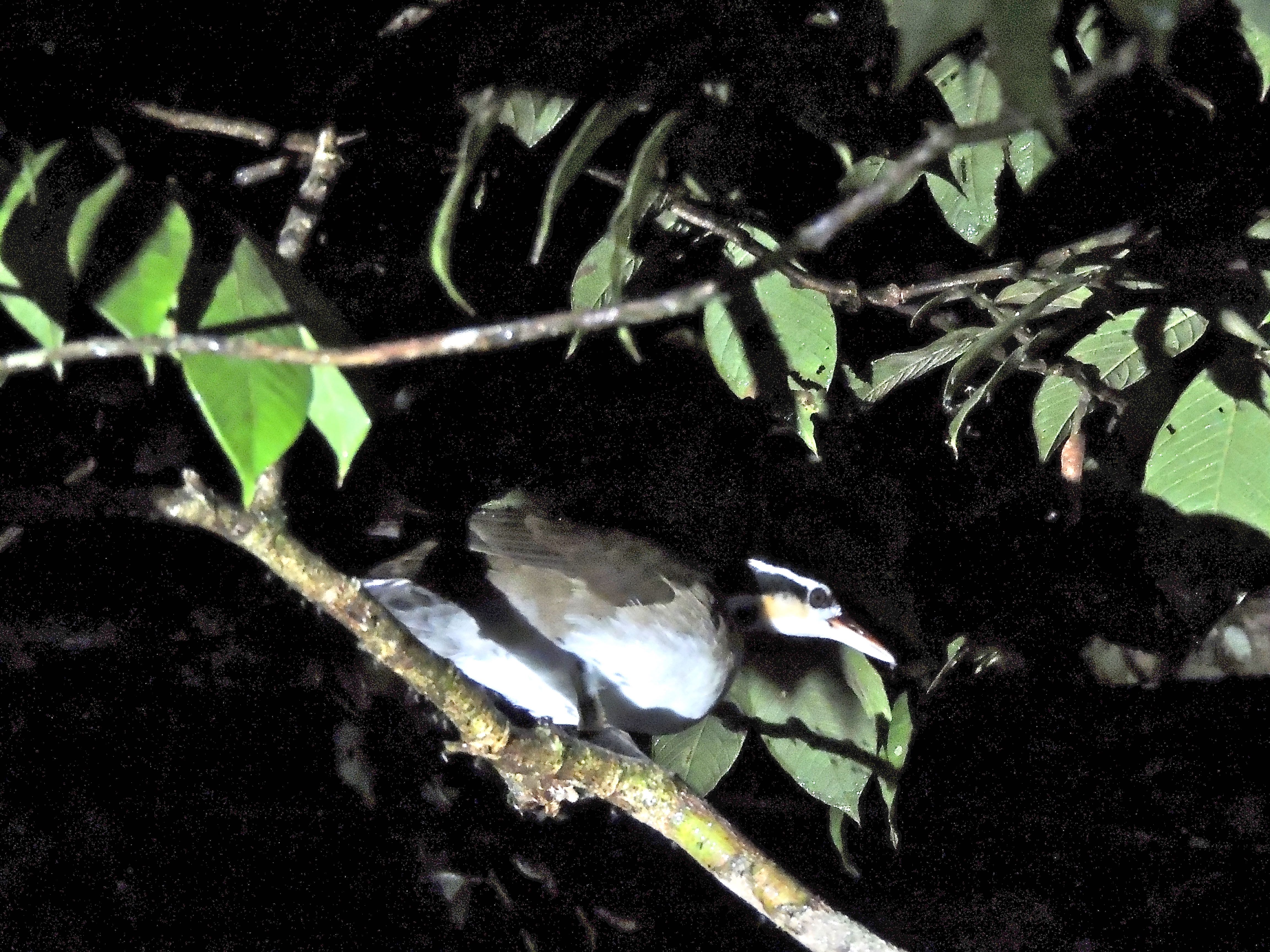 Sungrebe - Photo by William Young
Sungrebe - Photo by William YoungJorge and I had lunch and dinner with Sarah, who is from England. She is here for six months as an unpaid teacher of English. She gets her room and board for free, and there is no place to spend money here anyway. I went back to my room, and later as I was going to sleep, I heard a Pauraque calling persistently outside my room.
September 11
I met Jorge at the dock at 5 this morning to go to a clay lick. We saw a lot of lightning bugs on sticks in the stream as we were riding along in the dark. We heard a Tawny-bellied and a Tropical Screech-Owl and a Ferruginous Pygmy-Owl as we were canoeing in the dark. We heard a Rufescent Tiger-Heron and a Boat-billed Heron calling, both of whom sound a bit like an owl. One of the tiger-heron calls sounds like a low moan. We saw a Zigzag Heron, who is gray on the back, light underneath, and has striping on the breast. We got another close look at an American Pygmy Kingfisher, who was perched on a stick like the ones last night. We heard Blue-and-yellow Macaws calling and saw two fly over. We heard a Gray-fronted Dove cooing and also heard Buff-throated, Striped, and Spix's Woodcreepers. The Striped has a loud, ascending call. We heard a Spot-winged Antbird calling and later saw him — a small round gray bird with spots on his wings. We heard the single whistle of the Piratic Flycatcher. We heard a Lawrence's Thrush and the 2-note call of the Blue-crowned Motmot. We heard the loud ringing repeated call of the White-shouldered Antbird. We saw a Sungrebe fly by — it has black-and-white bands on the end of the tail, and I could see the striping on the face. We heard the loud call of a Thrushlike Wren and saw four Orange-winged Amazon Parrots fly over.
We transferred to a larger motorized canoe for the next part of our trip — we were at the same place we transferred from the other direction the day I arrived. We stopped at Umbrellabird Island and saw four Amazonian Umbrellabirds. They have a long wattle hanging from their chin. They are black with strange head feathering, rounded but not as circular as a cock-of-the-rock. We saw five Brown-chested Martins perched on some twigs. We saw a Speckled Chachalaca in one tree and four Mealy Amazons in the top of another. We saw a Yellow-crowned Amazon at the top of a tree, and in the same tree were some smaller Blue-headed Parrots. Ten Dusky-headed Parakeets flew over and landed in another tree. We saw a distant flying Chestnut-fronted Macaw. I saw a Spotted Sandpiper and later saw another flying in its distinctive stuttering manner. I also saw a couple of Lesser Yellowlegs. Around the edges of the water were a number of Drab Water-Tyrants — drab little birds who are aptly named. I photographed a perched female Ladder-tailed Nightjar. I saw a Mottle-backed Elaenia, who appears to have a line going through the middle of its head. We saw numerous Pale-vented Pigeons, a Smooth-billed Anis, and Greater Anis.
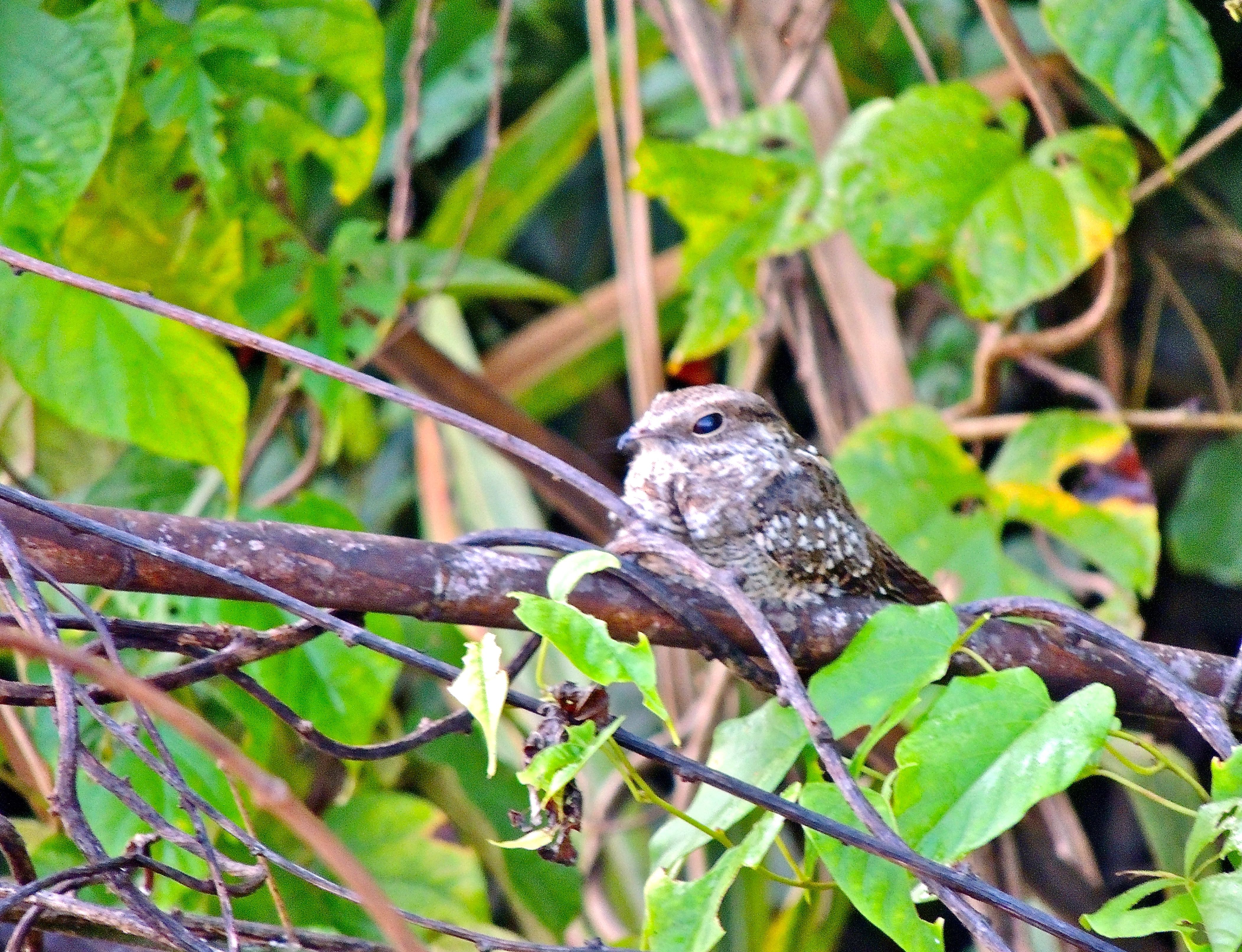 Ladder-tailed Nightjar Female - Photo by William Young
Ladder-tailed Nightjar Female - Photo by William YoungWe landed on another island and saw Oriole Blackbirds perched near the top of a tree. They have a black back and a bright yellow head and breast. They also have a touch of yellow on the wings and appear to have two little black moustache marks at the base of their bill. We saw Caqueta Seedeaters, Chestnut-bellied Seedeaters, and Yellow-browed Sparrows. A Lesser Hornero was flitting around — it is a small brown bird with a white superciliary. He looked like he had some rufous in his tail. There were three Pale-vented Pigeons perched at the top of a tree, and we later inadvertently flushed one from a nest in a bush. Their call has the rhythm of one-two-THREEEEEE. I later got a scope view of one of these large pigeons and saw the pale vent. We also saw a Ruddy Ground Dove and later heard its long single note coo. We saw two Collared Plovers, who have a reddish cap and one breastband. Four Neotropical Palm-Swifts (or Fork-tailed Swifts) flew over. They are white below and appear to have a pointed back end.
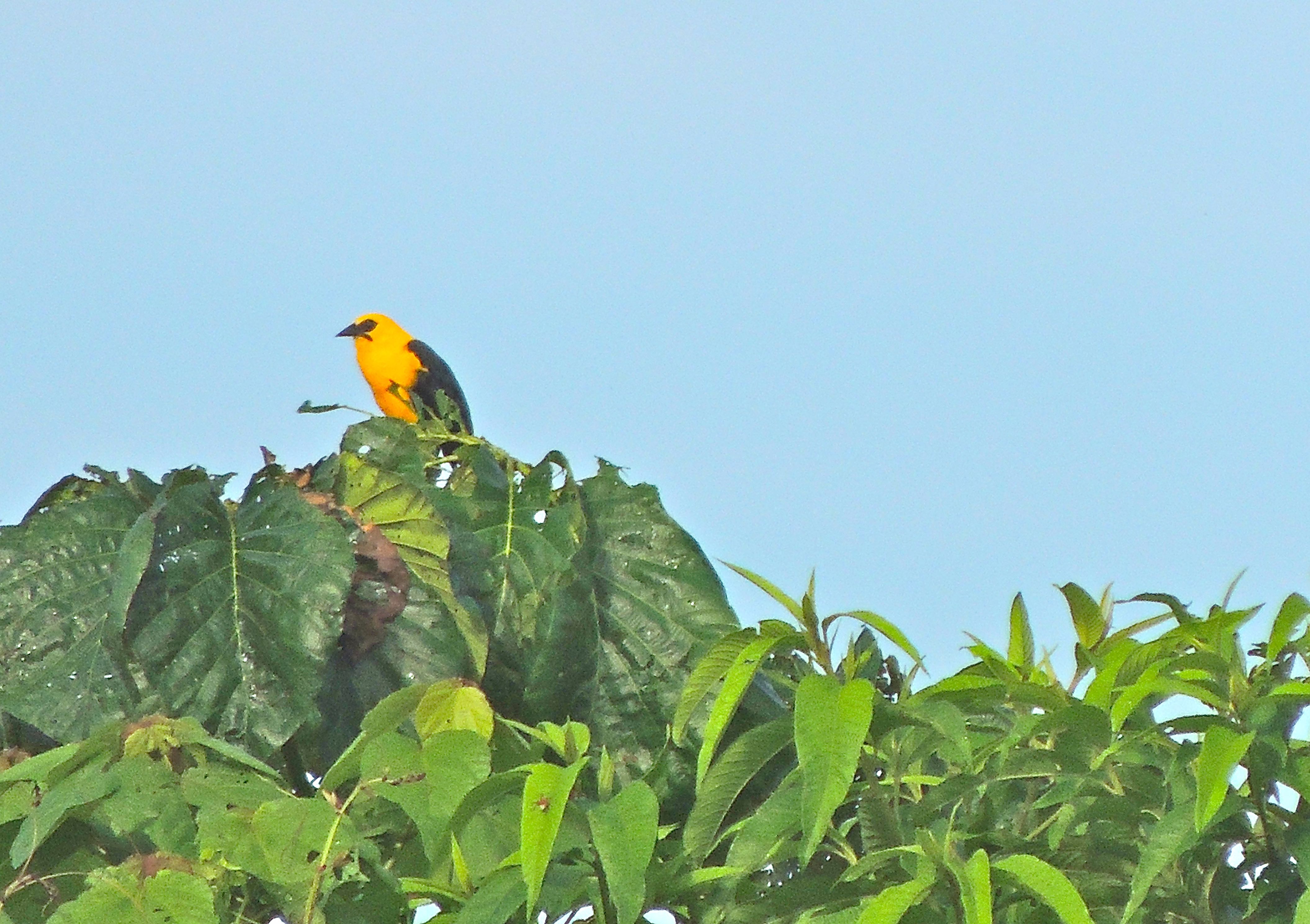 Oriole Blackbird - Photo by William Young
Oriole Blackbird - Photo by William Young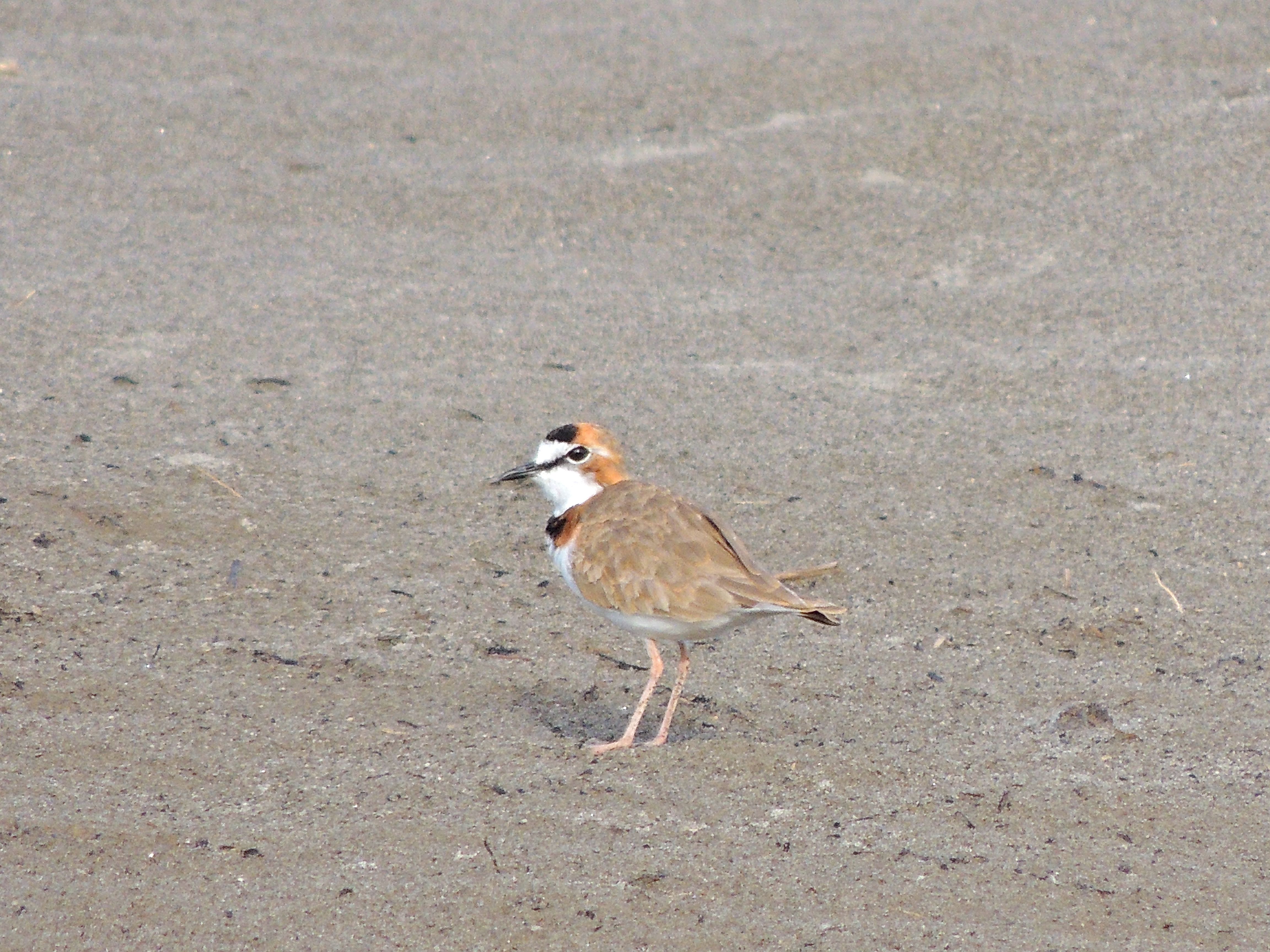 Collared Plover - Photo by William Young
Collared Plover - Photo by William YoungI did not see many hummingbirds while I was at Napo, but I did see a perched female Olive-spotted Hummingbird. She did not seem to have olive spots, but when her tail was spread, and I could see a black and a white band. We saw a few White-bellied Spinetails. The male has a black bib, and the female is very plain. We also saw a Lesser Wagtail-Tyrant, who is a plain gray bird. I had a nice look at an Orange-headed Tanager, a small bird who obligingly showed us his head in the sunshine. Perched at the top of a tree was a Swallow-winged Puffbird. The wings look swallow-like when the bird is perched, mainly because the tail is short. When it flies, the wings look wide and not at all swallow-like. It has a black breast, rufous belly, and white vent. We saw a pair of Social Flycatchers building a nest in a bush. We flushed a Black-banded Crake, who looked very brownish. It flew with its legs hanging down. As we went back toward our boat, we saw Capybara tracks in the sand, but no Capybaras.
We saw a large group of Dusky-headed Parakeets in an indentation of a bank. The underside of the tail is dark, and they have light feathering on the face. A Swallow-tailed Kite flew over, right in the sunlight. We disembarked onto the island where the clay lick is located for the parrots. We saw an Orange-backed Troupial, who is bright orange with black wings and a little bit of orange-and-white on the wings. This beautiful bird has a light eye. We heard the weak whistle of a Roadside Hawk, which sounds like a flycatcher. We saw a Black-faced Antbird and a White-flanked Antwren. We saw a Gray Antbird – a gray bird with a longish spotted tail, almost like a cuckoo's. We had to walk through a swarm of army ants and past one big bullet ant.
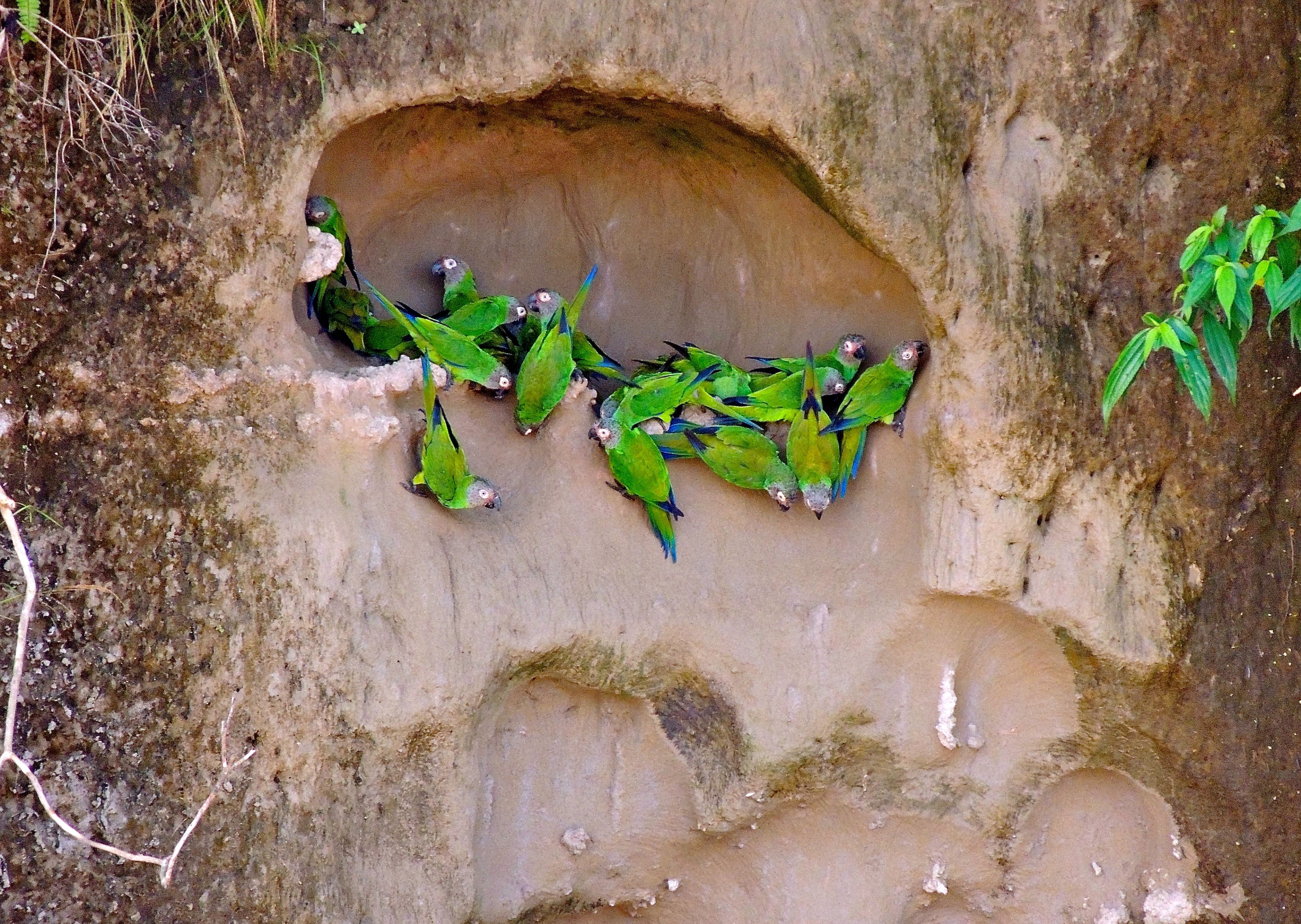 Dusky-headed Parakeets - Photo by William Young
Dusky-headed Parakeets - Photo by William YoungAt 9:45, we approached the clay lick. We heard a Lineated Woodcreeper. I photographed a walking palm and a large social spider colony. When we arrived at the viewing area for the lick, we saw 3 Scarlet Macaws, a couple of Orange-cheeked Parrots, and lots of Cobalt-winged Parakeets. The Cobalt-winged shows a trace of blue on the wing when perched, but a lot of blue in flight. It has a pinkish bill, and when it flies, the head looks yellow. The tail is stubby. The parrots at the lick bent down and pecked at the mud and were eating the clay. We heard a Rusty-belted Tapaculo, which sounds a bit like a Ferruginous Pygmy-Owl. I saw a Great-billed Hermit, who is large for a hummingbird. When it was chirping from a branch, it was flicking its tail, with the long streamer at the end. We saw a perched Rufous-breasted Hermit perched near a nest. It does not seem to have as long a tail as the Great-billed. We heard a Squirrel Cuckoo and later saw a couple of them.
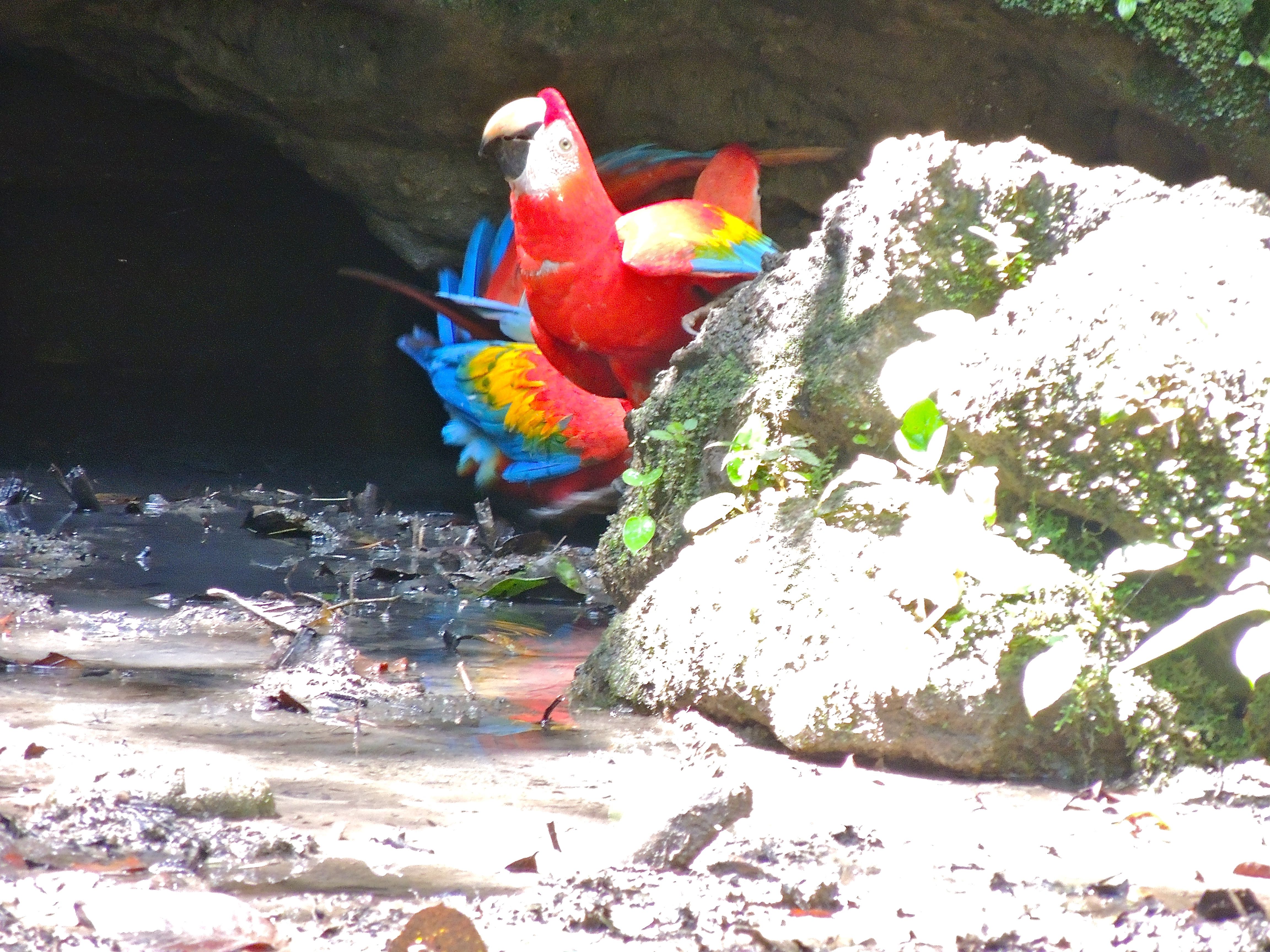 Scarlet Macaws - Photo by William Young
Scarlet Macaws - Photo by William Young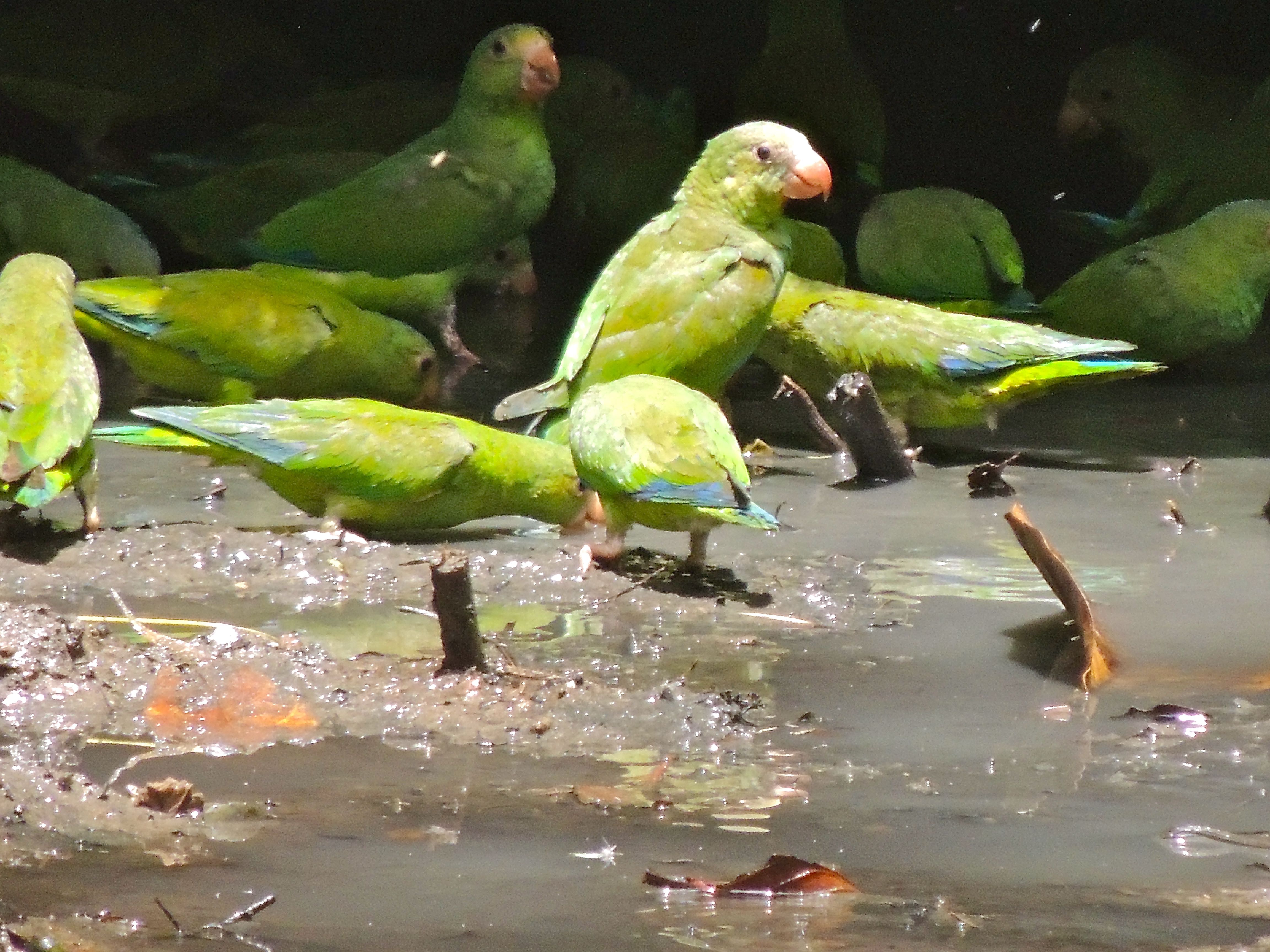 Cobalt-winged Parakeets - Photo by William Young
Cobalt-winged Parakeets - Photo by William Young Cobalt-winged Parakeet - Photo by William Young
Cobalt-winged Parakeet - Photo by William YoungAt the transfer place where we had lunch, I saw a Black-fronted Nunbird and four Dusky Titi Monkeys. I photographed a Ferruginous Pygmy-Owl, who was in a tree with some Russet-backed Oropendolas. I also had a good look at a Thrushlike Wren, a very big wren with some barring on the sides. While we were in the canoe, a couple of Ringed Kingfishers flew over our heads, and one landed with a fish in its beak. This kingfisher is quite large. We saw the back side of a Slate-colored Hawk and heard the three-note call of the Undulated Tinamou. We saw tapir tracks going down to the water, but no tapirs. We heard an Amazonian White-tailed Trogon and a Plumbeous Pigeon. We flushed another Sungrebe, who has a rounded tail. We saw Capuchin Monkeys. We heard a Cinnamon Attila and a Plumbeous Antbird.
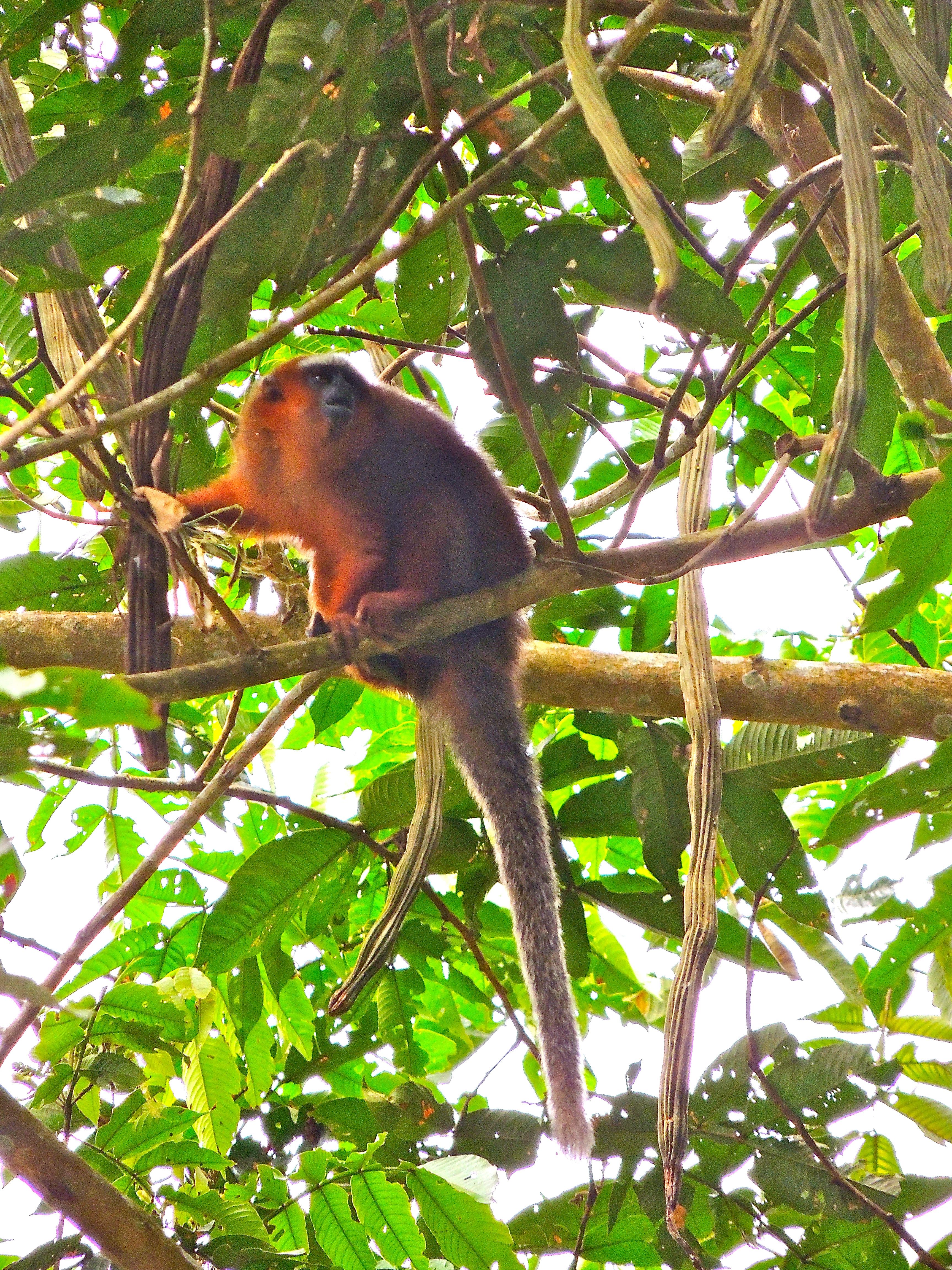 Dusky Titi Monkey - Photo by William Young
Dusky Titi Monkey - Photo by William Young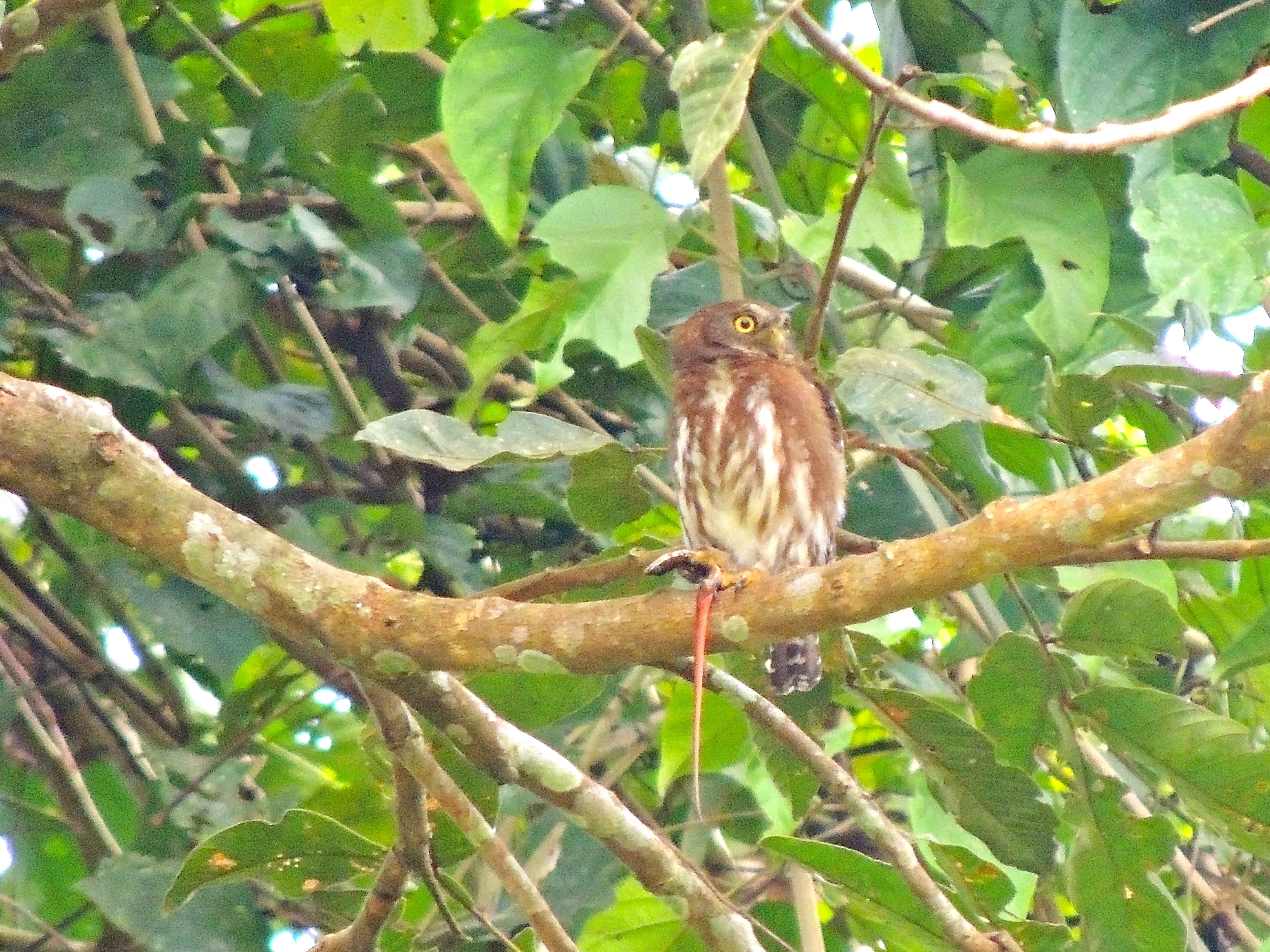 Ferruginous Pygmy-Owl - Photo by William Young
Ferruginous Pygmy-Owl - Photo by William YoungA highlight was seeing seven Giant Otters, who are loud, boisterous creatures. They resemble nutrias and sea lions. We heard a White-chinned Jacamar. And we saw a pair of Black-capped Donacobiuses, who have a black back and tan underparts that extend to the rump. They have some black-and-white in the tail. We also saw three Greater Anis.
 Giant Otter - Photo by William Young
Giant Otter - Photo by William Young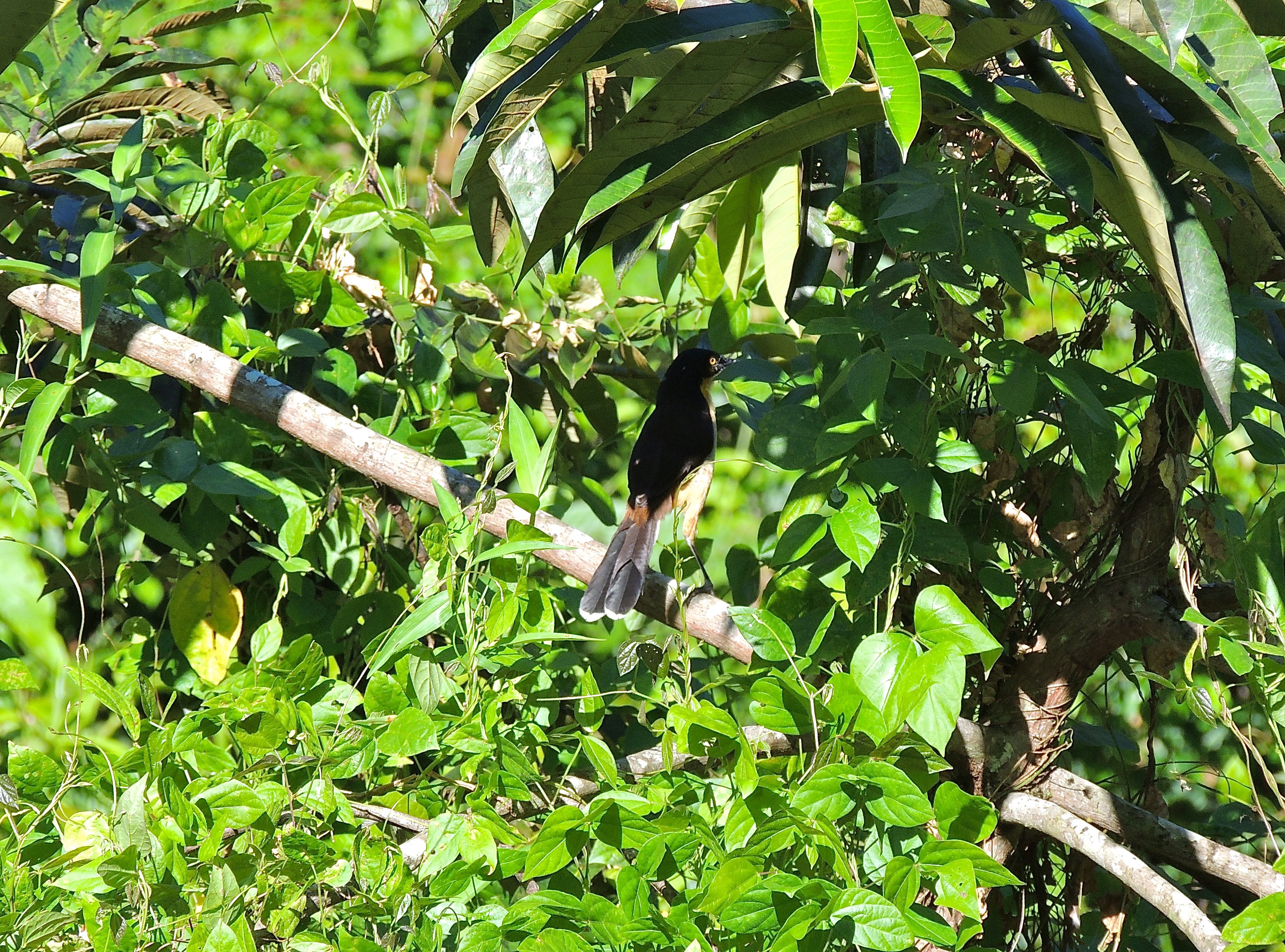 Black-capped Donacobius - Photo by William Young
Black-capped Donacobius - Photo by William YoungI went out again with Jorge at 6:30 to look for owls after being out from 5 this morning until 4:30 this afternoon. We heard a Pauraque, and we saw a nightjar fly that might have been a Pauraque. We saw a large fish make a splash — it might have been one of the arapaima Ed Smith at the National Zoo had told me about. We tracked down a Tropical Screech-Owl. I could see everything but the face, which was behind a leaf. We had heard the bird vocalizing.
September 12
This morning, I heard both a Pauraque and some House Wrens as I went to meet Jorge after a 5:30 breakfast. We saw a Giant Cowbird fly after we got into the canoe. We headed to the Tiputini Trail, which goes through the rainforest. From the canoe, we saw Blue-gray Tanagers, White-winged Swallows, and Yellow-rumped Caciques. We heard Greater Anis calling and heard the three-note call of the Cinnamon Attila. We saw another pair of Black-capped Donacobiuses and a third one later. Three Piping Guans were up in a tree — they are dark with some white on the wing. We saw two Limpkins and heard another. We saw one Little Blue Heron, a Ringed Kingfisher, five White-throated Toucans, and many Hoatzins. We saw a Speckled Chachalaca flying and two distant flying Orange-winged Amazons.
We landed in an area near the beginning of the Tiputini Trail. We heard a Blue-crowned Motmot. I had a fleeting look at a Cream-colored Woodpecker as it flew, and we had heard it call. I photographed a Mouse-colored Antshrike and also saw both a Dusky-throated Antshrike and a Cinereous Antshrike — all are grayish. I saw a Citron-bellied Attila, who has a rufous back and tail with a gray cap. A flock of Maroon-tailed Parakeets flew over. I saw a Buff-throated Woodcreeper. I got some video of a Screaming Piha screaming; it is a thrush-sized gray bird who is VERY loud, and its call reverberates through the forest. I saw some White-collared Swifts fly over. I had a fleeting glimpse of a Blue-crowned Manakin and heard an Ochre-bellied Flycatcher. We flushed a group of Piping Guans, who exploded out of a tree right over our heads. We heard the persistent four-note call of the Ruddy Pigeon. We saw the two-toed tracks of a Collared Peccary.
We saw a male and female Amazonian White-tailed Trogons. We walked past a Great-billed Hermit lek, and we could hear them chattering away. We saw a White-fronted Nunbird high in a tree, and I later had a close look at one. It is a black bird with white around its red bill. I saw a female Pink-throated Becard, whose back looked rufous, and it had a prominent dark eye. I saw a Black-headed Parrot perched high in a tree — it had a yellowish head and a black cap. I heard an Ornate Hawk Eagle. I was happy to see a Golden-headed Manakin. I have a photo of one in my study at home.
I saw a Sapphire Quail Dove, a large bird with a white breast and a prominent facial pattern. When it was coming toward us, it was walking. When it flew into the tree, we heard a crashing sound, because it is so heavy. I saw a White-eyed Tody-Tyrant perched in a tree — it had wingbars. I saw a Scale-breasted Woodpecker up in a tree. It was not moving much. I heard the loud call of the Lunulated Antbird. I saw a perched Great-billed Hermit. We saw a King Vulture soaring with a Greater Yellow-headed Vulture, which means that I saw all five of the vultures possible in Ecuador. The King Vulture has broad wings and is light below.
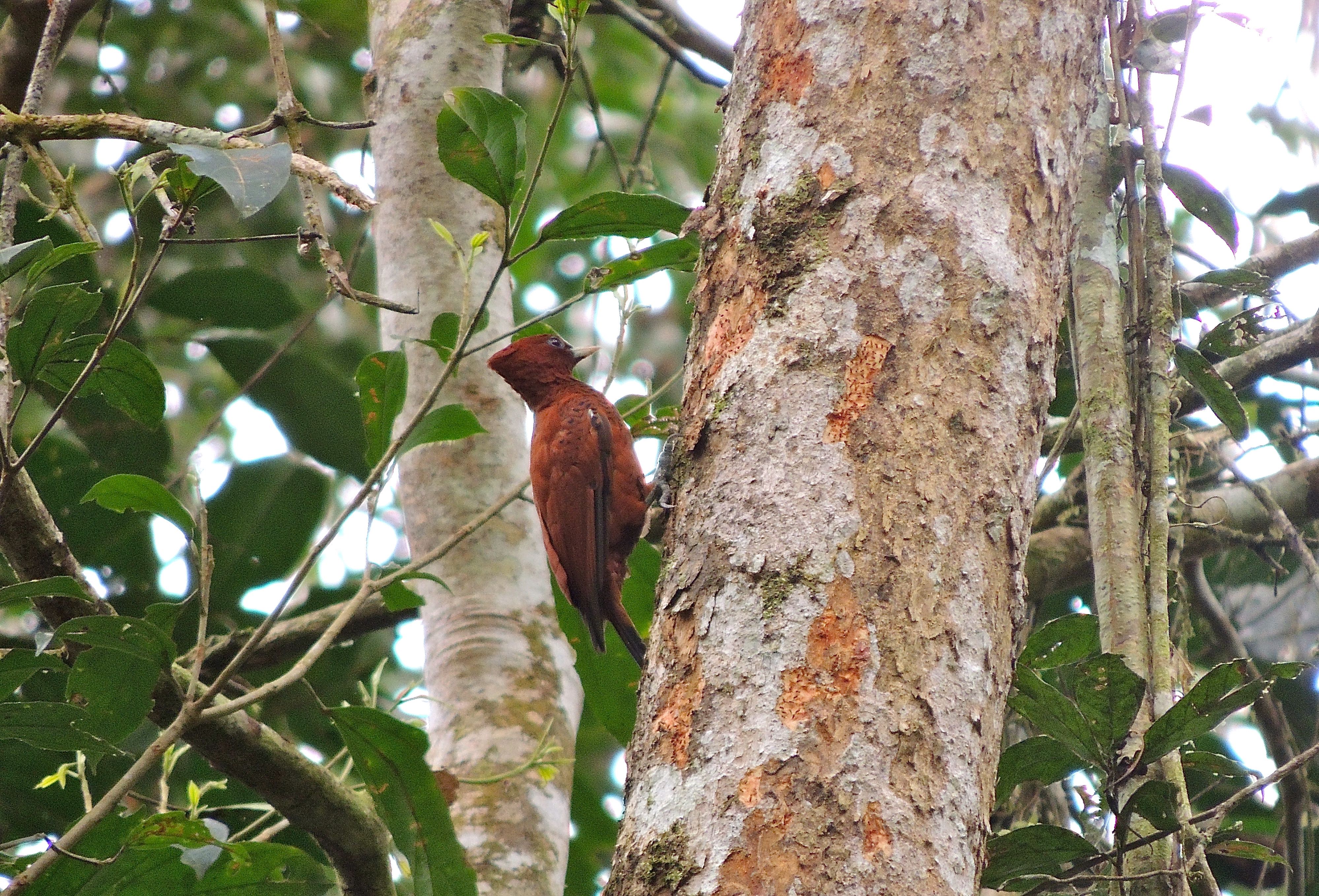 Scale-breasted Woodpecker - Photo by William Young
Scale-breasted Woodpecker - Photo by William YoungWe saw a Citron-bellied Attila and a Plain Xenops. We heard a Spix's Guan, a Cinereous Tinamou, and a Plumbeous Pigeon. We saw a perched White-crowned Manakin. Working on a tree was a Wedge-billed Woodcreeper, who was very small. We saw tapir tracks. I photographed a Scarlet Macaw and some unusual looking fungi. I saw an Amazonian Red Squirrel and one of the helicopter dragonflies with yellow tips to the wings. I heard the little trill of the Double-banded Pygmy-Tyrant and saw a Plain-winged Antwren. I photographed a closed Morpho, a Scarlet Peacock butterfly, and a Yellow-billed Jacamar — the first jacamar of my trip. I photographed a leafcutter ant nest and the surrounding area. The ants remain active after dark — I've seen them near my room after dinner. We heard a Black-tailed Trogon and an Amazonian White-tailed Trogon. As we finished our pack lunch, we heard Gilded Barbets. When we started to walk again, we saw a three-toed trumpeter track, but no trumpeter. Jorge broke off a leaf from a cinnamon tree and asked me to taste it. I don't think it tasted much like cinnamon. We heard a Casqued Oropendolas who was making a racket when it flew.
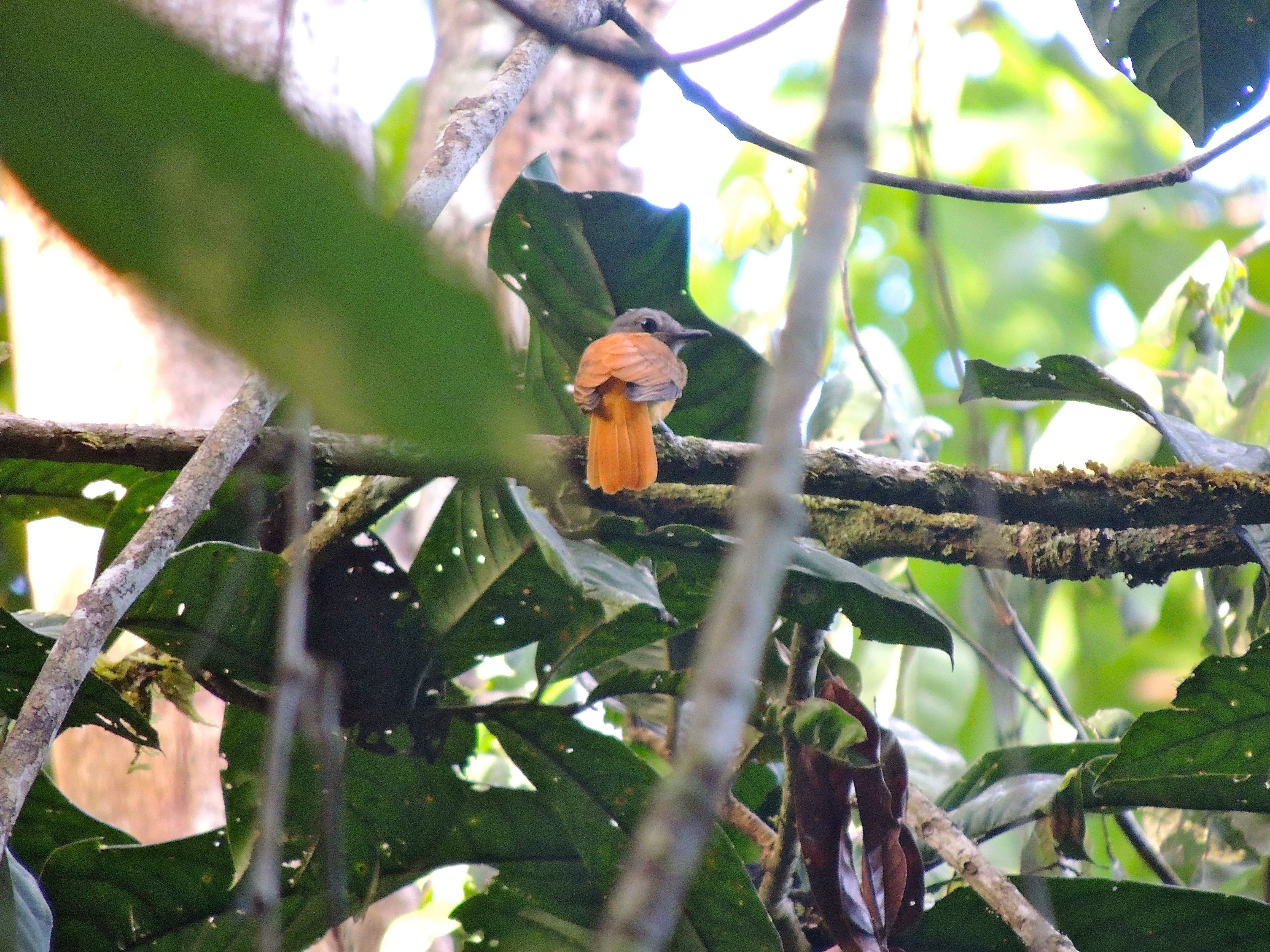 Citron-bellied Attila - Photo by William Young
Citron-bellied Attila - Photo by William Young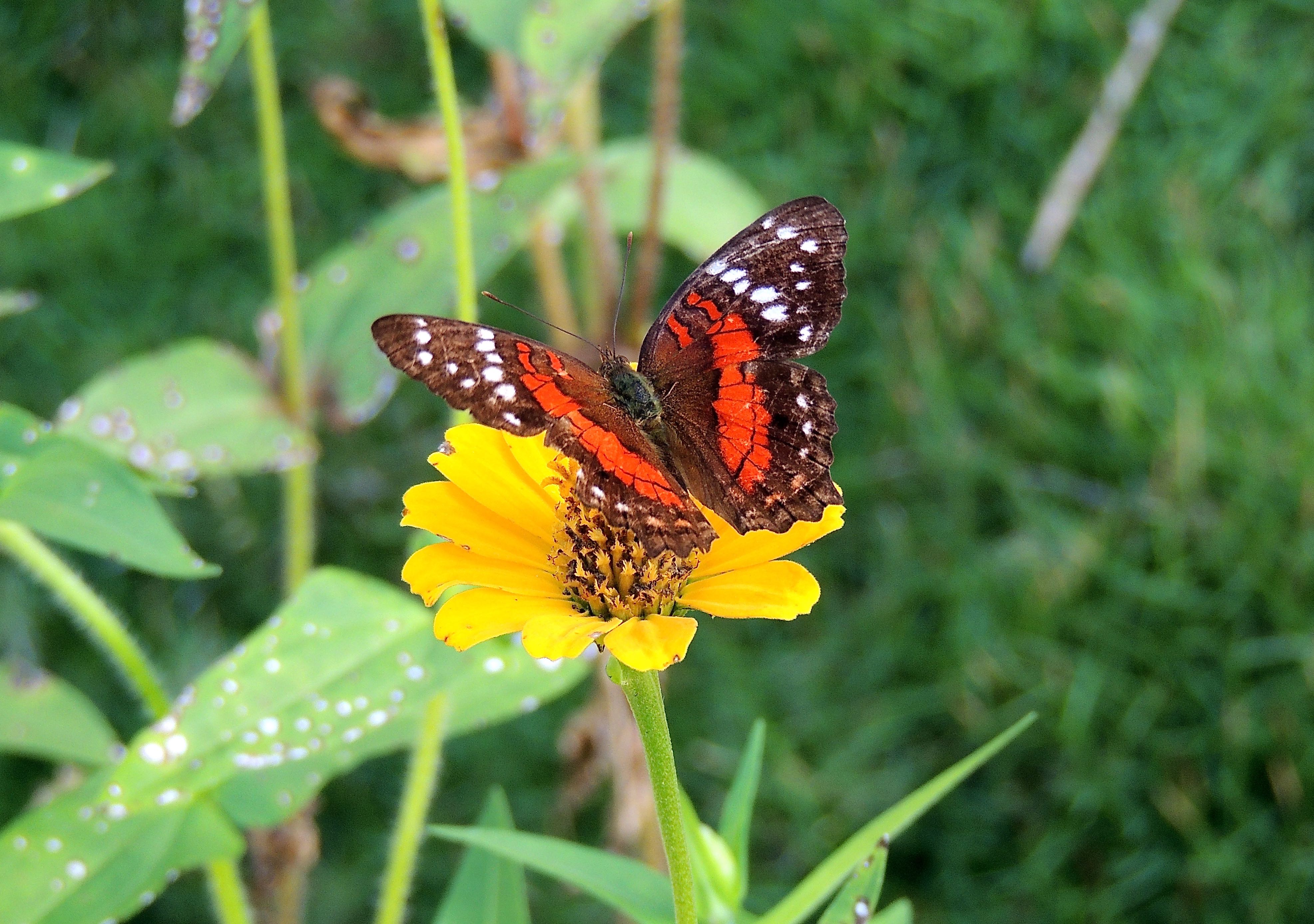 Scarlet Peacock - Photo by William Young
Scarlet Peacock - Photo by William Young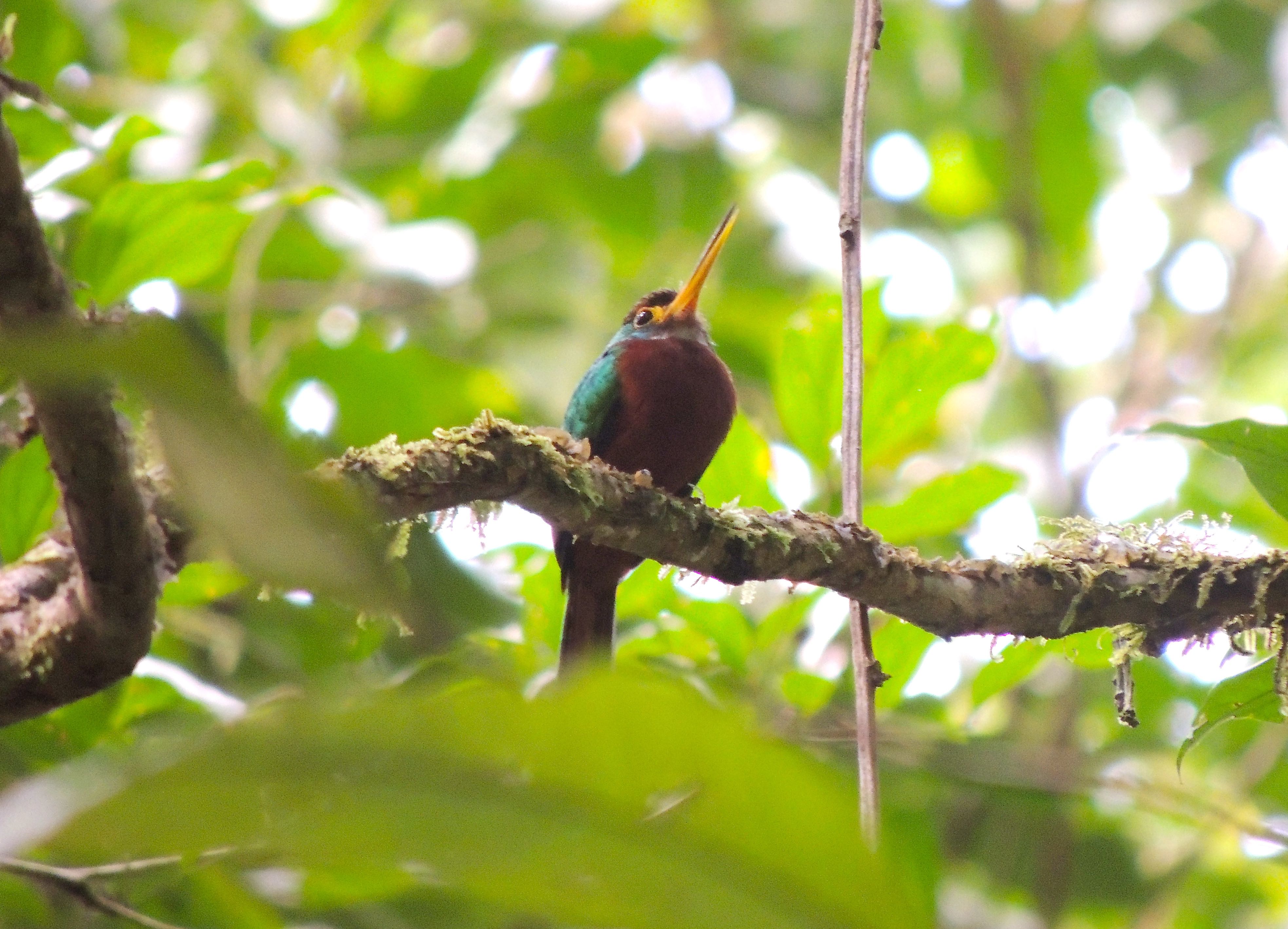 Yellow-billed Jacamar - Photo by William Young
Yellow-billed Jacamar - Photo by William YoungBack at the lodge, I took some photos of a Smooth-billed Ani, who was perched in front of my room. I also shot video footage of the ani fluttering its throat to keep cool. After a short rest, we went out again in the canoe. We saw Capuchin Monkeys, Piping Guans, Greater Anis, White-winged Swallows, a Great Kiskadee, a Little Blue Heron, a Green Kingfisher, a Black-capped Donacobius, and Hoatzins at the beginning of the ride. When Hoatzins land, they take a long time to close their wings. They look Dracula-like. They make a noise that sounds like a loud snuffling. Greater Anis have golden eyes. I took photos of a Ringed Kingfisher, who utters a much louder rattle than the Belted Kingfisher. I photographed a pink line of snail eggs and a Map Tree Frog, who was on a leaf and it did not look frog-like. I saw a cooperative White-chinned Jacamar — one was flycatching, and Jorge said they like to chase butterflies. Carlos in the back of the boat saw a White-bearded Manakin. I later heard the snapping sound they make at their lek. Jorge saw a Pygmy Kingfisher, that I missed. Sungrebes seem really skittish and will not allow a close approach — they immediately fly away. I had a good look at a Silvered Antbird walking around in some mangrove roots. It was gray on top and white underneath, with spots on the wings. It had fairly long pink legs. We saw a Rufescent Tiger Heron. I had a fleeting look at a Plumbeous Antbird and heard its ascending call.
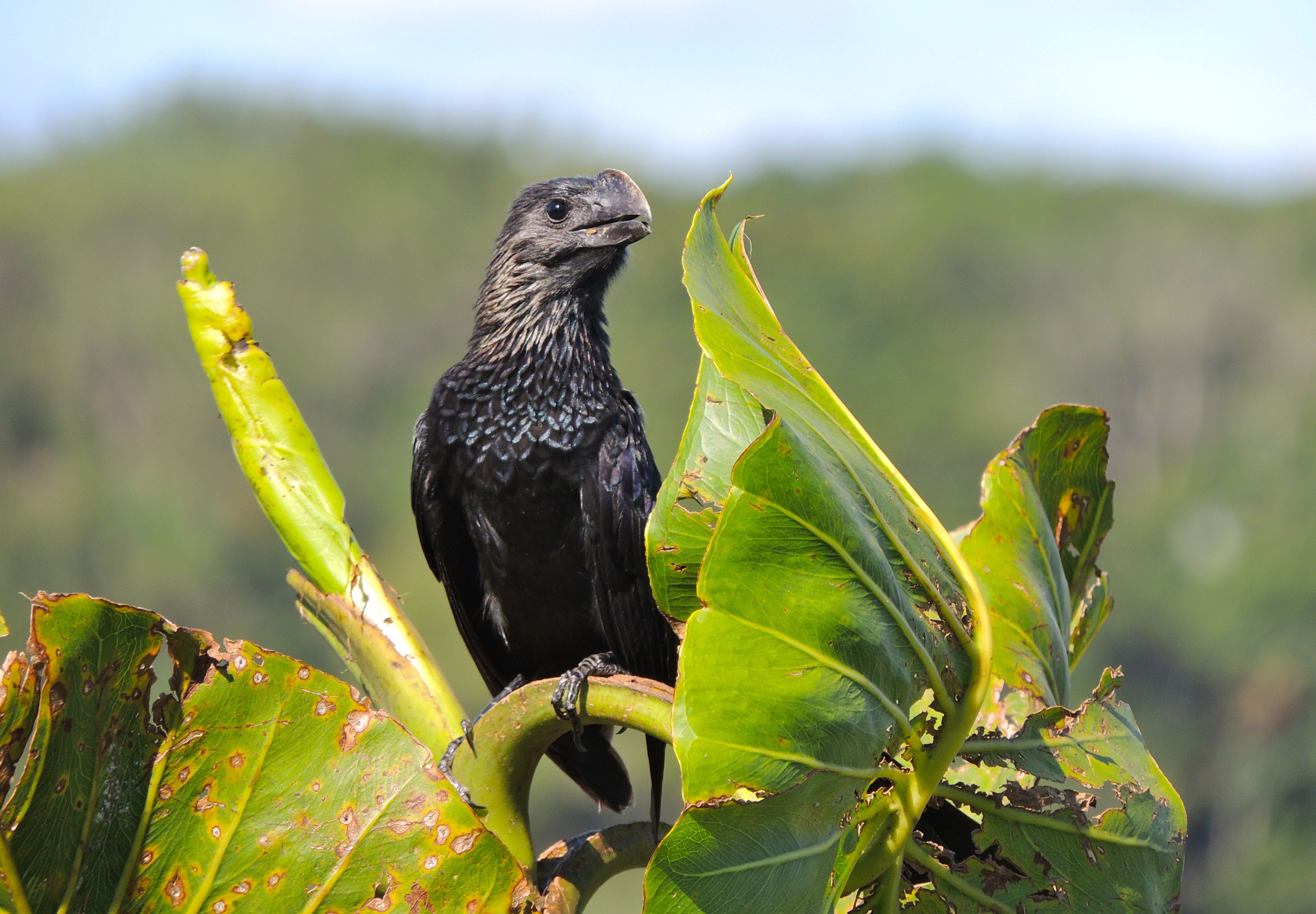 Smooth-billed Ani - Photo by William Young
Smooth-billed Ani - Photo by William Young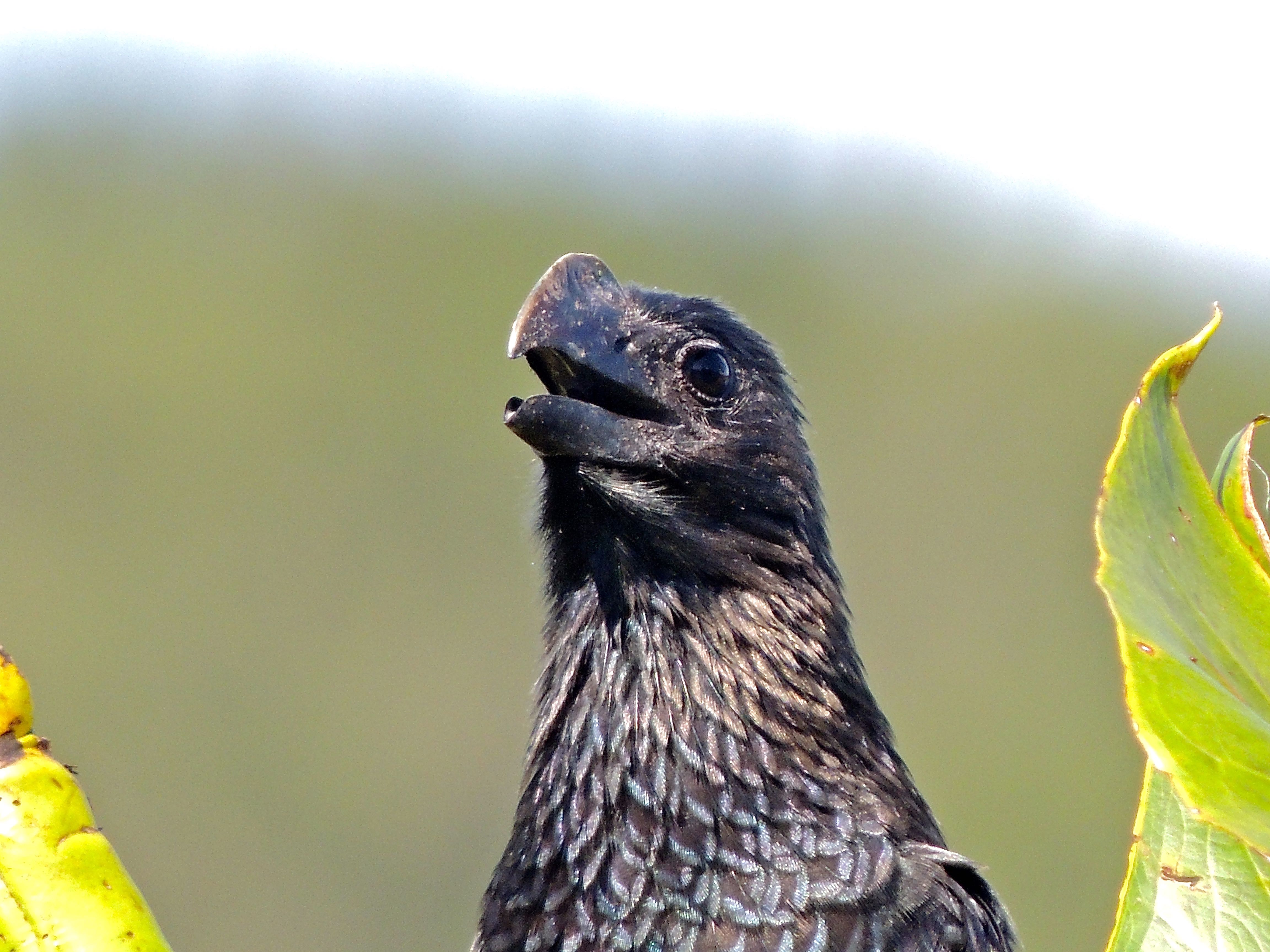 Smooth-billed Ani - Photo by William Young
Smooth-billed Ani - Photo by William Young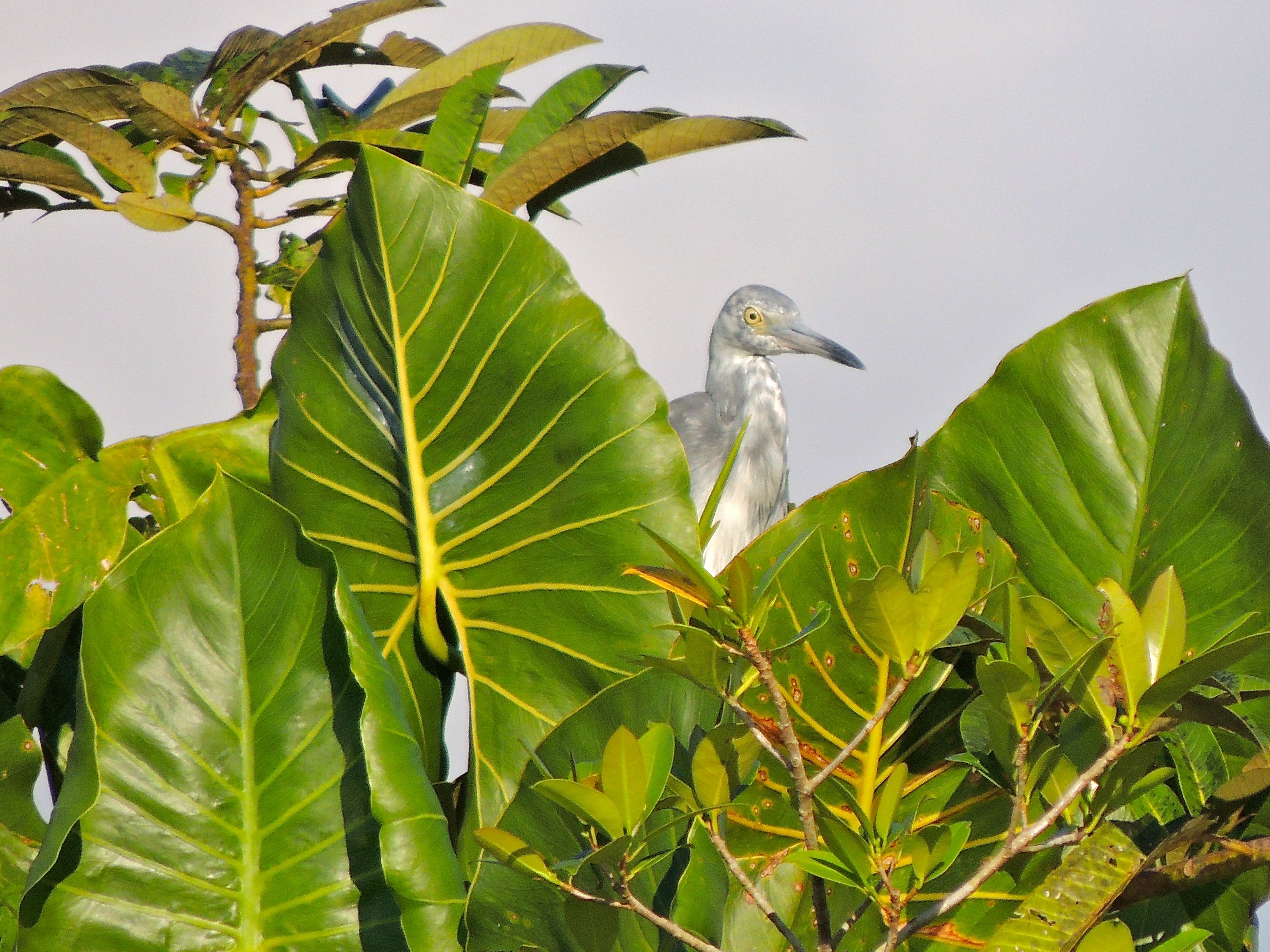 Little Blue Heron - Photo by William Young
Little Blue Heron - Photo by William Young Greater Ani - Photo by William Young
Greater Ani - Photo by William Young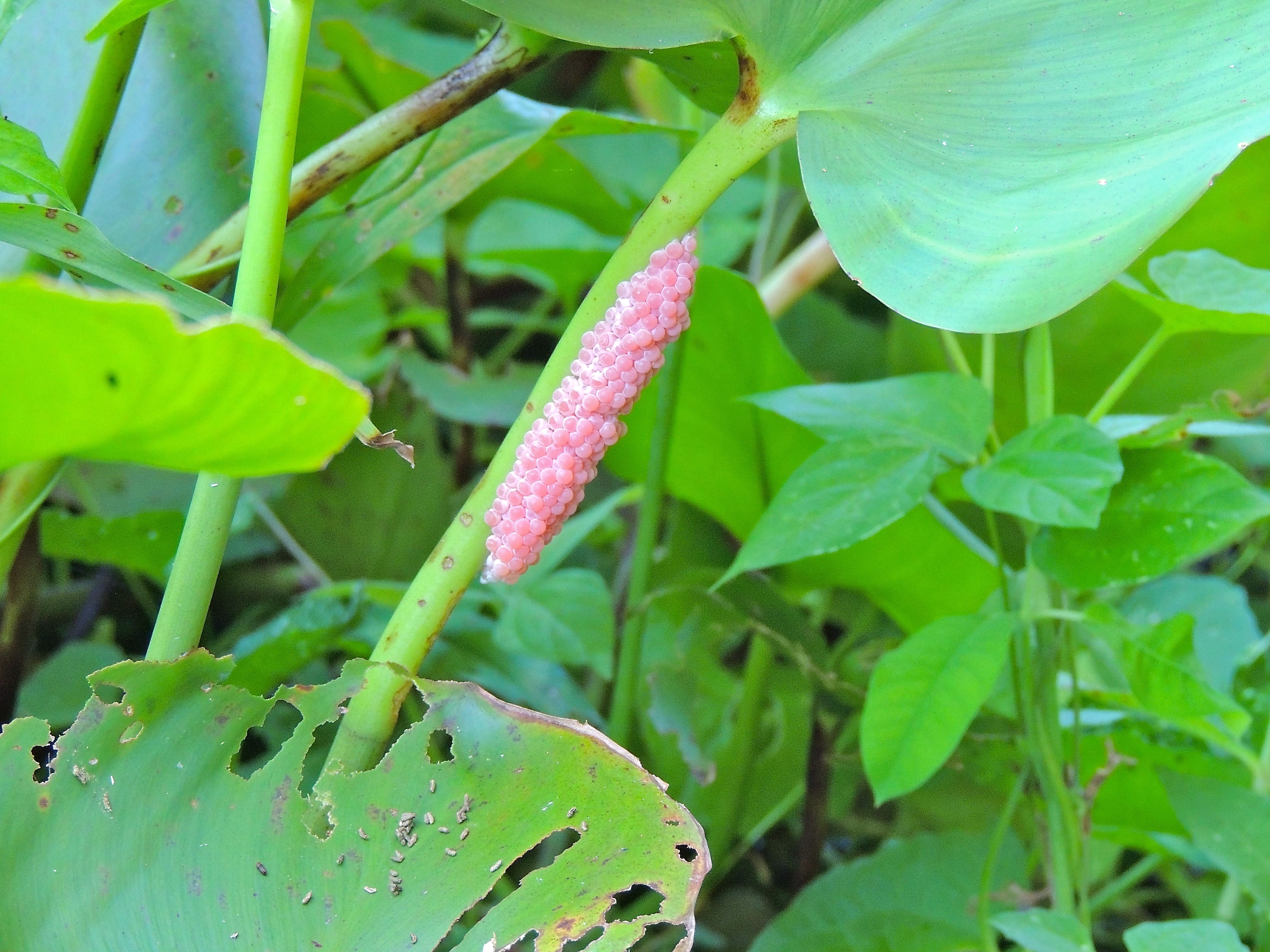 Snail Eggs - Photo by William Young
Snail Eggs - Photo by William Young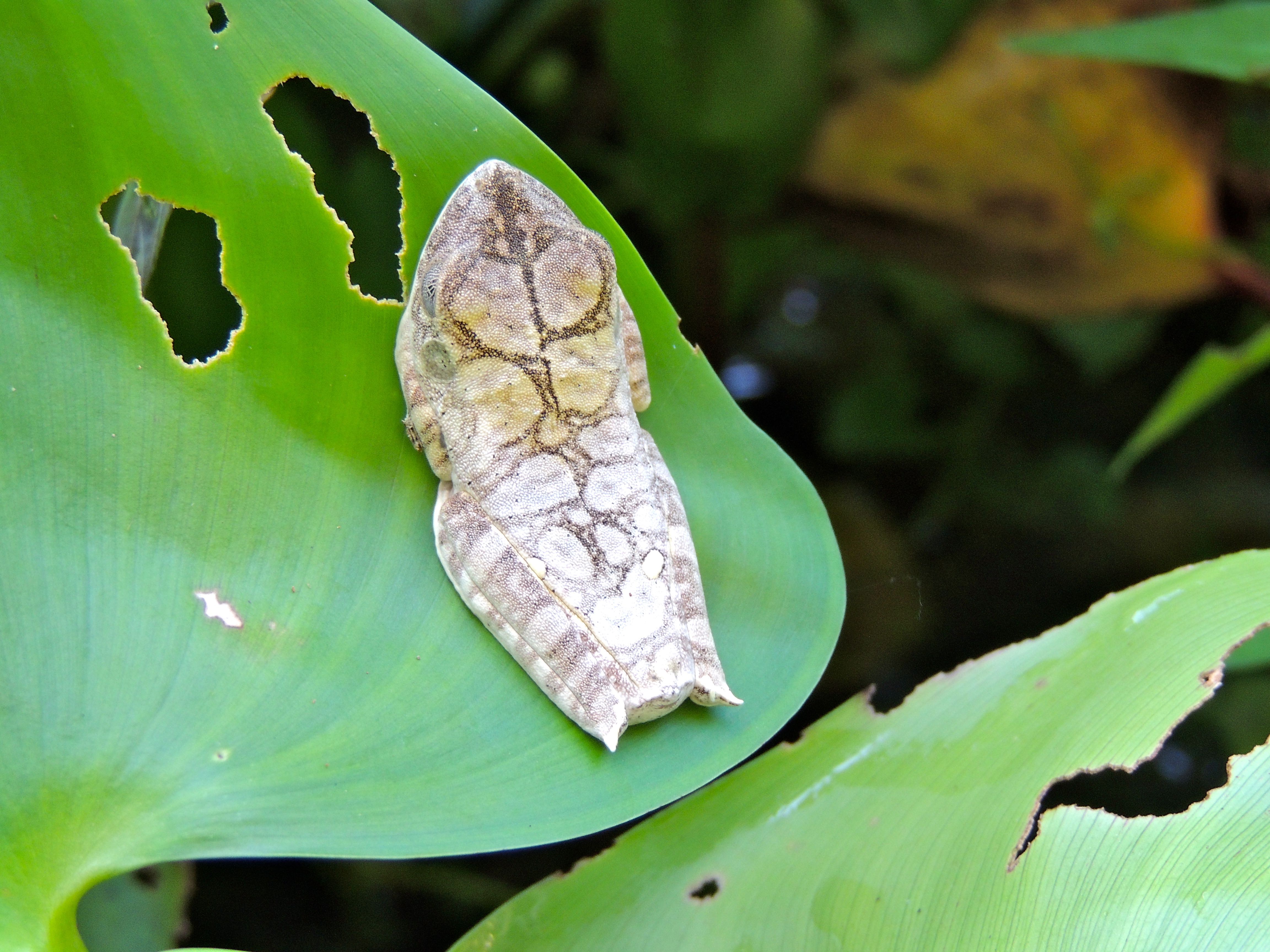 Map Tree Frog - Photo by William Young
Map Tree Frog - Photo by William YoungA lot of large fishing bats were flying around our canoe, and some came very close. Owl Butterflies were also flying close to us. About a dozen Boat-billed Herons flew by — they have a profile like a Night heron. We saw a Tawny-bellied Screech-Owl in the lagoon not far from the lodge, and it indeed has a tawny belly. I heard a Tropical Screech-Owl calling, and we found a couple of Pauraques in the spotlight and heard a third one. We went to dinner, and after we ate, Jaime used a flashlight to show me some stingrays and caimans in the water outside the dining area.
September 13
As I was getting dressed this morning, I heard a Pauraque. I went outside to look for it but could not find it, even though it sounded as if it were not far from my door. Today was a travel day, so I had to be packed and ready to leave at 6 after a 5:30 breakfast. We took a canoe to the transfer area to get on a powerboat to Coca to catch flight back to Quito. I heard a Great Kiskadee and House Wren, and I saw Yellow-rumped Caciques, Russet-backed Oropendolas, White-throated Toucans, and White-winged Swallows. Four Red-bellied Macaws flew by. We encountered a couple of swimming Sungrebes, and we saw one on the riverbank. They have a red bill, and their feet have black-and-white stripes. A Black-capped Donacobius called, as did a Plumbeous Antbird, Silvered Antbird, Dot-backed Antbird, Greater Ani, and a White-chinned Jacamar. We saw a Boat-billed Heron and a Rufescent Tiger-Heron. I saw one of numerous Ringed Kingfishers and could see the barring on its tail. I saw a Silvered Antbird — possibly the same one as yesterday. I did not see any Hoatzins, but I heard some snuffling. Apparently, they like to sleep late and do not become active until later in the day. We heard an Amazonian White-tailed Trogon, a Cinnamon Attila, and a Hauxwell's and a Lawrence's Thrush.
 Sungrebe - Photo by William Young
Sungrebe - Photo by William YoungWe came across the same group of Giant Otters we had seen a couple of days ago. When they got out of the water, I could see their long tails. We saw four Limpkins, a Cocoi Heron, and a Black Caiman. We heard a noisy group of White-lipped Peccaries but did not see any. We heard Black-headed Parrots and Casqued Oropendolas and saw a Many-banded Aracari. I saw a social spider web between 2 horizontal branches a meter apart — it was a vertical cylinder. A Rufous-breasted Hermit flew near the trees. I heard Ruddy Pigeons, a Violaceous Jay, and a Blue-crowned Motmot. We also heard the loud and long call of the Black-fronted Nunbird. The first new species for the day was a Solitary Cacique, who is all black with a yellow bill.
 Giant Otters - Photo by William Young
Giant Otters - Photo by William YoungAfter boarding the powerboat, I saw an Osprey (another new bird for the trip) and a Large-billed Tern. There were numerous Great Egrets, a pair of Snowy Egrets, a Spotted Sandpiper, a Yellow-headed Caracara, and lots of Black Vultures. When we arrived at the transfer station in Coca, a peacock strutted in the waiting area — I had seen them on the way in. On the powerboat, I had sat in back of a couple named Melvin and Courtney. They had been at Napo, and they were among the few Americans I encountered in Ecuador. I sat in front of Sarah the English teacher, who pointed out a rainbow in the water. We boarded a pick-up truck for the short ride to the airport. I said good-bye to Sarah, who sat with me and Jorge for most of our meals.
The plane ride was short, and I got back to the hotel in Puembo at about 12:30. I had not had lunch, and the hotel is in a fairly isolated area, so I asked to have a driver pick me up at 2:30 and take me to the market in Quito. When I went outside at 2:30, Mercedes Rivadeneira, who is one of the co-owners of Neblina Forest, was there. Right after we left, there was a hellacious thunderstorm, and we got tied up in traffic. In one area over the river, there appeared to be about four inches of standing water. We eventually got to the market at four, and we had an hour to shop before it closed. I bought a couple of shirts, some table cloths, some jewelry, and other items. I also found some coca tea and coca candy to take back with me.
Mercedes took me to a restaurant in Cumbayá called Rendezvous, which was quite good. She asked me if I had ever eaten ceviche, which is one of the national dishes of Ecuador. When I said no, she commandeered a waitress and had her go next door to get me some. I had not eaten lunch, so I had ordered both an entree and a salad. When the food arrived, I saw that the portions were very generous, and either one would have been sufficient for a meal. With the bowl of ceviche, that meant I would eat three dinners. The ceviche was made with shrimp that are cooked for a short time. They are served in a tasty broth with a bowl of popcorn, plantain chips, and cooked corn kernels on the side. You put the popcorn into the broth. I ended up eating the entire bowl, which was delicious.
September 14
I started my last full day in Ecuador standing outside waiting for Gustavo to come. While I was there, I saw three Common Ground Doves in front of the hotel — a new bird for trip. I also saw a Sparkling Violetear, a Great Thrush, and two Rufous-collared Sparrows. Gustavo arrived, and we headed toward the Ilalo Volcano and the San Pedro River. Gustavo spotted a Southern Yellow Grosbeak in some bushes on a high bank. I had good looks at a pair of White-winged Brush-Finches, who have a rufous mohawk. We saw two Streak-throated Bush-Tyrants, who have a brown back and a whitish throat with streaks. We saw a male and female Golden-rumped Euphonia; the male has a turquoise head, and the female has a bluish head that is not as bright. I saw a female Black-tailed Trainbearer, and I saw a bright male Vermillion Flycatcher flying in the sunlight. A Black Vulture perched in a nearby tree. An American Kestrel perched on a wire, and I would later see three more.
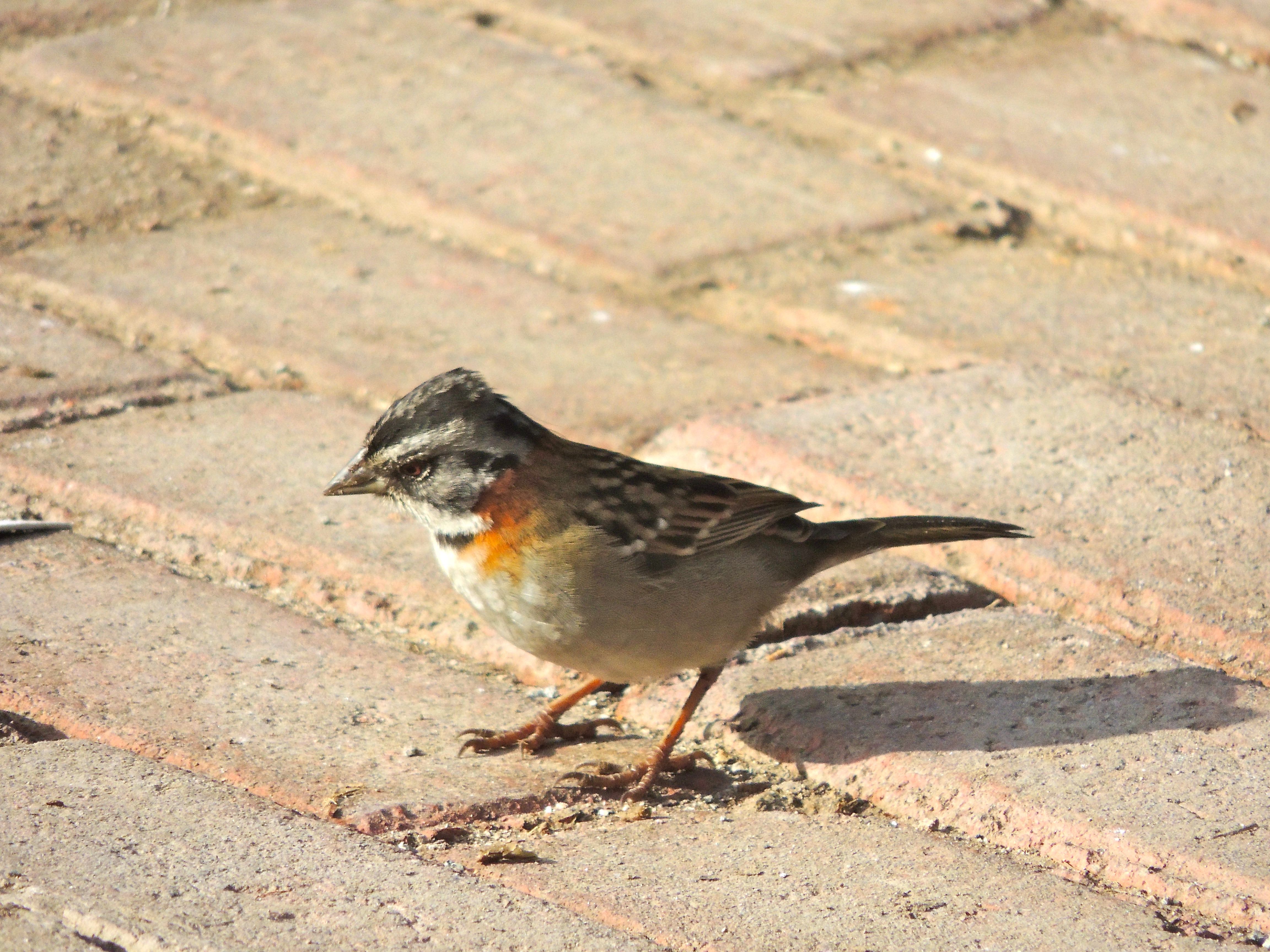 Rufous-collared Sparrow - Photo by William Young
Rufous-collared Sparrow - Photo by William Young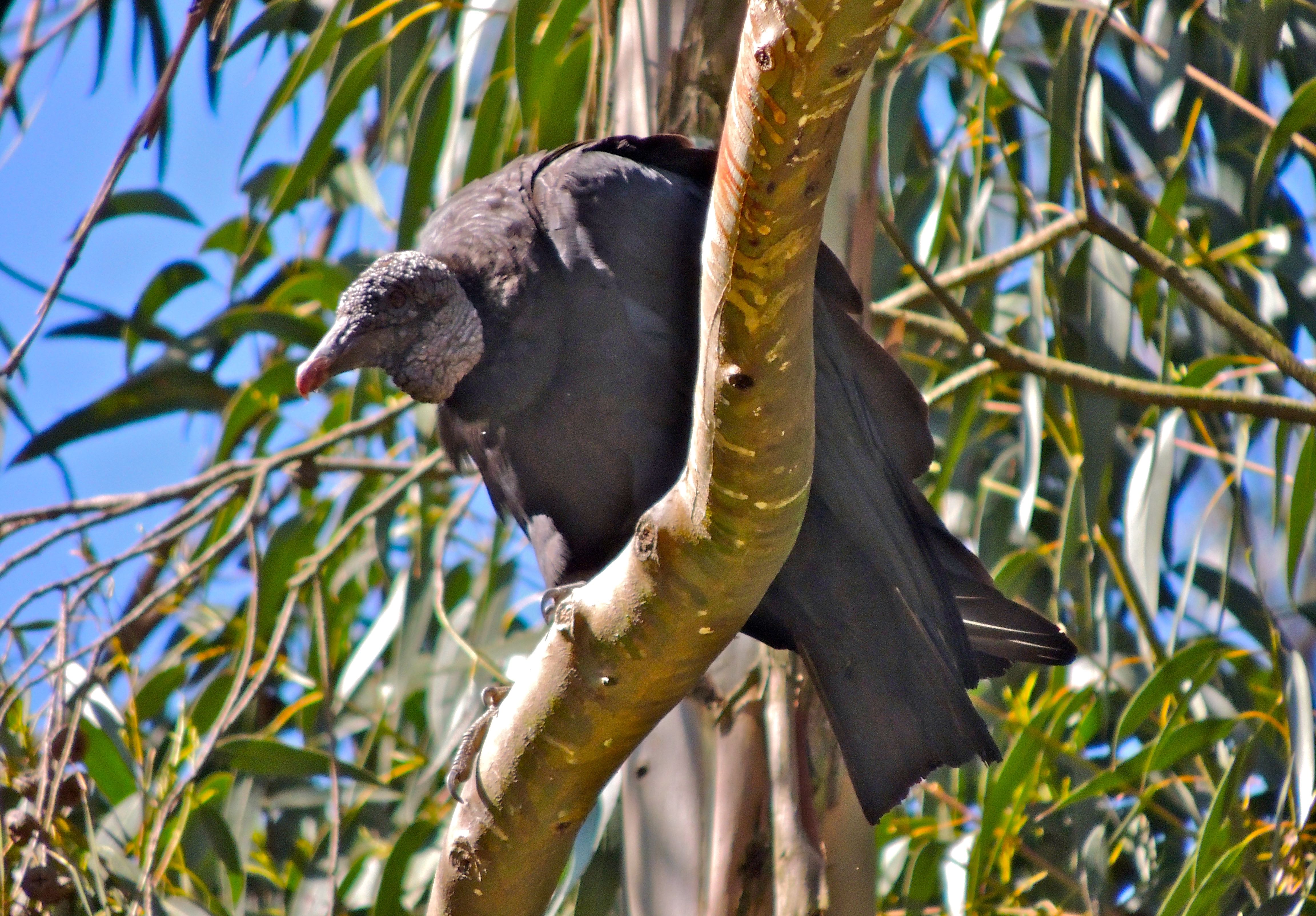 Black Vulture - Photo by William Young
Black Vulture - Photo by William YoungWe then headed to the Antisana Reserve. Almost immediately, we saw two Andean Condors land on a rockface. There are only about 70 of these condors left in Ecuador, and 1,000-1,500 in world. In descending order, the countries with the most condors are Argentina, Chile, Peru, Ecuador, and Colombia. On the two perched condors, I could see the white collar, bare head, and the white bottom half of the wings. A Stout-billed Cinclodes was hopping on a path very close to where I was standing, and I later had long close looks at many of these birds. One of them flew up into the sky like a pipit doing a display flight. They have a short tail, and I saw a lot of them flying around. There was another Streak-throated Bush-Tyrant, which I had seen earlier in the day at a different altitude. I saw five Black-winged Ground-Doves, who in flight show black on the wings and tail. I saw two Cinereous Conebills, who are buff below, with a blue back, buff eyestripe, and a white spot on the wings. We heard a Streak-backed Canastero and I got a fleeting glimpse of one. I saw a pair of Brown-backed Chat-Tyrants, having a better look at them than the ones I saw on the antenna hill. I digiscoped a pair of Brown-bellied Swallows, showing the front of one and the back of the other.
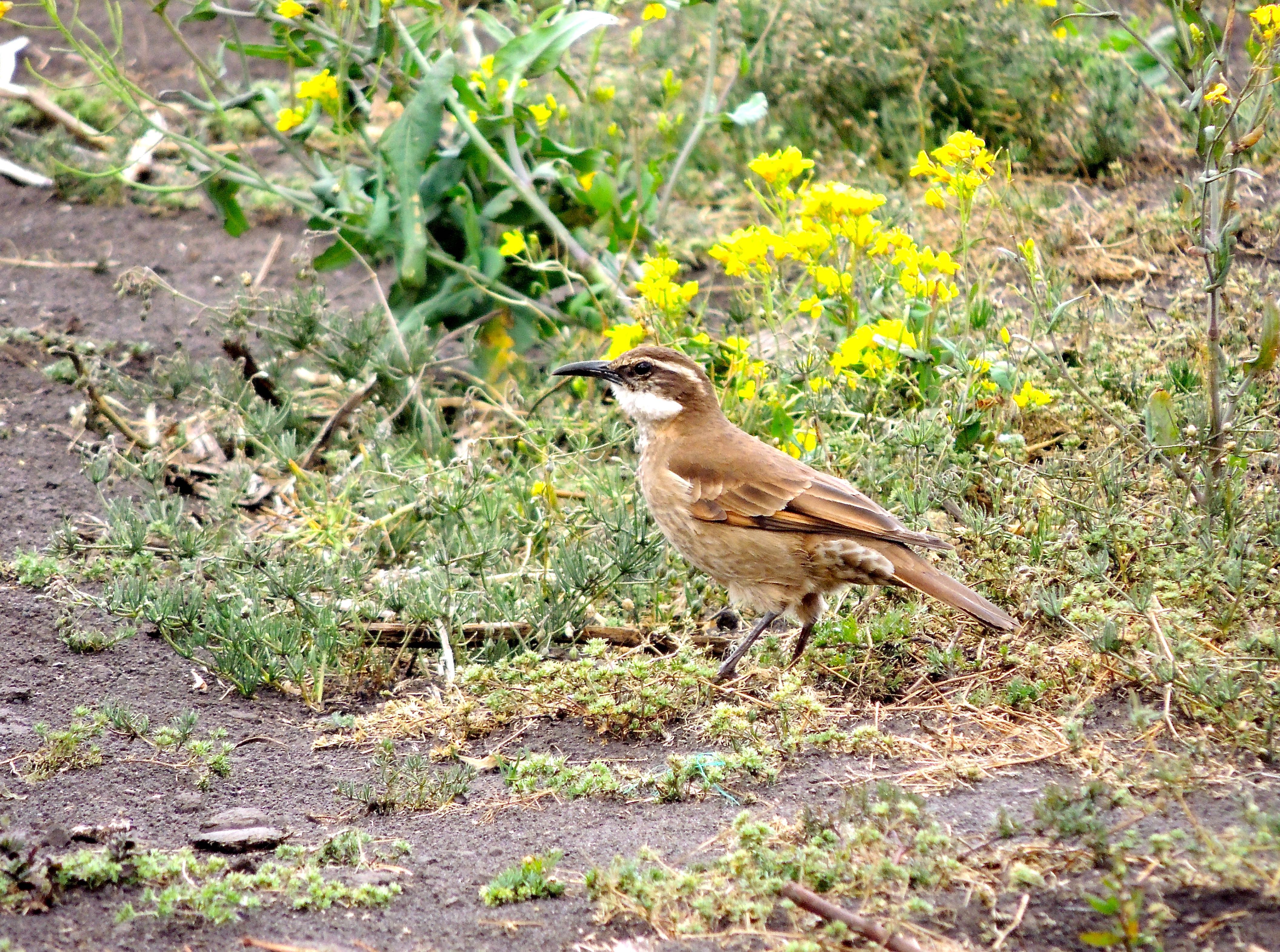 Stout-billed Cinclodes - Photo by William Young
Stout-billed Cinclodes - Photo by William Young Streak-throated Bush-Tyrant - Photo by William Young
Streak-throated Bush-Tyrant - Photo by William YoungOne of the birds I most wanted to see was a Carunculated Caracara, in part because I love the name. I ended up seeing about a hundred of them, including juveniles. They peck at the ground in search of insects, and they will eat carrion. I was able to photograph some at close range and even got some video footage of one digging for insects. They have a mostly black body with white streaks on the breast and a white vent. Their face has wattled yellow skin, which is responsible for the bird's name. The young are brown. I took one photo of a flying bird that shows the white rump and tail with a black subterminal band. On this same road, we saw many Andean Lapwings flying. They have a black-and-white wing pattern in flight but are not as prominently colored as the Southern Lapwing. They are colored like some of the dotterels. We saw six Black-faced Ibises, who have a buffy neck and body, a rufous cap, and black wings. In flight, they have black-and-buff underwings and utter a weak honking call. A small flock of Andean Gulls was in one of the fields. The adults have a black head. We saw quite a few Plumbeous Sierra-Finches. The males are gray, and the females look like sparrows. A male was on a pitched roof, and then we saw a male and female on the ground. We saw a Paramo Ground-Tyrant, who has a big white supercilium, a white belly, and a gray back.
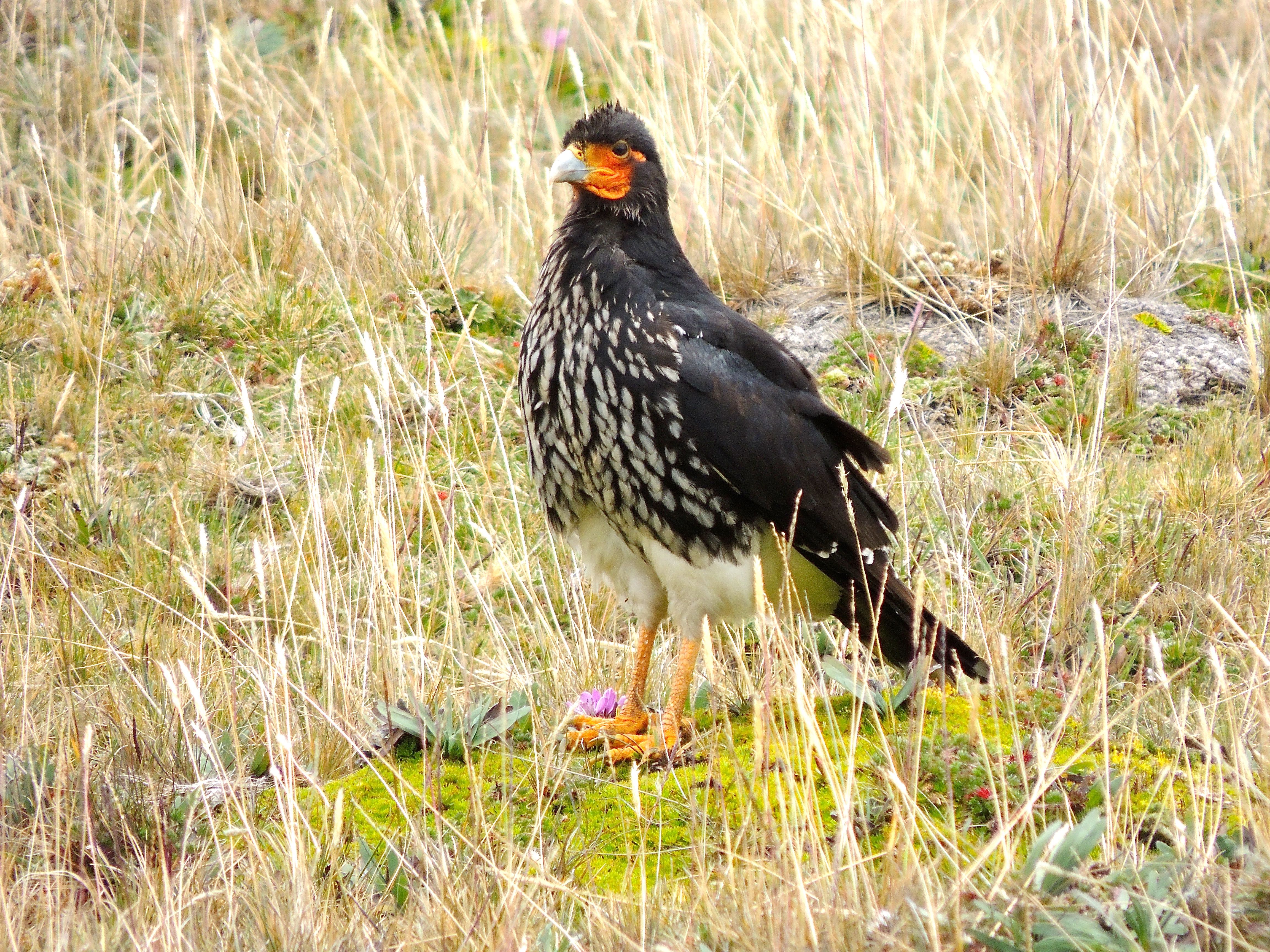 Carunculated Caracara Adult - Photo by William Young
Carunculated Caracara Adult - Photo by William Young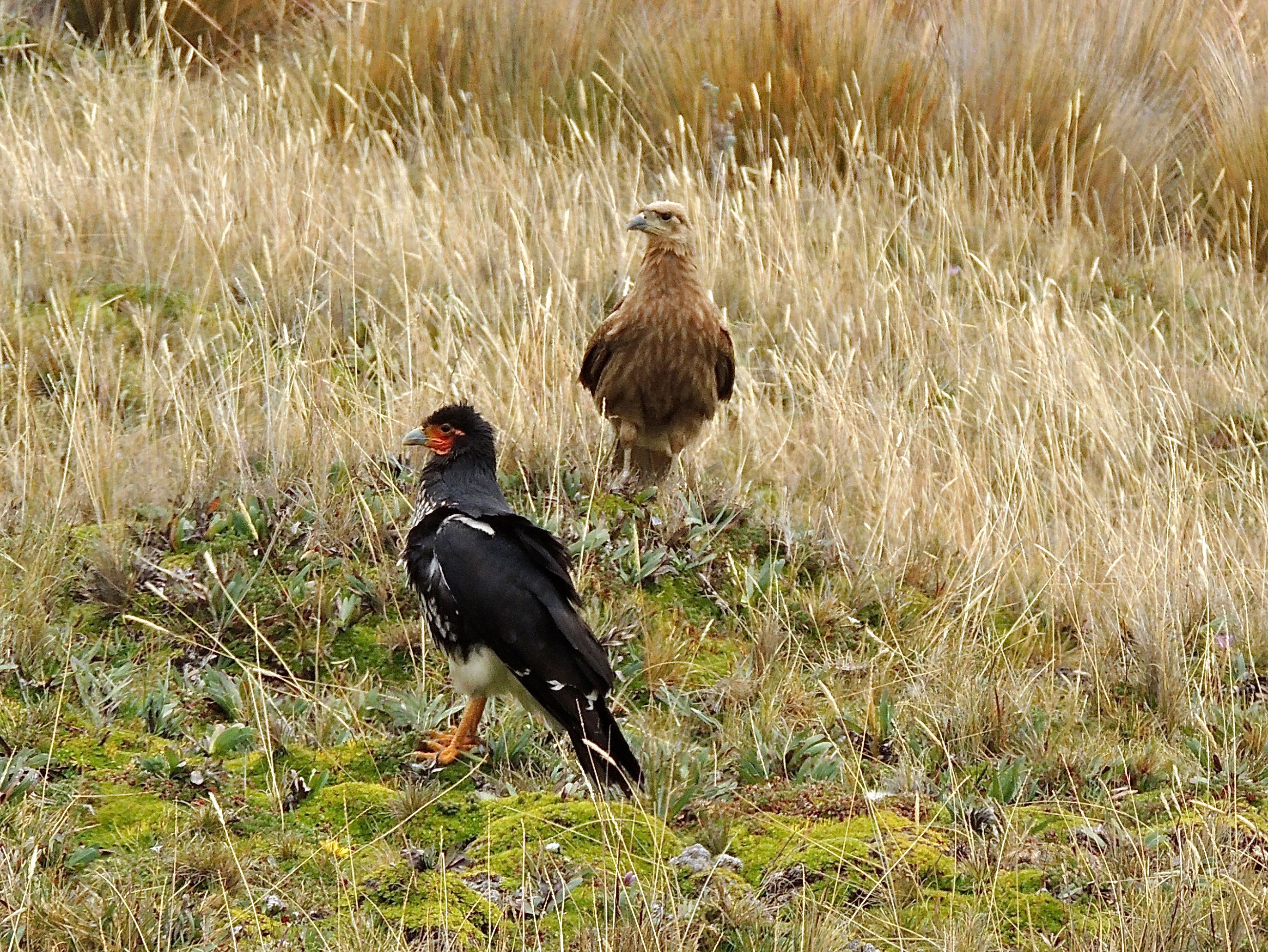 Carunculated Caracara Adult and Juvenile - Photo by William Young
Carunculated Caracara Adult and Juvenile - Photo by William Young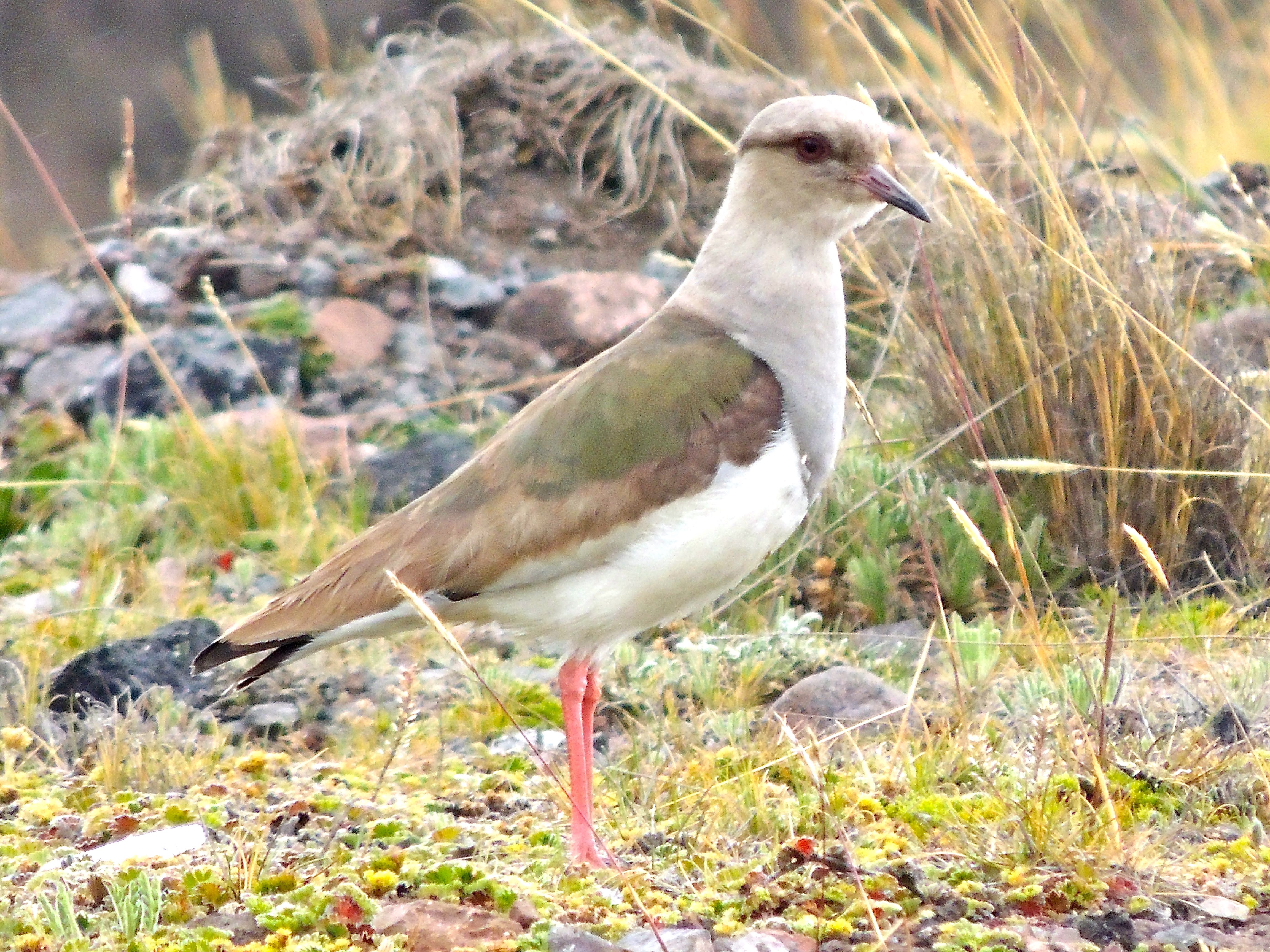 Andean Lapwing - Photo by William Young
Andean Lapwing - Photo by William Young Black-faced Ibises - Photo by William Young
Black-faced Ibises - Photo by William Young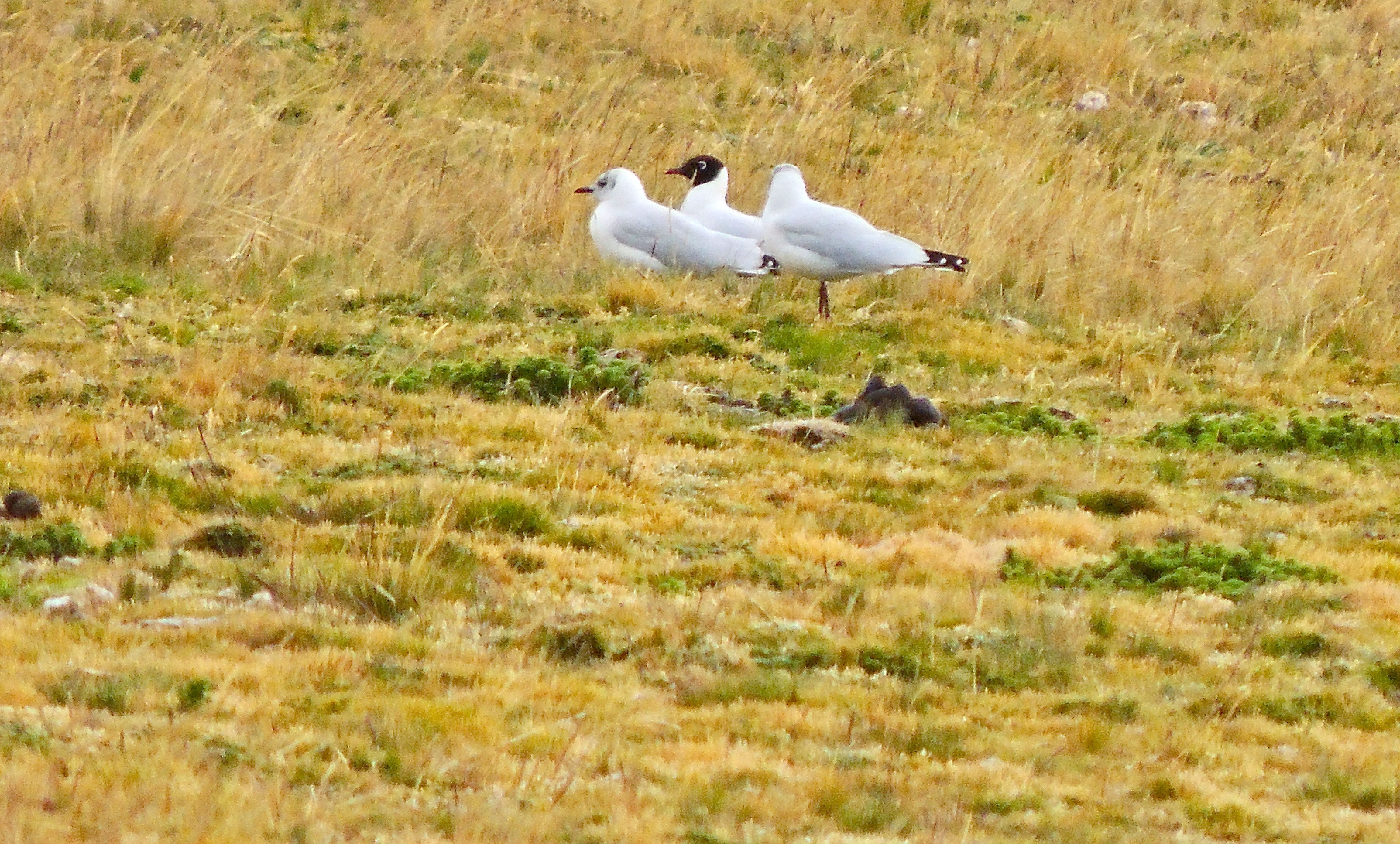 Andean Gulls - Photo by William Young
Andean Gulls - Photo by William YoungWe arrived at a parking area near the Mica Lake, from which Quito gets much of its water. I photographed a Bar-winged Cinclodes, who was hopping near the cars. At the lake, I saw six Silvery Grebes, who look like winter plumage Horned Grebes. There were three male and one female Andean Ruddy Ducks. It is not clear if this is a separate species. The male looks like a Masked Duck, but the black extends to the back of the head. I could see the ruddy body, blue bill, and stiff tail. There were a lot of Andean Coots, who look like American Coots. There was also an Andean Teal — a drab duck with a dark bill.
 Silvery Grebes - Photo by William Young
Silvery Grebes - Photo by William YoungWe had lunch at the Guayatara Lodge. When we finished, we birded on the road right outside the lodge. There were a lot of hummingbirds around. I saw a female Ecuadorian Hillstar, who appeared to have pale underparts and a trace of a white moustache. The weather had become overcast, and the light was not very good. The Black-tailed Trainbearer has an absurdly long tail, like a streamer. The tail streamers looks flexible rather than stiff. I finally got to see a Giant Hummingbird, who has a rufous breast, a white rump, and white at the base of its tail. It flies like a swallow, with several wingbeats and then a brief stall — it bats its wings. It is one of the few hummingbirds where you can clearly see the wings the entire time they are flying. In the same area, we also saw Tyrean Metaltails and a female Great Sapphirewing. The dominant plant species in this area are Chuquiraga and Puya. It is not known whether there is a pecking order among the hummingbird species who feed here. Also competing for the same plants were Black Flowerpiercers.
The final birds we looked at before leaving were two Andean Condors, soaring close to us. I could see the bare head, and one was flying briefly with its legs down. After we saw them, I stopped birding. I wanted these special birds to be my final memory of the birds I saw in Ecuador.
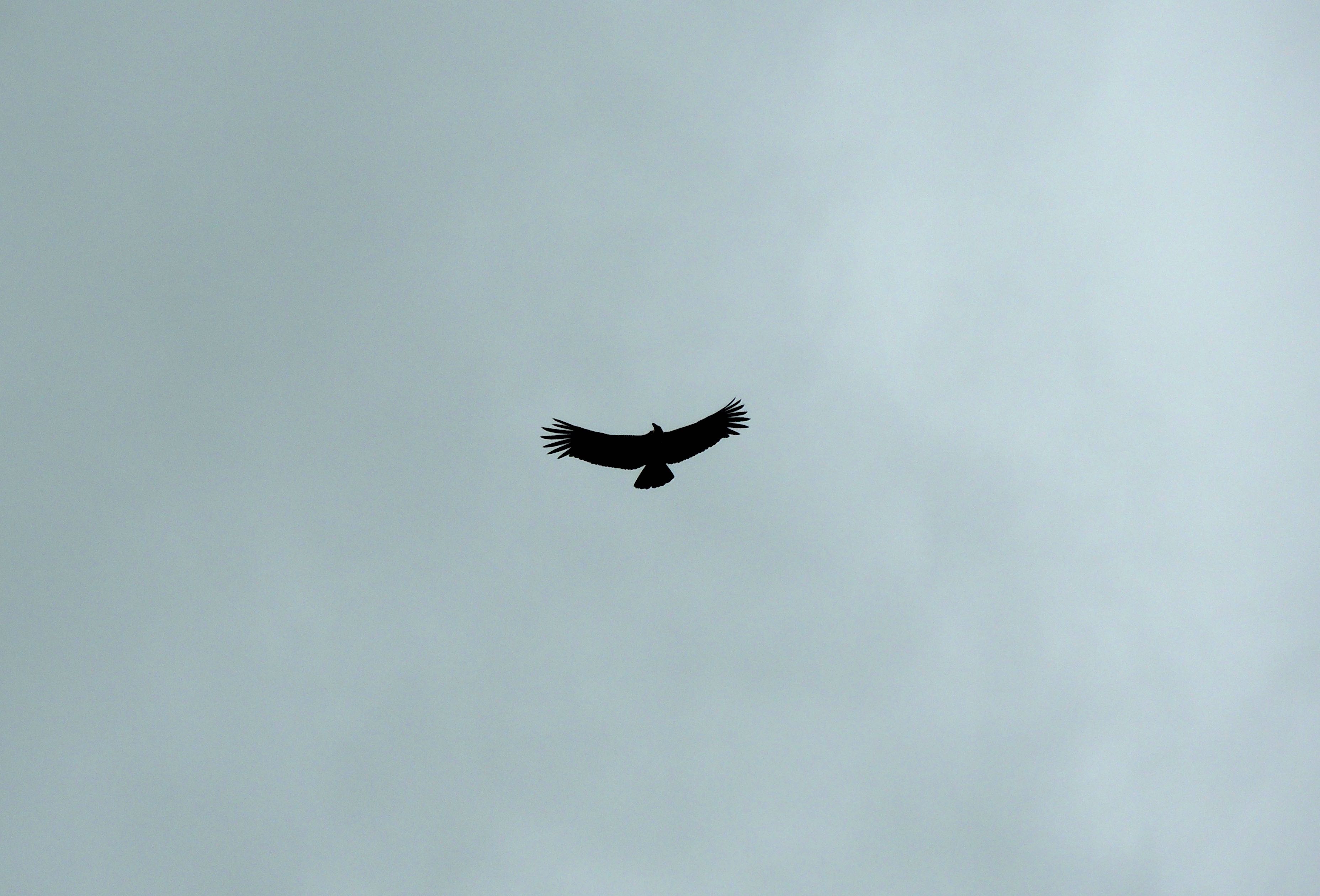 Andean Condor - Photo by William Young
Andean Condor - Photo by William Young